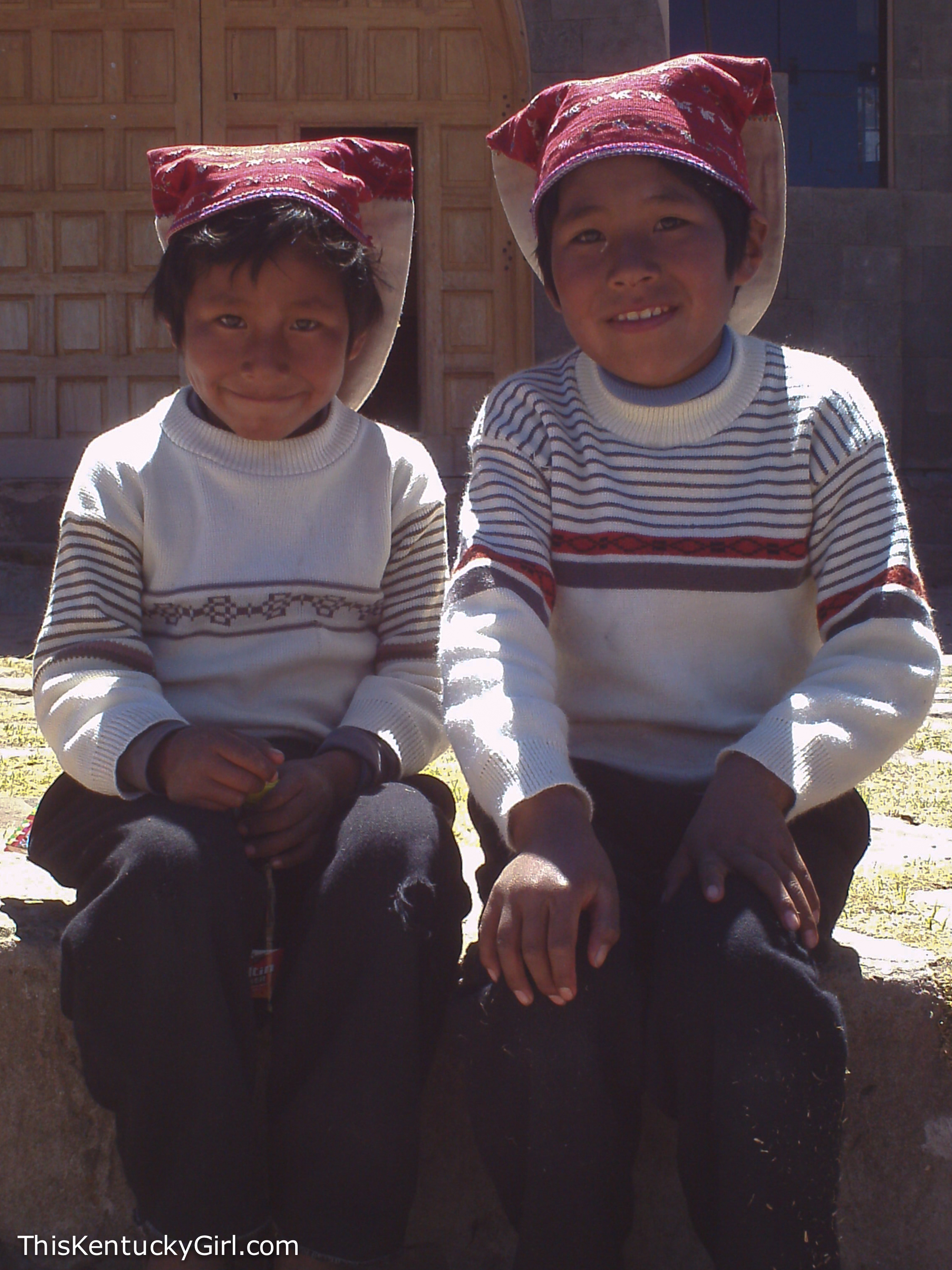On the road again! Just can’t wait to get on the road again! Yay! Another long day and overnight on a bus for us! There really isn’t much to do in Huacachina other than sandboard – and in all honesty, we were anxious to get to the coast and relax on a beach for a few days. We could have split up the trip, but we decided to push on through from Ica to Trujillo. And so we did, stopping shortly in Lima, and then continuing on our way.
Day 384: Sandboarding in Huacachina
Not many people can say they spent the first year – the entire year – of their thirties traveling around the world. I am one lucky, very lucky girl. On Day 19, I turned 30 in Saigon. Today, I turned 31 in Huacachina. My only wish for this birthday was to not visit a war museum. I wanted to do something fun, like sandboarding in Huacachina! Which is how we ended up on an 18 hour bus ride from Cusco to Ica a couple of days ago. Well, that, and we had to start making our way up north someday, somehow…
Dune buggy and sandboarding in Huacachina is more fun than you think it will be. About 12 of us climbed into a dune-buggy an hour or so before sunset with an older man who clearly loved his job (driving visitors around in the desert at incredibly high speeds). He flew across the desert, going up and down dunes so fast, it felt like we were on a roller-coaster. And then, just like a roller-coaster comes to a smooth stop in the end, so did our driver pausing to let us out for a a few photo opportunities, and then a few more times to let us sandboard down some steep, some not so steep, and some I-never-knew-a-sand-dune-could-be-this-steep sand dunes.
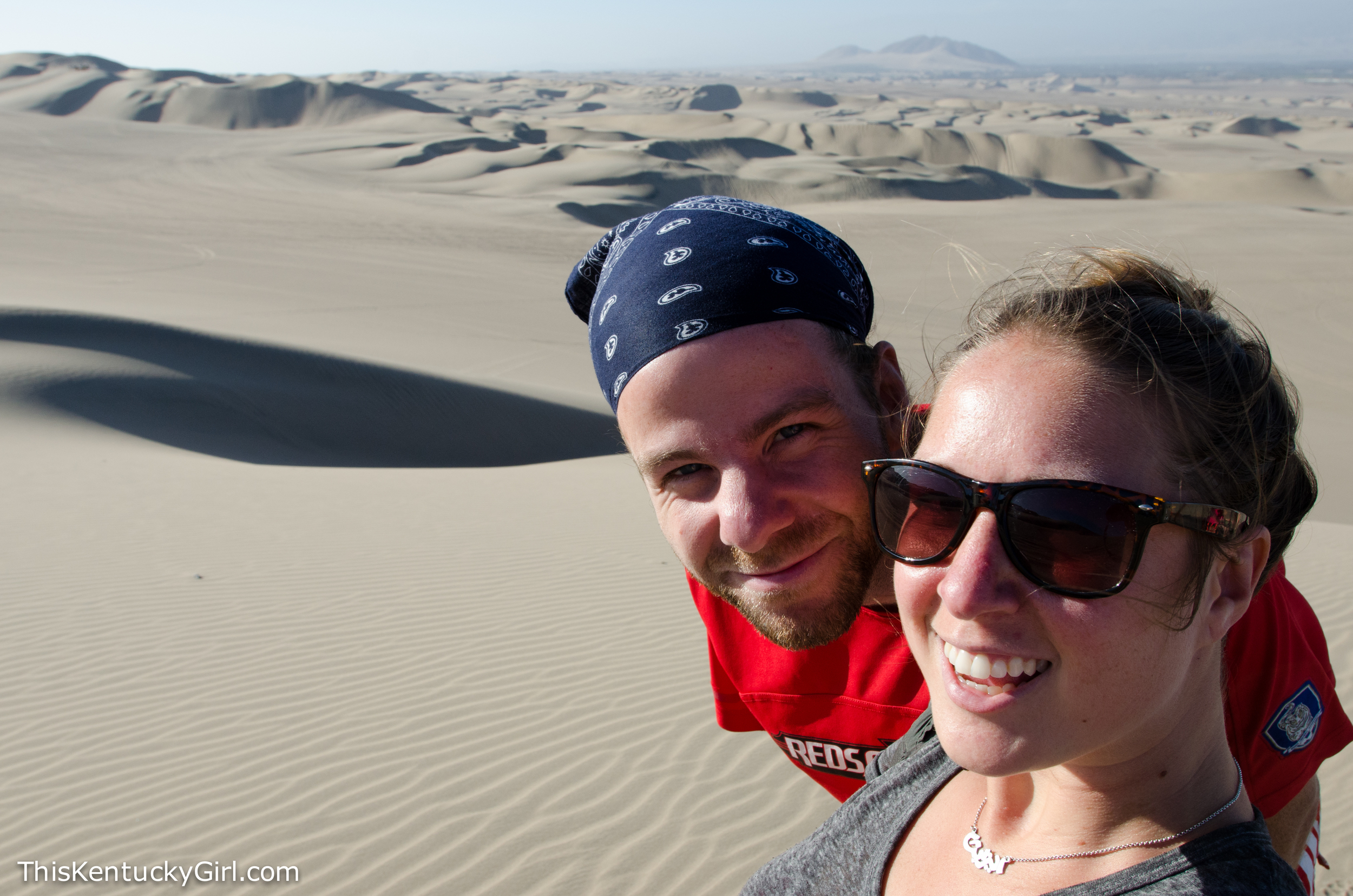
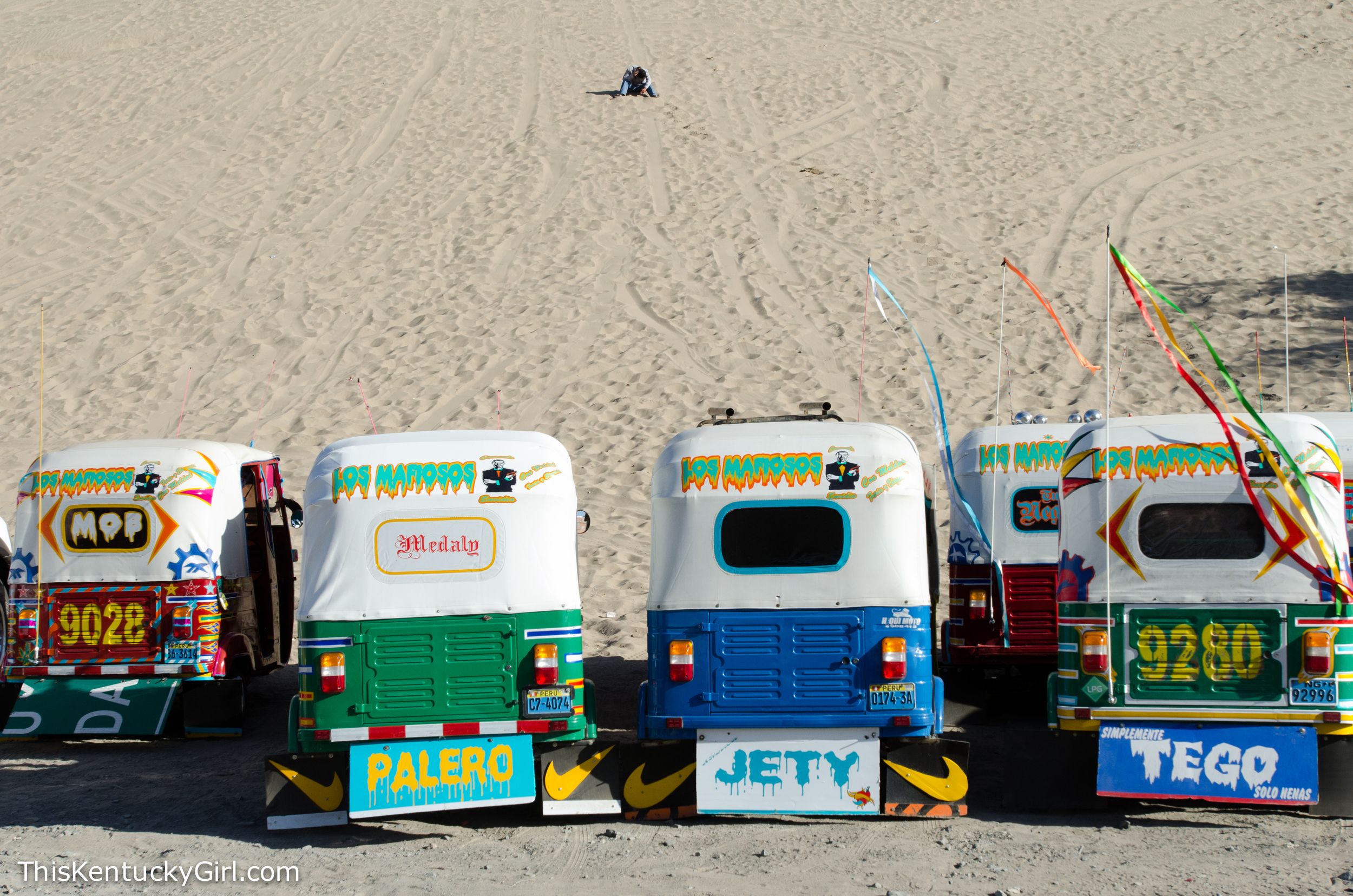
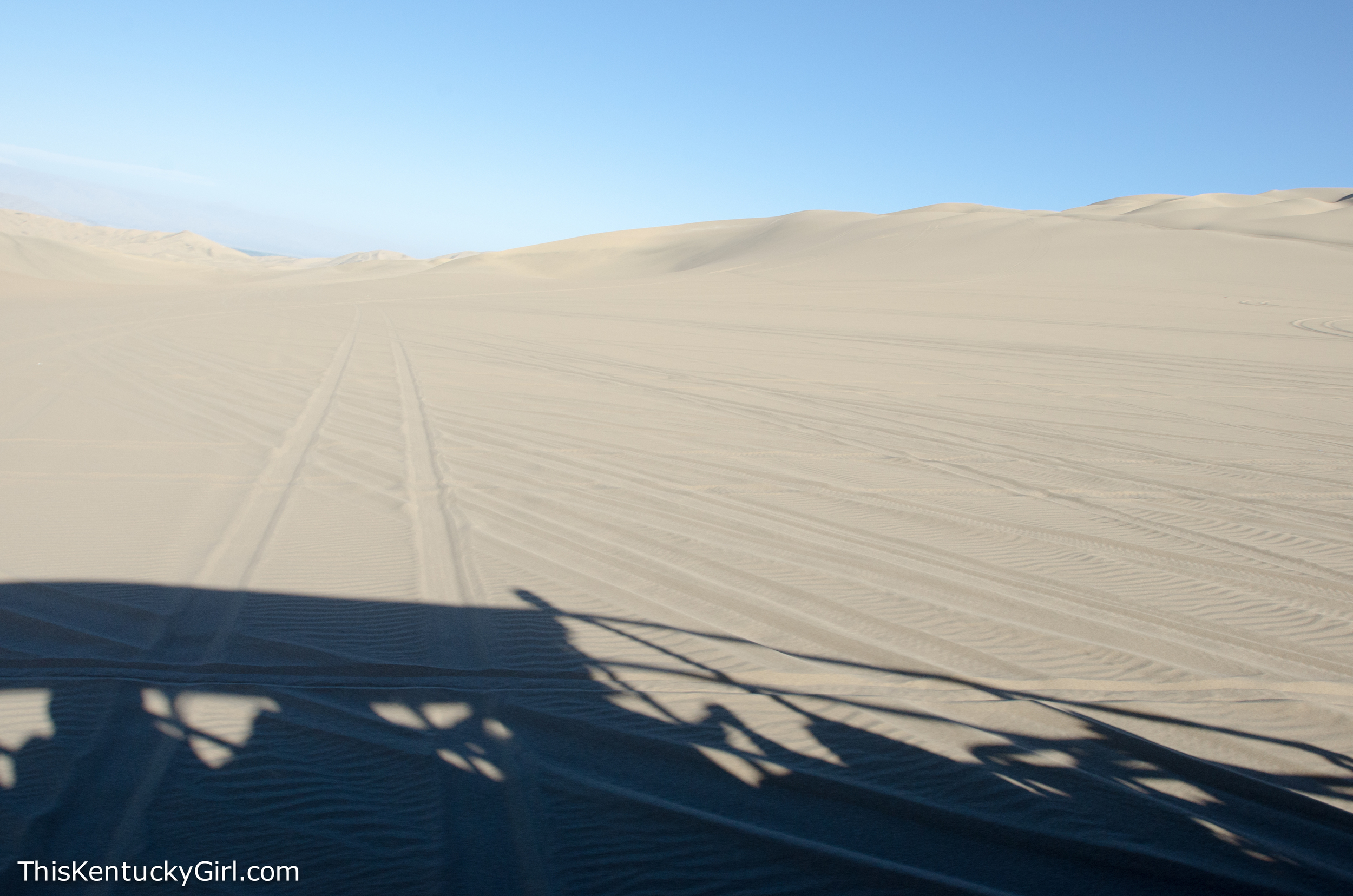
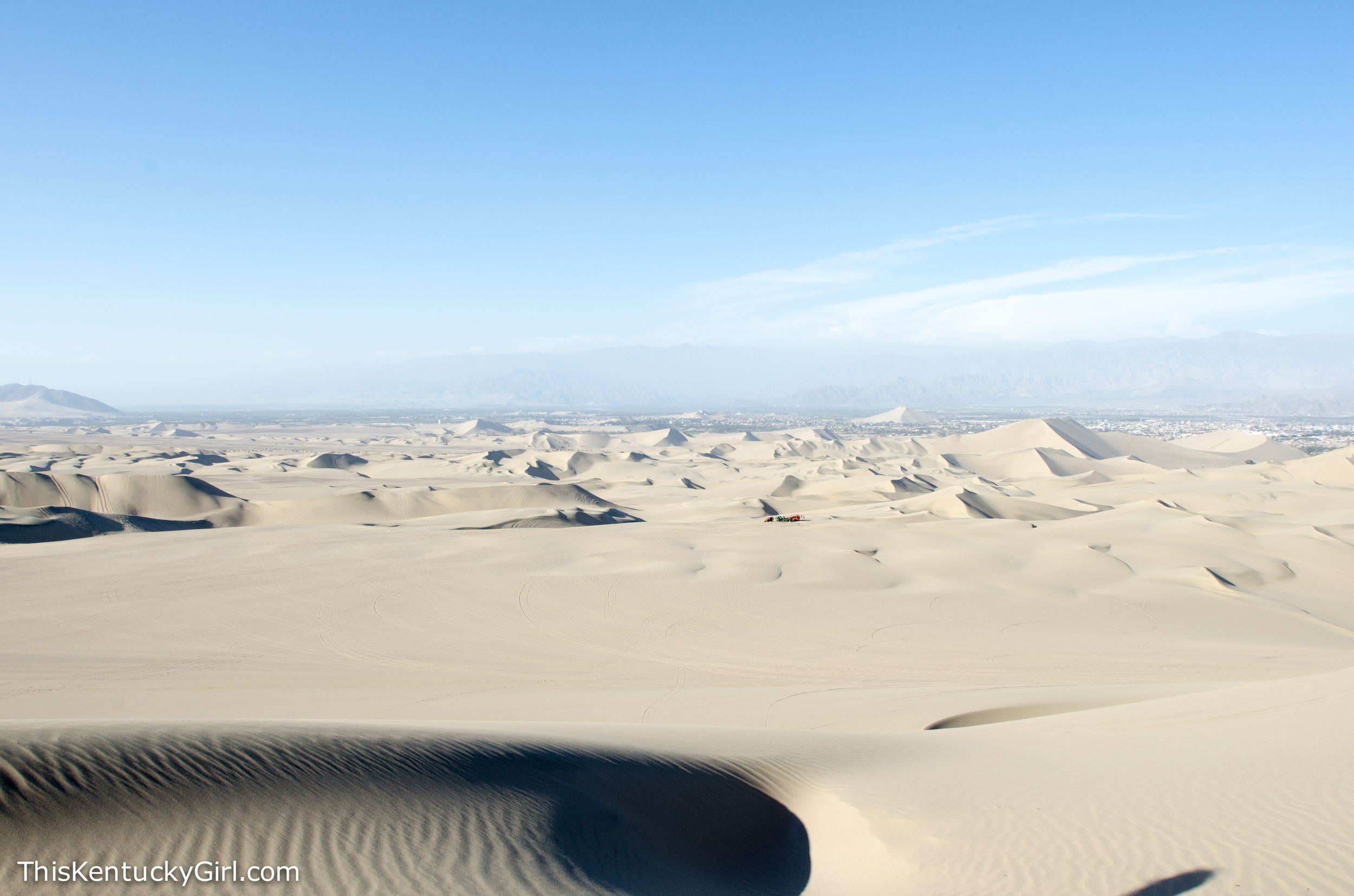
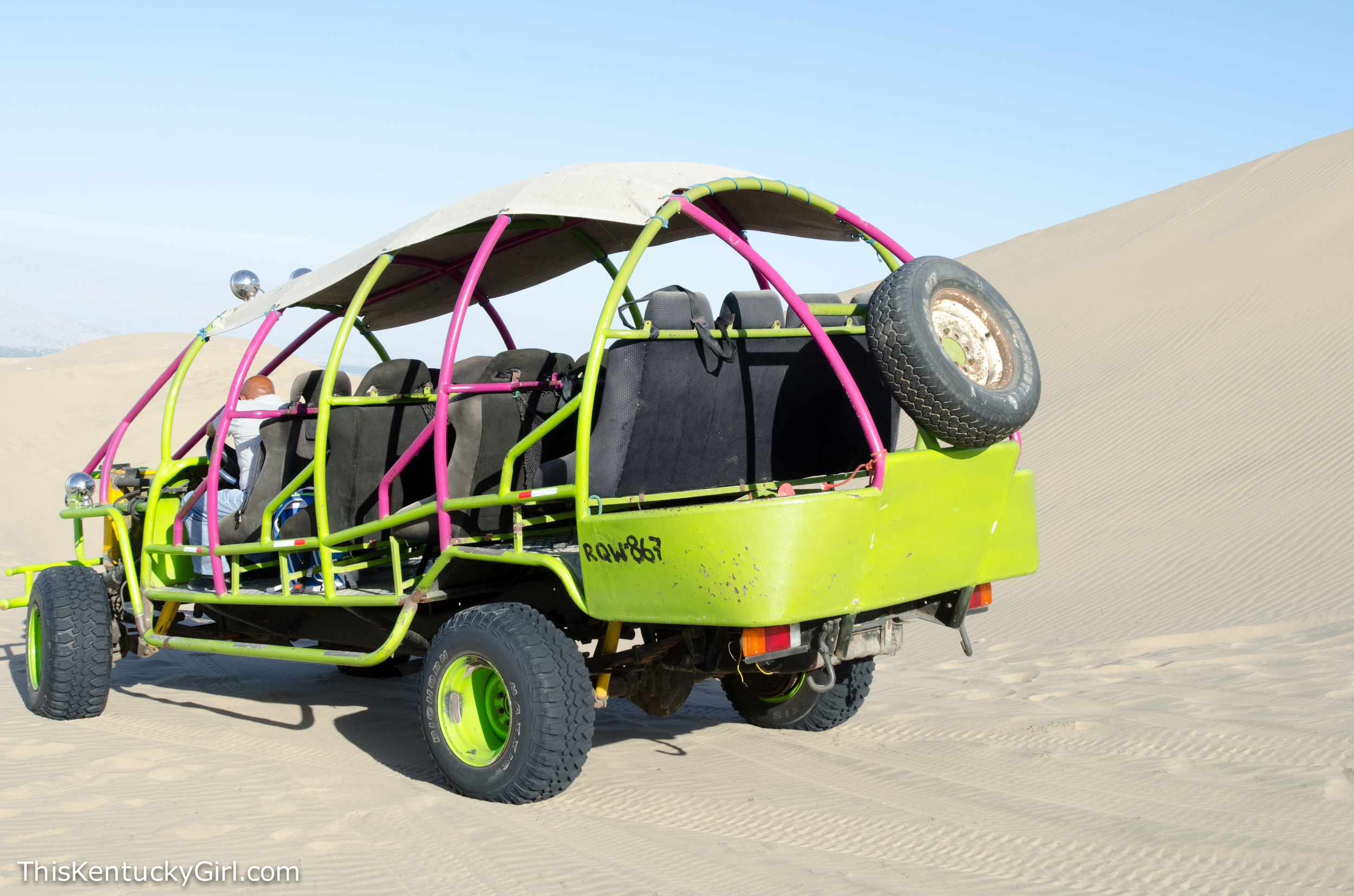
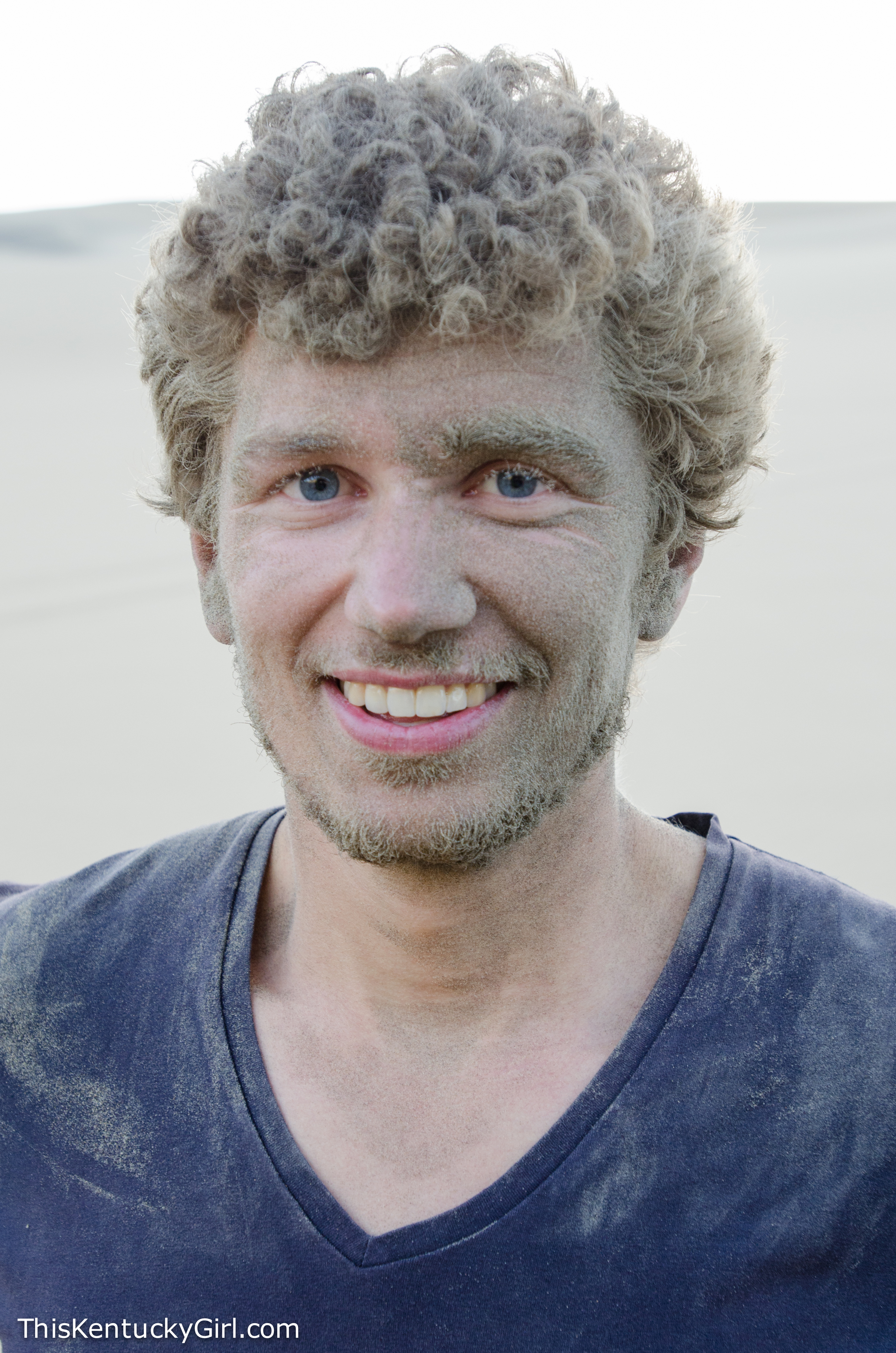
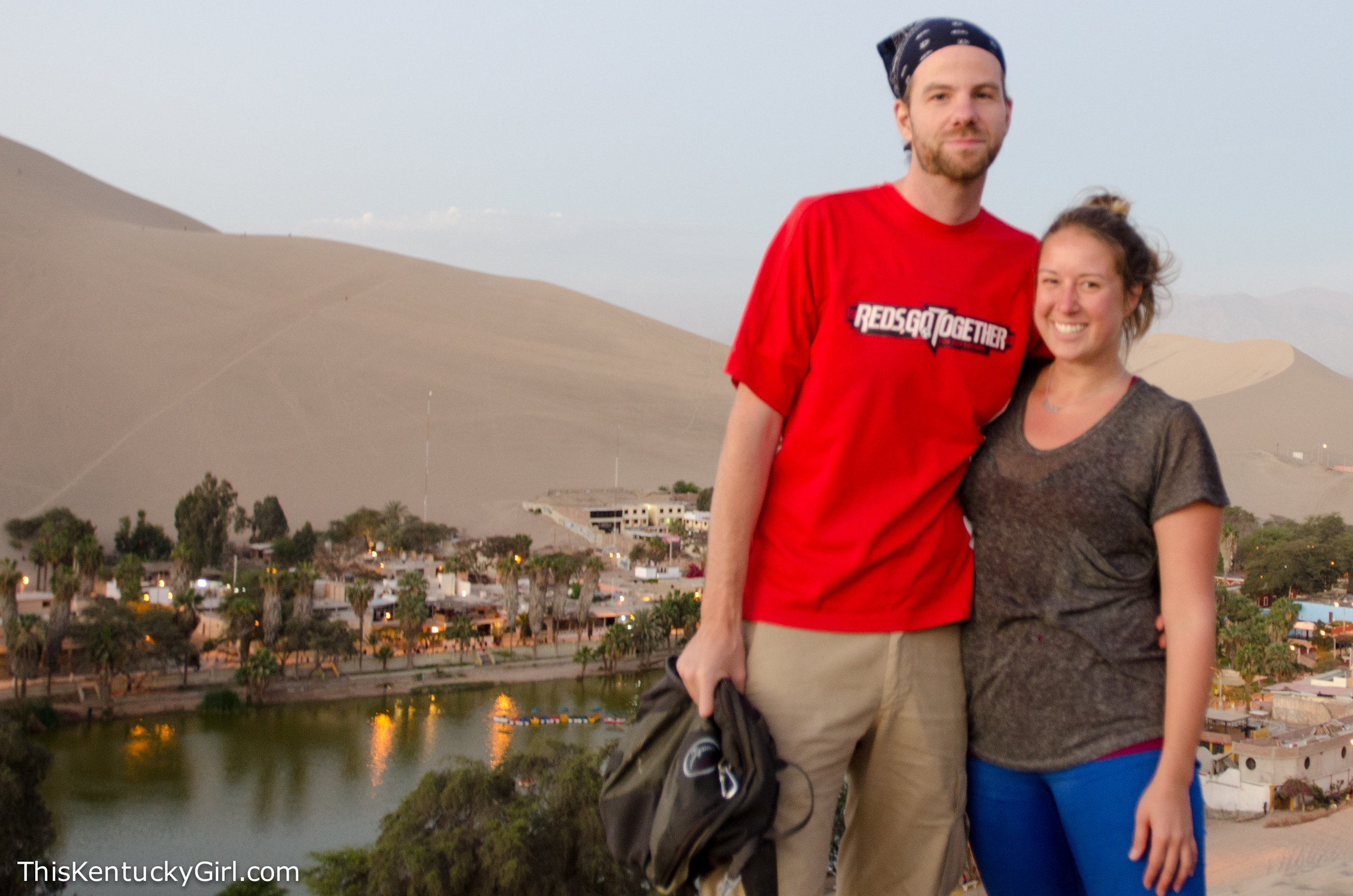
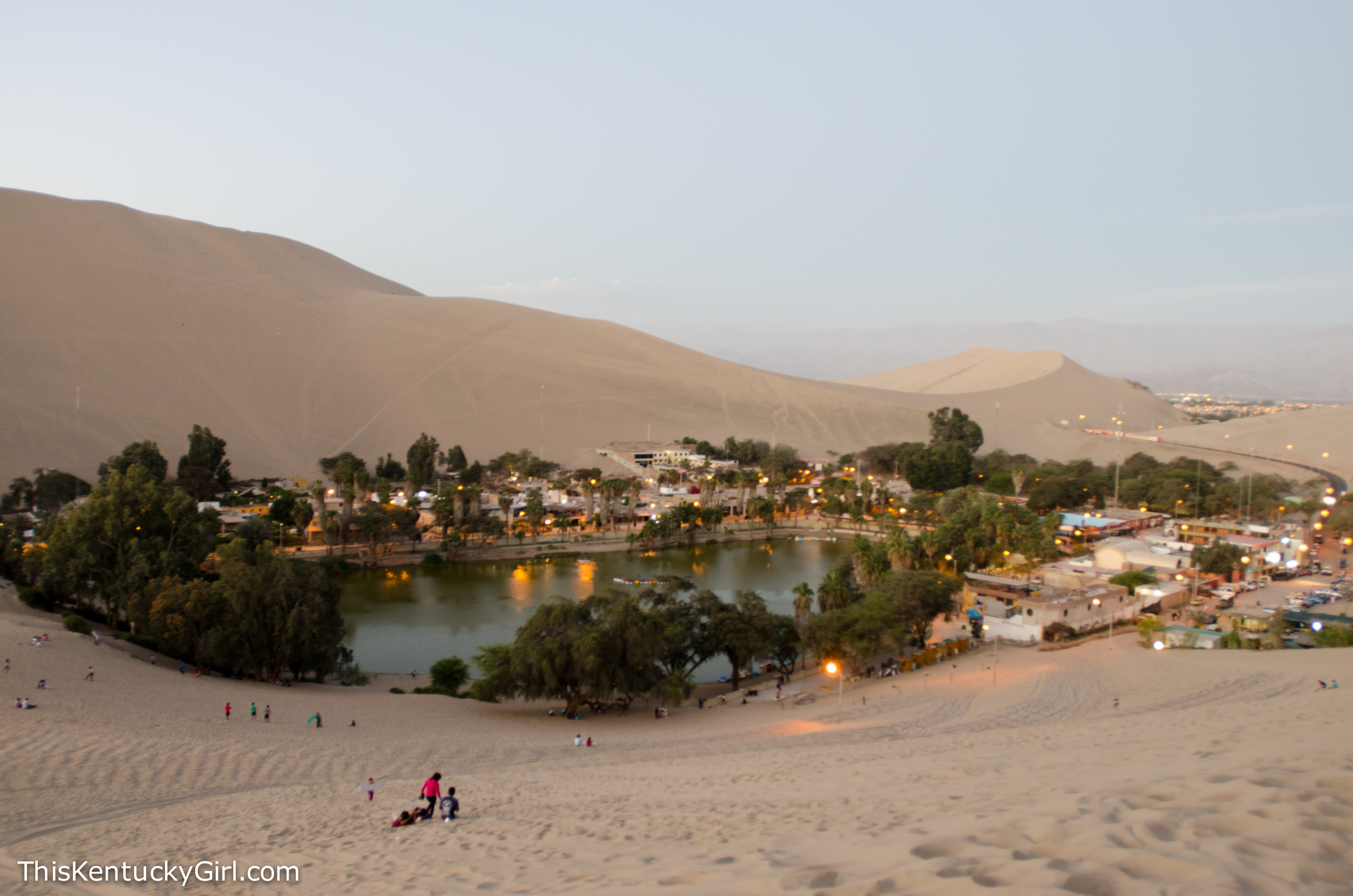

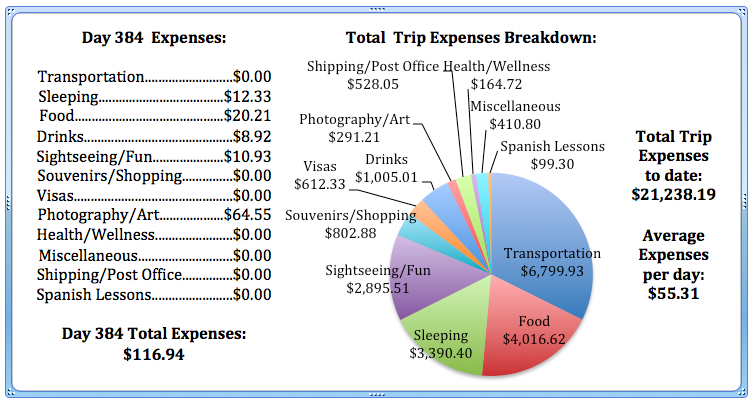
Everyone had trouble sandboarding down the dunes standing up. We could stand up, but many of us were inching down the hill because the sand just wouldn’t cooperate. In the end, everyone, well, most everyone laid down on the their board and suddenly we were flying down the dunes. It was a lot of fun, but the boards aren’t exactly the safest, and the metal bolts holding the shoe straps to the board cut up my arm a little bit. Our last dune was the steepest and fastest. I hit a few bumps going way too fast and went airborne more than once. I can assure you, sand is a lot harder than snow, and it wasn’t the most comfortable feeling in the world. Huacachina is in need of some saucer sleds. By the end of the excursion, everyone was covered in sand, some more than others, like the dude pictured above. My favorite part about this picture is that I unfortunately have no idea who this guy is! He kindly allowed me to take his portrait, and was excited to see his picture on the blog. I think I told him I would email him a copy as well, but then after we dispersed for some much needed cleaning up, I didn’t see him again! After sandboarding down four or five dunes, we made our way back (again at high, very fun speeds) to the oasis. The sun was setting and it was the perfect ending to our stopover in Huacachina and a wonderful birthday.
Day 383: Huacachina
Huacachina is a teensy town just outside of Ica. When I say teensy, I mean it’s a handful of hotels, hostels, restaurants and homes built around a natural oasis in the middle of the desert. It’s become pretty popular with tourists for the dune buggy rides and the sandboarding you can do in the desert surrounding the town. We had planned on going for a dune buggy ride this afternoon, but Andrew and I felt like we had just gotten off of a serious bender (symptoms of altitude sickness include feeling like you have a hangover). We went for a little walk around the oasis and halfway around (it’s not very big. at. all.) I had to sit down. Three quarters of the way around, I had to lie down. So instead of spending the afternoon crashing around the desert in a dune buggy and sandboarding down steep dunes, we crawled in bed and didn’t come out until the next morning. You win high altitude, you win.
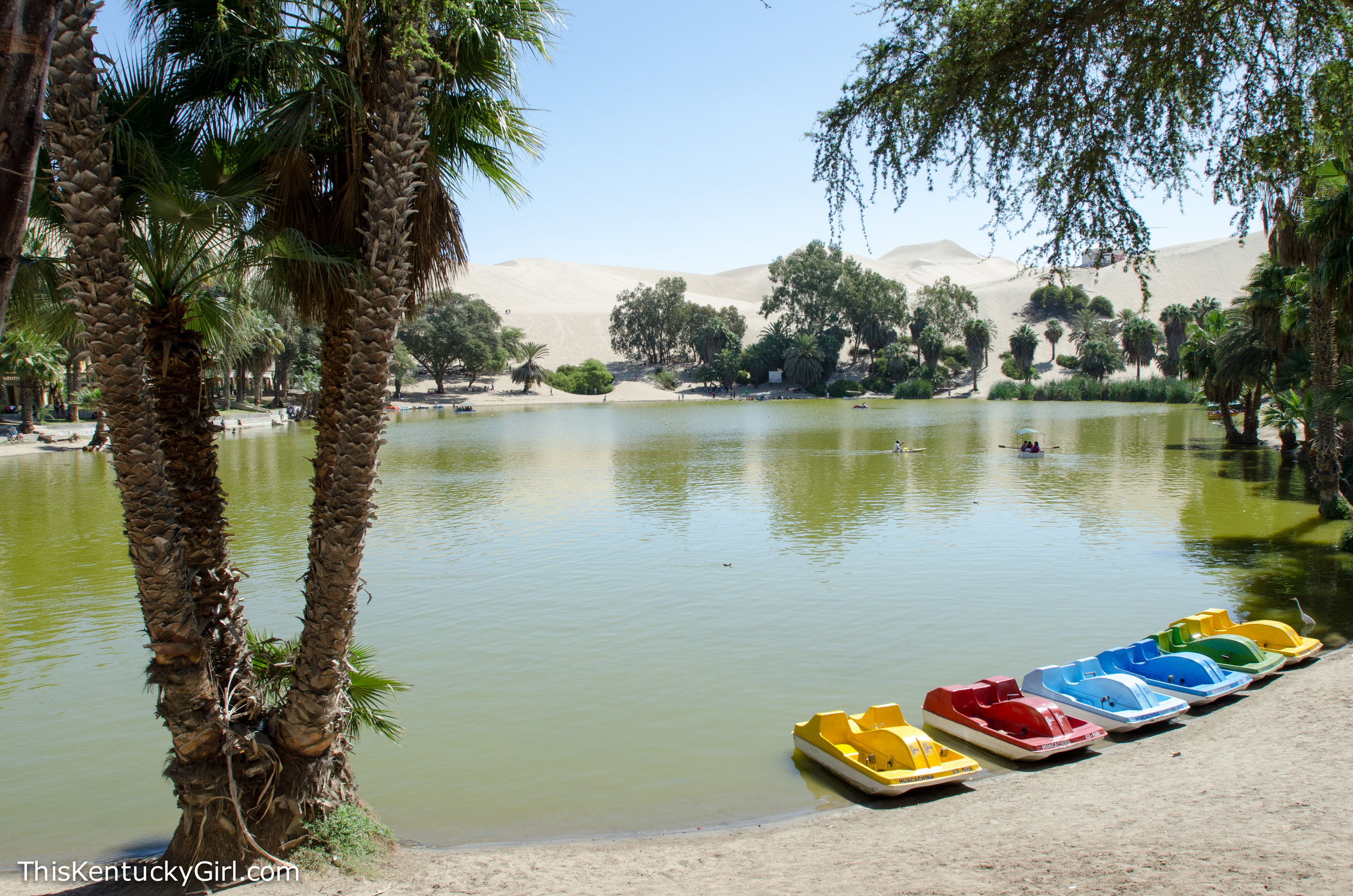
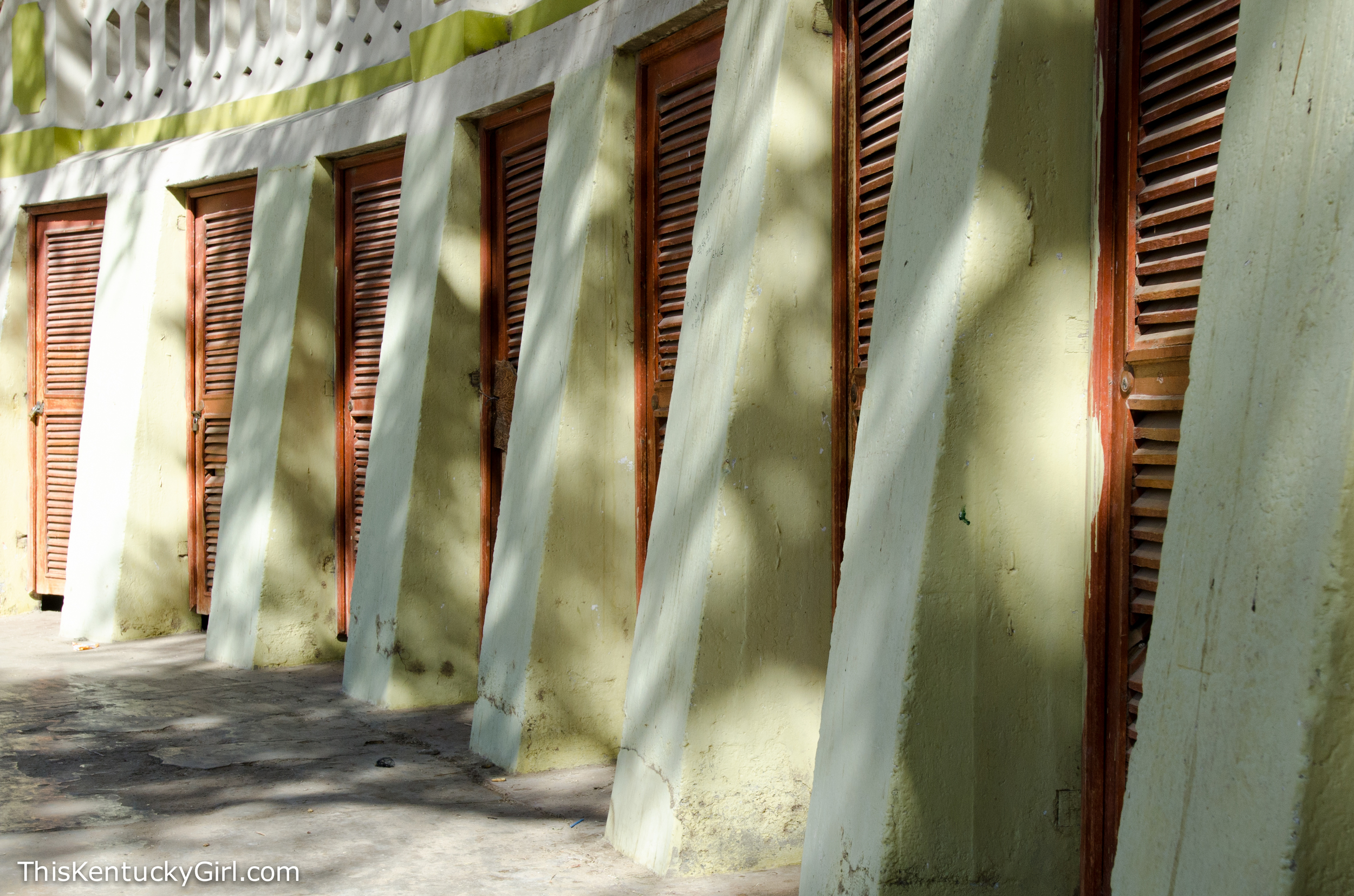
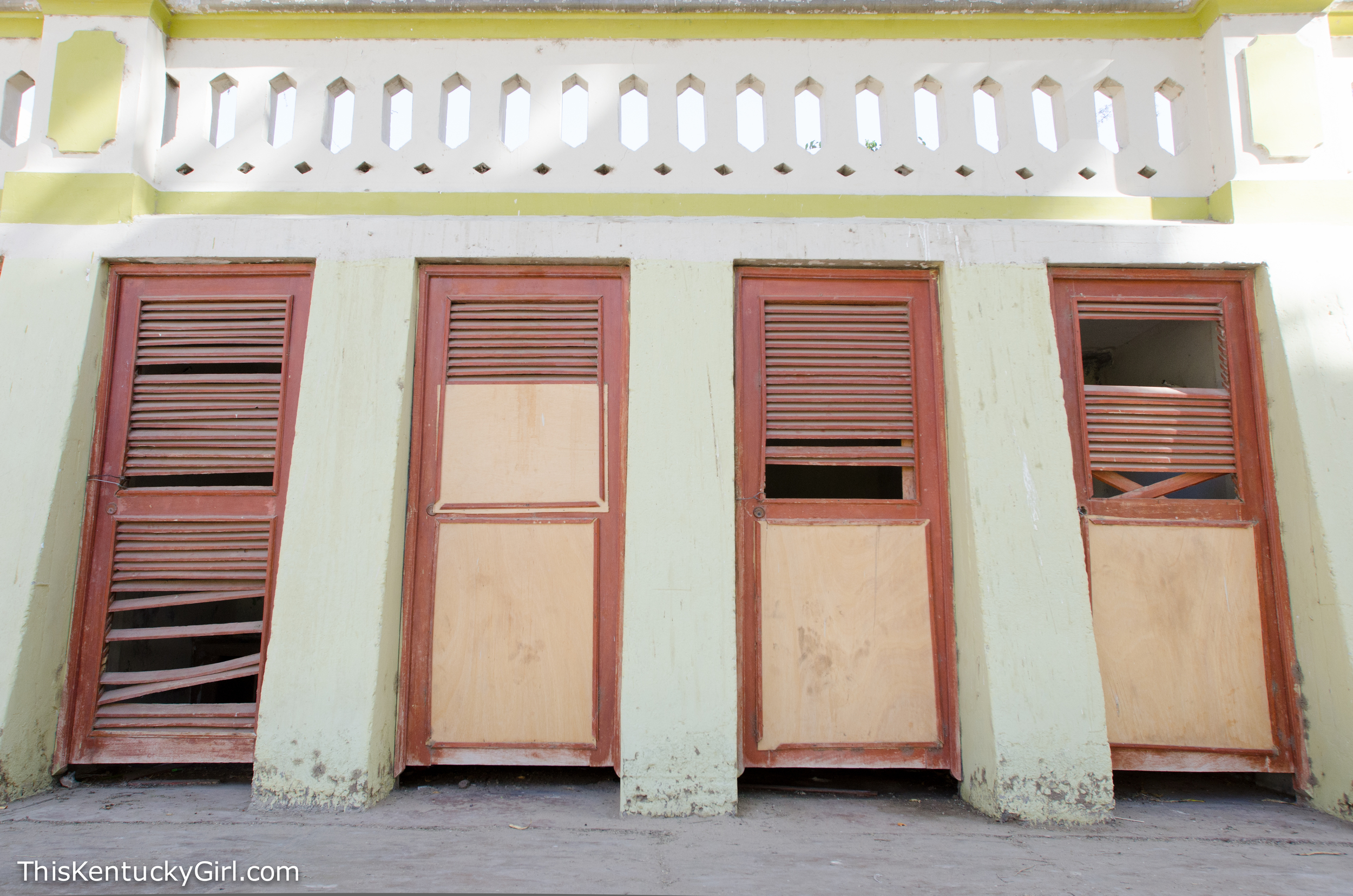
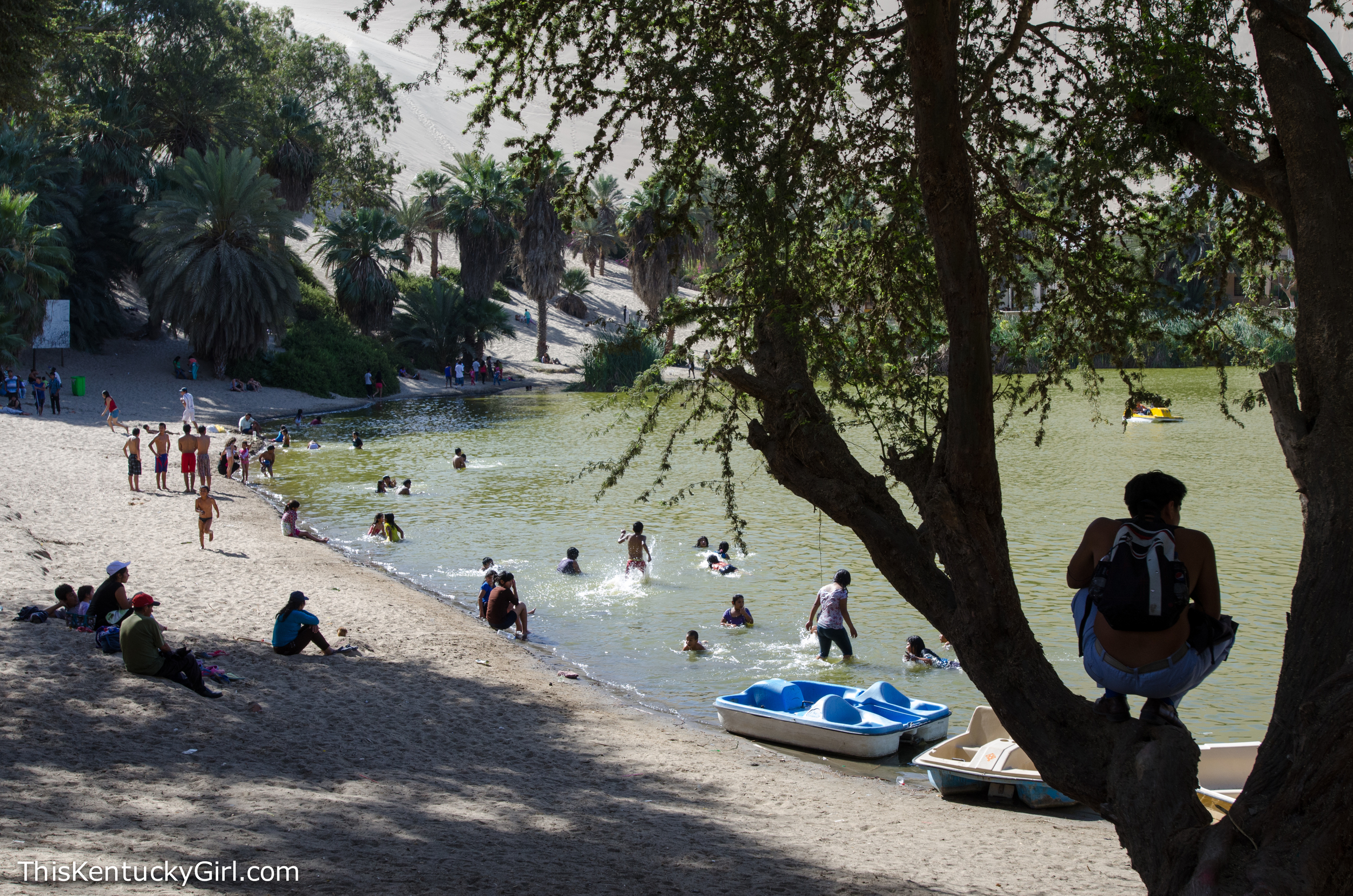
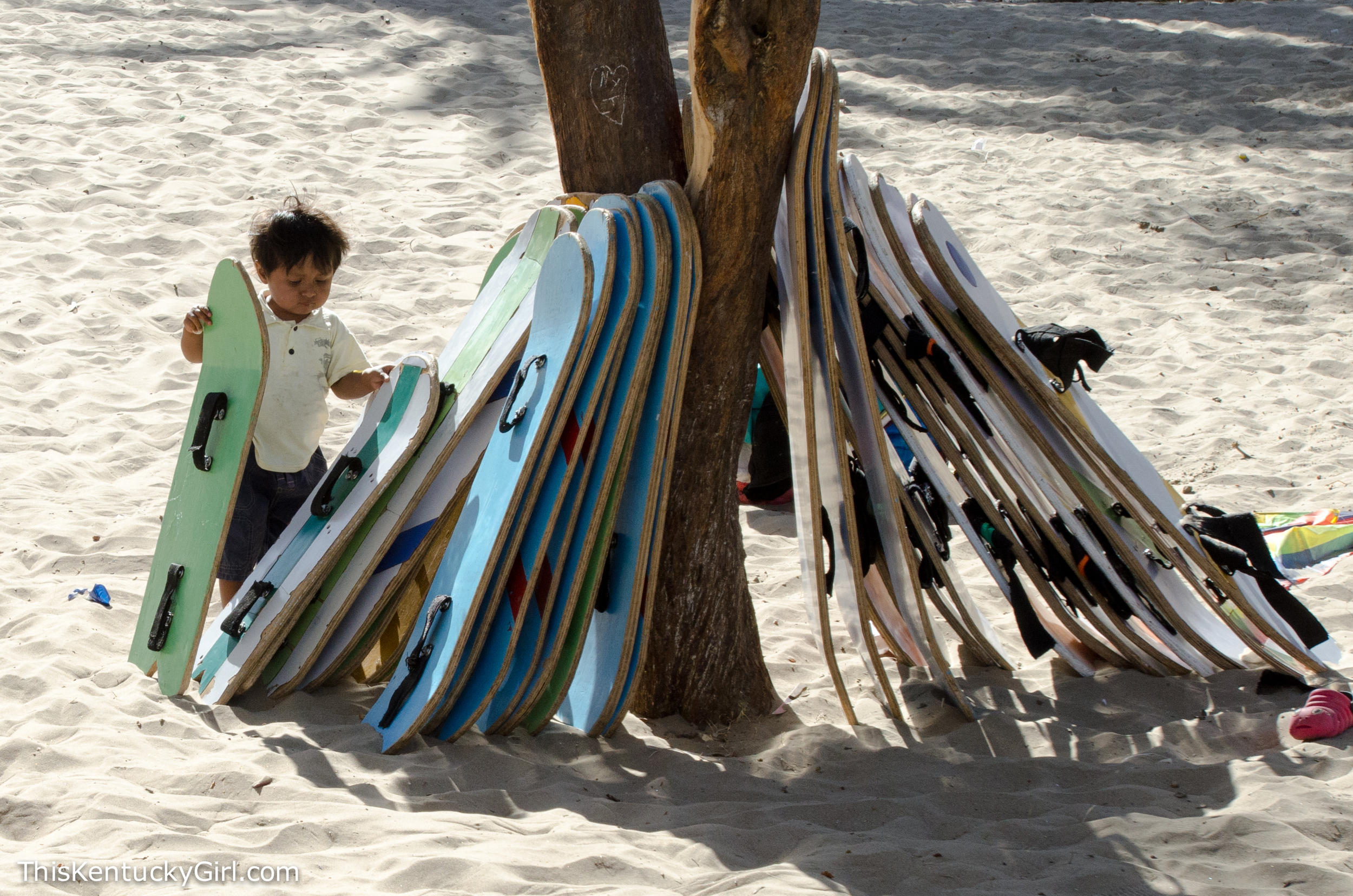
For some reason, I really liked these (what I’m guessing to be) old-fashioned personal changing rooms. Obviously, they are no longer in use, but I thought they had so much character and that it’s a shame they weren’t maintained. That didn’t stop the locals from enjoying the “beach” and the water though! It’s not necessarily advised to go swimming in the oasis, and there weren’t any foreigners indulging in the activity… but Peruvians were all about it. Forgot your sandboard at home? Don’t worry, this little guy will rent you one of his!
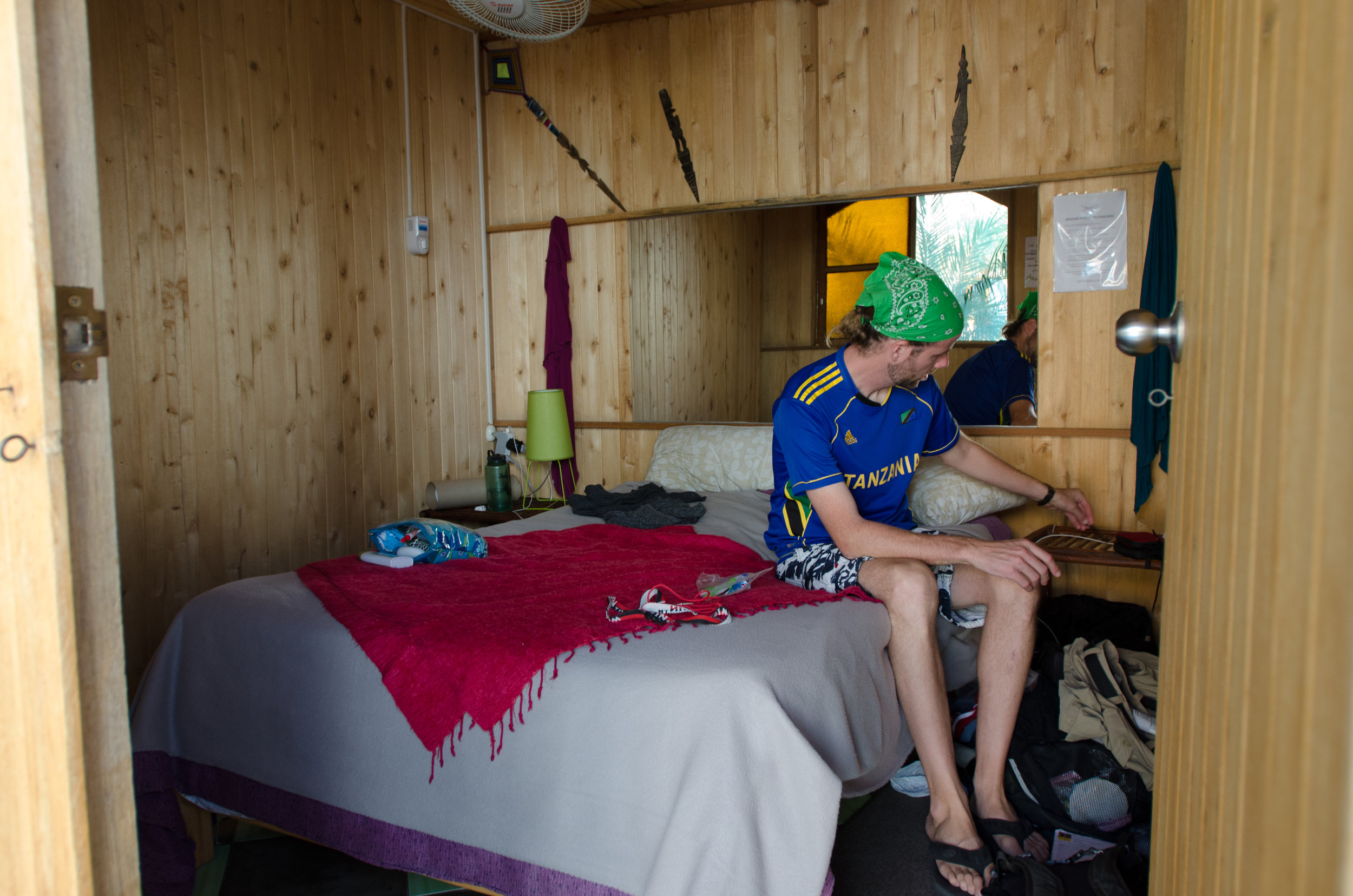

day 382: Cusco to Ica
Surprisingly, Andrew nor I (nor my Mom for that matter) really suffered from any serious altitude-sickness during our time in Cusco. That is, until today. For some reason, the 18 hour bus ride from Cusco to Ica took both of us down. And we went down hard. The bus ride wasn’t nearly as miserable as it sounds. I mean, it wasn’t in Mozambique juggling babies and live chickens, waiting for the mud to dry so our bus could get towed out of the ditch it was stuck in on the side of the road… So, despite our big reclining seats, personal televisions, and even some weak wi-fi signals at times, we just weren’t feeling so well. I told myself I would study Spanish, but I wasn’t feeling up to doing anything other than sleeping or watching really terrible movies dubbed in Spanish… which is kinda like studying. At least the view (and this is when we were stopped in traffic for 45 minutes) was beautiful for most of the ride!

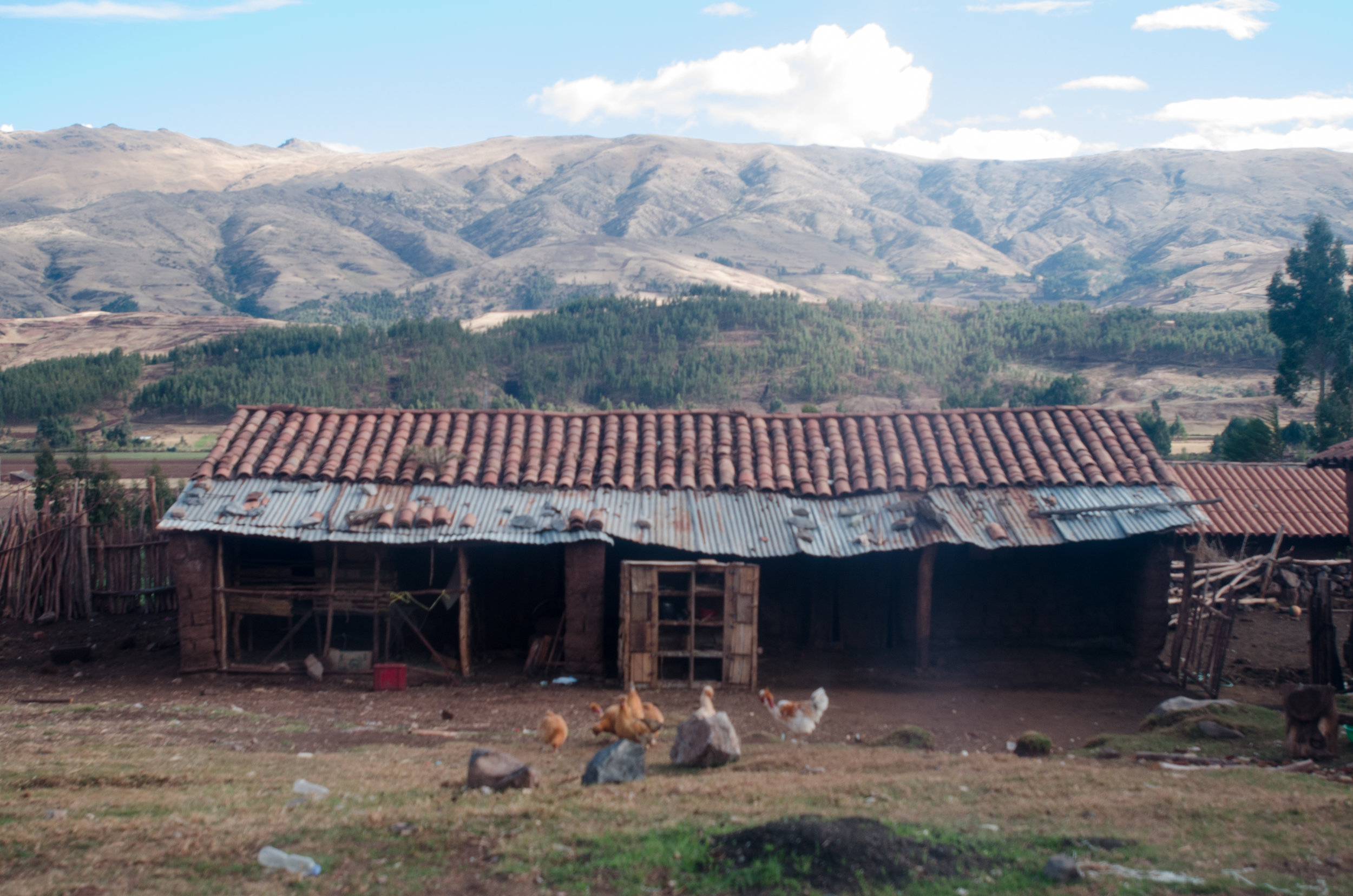
Day 381: Puna Tienda Galeria featuring: Jorge Flores
You know what’s awesome? Walking into a new city, or making a new friend, or visiting a creative space and being completely swept off your feet inspired. Which is a little like being swept off your feet in love for the creative types. At least, for me it is. Anyway, I was certainly swept off my feet when we stepped into Puna one night on our way home this week. Not only was I immediately nostalgic for all of my art supplies, sewing machines (I have two. I think. In my sister’s room and/or somewhere in my mother’s house…) and a permanent space to be creative, but I also wanted to stay in Puna forever. Or buy everything I loved so I could at least take it with me. Instead, I asked the two wonderfully sweet girls working if I could return the next afternoon to photograph the space and perhaps learn more about what fueled something so creative and contemporary in a city that seemed to (rightfully so) embrace it’s traditional culture(s). Fortunately, Berenice and Stephanie excitedly agreed and when I returned the next afternoon, I was not only lucky enough to have the store mostly to myself, but to meet local artist, Jorge Flores as well! In the end I wanted to take the store and all three of them with me. Instead, I settled on some pictures, a “day in a minute” and in the end a print that I simply couldn’t live without.
When I returned to Puna, Berenice Diaz, the manager (below on the right) explained the objective of the gallery while Stephanie Guerra (below on the left) patiently helped translate when I didn’t understand. With only a few days of formal Spanish lessons under my belt, I was surprised I could follow along as well as I could, but there were some gaps that I was grateful to Stephanie for filling in the blanks for me. (Muchas gracias, Berenice y Stephanie!)
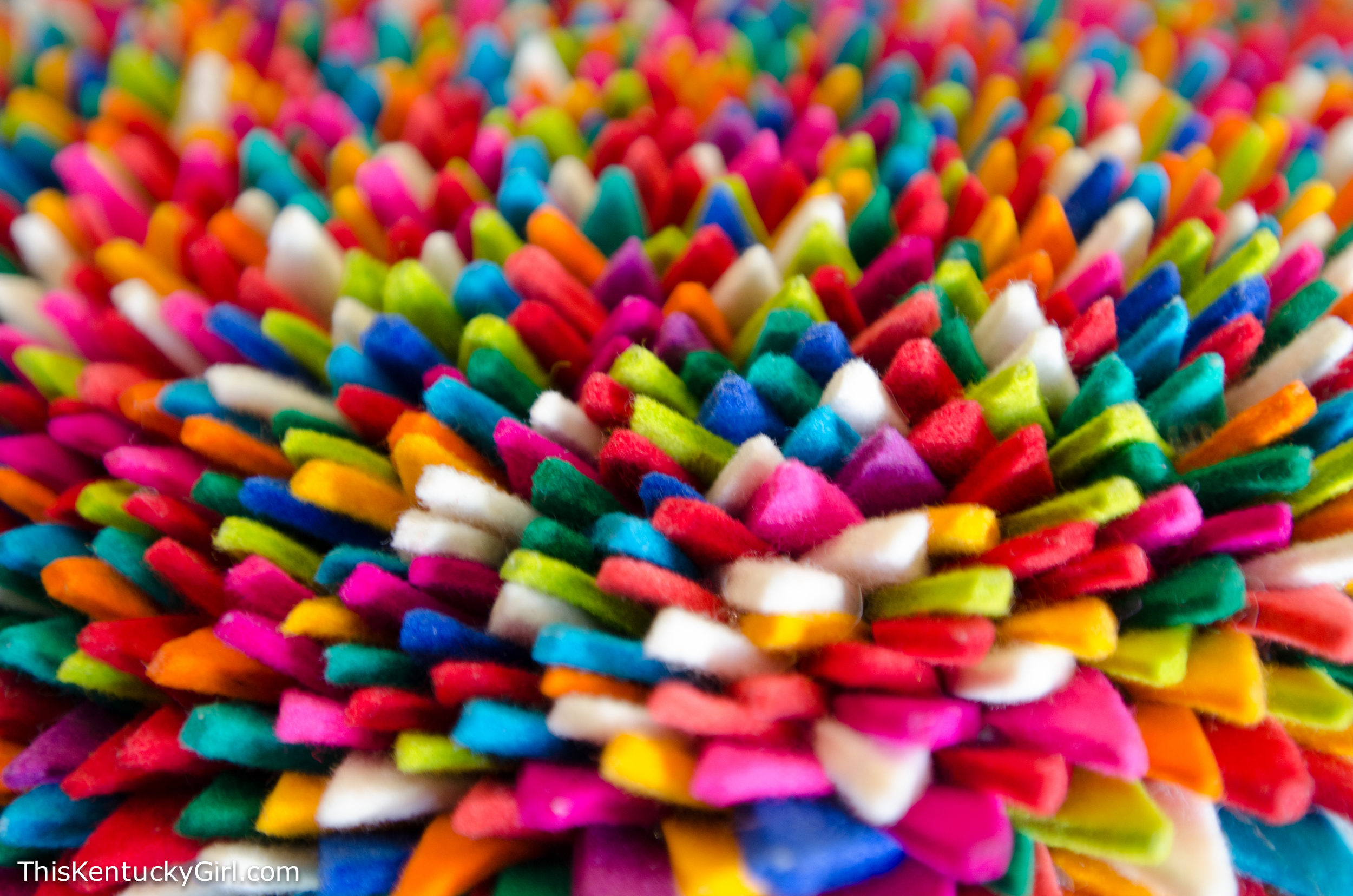
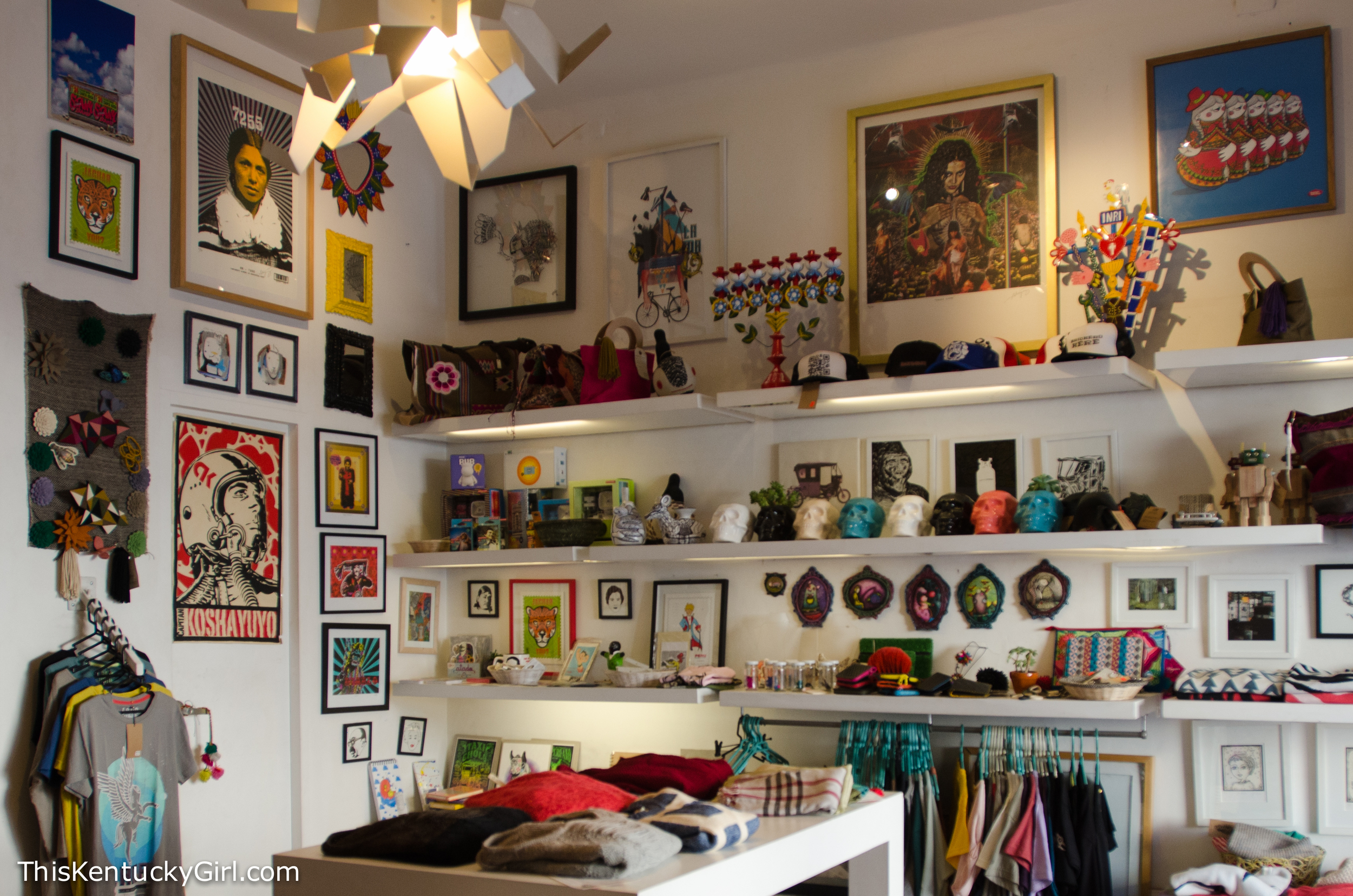
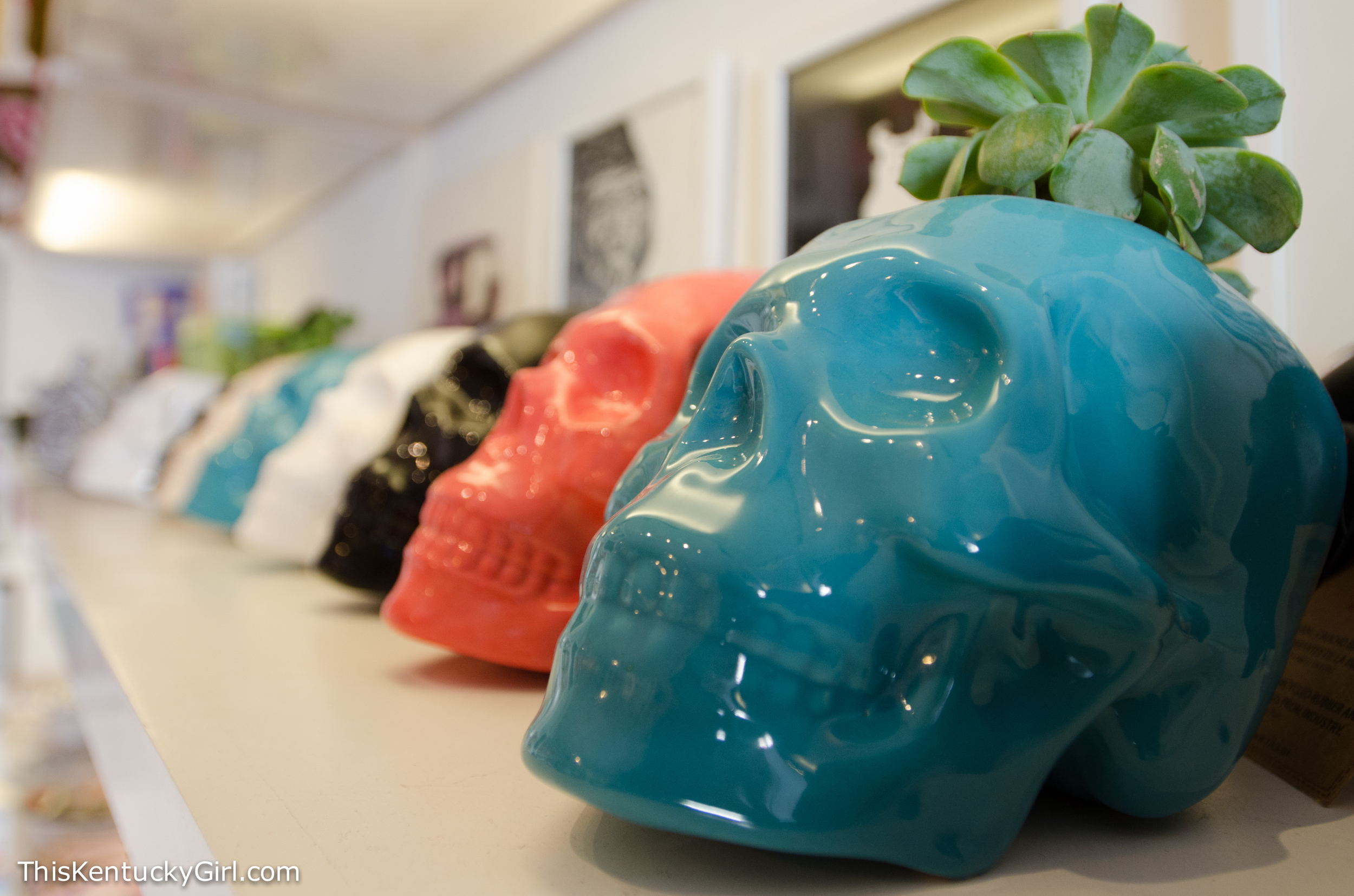
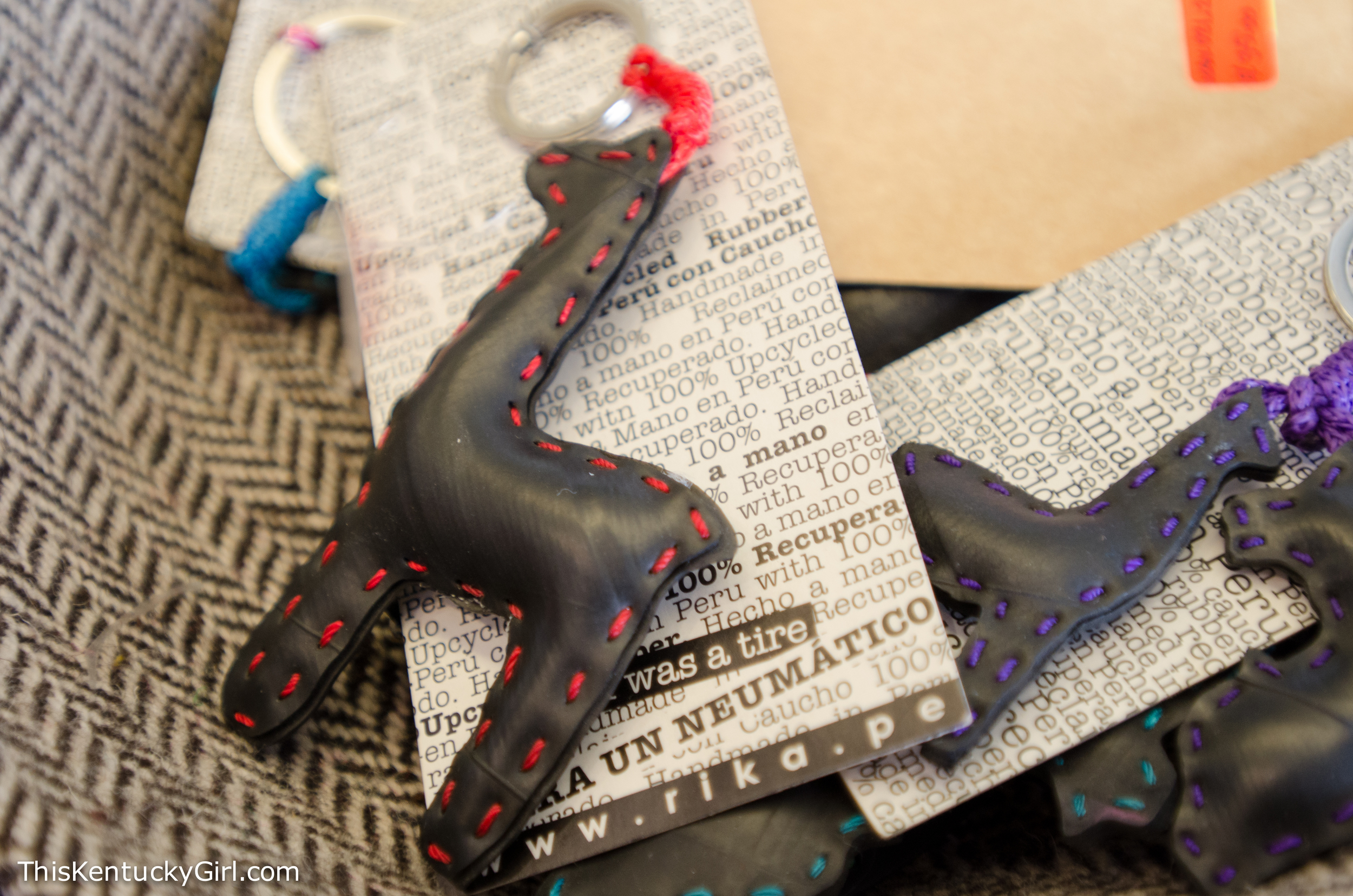
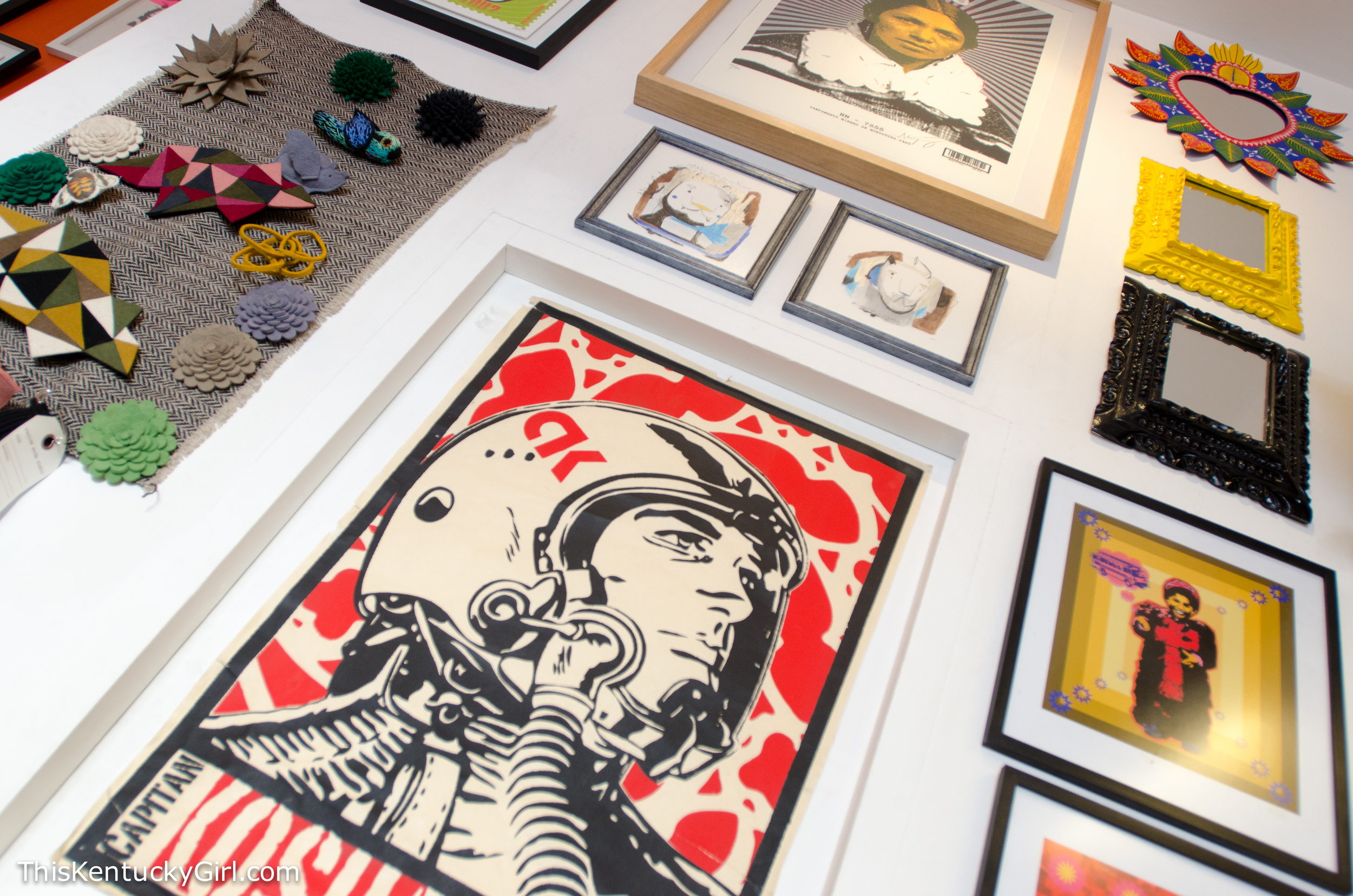
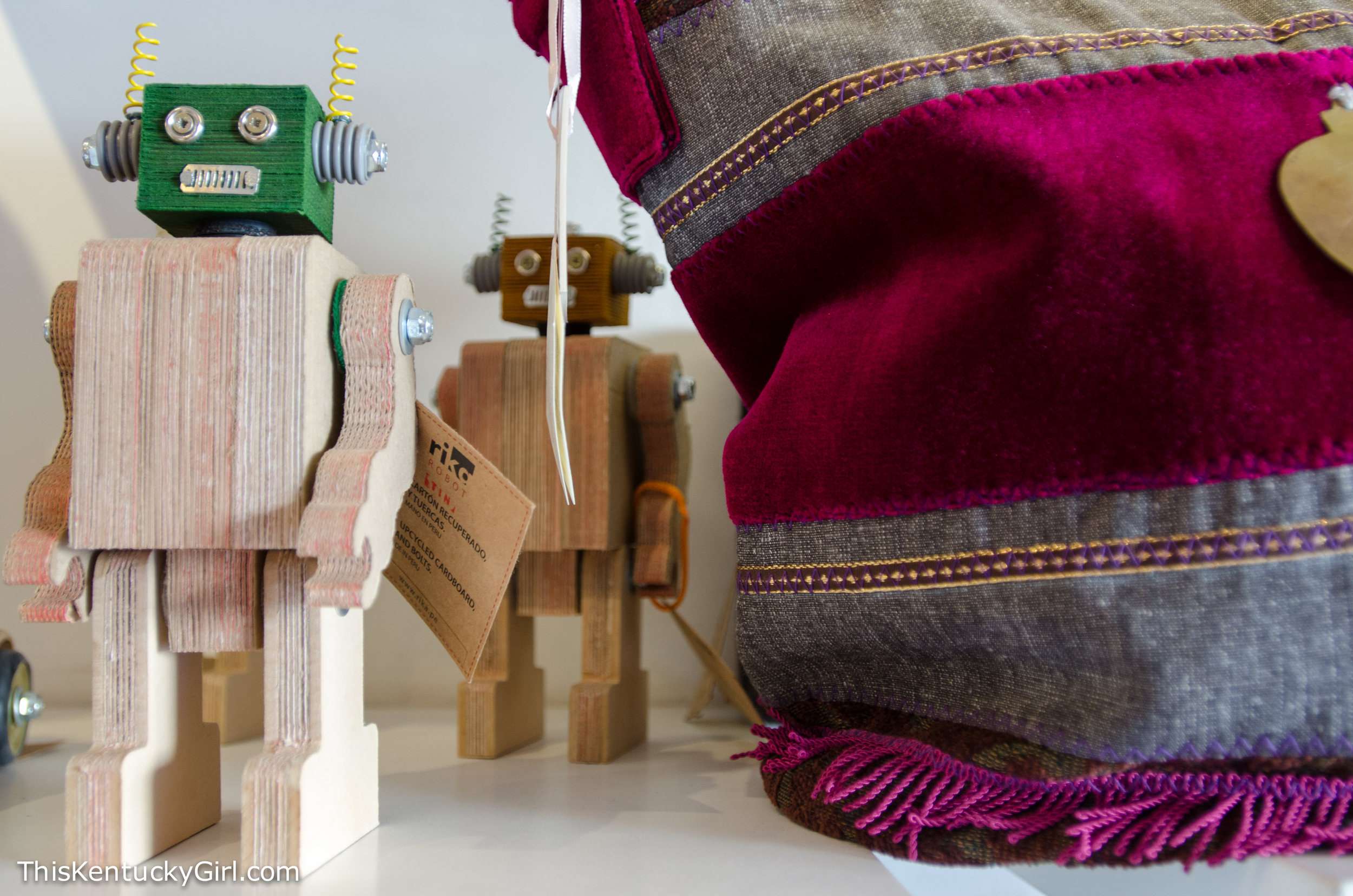
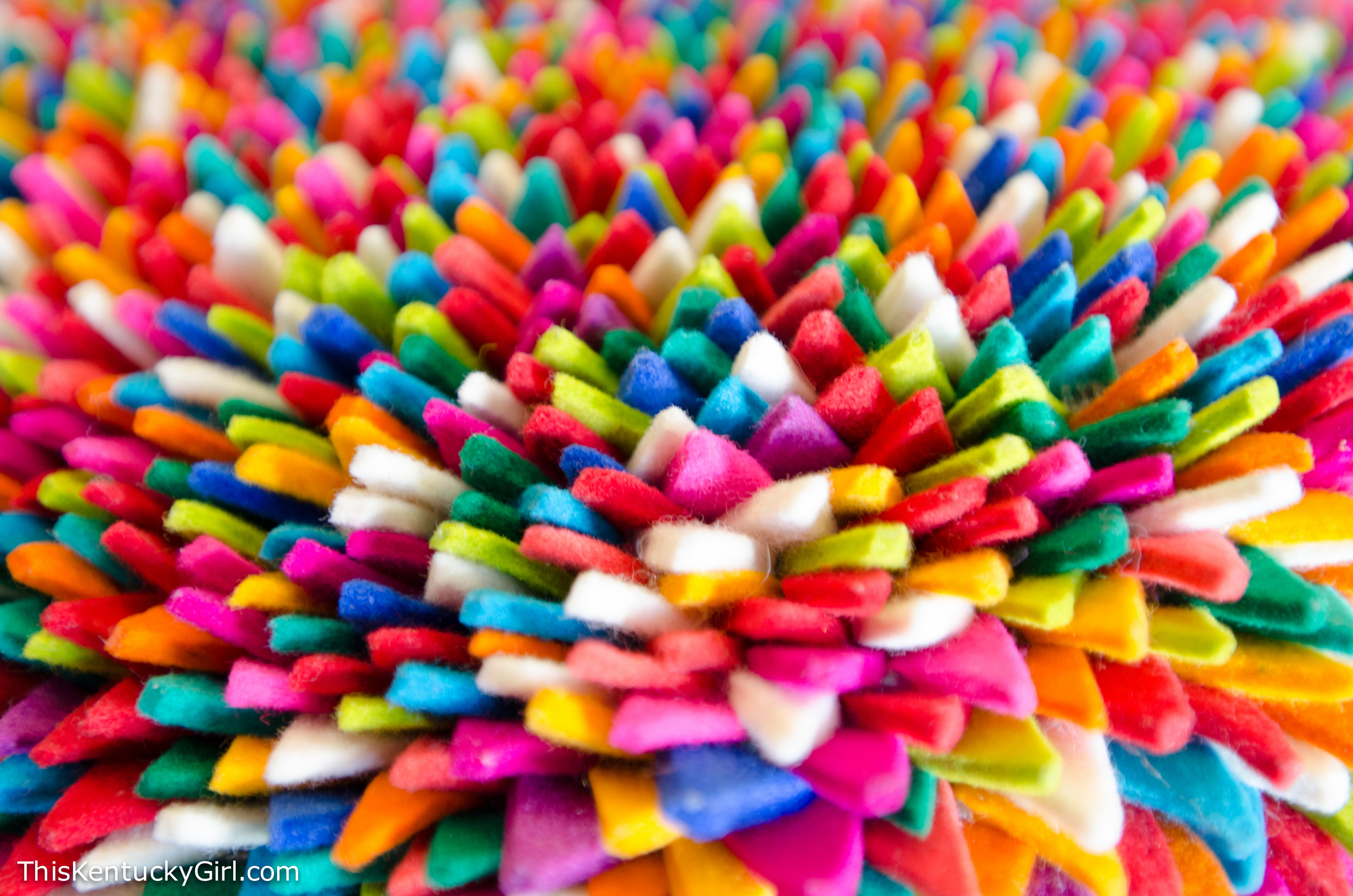
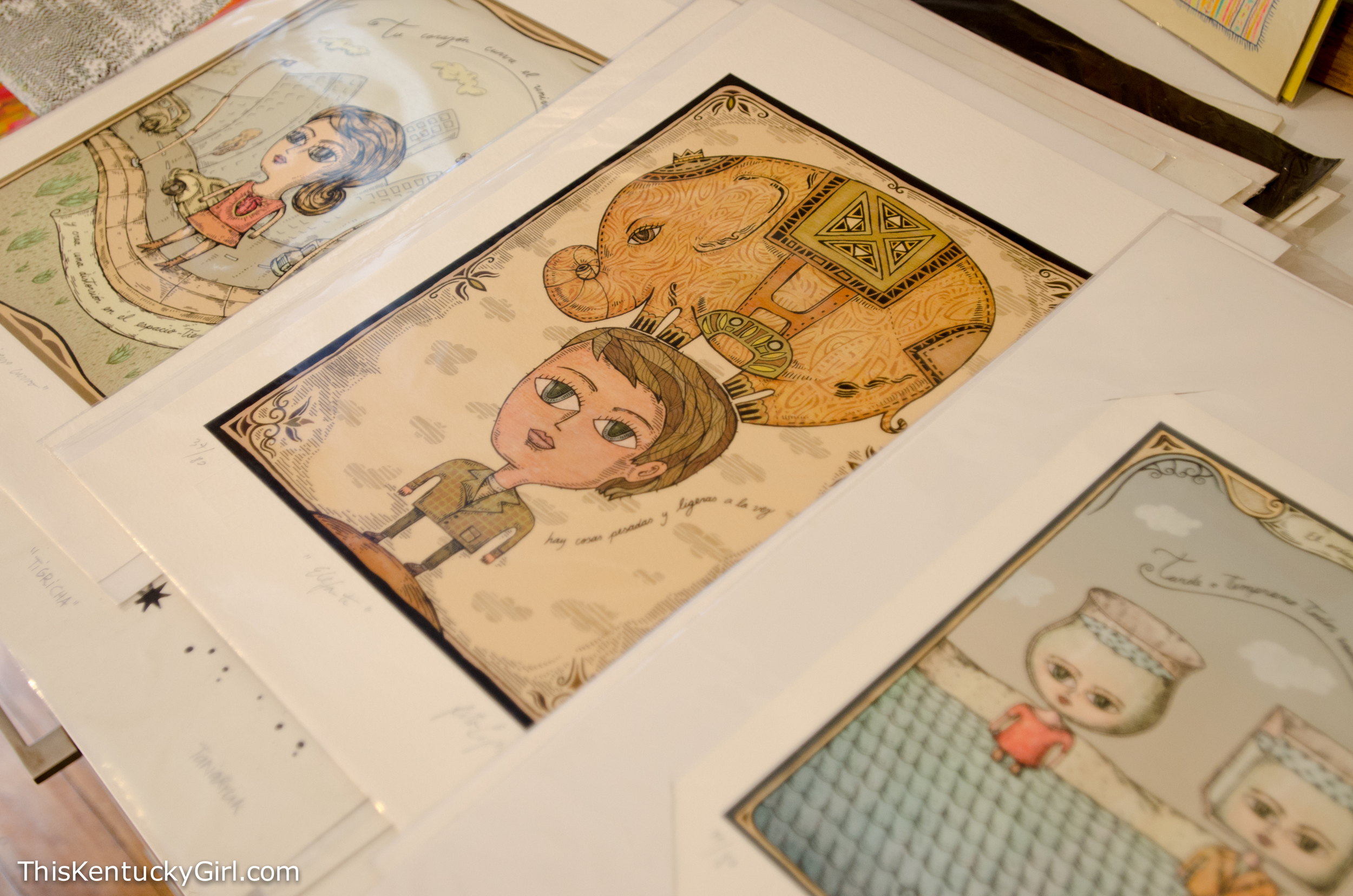
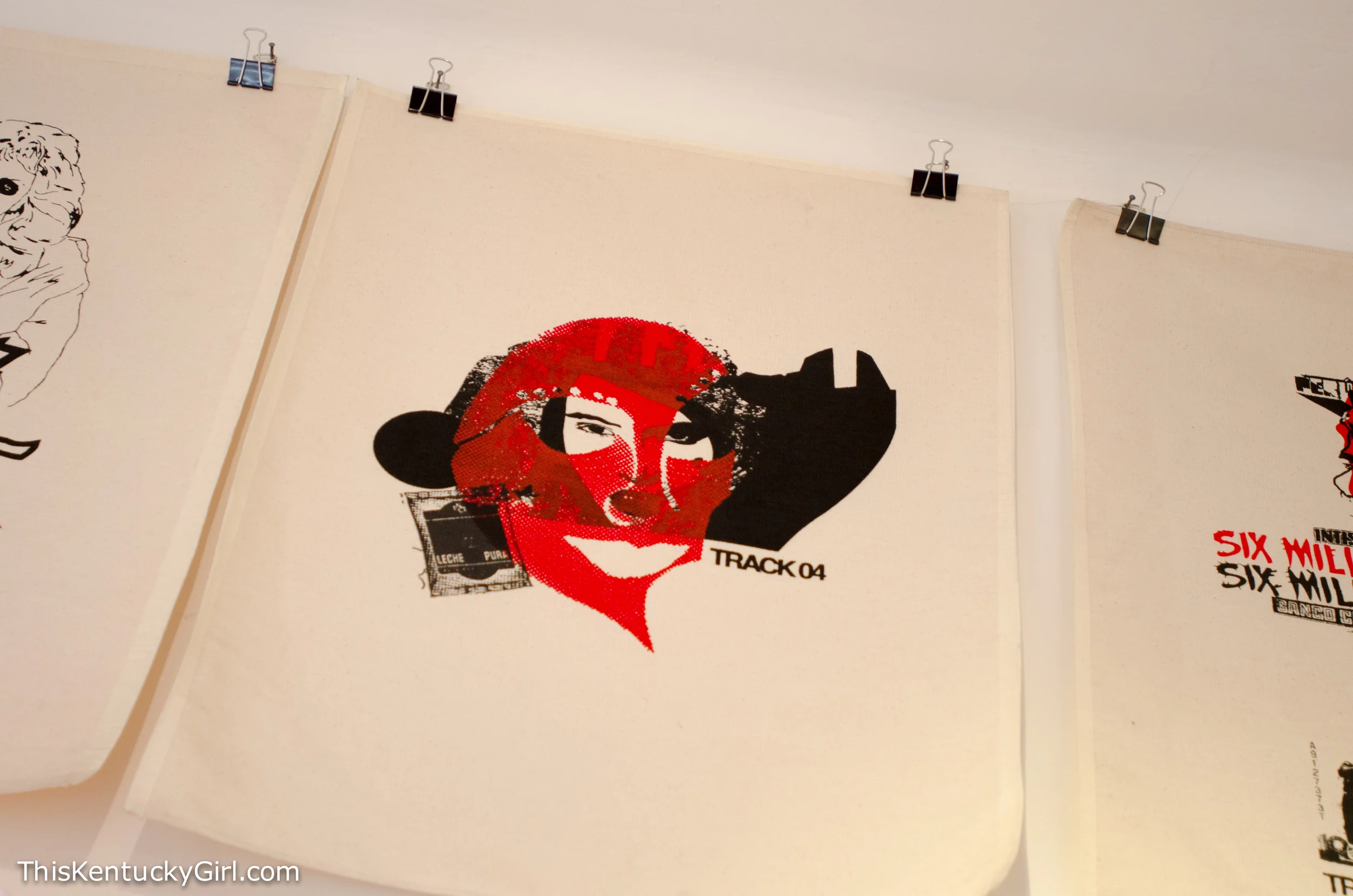
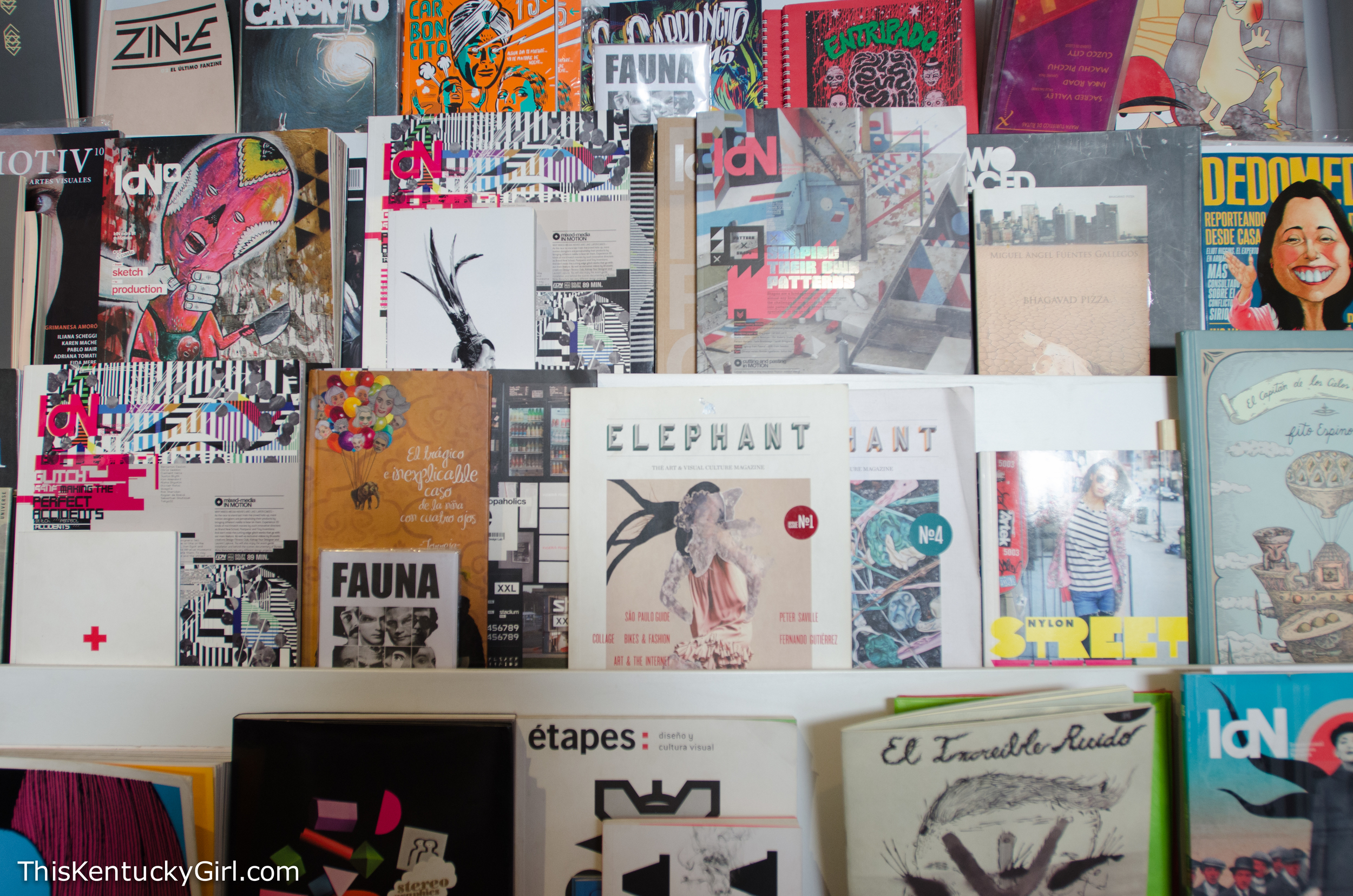
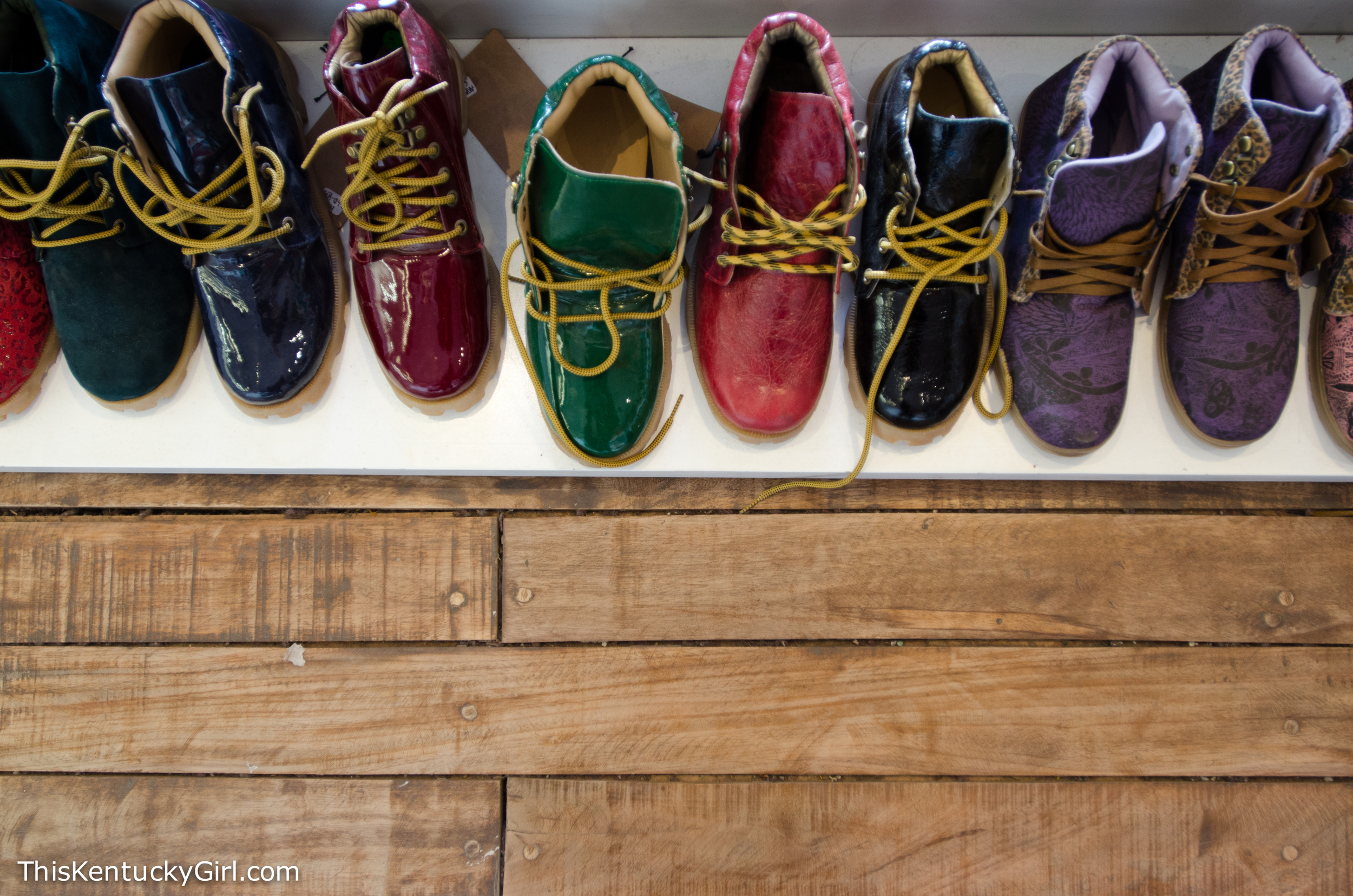
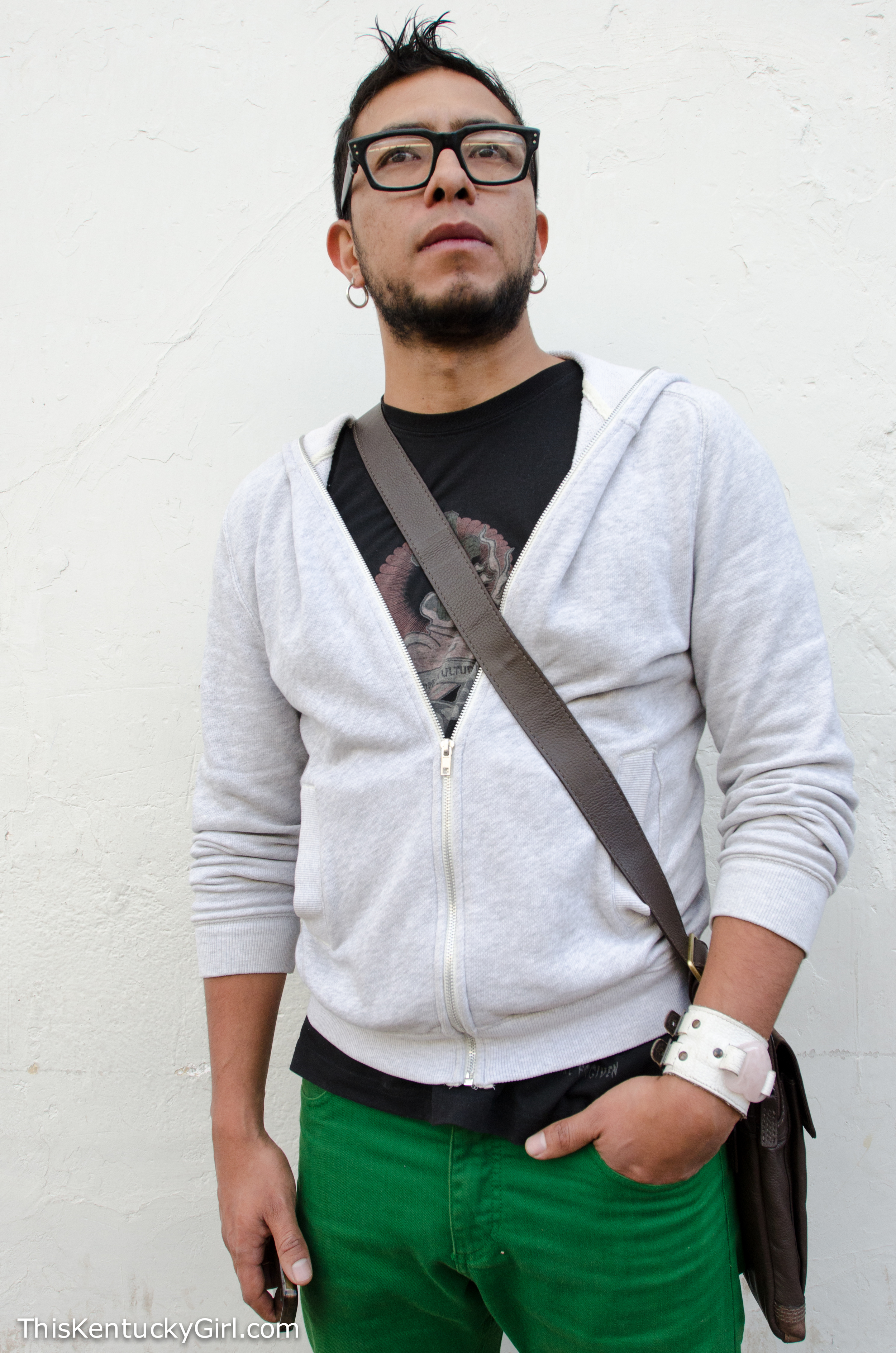
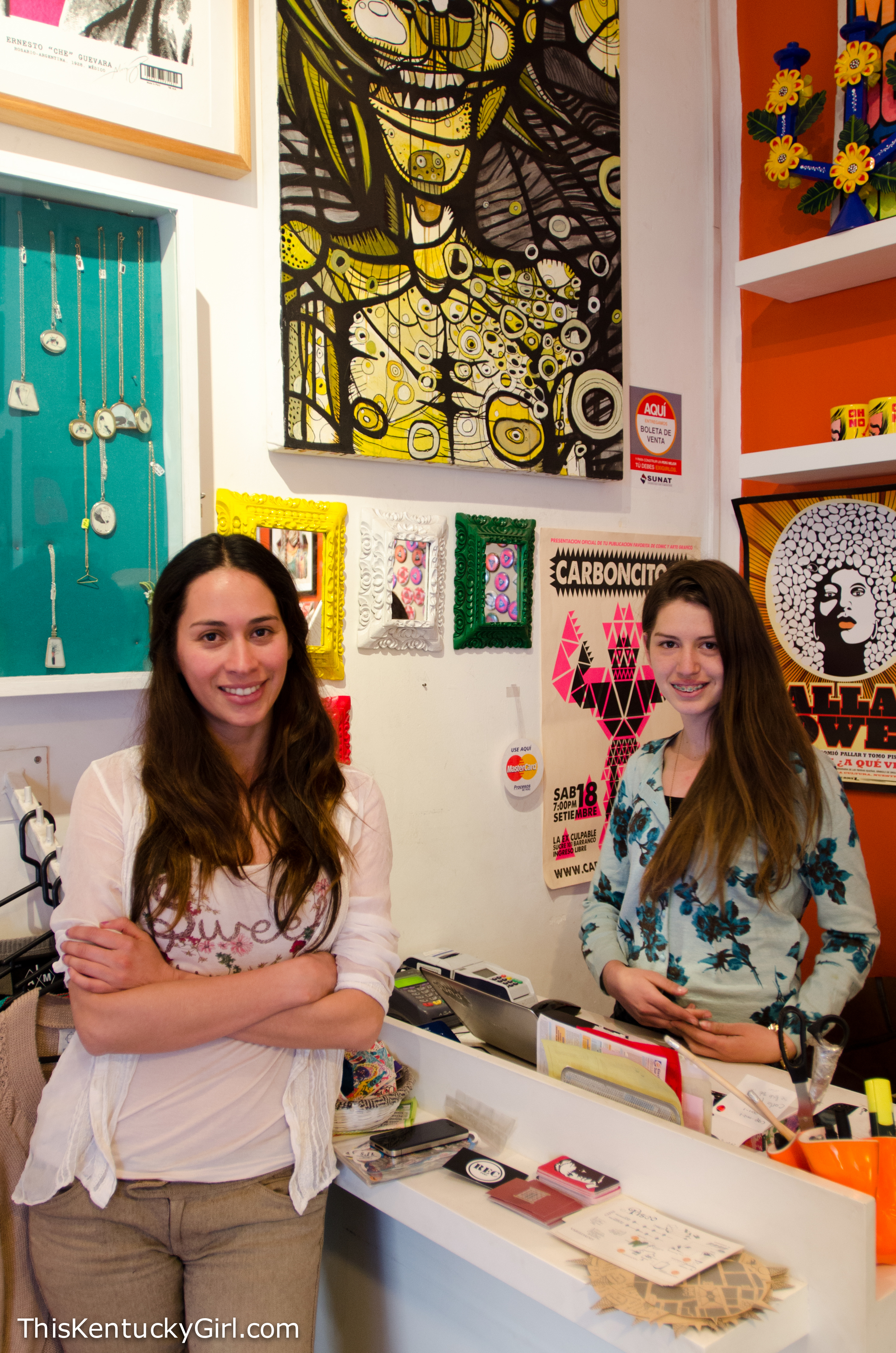
Practically everywhere else in Cusco (and from what I noticed in Peru) embraces traditional arts, especially the beautiful weaving so much so that it was almost a surprise to see a place with such modern and contemporary art on display. Berenice explained that Puna’s objective was to be a gallery and a store. While some stores (especially of this kind of variety- in my own opinion) look down on visitors wandering through simply to look, and not buy… Puna welcomes the chance to simply inform others- especially visitors to Peru of Peruvian art. I can’t emphasize enough how warm and friendly both Berenice and Stephanie were, and how grateful they seemed at my interest in Puna! I’m not the only one who thinks so highly if this little burst of contemporary culture in Cusco either. Trip Advisor has nothing but wonderful things to say, and to rate a “store” so highly has to say something, right? Right. I will say that most items fall outside of the typical backpacker budget, but if you can’t live without a piece, then the price doesn’t really matter. At least, that’s what I tell myself when I linger in front of an editioned prints with a price tag over $100.
Puna is modern art (and style) that meets traditional Peruvian culture. Currently 150-200 Peruvian artists have work on display and for sale in Puna. Traditional woven styles have been integrated into purses and even little clutches that I wanted so badly it hurt. Instead of wool llama ornaments, chic leather llama keychains were for sale. And the artwork, oh, the artwork. Where does one even begin? I’ll let the pictures -of beautiful pictures- speak for themselves.
Before I had met Jorge, I fell in love with another Peruvian artist’s work, Fito Espinosa. You can see some of his illustrations in the picture directly above. One print (not above) in particular plagued my mind for the next few days. I would have purchased it immediately had it not been for my backpacker budget. Andrew kept trying to talk me into getting it, and of course, the night I make up my mind to get it, we arrived to the store after it had closed. Good thing Andrew loves me so much because during our break from class the next (and our last) day, he ran across town to pick up the print for me! No easy feat in a city that is 11,200 ft above sea level.
Who is this Jorge (above) you might be wondering? Just another fantastic Peruvian artist who happened to stop by Puna to drop of some new work. It’s his work Berenice and I are talking about in the “day in a minute” above. And just like Berenice and Stephanie, he was so sweet and so talented that I felt so torn not taking some of his art home with me. (To make up for it, I’ve promised myself as soon as I’m gainfully employed again, I’ll be messaging Puna for several pieces of art, jewelry, a clutch or two…) Jorge is such a perfect example of a Peruvian contemporary artist who is absolutely unafraid of tapping into his cultural heritage yet making a statement with modern issues. He was dropping off some framed pieces of TEN, an installation of a grid of old Peruvian bank notes with different words painted over them. The individual pieces were striking, but seeing the photo of the installation on his website makes me want several pieces to have a small grid of my own!
You might hear him say “It’s my lucky day!” at the end of the “day in a minute” but I couldn’t express enough to him, Berenice, or Stephanie that it was my lucky day to be able to meet and talk to them all!
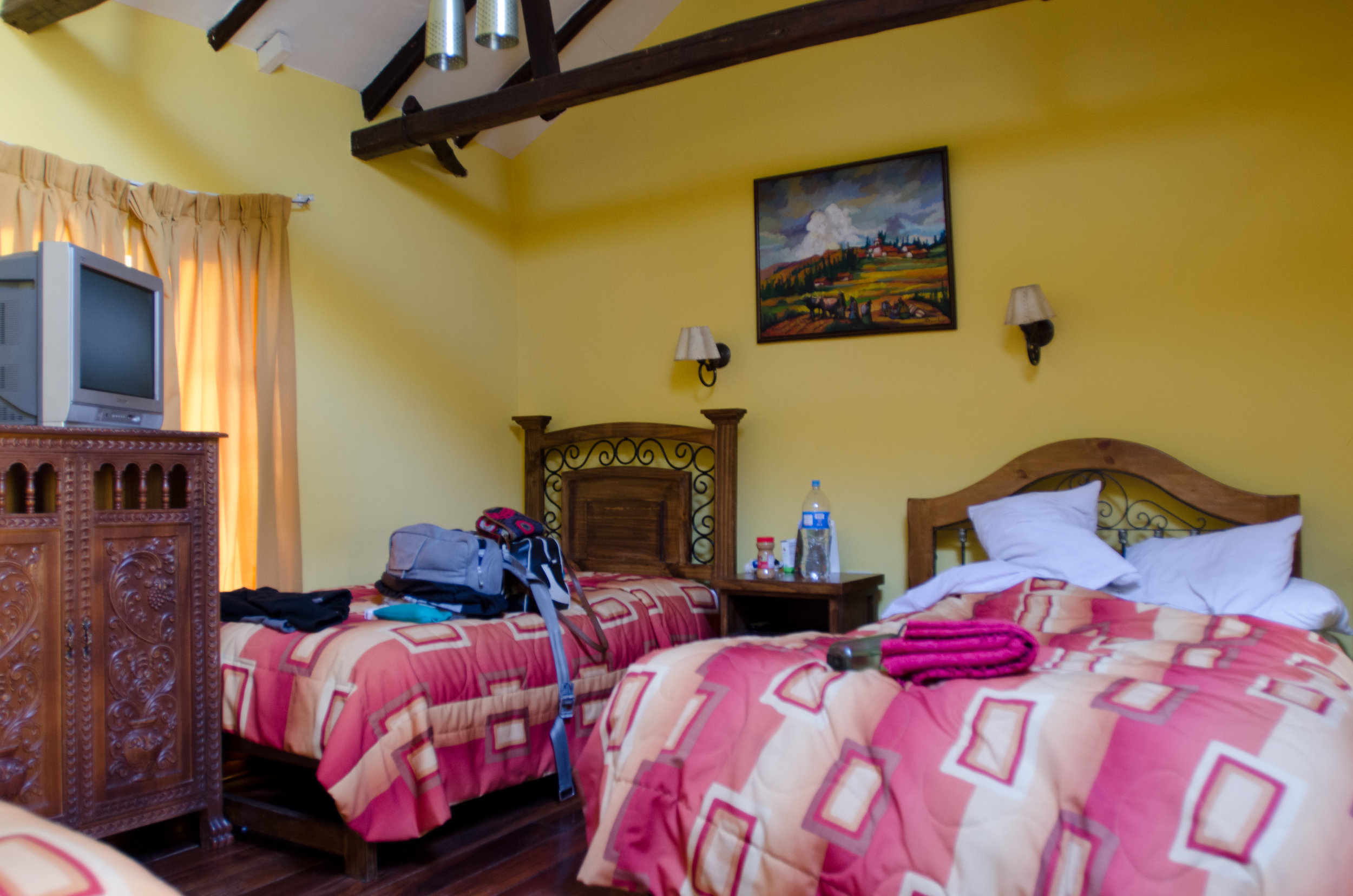
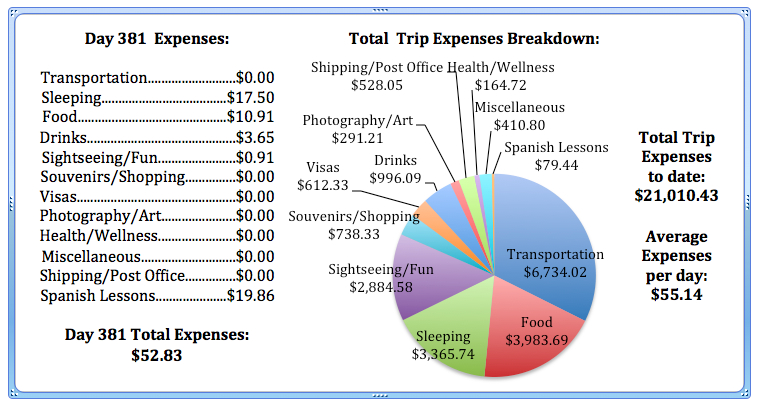
Day 380: San Blas Artisans
The San Blas Artisans surround the Church of San Blas, creating a neighborhood that is also known as the District of the Artists. These artists, and the families of these artists are Olave, Merida, Aguayo, Aguilar, Alvarez, Segovia, Saloma, and I’m sure there are a few more. We were told if a door was open, or in some cases unlocked, we were free to walk in and look at the art. We checked out Merida’s work by simply wandering in what felt like a private courtyard. Later, we were able to check out Mendivil’s long-neck pieces by sneaking down a long covered corridor leading to a couple of courtyards, some artisans working, a museum, and even a shop to take a few pieces home if you were interested.
Edilberto Mérida’s daughter actually greeted us when we peeked our heads into the courtyard wondering what there was to see. She warmly ushered us in and grabbed a set of keys to open up a museum/show room. The huge statue (above) in the courtyard, is a perfect example of his work. All of the ceramic pieces were incredibly expressive and included a lot of religious work- Jesus on the cross, and various nativity scenes seemed to be his favorites. I couldn’t get over how lovely his daughter was, although when she explained how easy it would be to ship any items home I became a little more understanding. Regardless, the museum/showroom entrance was (is) free with the minor exception of a small donation that we were told would go to a local charity. If you’re interested in visiting, Mérida’s work can be found at Carmen Alto 133, San Blas, Cusco (Phone: 084/221-714)
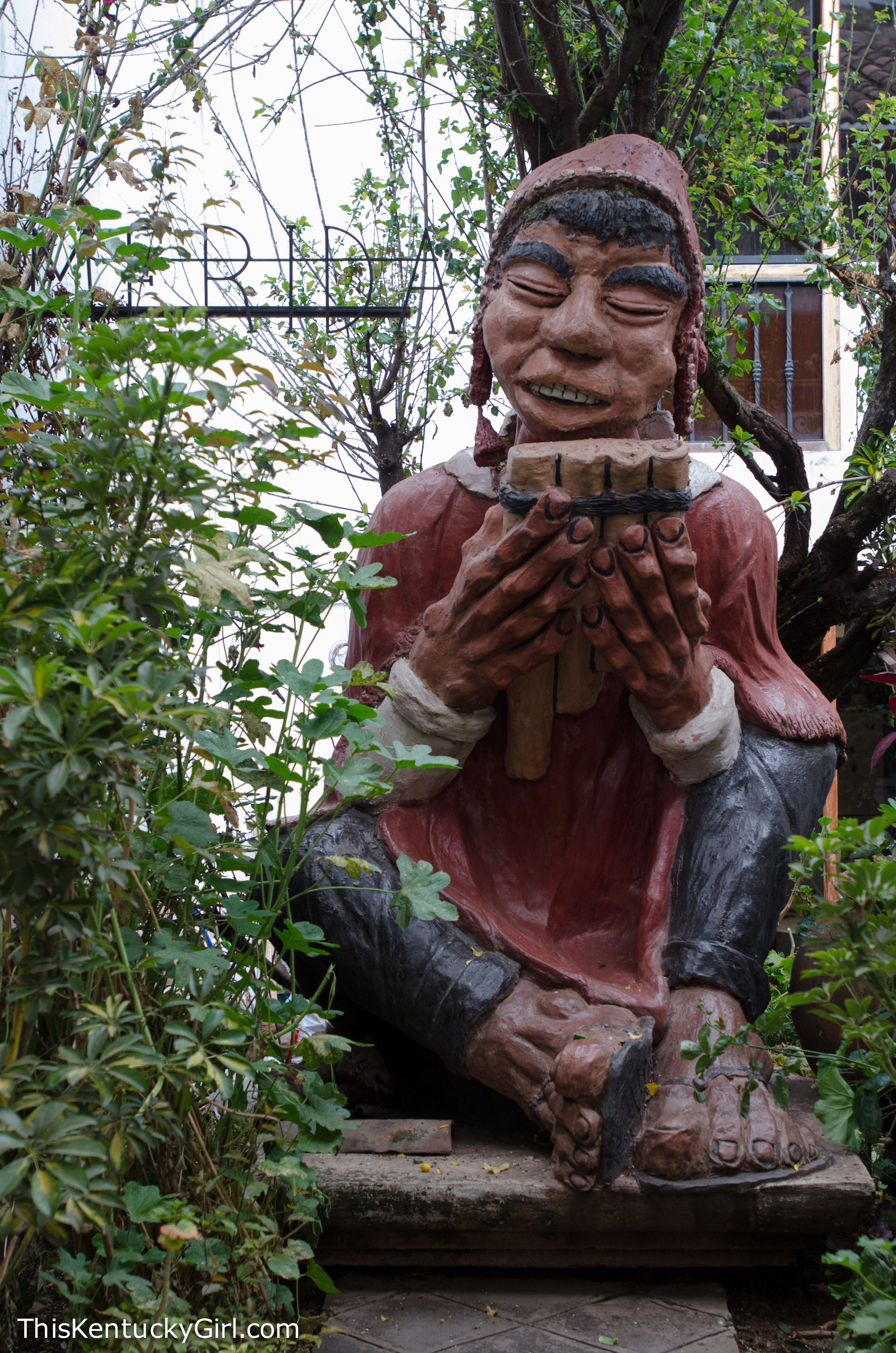
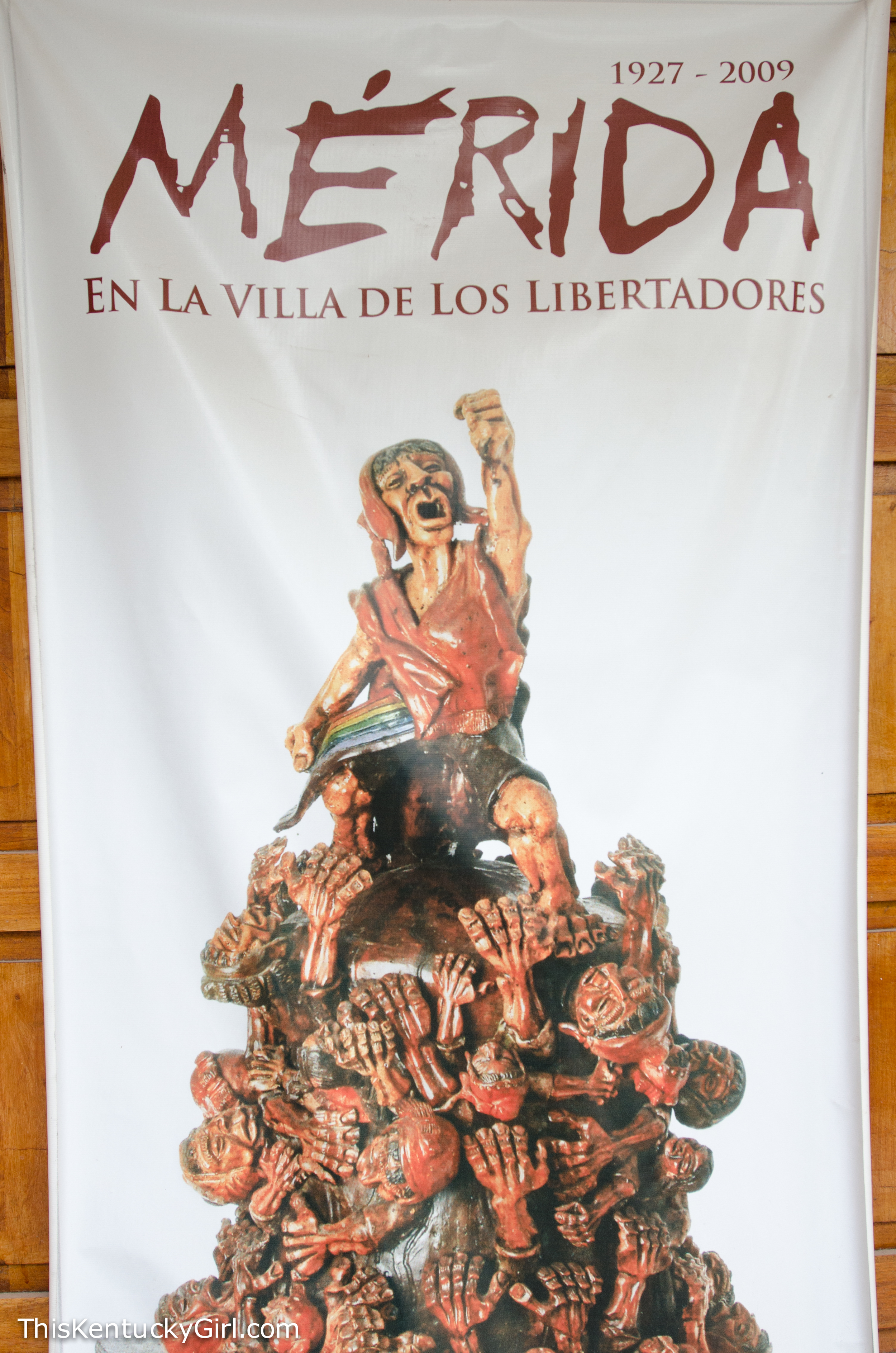
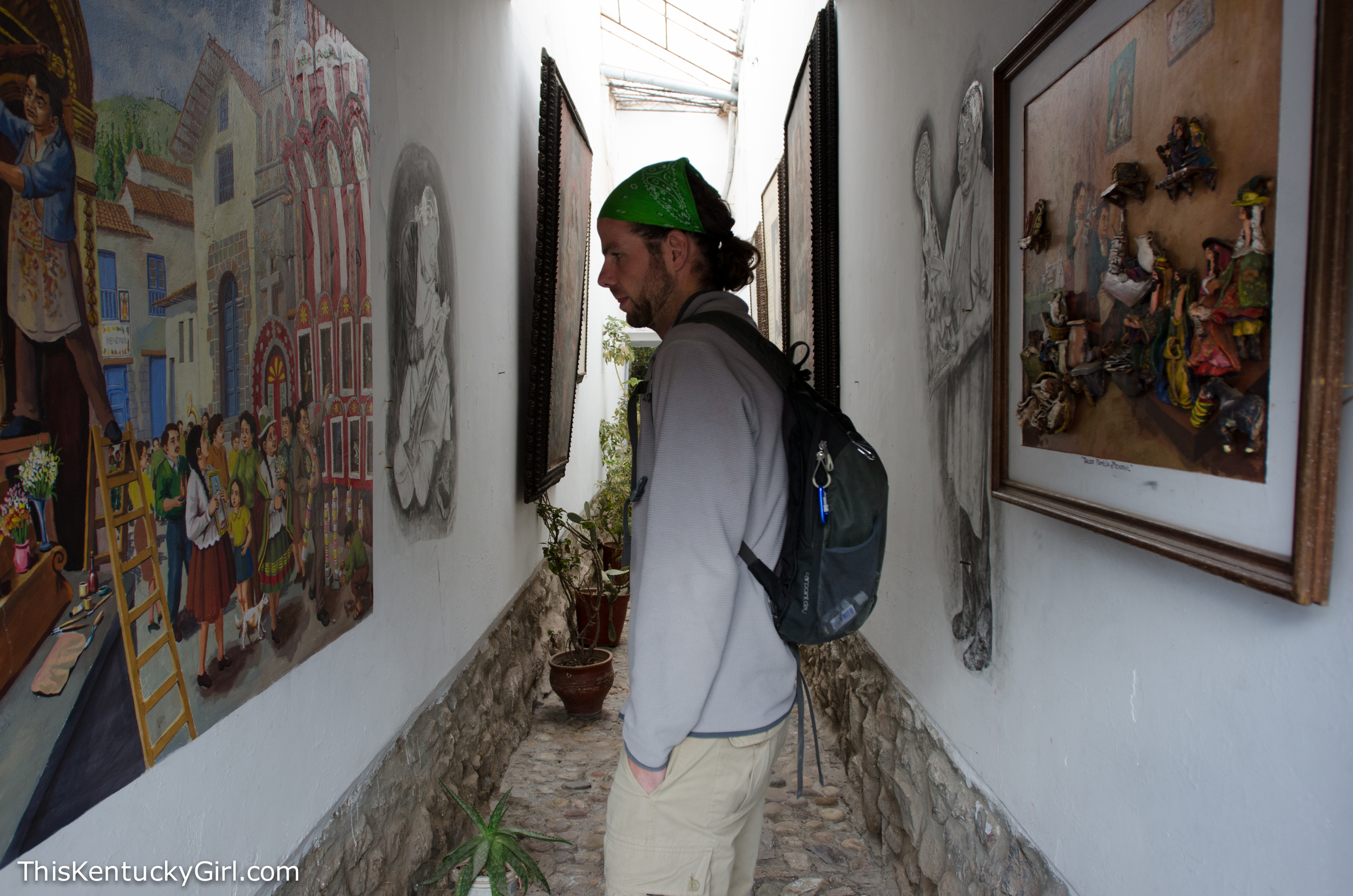
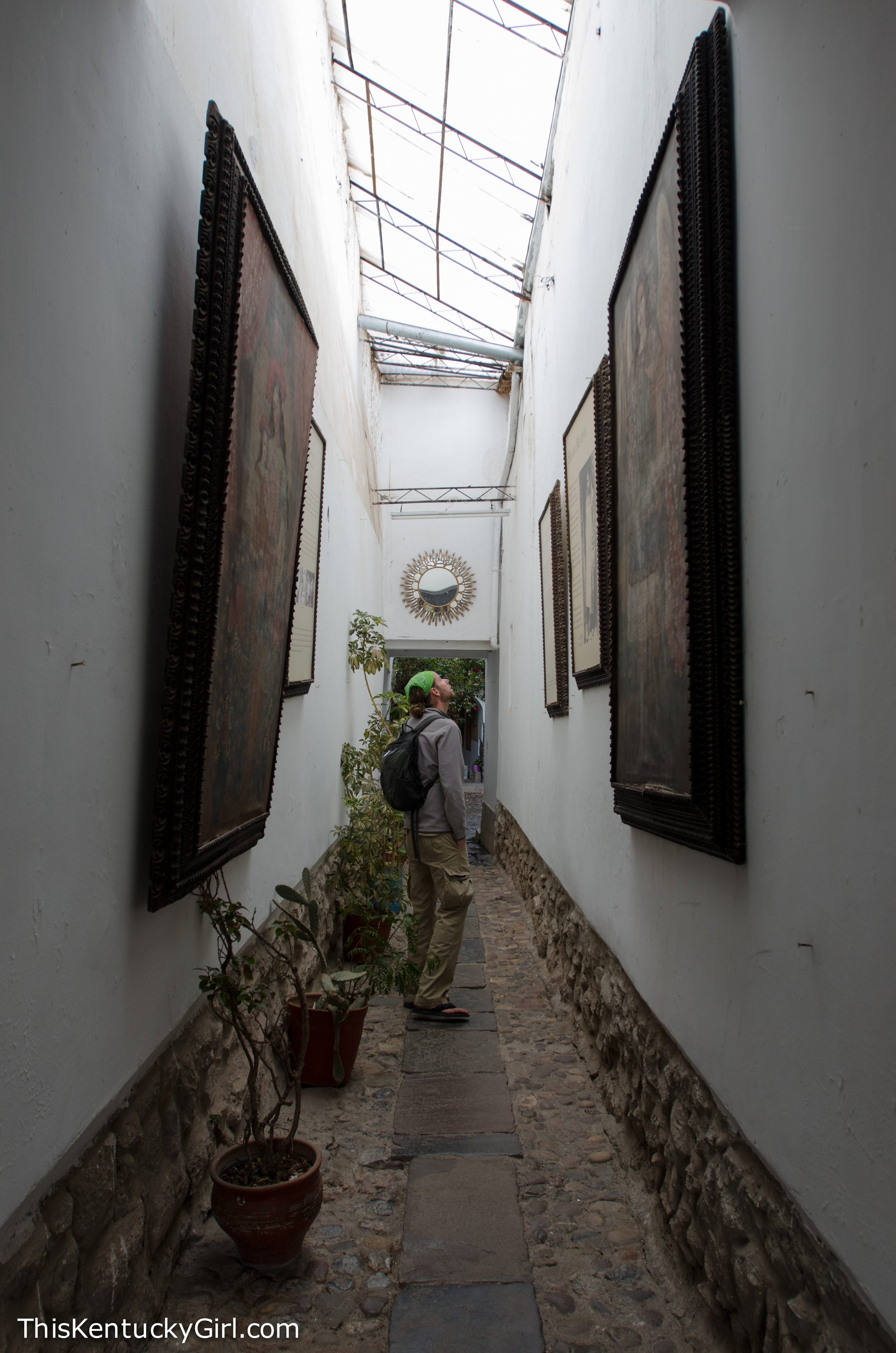
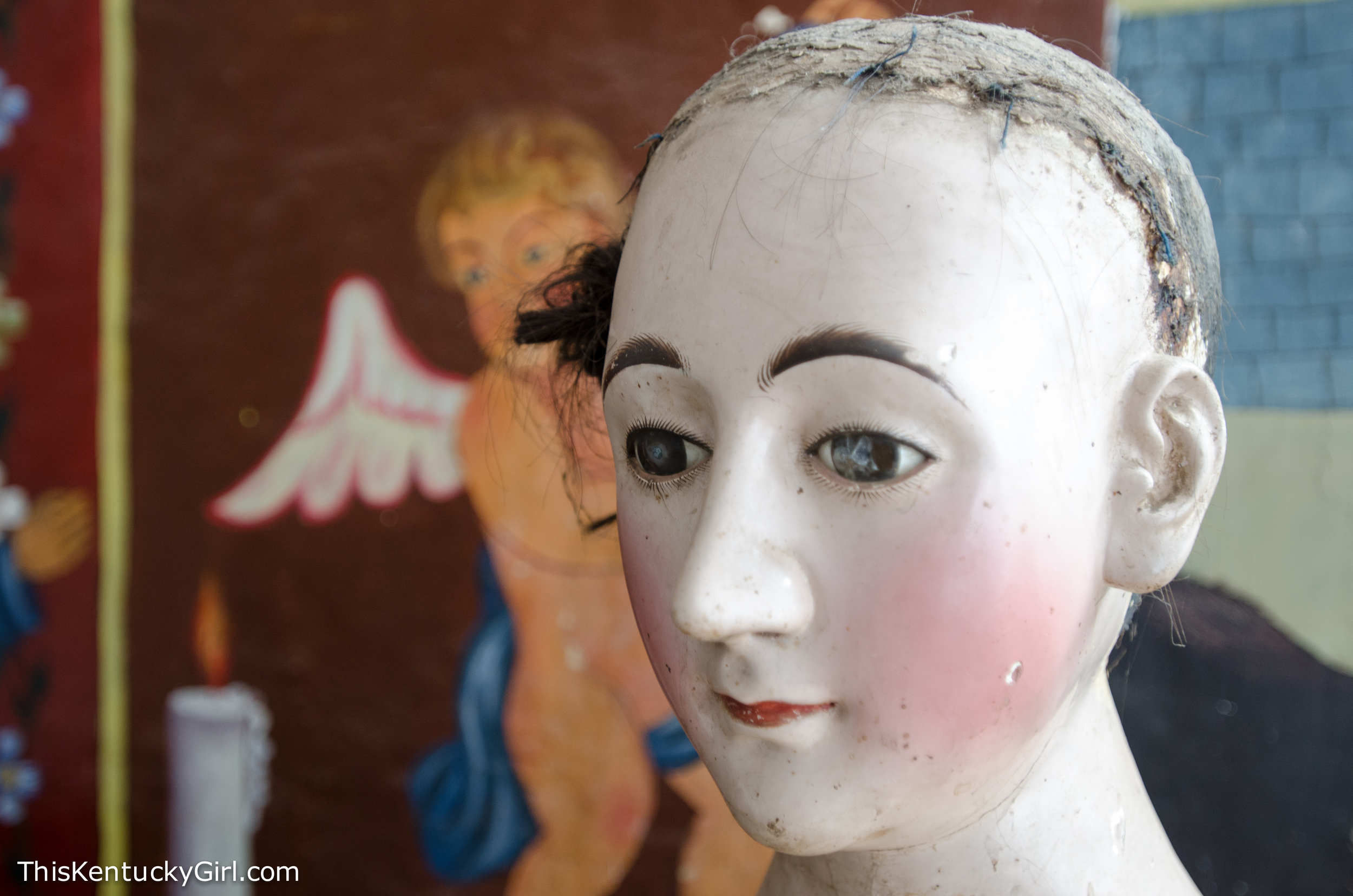
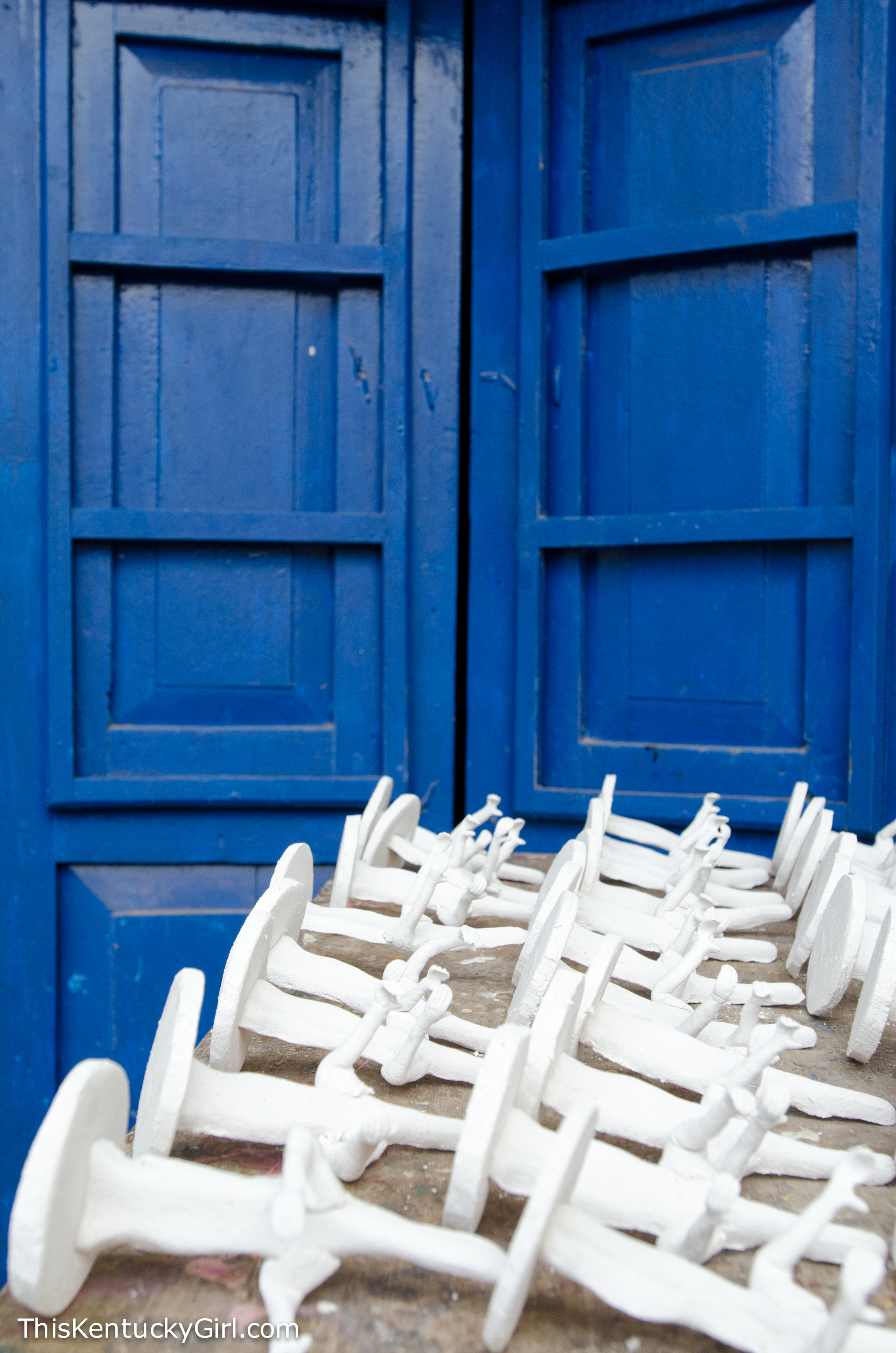
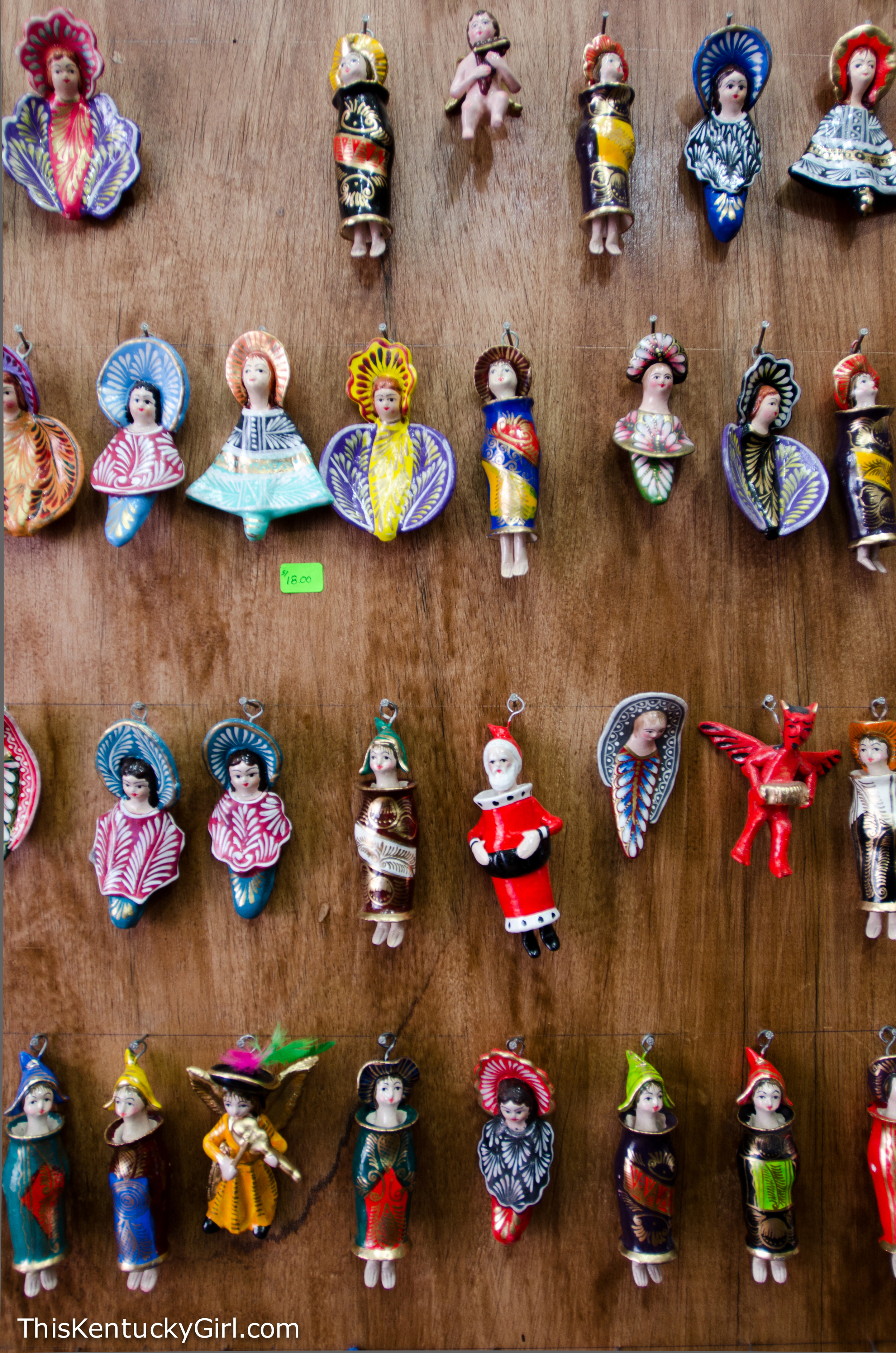
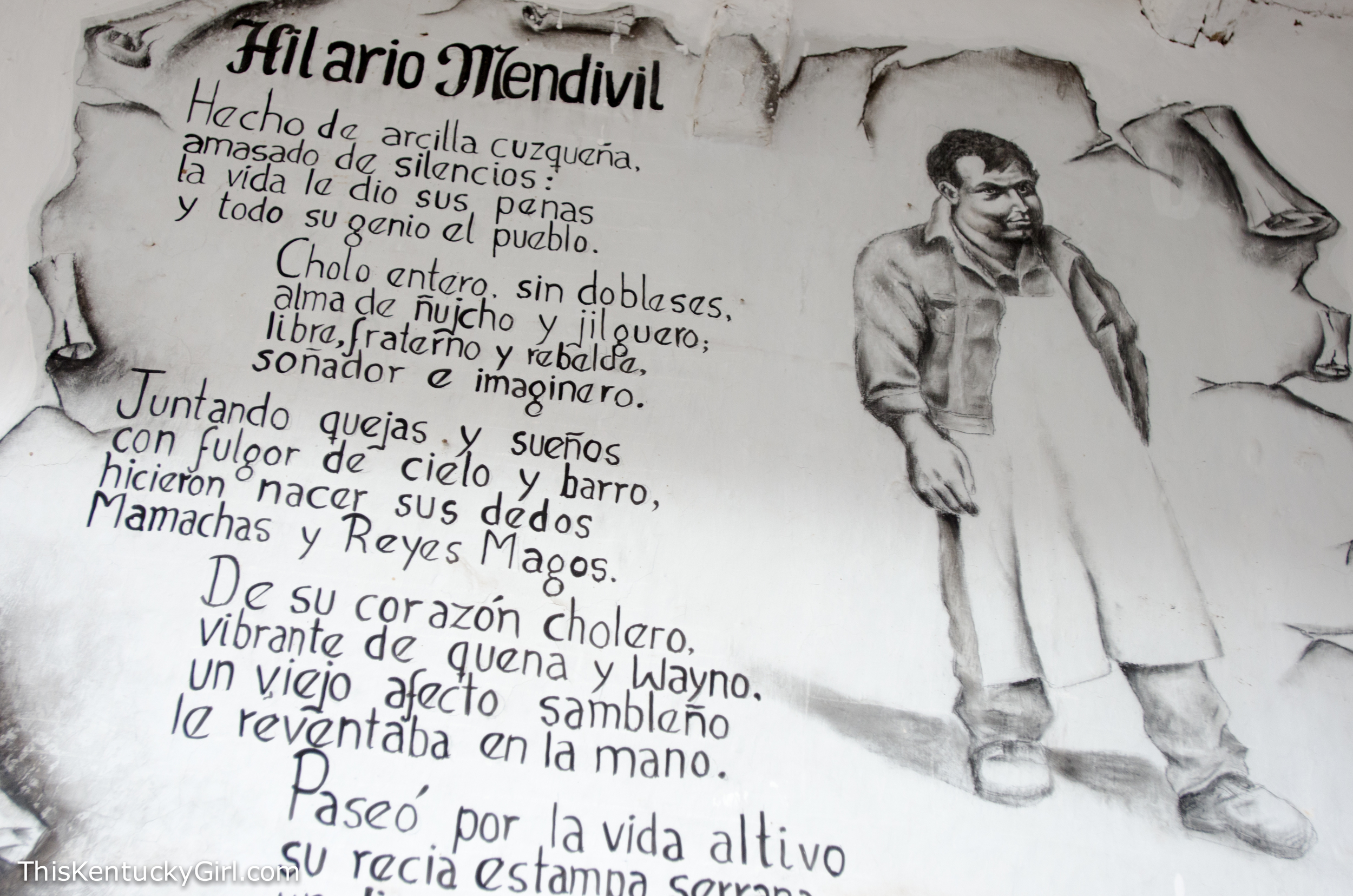
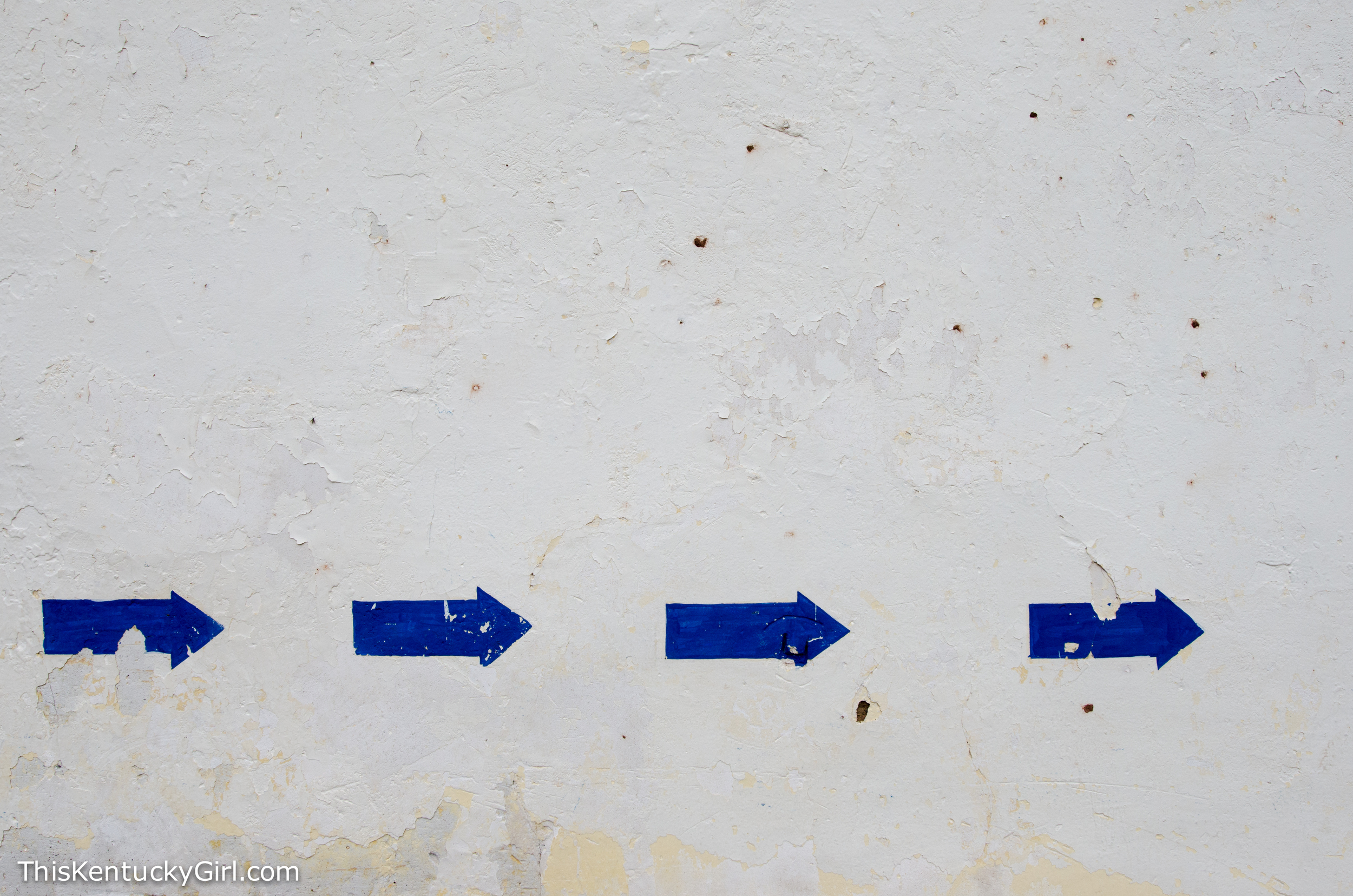
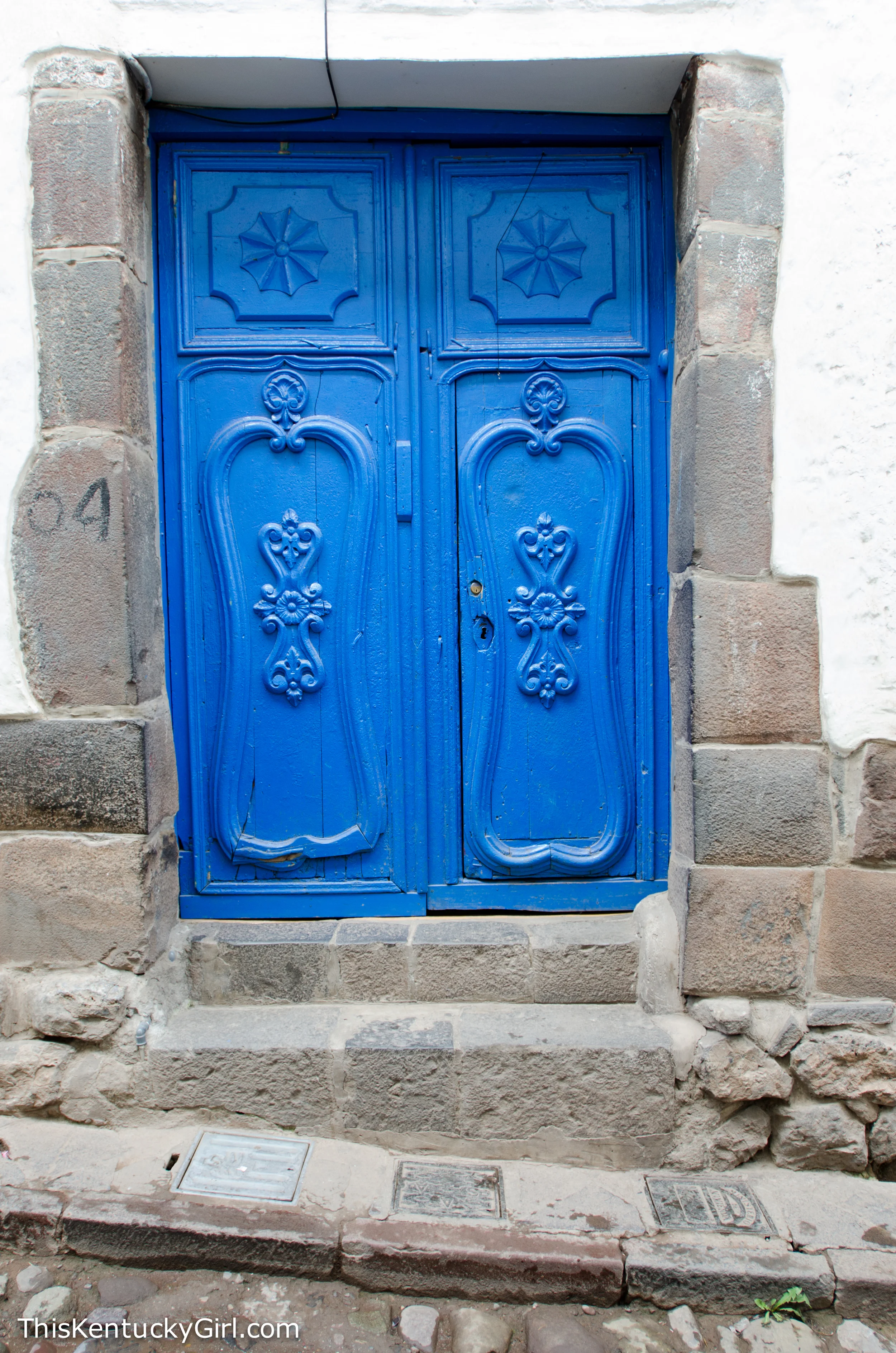
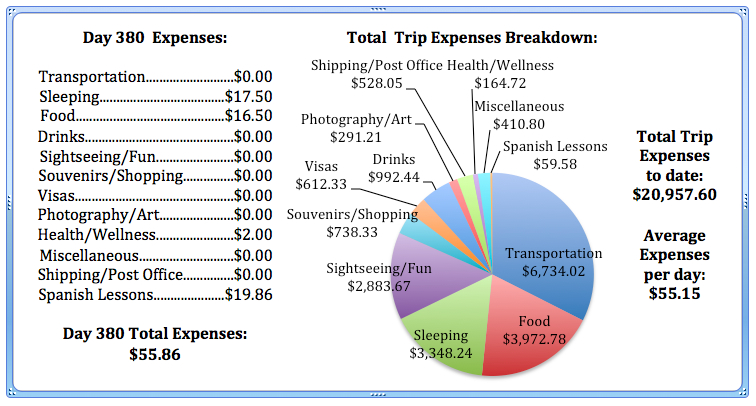
Hilario Mendívil is arguably the most famous of the San Blas Artisans. I found his long-neck sculptures really interesting especially given that the long-neck tribes (Kayan Lahwi) are typically from/in Thailand and Burma, not exactly close to Peru… I couldn’t figure out what inspired his long-neck sculptures until I researched it online and found a great description on Fodor’s here. According to the description, Legend has it that Mendívil saw llamas parading in the Corpus Christi procession as a child and later infused this image into his religious art, depicting all his figures with long, llama-like necks.
There’s a small gallery/museum and a shop selling Mendívil-style work- I’m guessing his descendants were the ones working in the adjacent studio.
If you’re interested in visiting, Mendívil’s work can be found at Plazoleta San Blas 634,San Blas, Cusco (Phone: 084/240-527)
Day 379: La Casa Concha + Inca Museum
Neither museum lets you take photographs inside. So, there went my plans for today’s minute. Luckily there are what feels like a bajillion women and young girls milling about Cusco asking if you want to buy something, or get your picture taken with them. Andrew and I were sitting in the Plaza of San Blas soaking up the sun after Español, when this woman decided to join us. She tied her portable loom (not womb, like I almost say in the video) to our bench, sat down, and went to work weaving a new belt. She had a bag full of them she was trying to sell. We humored her, watched for a little while, and gave her a little tip before we left for La Casa Concha, or more informally; The Machu Picchu Museum.
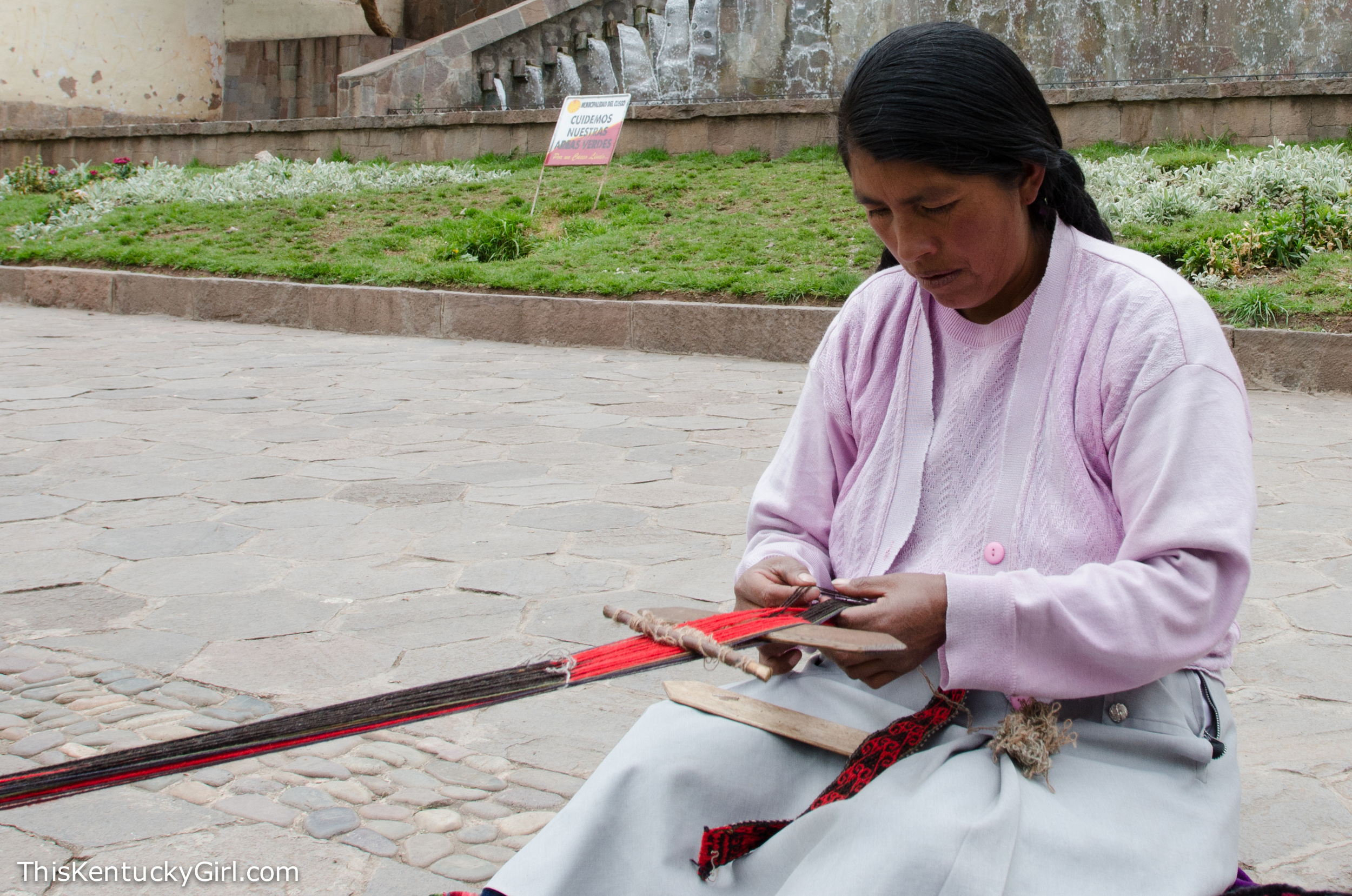
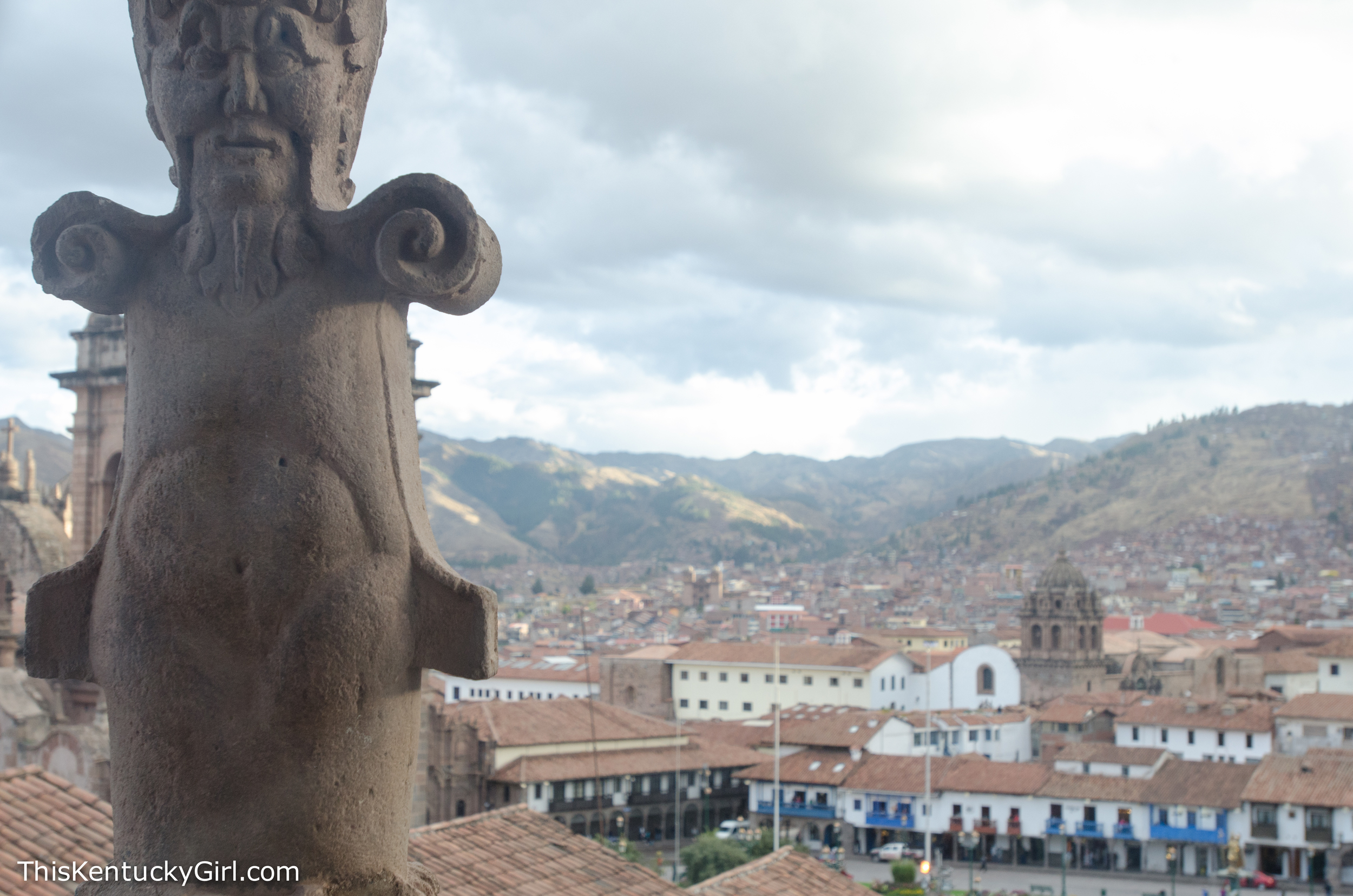
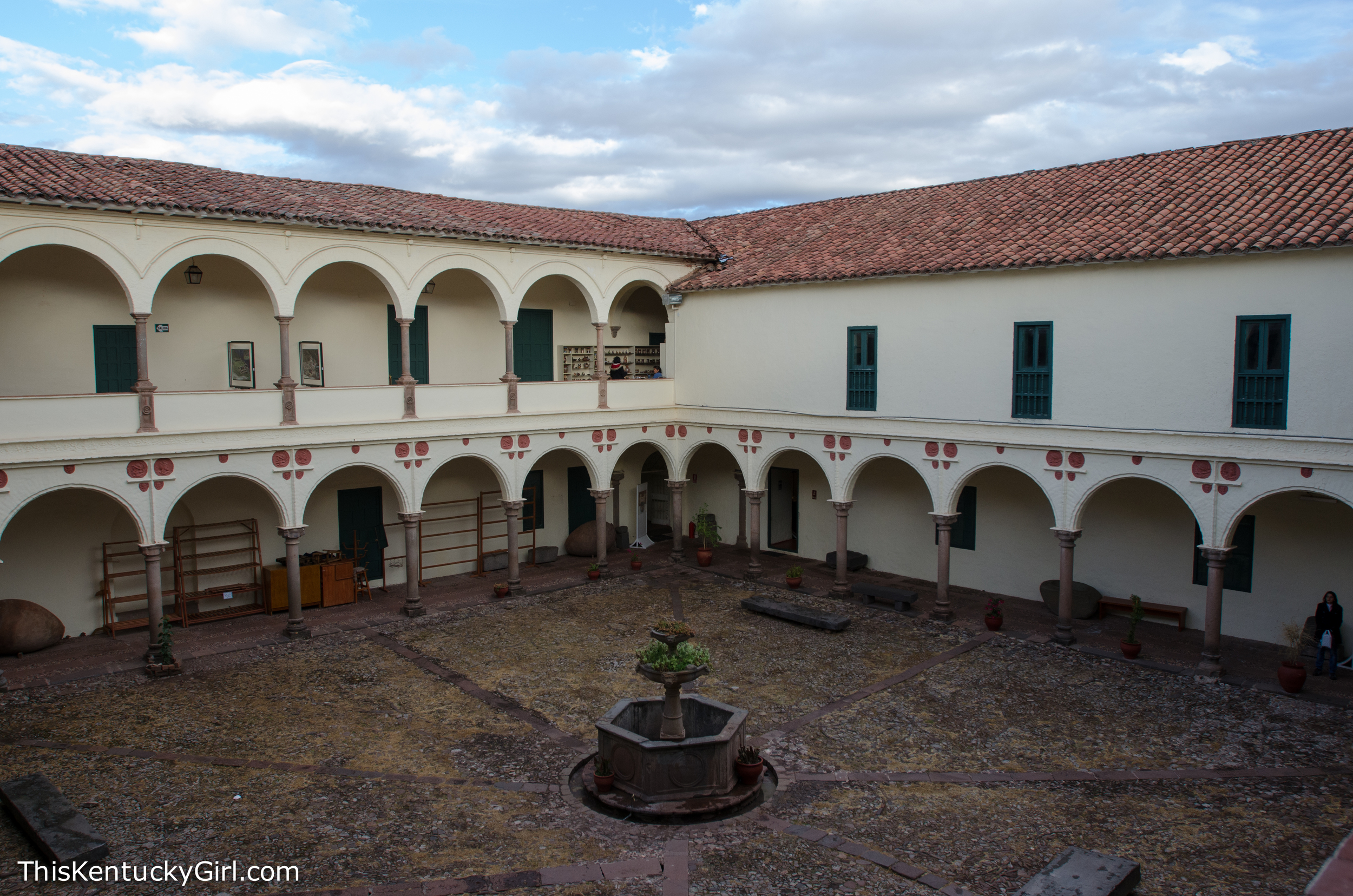
We actually went to La Casa Concha and the Inca Museum on two different afternoons. We heard the Inca Museum wasn’t great, so we decided to check out La Casa Concha first, mostly after reading this Peru Travel post about the museum dedicated to Machu Picchu raving about how much better it was than most museums in Peru. It has a more modern feel to it, thanks to the life-like dioramas, videos, and English descriptions. However, despite having ten exhibition rooms, the rooms are often bare and while the museum suggests two hours for your visit, I think Andrew and I were in and out in an hour tops. It was nice, but I cannot stress enough how bare we thought it was and definitely not worth the entry fee.
Another afternoon, we decided we may as well check out the Inca Museum. When in Cusco… This museum was much bigger, had a lot more to offer than ten half-filled exhibition rooms… but it’s in desperate need of some updating. I wish these two museums had combined forces to make one really great museum. Neither is better than the other… they are just different. La Casa Concha is more modern however, offers less. The Inca Museum is quite large and has a LOT to offer, but it’s poorly organized, poorly displayed, and at times even dusty! It kinda felt like a school science fair with an Inca theme. Some displays were great, you could tell the smartest kid put forth some effort… But others weren’t so great and I felt sorry that such an interesting culture was being displayed so poorly. I almost wished I would have spent my money on a really great Inca and Machu Picchu book instead of entry to the two museums. If only I had spare room in my bag!
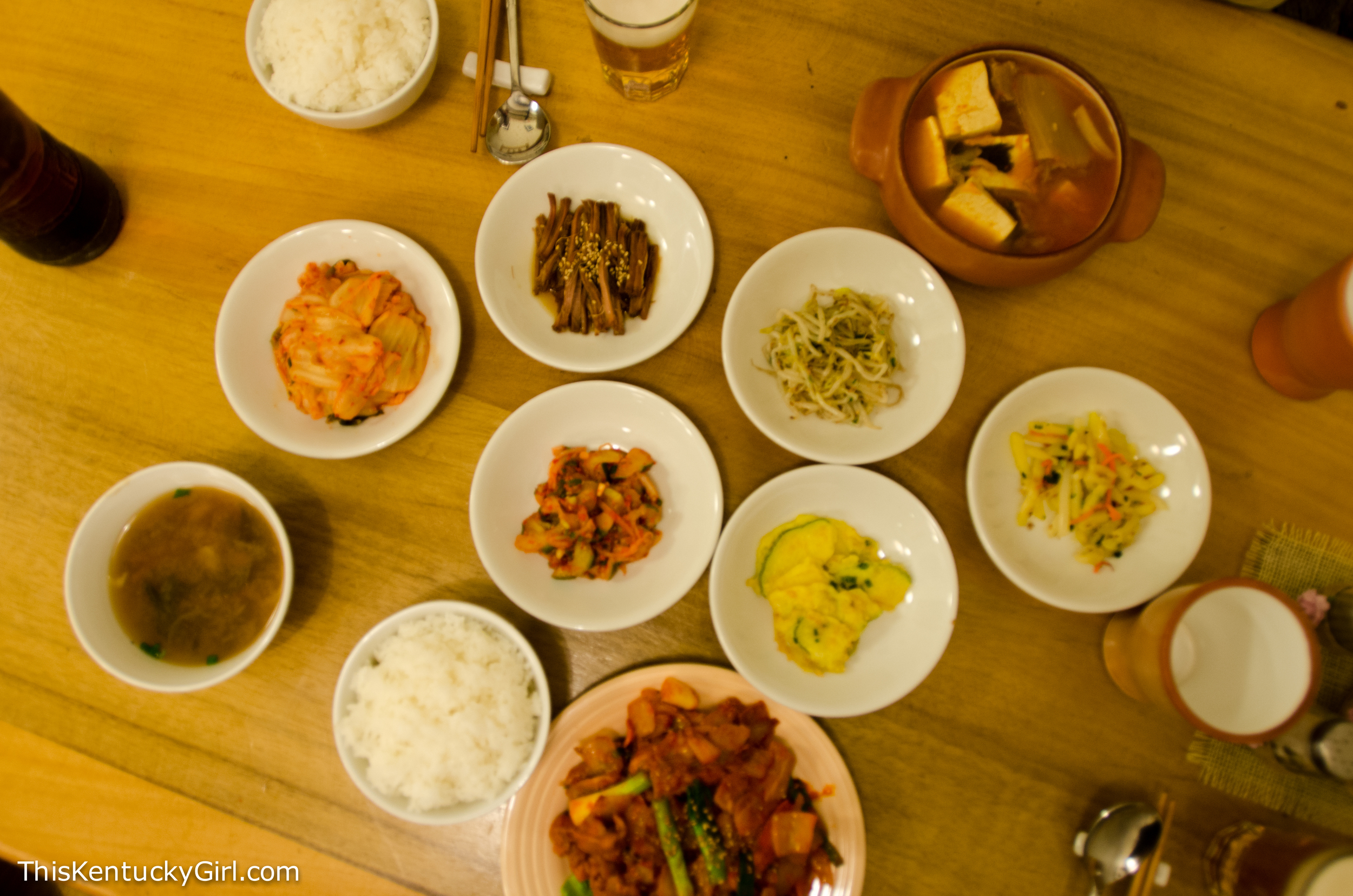
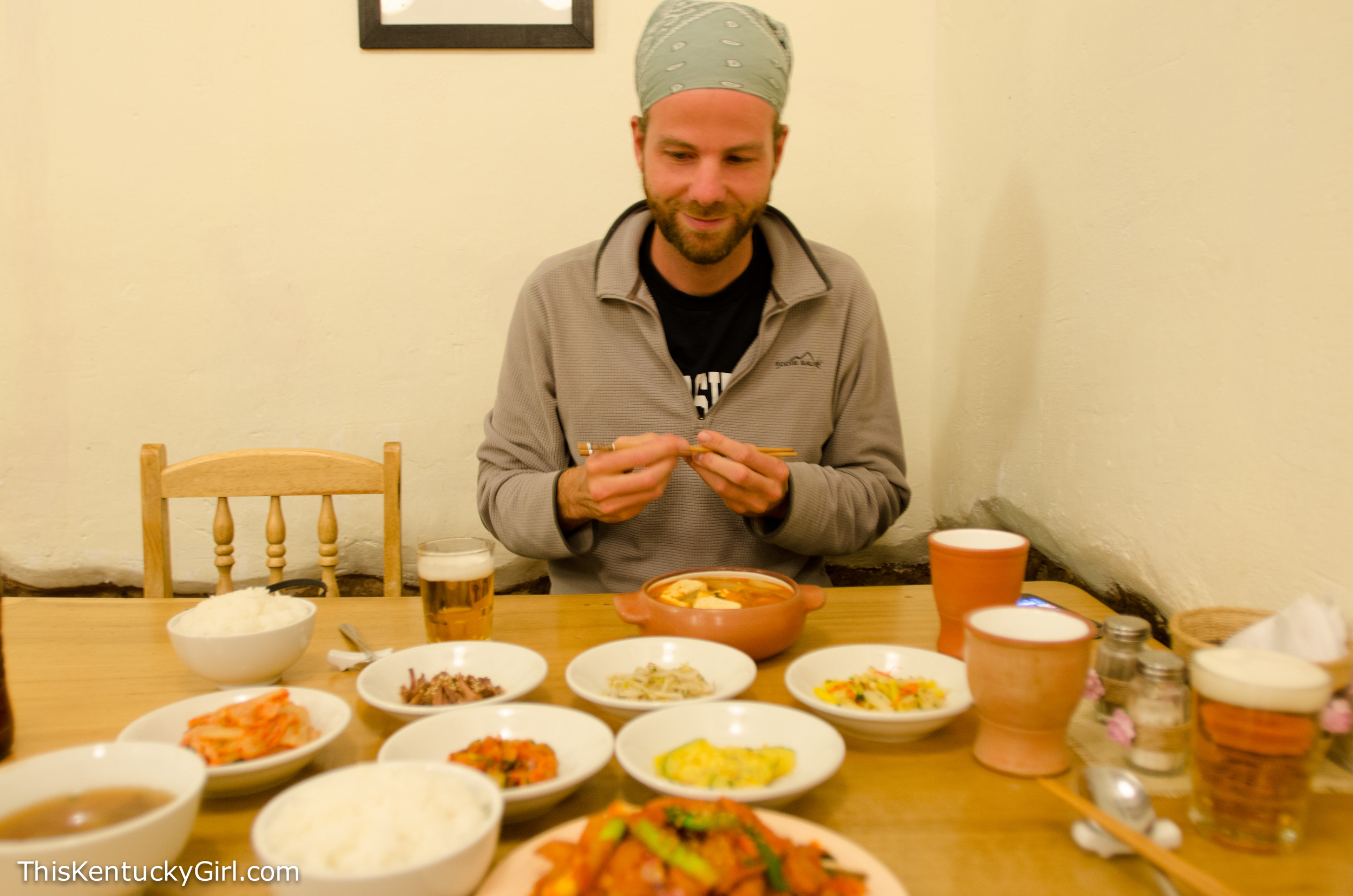
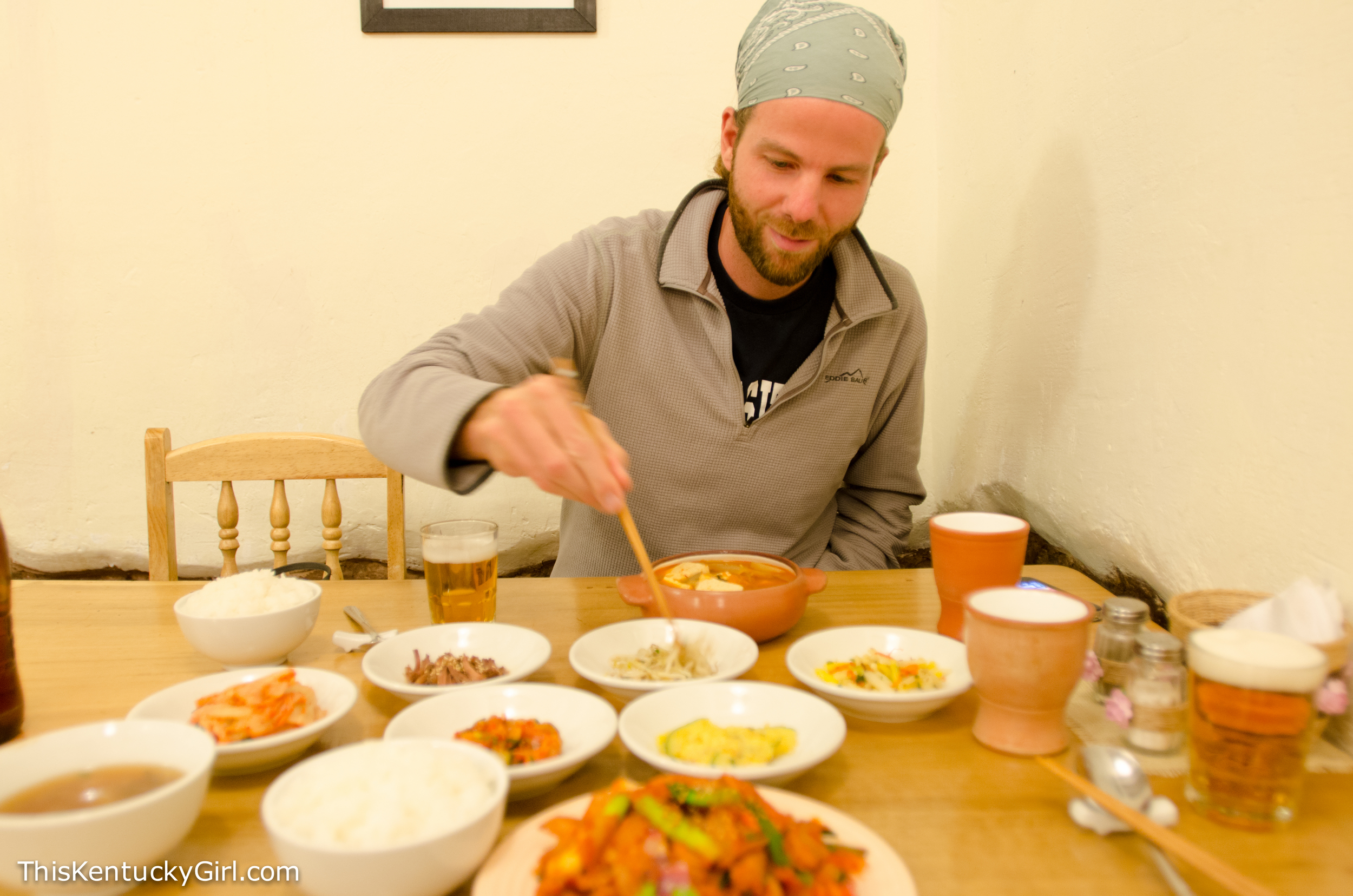
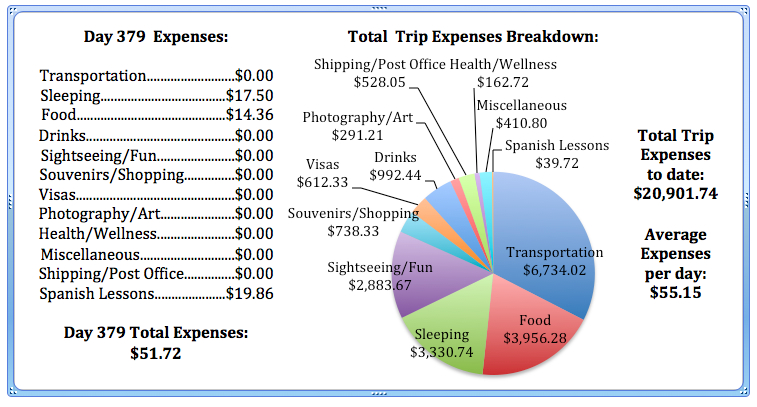
At least our dinner more than made up for the lackluster museum visits this week. Yep, in case you can’t tell, that’s not Peruvian you’re looking down on… Andrew found a Korean restaurant for us to try! And it was spectacular. By far the best Korean food we’ve had on this trip. If you’re in Cusco, you have to take a night off of eating ceviche (I know, it’s a hard thing to do) and try Sa Rang Che Restaurant. My mouth was blissfully burning just like it would in Seoul. Before we left, the owner came out to talk to us about a problem with the credit card machine. She was Korean, speaking to us in Spanish. We in turn, told her we understood, and wished her a Happy Chuseok, in Korean. Then there was a flurry of Spanish, Korean, and even a little bit of English. We walked out, and Andrew and I exchanged a look that somehow summed up how incredibly strange it was to be in Peru, speaking Spanish and Korean simultaneously.
Day 378: Studying Spanish in Cusco
Oh how I wasn’t looking forward to climbing this steep hill (in a high altitude city) to study Spanish everyday… But, we decided San Blas Spanish School was our best bet for our first round of intensive Spanish lessons, even if it did mean a hike across town before school started. I thought it might be fun for today’s “day in a minute” to film the walk! Also I don’t yet know how to say “I have a blog and I make a short video for each day of our trip around the world! Want to be in it?!” en español. I didn’t think a teacher would be so inclined for some video action first thing on a Monday morning either. Despite the rain, we made it to class on time and found ourselves in separate cozy classrooms (given that I’m a beginner and Andrew is intermediate) for four hours of the morning. While Andrew had four other students in his class, I only had one classmate and a very sweet Peruvian woman for a teacher! I usually enjoy language lessons, but today’s lesson flew by faster than usual (especially given that it was four hours long)! When classes were over for the day, I was really satisfied and looking forward to the week of learning some more español!
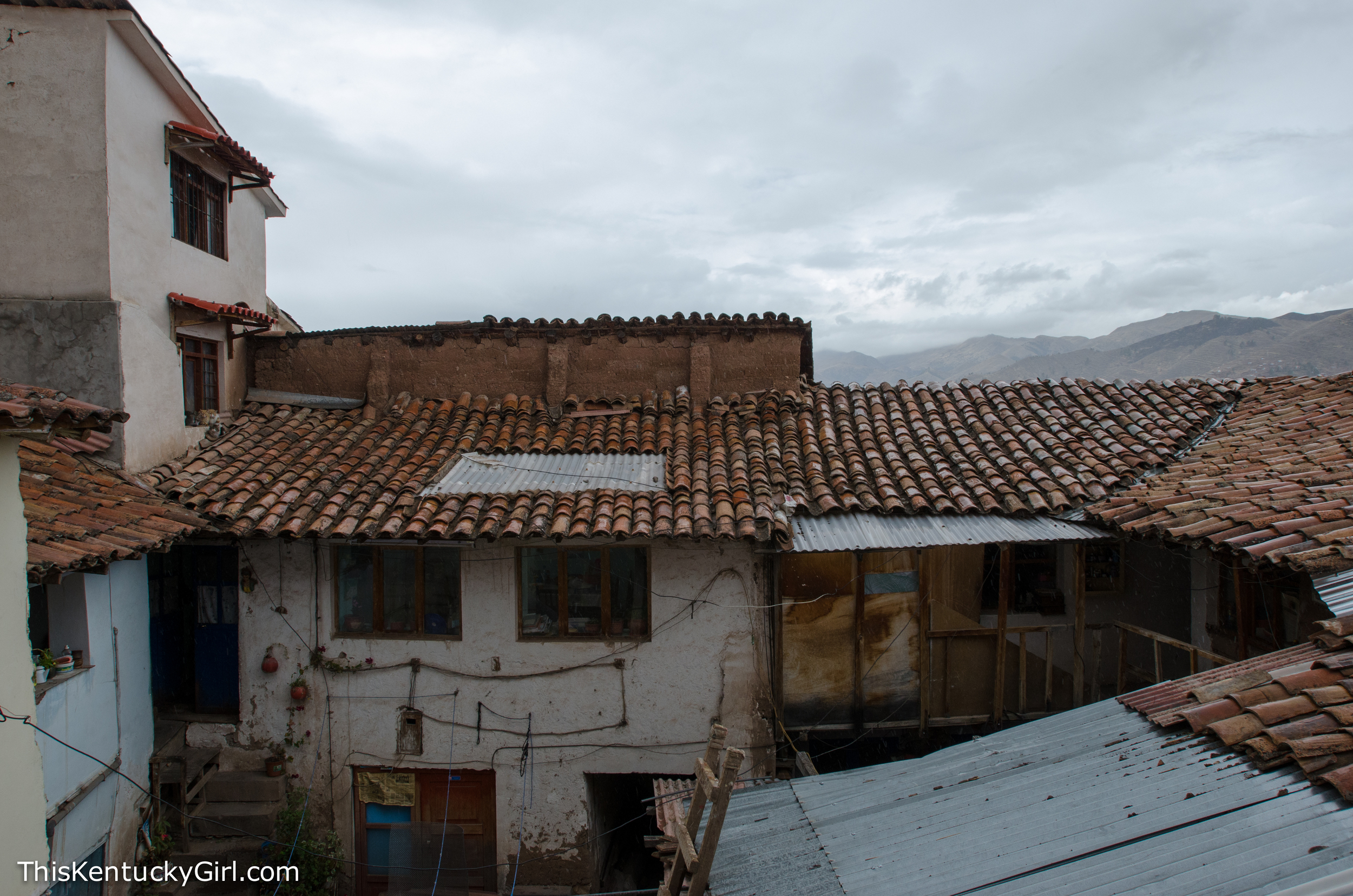
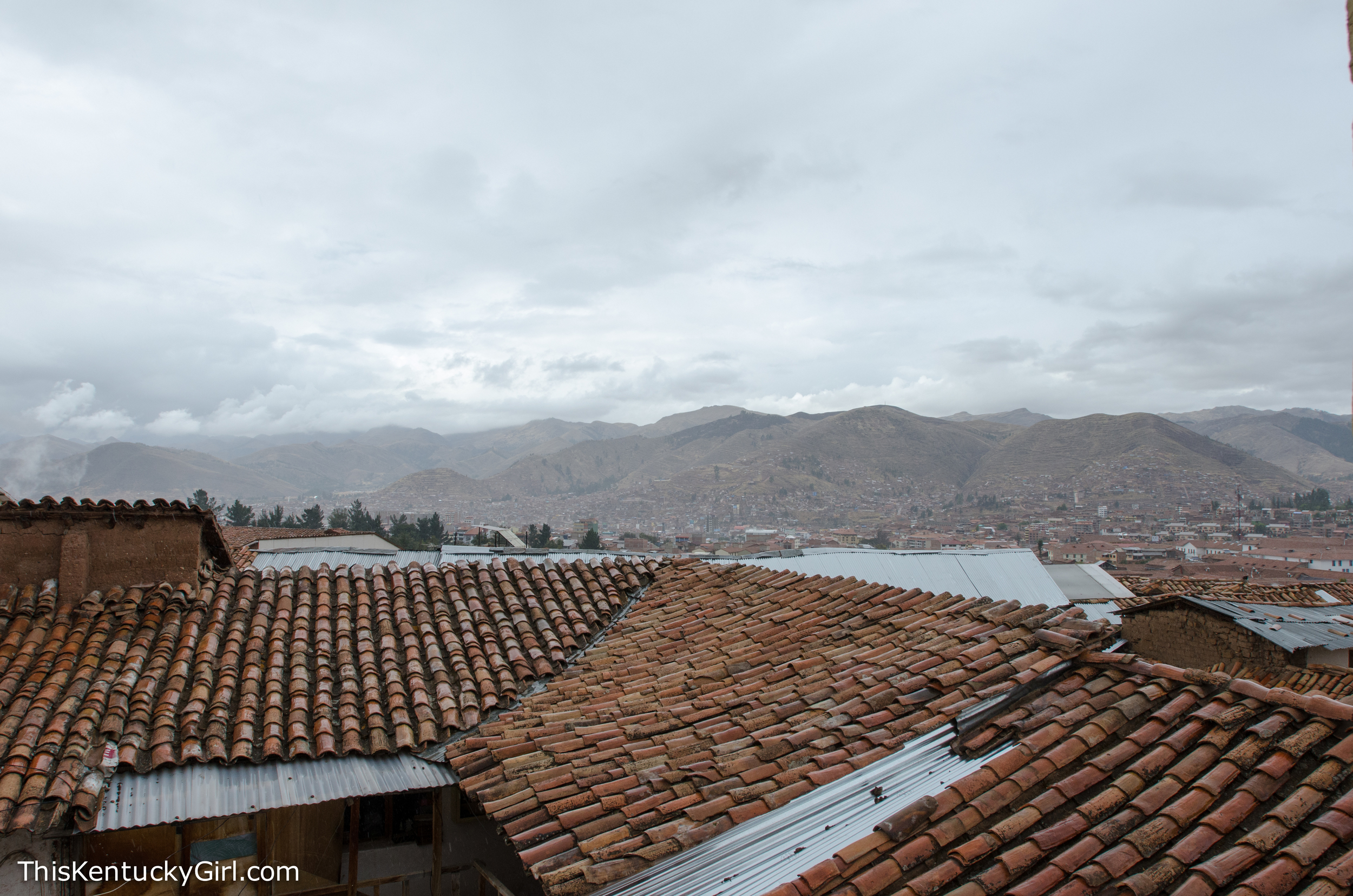
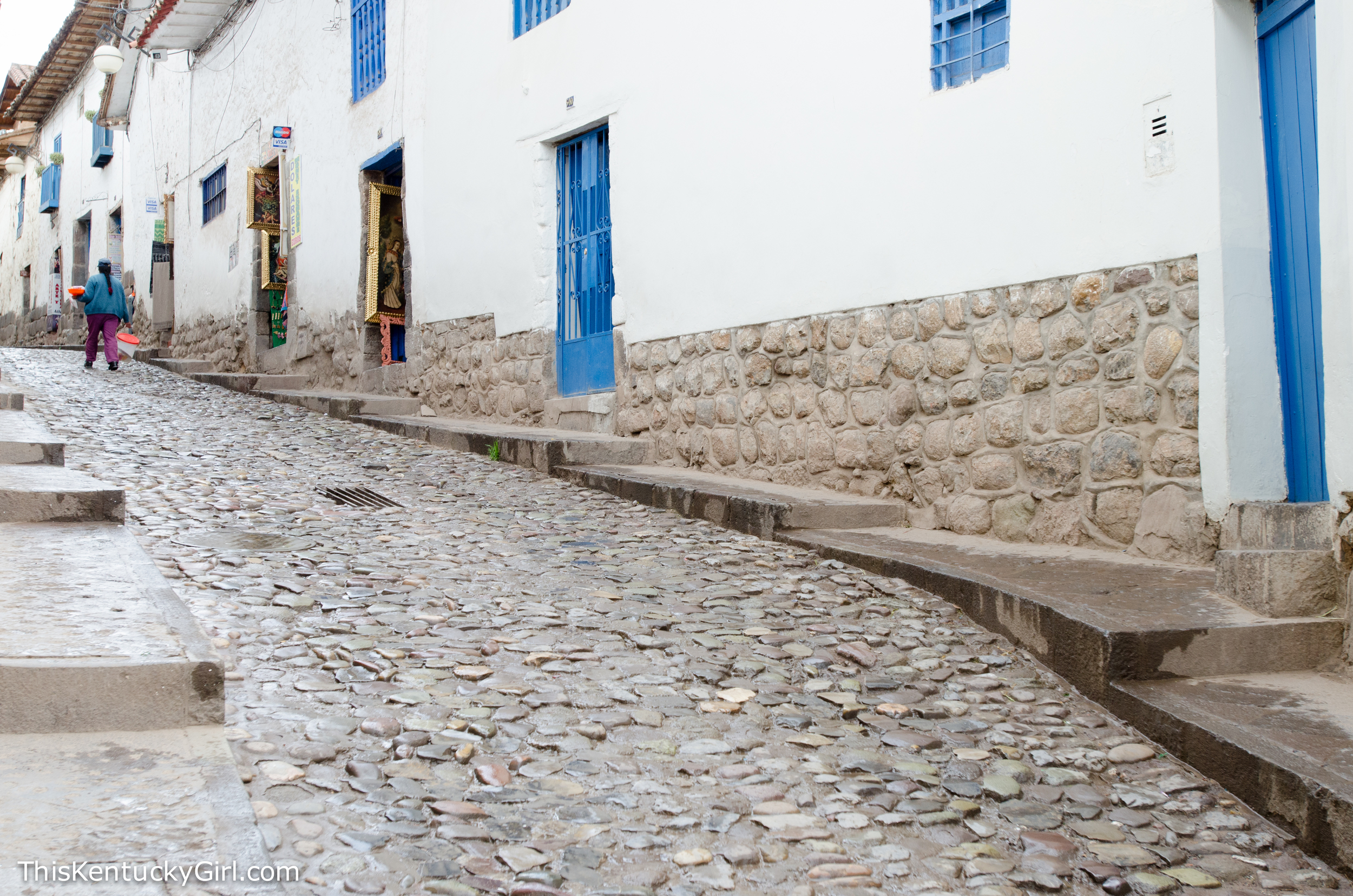
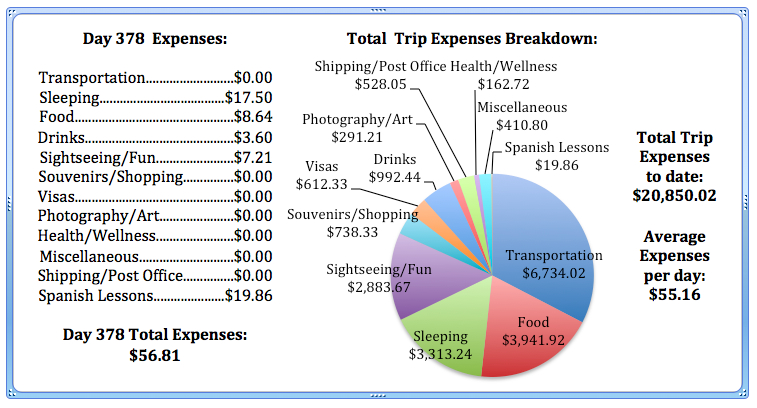
Day 377: A self-guided walking tour of Cusco
Traveling around the world is oftentimes being in a constant state of flexibility. Again, we were going to finish the Cusco Free Walking Tour today, until we woke up and remembered there isn’t a tour on Sundays. So, Andrew found a self-guided walking tour that we could do on our own instead. It wasn’t the greatest, nor the most informative, and it covered pretty much everything we already saw on our own and/or heard about on the portion of the free walking tour we already participated in… but… it gave us something to do, and we were thoroughly entertained by our attempted pronunciation of the many Incan names.
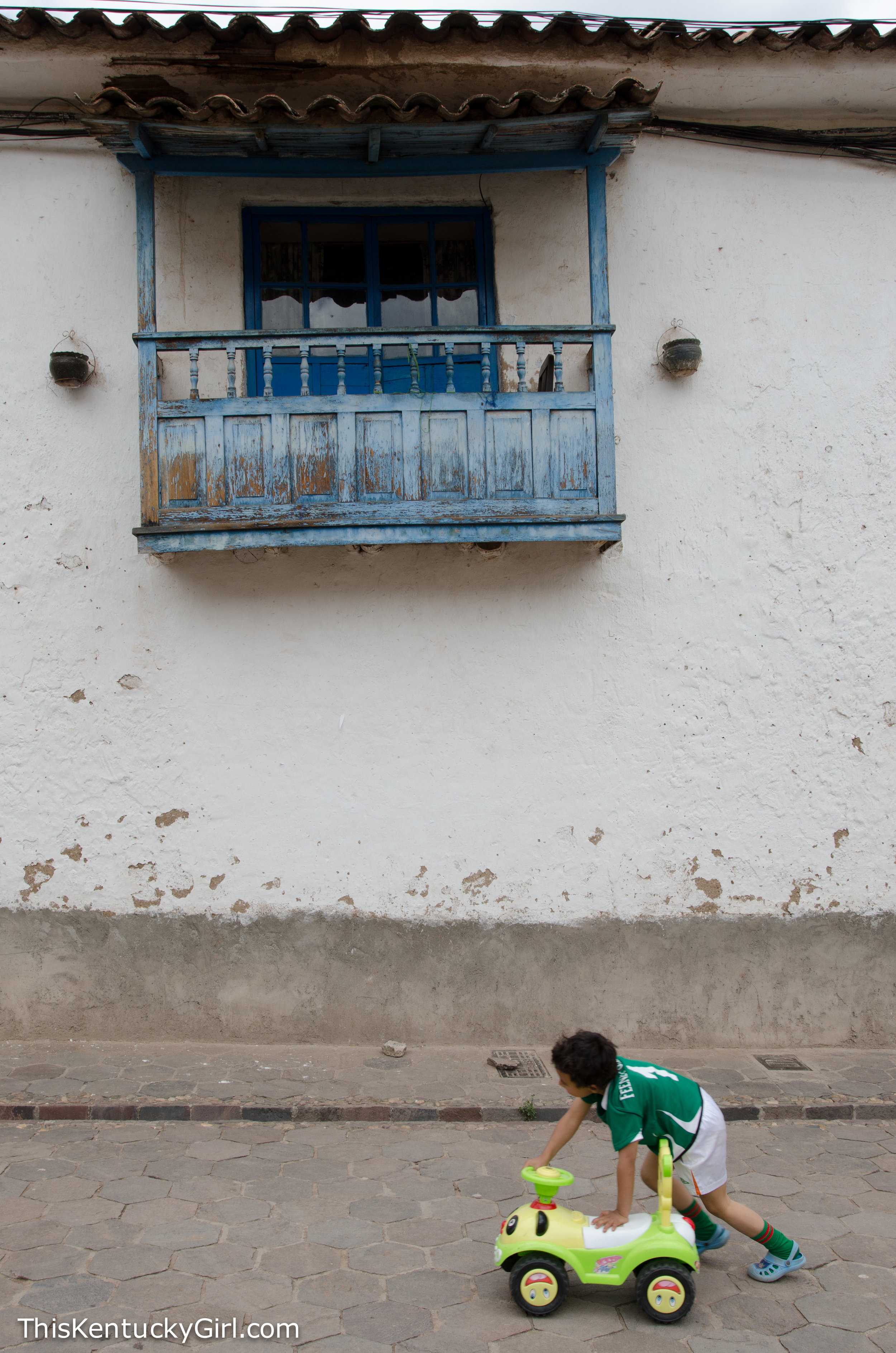
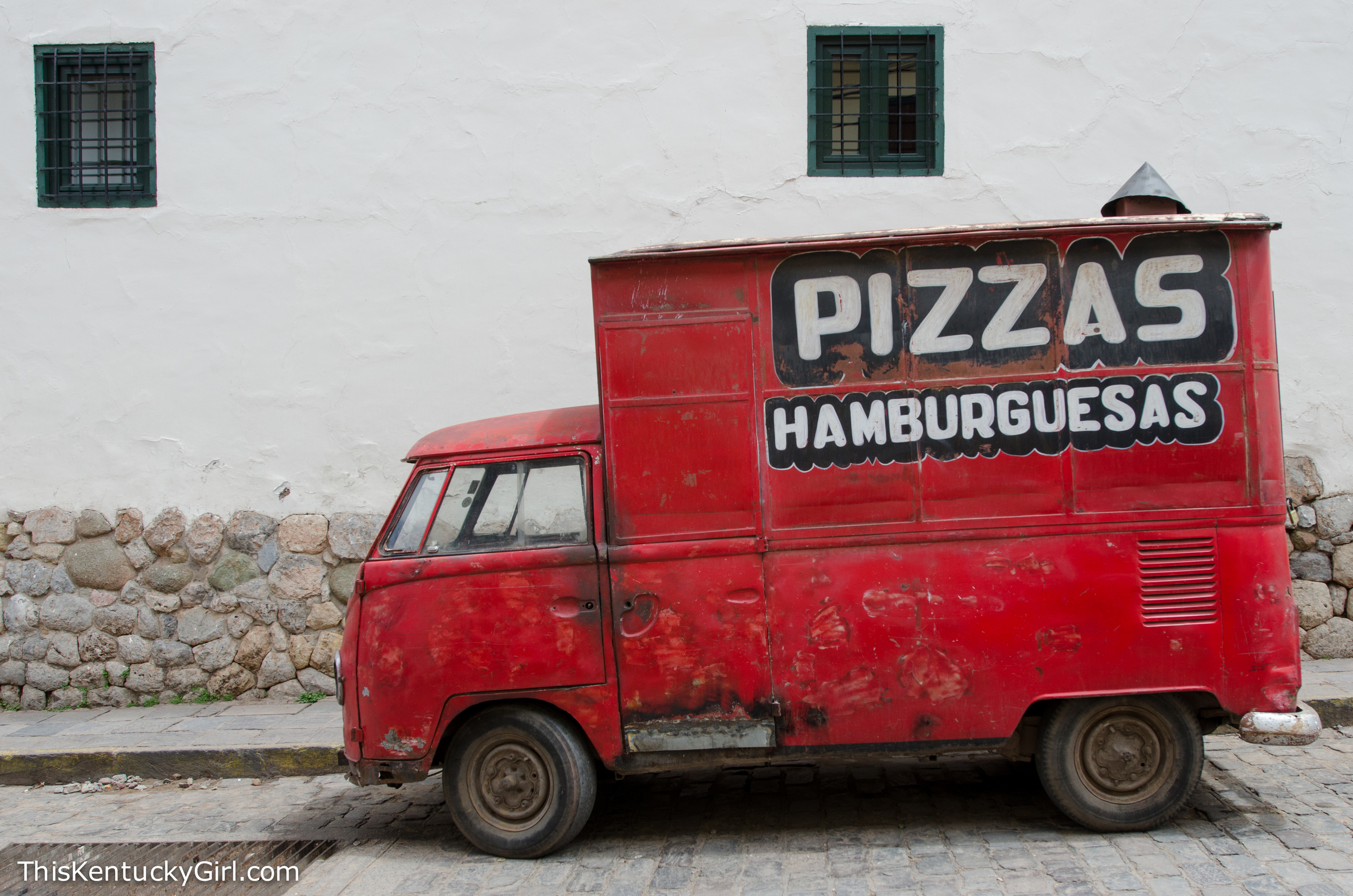
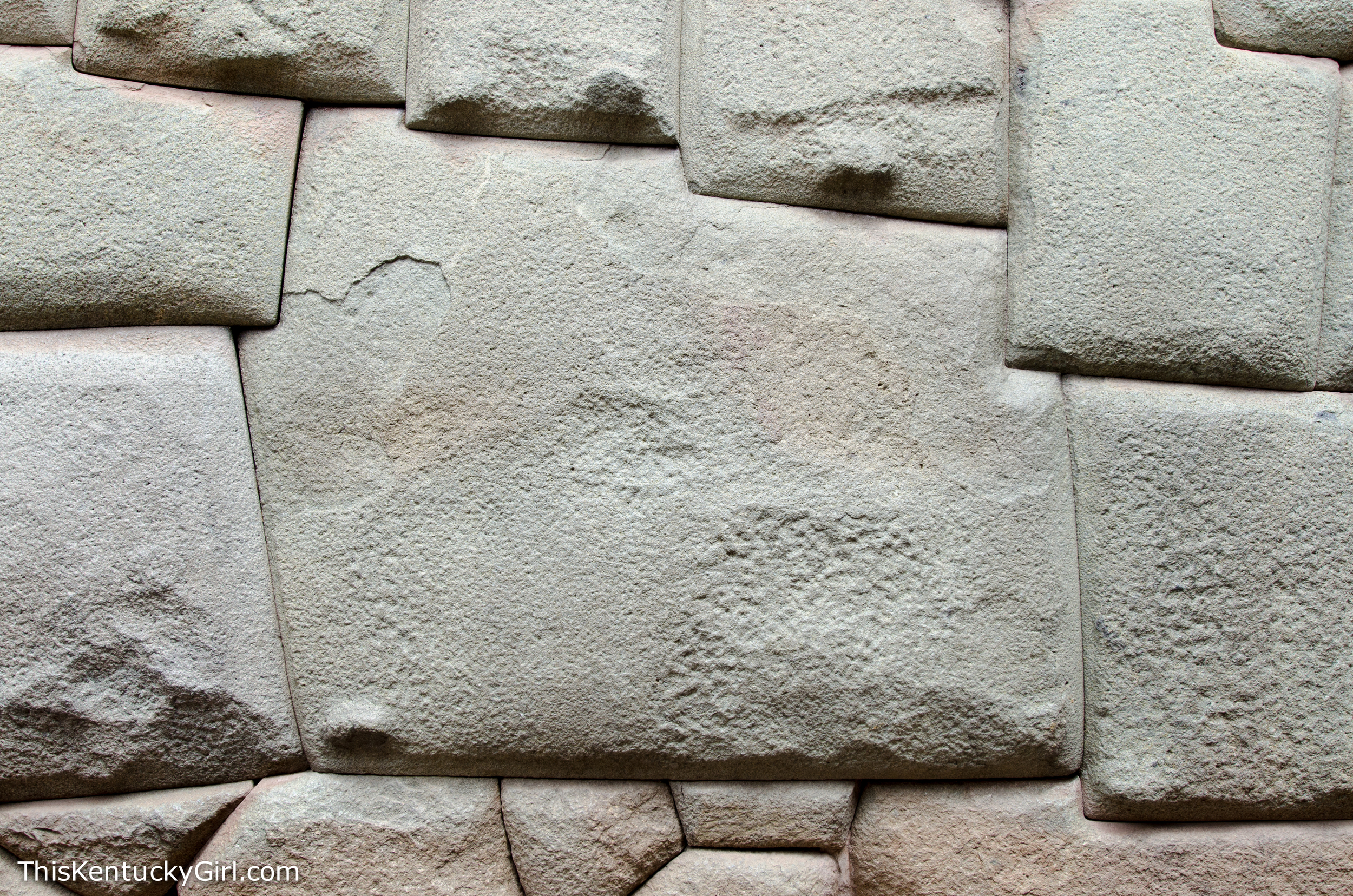
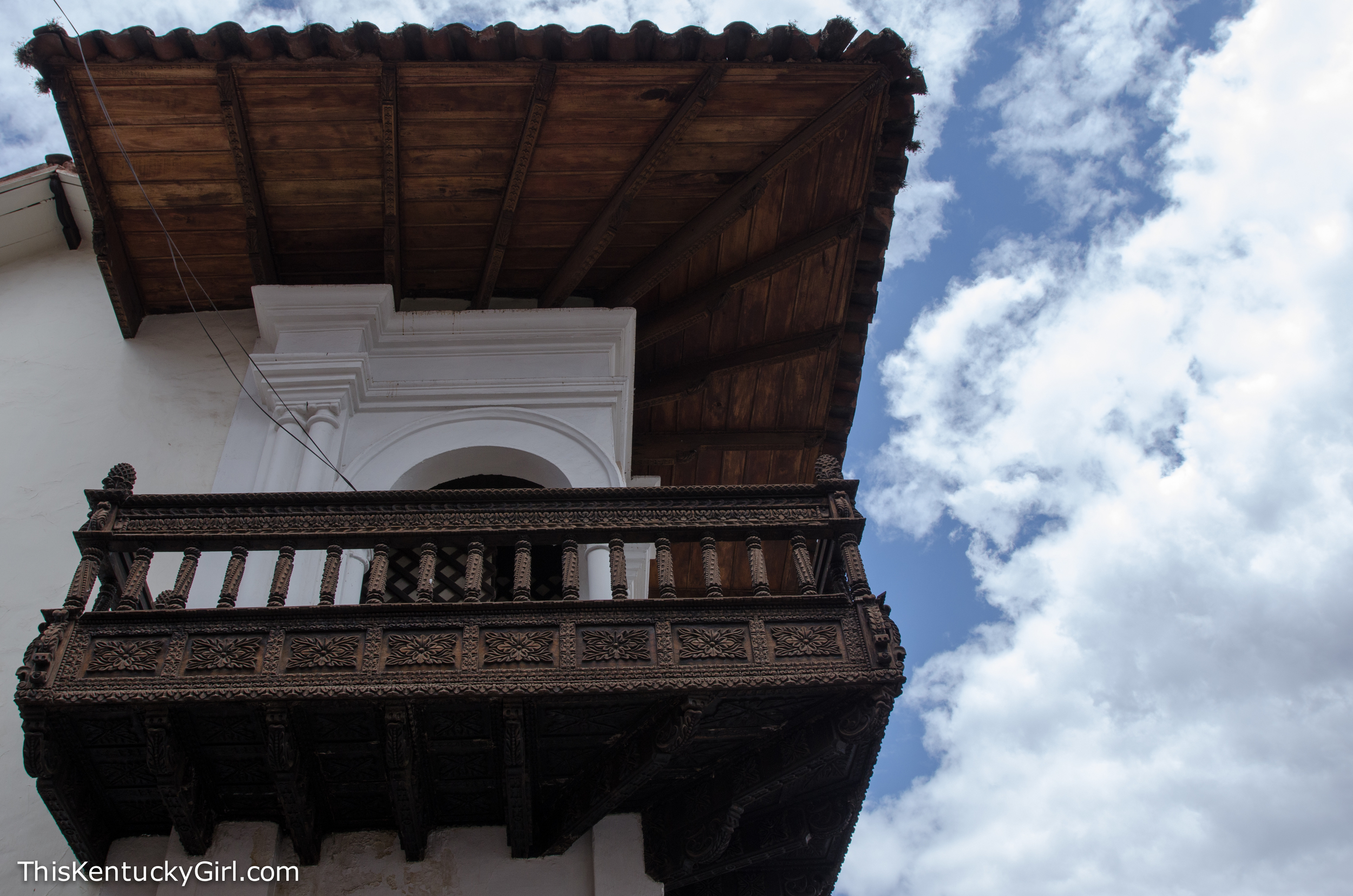
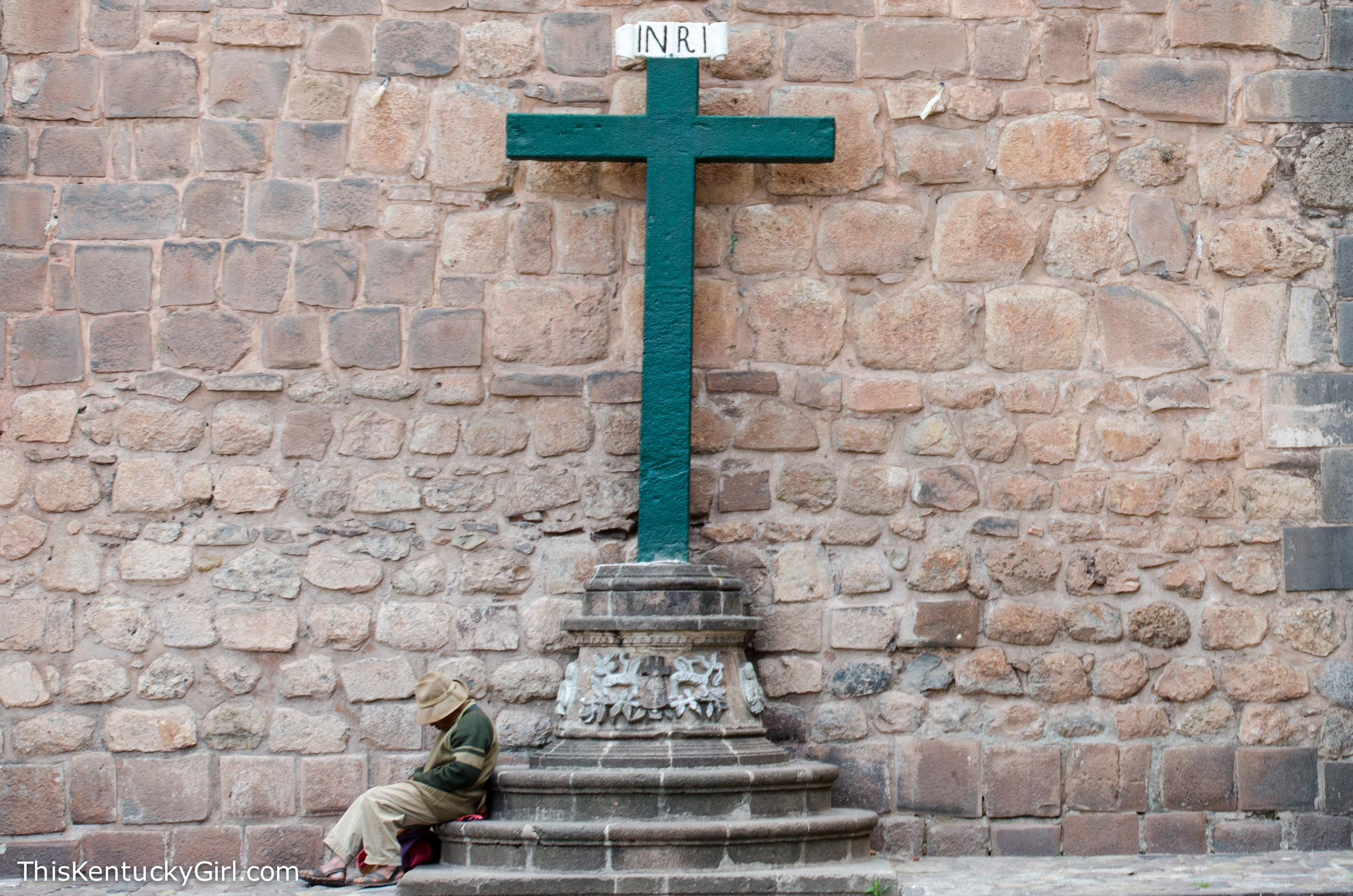
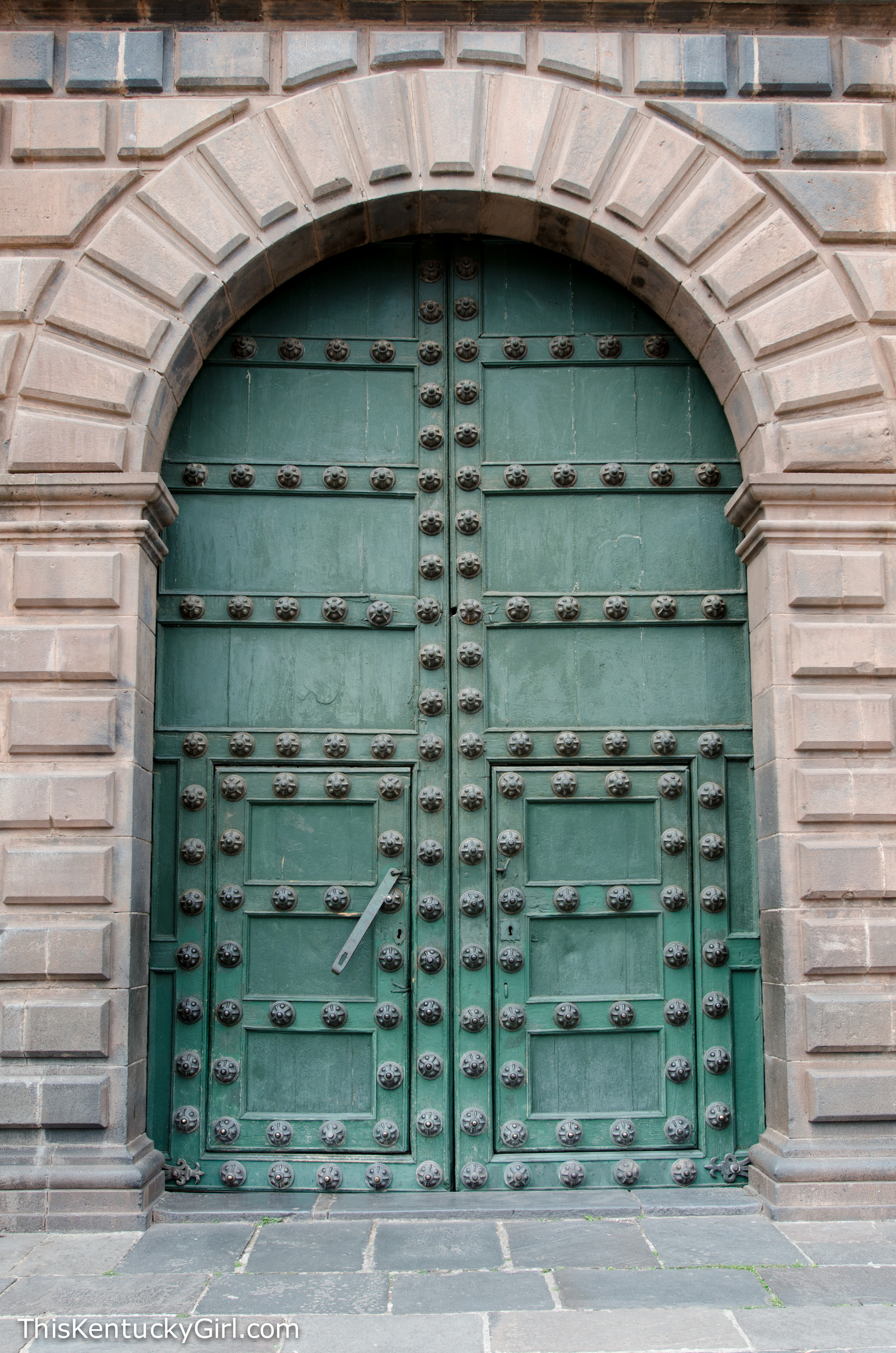
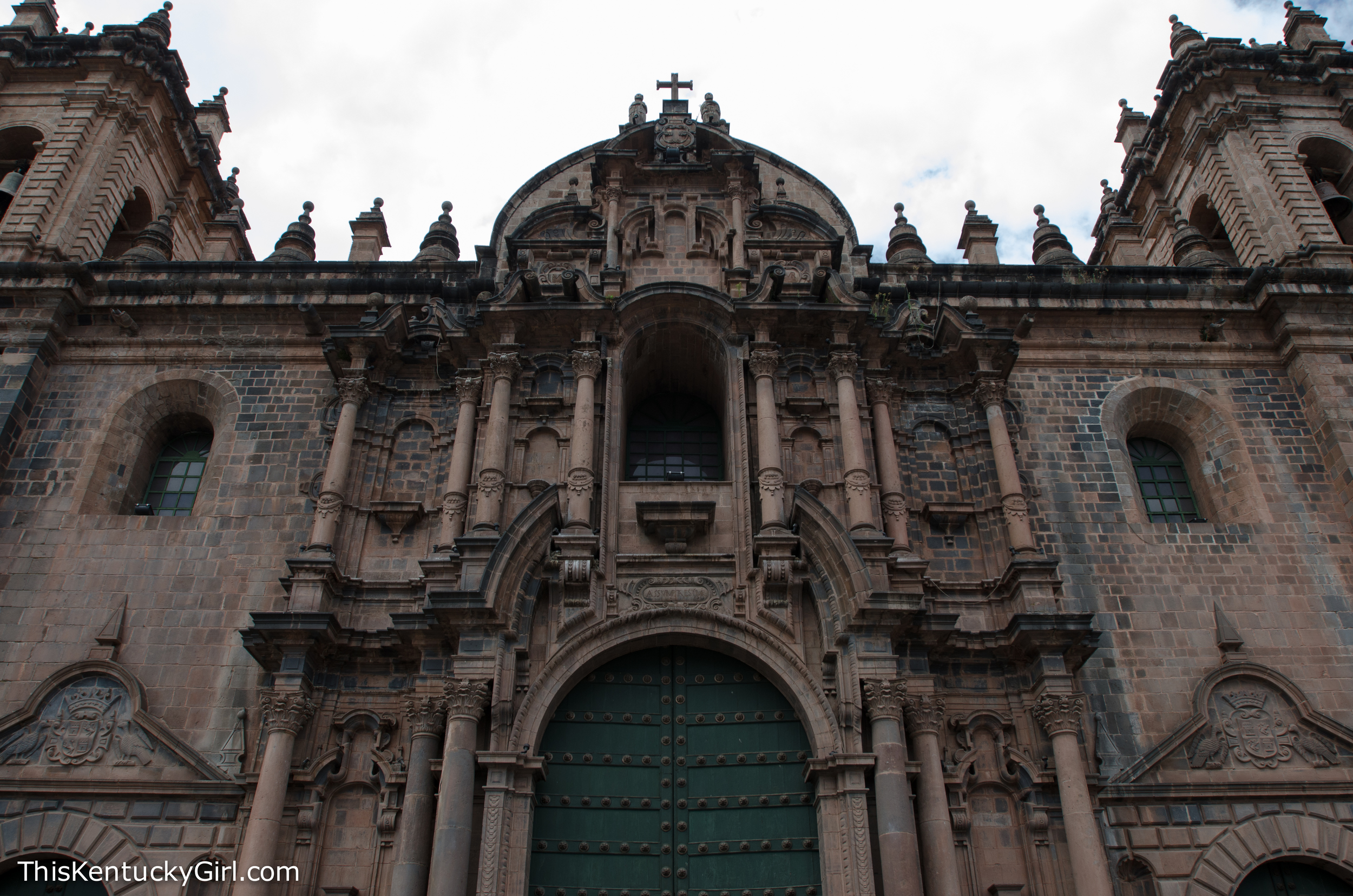
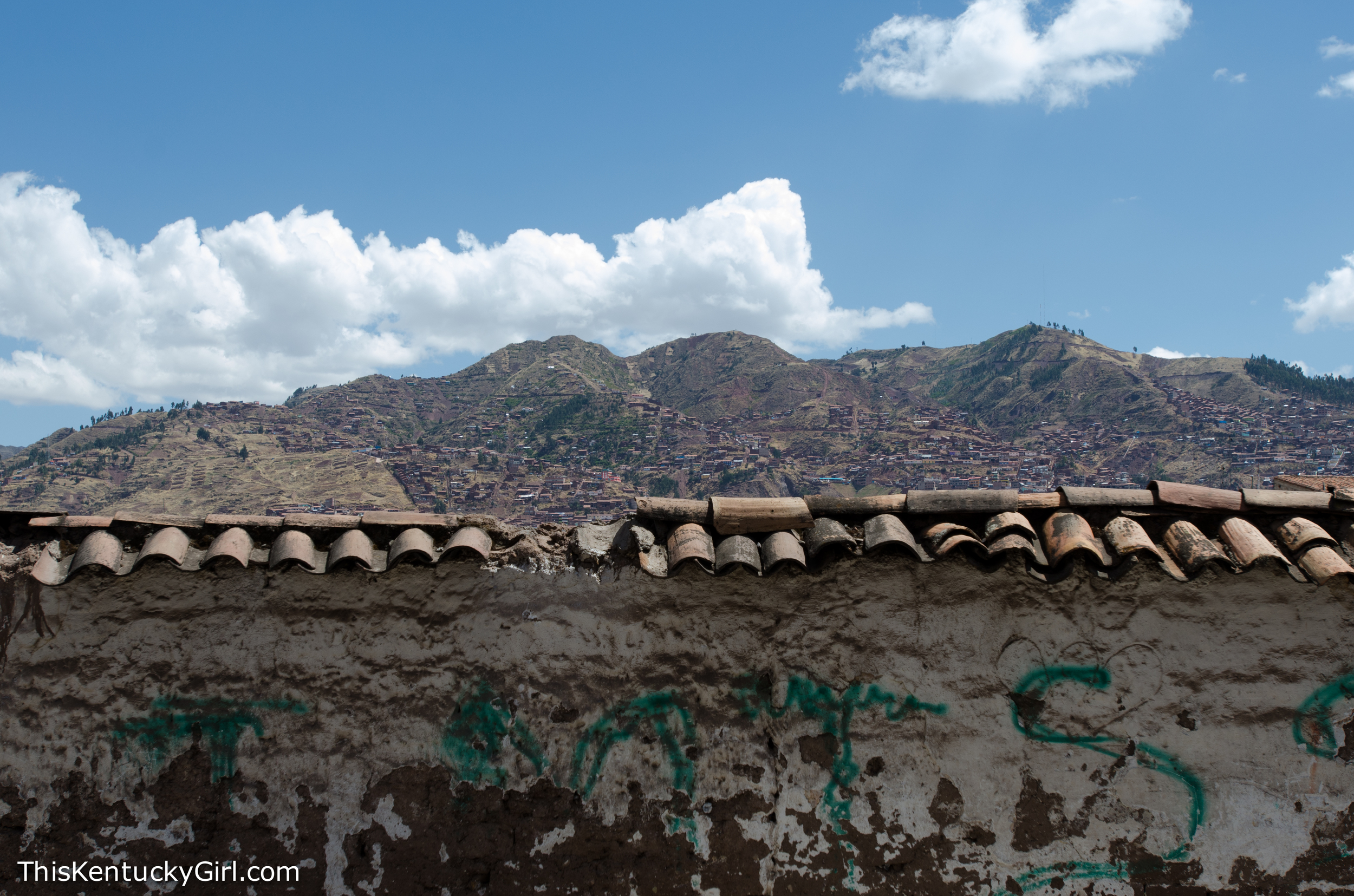
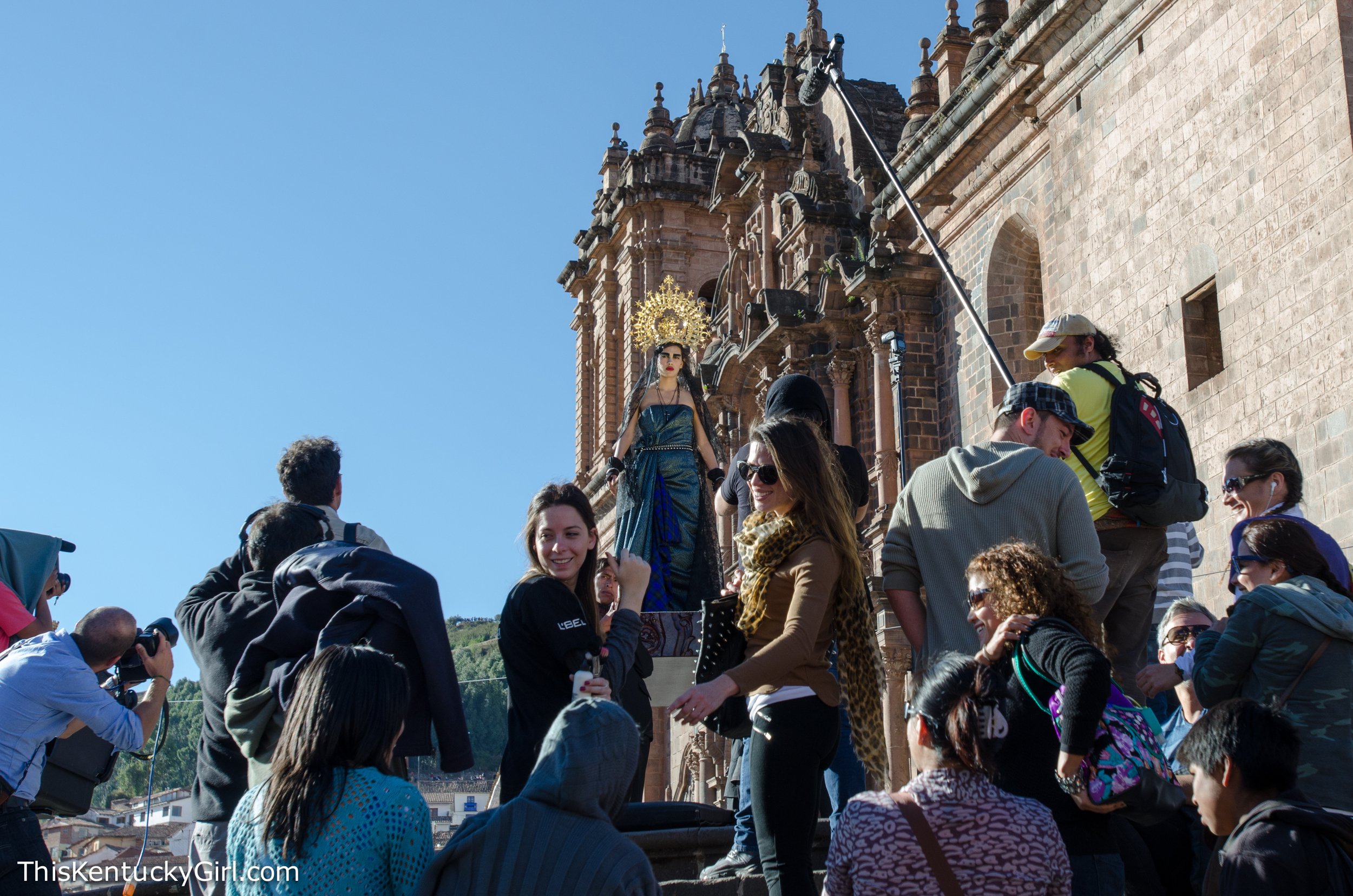
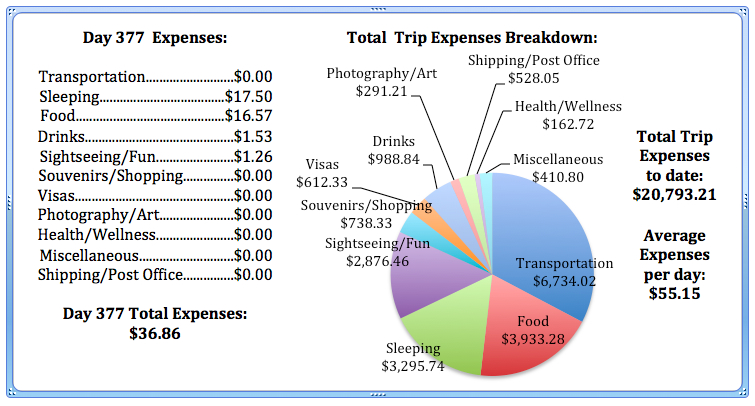
The self-guided tour began in the San Blas neighborhood, more specifically, the Church of San Blas. We read up about it outside, and then Andrew confirmed that my Mom rubbed off on us and we didn’t want to pay to enter a church. I’m sure we missed out on seeing a beautiful interior, and the pulpit that is carved from a single tree trunk… but I just don’t understand why the churches of Cusco all have entry fees! We wove our way down through some different streets that we hadn’t been through before and found ourselves in front of the Incan wall that we’ve walked past at least a couple dozen times since we first arrived in Cusco.
At least we finally figured out why everyone was stopping at this exact spot to get their picture taken. This rock is the perfect example of how incredible Inca stonemasons and architecture was (and obviously still is today). This stone has a record 12 different points on it, and at any given time there is a line of people in front of it in a tour group, or posing for pictures, or even touching it for good luck. Our guide on the Cusco Free Walking Tour told us each stone took 13 months to carve. I’m curious if that length of time applies to this 12 point stone as well.
Check out this intricately carved balcony. It’s beautiful, don’t get me wrong- but there wasn’t much information given to us about who built it or perhaps who lived in the building, or why it’s worth a stop on a tour…
Next stop: Cusco Cathedral, or more formally; The Cathedral of Santo Domingo. We probably should have sprung for an entry ticket here, but we decided we would finish the walking tour first and then see if we had enough time to go into the church after.
We made a small loop around another smaller church and convent, through some Incan ruins, then past Quirikancha before heading back to finish the tour at Plaza de Armas. By the time we returned, some kind of shoot (either for a movie or simply a modeling shoot of some sort) was getting a lot of attention outside of Cusco Cathedral. It seemed as though every early evening or night something was going on in the Plaza. One night there was a car show of some sort, another night a giant stage was constructed, but by the time we passed through the square the next day, it had already been removed. I’m curious what the calendar looks like for the square, is it always so busy?
Day 376: Starbucks again?
This is what happens when you move to a new hotel, and you discover that it too, doesn’t have decent wi-fi. You decide to go back to Starbucks and continue planning the last month of your trip and uploading a few more photos. (At least the new hotel does have hot water, a great breakfast, and a nicer room!)
Day 375: Rain, Rain, Go Away!
We had big plans for the day. We were going to finish the Cusco Free Walking Tour, we were going to check out a field where you could frolick and play with llamas, and probably something else really fun and outdoorsy- and then en route to get a coffee before we met the walking tour where we left off, it started to rain. And it kept raining. So forgive me for another very boring post.
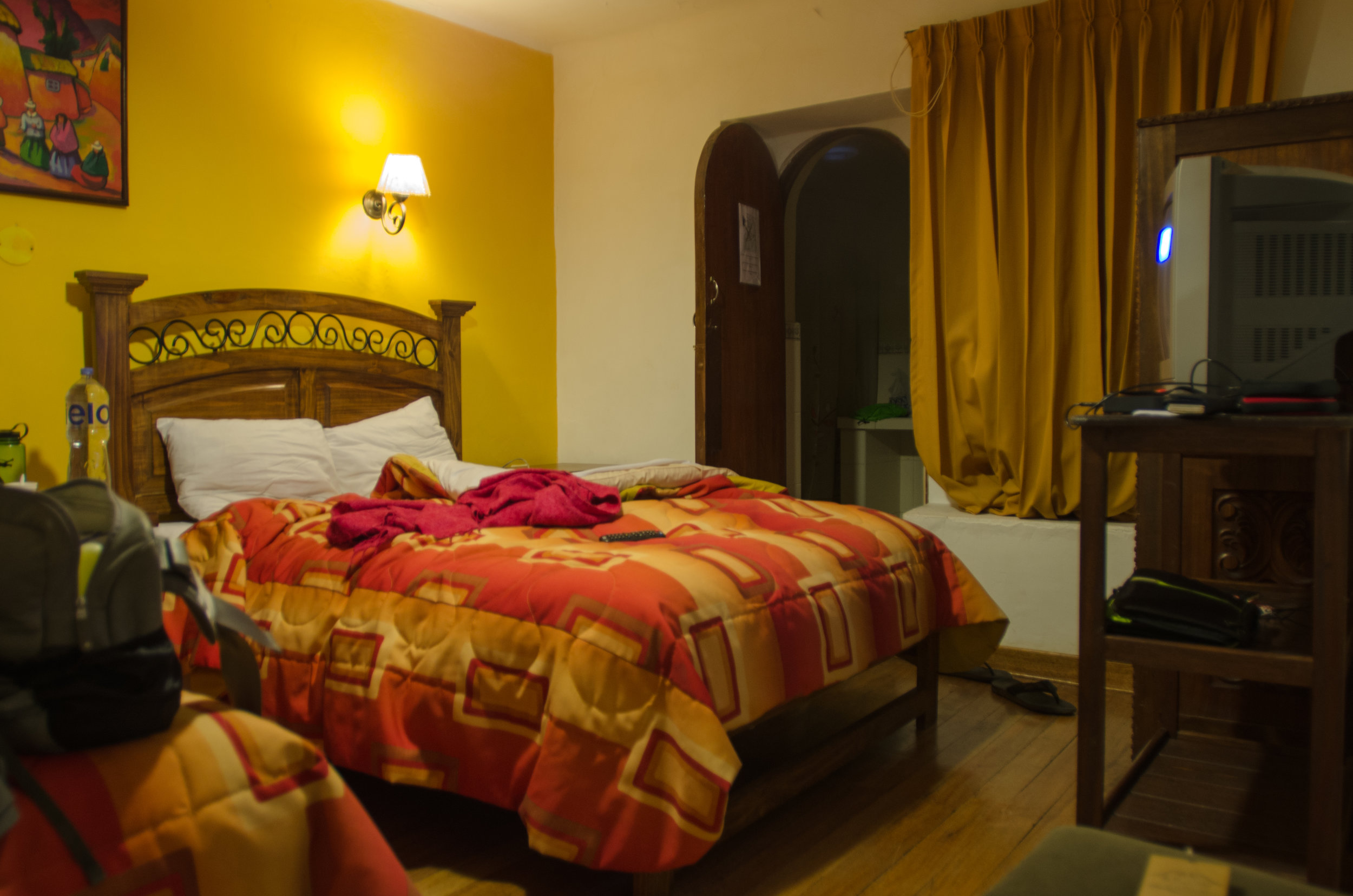
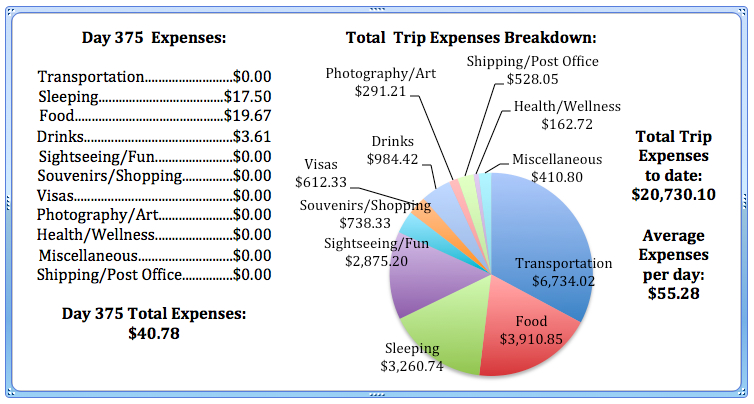
Day 374: Starbucks is the only place with decent wi-fi in Cusco
It’s a fact, Jack. I used to loath Starbucks, and then I went around the world and I have had to listen to Andrew complain about tiny cups of coffee that he would down in one sip… or how he asked for “black coffee” and was served coffee with copious amounts of milk and sugar instead… or how he can never find coffee with ice in it anywhere. Usually, Starbucks has a decent wi-fi connection, regardless of what country we’re in… So, off we went in hopes of Andrew having a coffee he was happy with and both of us having an internet connection strong enough so we could finally decide on a Spanish school, upload photos and videos, and possibly book some tickets home. Sometimes I feel bad for posting such a boring “day in a minute” and then I remind myself that the purpose of this blog is not to fool you into thinking that travel is awesome all the time. Because, as I’ve said before… it’s not always awesome, it’s not always super exciting, and sometimes it can be pretty boring -for you. For us, an afternoon of good coffee and an internet connection that doesn’t tempt me to throw my computer out the window is super exciting.
Day 373: Movie Day! I mean, Check out this parade!
Full disclosure: my mission for this day was to not leave our hotel room. And then late in the afternoon, I failed said mission… But only to go grab a pizza for dinner. Instead of forcing you to endure a boring post, including a video of us watching… videos… I’m cheating a bit and posting some video and super fun pictures from a parade that we stumbled upon a few nights ago. Because, really, it’s way more interesting. And if you’re a fan of drum-lines (like I TOTALLY AM) you might appreciate this parade because it seemed to be made up of drum-lines and dancers and it was awesome. We have no idea what it was for, but it was fun, and I can only hope we stumble upon another parade like this one before we leave!
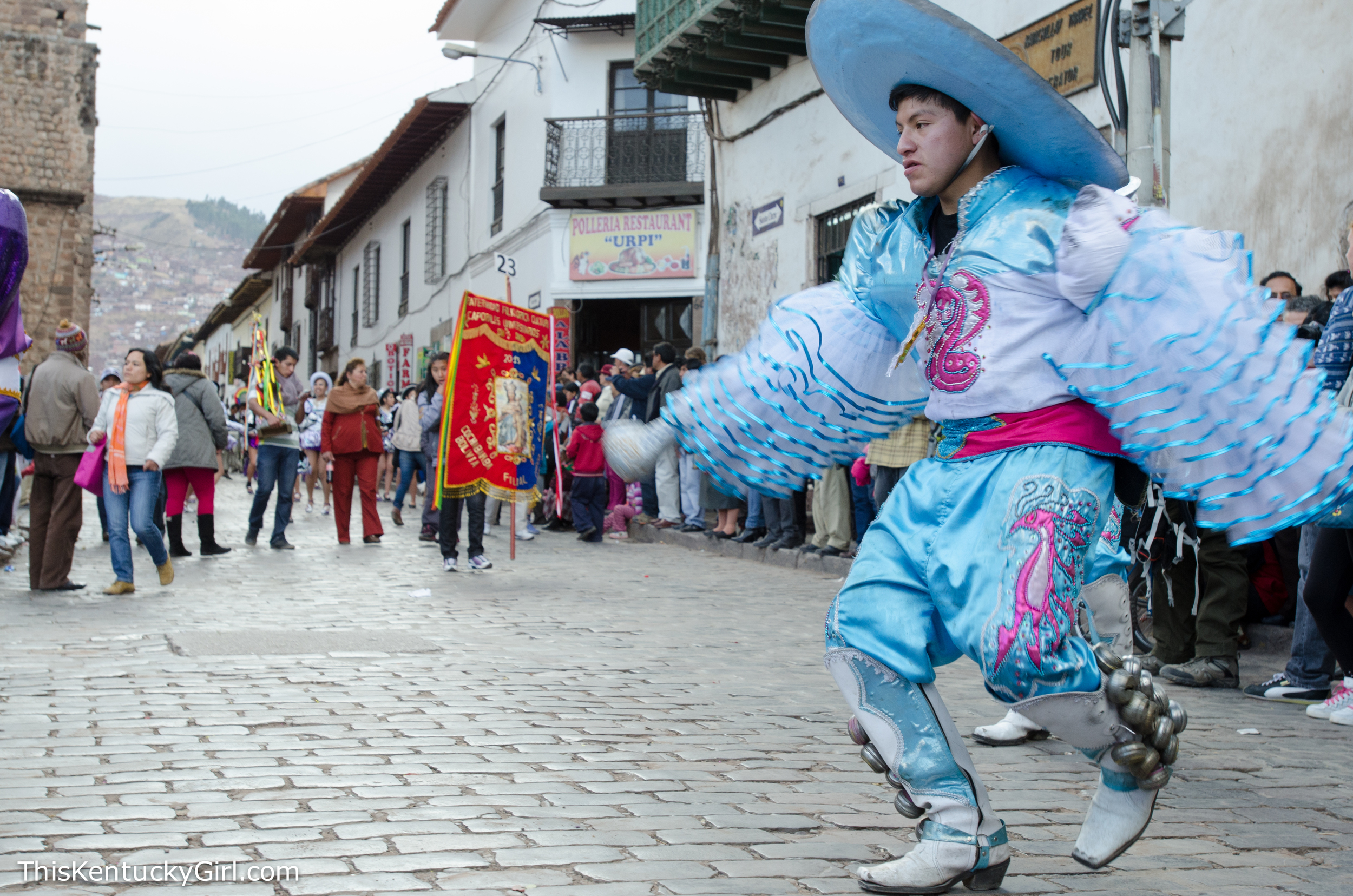
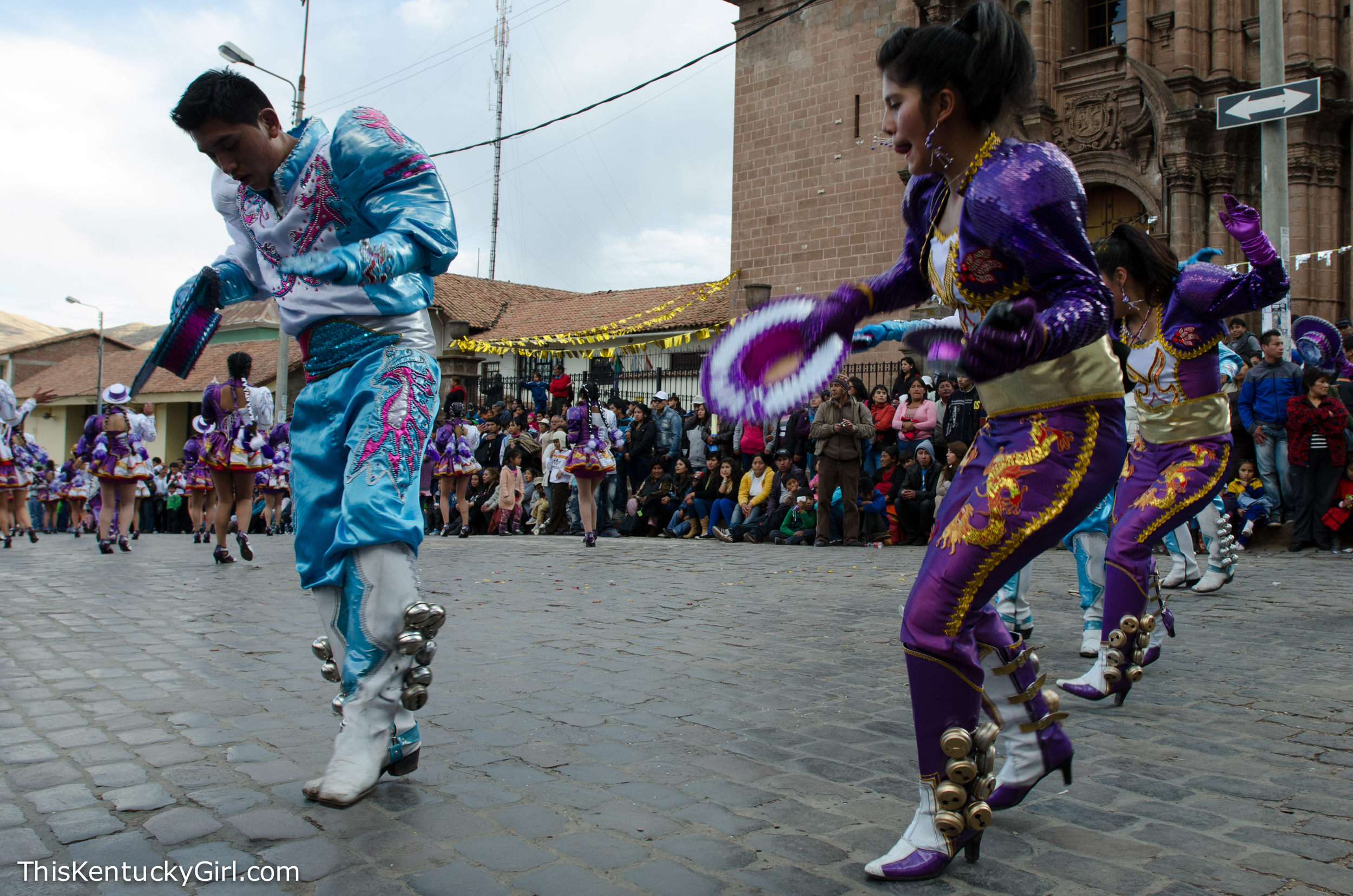
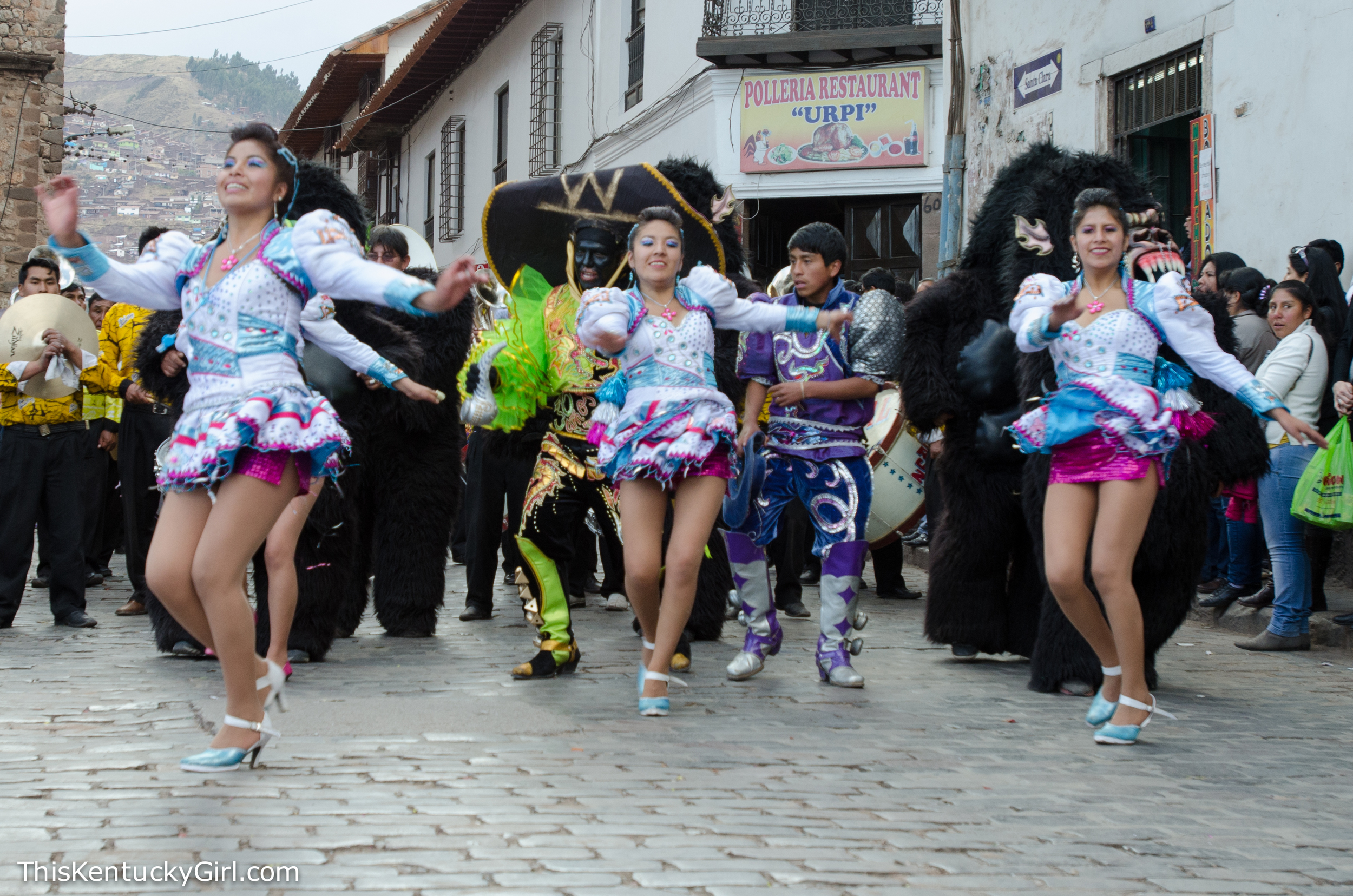
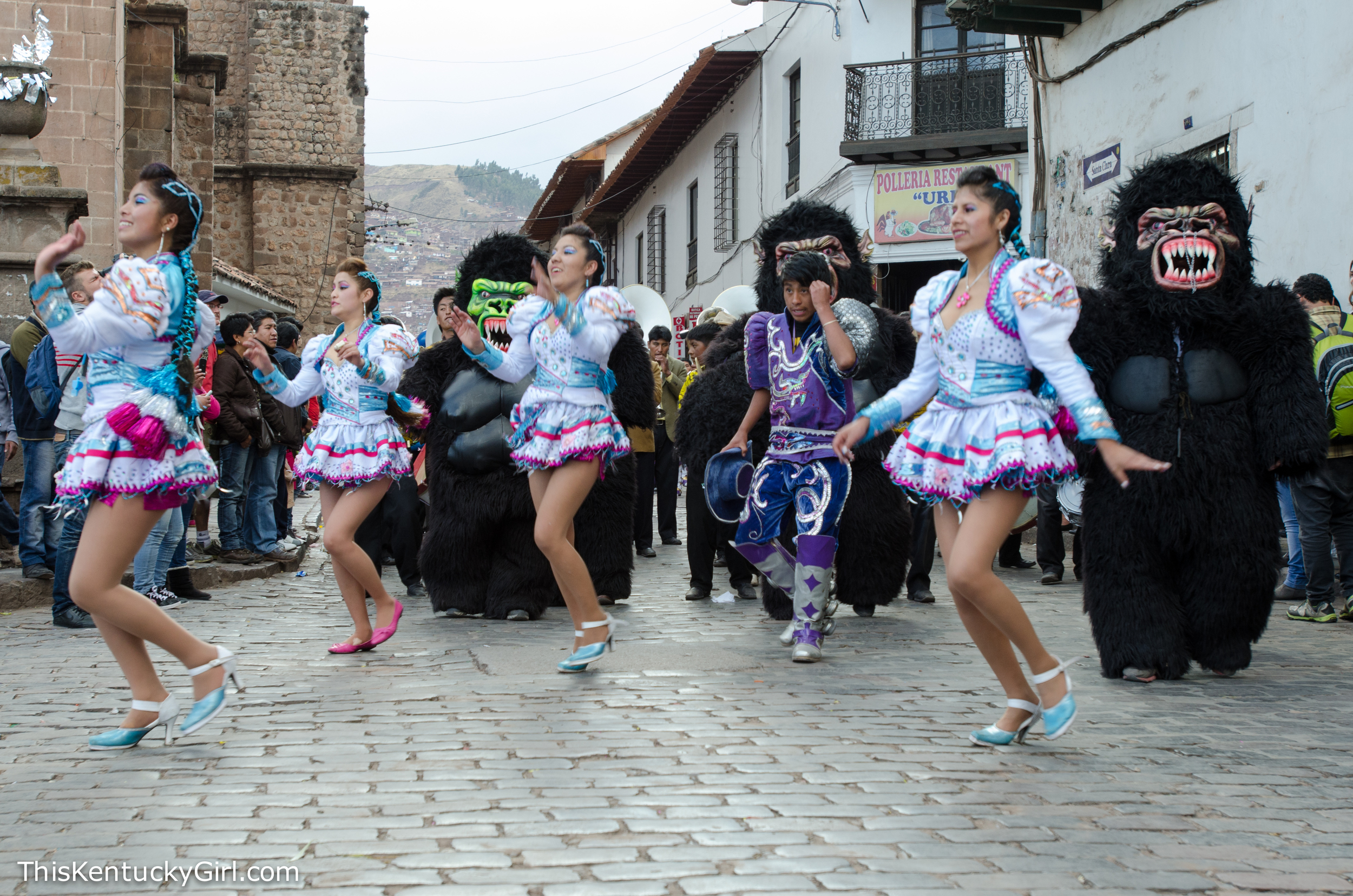
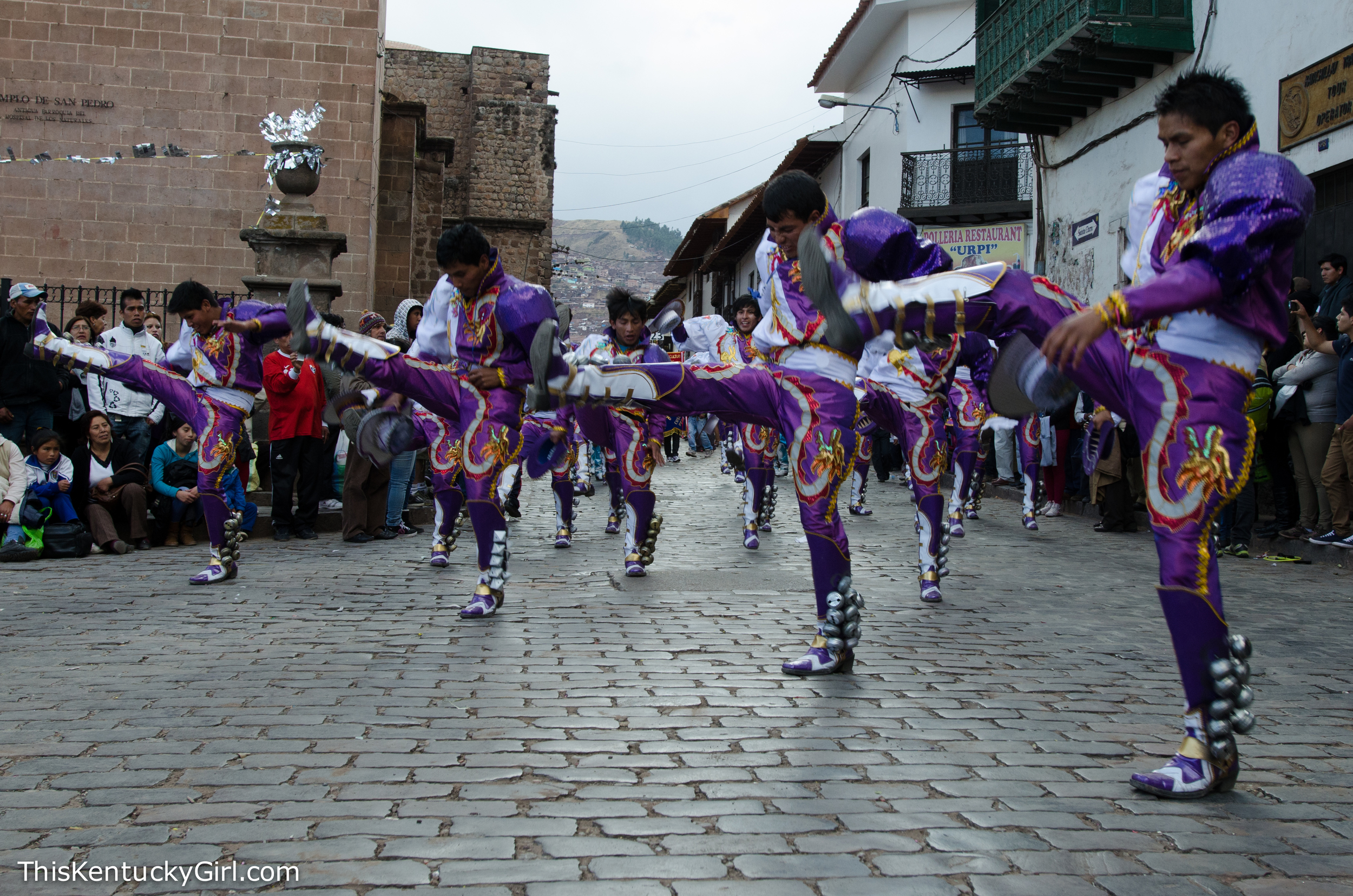
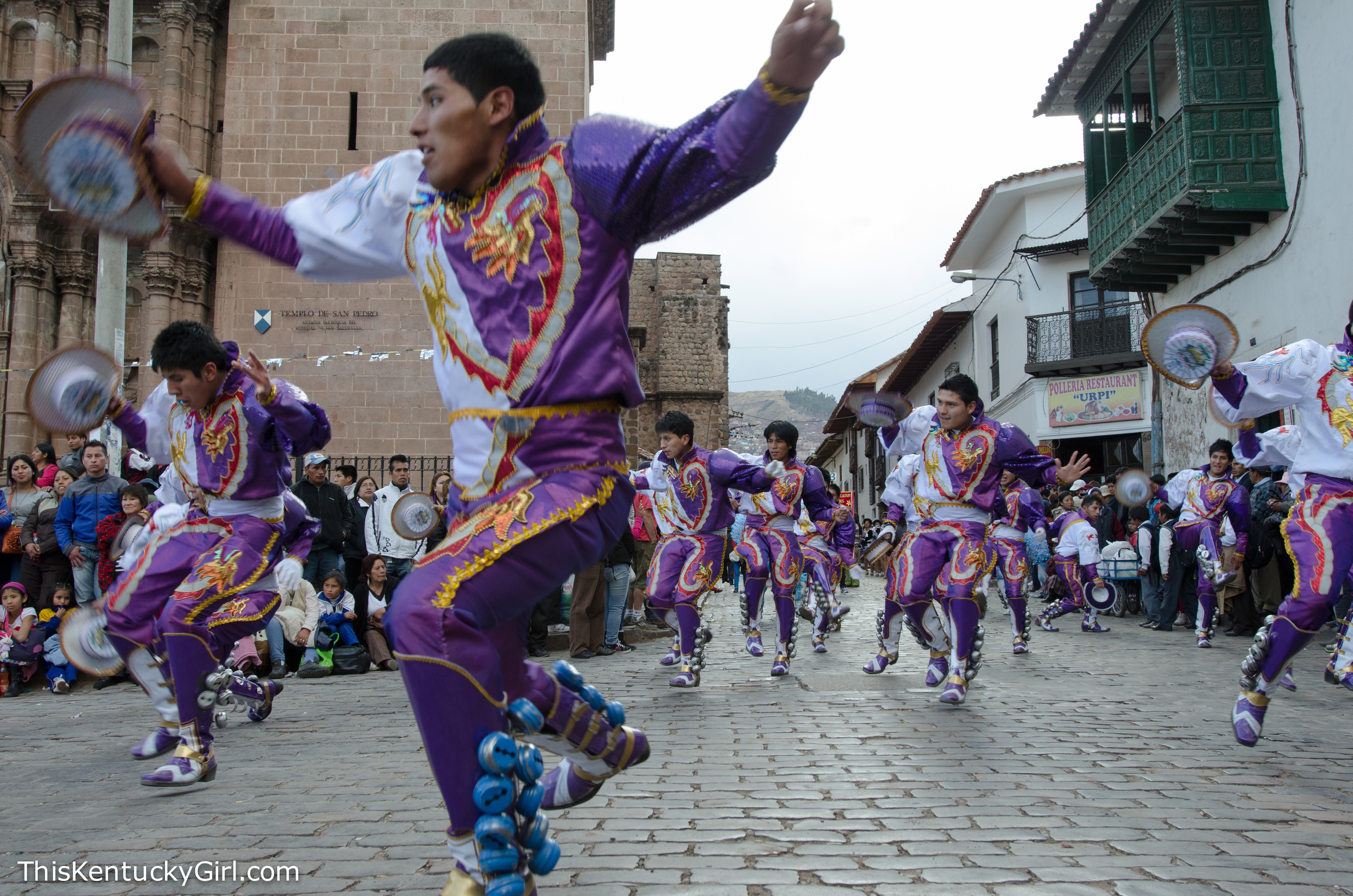
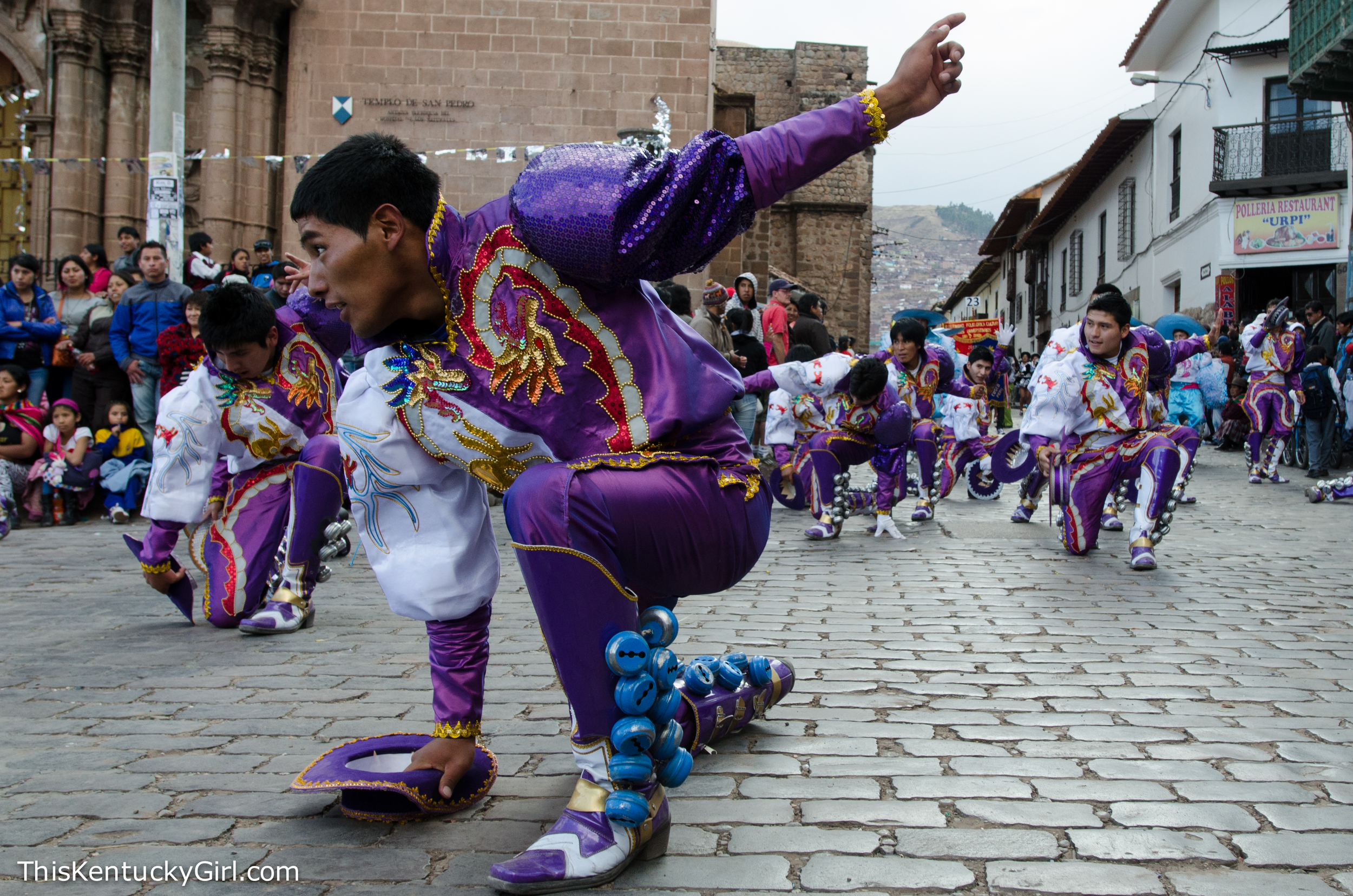
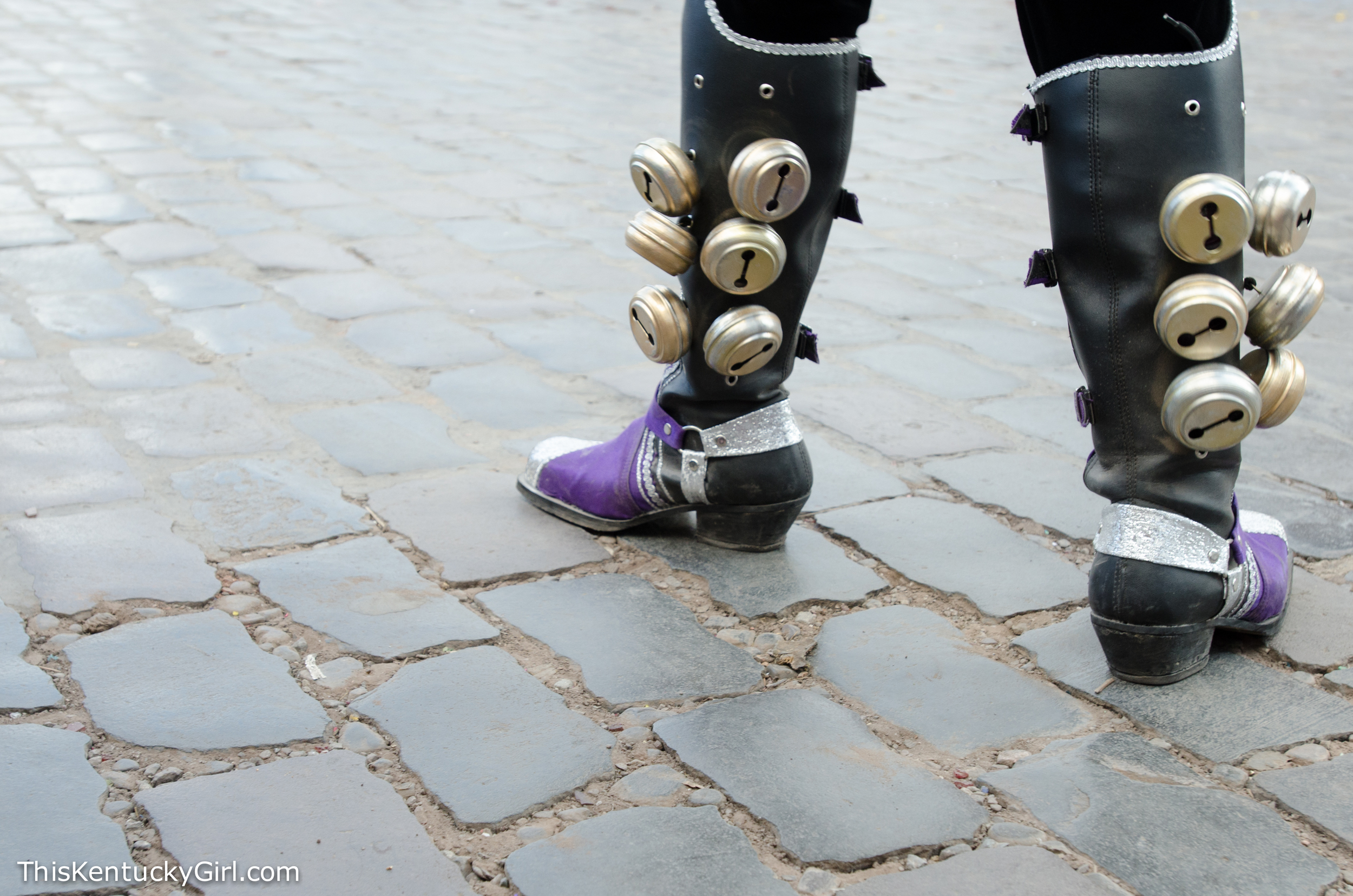
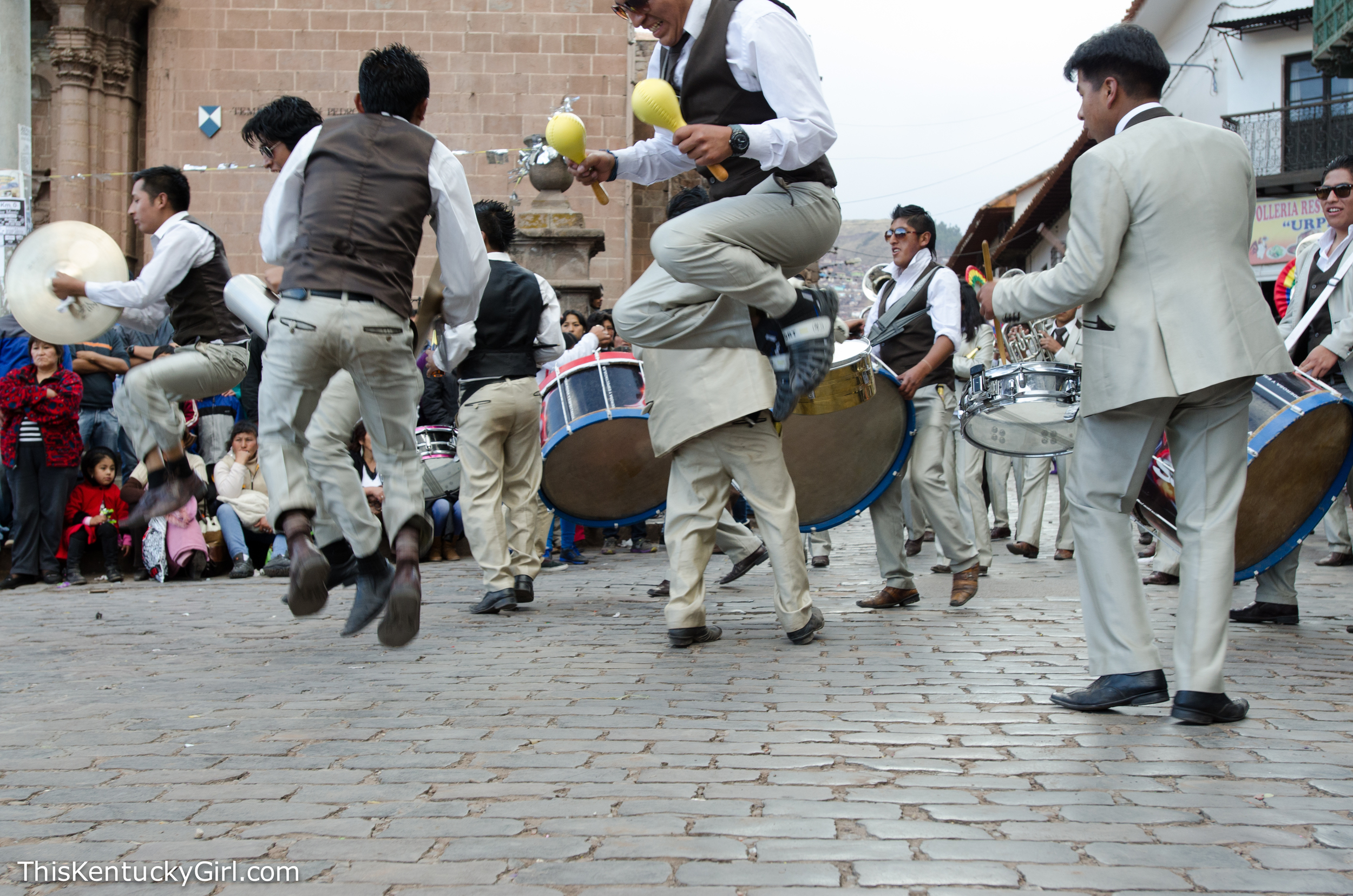
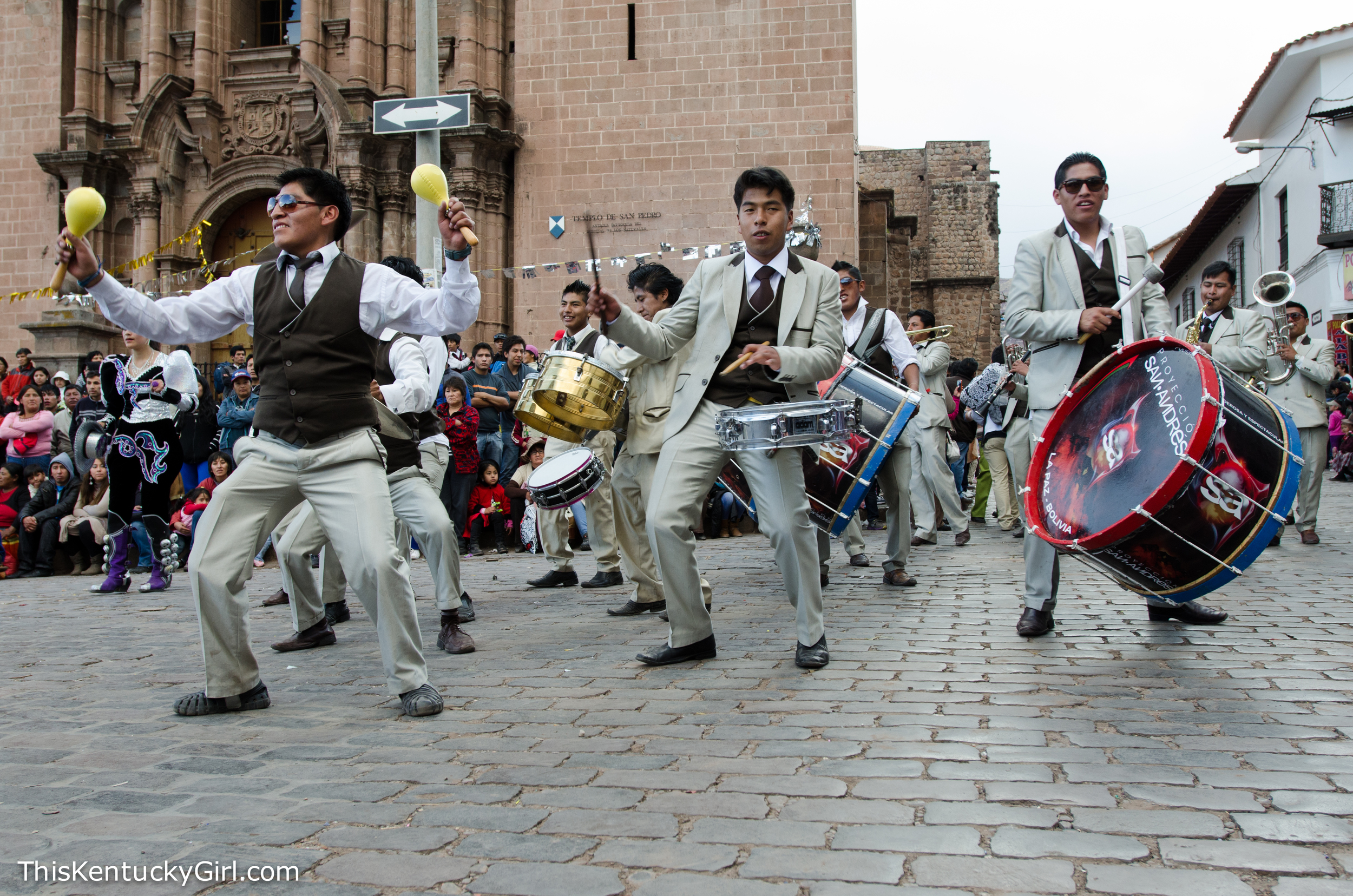
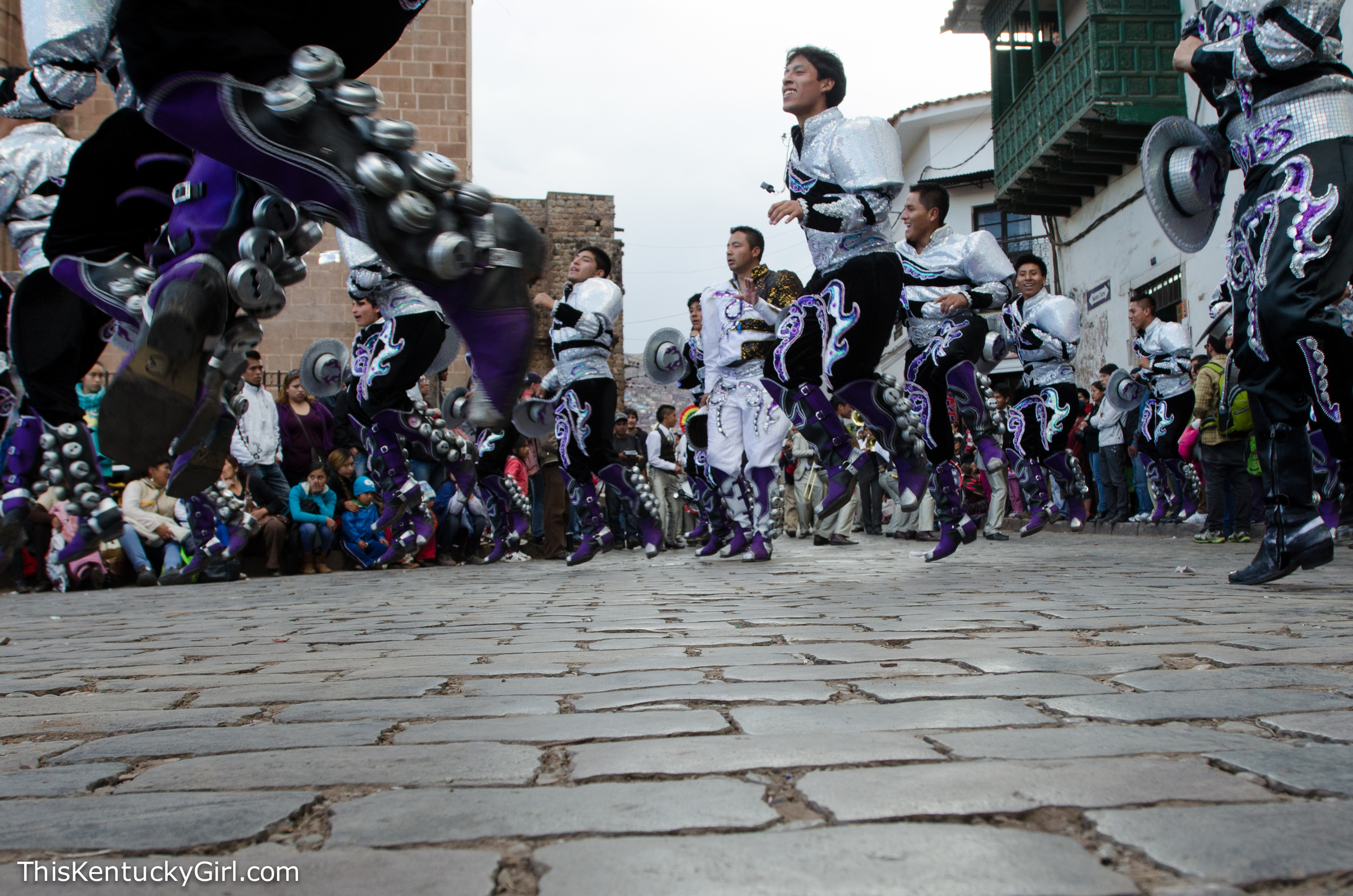
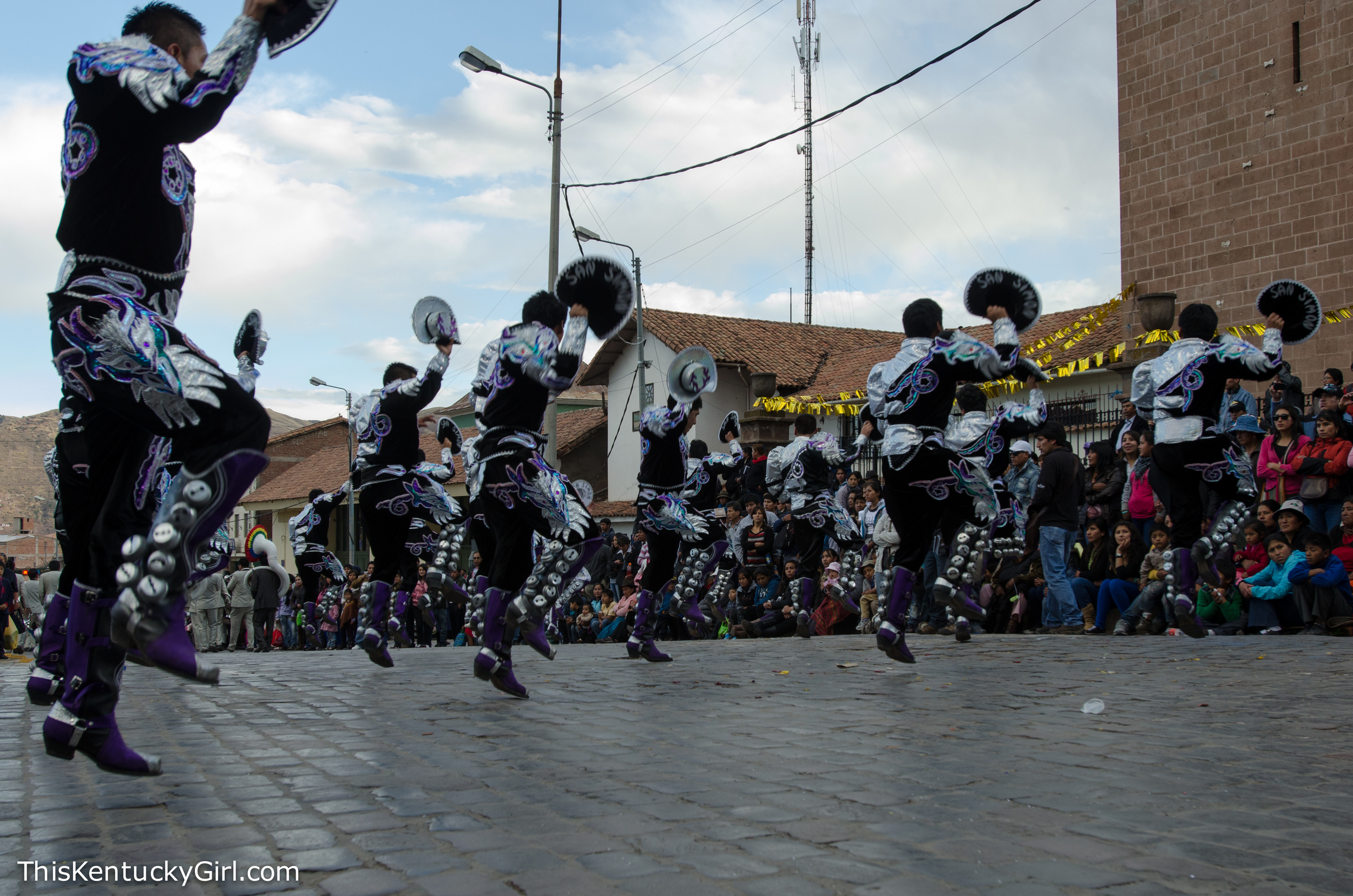
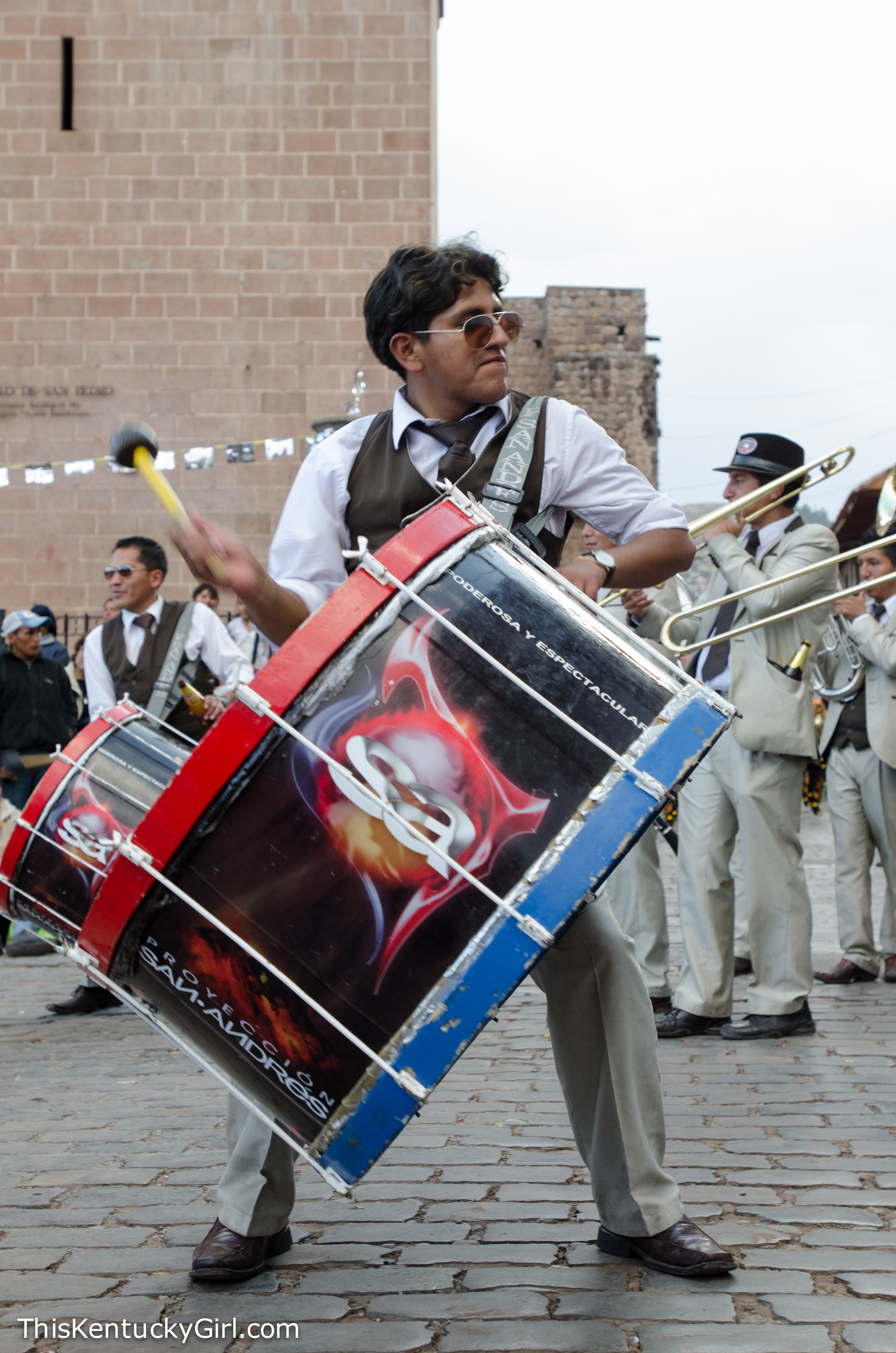

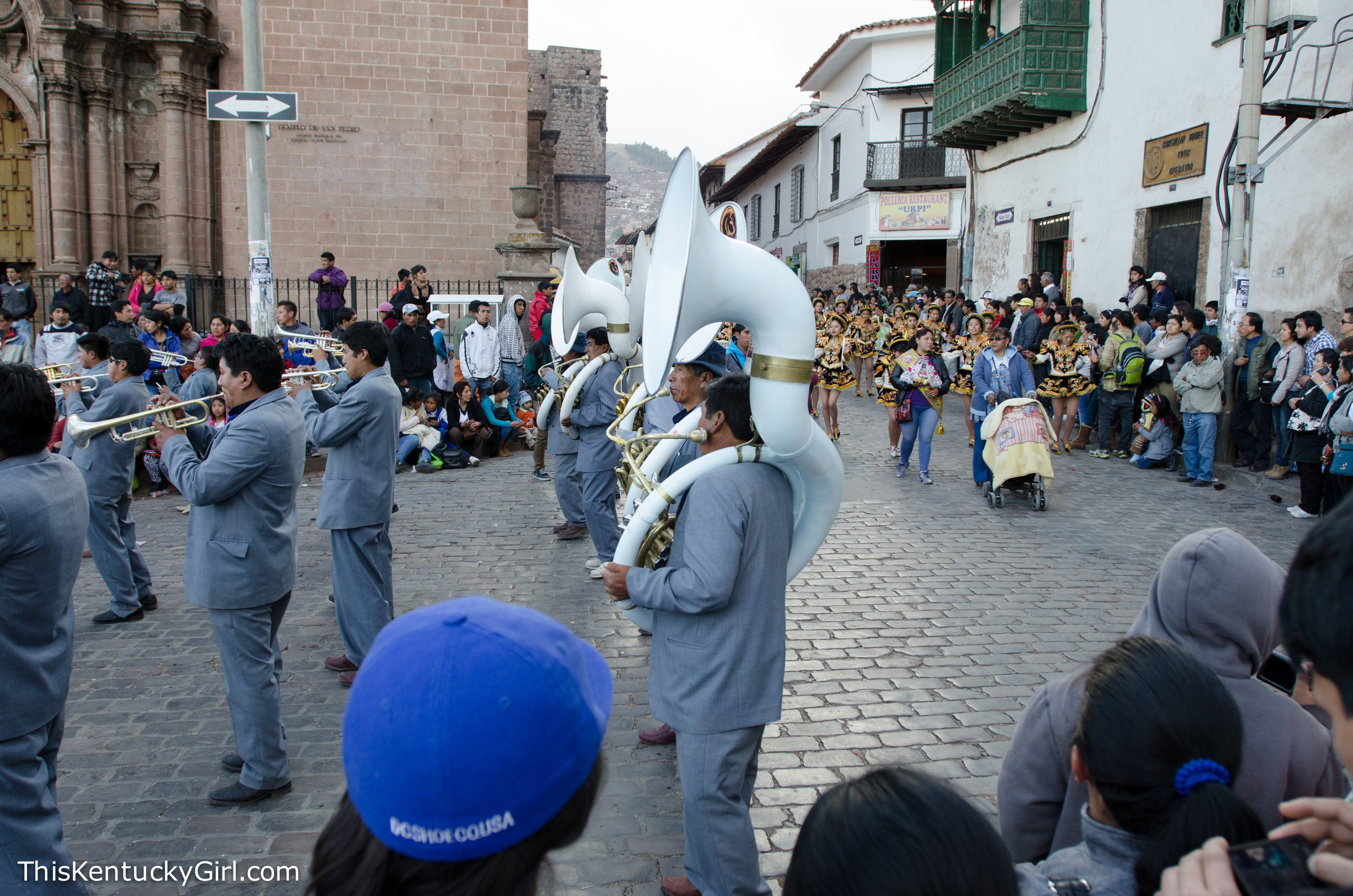

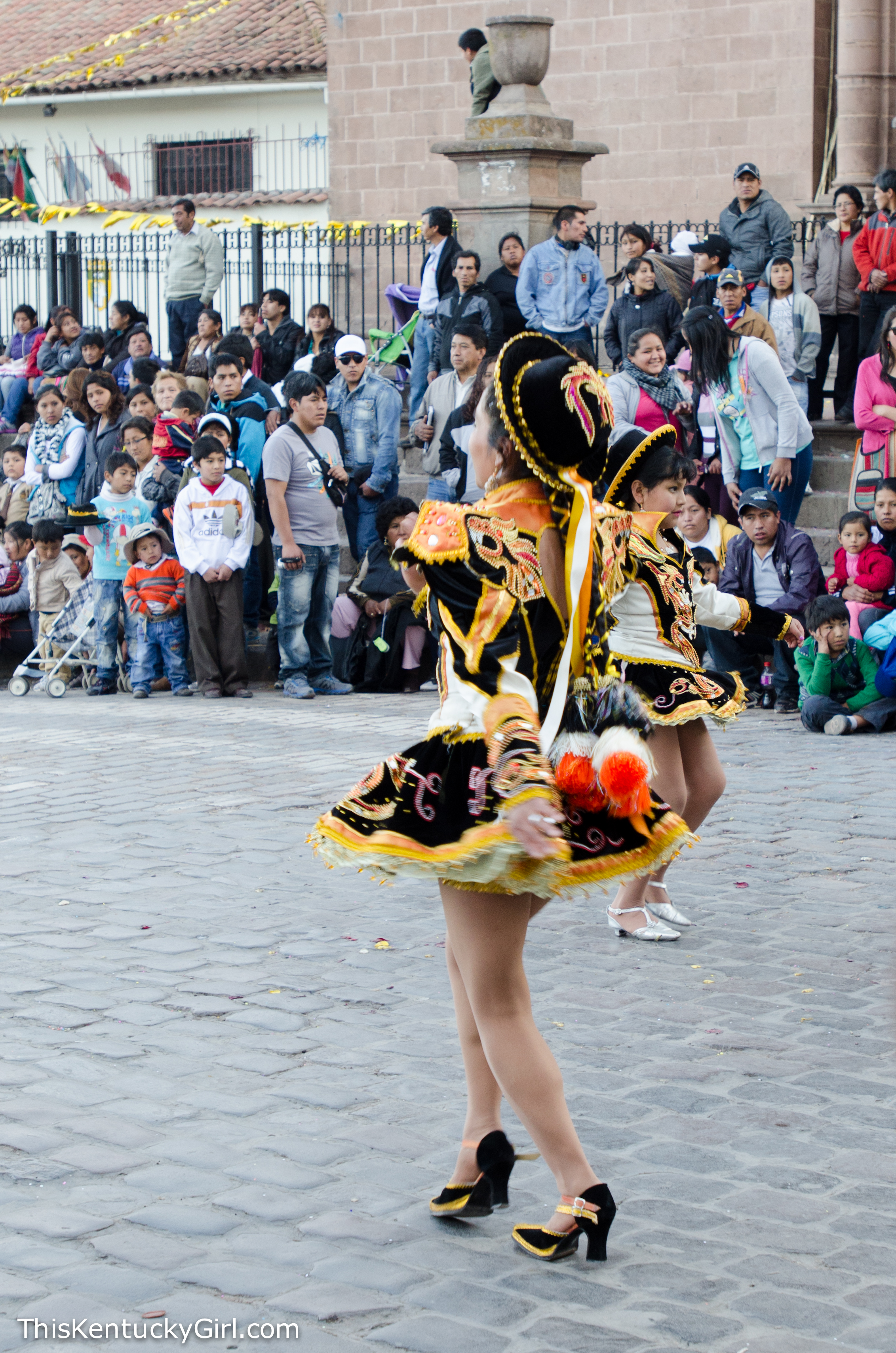
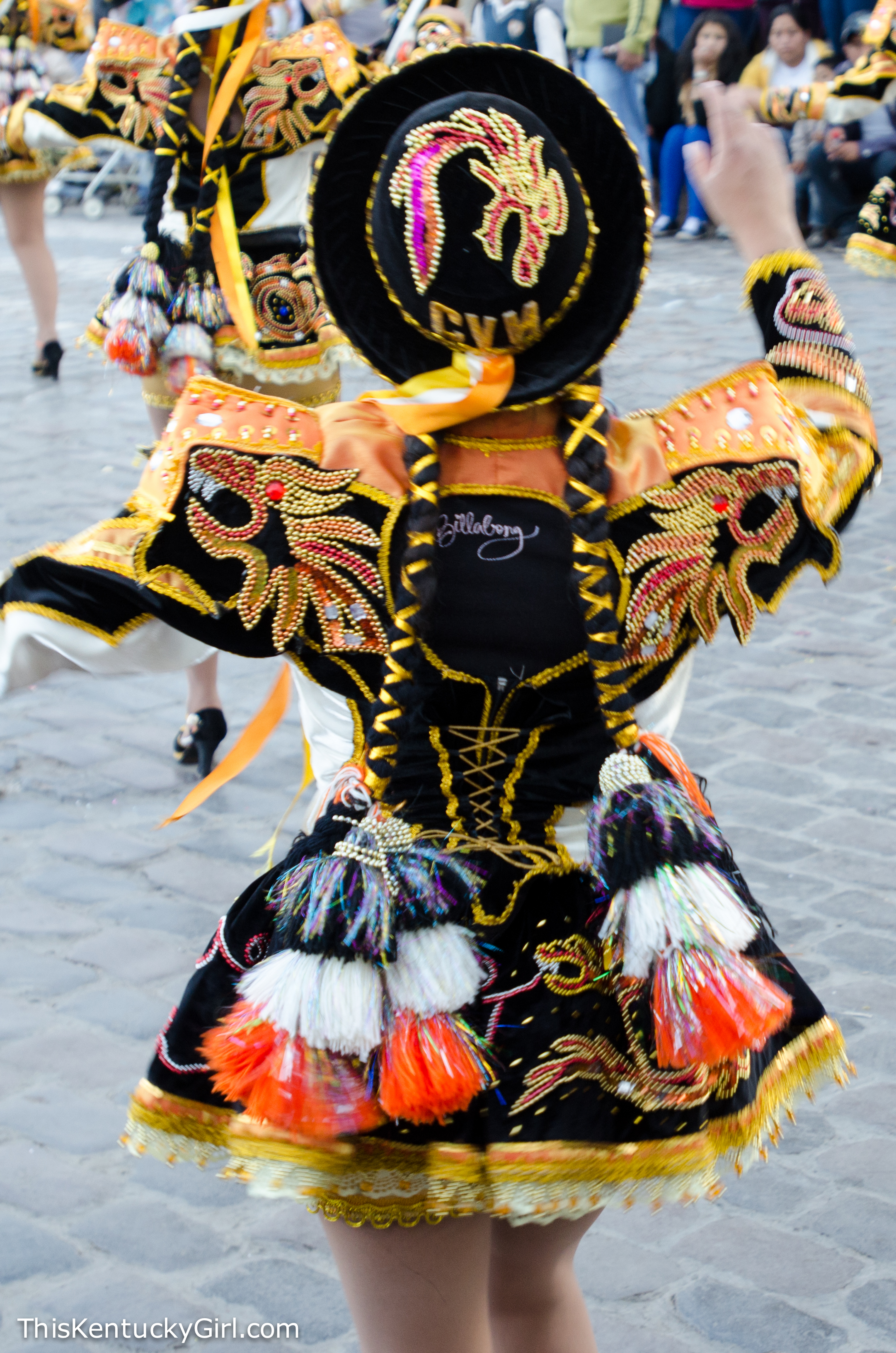
Now, as for Day 373 and what we actually did, well, it was a whole lot of:
followed by:
then:
and, finally:
and it was awesome.
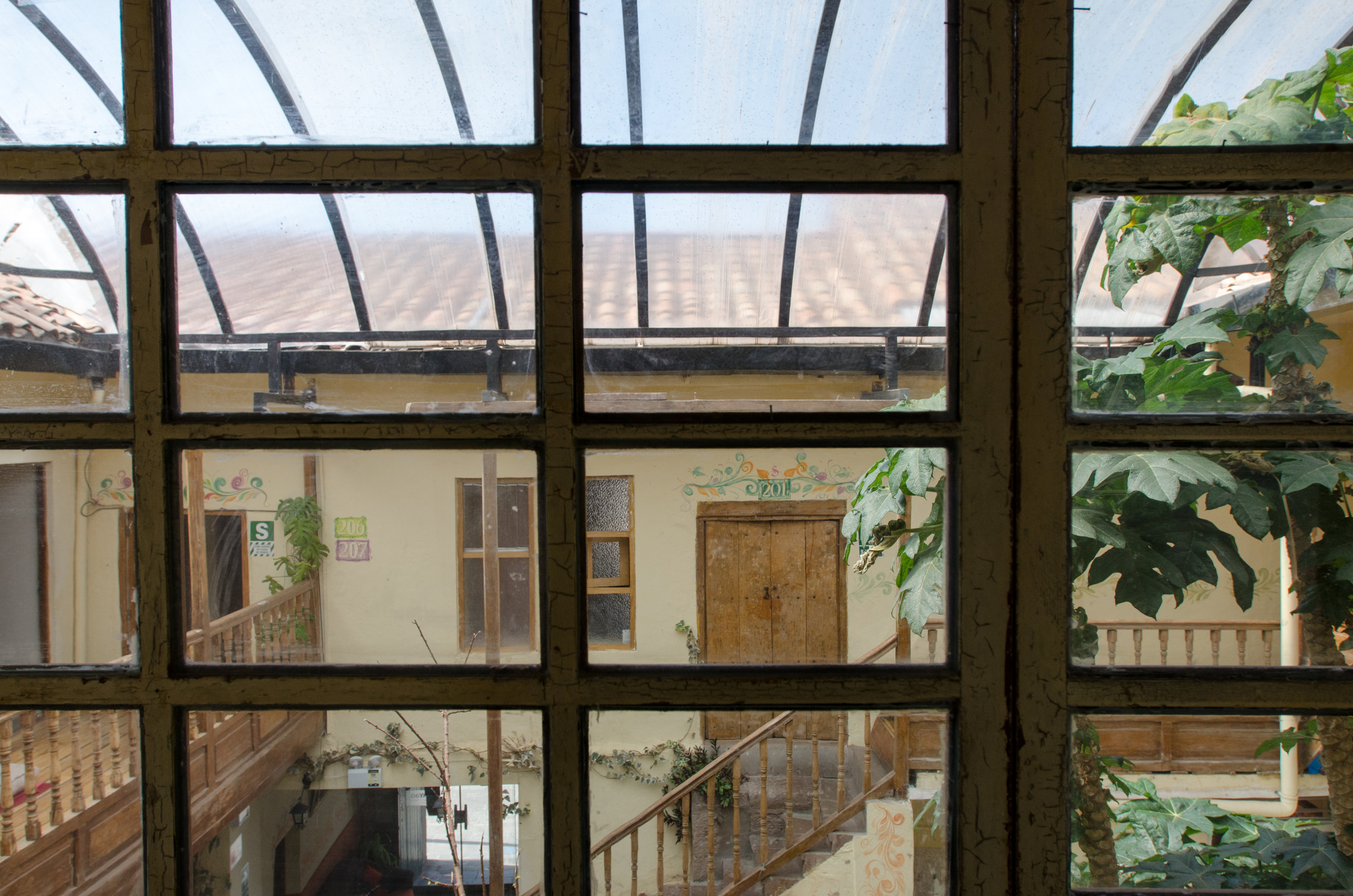
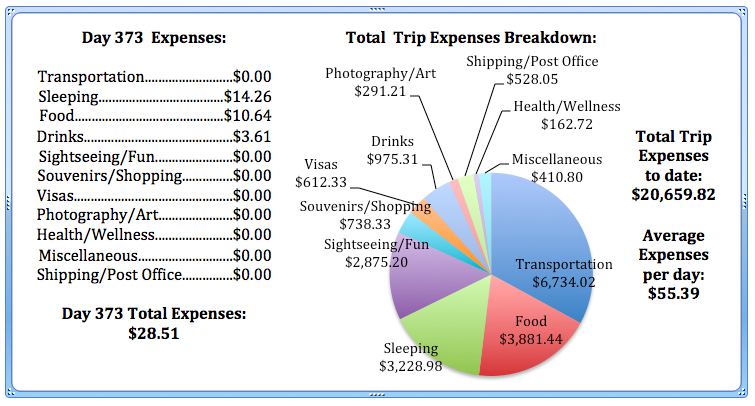
Day 372: Free Walking Tour Cusco
Somehow the Free Walking Tour Cusco escaped us! We didn’t know there was such a thing until we saw a flyer for it in the Choco Museo the day before. Given that we usually love free walking tours, and do them often, we figured we had to take Mom on one. Even though we had to cut it short to get to the airport in time, and it might have been more useful to have gone on at the beginning of our time in Cusco… it was probably the perfect ending to Mom’s tour of Peru! The tour wasn’t our absolute favorite (kudos, Andre in Brasov, that title still belongs to you!) but it was nice and it included free food (ok, a tasting), sunscreen, a lot of information, and even some sunscreen before the tour began!
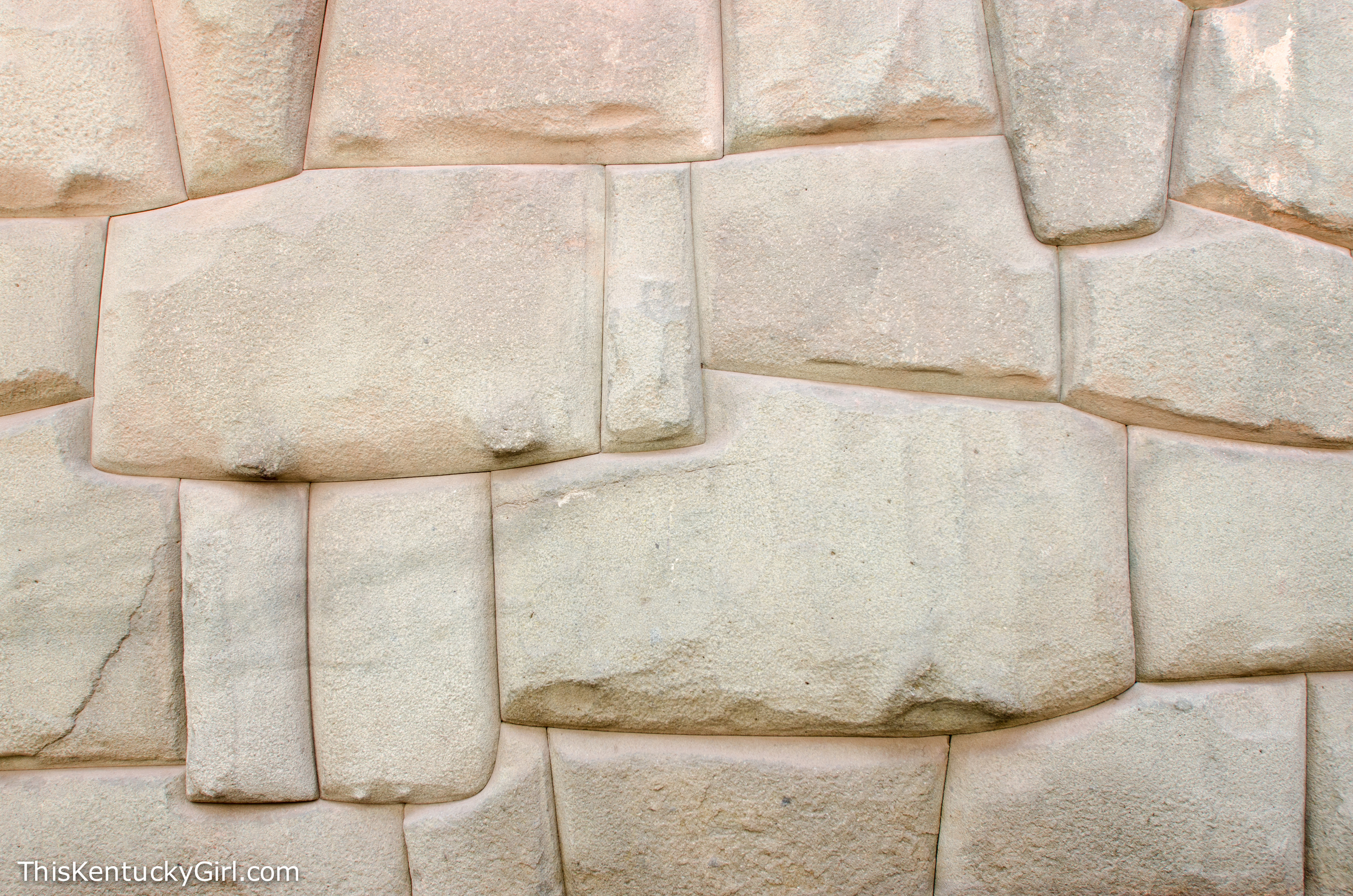
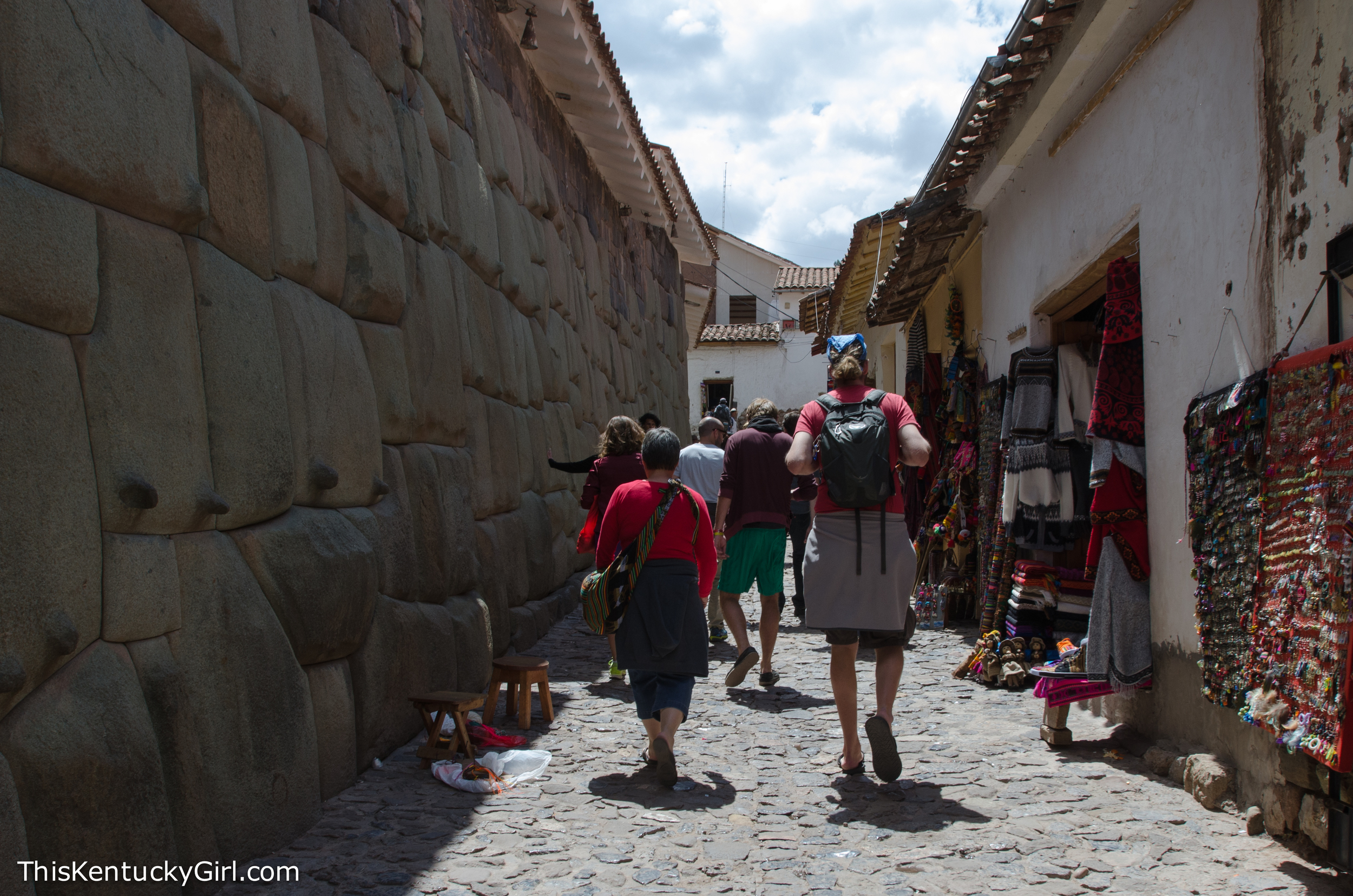
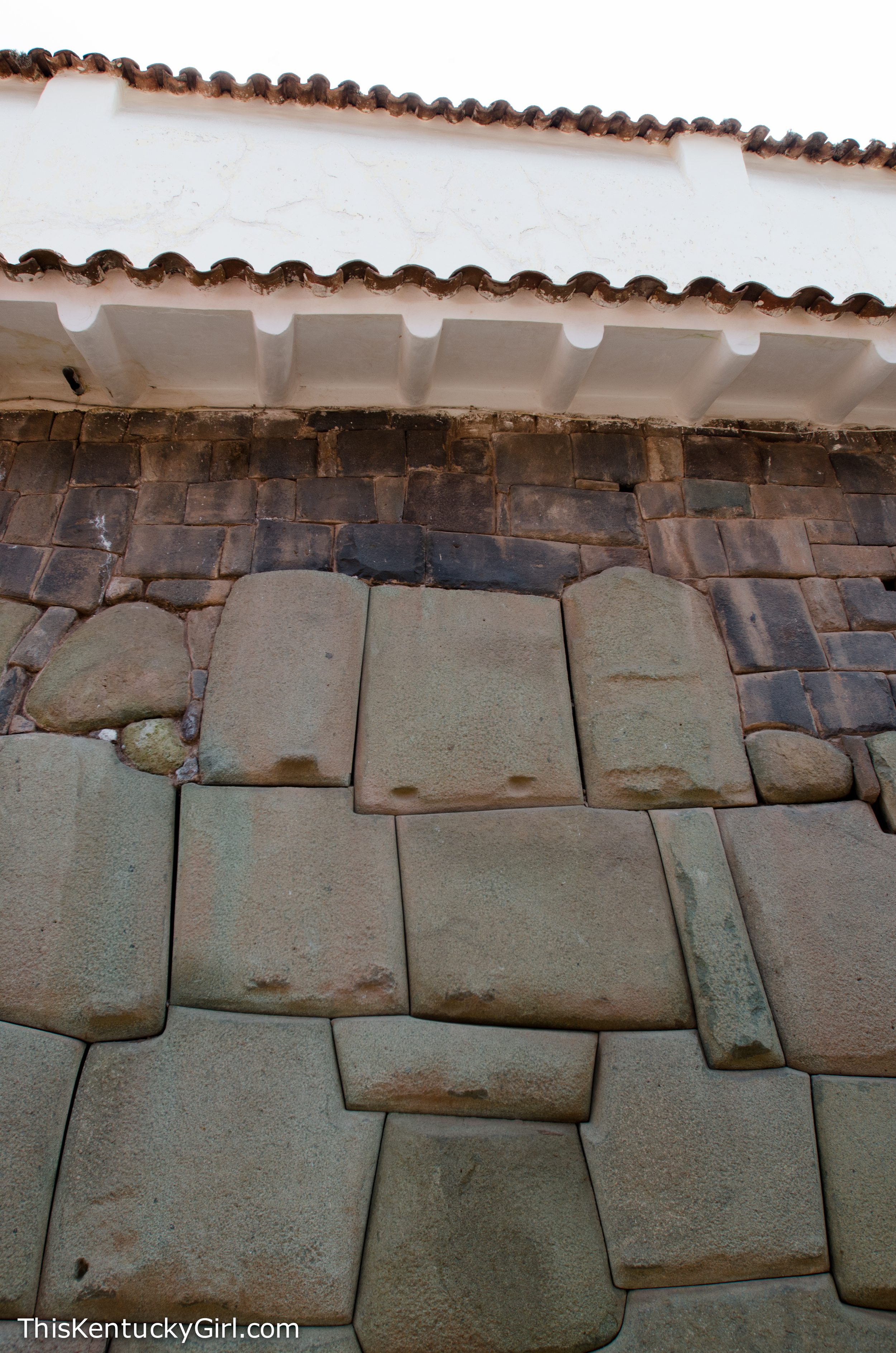
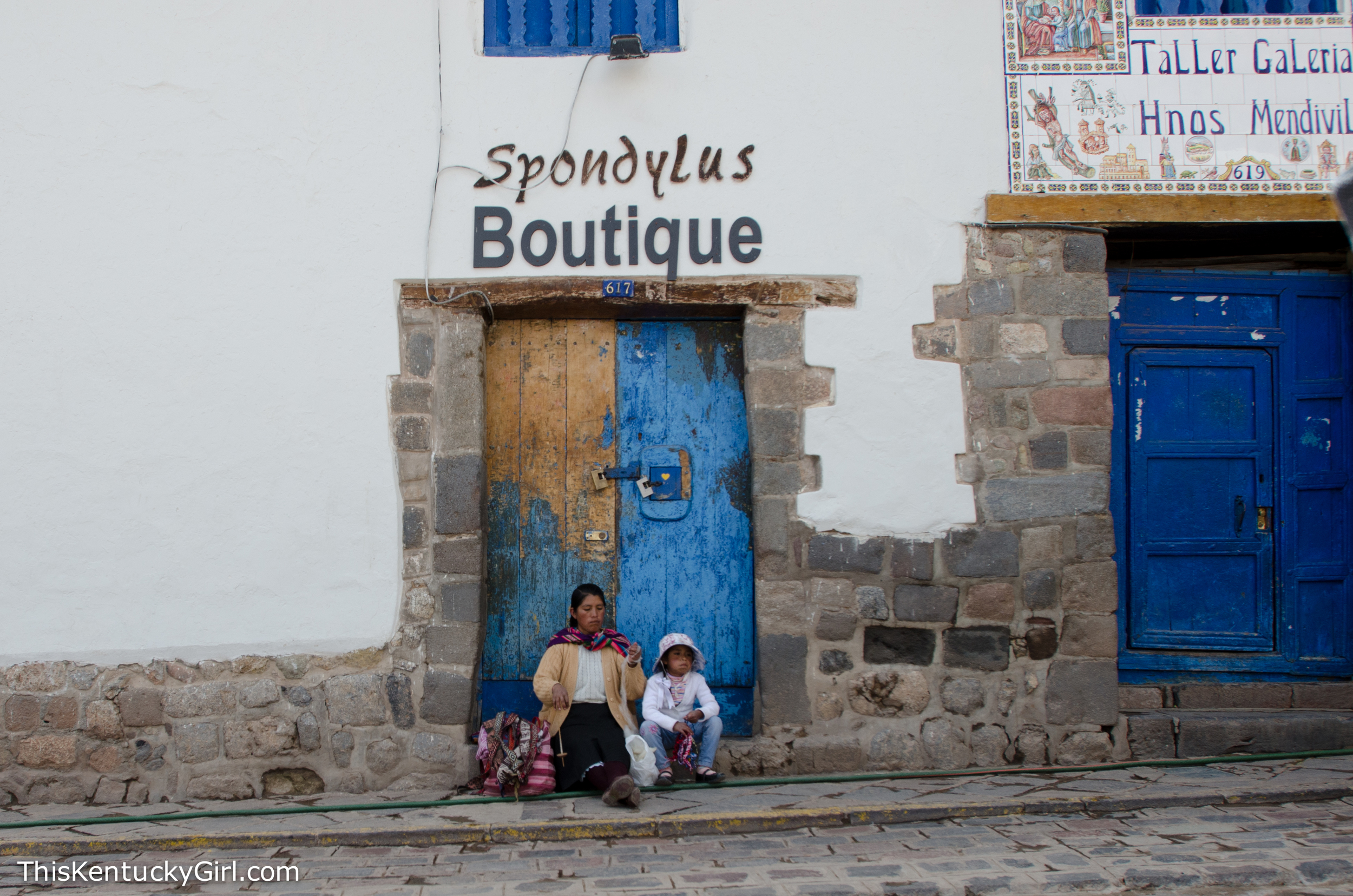
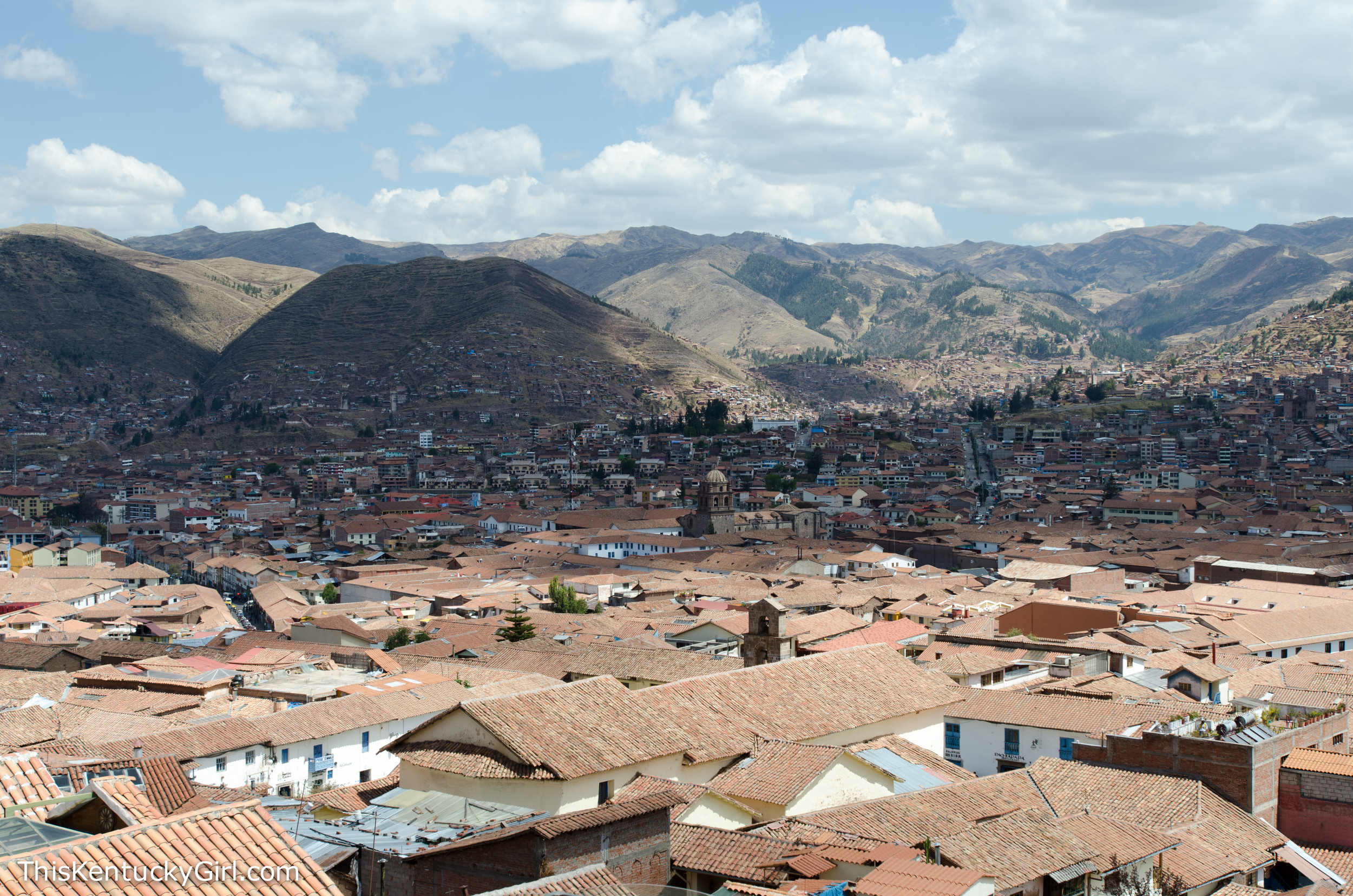
We actually had been almost everywhere that the Free Walking Tour Cusco took us, we just didn’t know everything about the streets, or the restaurants, or the Incan architecture we were standing in front of. It was nice to get a little bit more information and to hear a different perspective about Cusco through our guide. Although, I have to admit, this was the first time where I was a little overwhelmed by our guide’s energy. At times, I wanted to tell him to take a deep breath, but overall I think everyone will agree that too much enthusiasm is better than too little, right?
From where we were staying in Cusco, in the Barrio San Blas, we would take the same route to and from the main square, Plaza de Armas. Part of the tour covered this route, and the area around where we were staying. Our guide equated the neighborhood to Greece, because of the white walls and blue doorways and shutters. I had to chuckle a little at his comparison, ok maaaybe a little, but it doesn’t feel like Greece just because of a few white walls and blue shutters- at least not to me. It is a charming neighborhood, and quiet too! I was glad to hear about the artisans who lived in the area and made note of our guide’s suggestion to duck into one of the open corridors to see what kind of art and handicrafts were being made. We climbed up the hill, and took in this beautiful view of Cusco before we ducked out to head to the airport to drop Mom off. Luckily, Andrew is used to me getting emotional over goodbyes, and held my hand in the taxi back into town as I tried not to cry, knowing I would see her and so many more in just a couple of months!
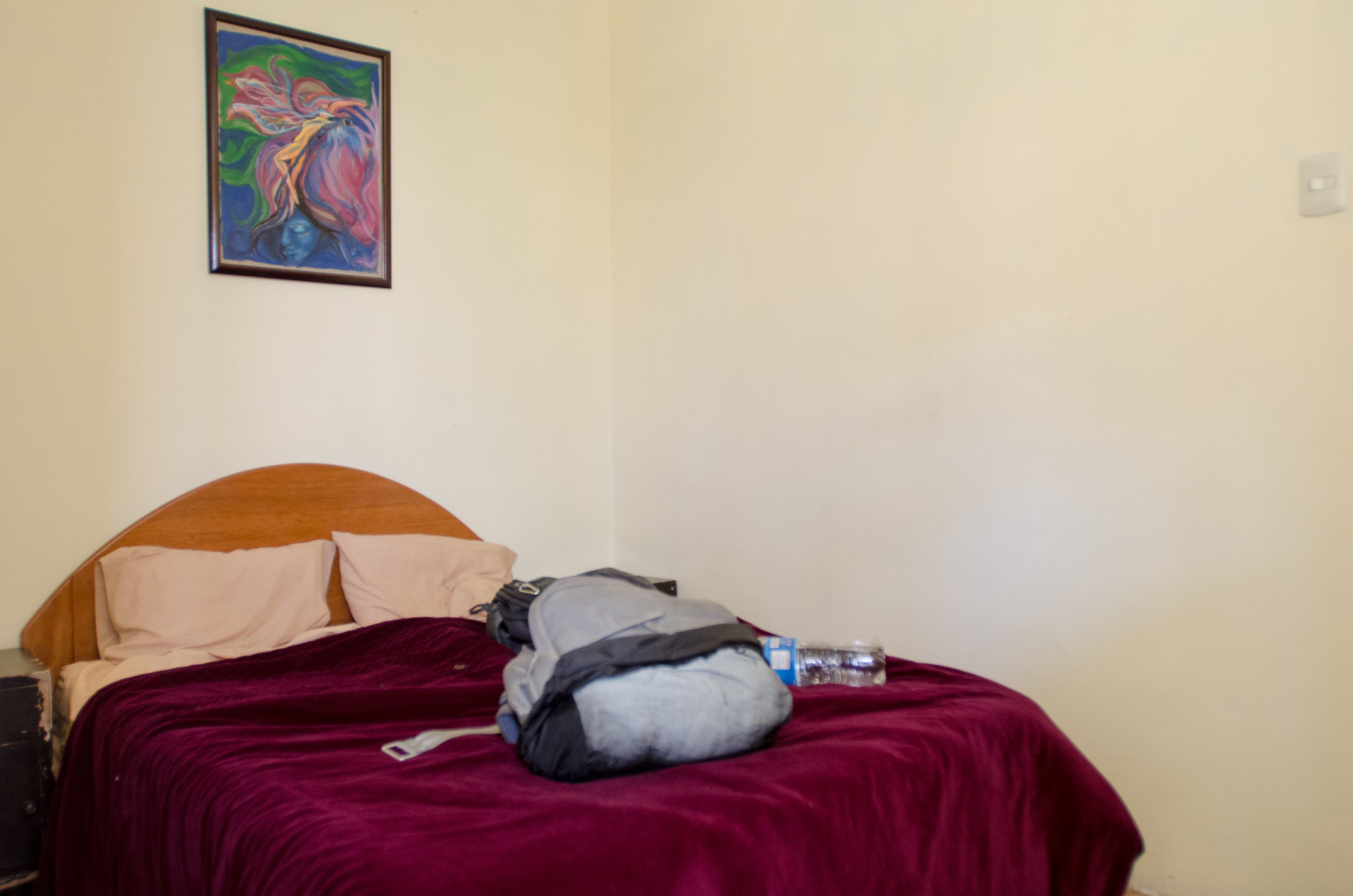
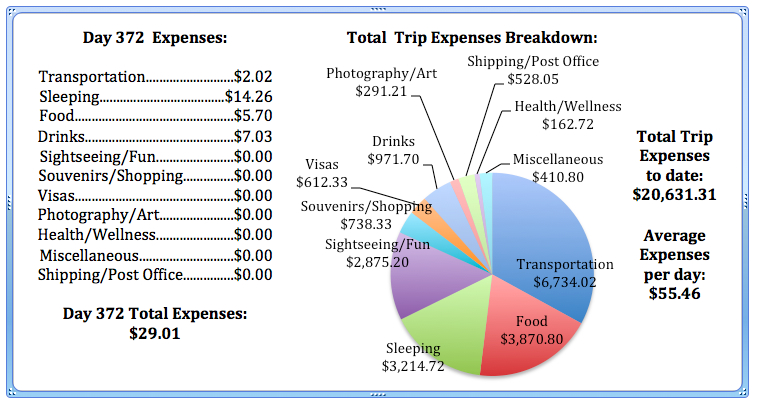
Day 371: Back in Cusco
Momma’s last full day in Peru! We’ve been moving so fast through Peru, that we were content with wandering around the city of Cusco and seeing what we could find. We hadn’t heard very good things about the Inca Museum(s) so instead we headed towards one of the higher rated museums first, The Center for Traditional Textiles, walking past Quirikancha, once the most important temple in the Incan Empire, and then through the many squares of Cusco, ending up at the Chocolate Museum.
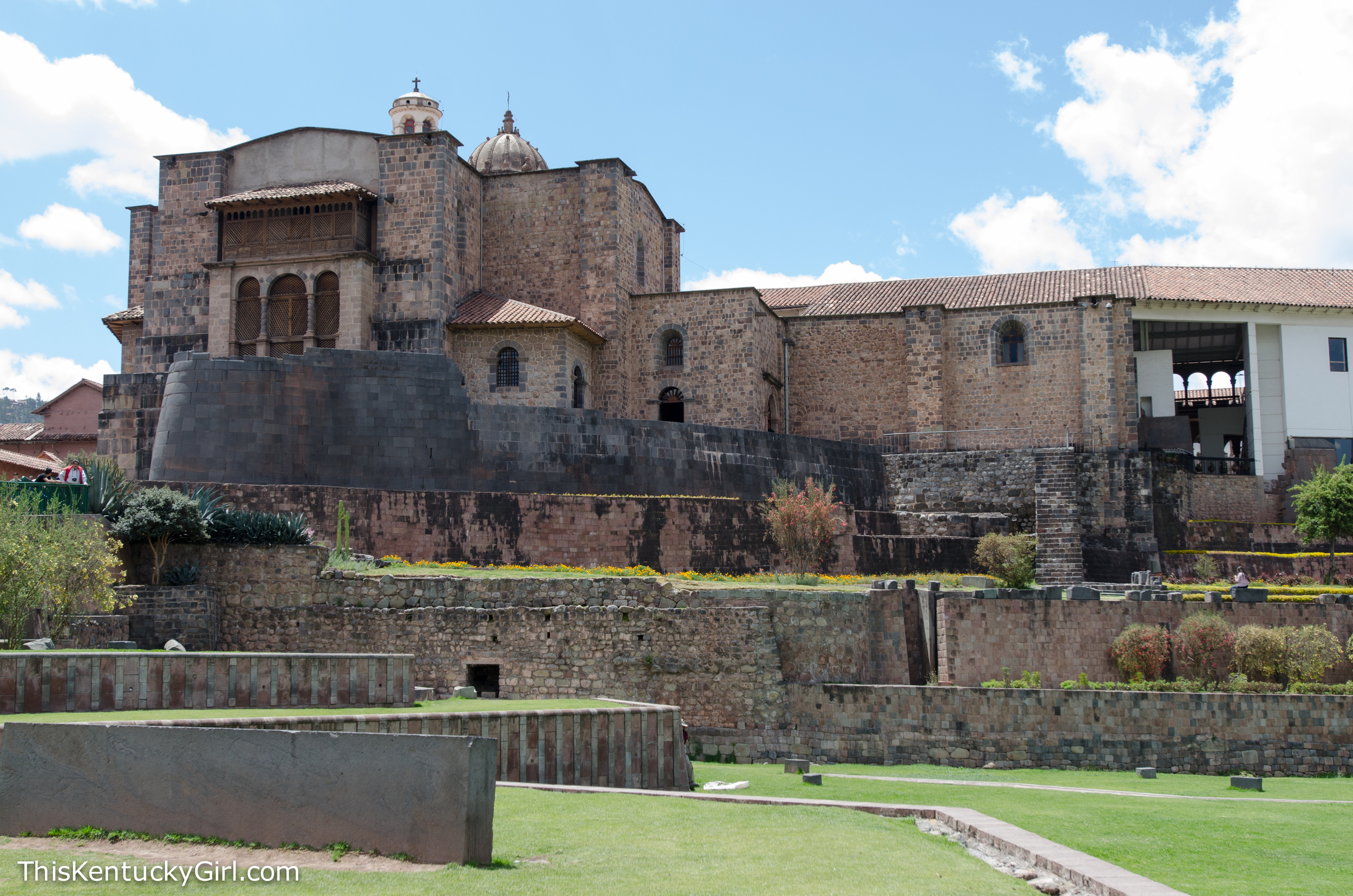
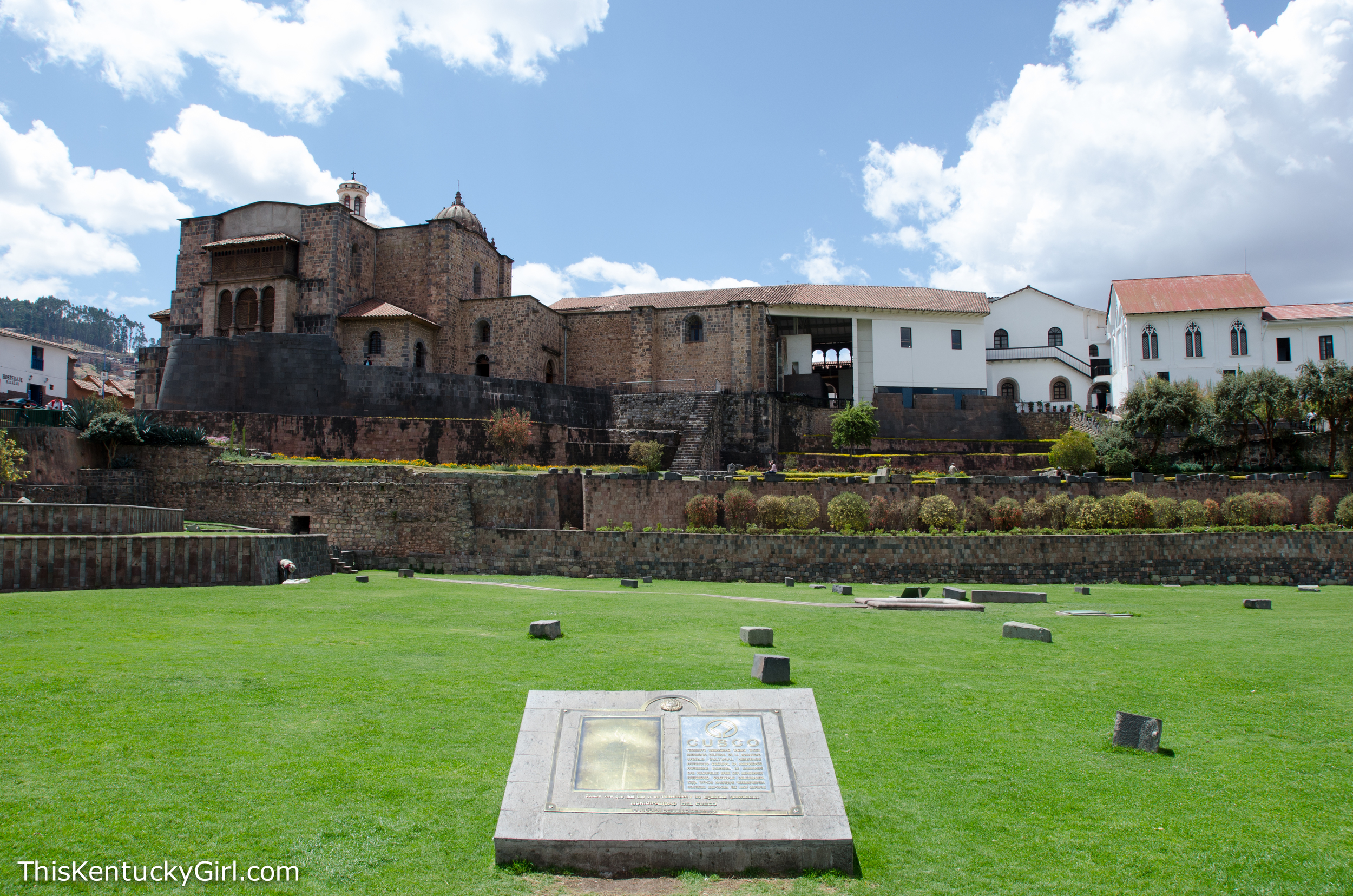
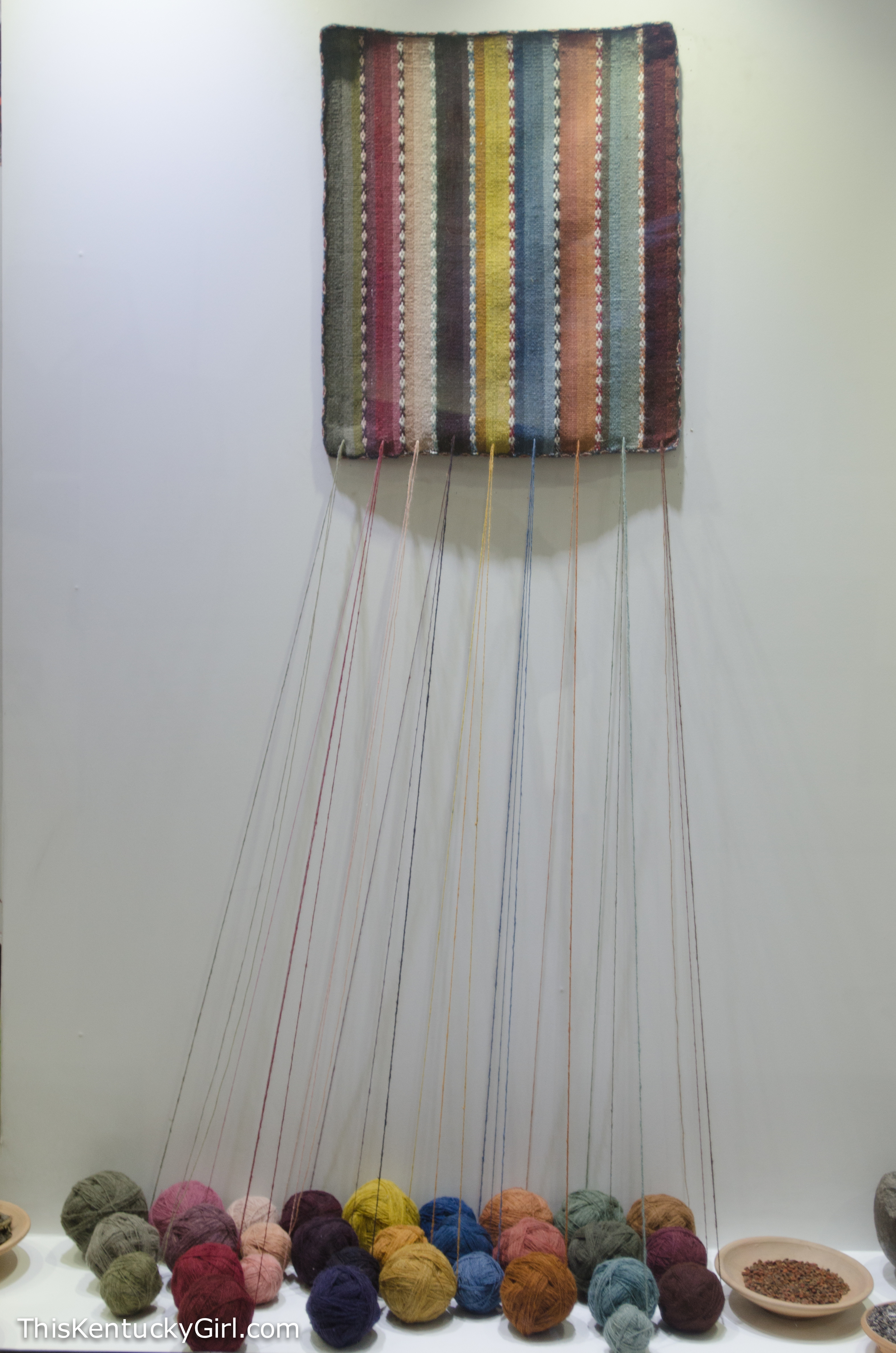
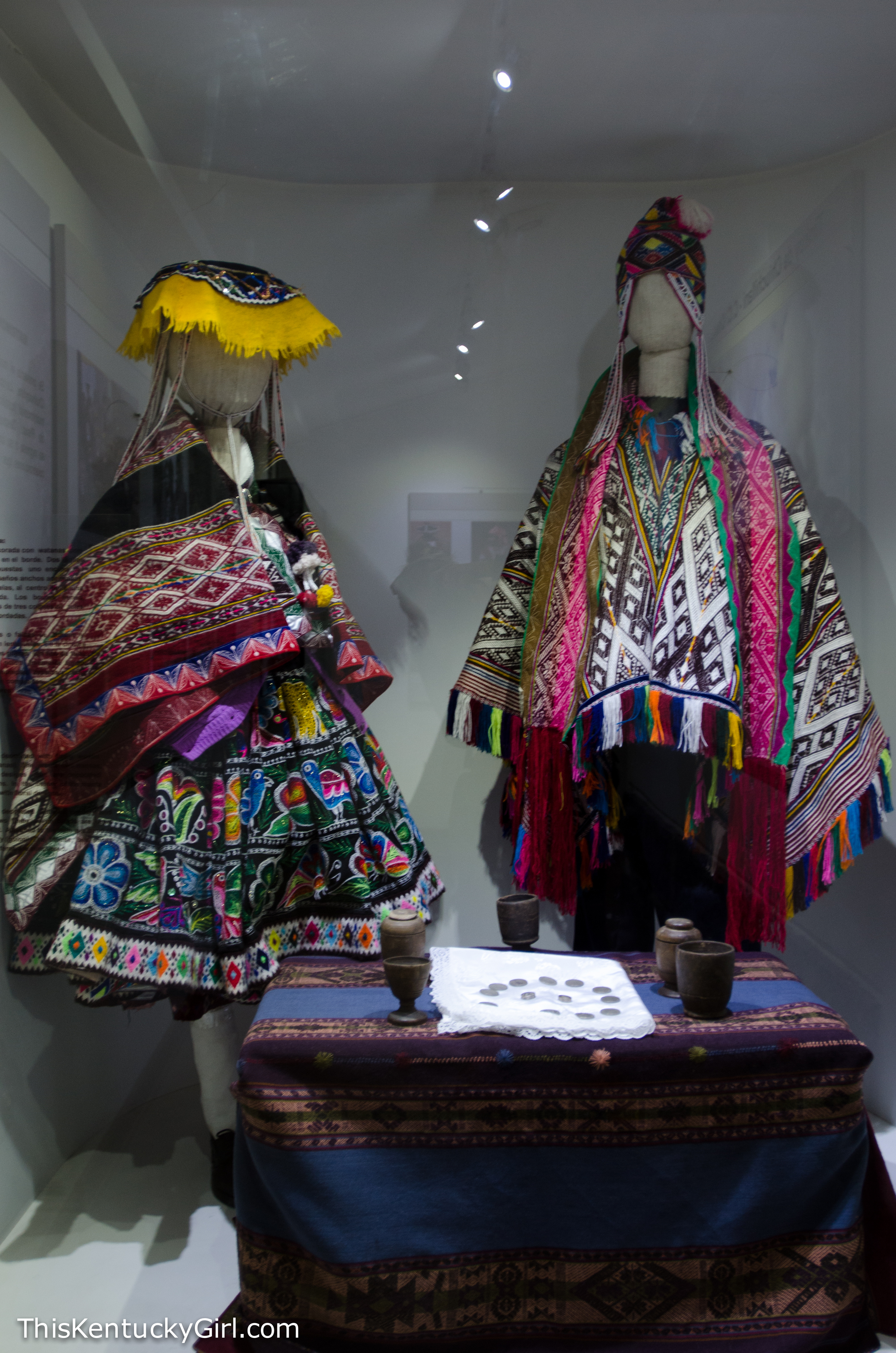
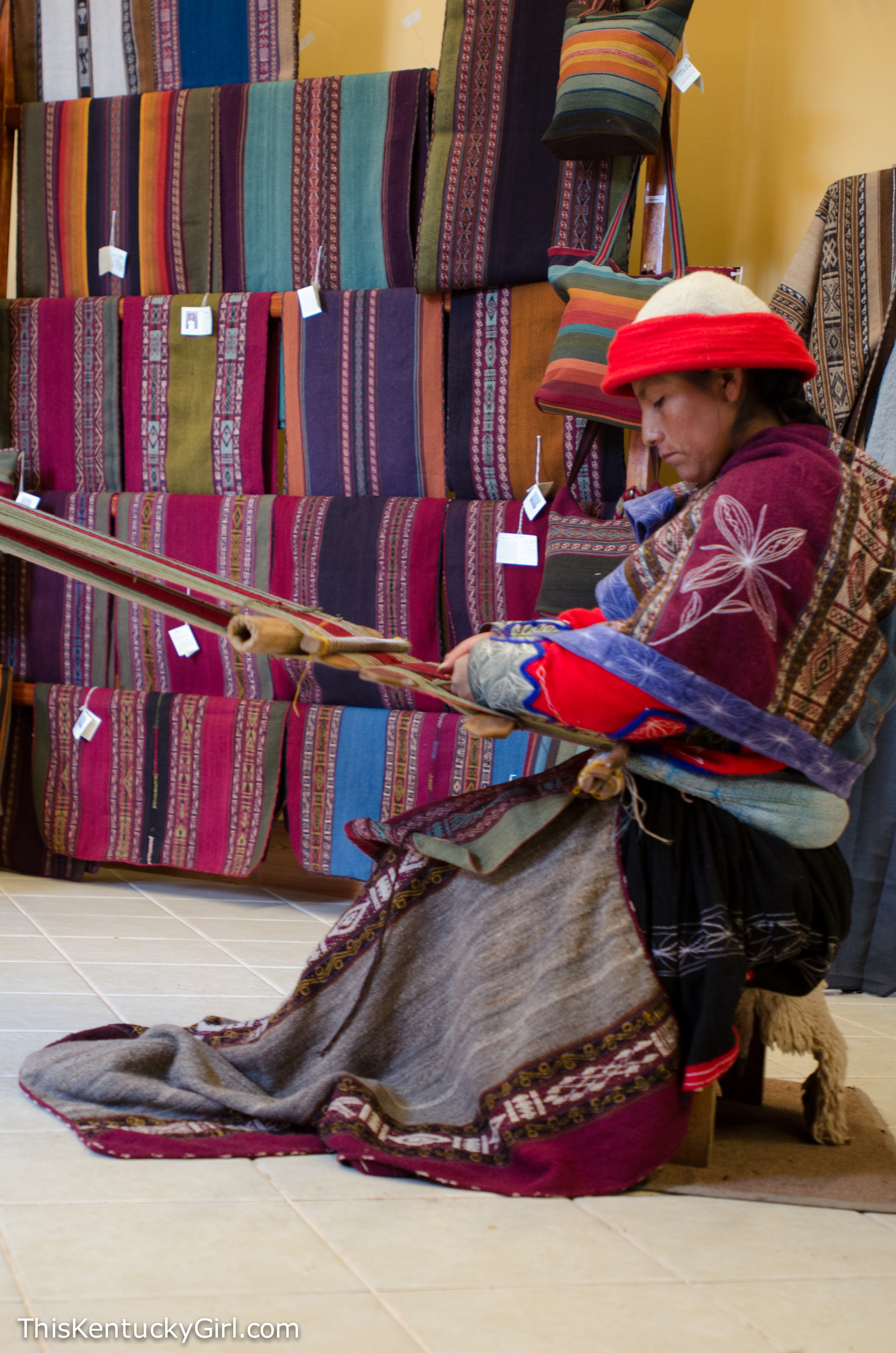
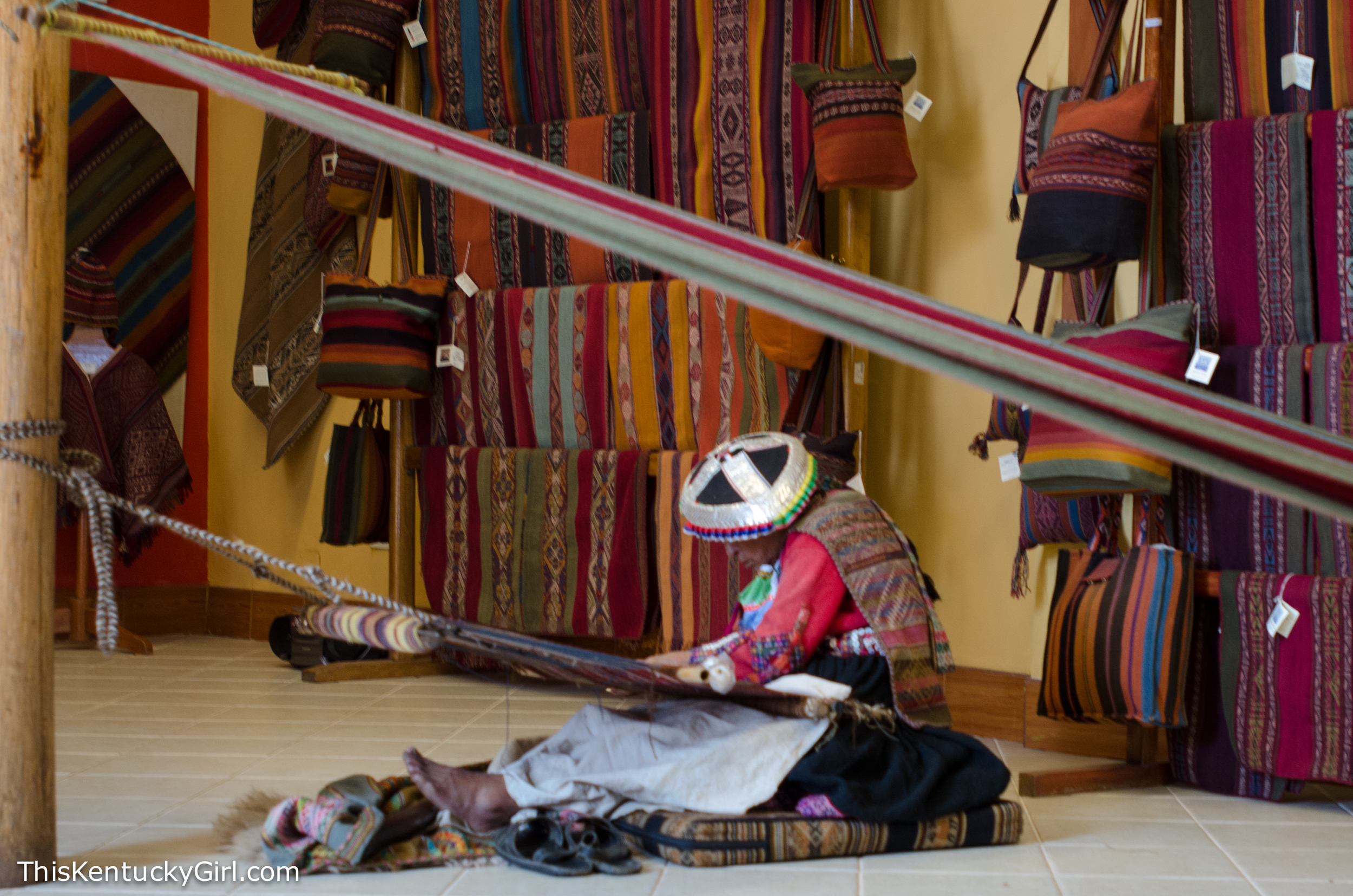
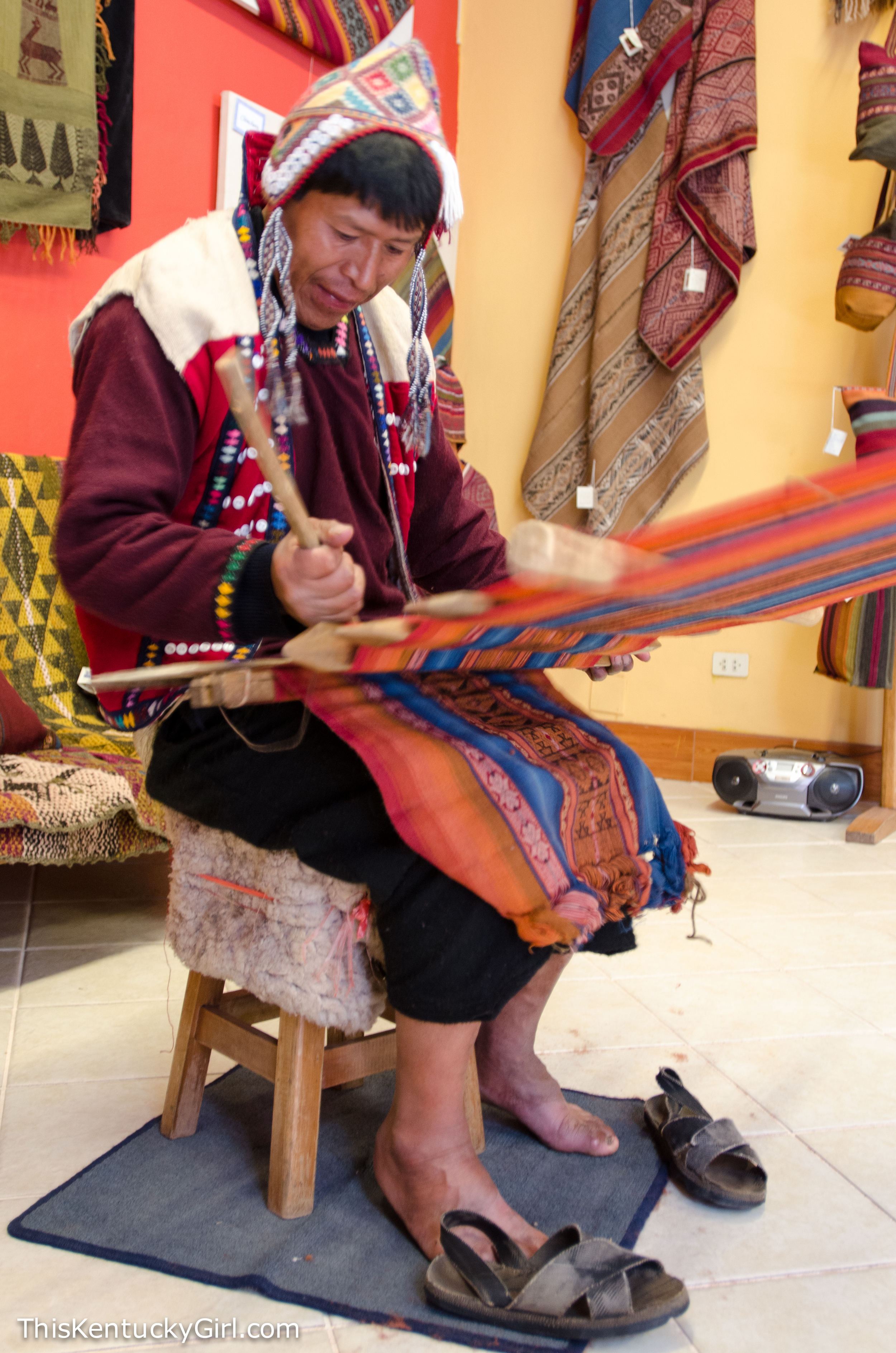
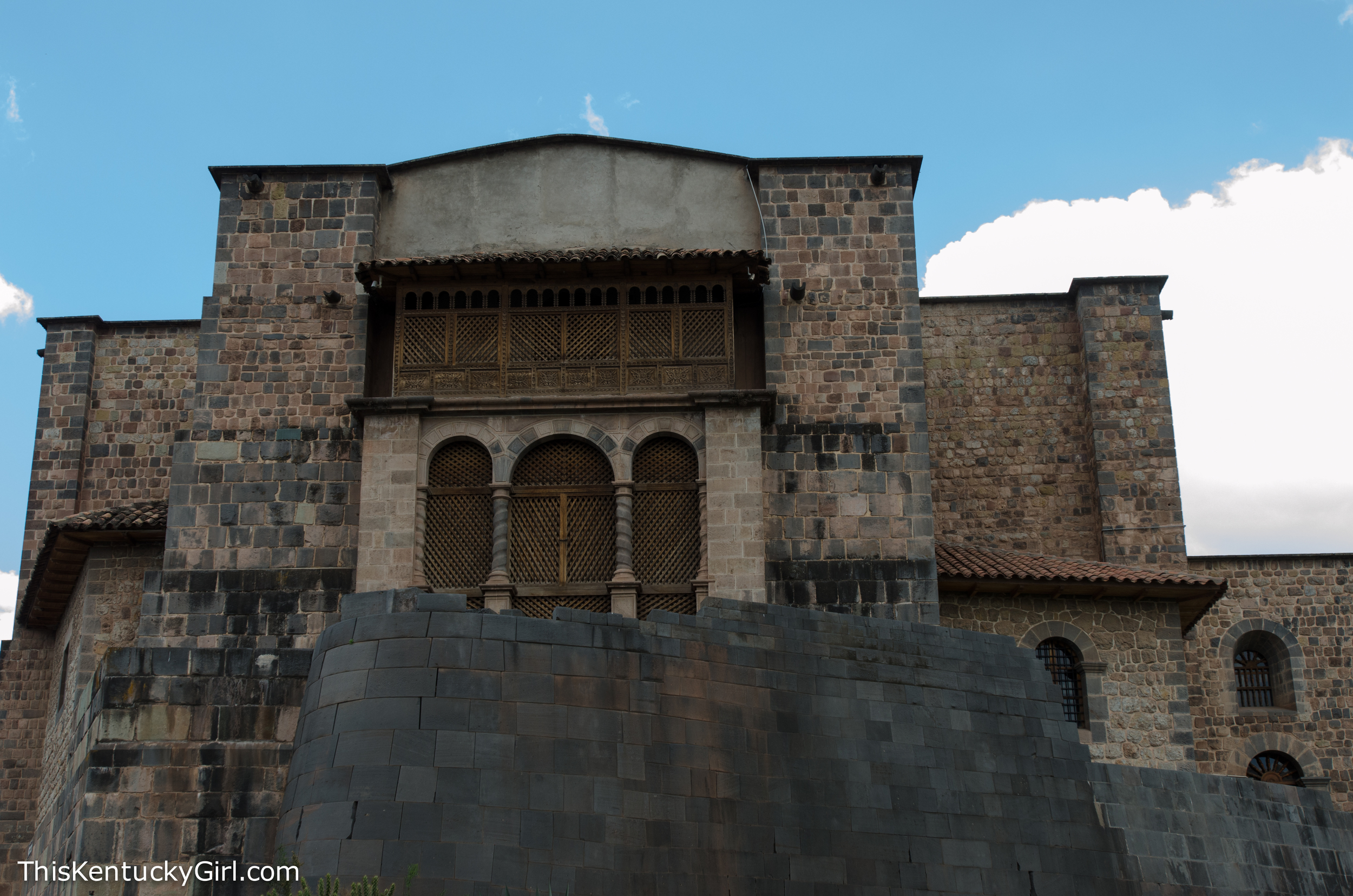
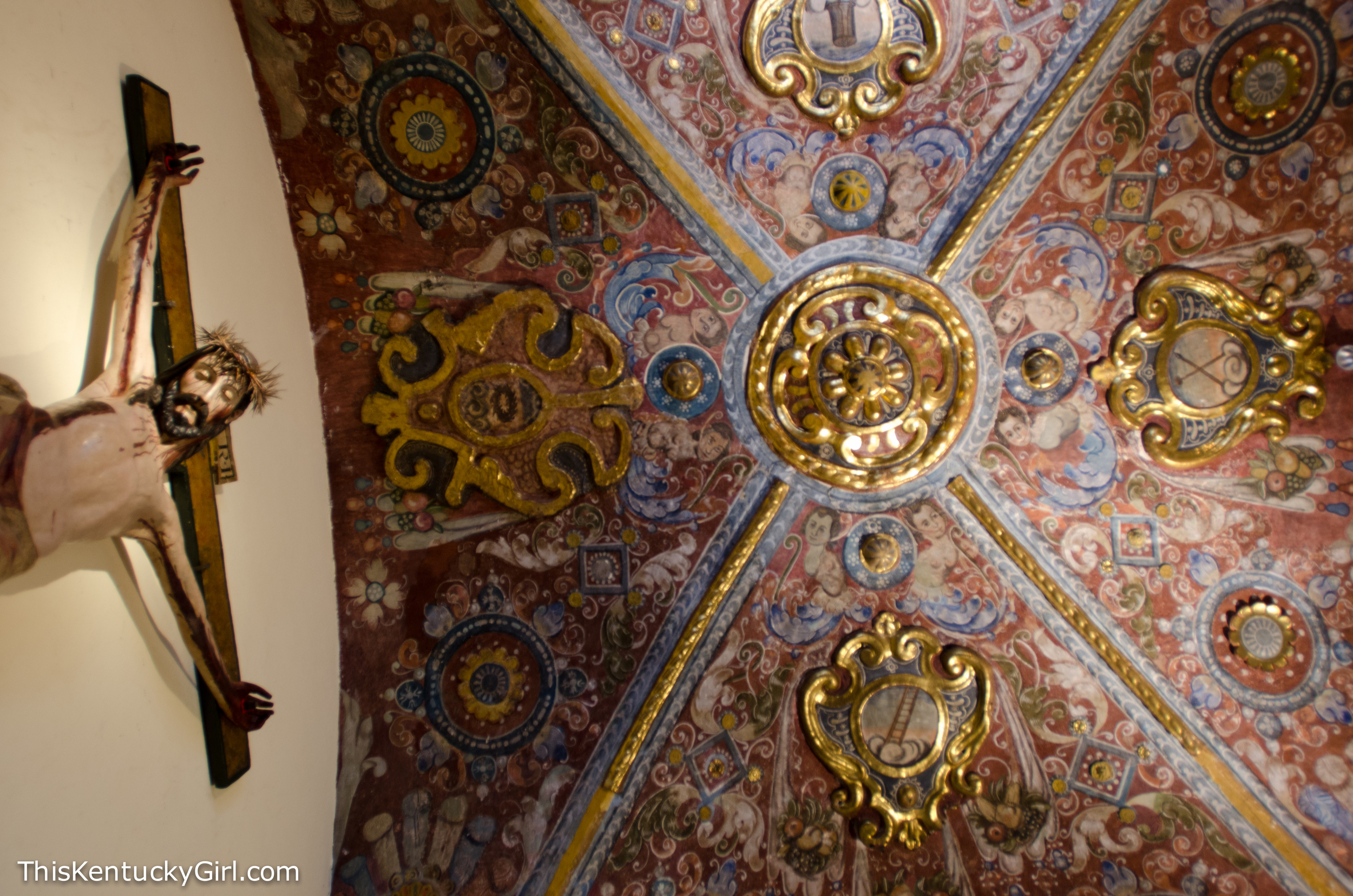
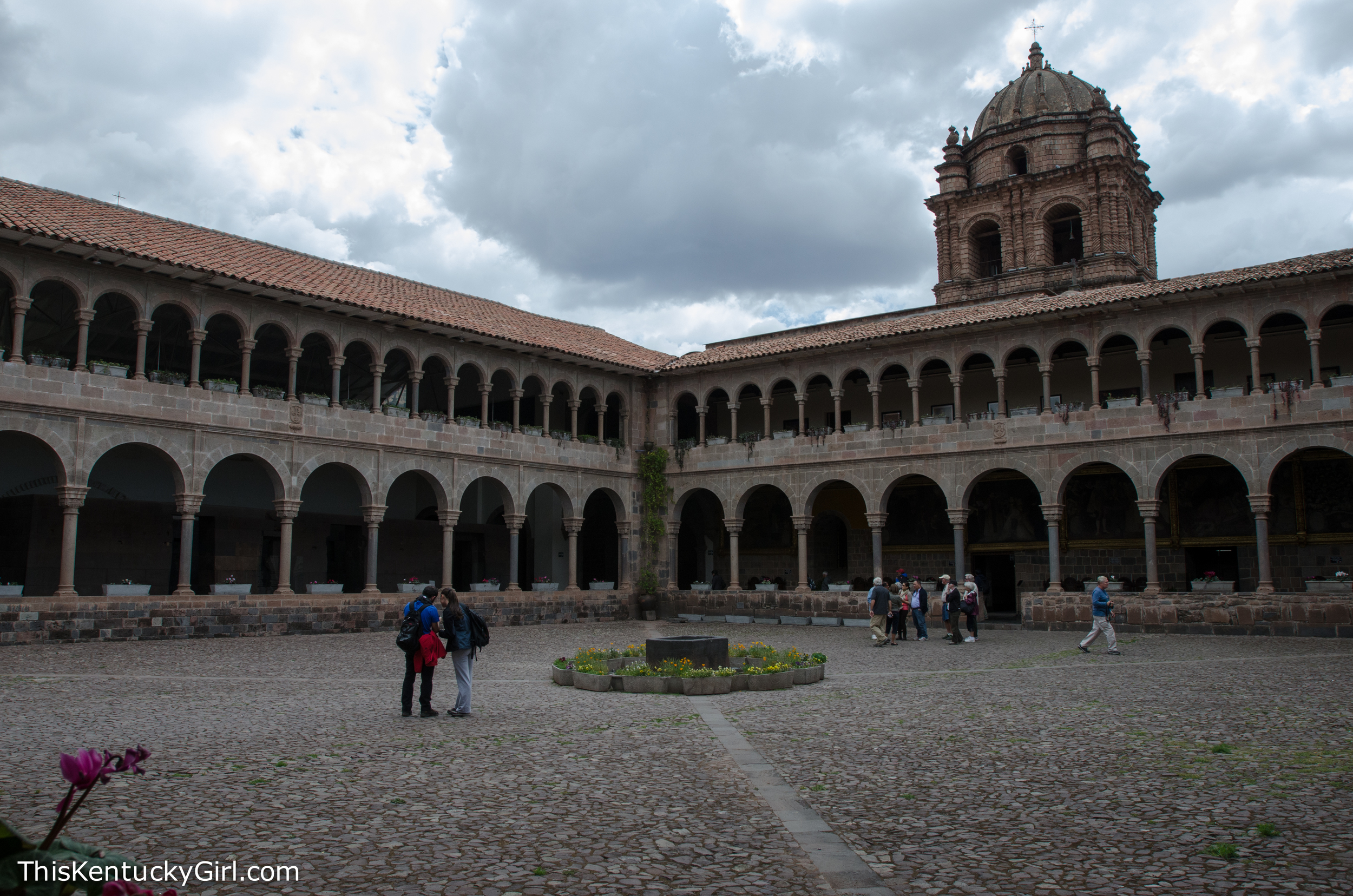
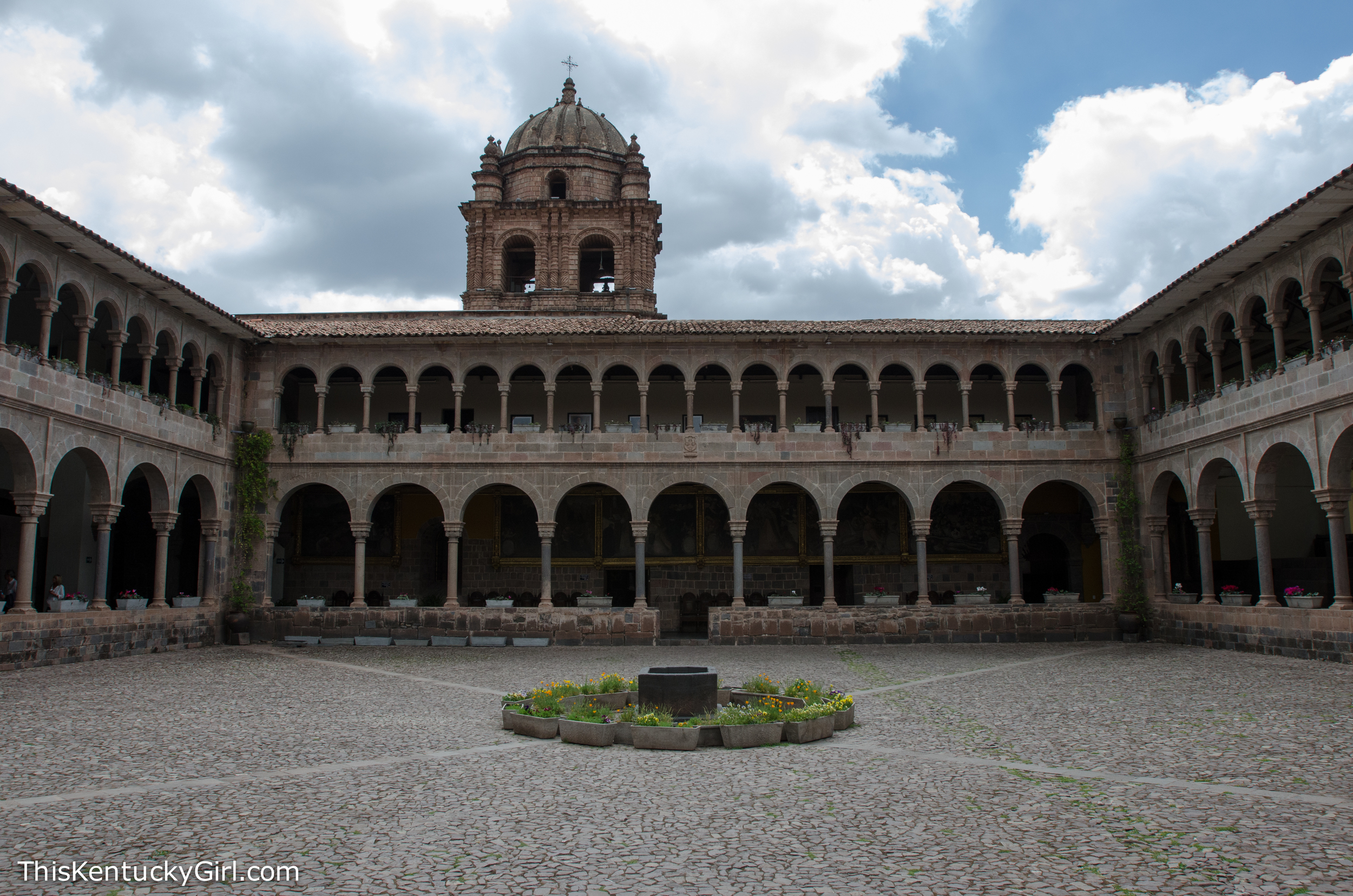
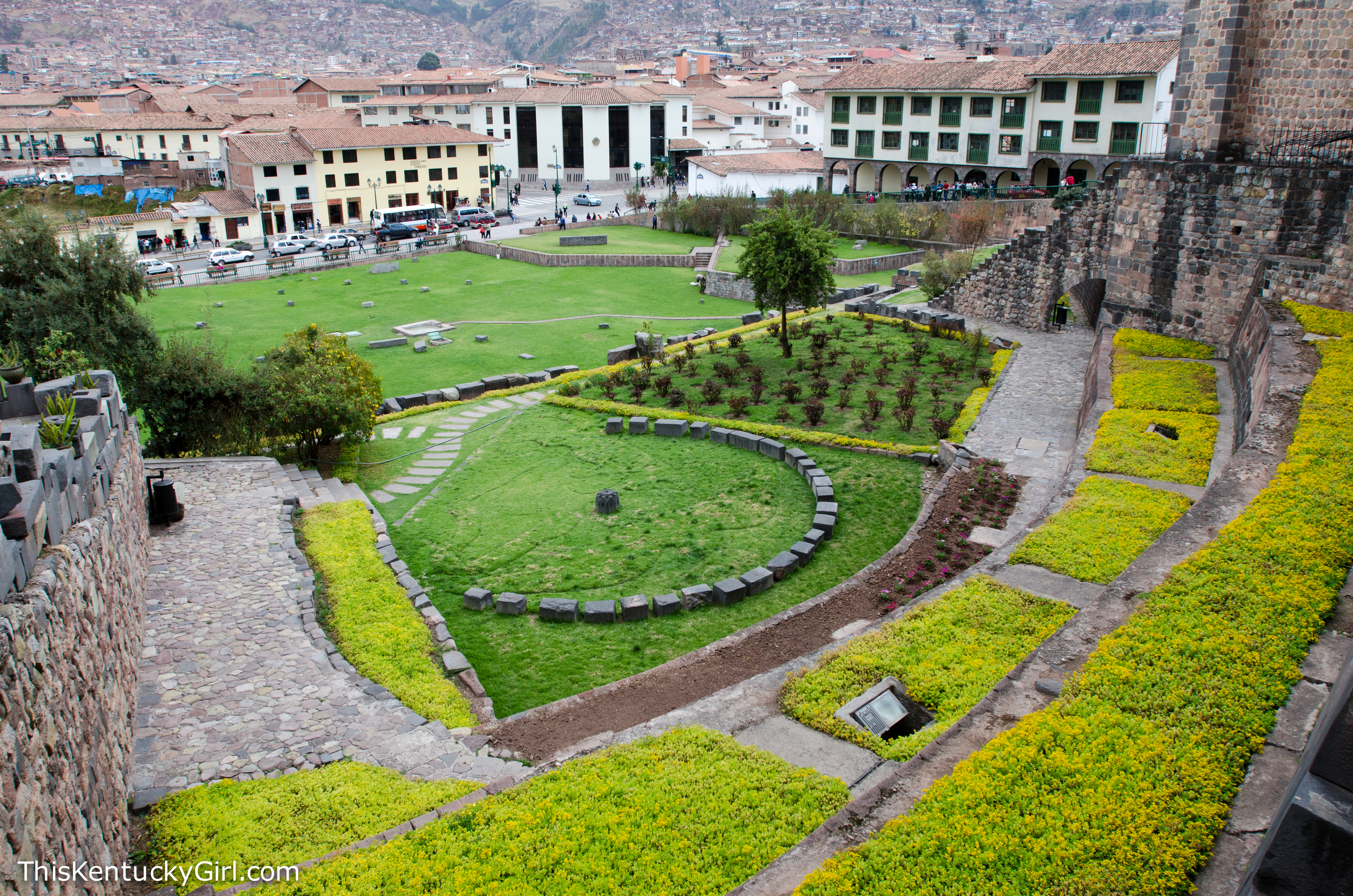
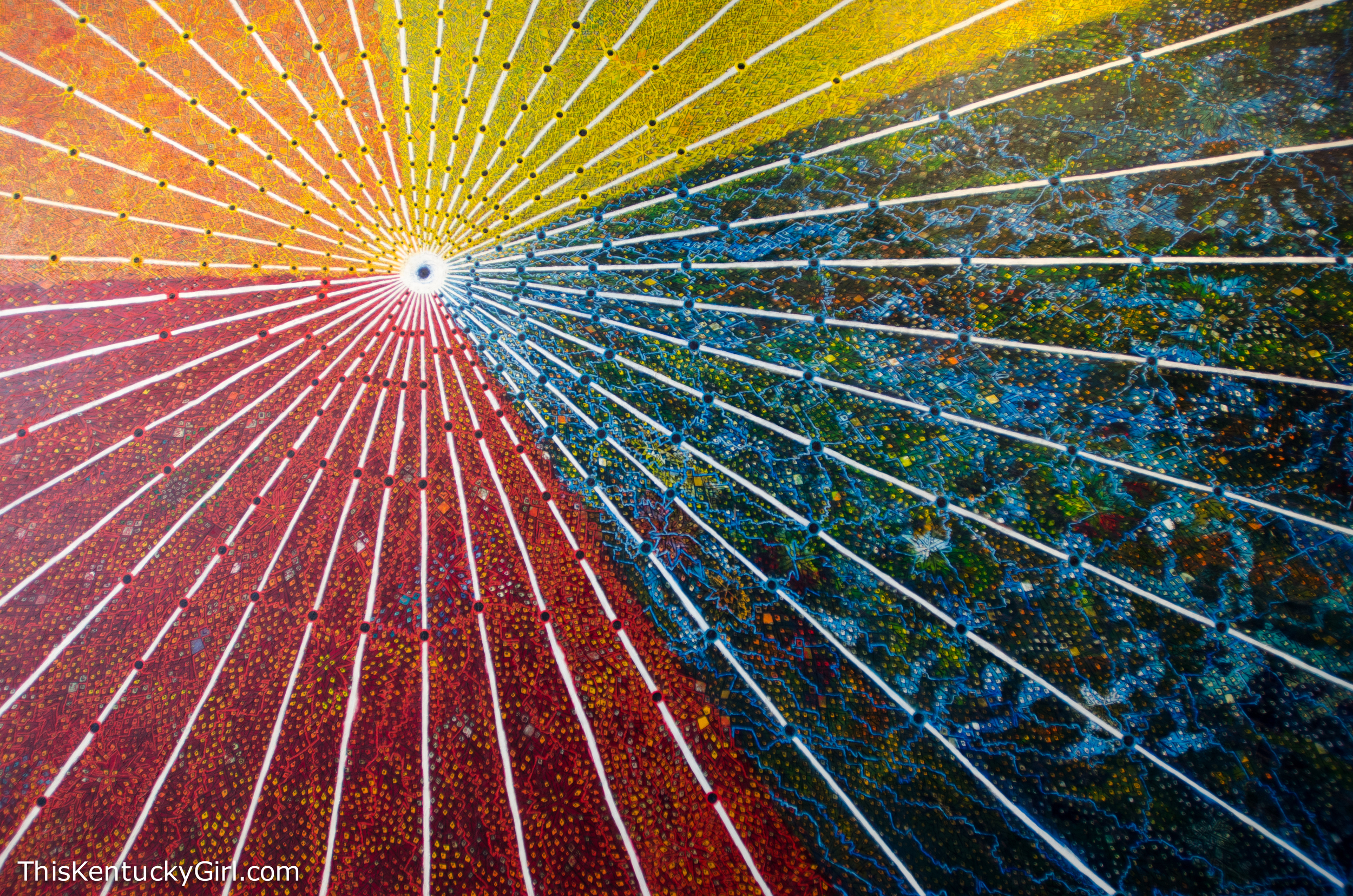
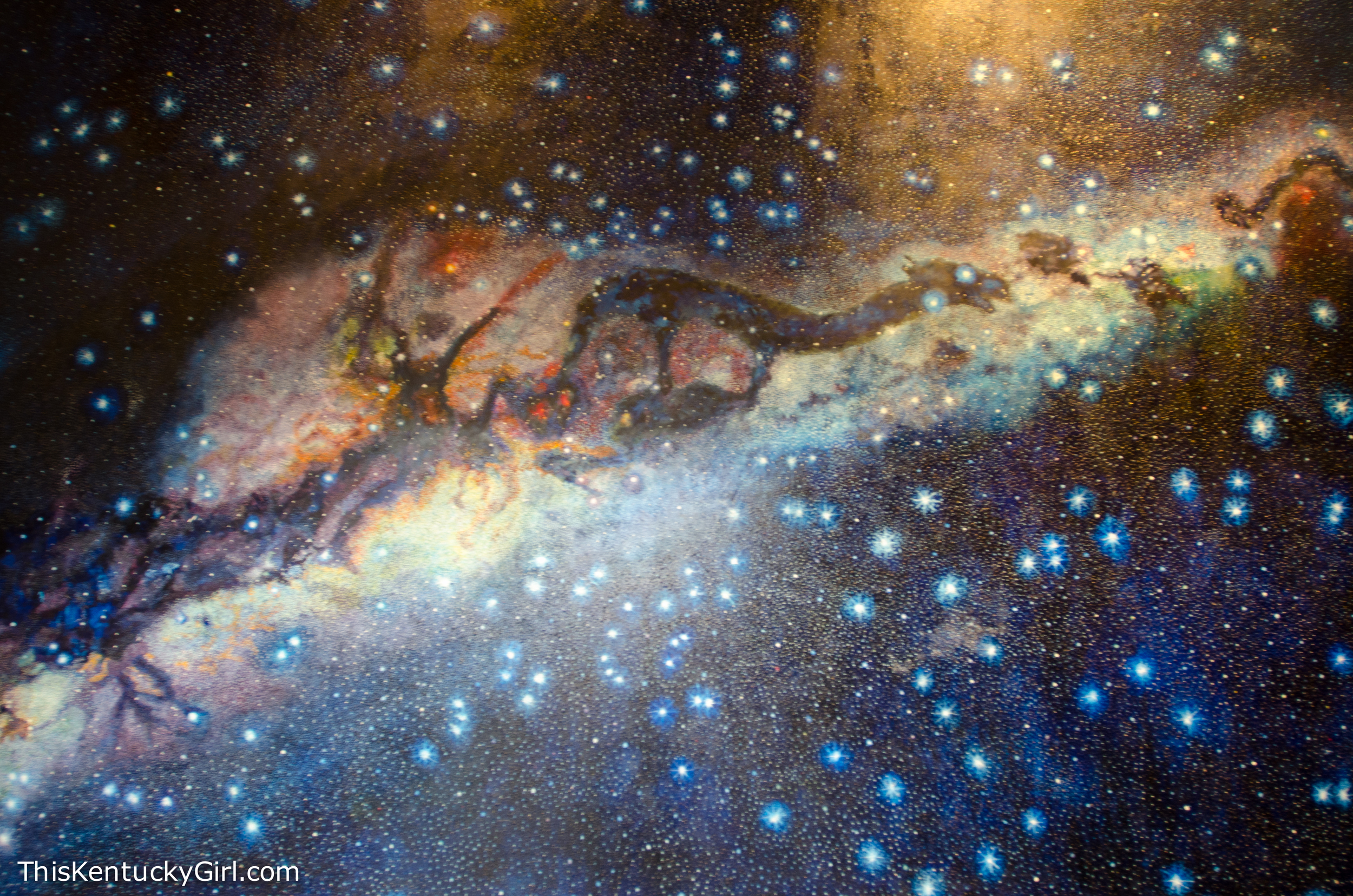
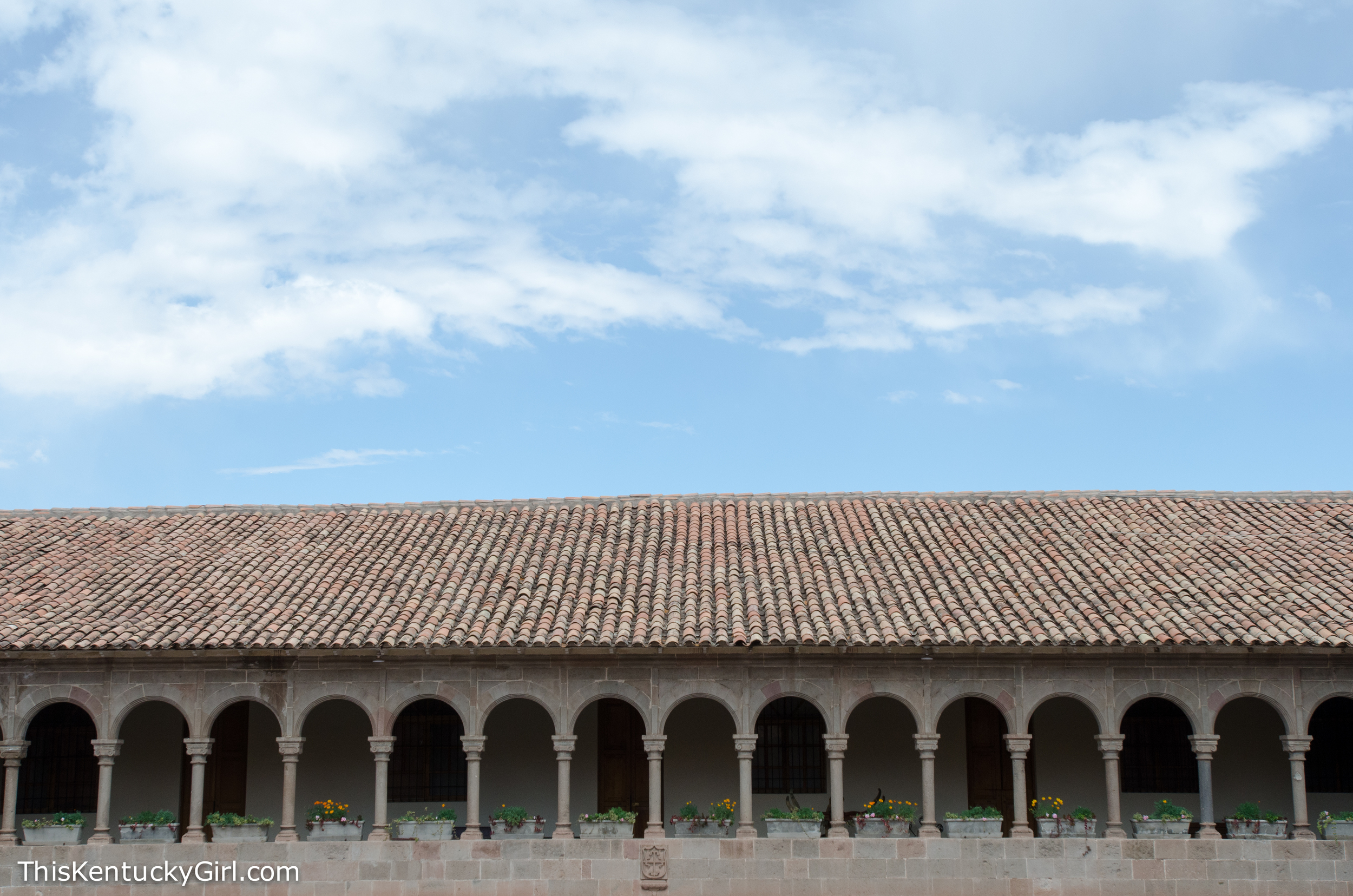
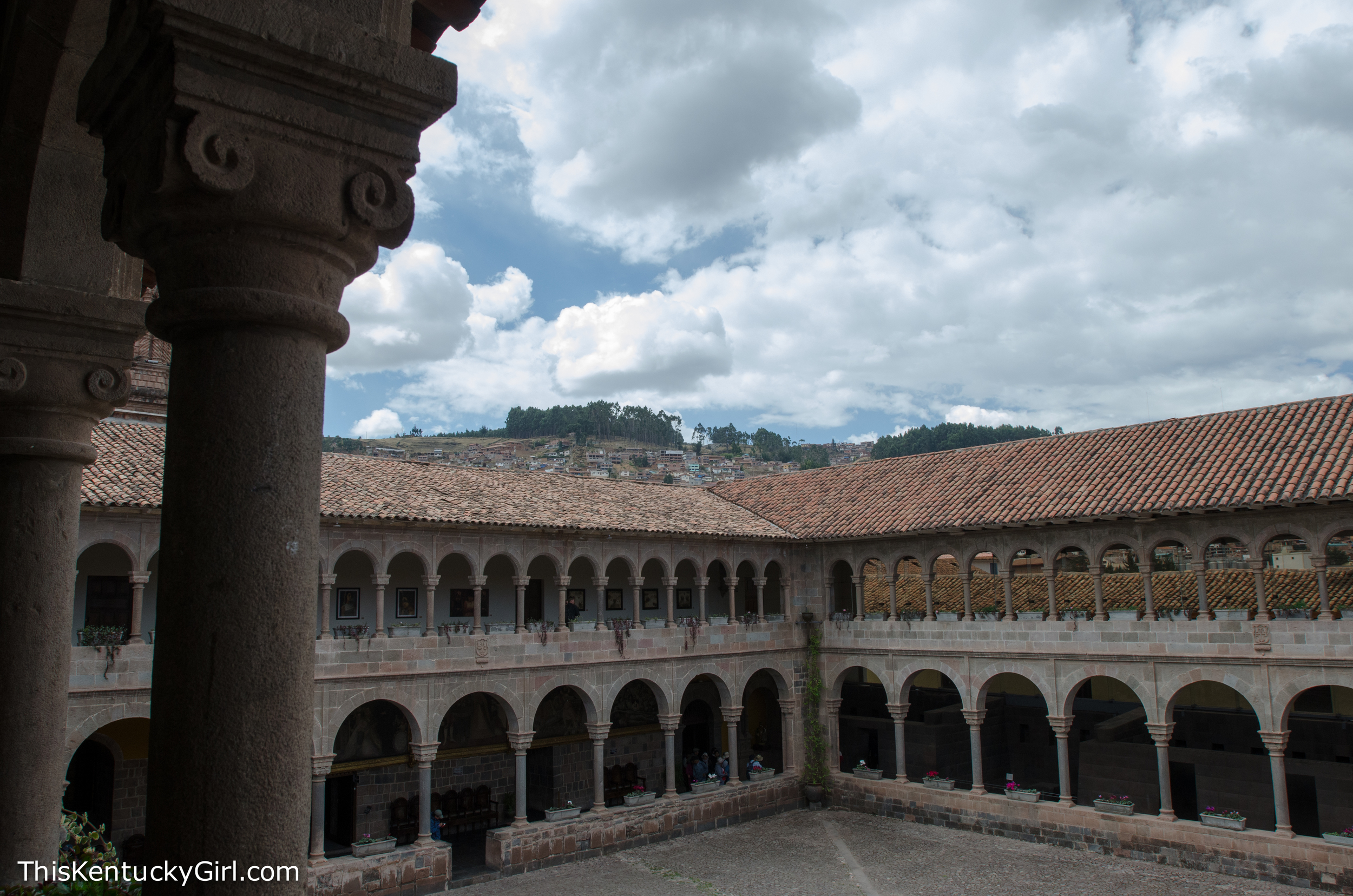
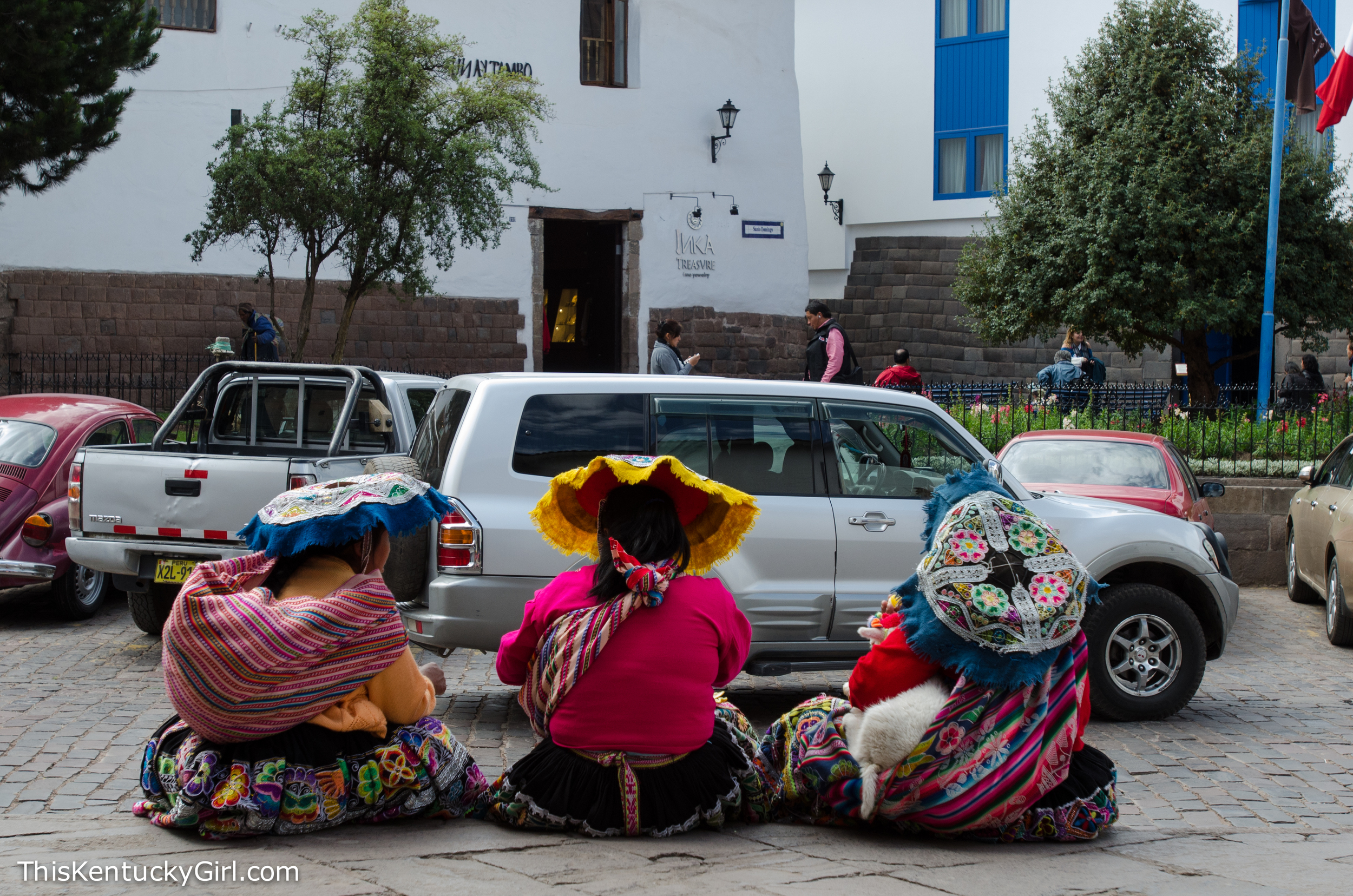
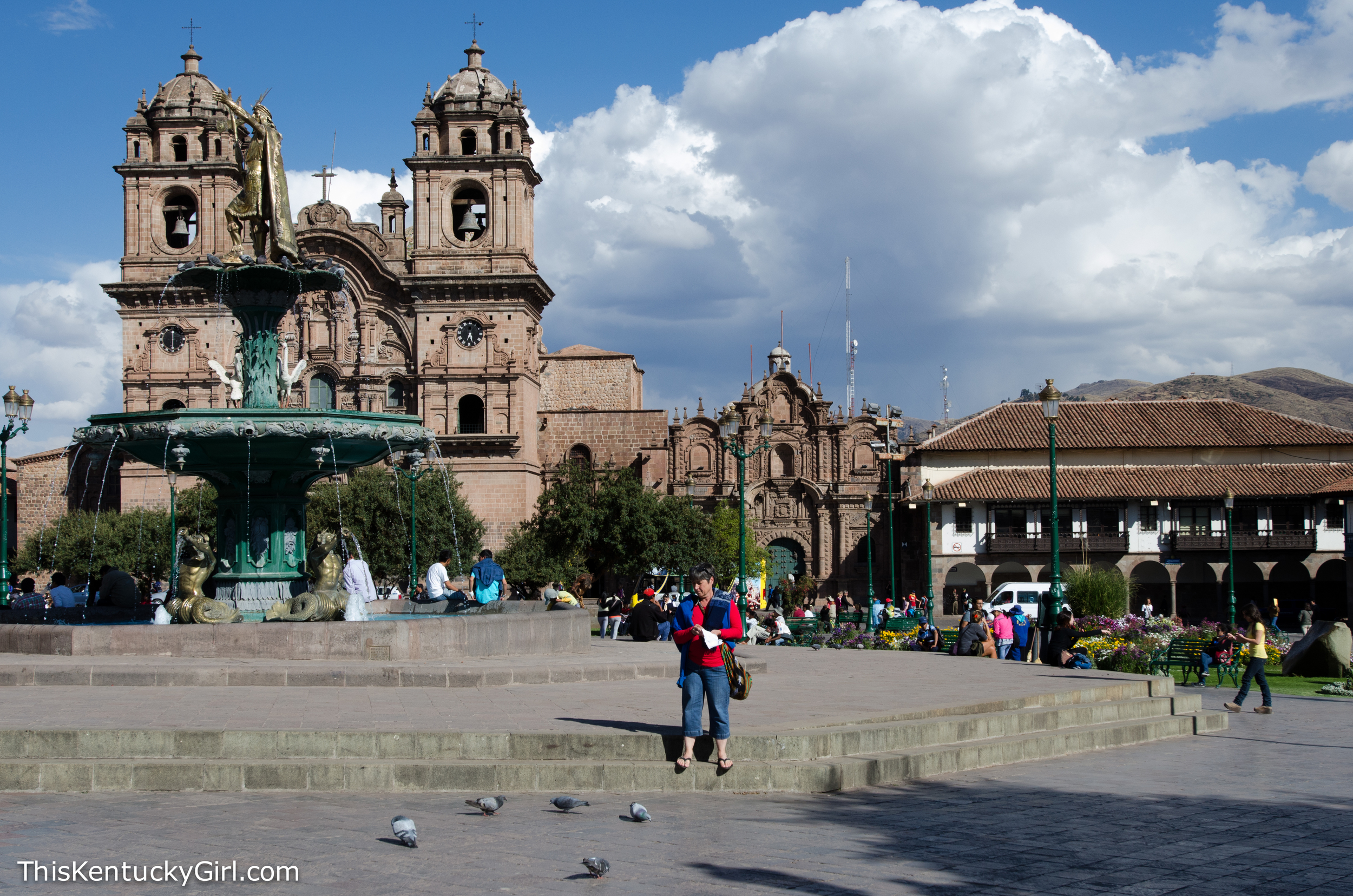
Quirikancha was once the most important temple and the center of the Inca Empire. Once upon a time it was covered in gold, as it was dedicated to the Sun God, Inti. That is, until the Spanish came along and demanded a ransom in place of the Inca Atahualpa, and the temple was stripped of all of its gold. Juan Pizarro, one of Francisco Pizarro’s brothers received Quirikancha and before he died, donated it to the Dominican Order of priests. Eventually, the church that you see behind (or rather, inside the walls of the former Temple of the Sun) the Incan foundation was built.
However, our first stop of the day was the Center for Traditional Textiles, a free museum with rather beautiful displays of the intricate weaving that is so common throughout Peru. I was a little hesitant, but Andrew assured us that it was one of the highest rated museums in Cusco… and Mom had just finished her first course in weaving, so we pretty much had to go.
My favorite part of the museum were the live demonstrations and the half finished weavings that were tied off. After our visit, I noticed that these half woven pieces used as wall hangings instead of scarves or blankets or even wraps were quite popular around Cusco. Again, if I knew exactly how many walls I was returning to, I would have bought them all up! I thought they made such beautiful art pieces, especially knowing that they were preserving a traditional culture that is being quickly replaced by low cost imported string and machinery. The Center for Traditional Textiles is right down the street from Quirikancha, and the Convent of Santo Domingo.
What’s somewhat unbelievable is that the Incan walls were kept entirely intact and the church was built in between the walls of the Incan temple. Above you can see the courtyard, but throughout the building were different Incan rooms that were still free standing with dirt floors and nothing inside. Technically we weren’t supposed to take pictures, but I saw many people freely taking photographs out in the courtyard. I’m not sure why there was a no photo rule- maybe for the interior rooms that held loads and loads of religious art? Either way, it was interesting to walk through, but it made me feel a little uncomfortable wondering how the Incans must have felt back in the day when their most important temple was handed over to an entirely different religion, one that built a gigantic church and monastery around walls that once used to be covered in gold.
The above picture was to show how Quirikancha was at the center of the Incan universe. How other temples in the empire all led to Quirikancha. The picture below illustrates how the Incas looked at the stars. While we look at the stars, and the constellations by connecting the stars together, the Incans looked at the pictures made in the dark spots or shadows in between the stars.
Outside of not only Quirikancha, but throughout the streets of Cusco, women in traditional dress walked around tethered to a grown llama or holding a baby lamb. Often, they would put the lamb in your arms, encouraging you to take a photo, for which you would have to pay for after. I didn’t need a photo of myself with a baby lamb, so I would always get really excited and pet the lamb (simultaneously empathizing for it) until they would realize I wasn’t going to pose for a picture with it.
After The Choco Museo (which was an informative, albeit glorified shop) we wandered around, fed the birds, and coerced Mom into one last drink before her last day began in the morning.
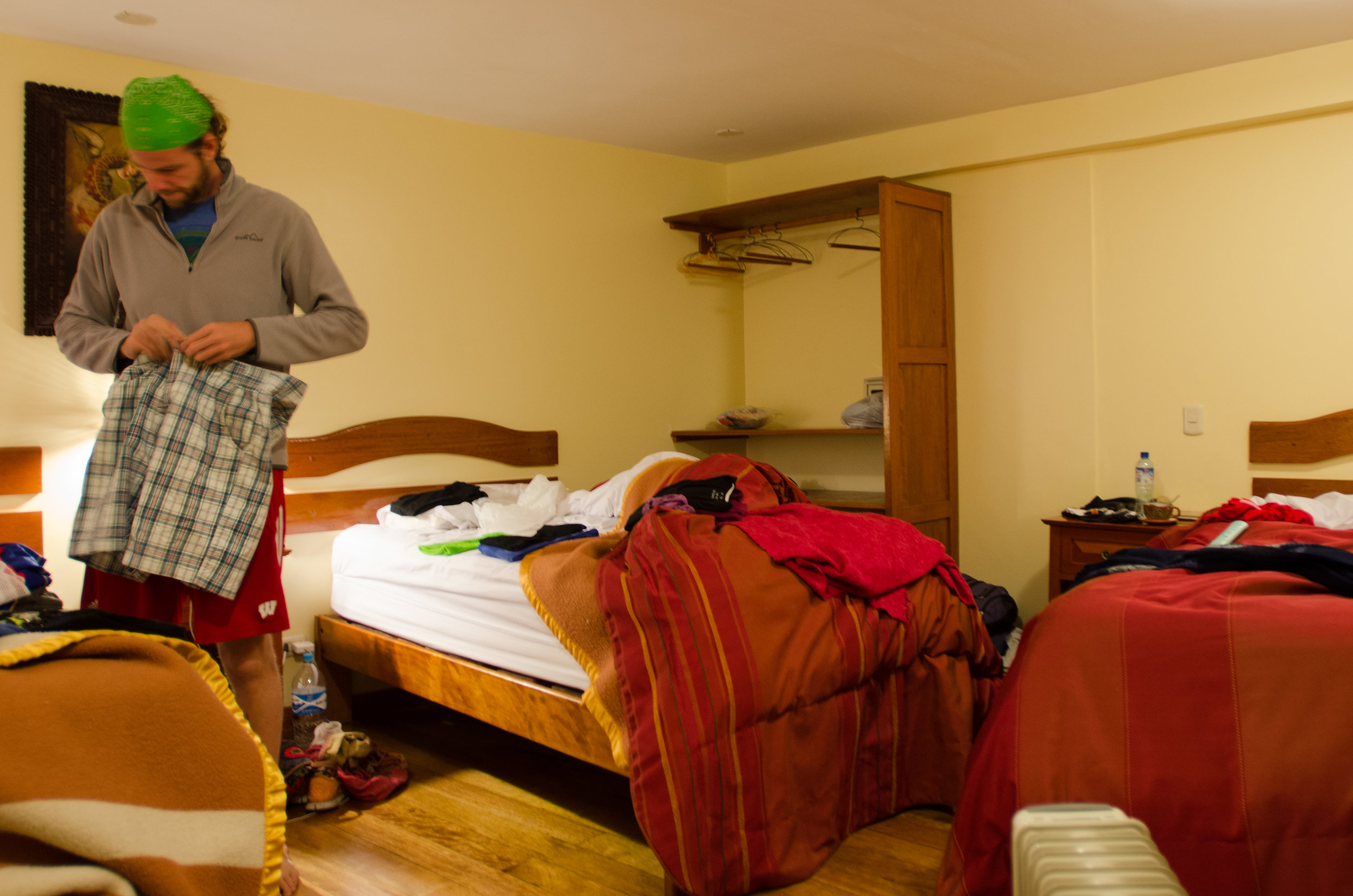
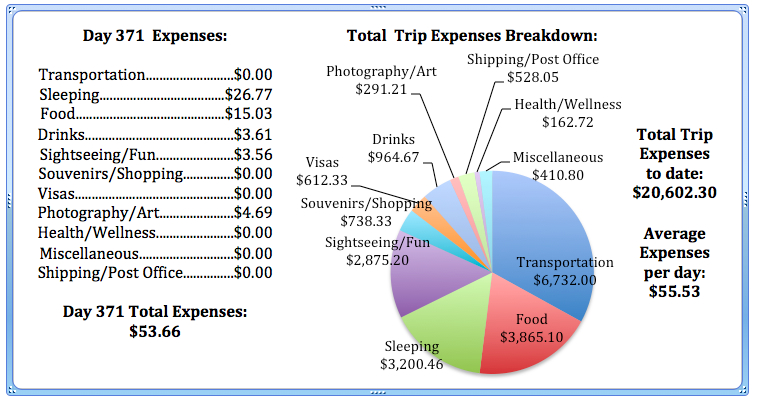
Day 370: Huayna Picchu + Machu Picchu
Machu Picchu! Our day started out early, for we signed up to be a few of the four hundred (per day) to climb Huayna Picchu. Around seven in the morning, we were (somewhat) rushing through Machu Picchu to the far end of the site to stand in line at the Huayna Picchu checkpoint. Less than two hours later, we were atop Huayna Picchu, taking in a hands down amazing view of Machu Picchu. (It was well worth the climb – to say the least.) We spent the afternoon walking through Machu Picchu in complete awe and wonder of the Incan architecture. It’s impressive, not only because of the precision and grandeur, but because of the mystery behind it. -Especially when you’re staring out at mountaintops all around… it puts it into very close perspective of how unique it really is. The Great Wall, Angkor Wat, even the Taj Mahal are all incredible, but everyone has always known about them. And in comparison, they were all built somewhat out in the open, for all to see… Even though we were just a few of the many (many, many) daily visitors, it felt like we were being let in on a big secret just by being within the walls of Machu Picchu.
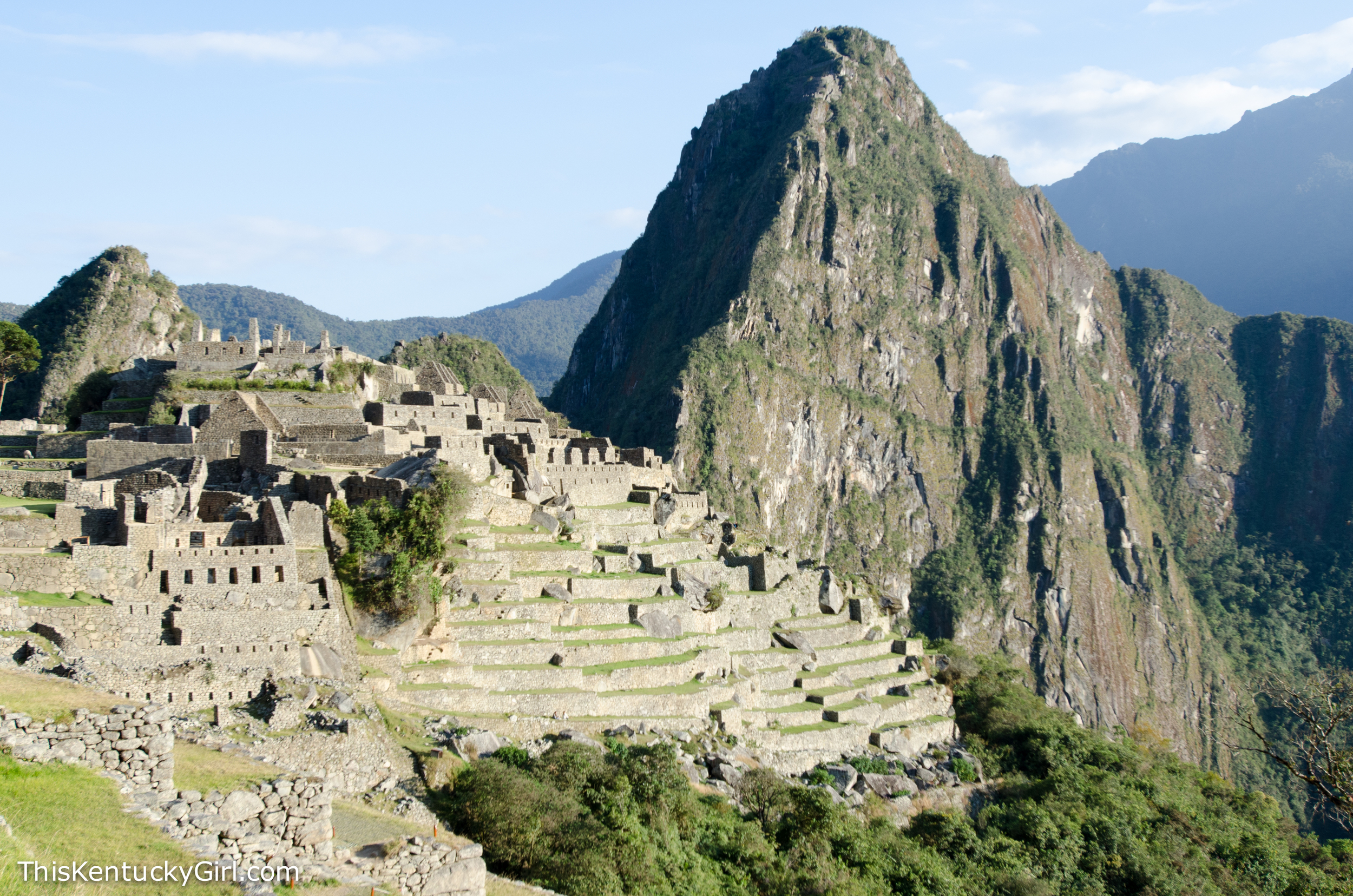
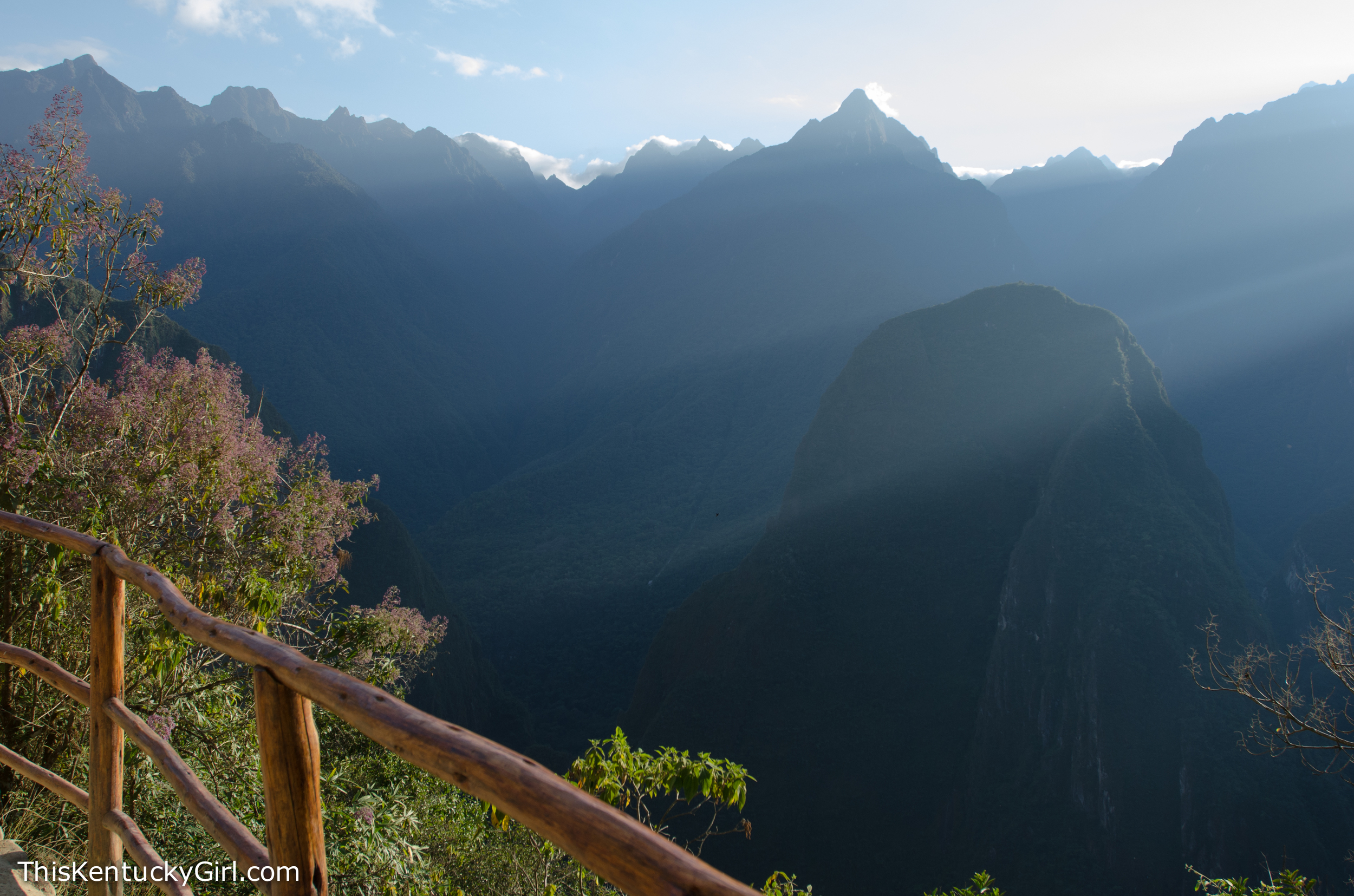
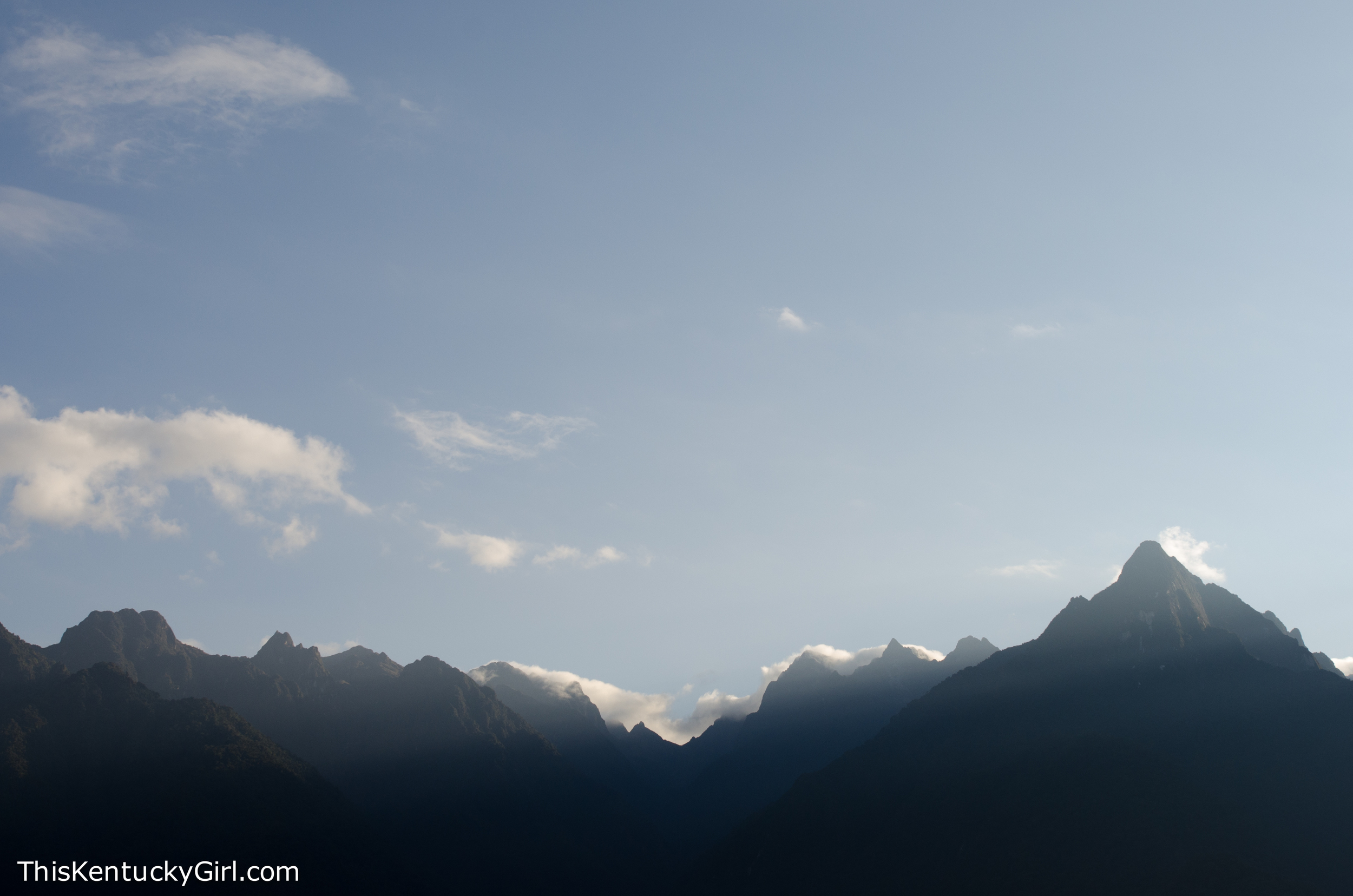
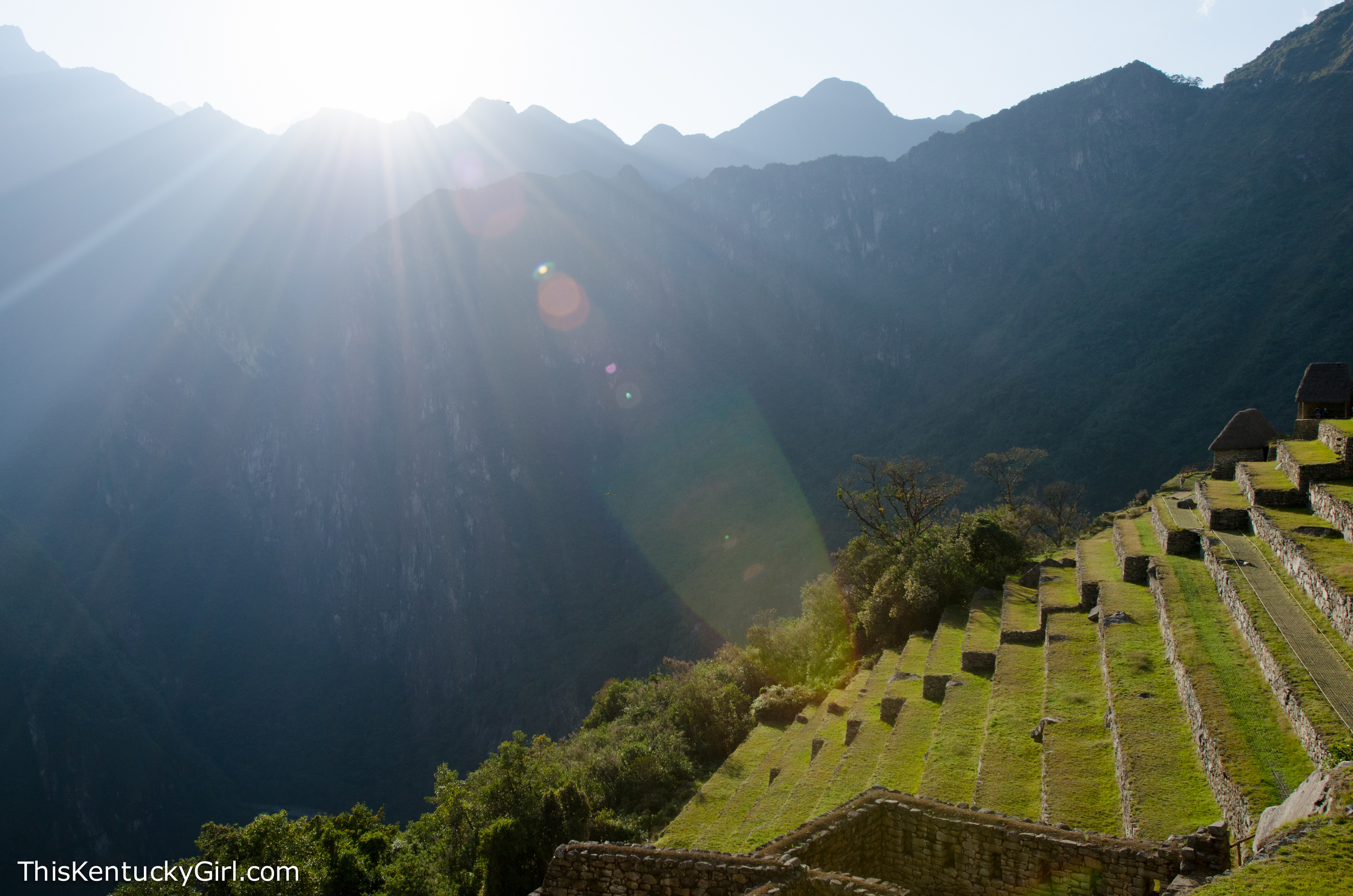
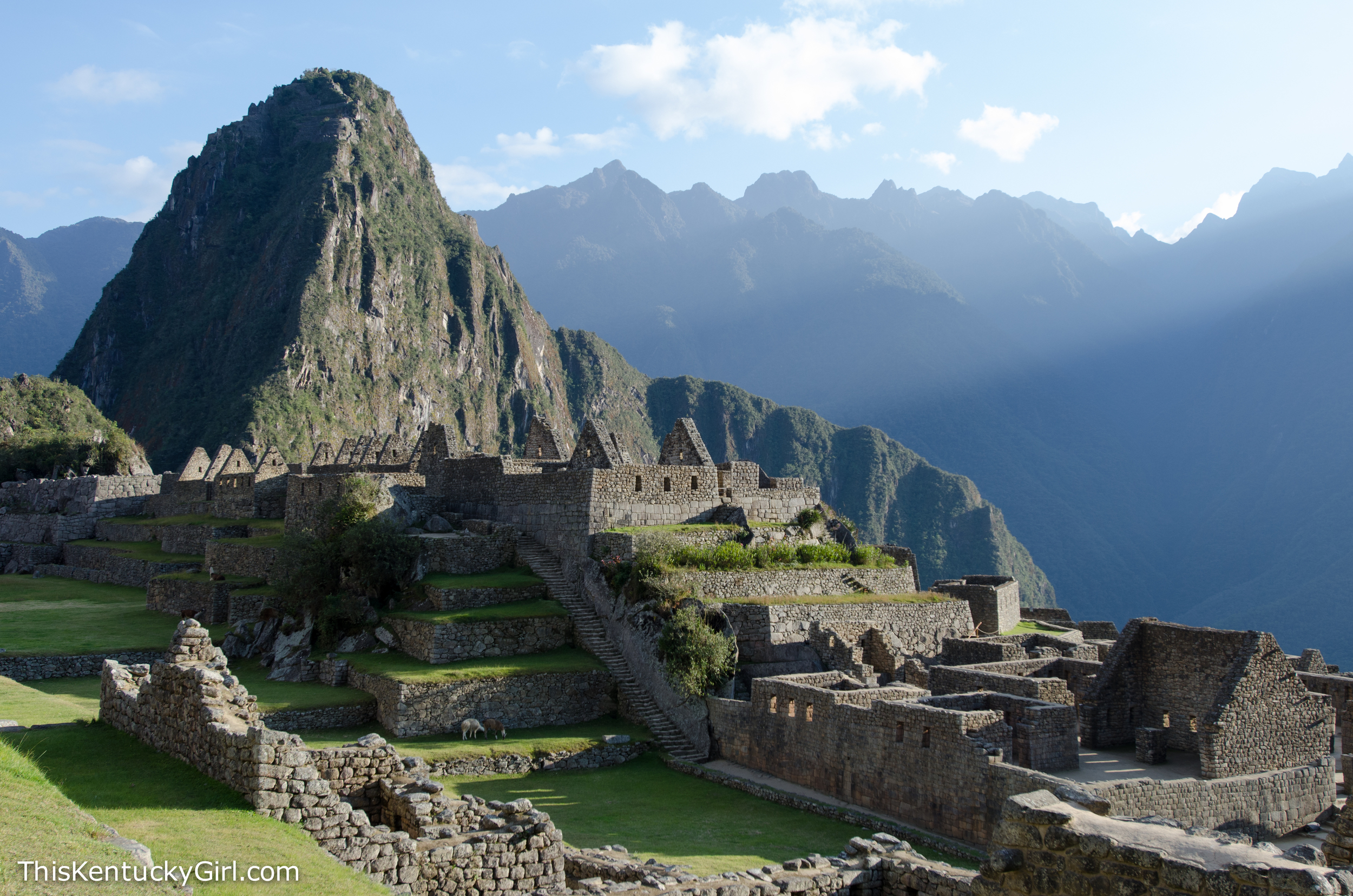
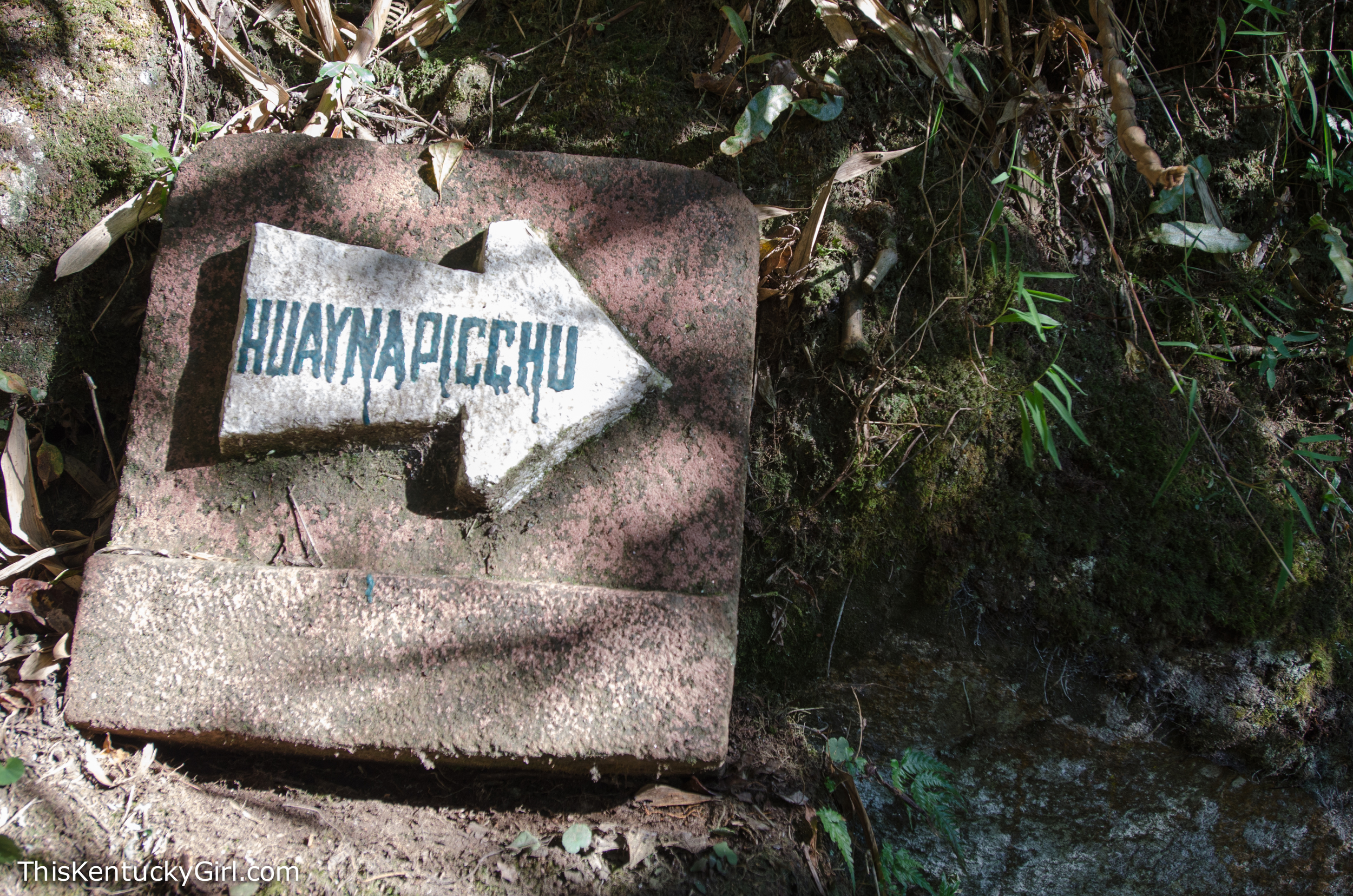
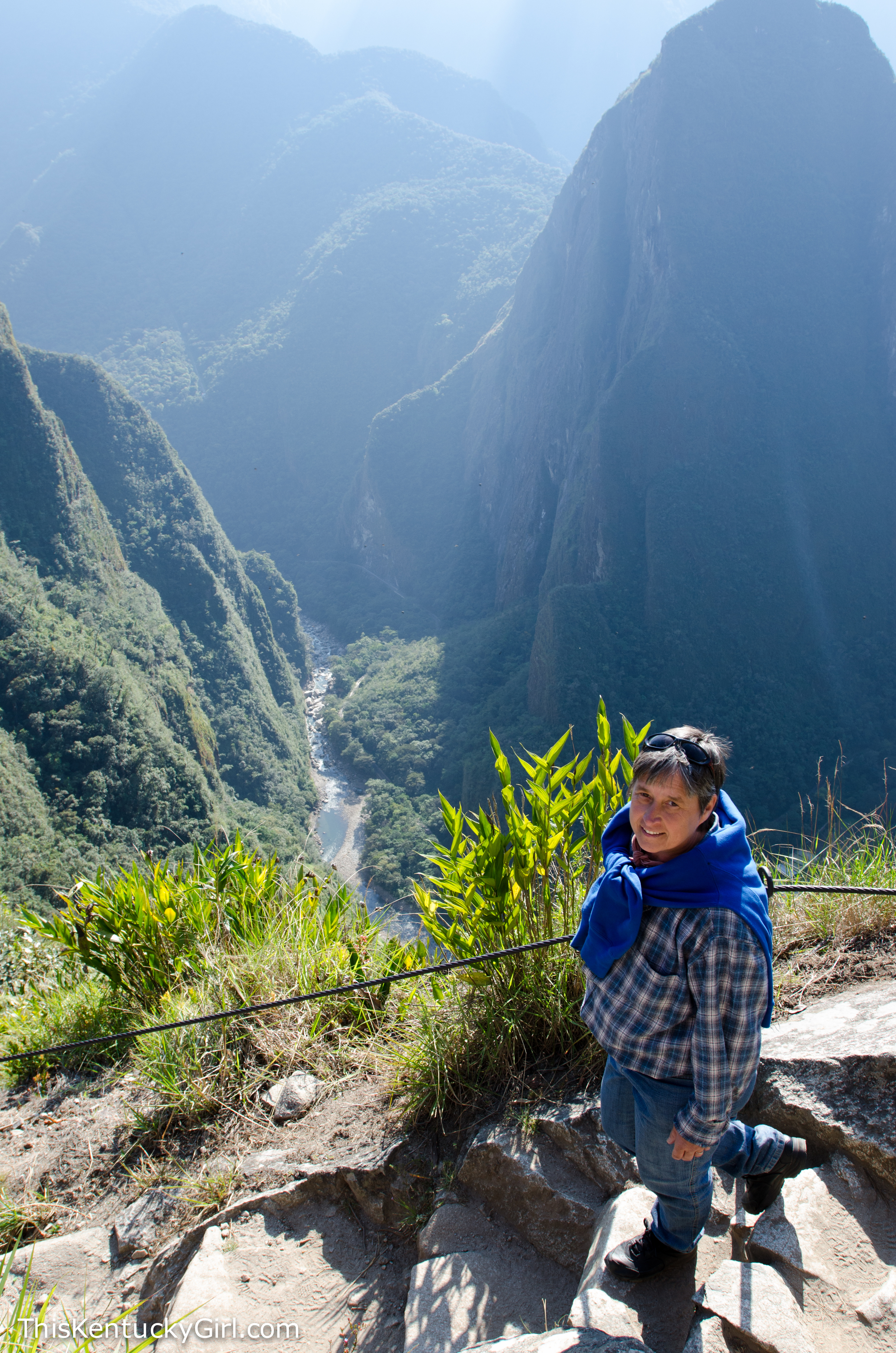
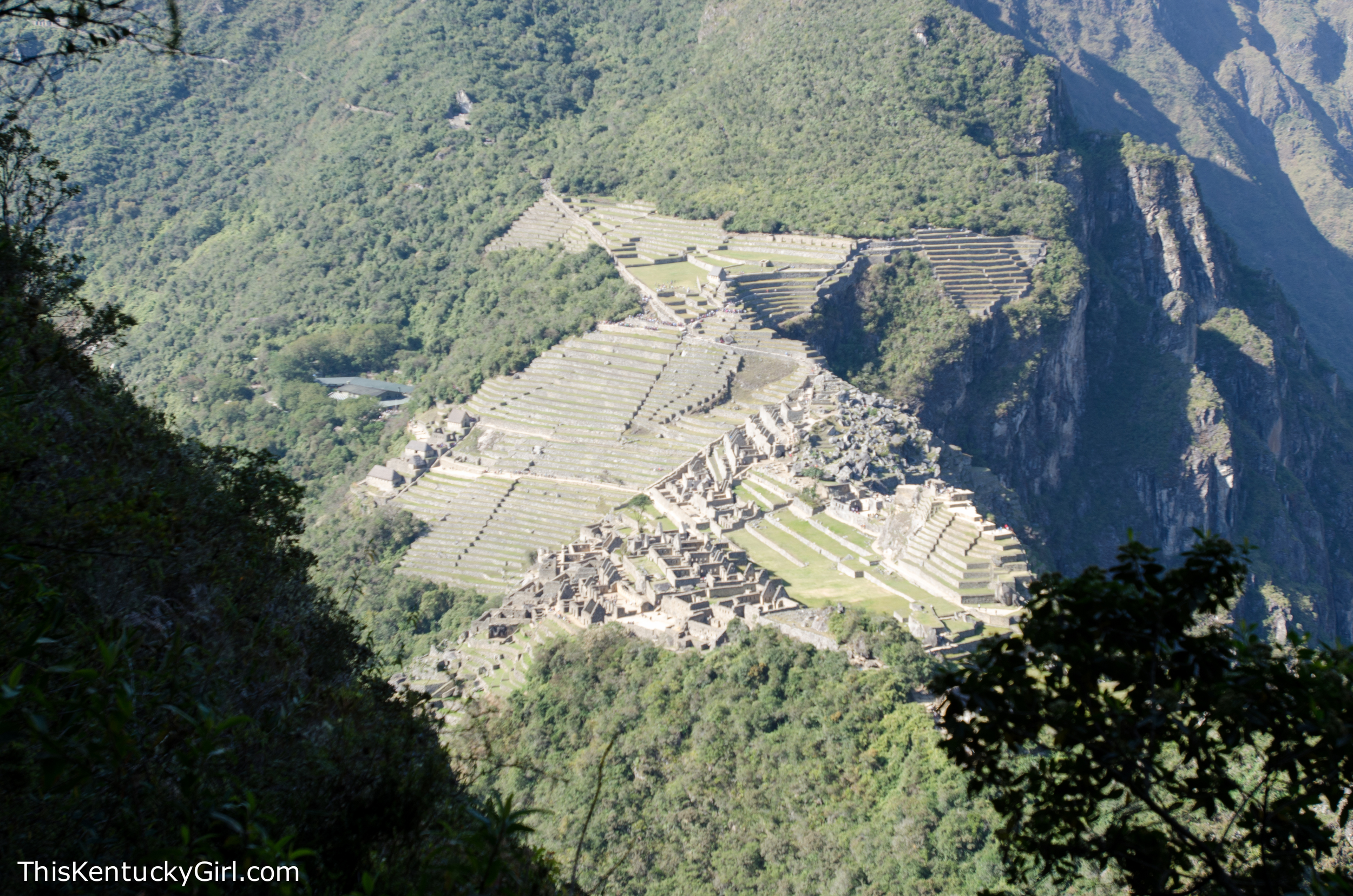
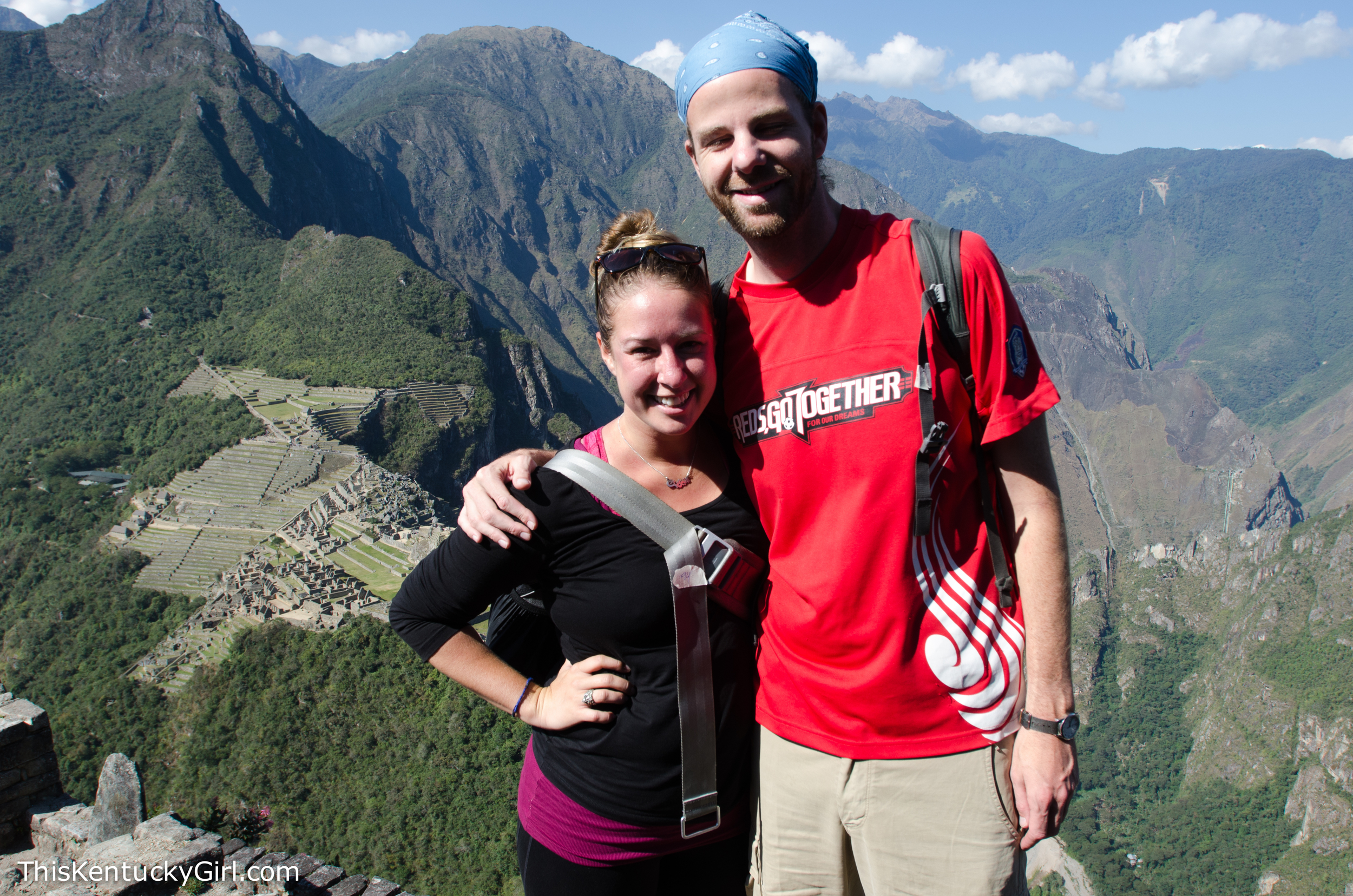
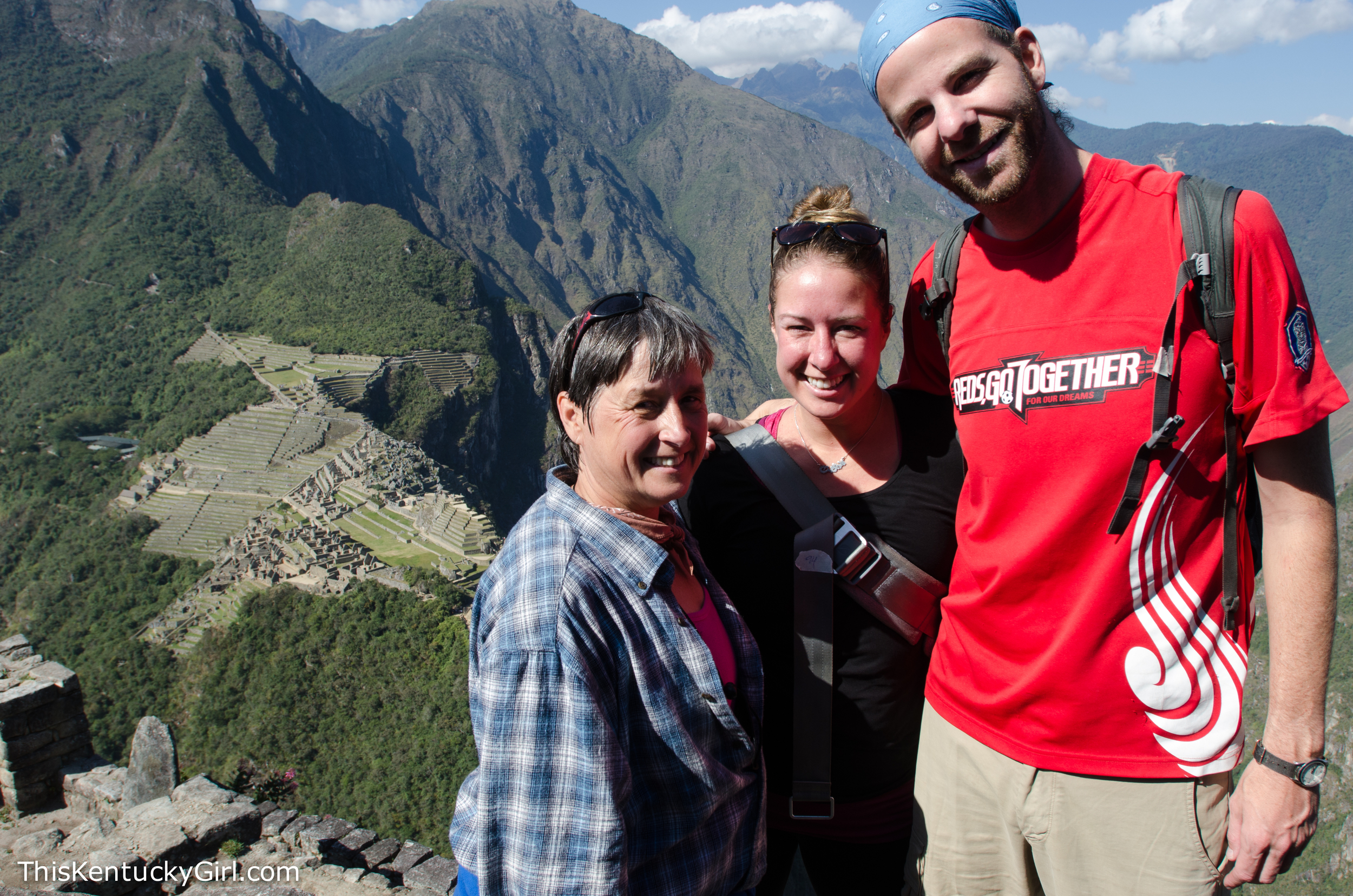
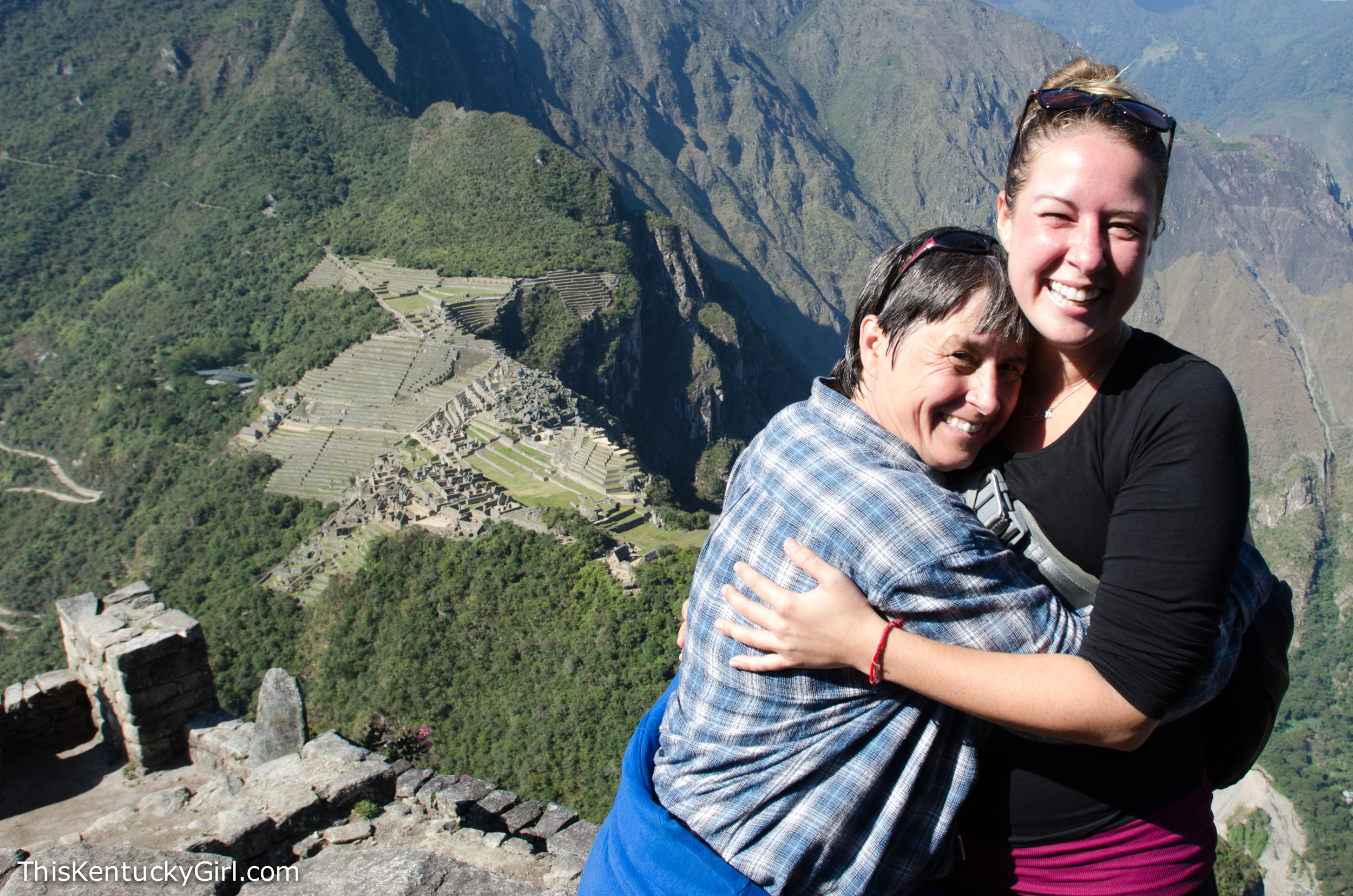
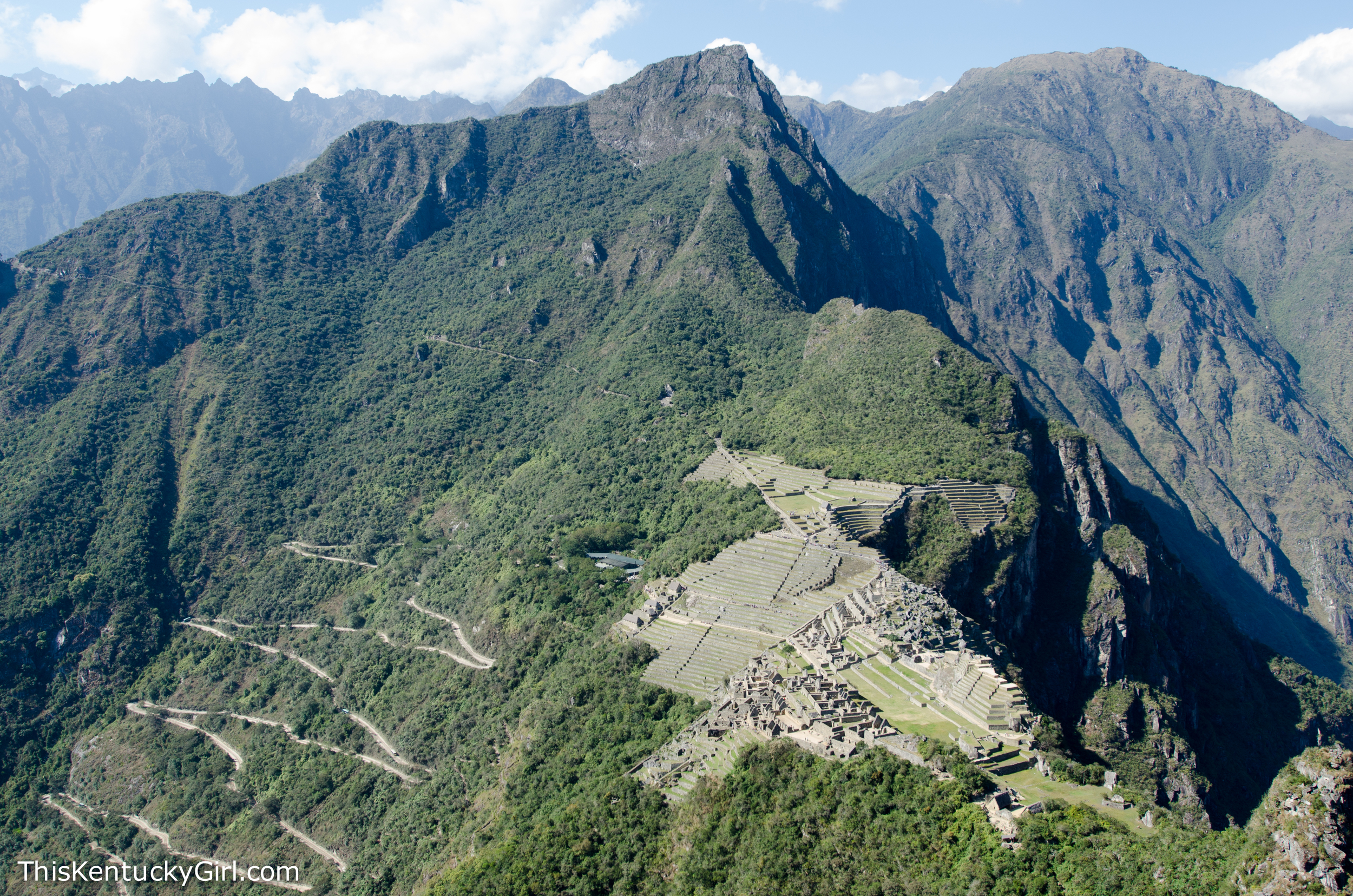
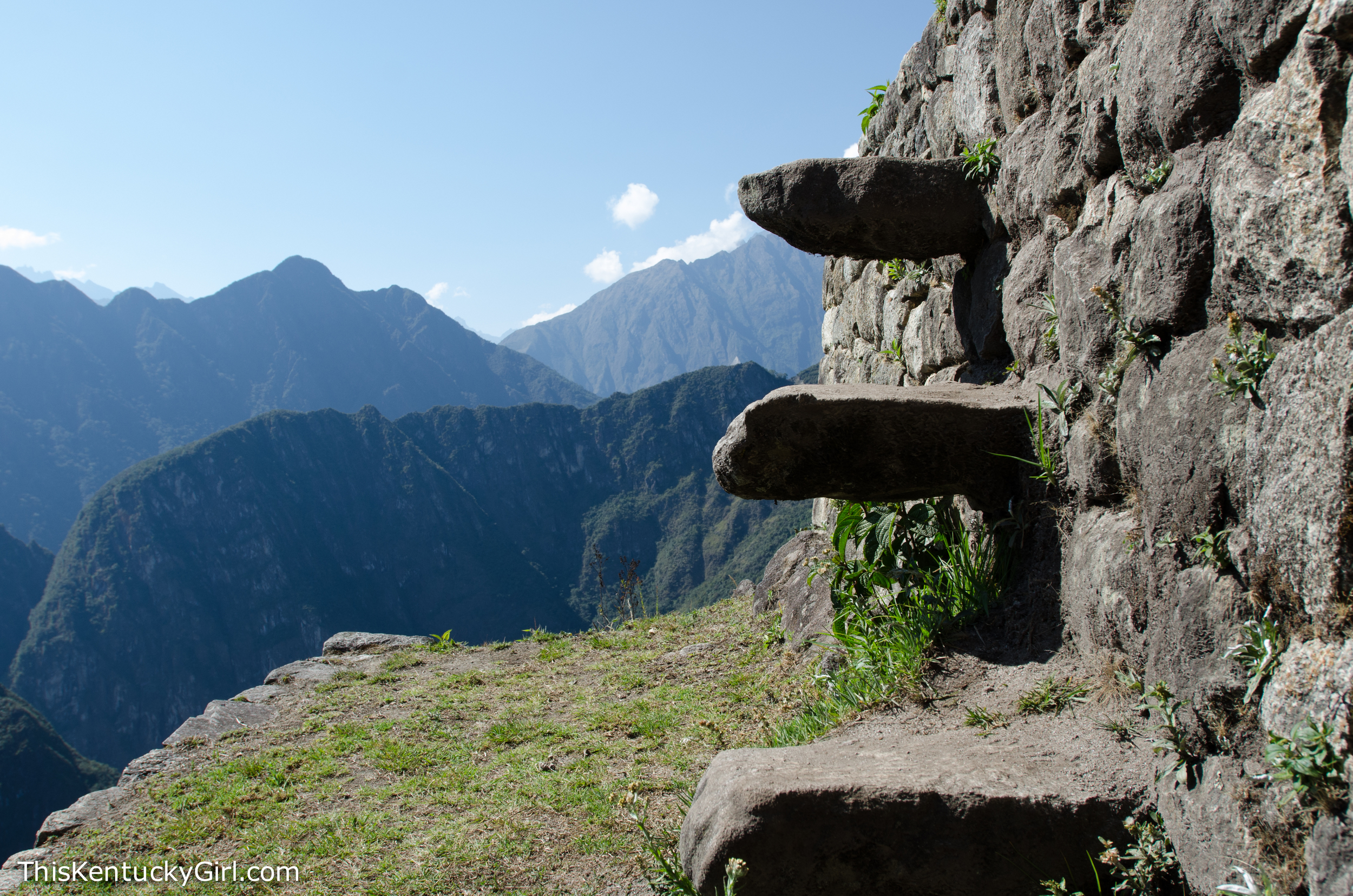
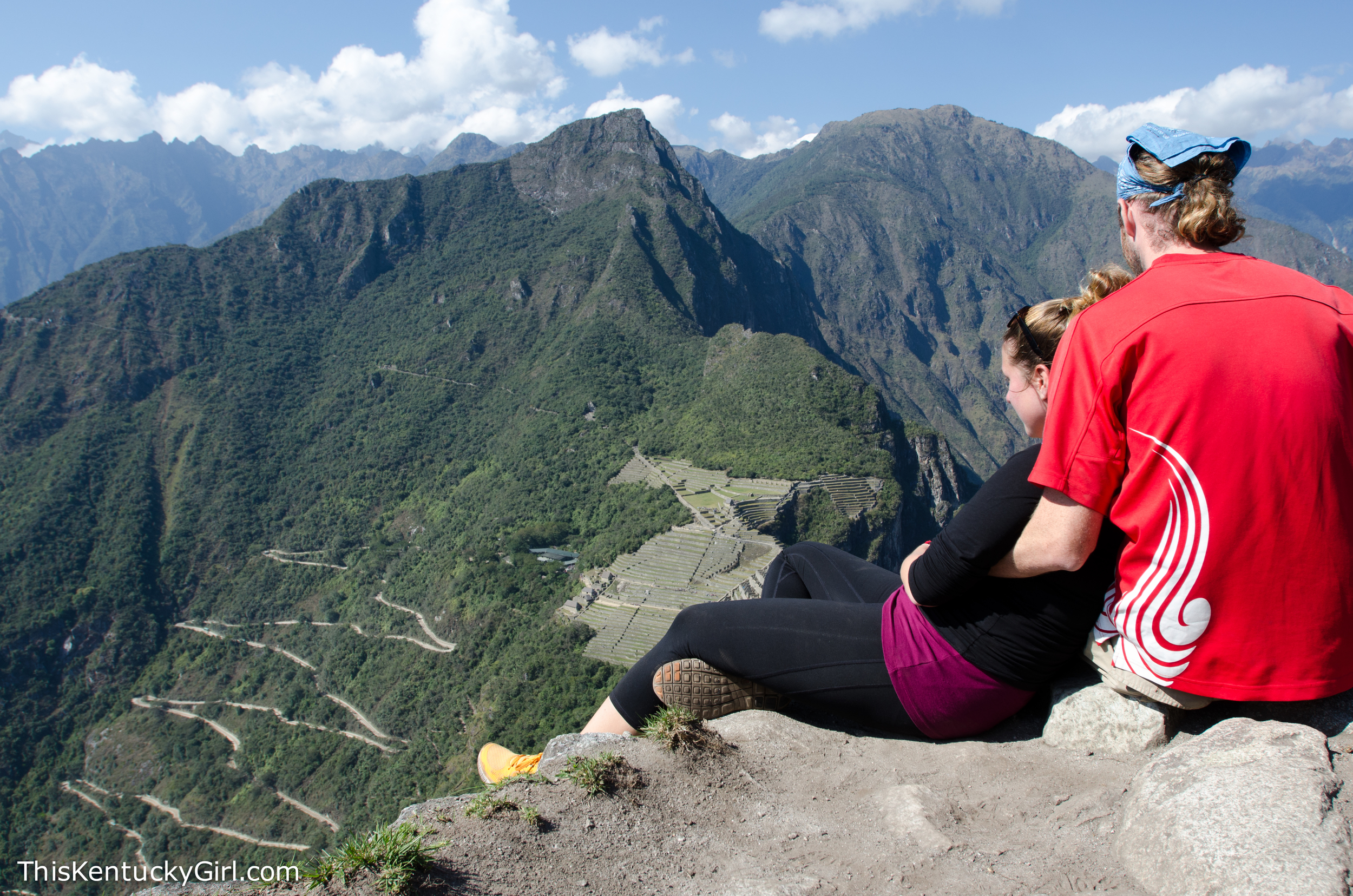
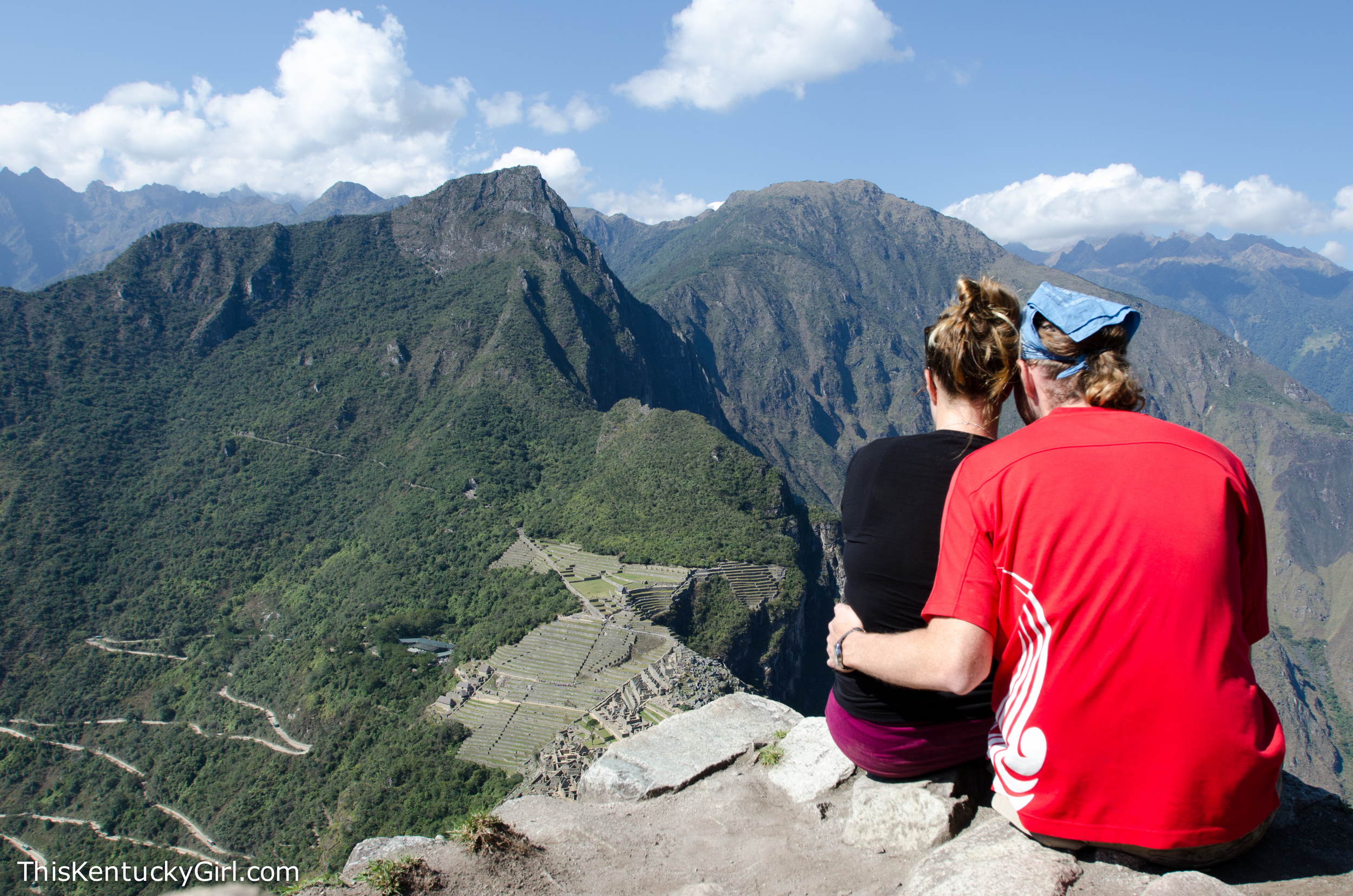
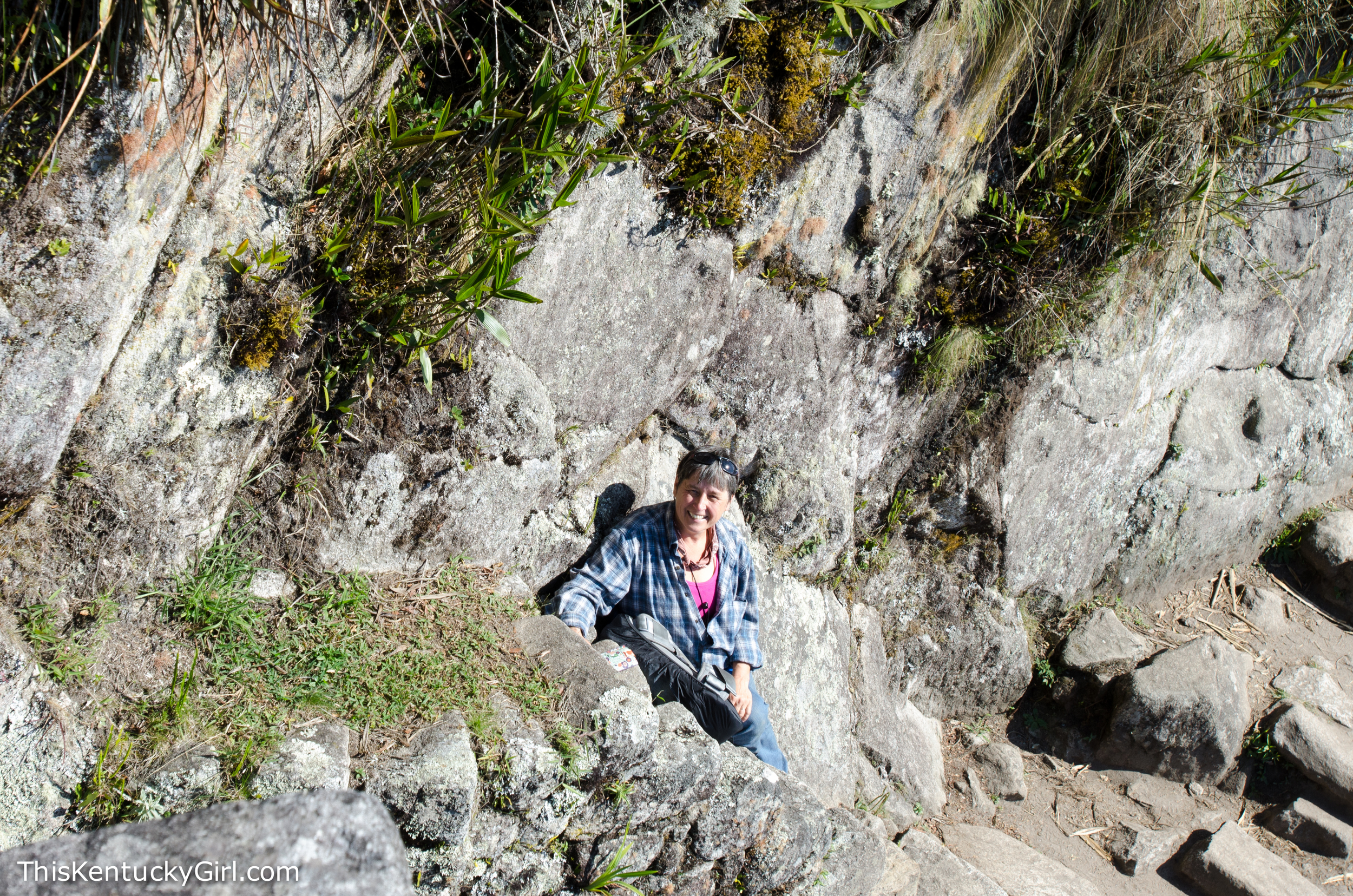
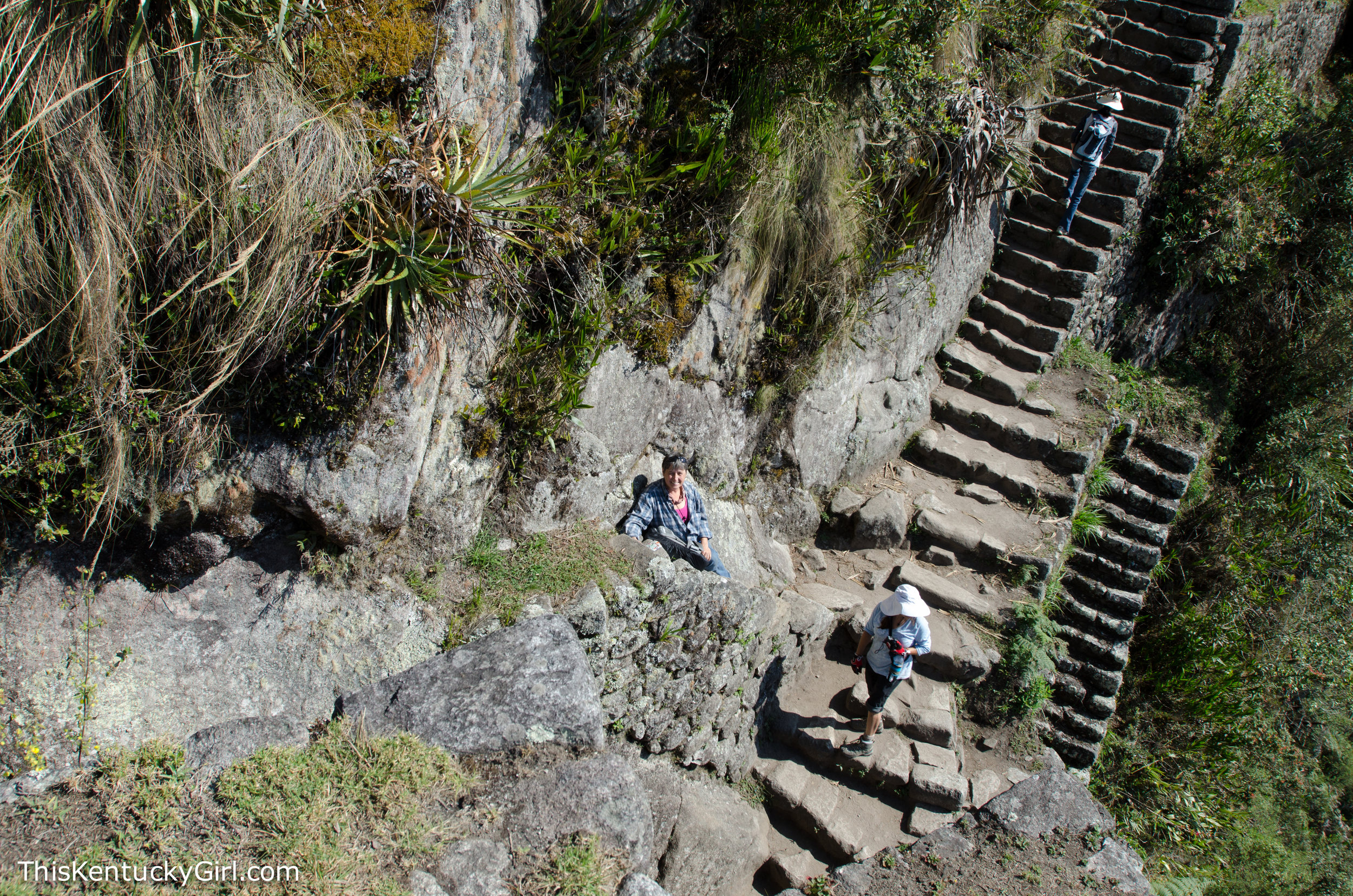
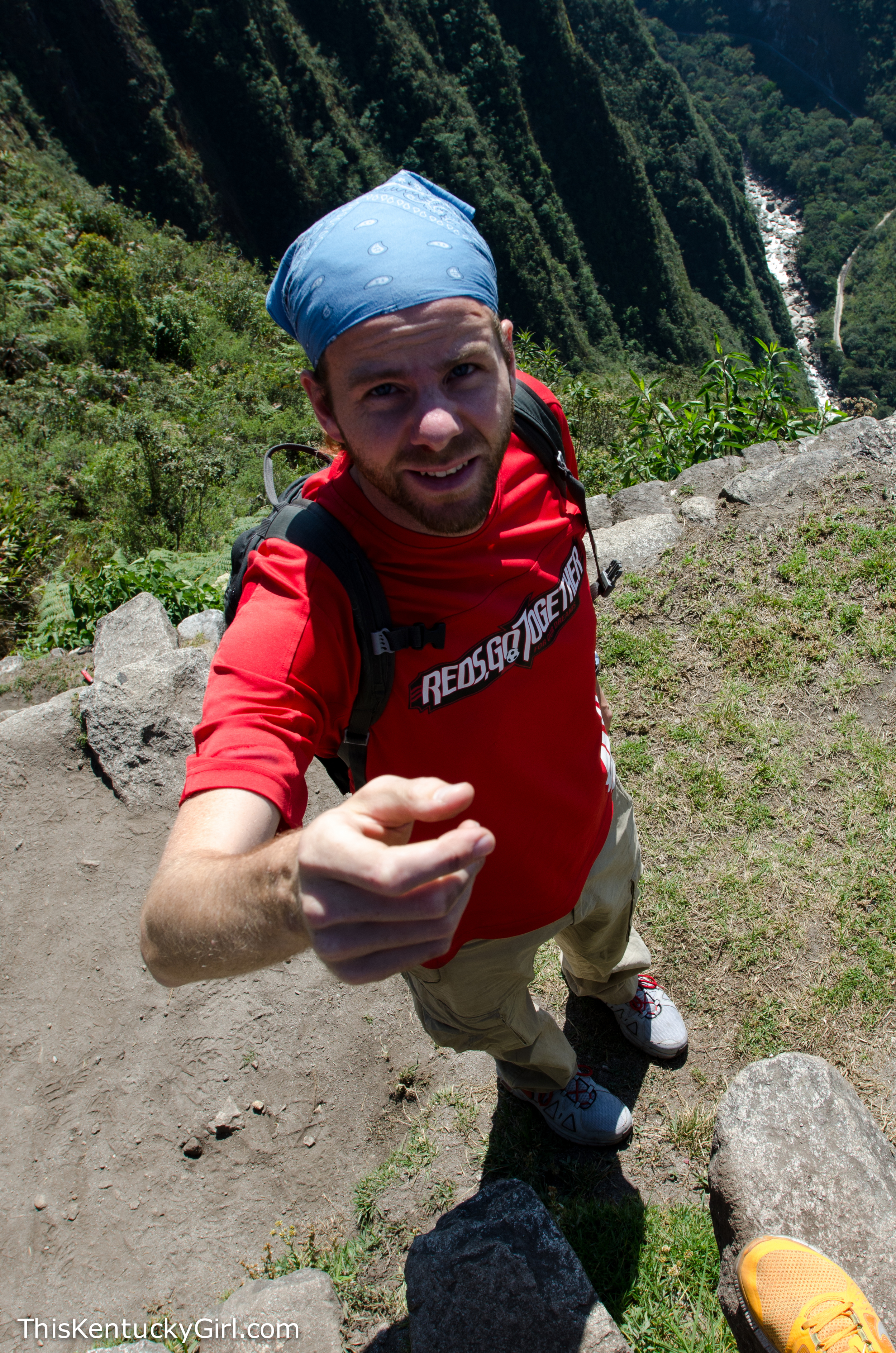
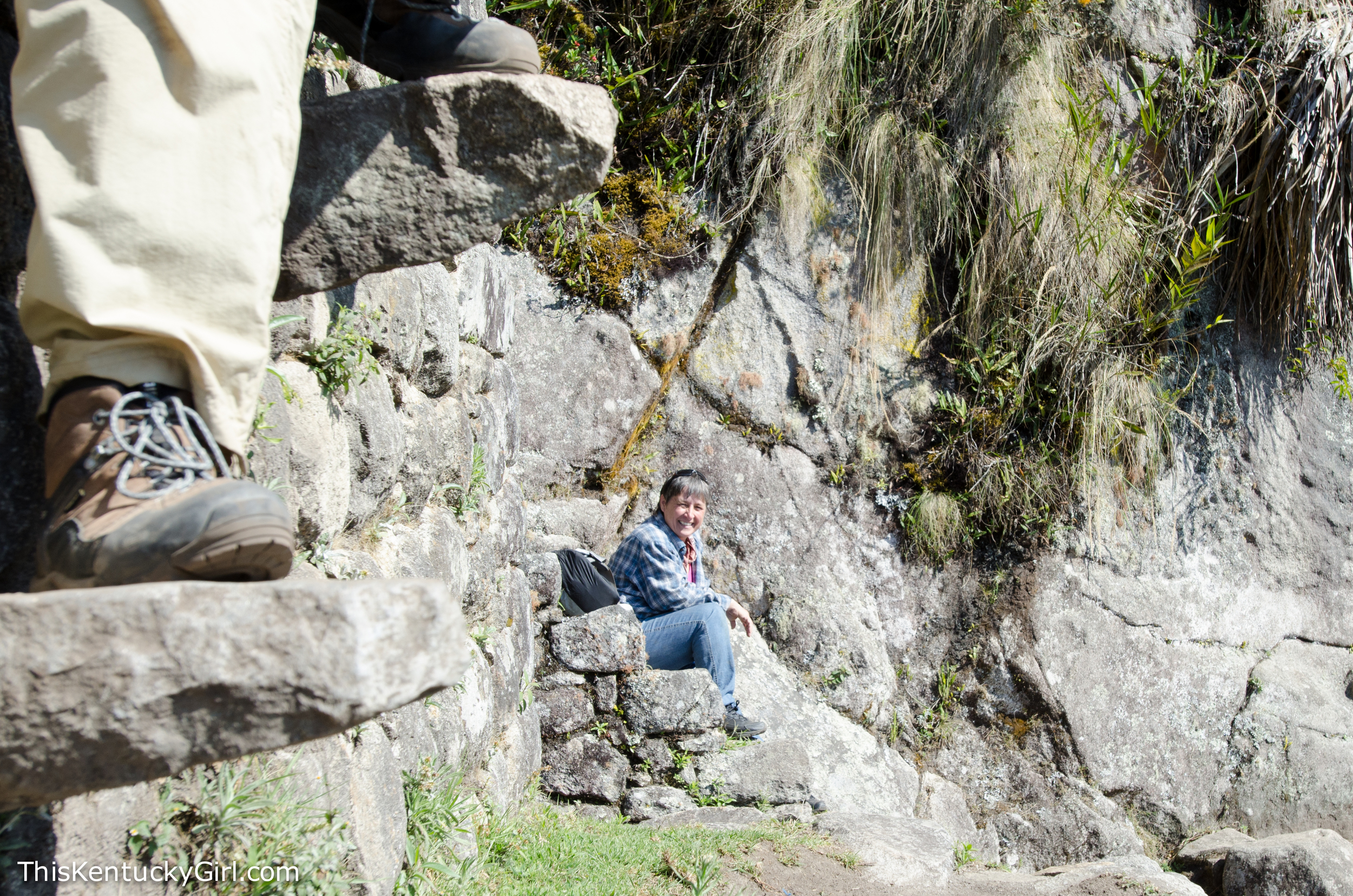
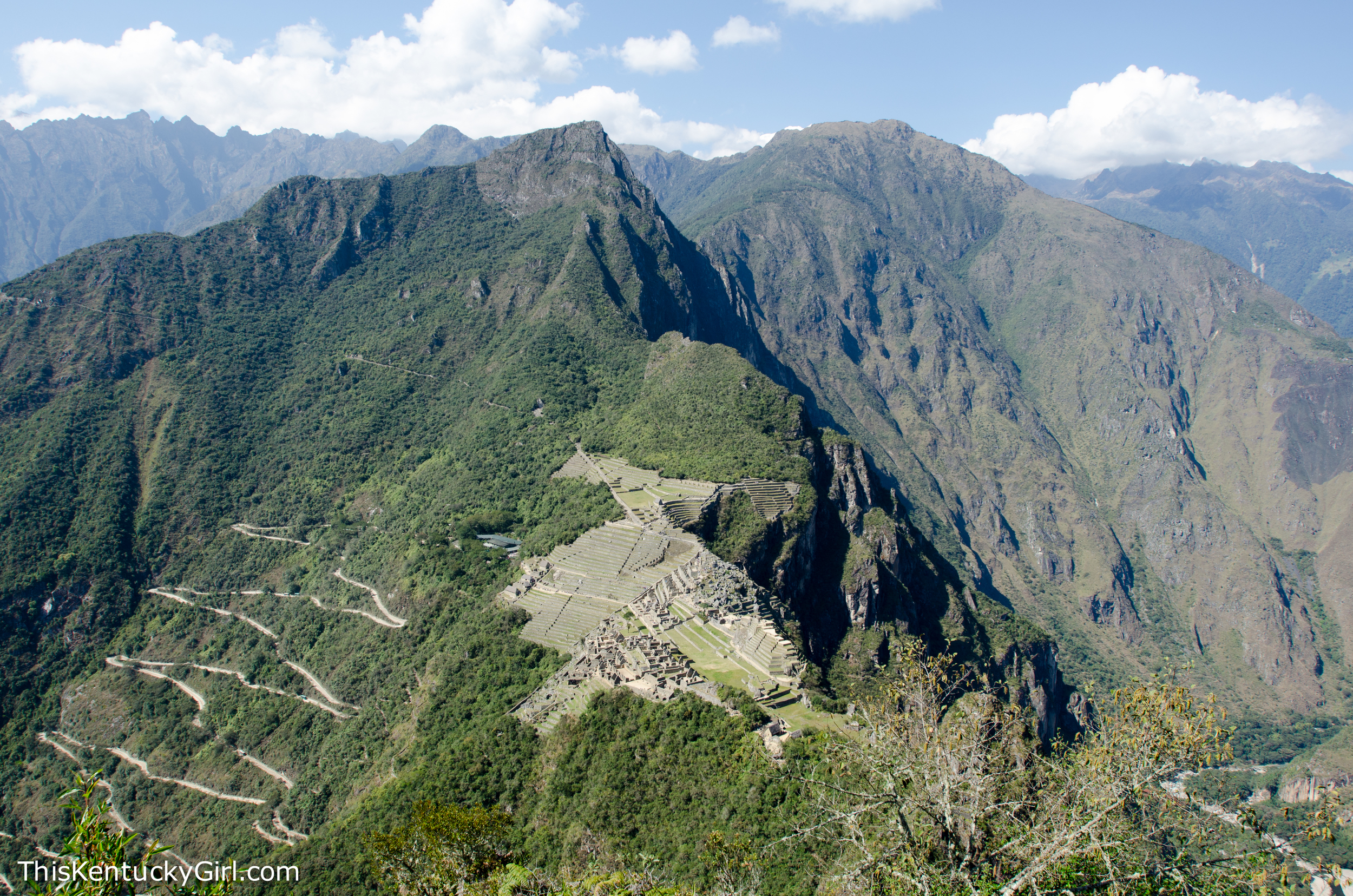
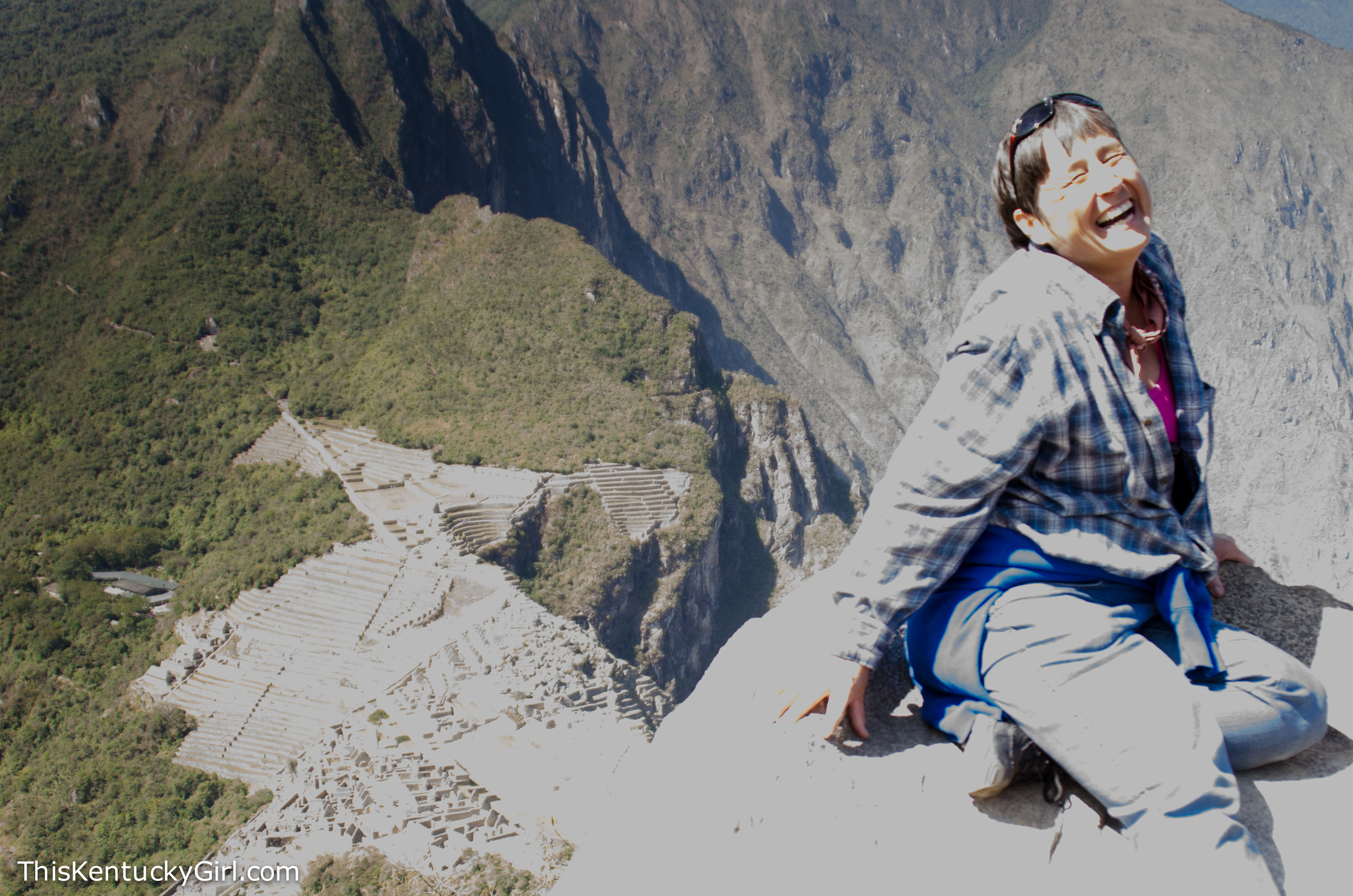
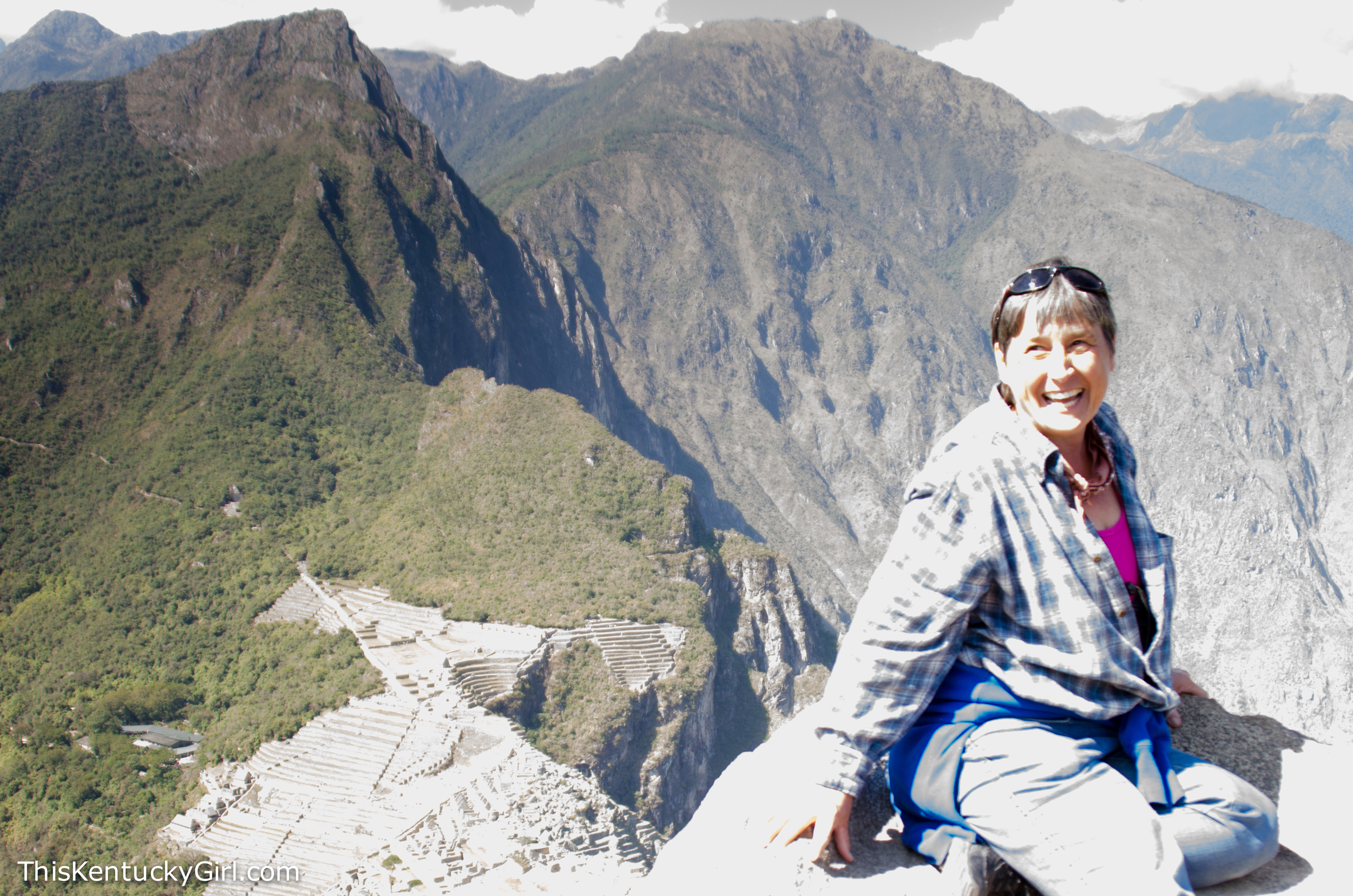
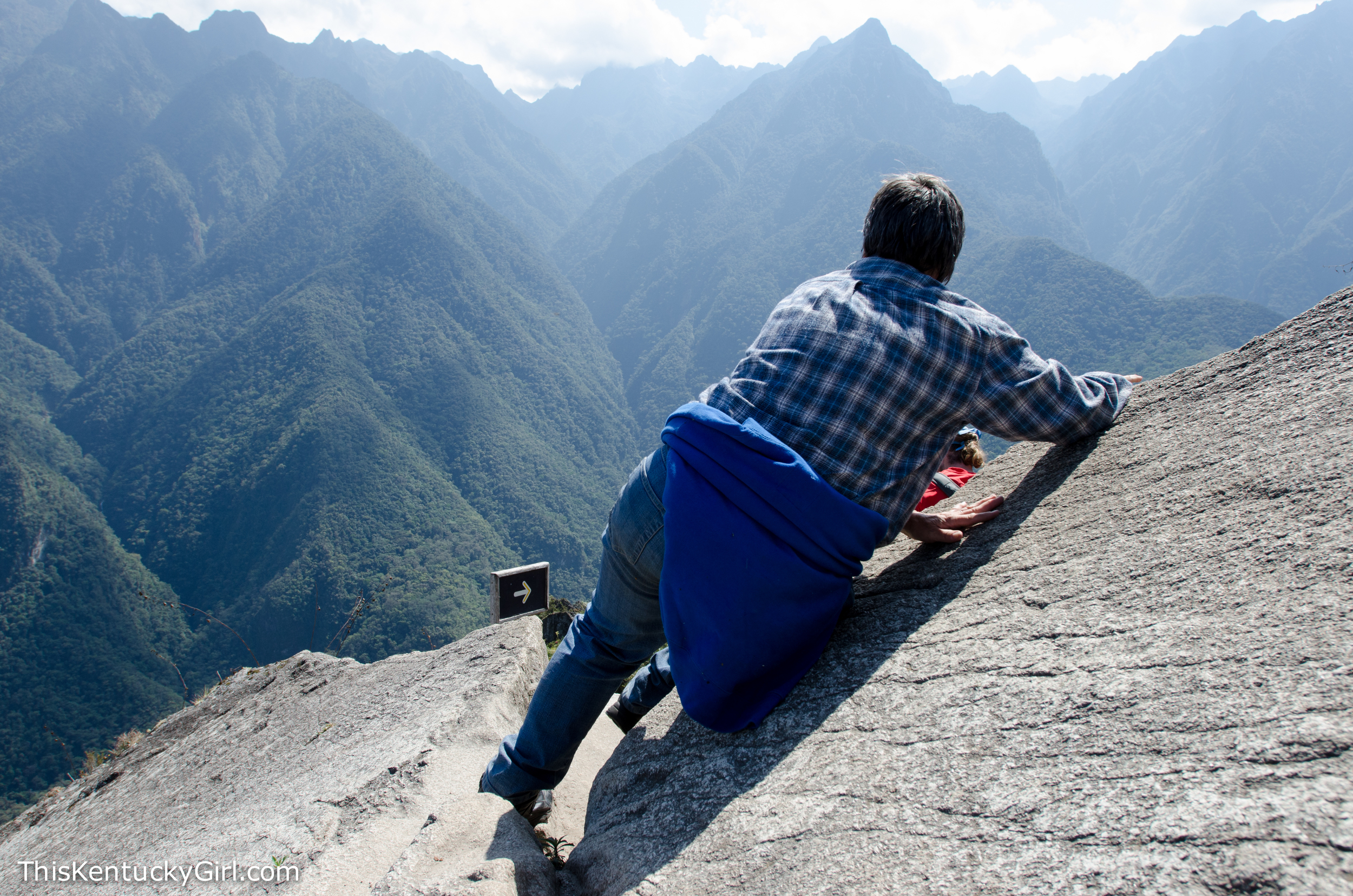
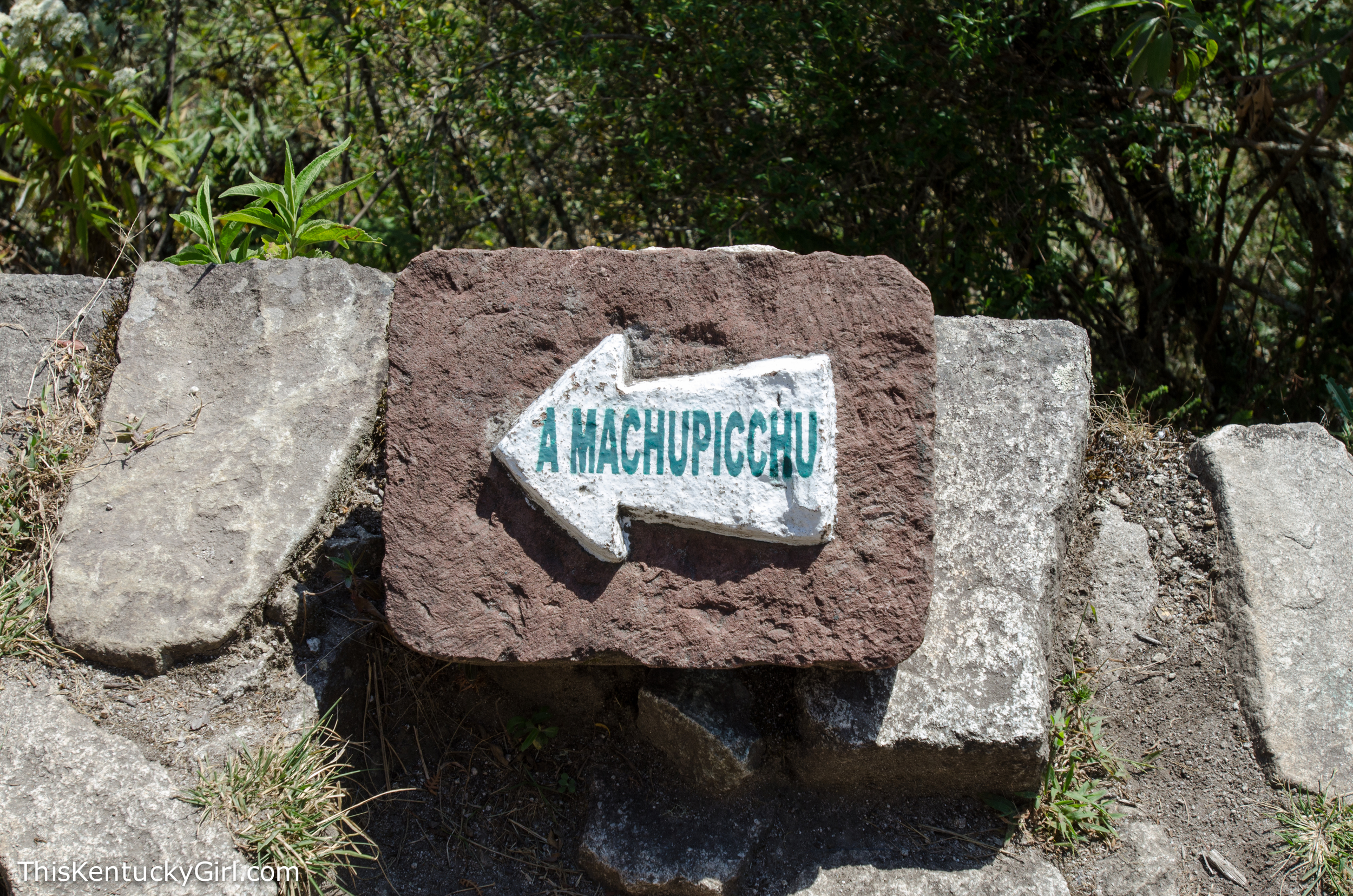
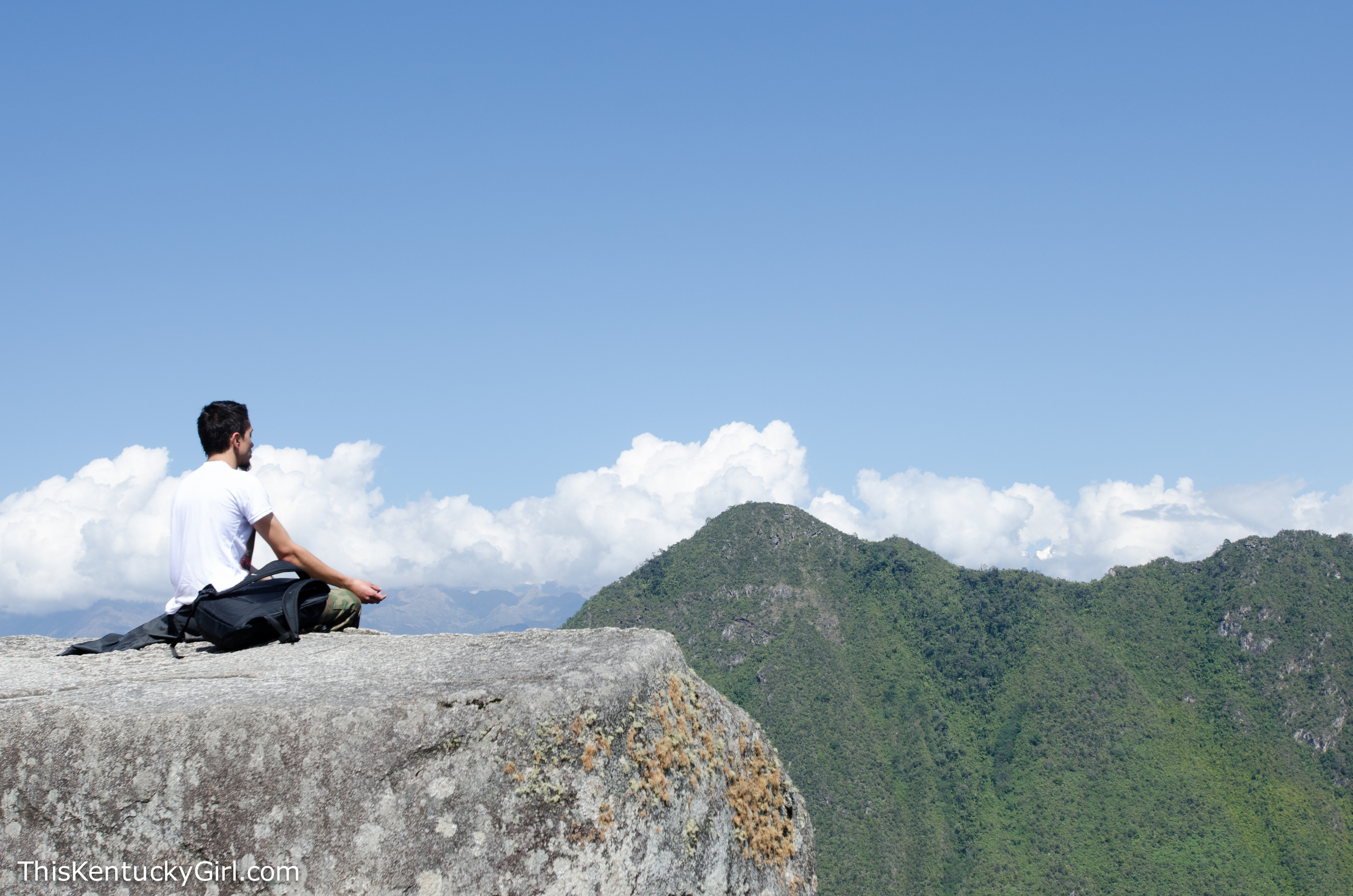
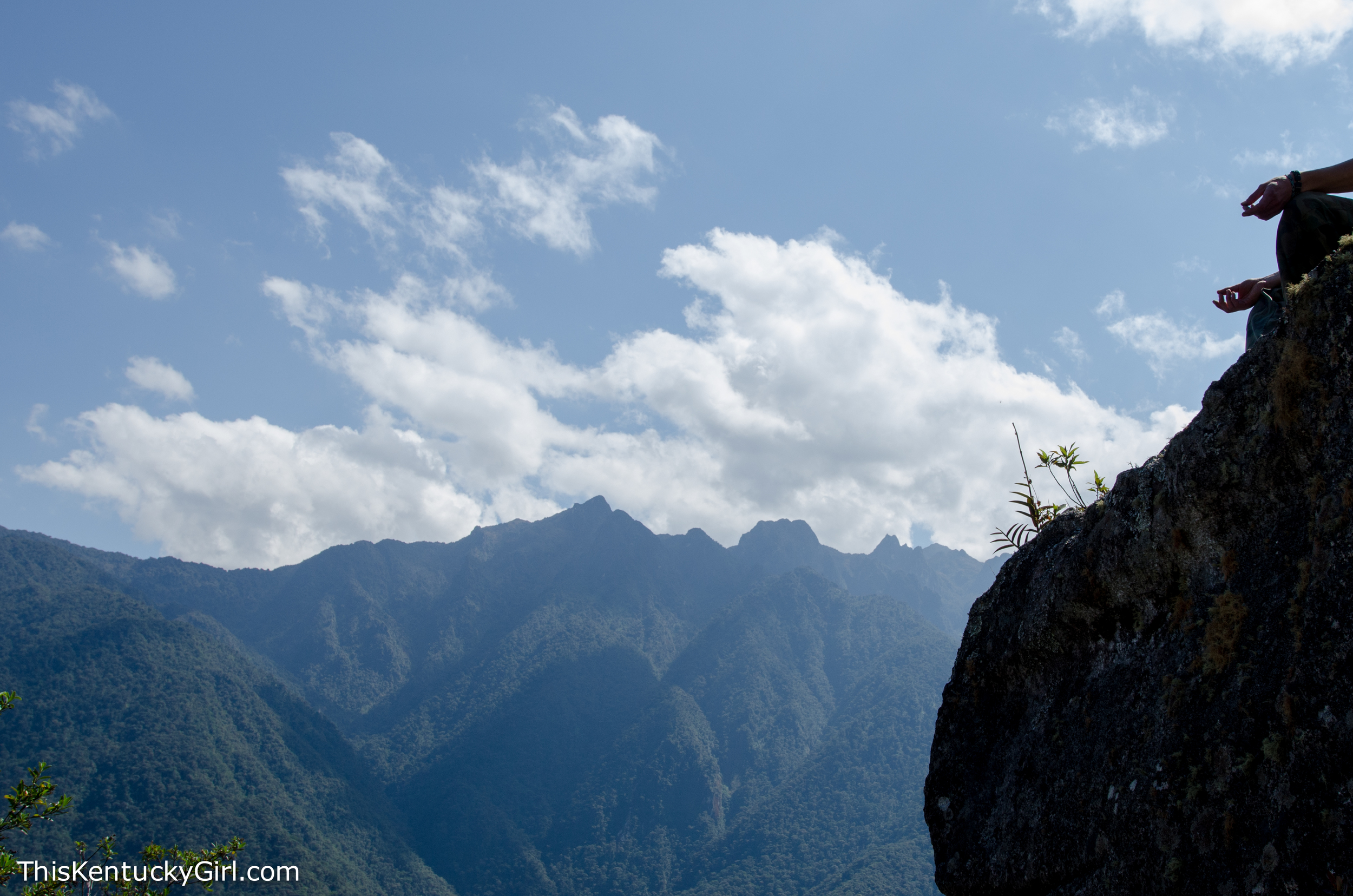
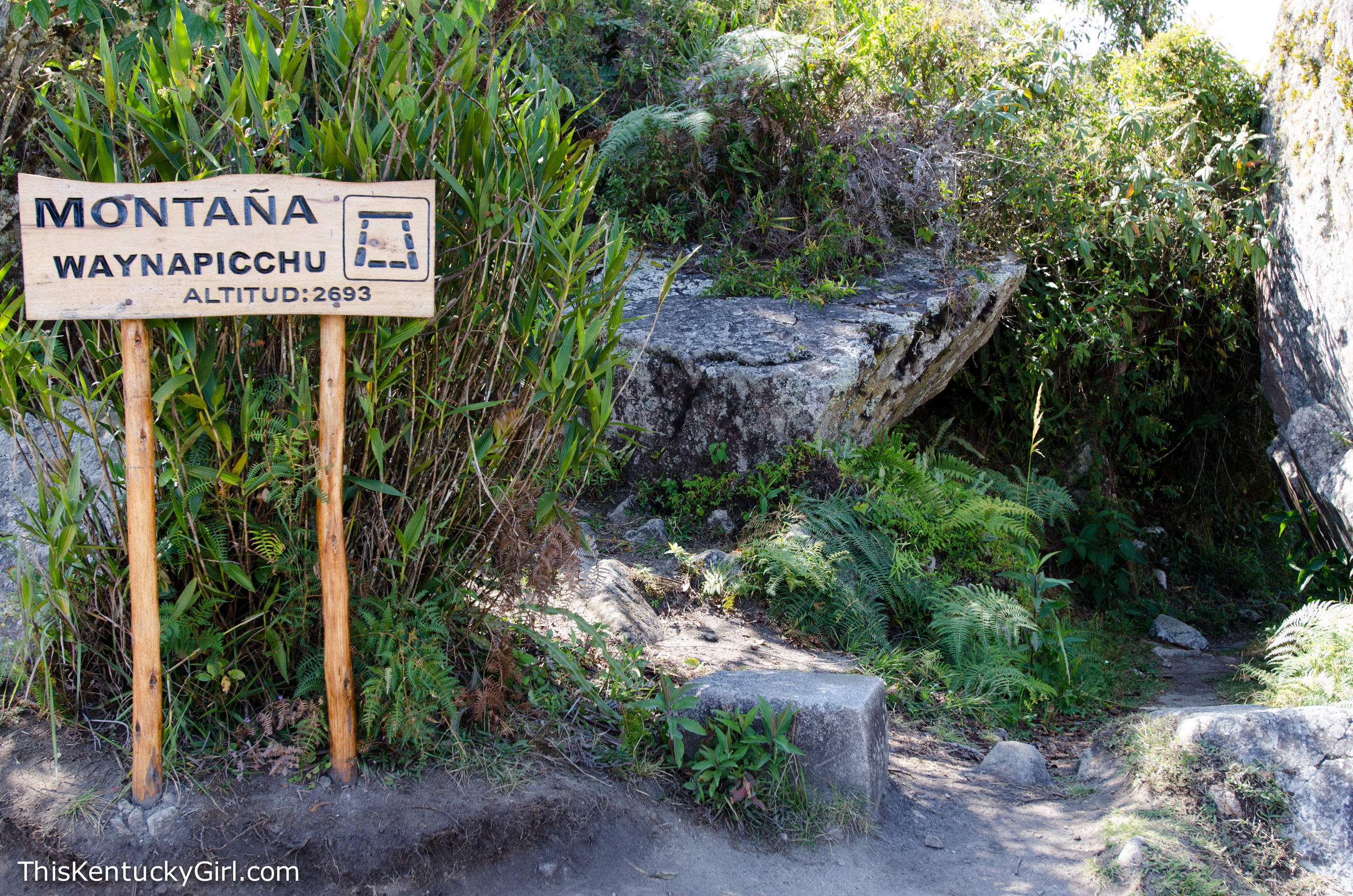
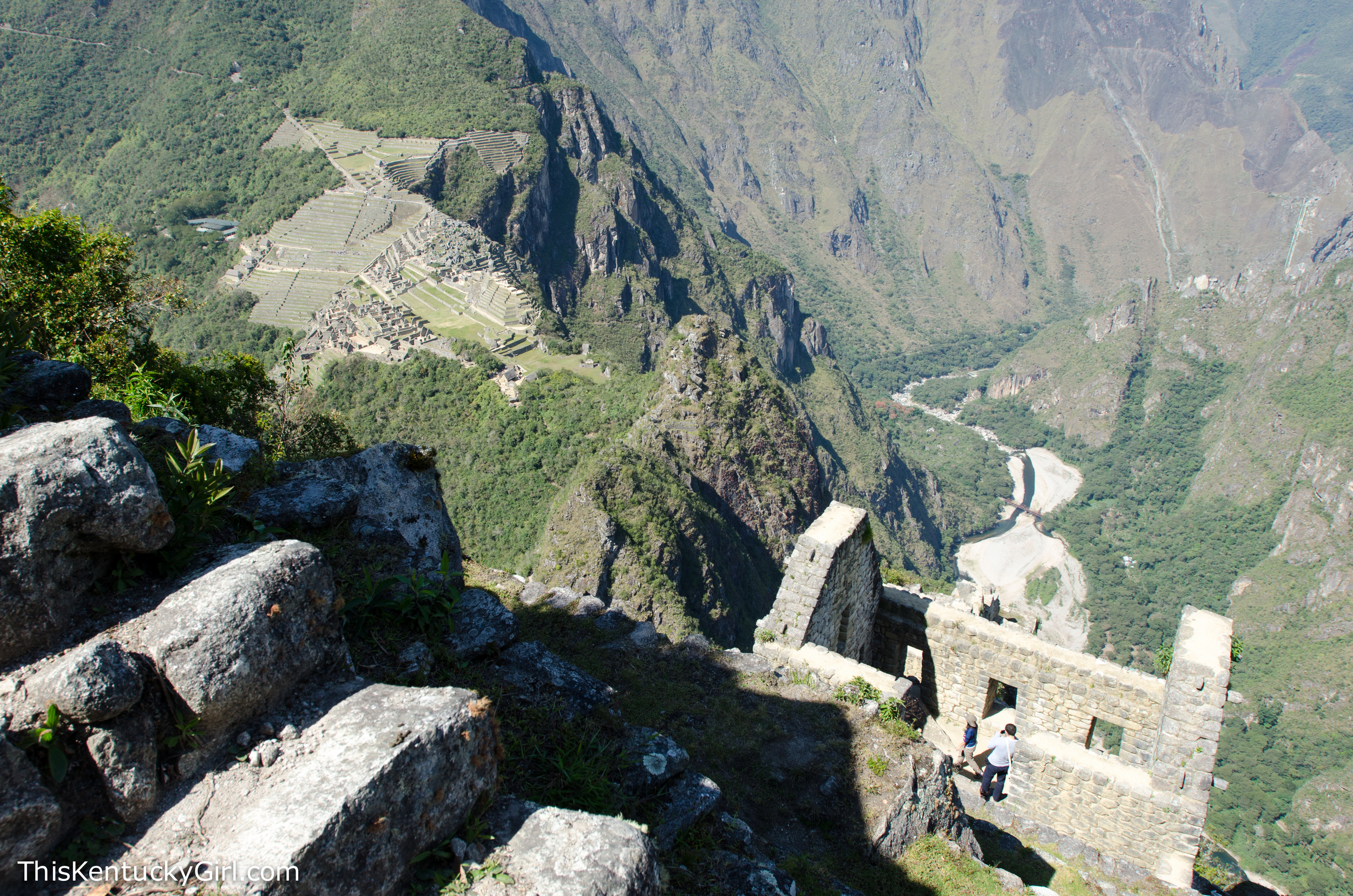
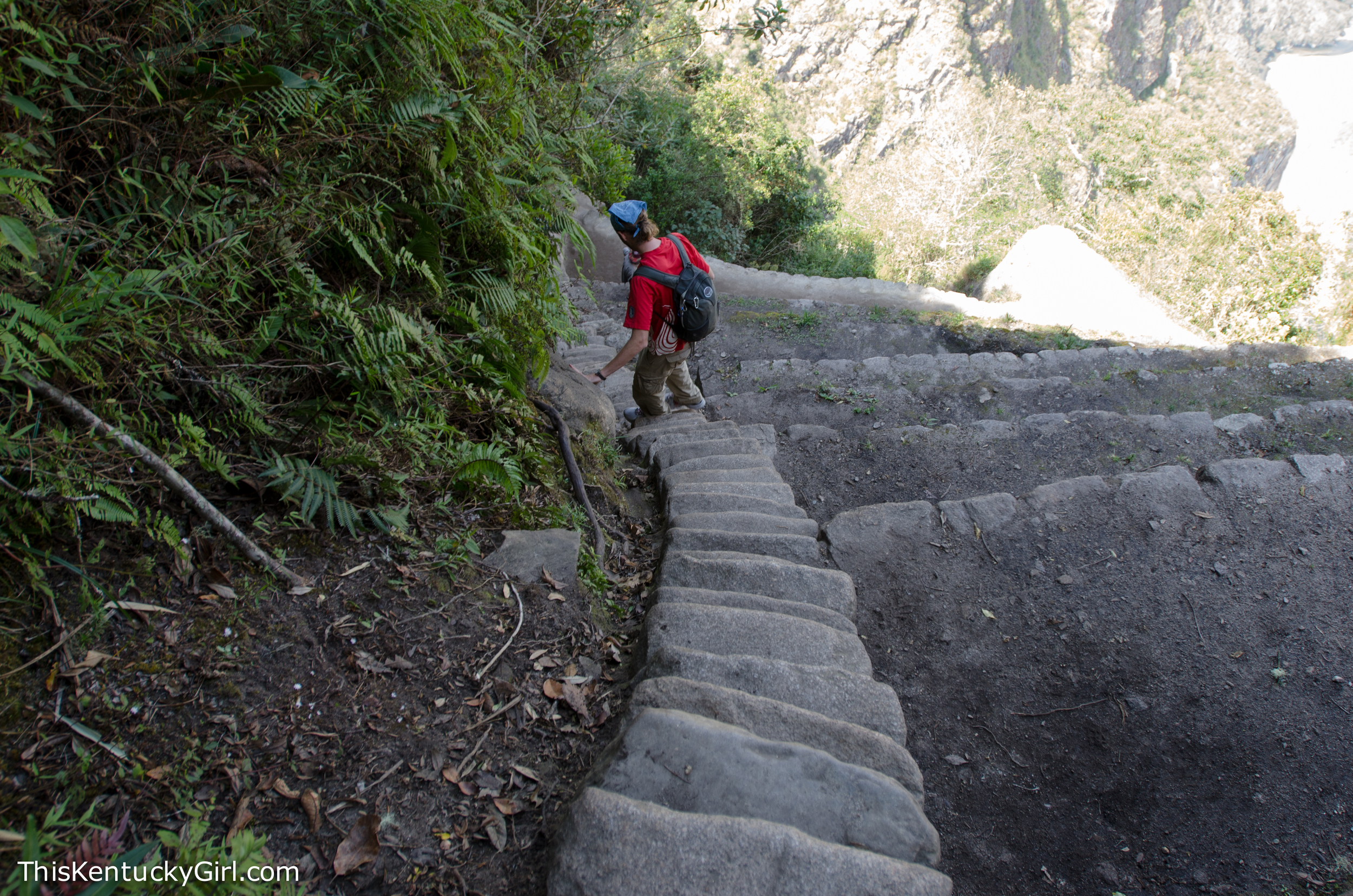
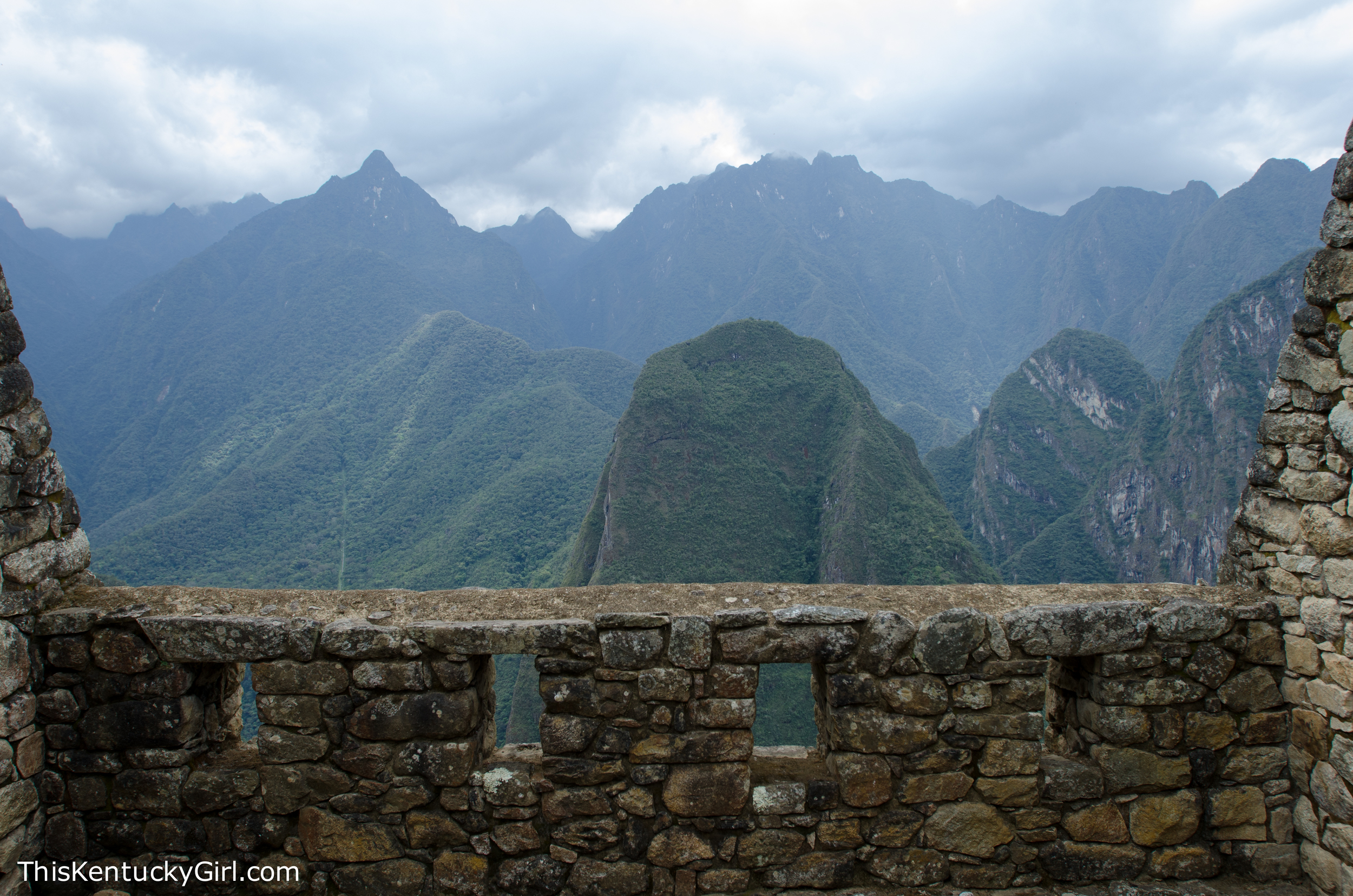
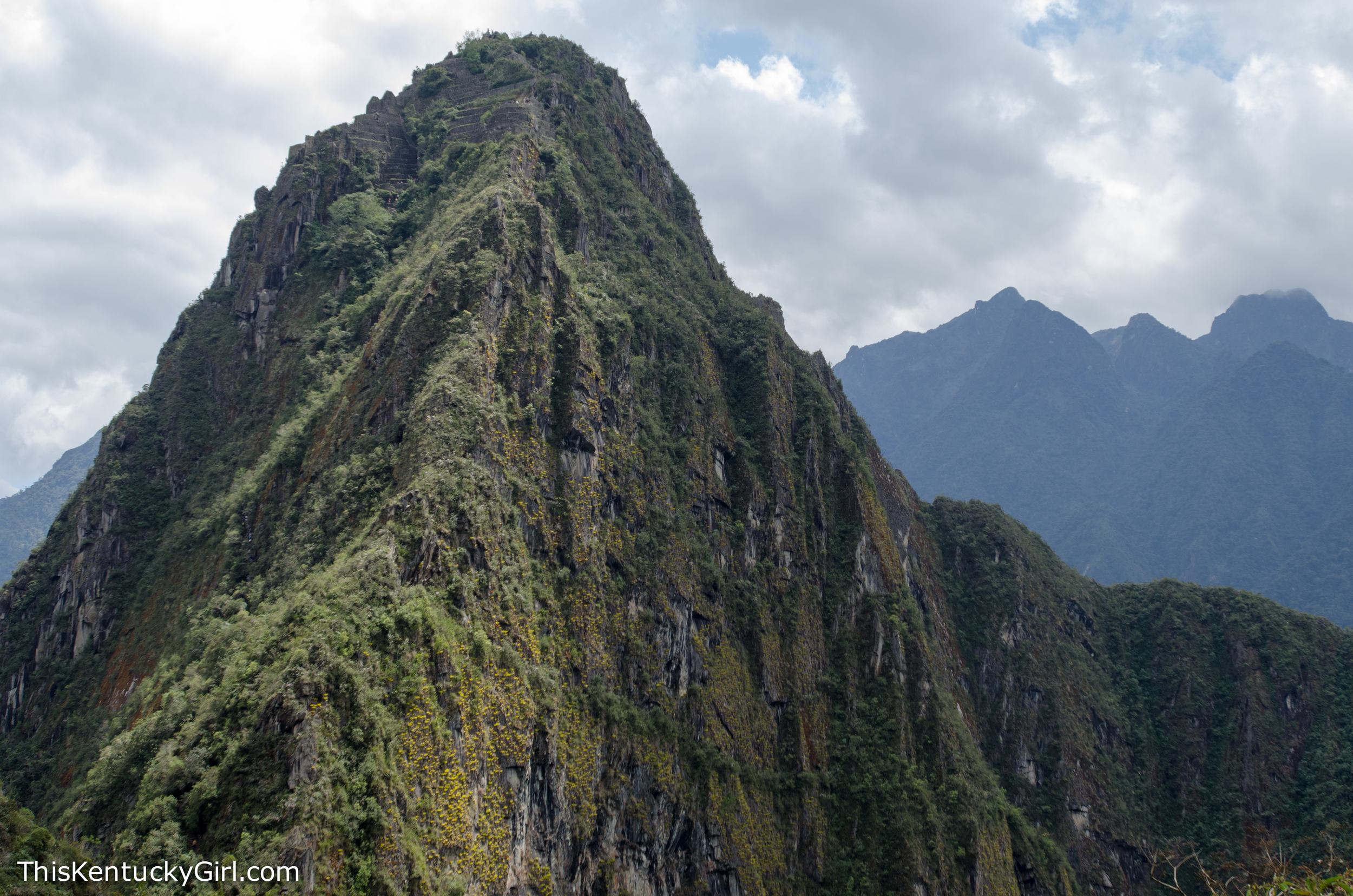
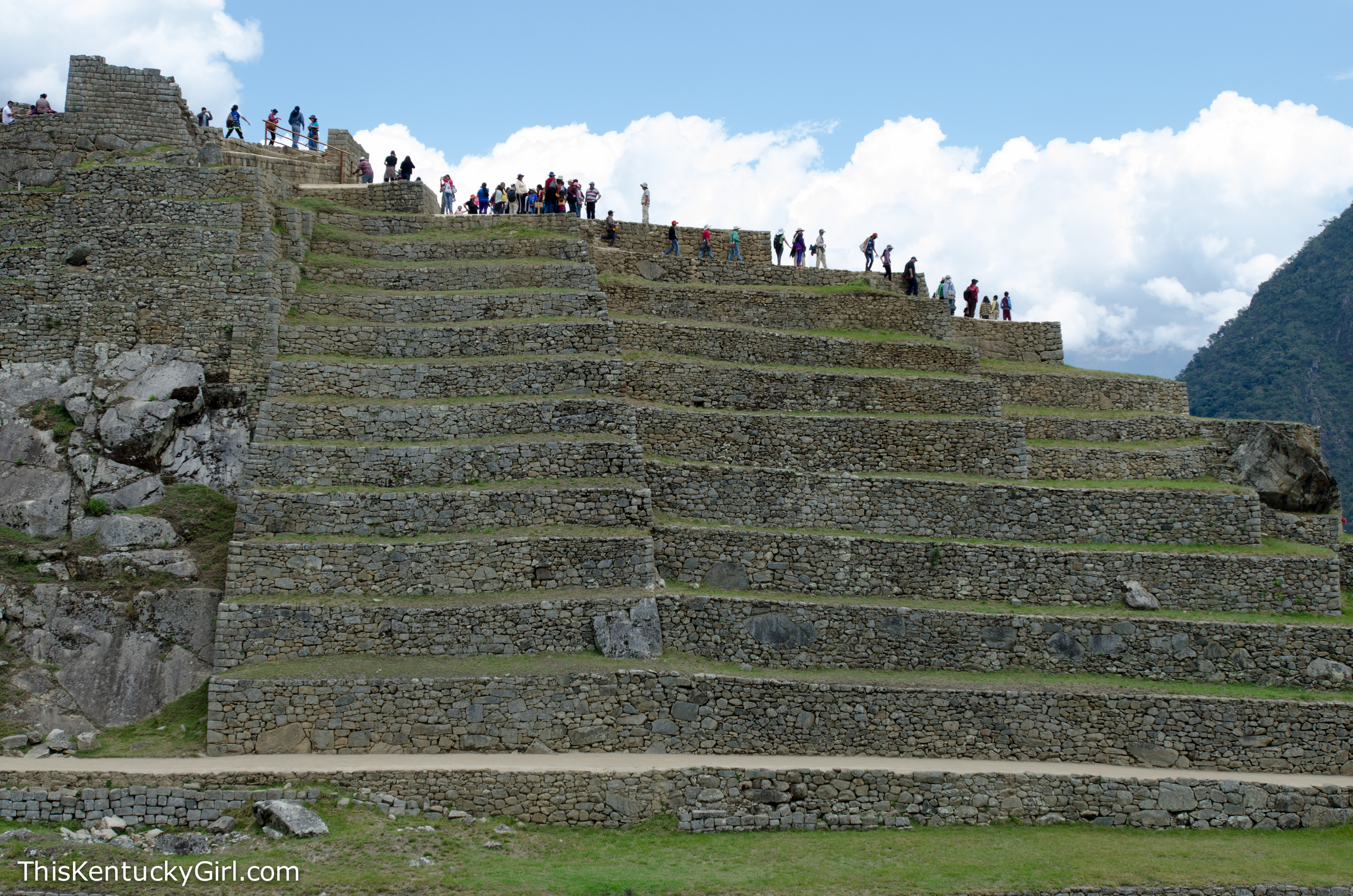
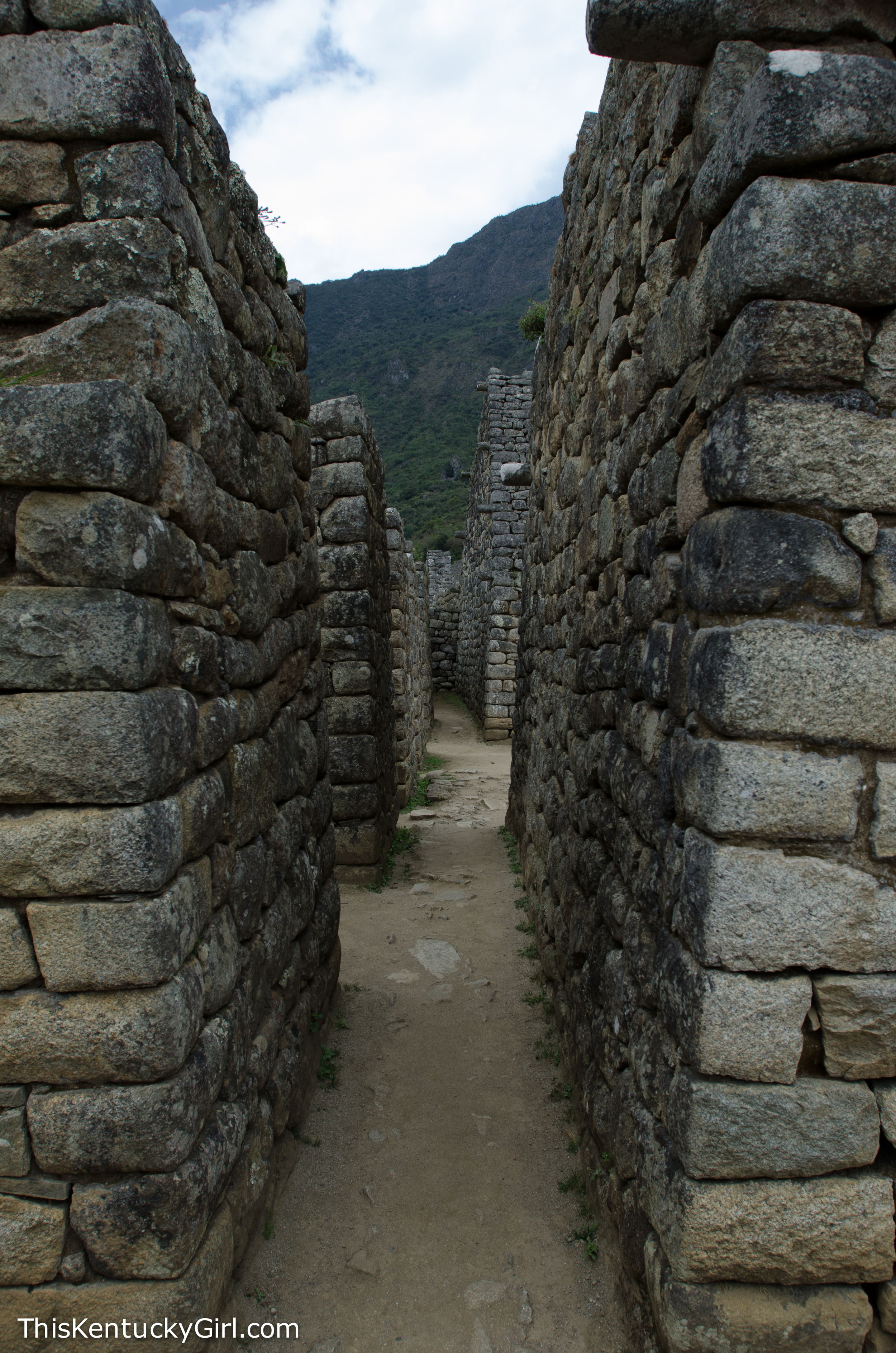
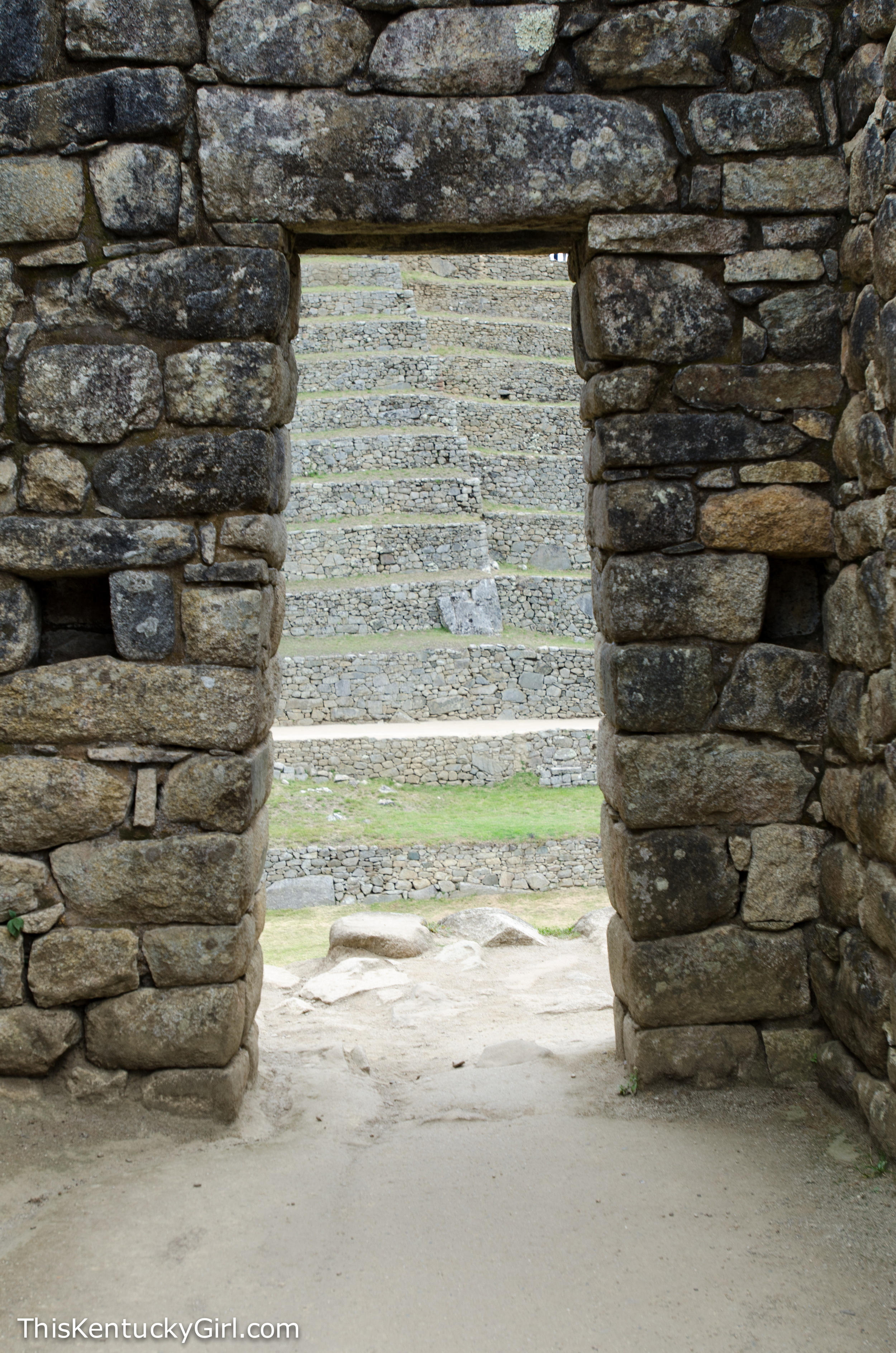
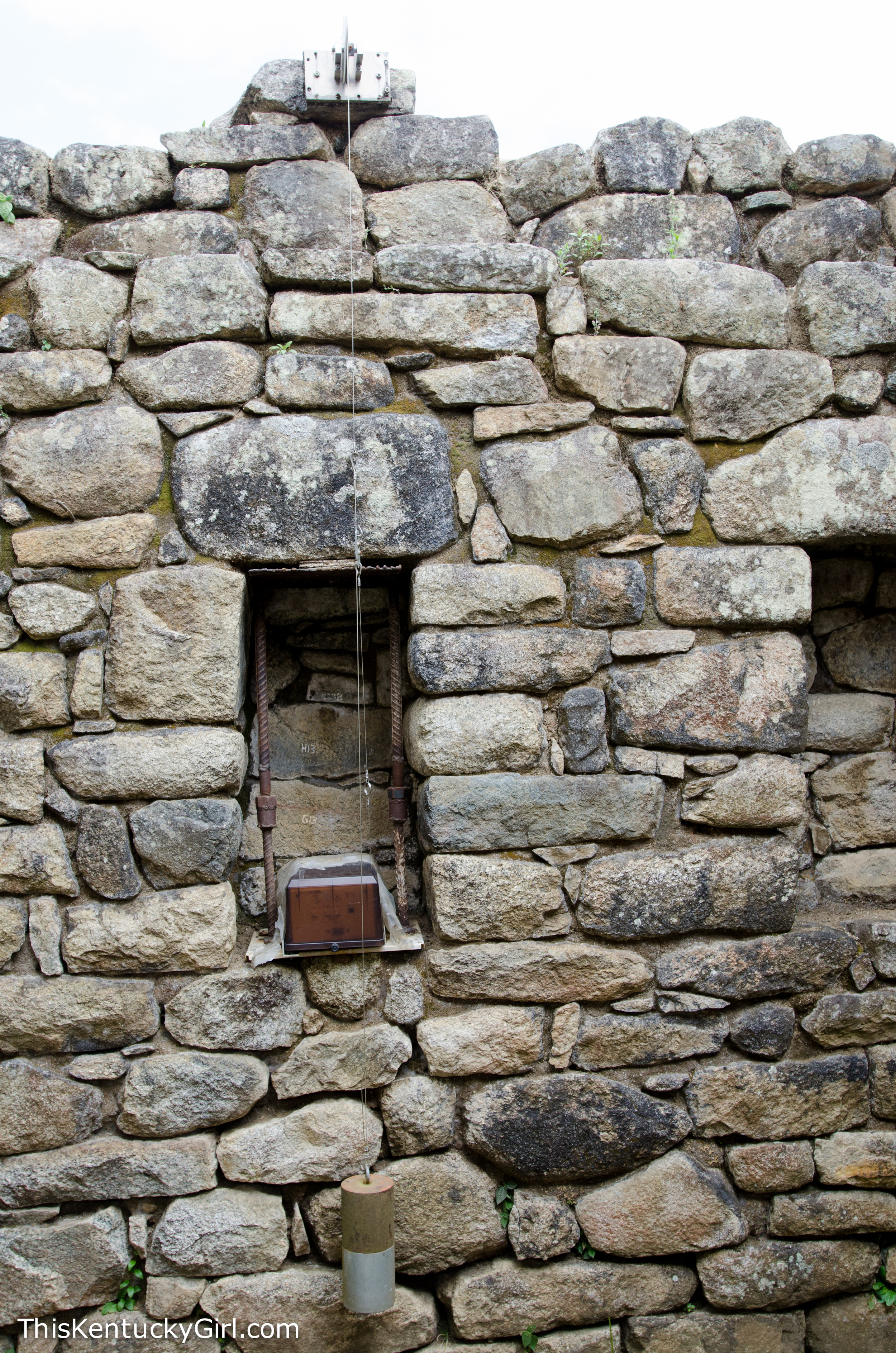
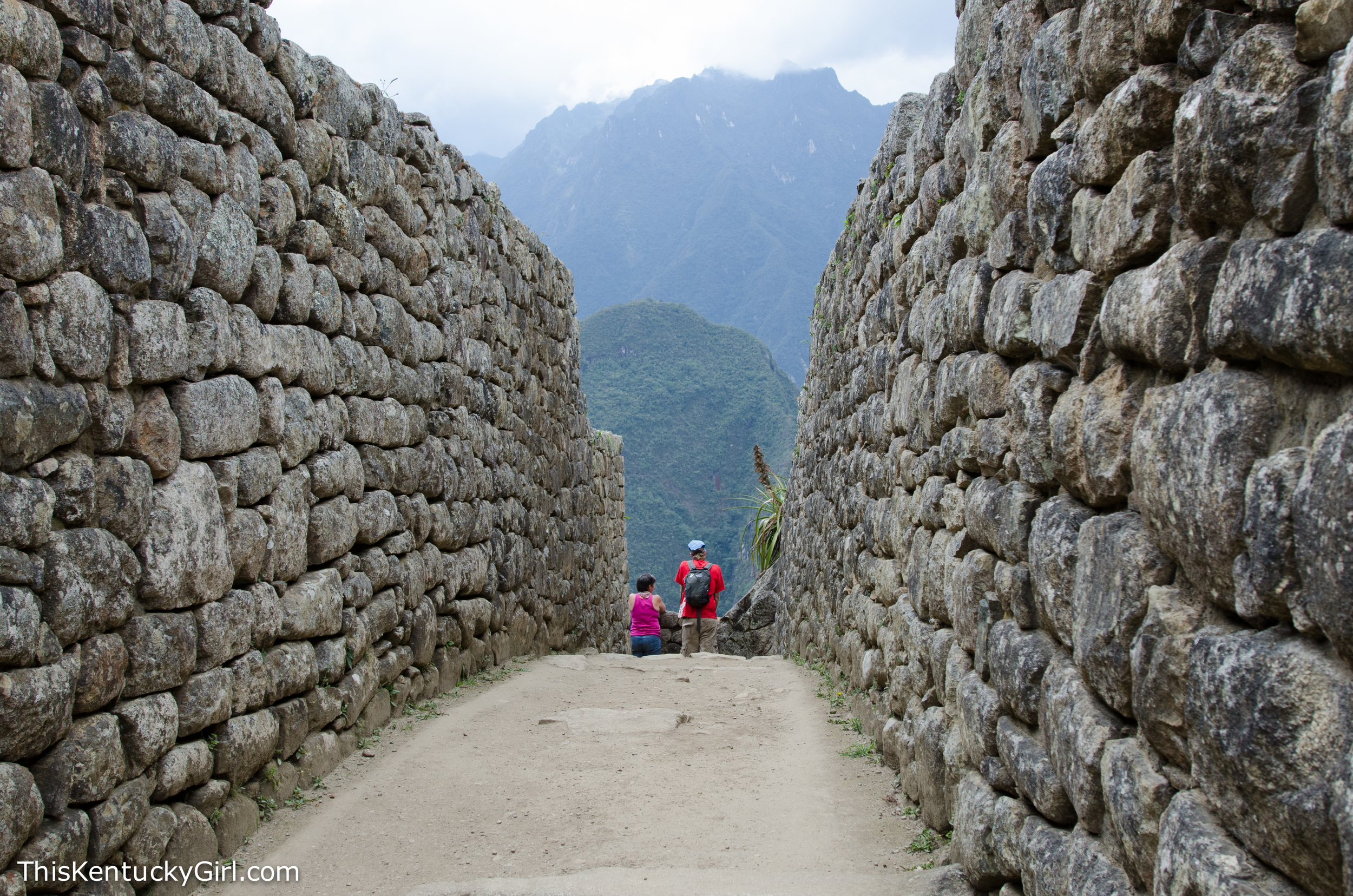
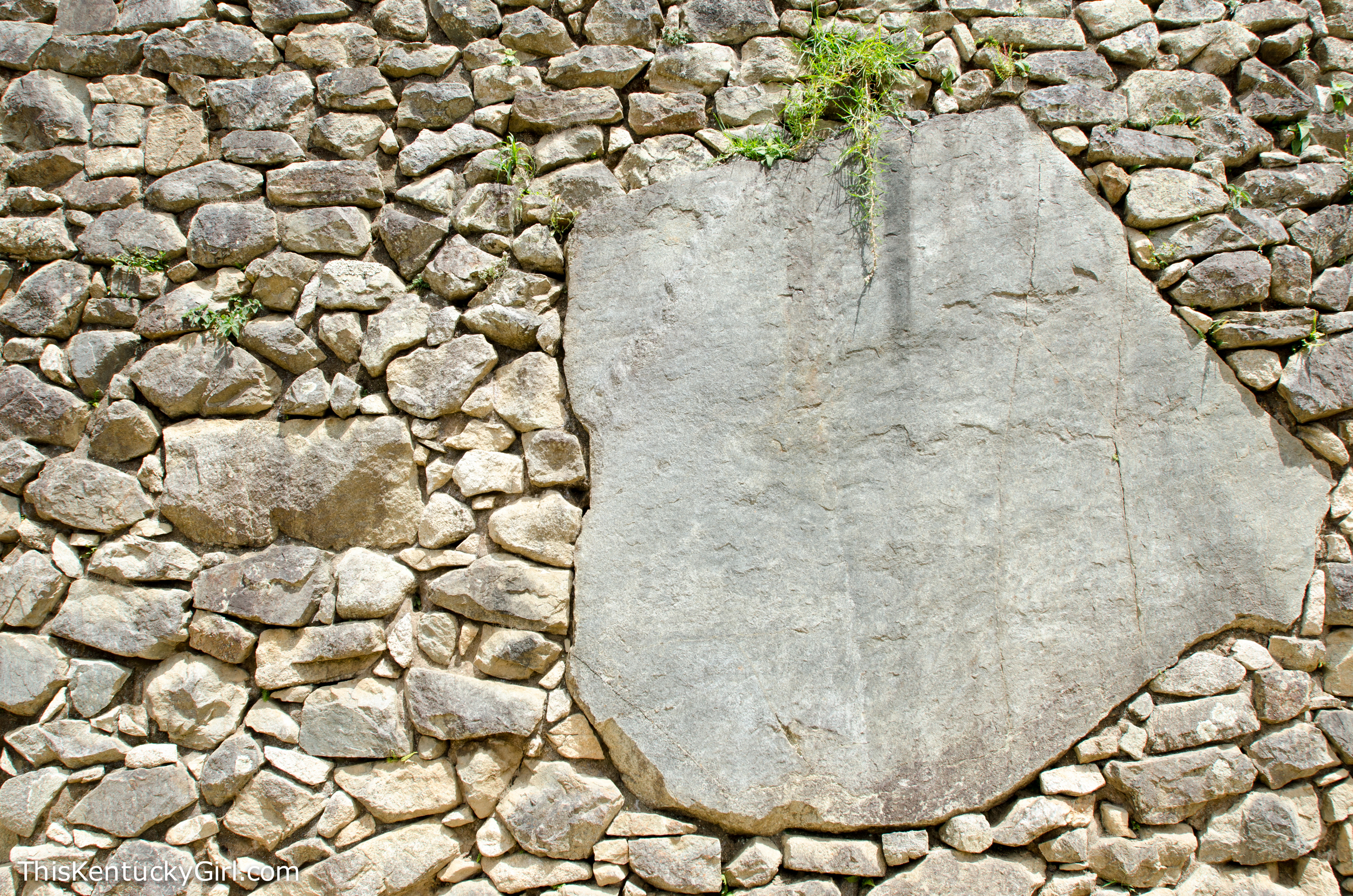
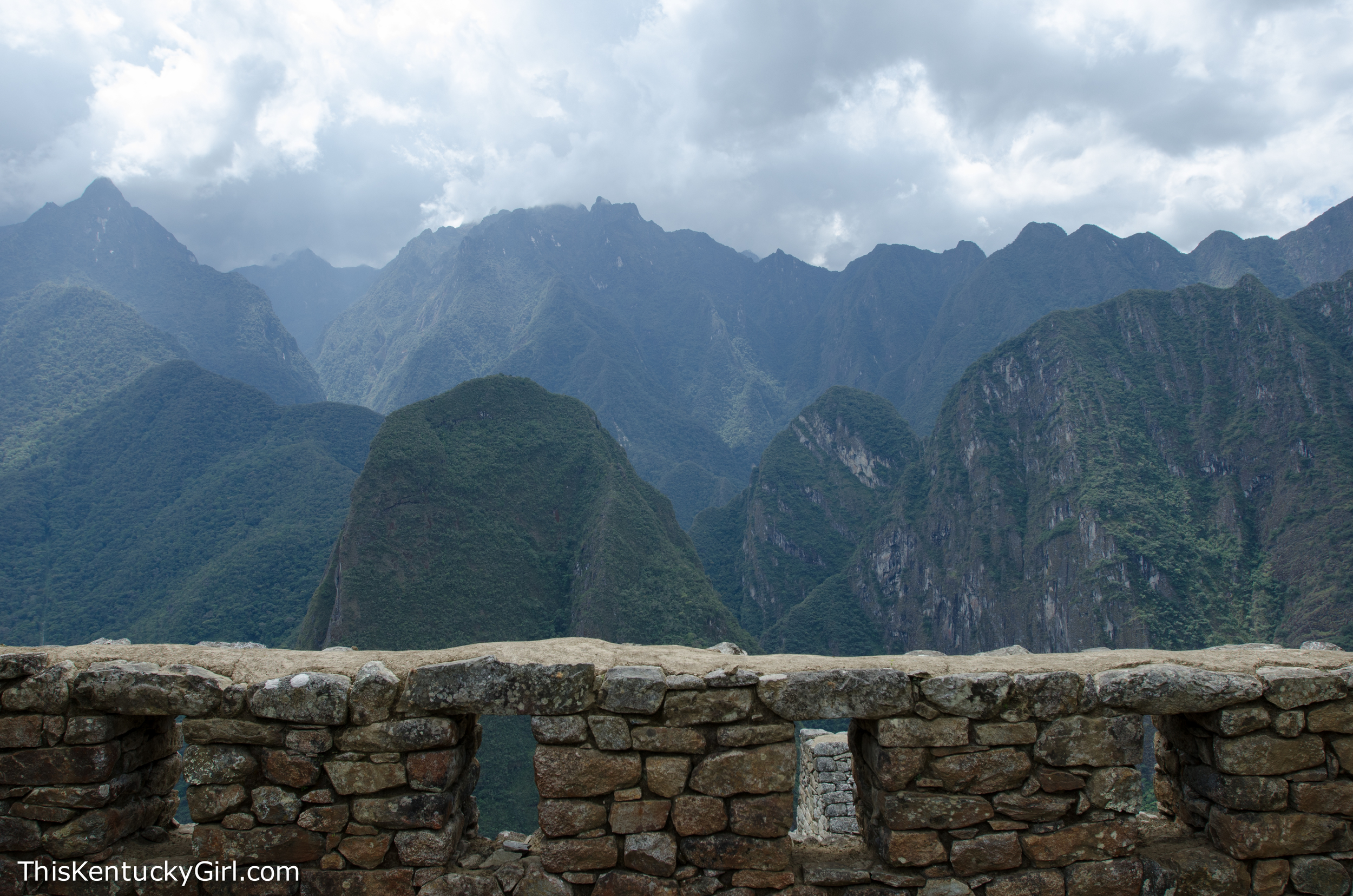
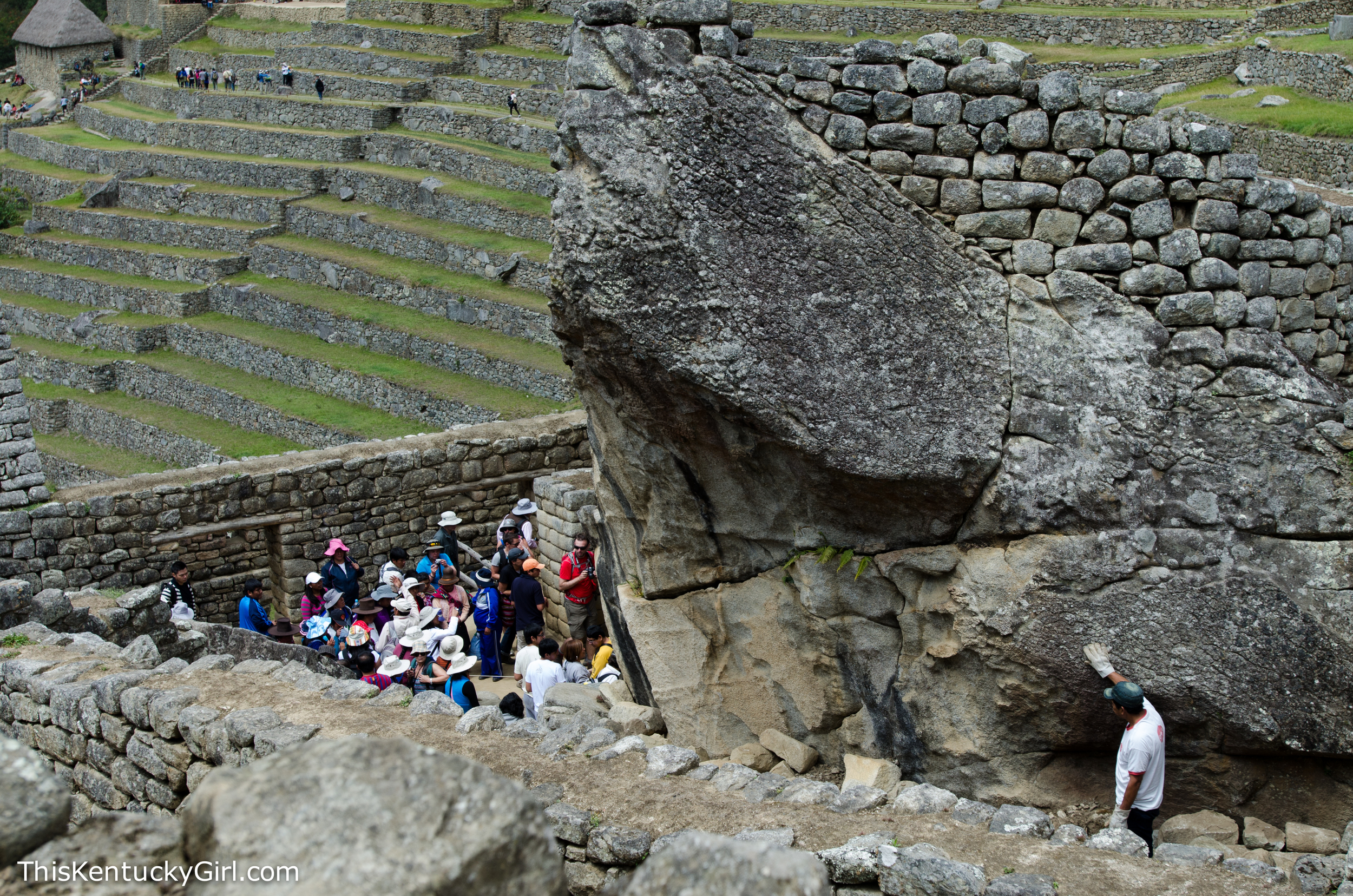
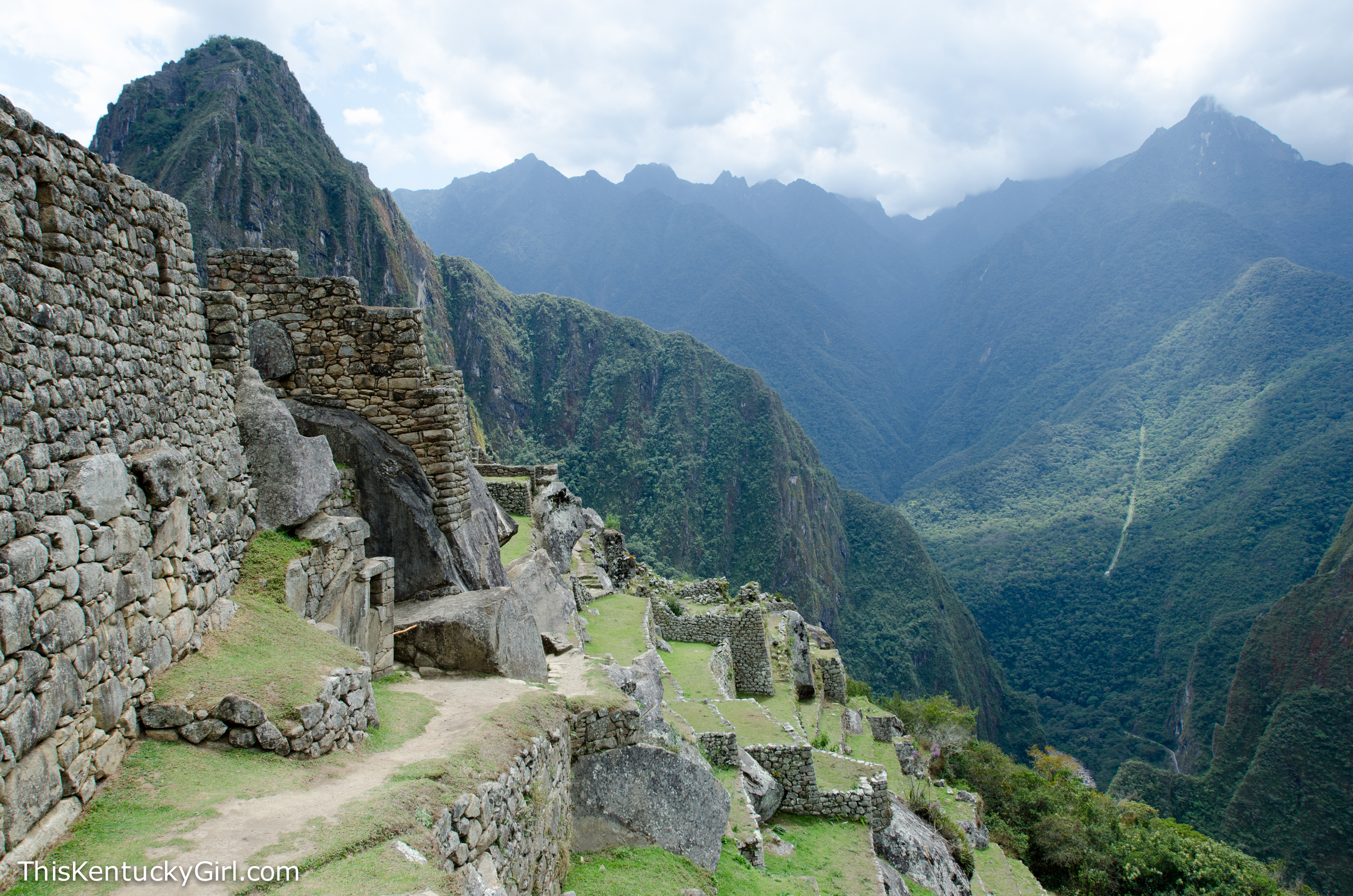
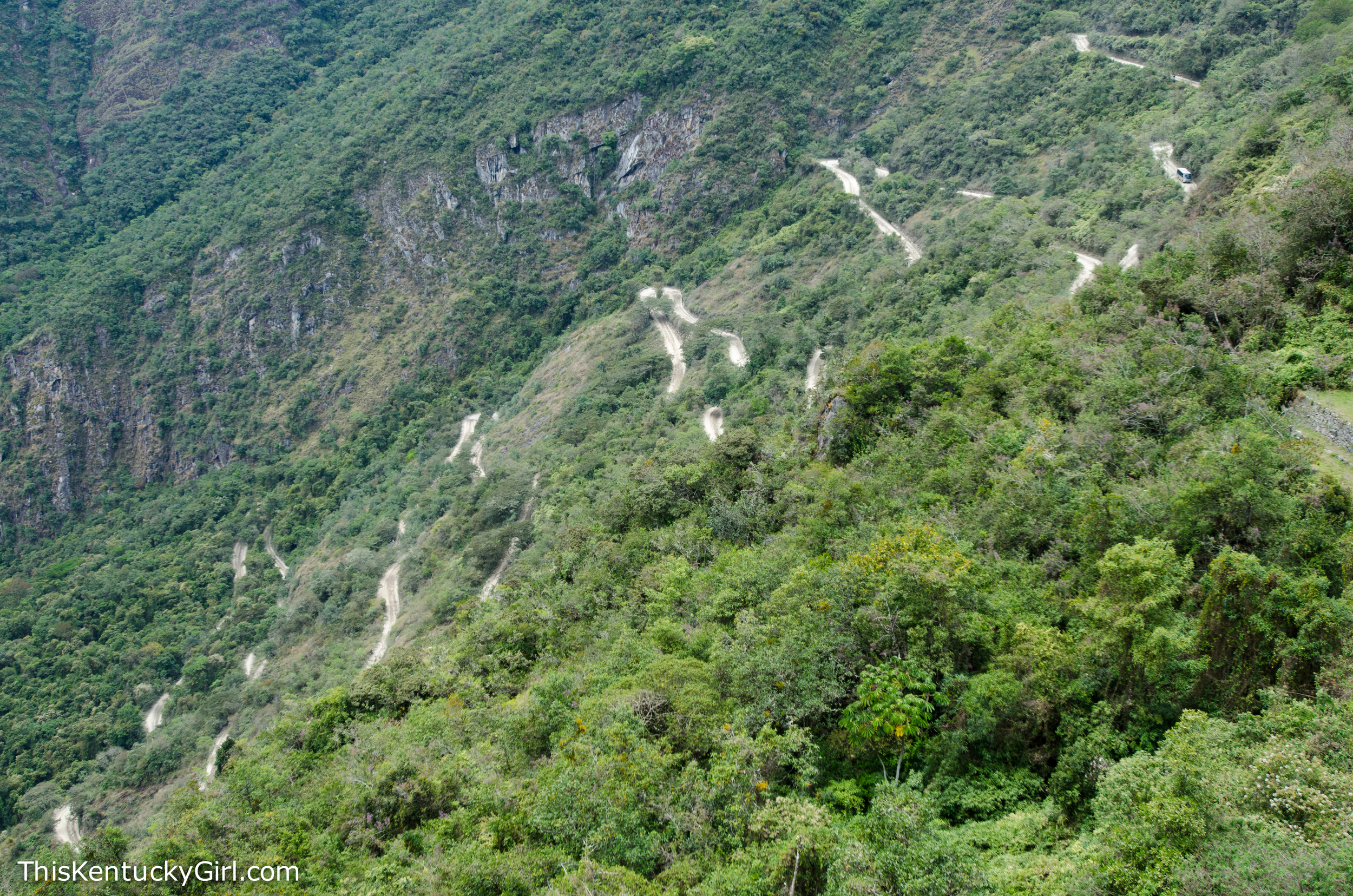
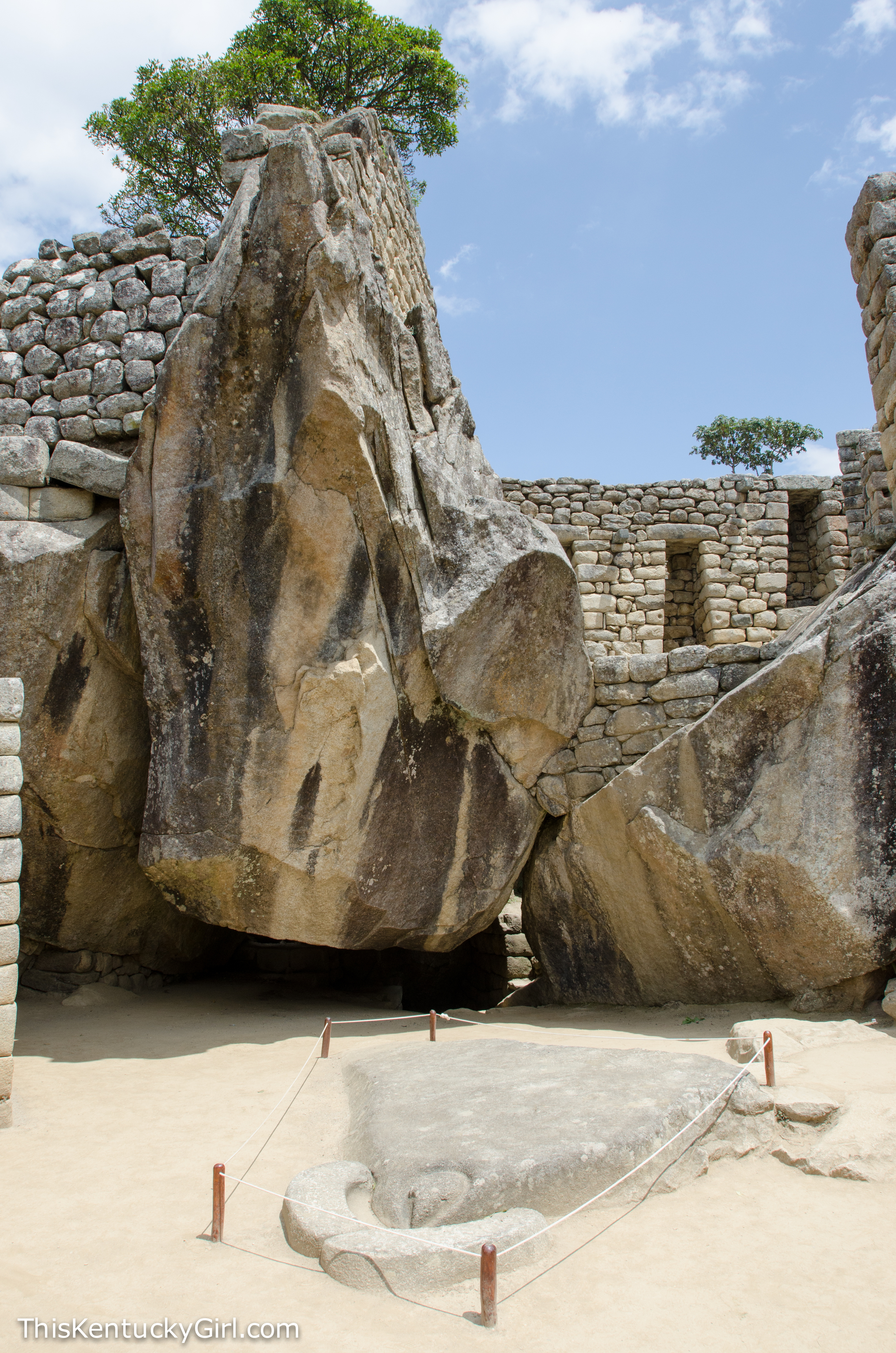
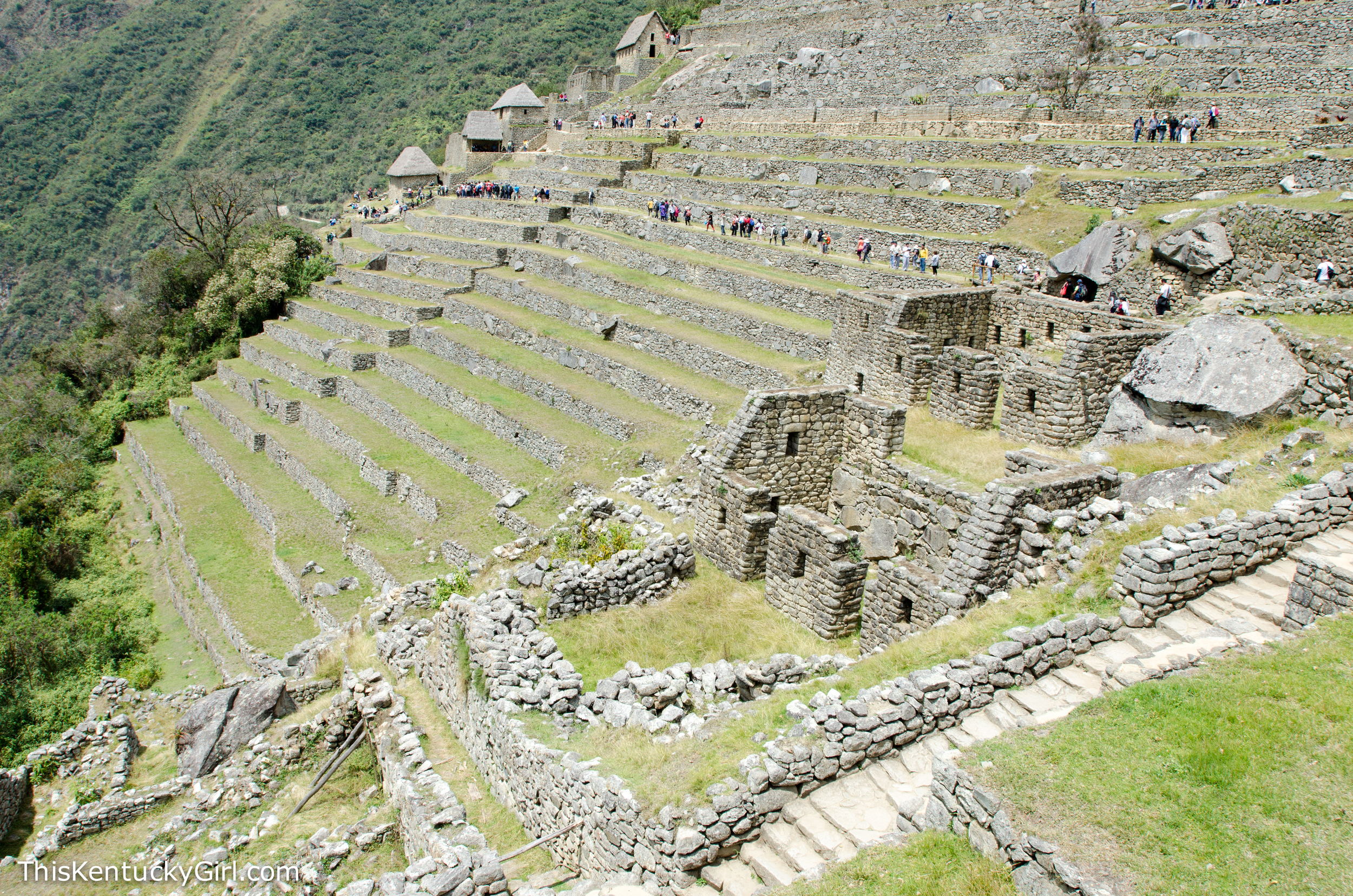
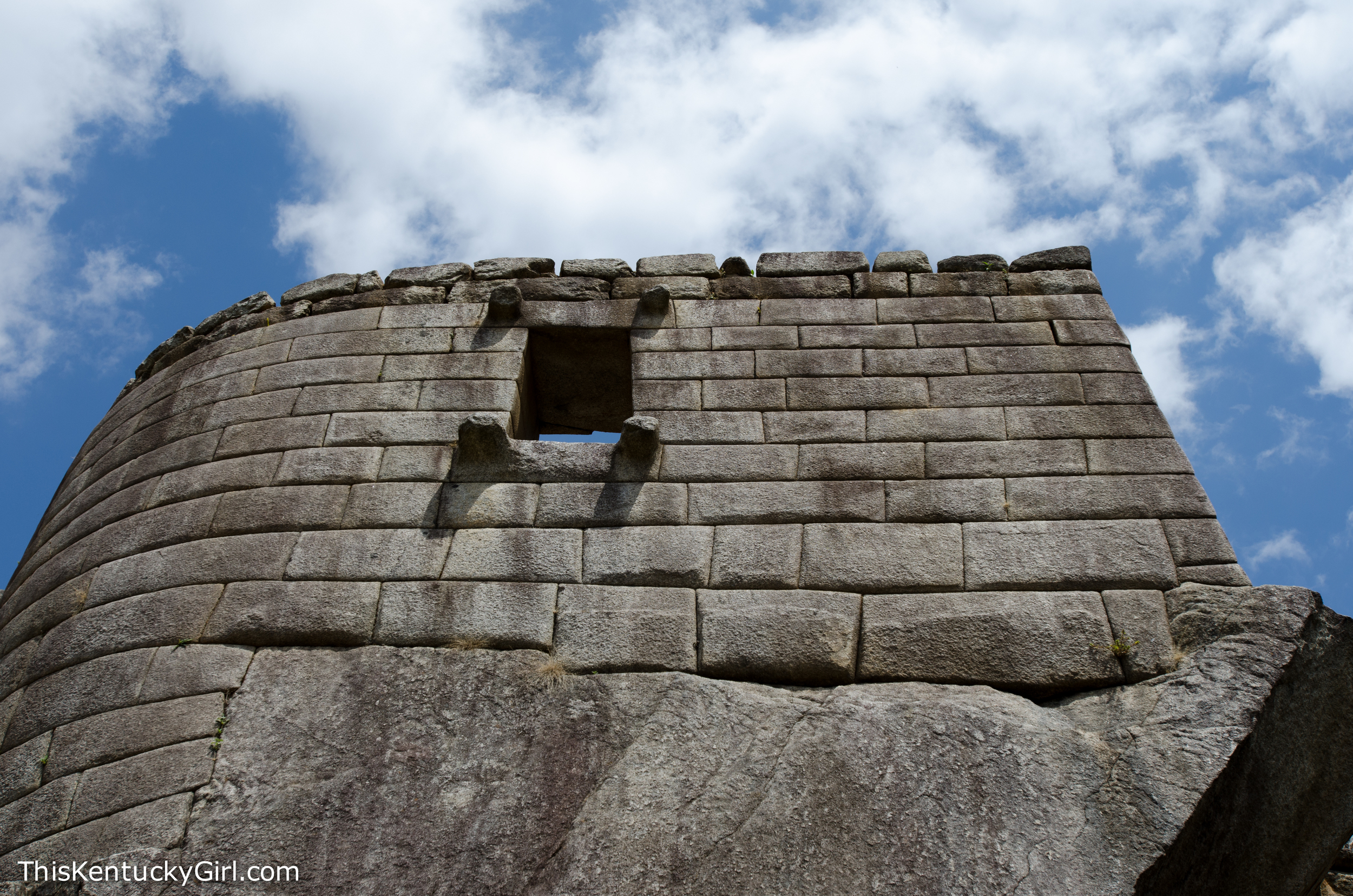
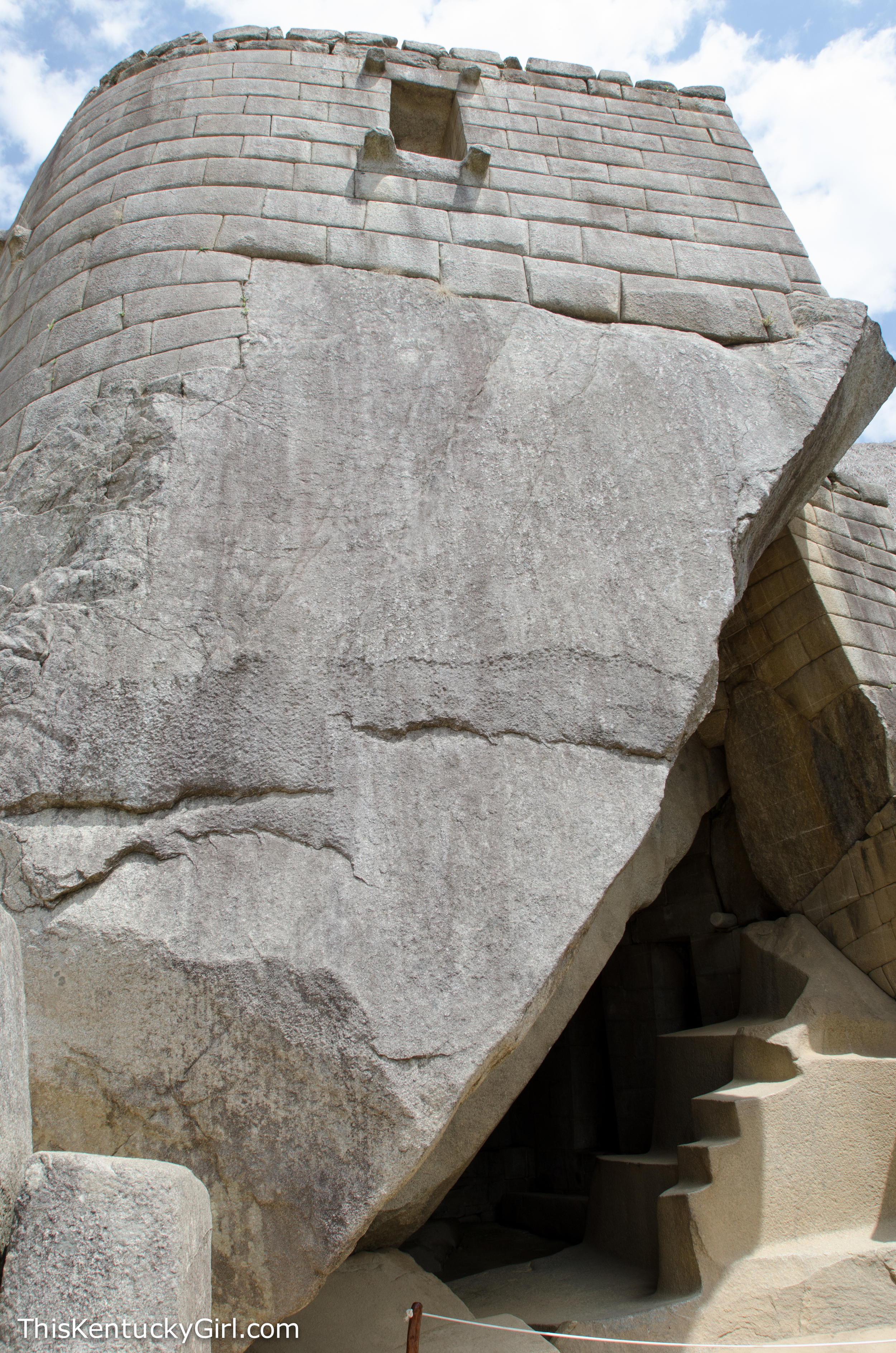
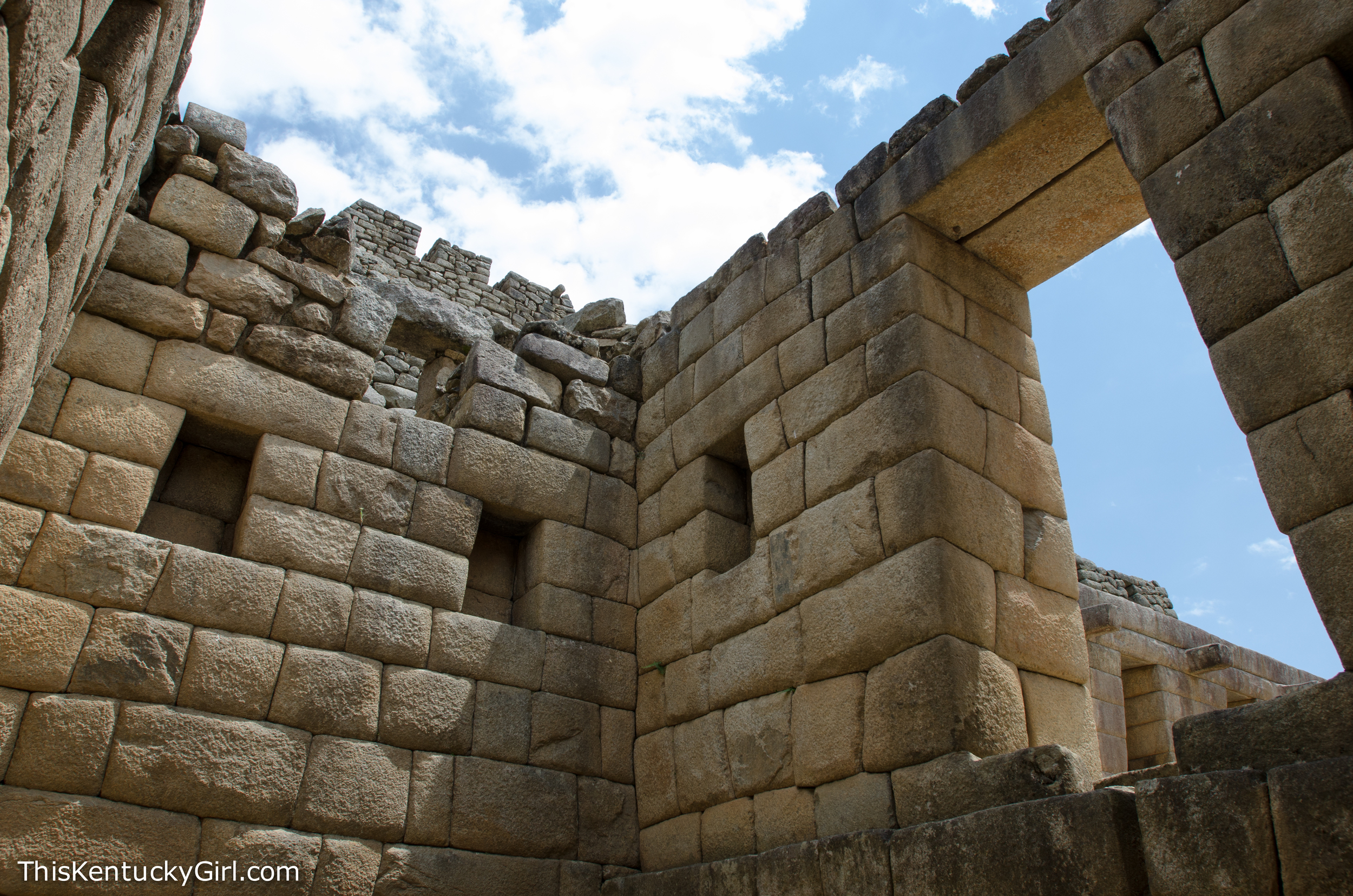
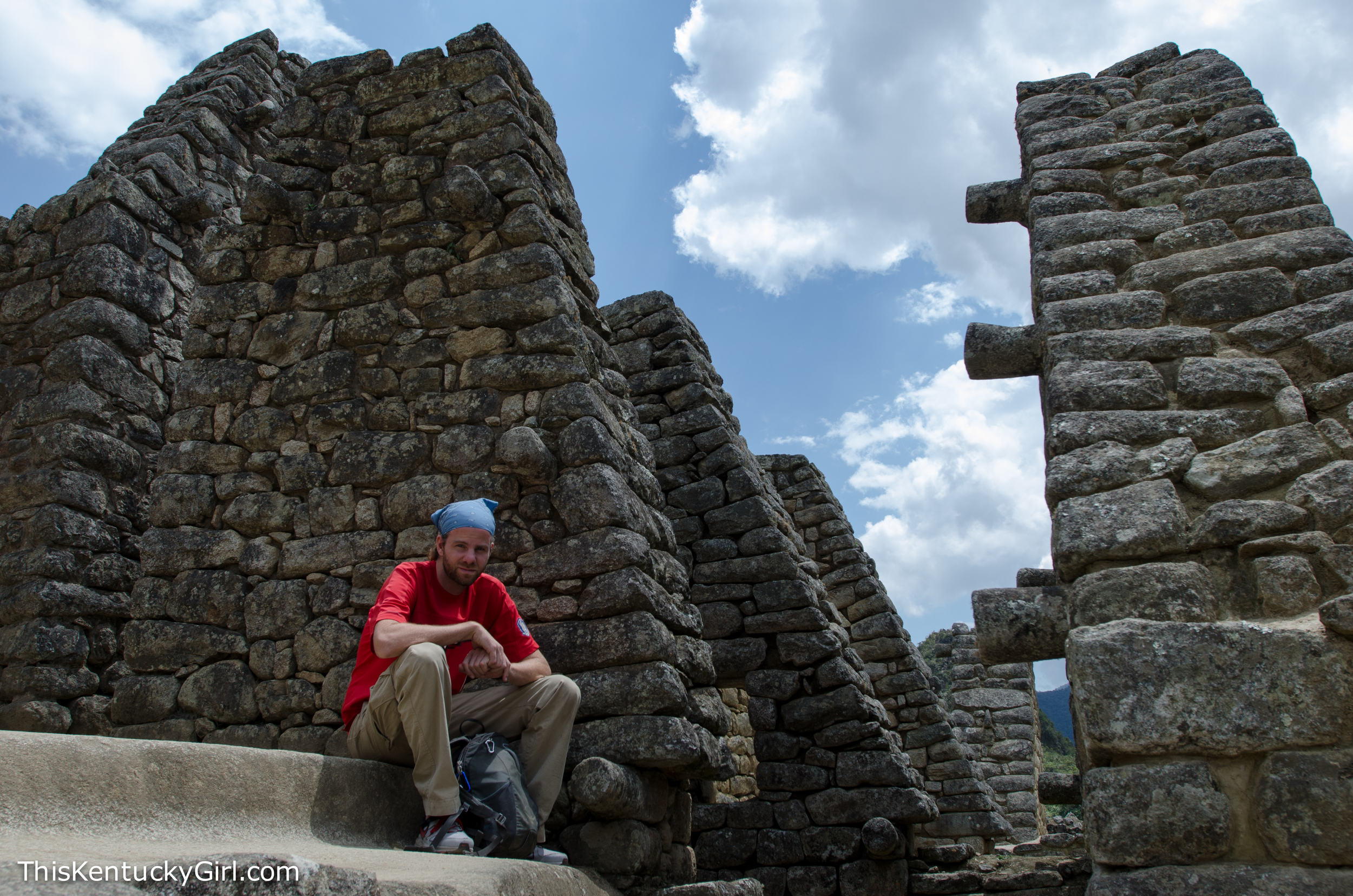
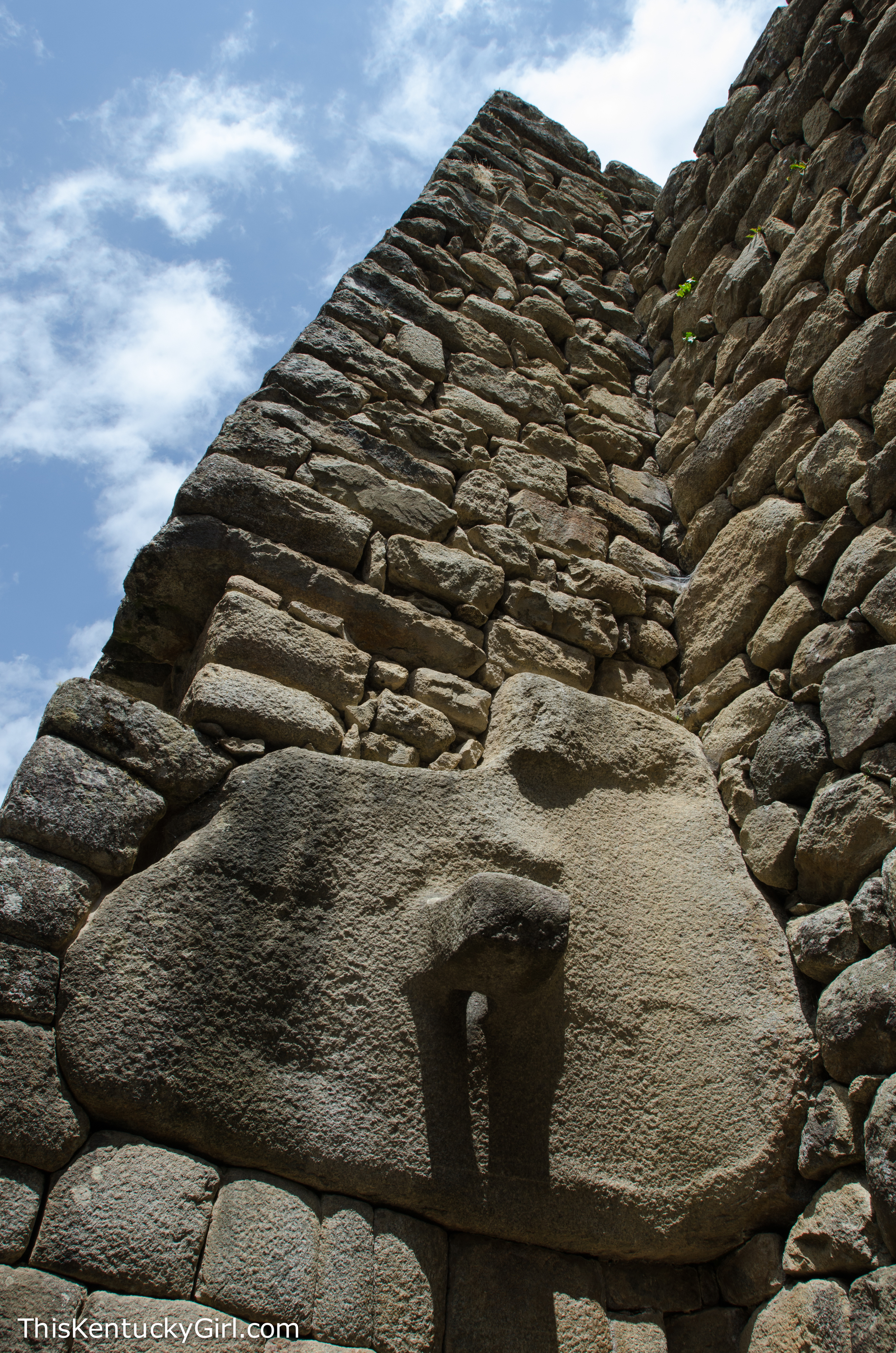
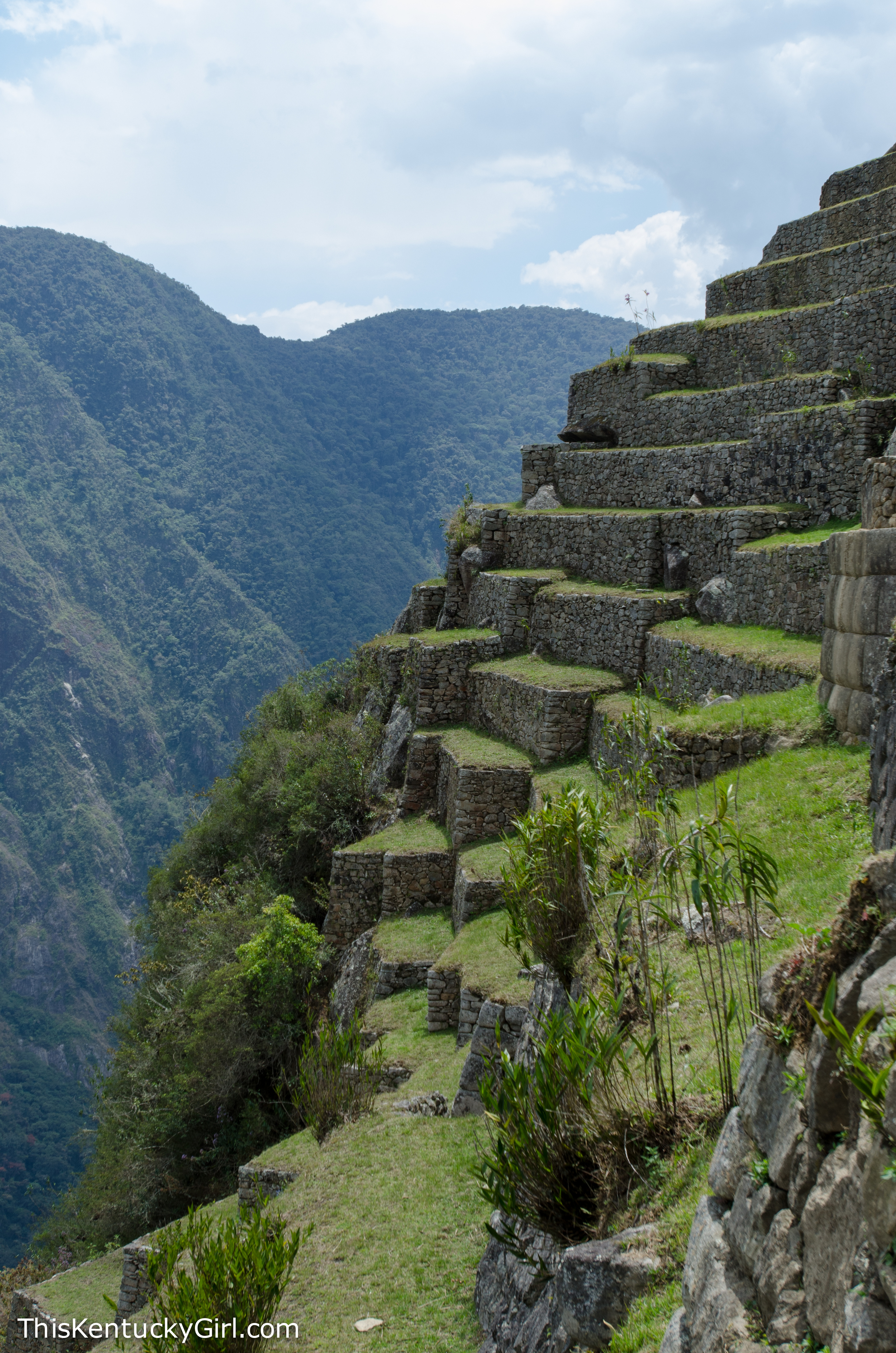
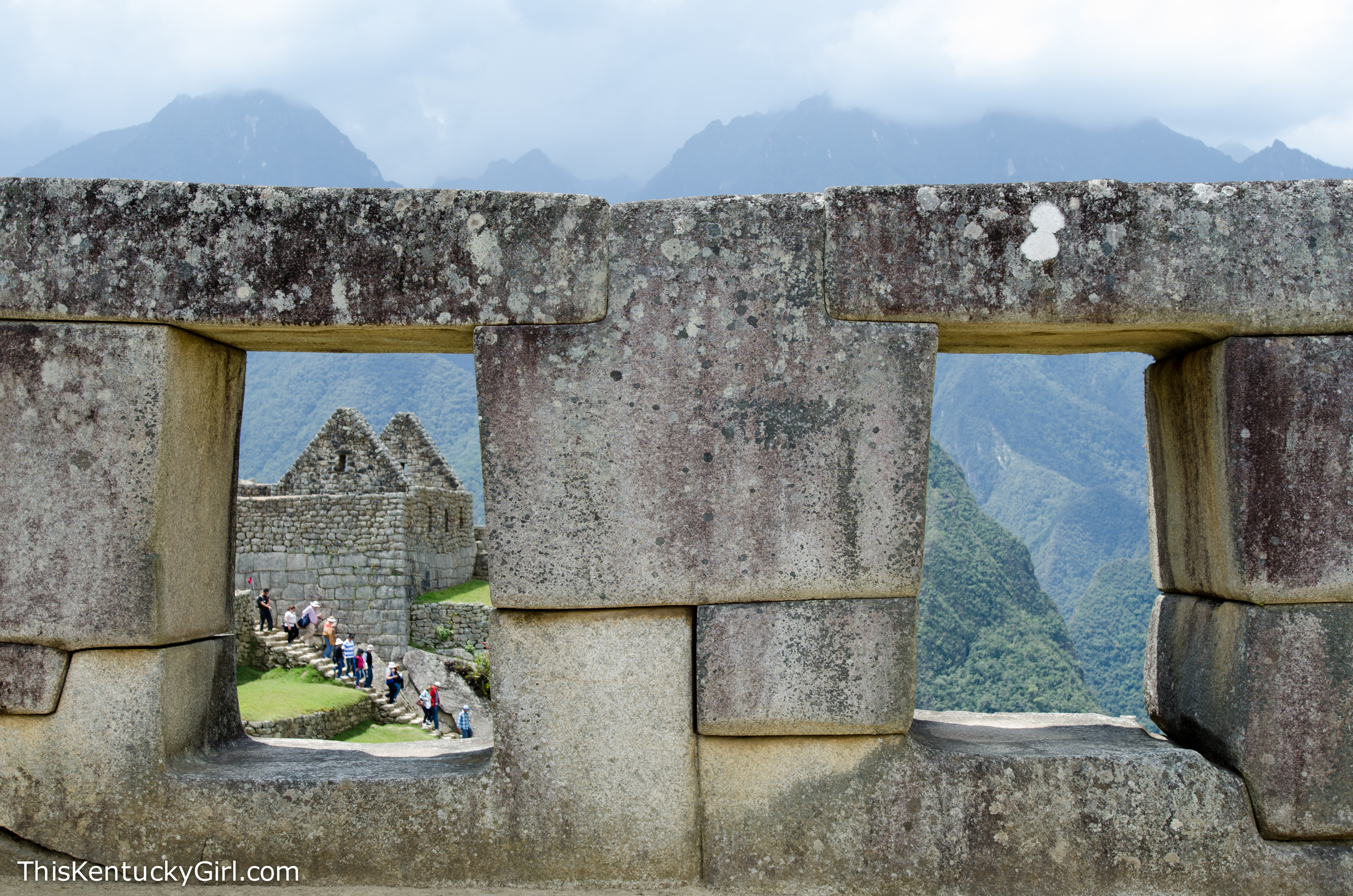
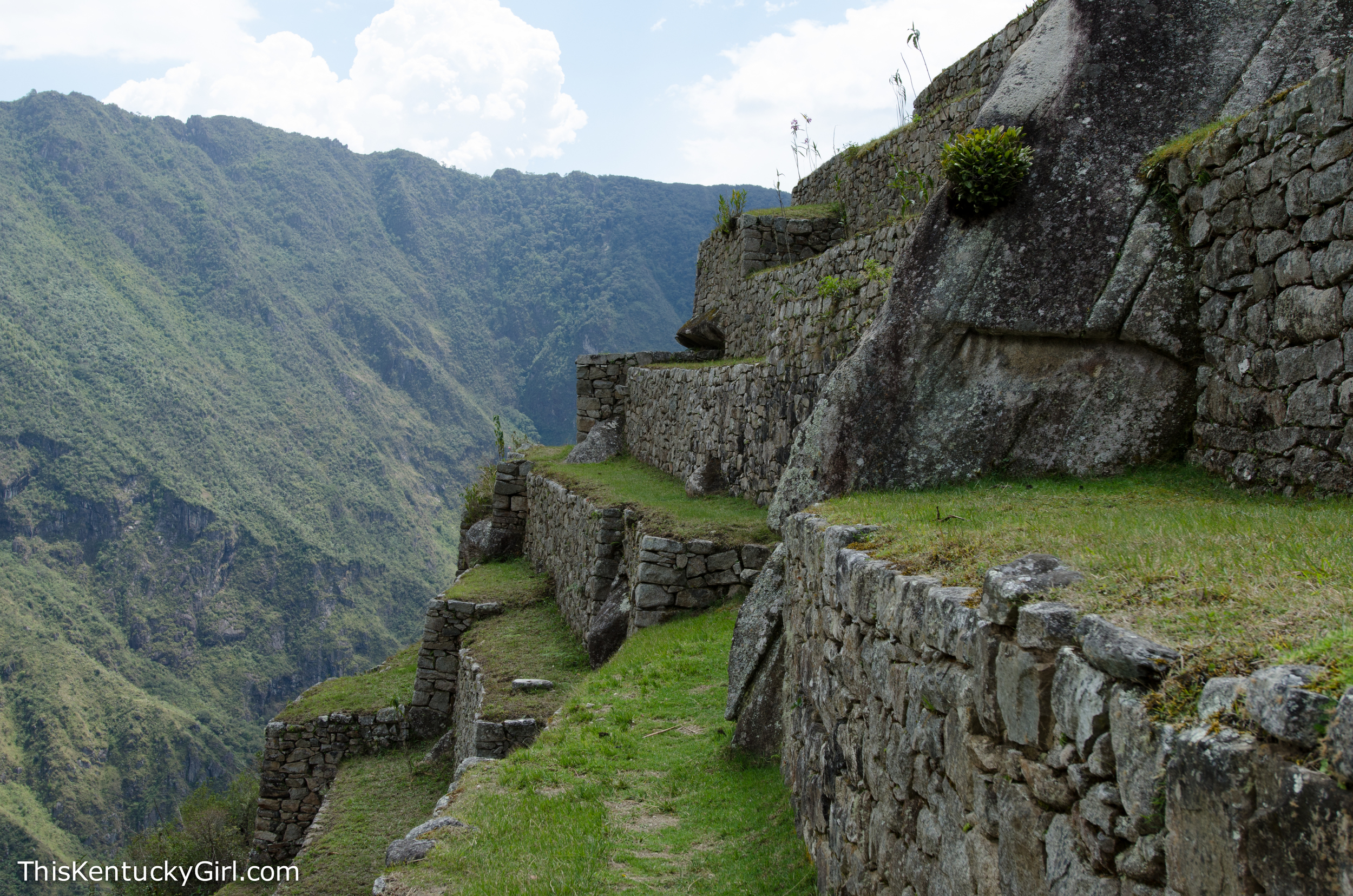
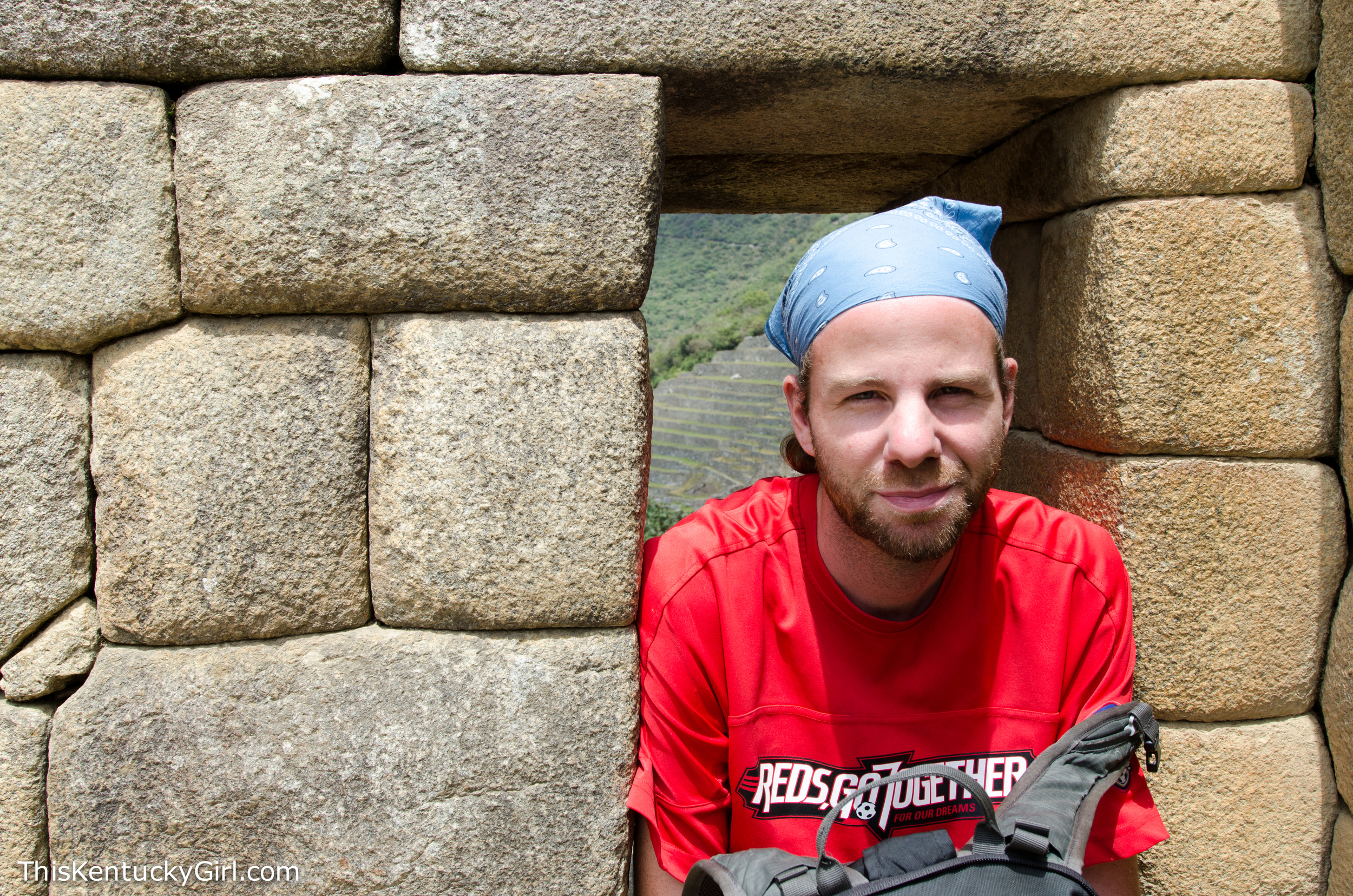
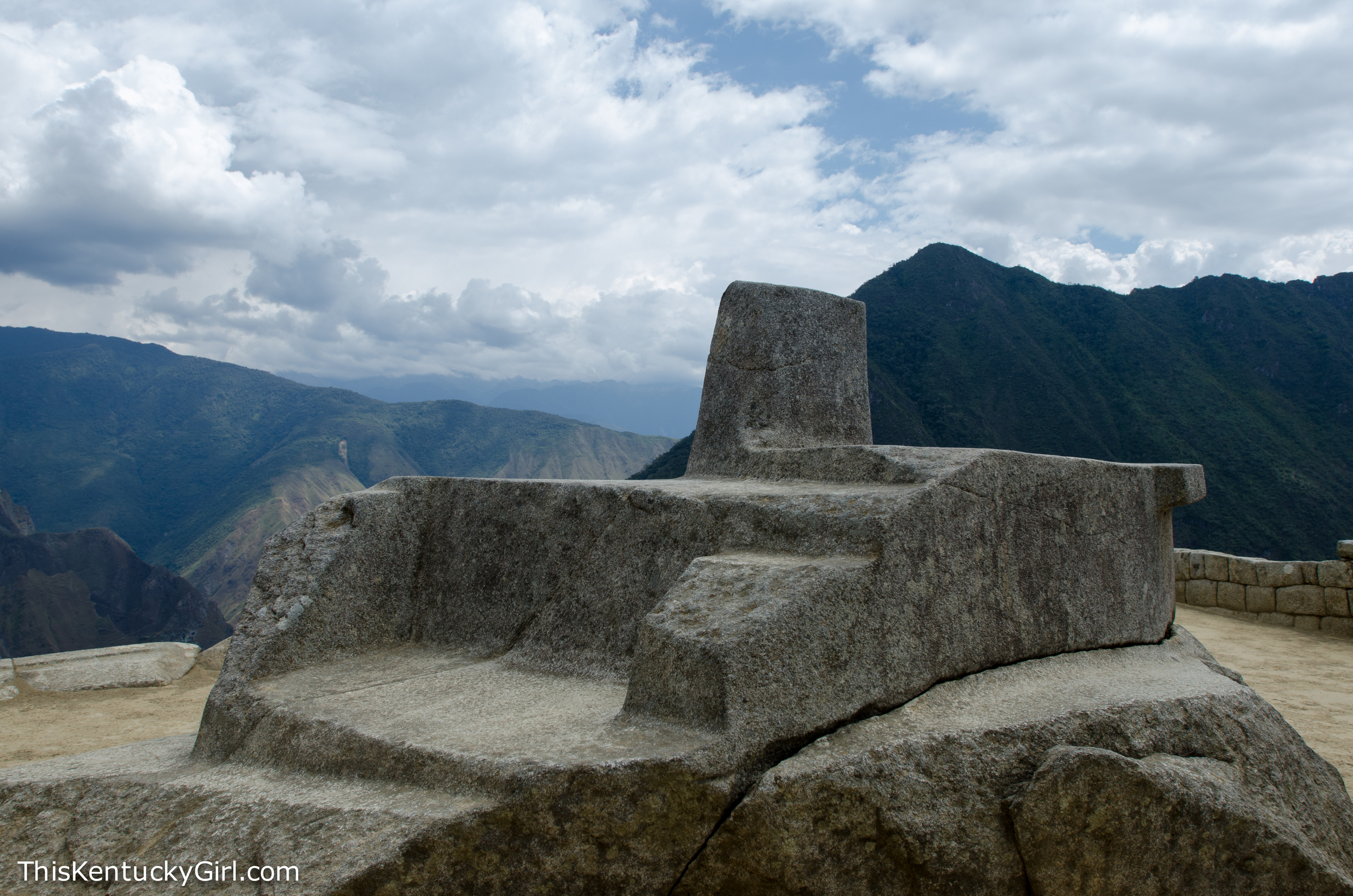
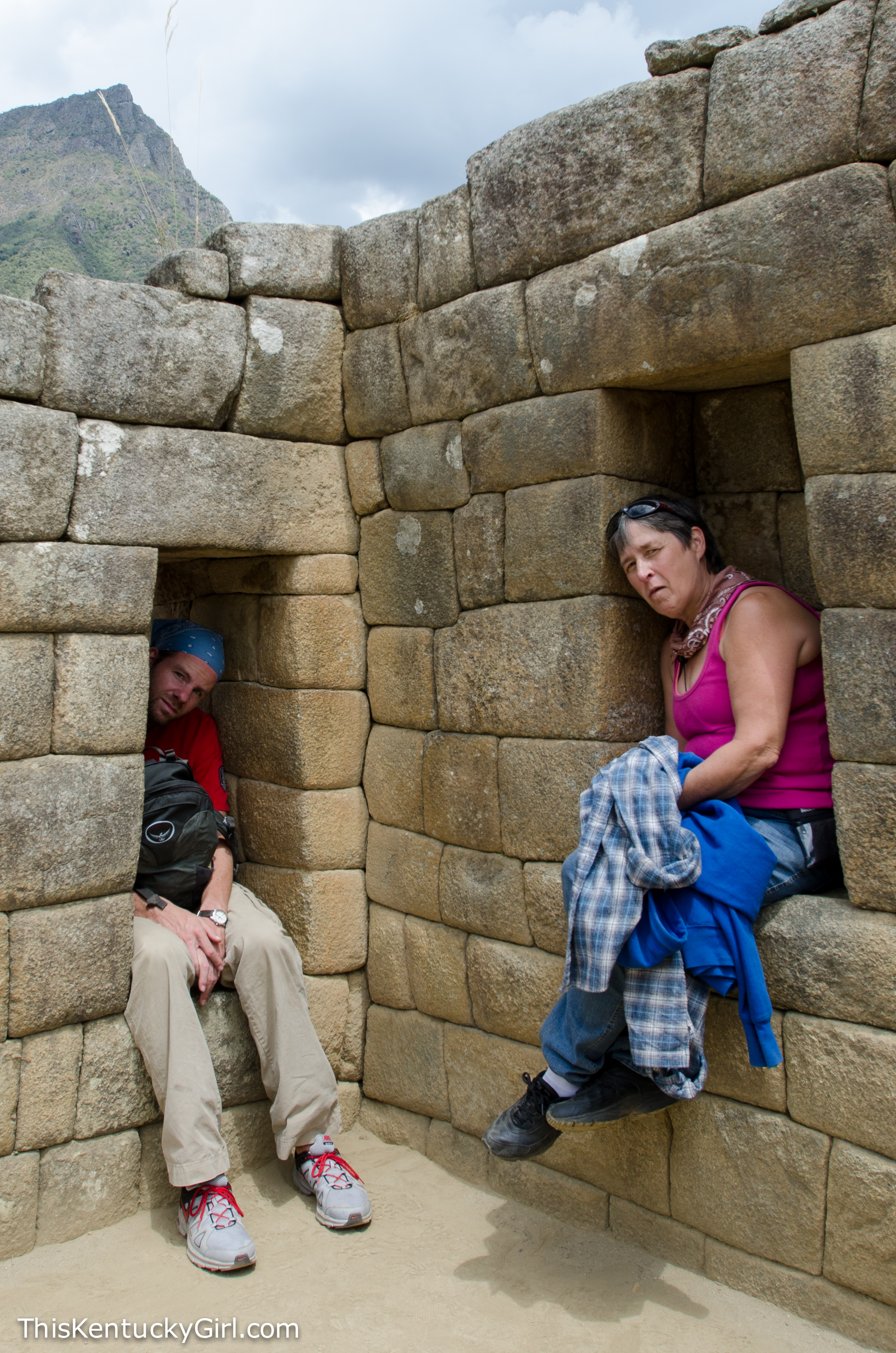
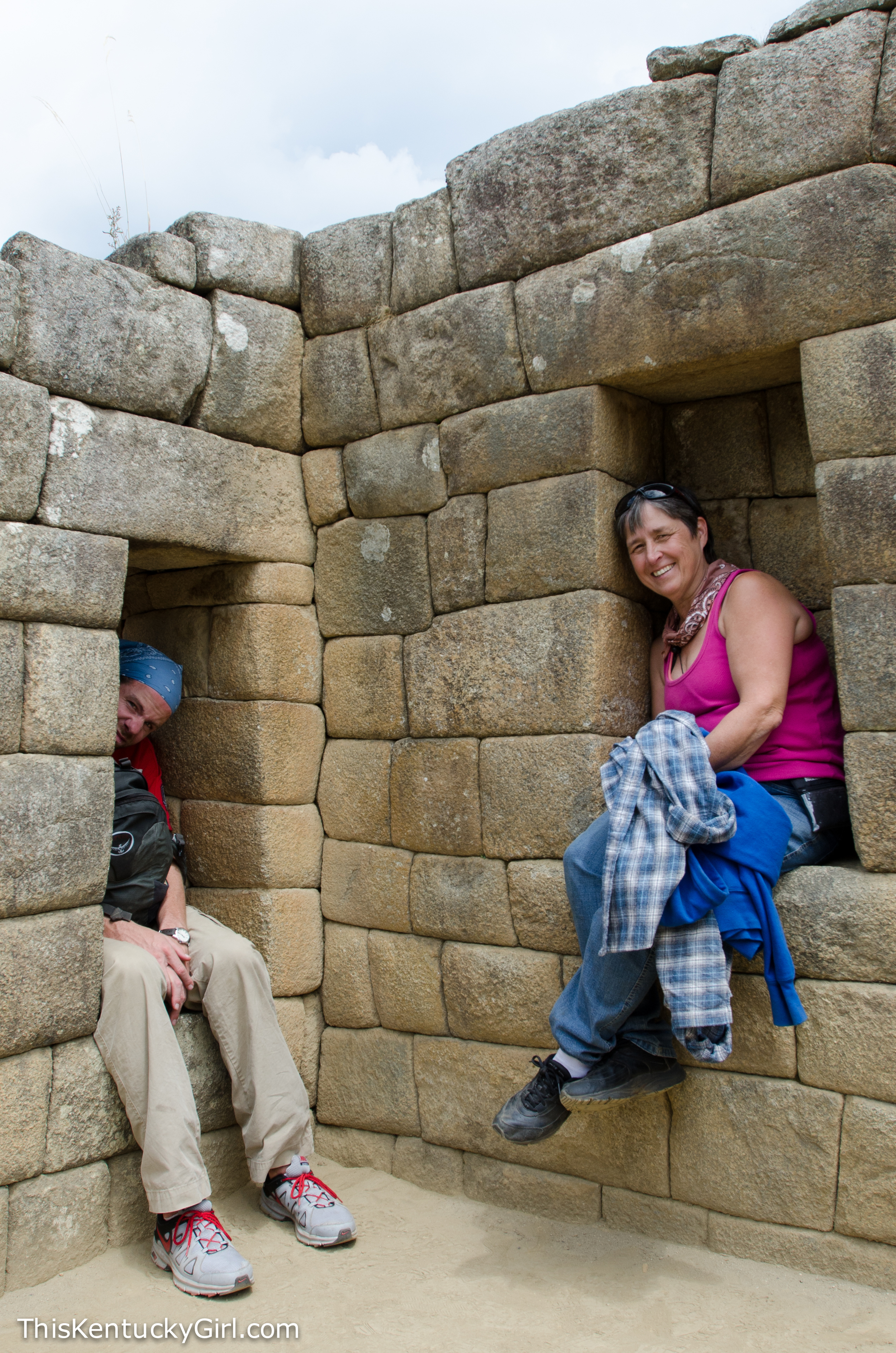
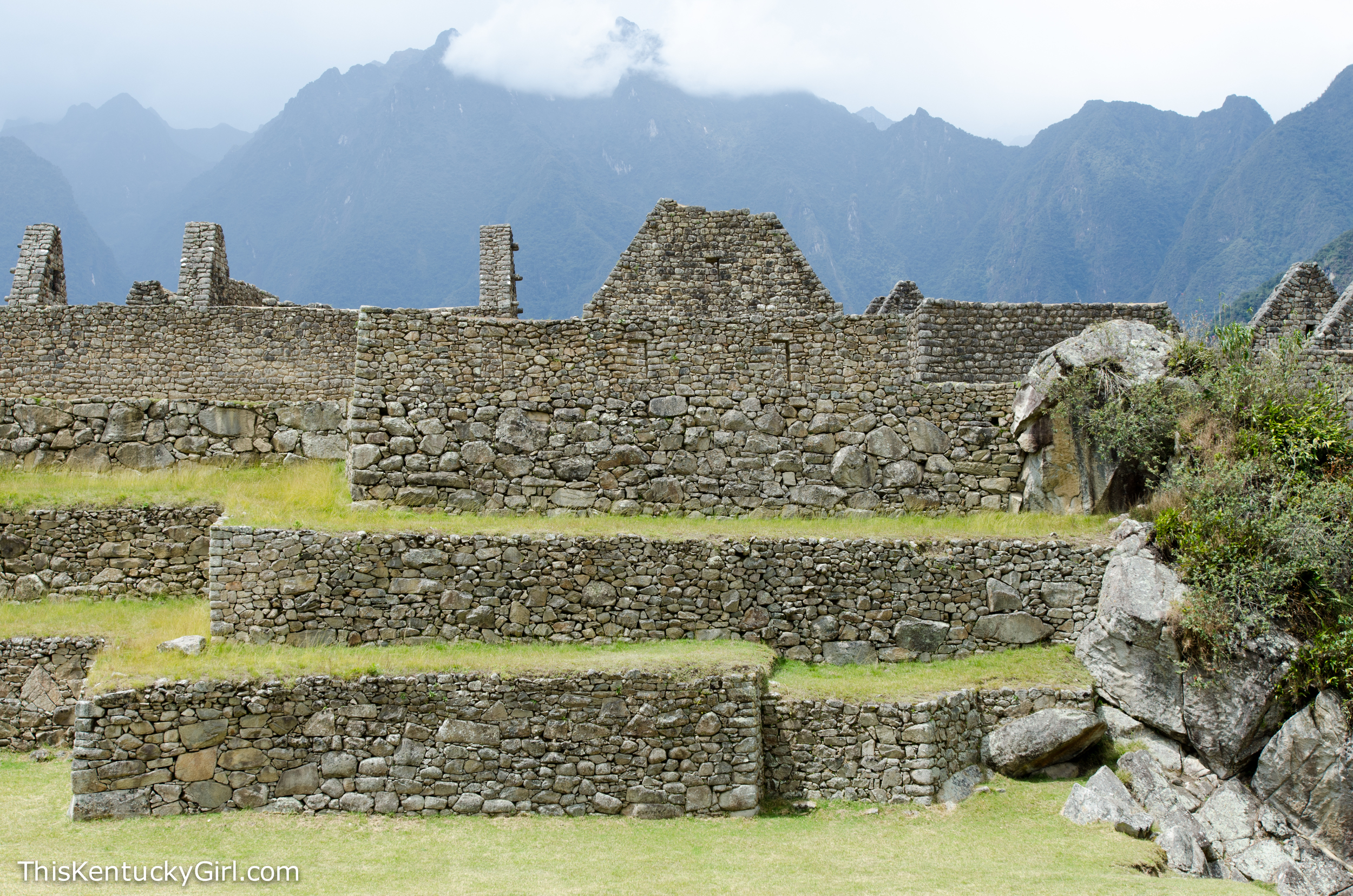
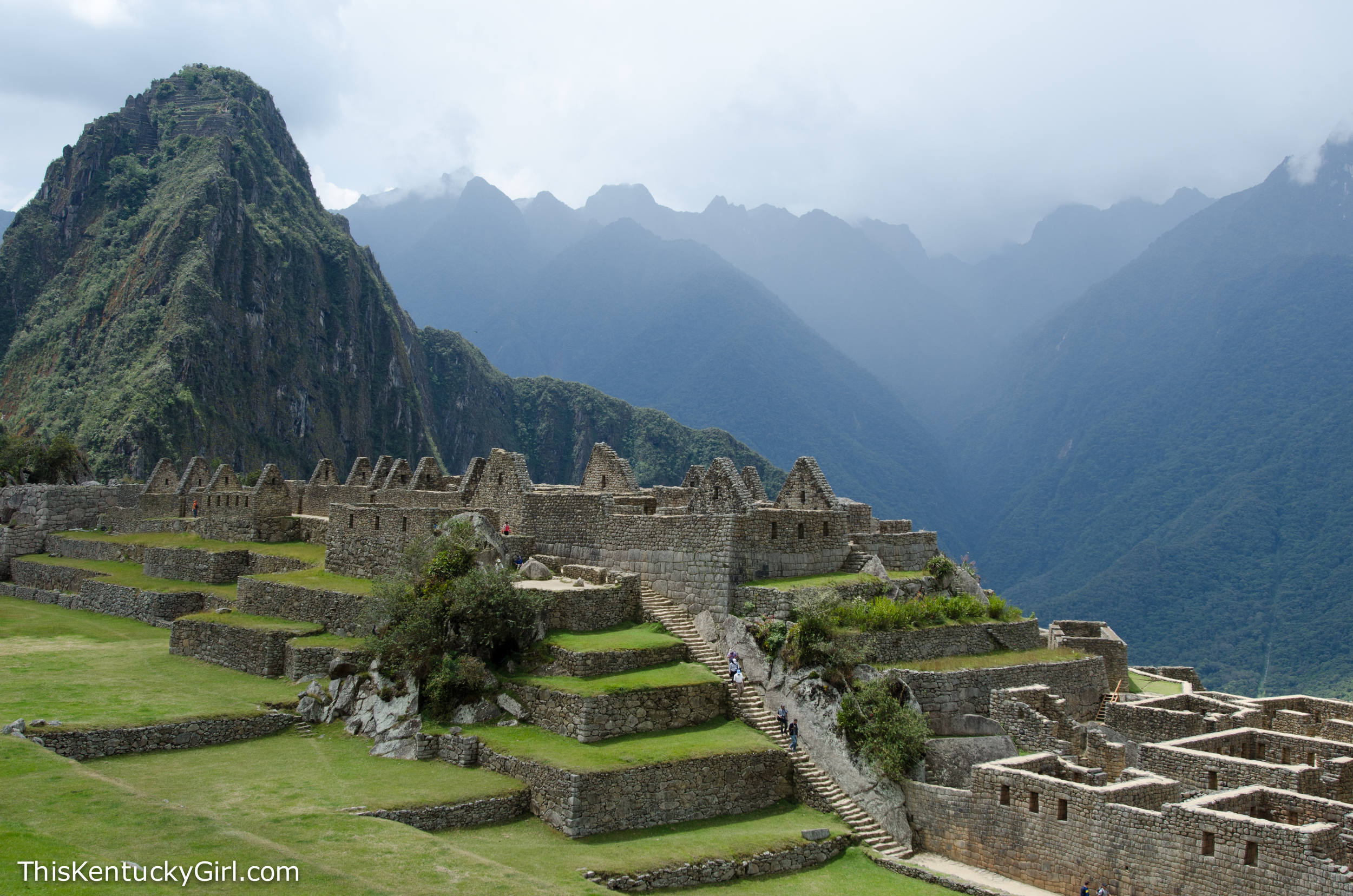
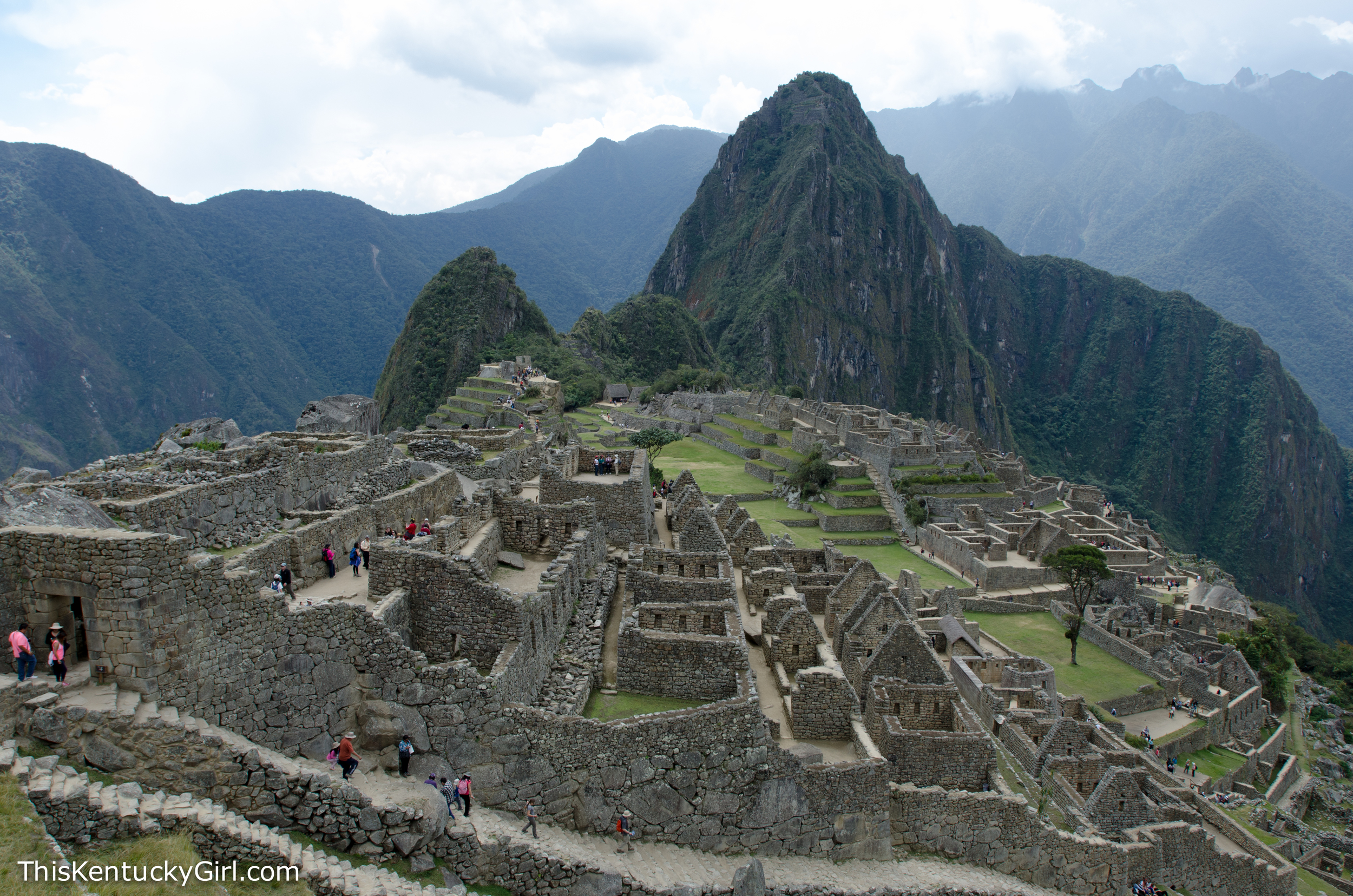
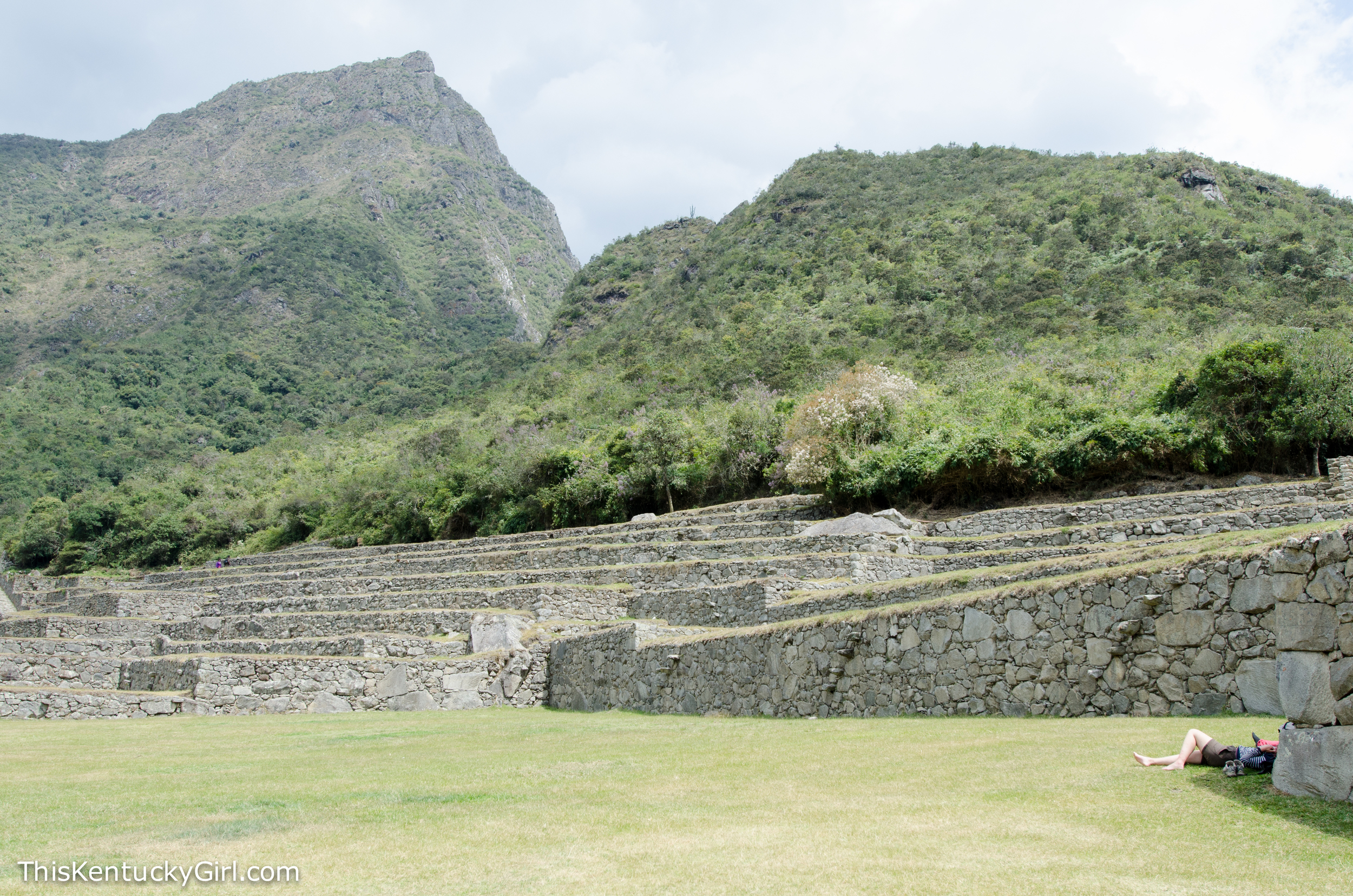
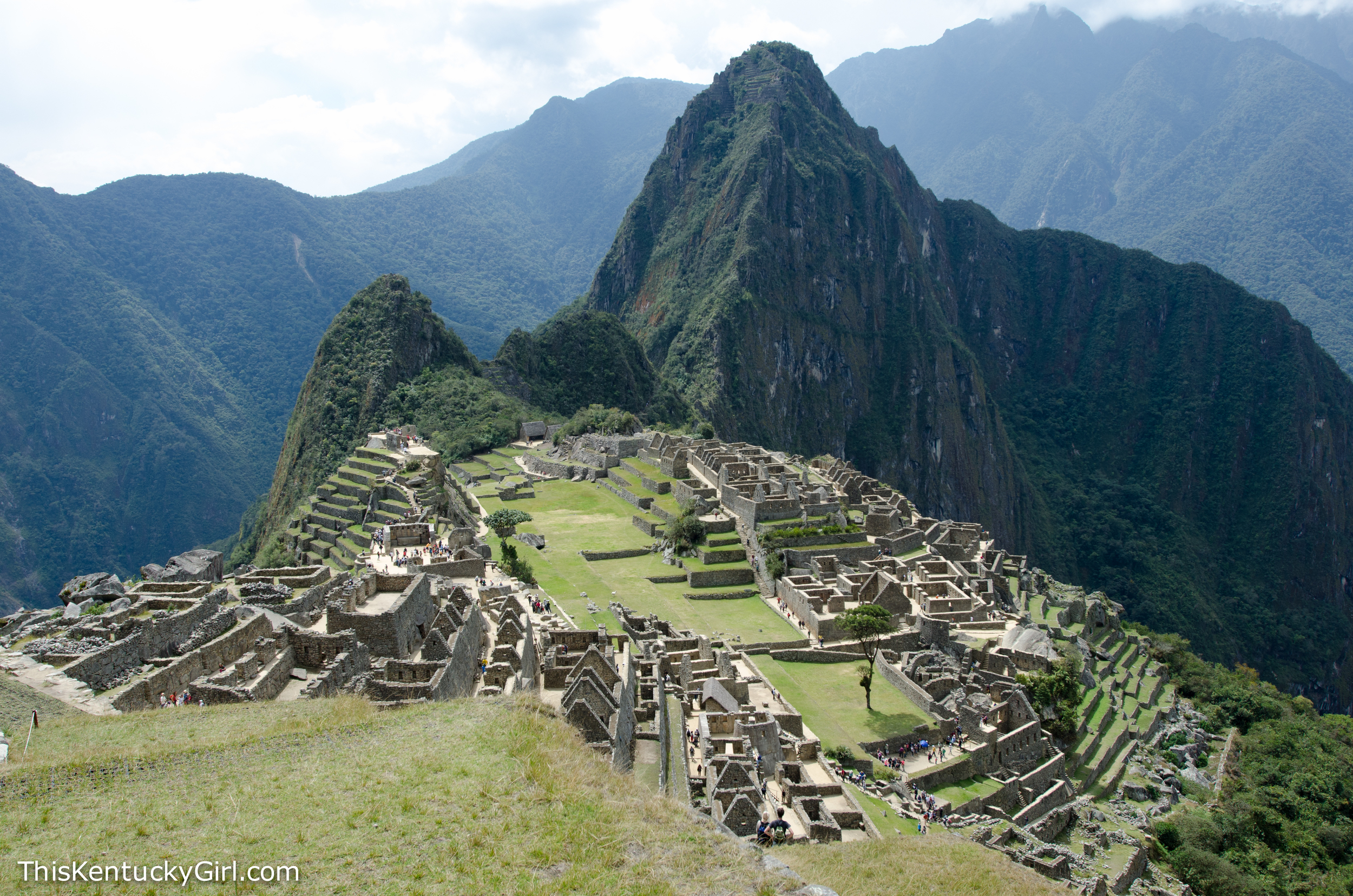
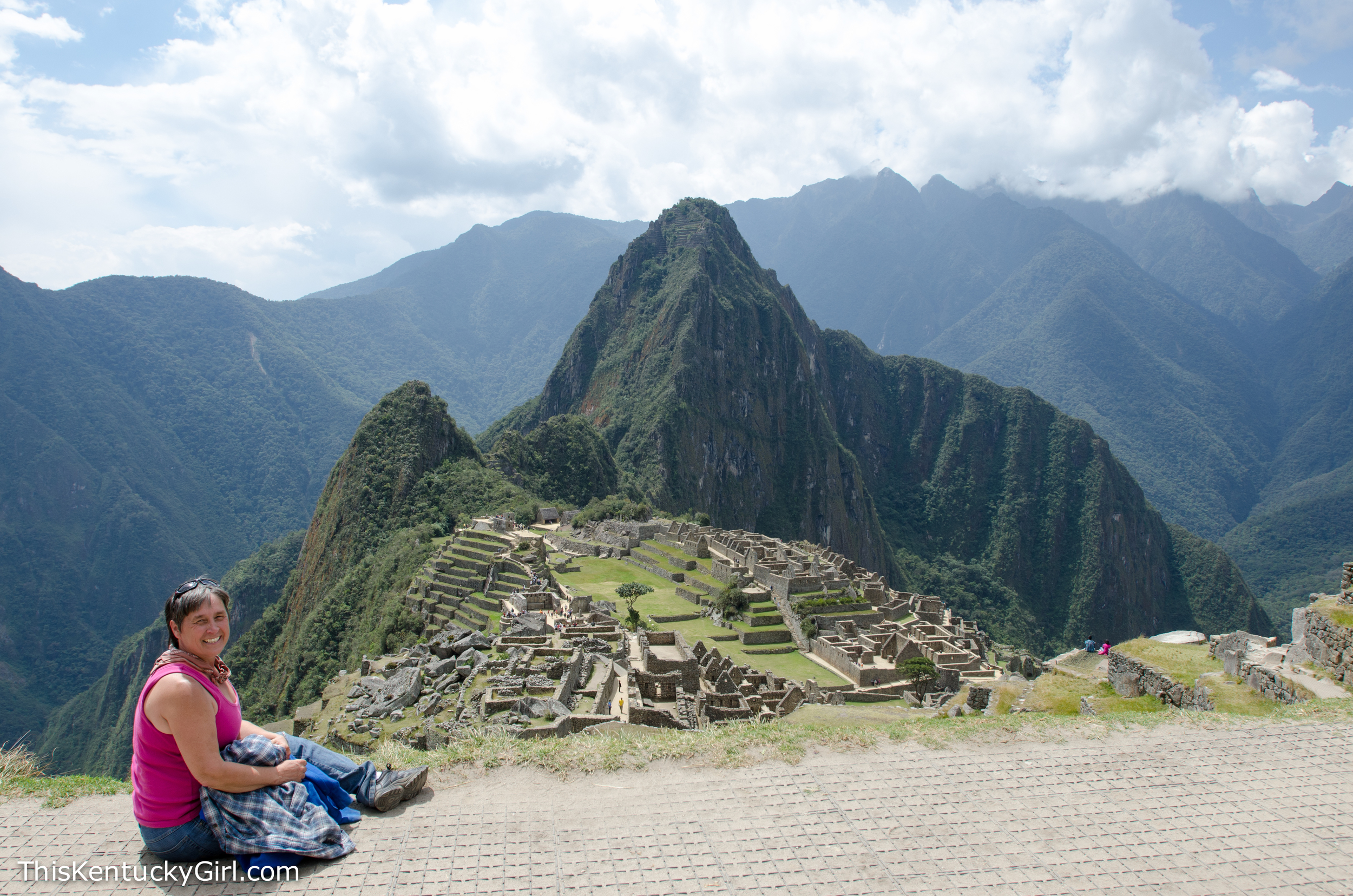
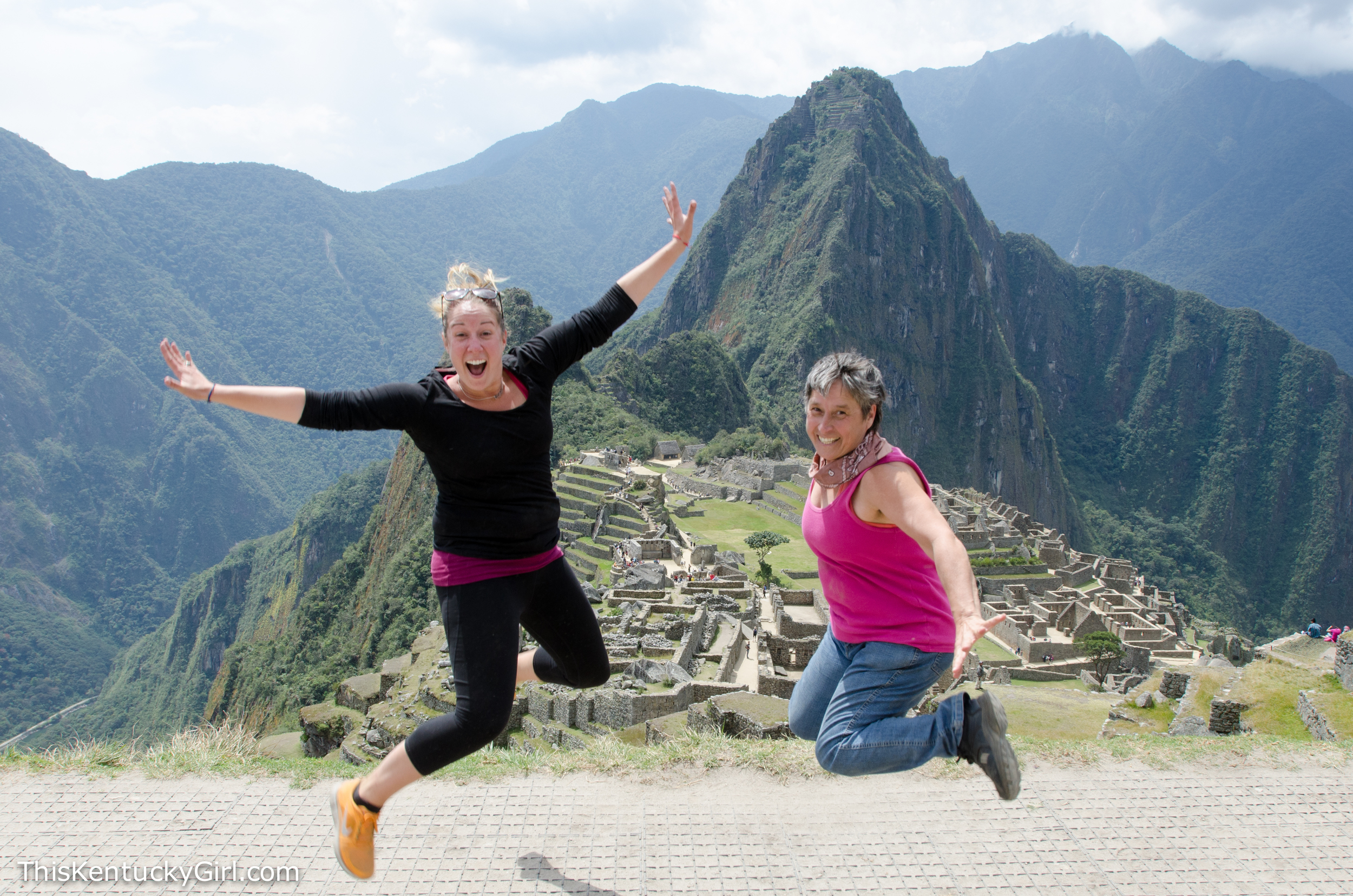
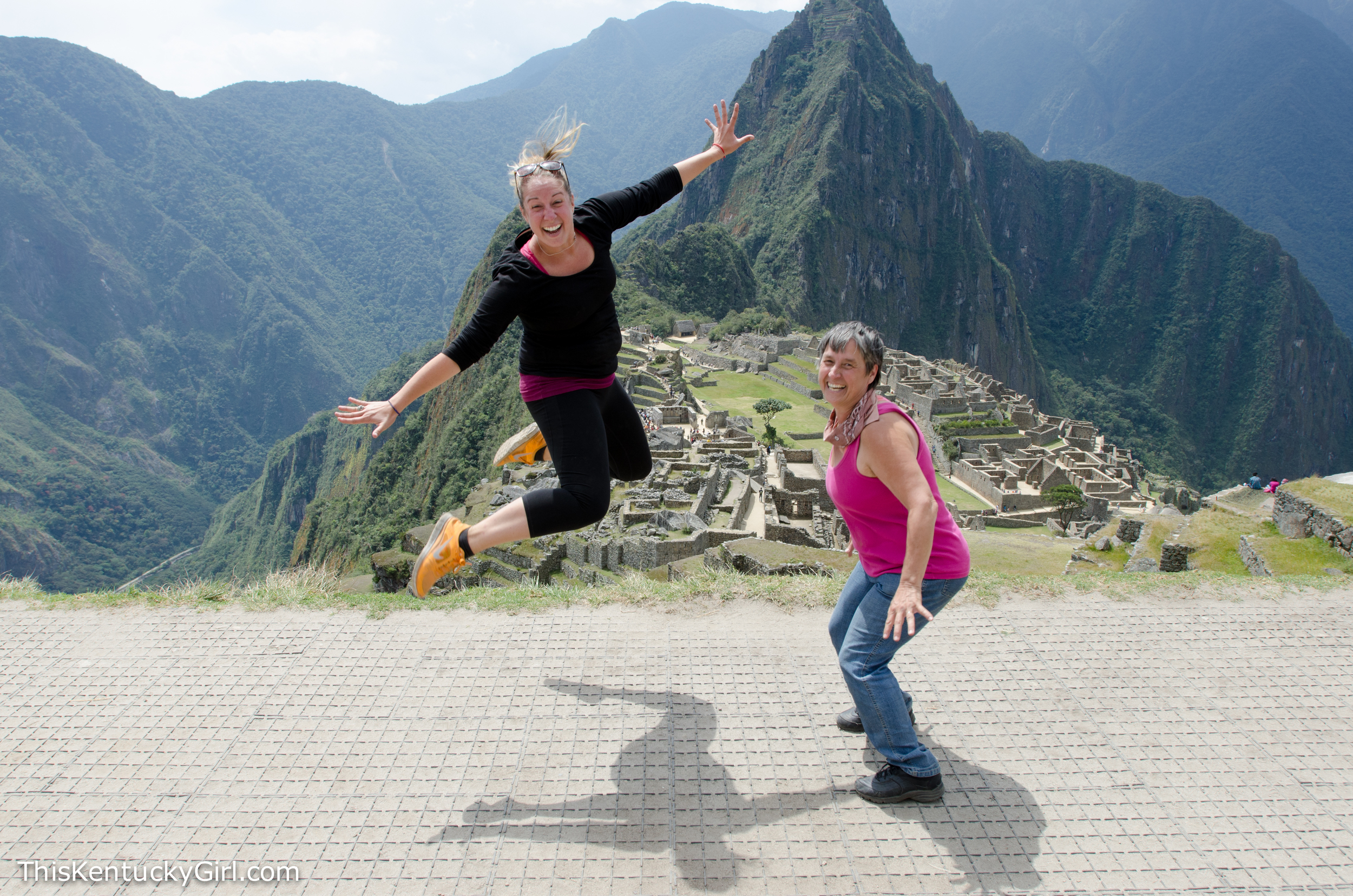
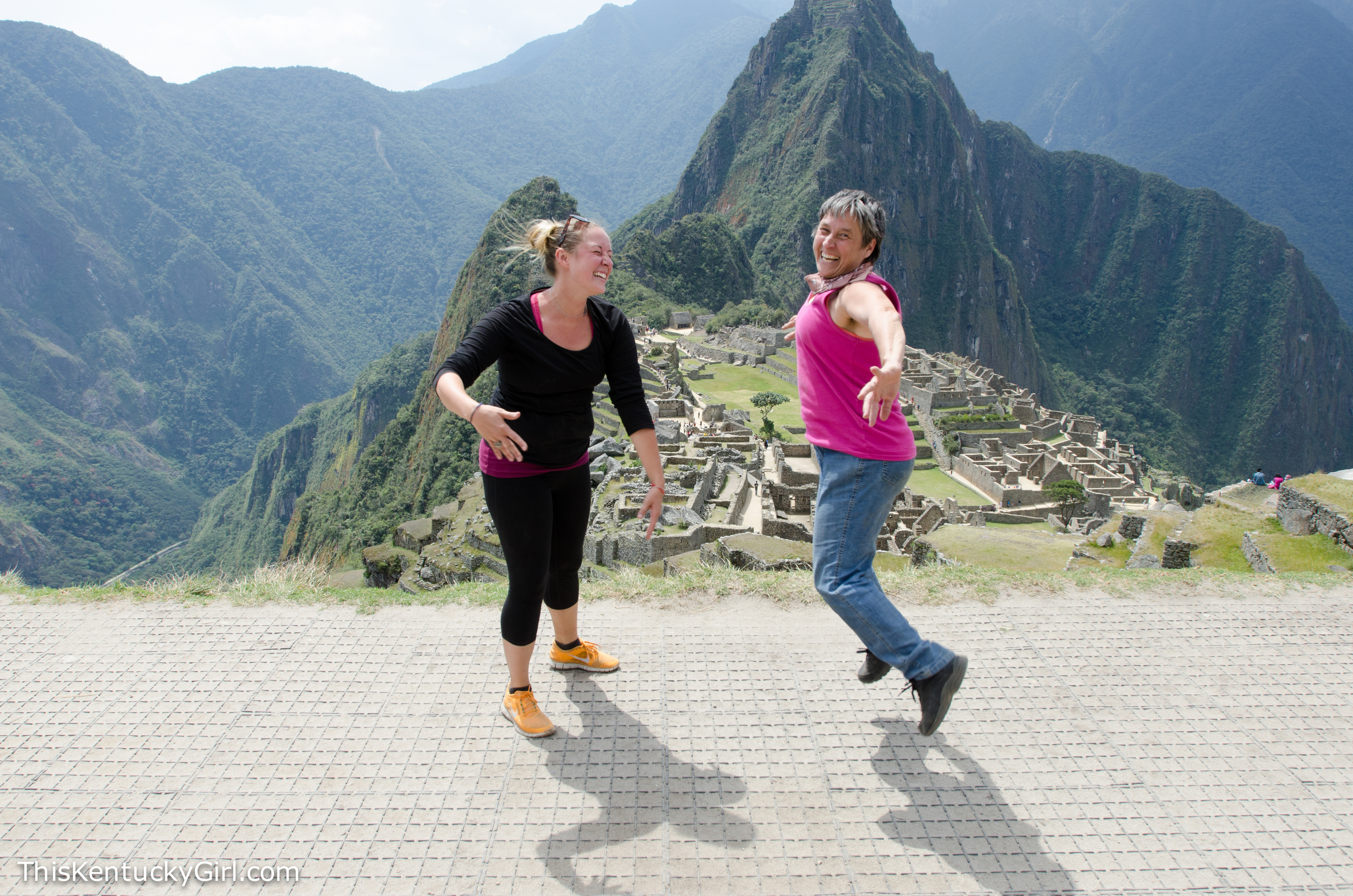
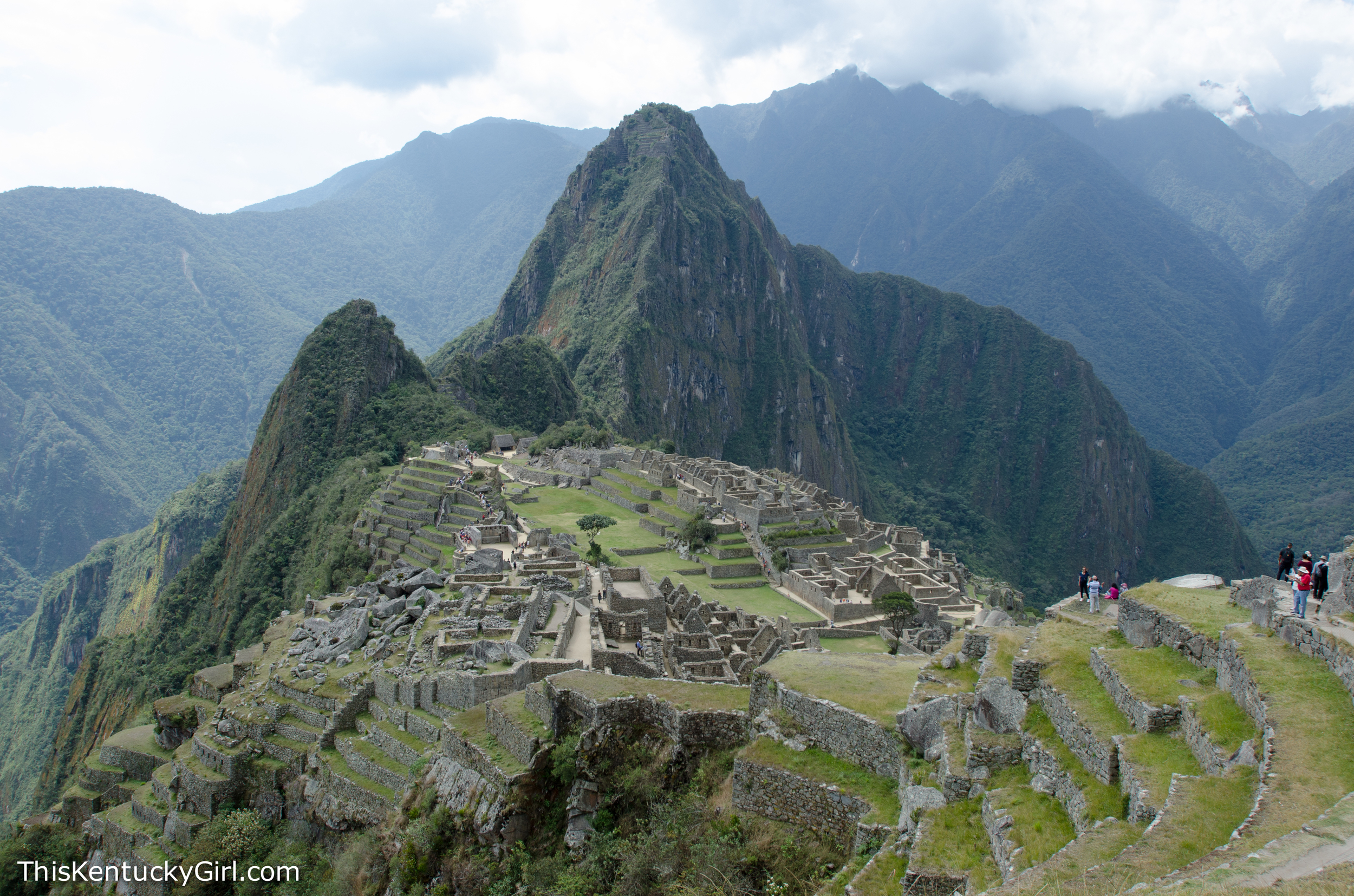
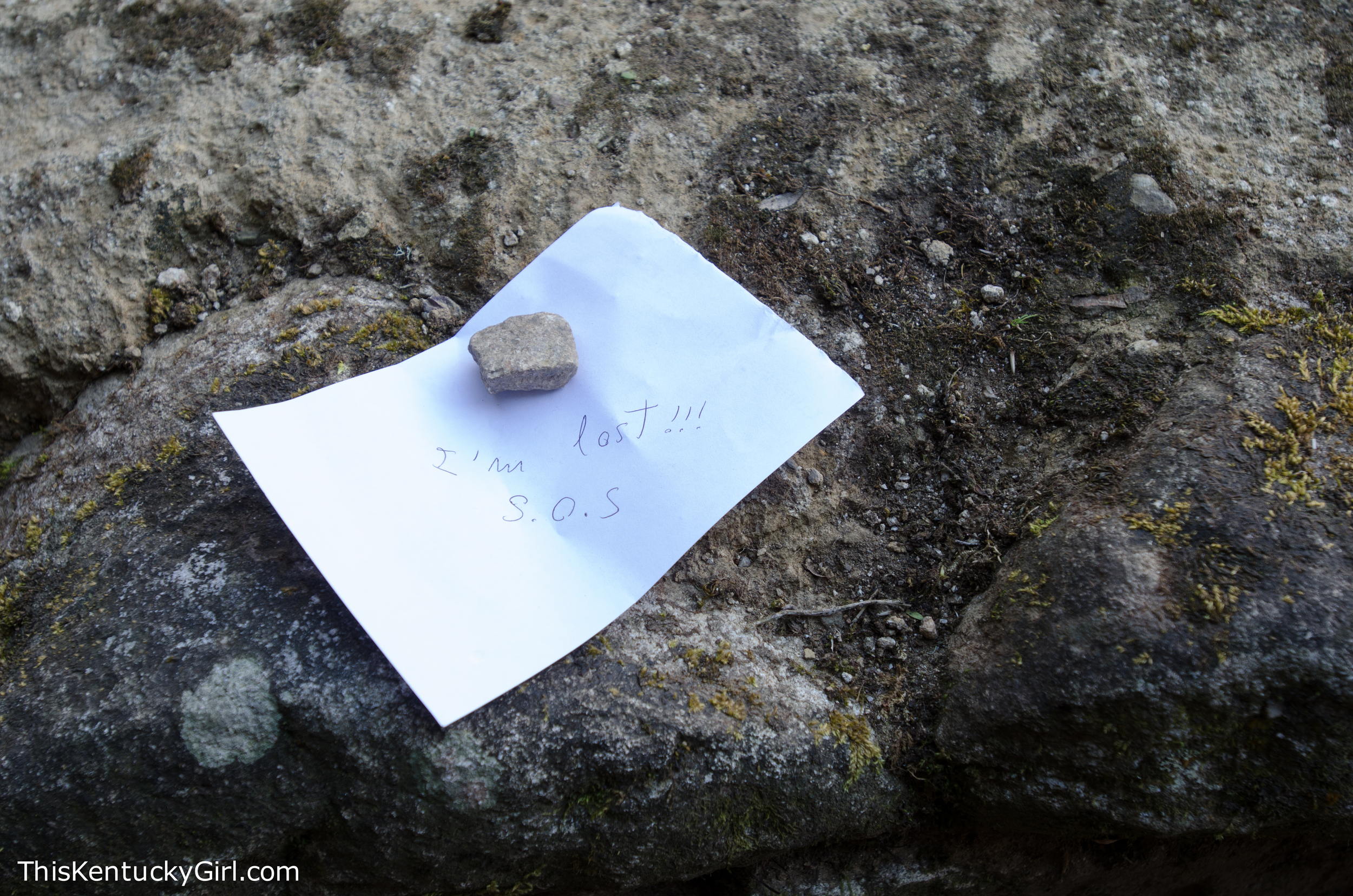
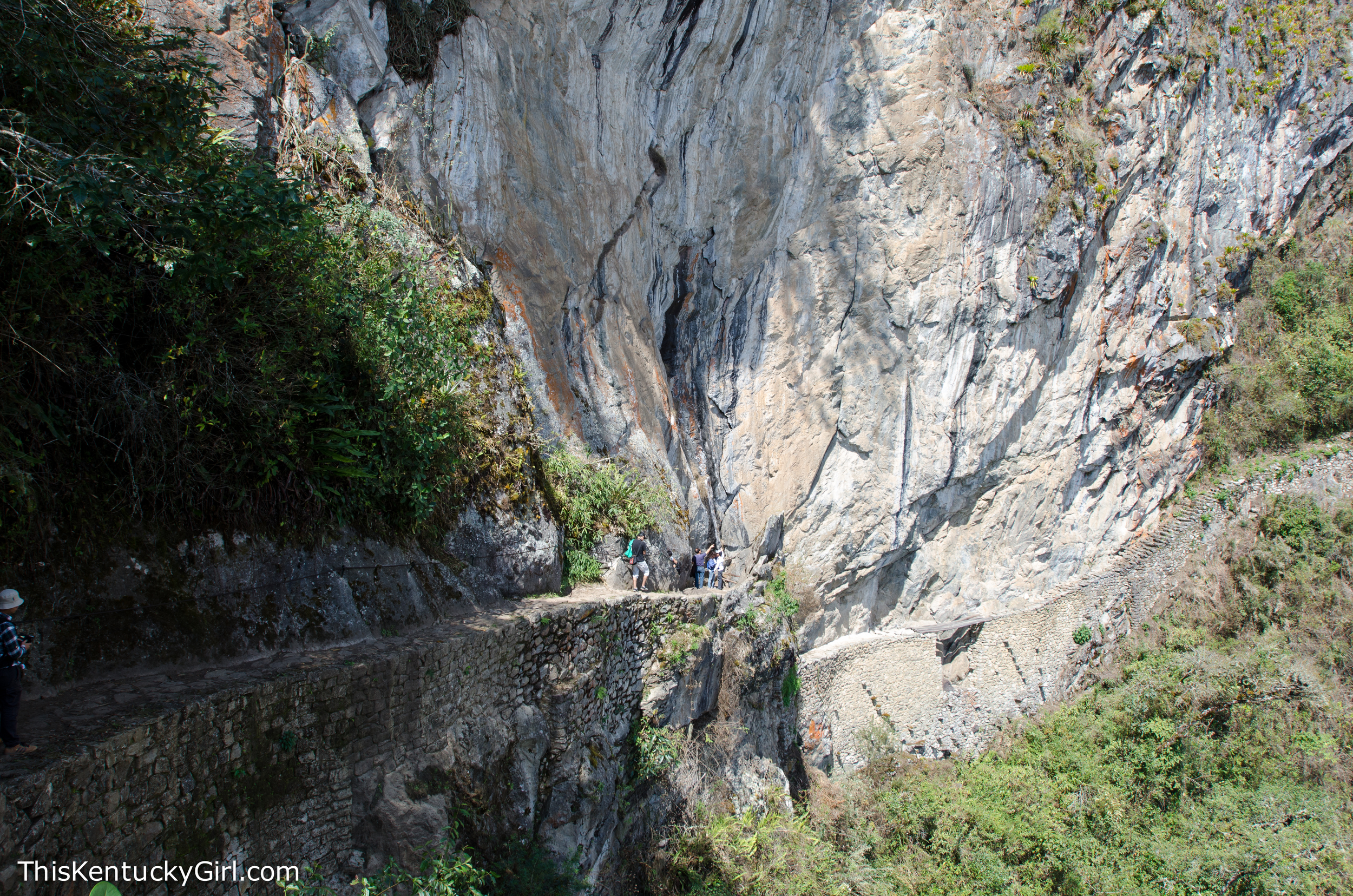
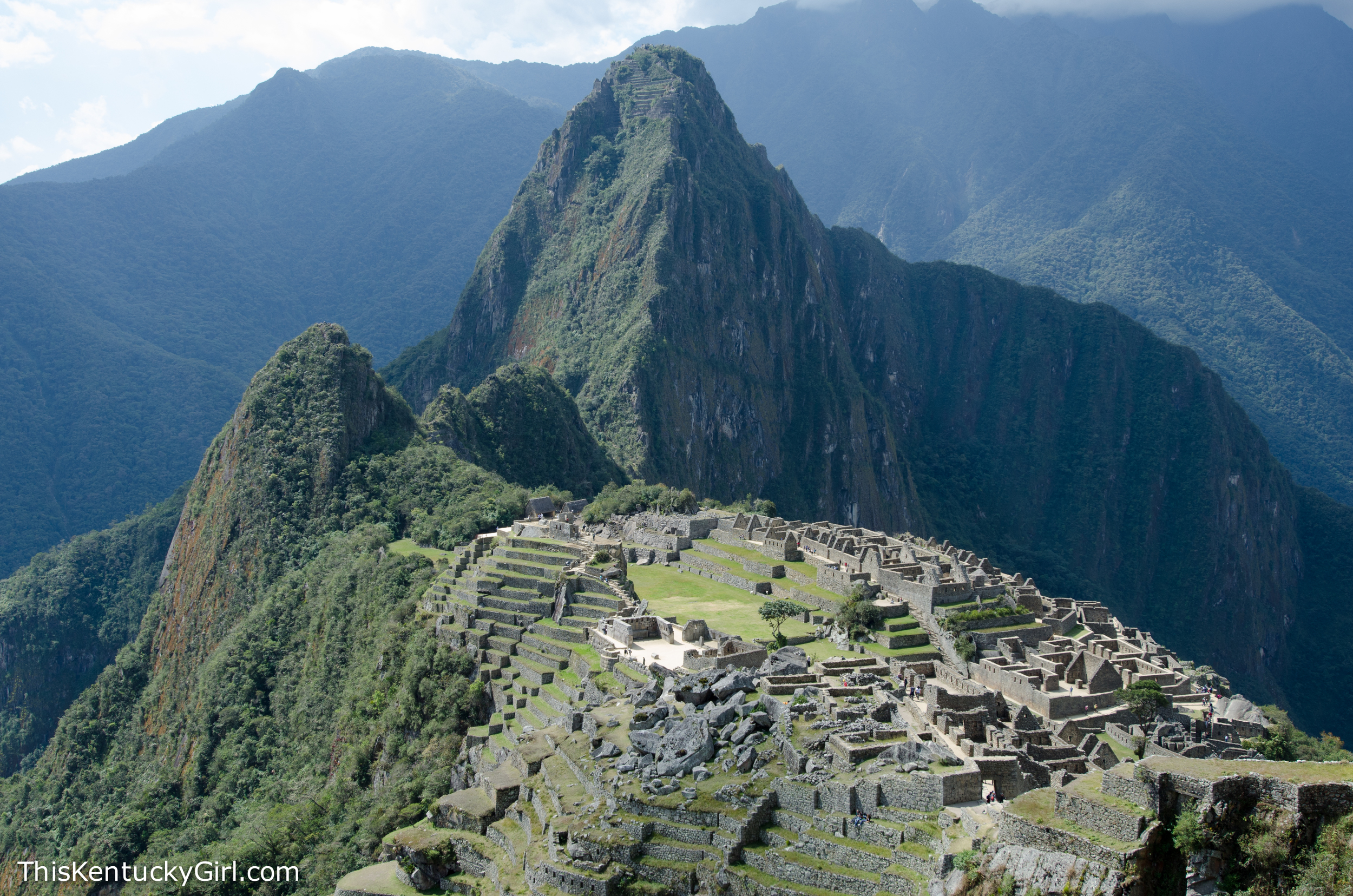
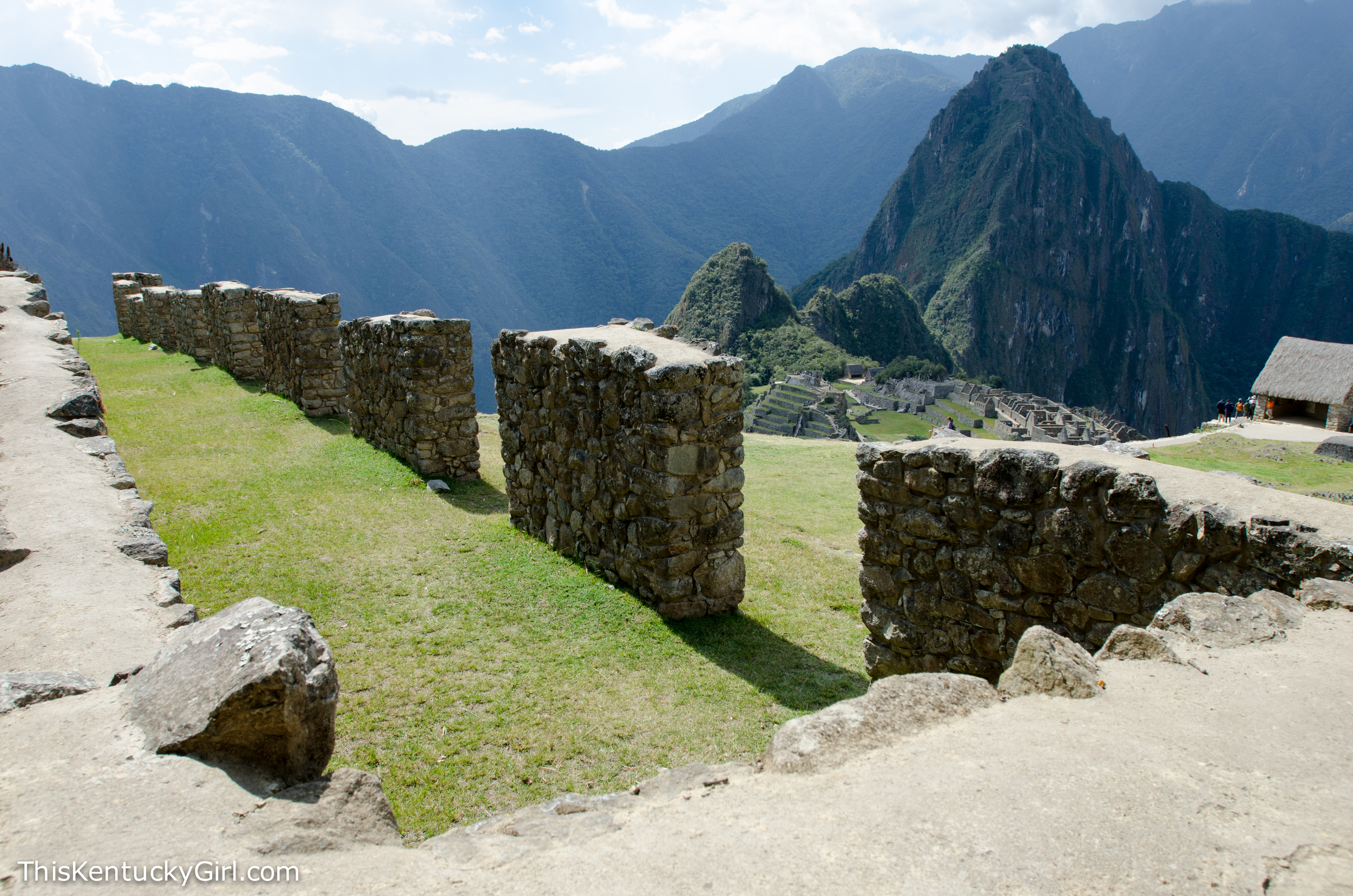
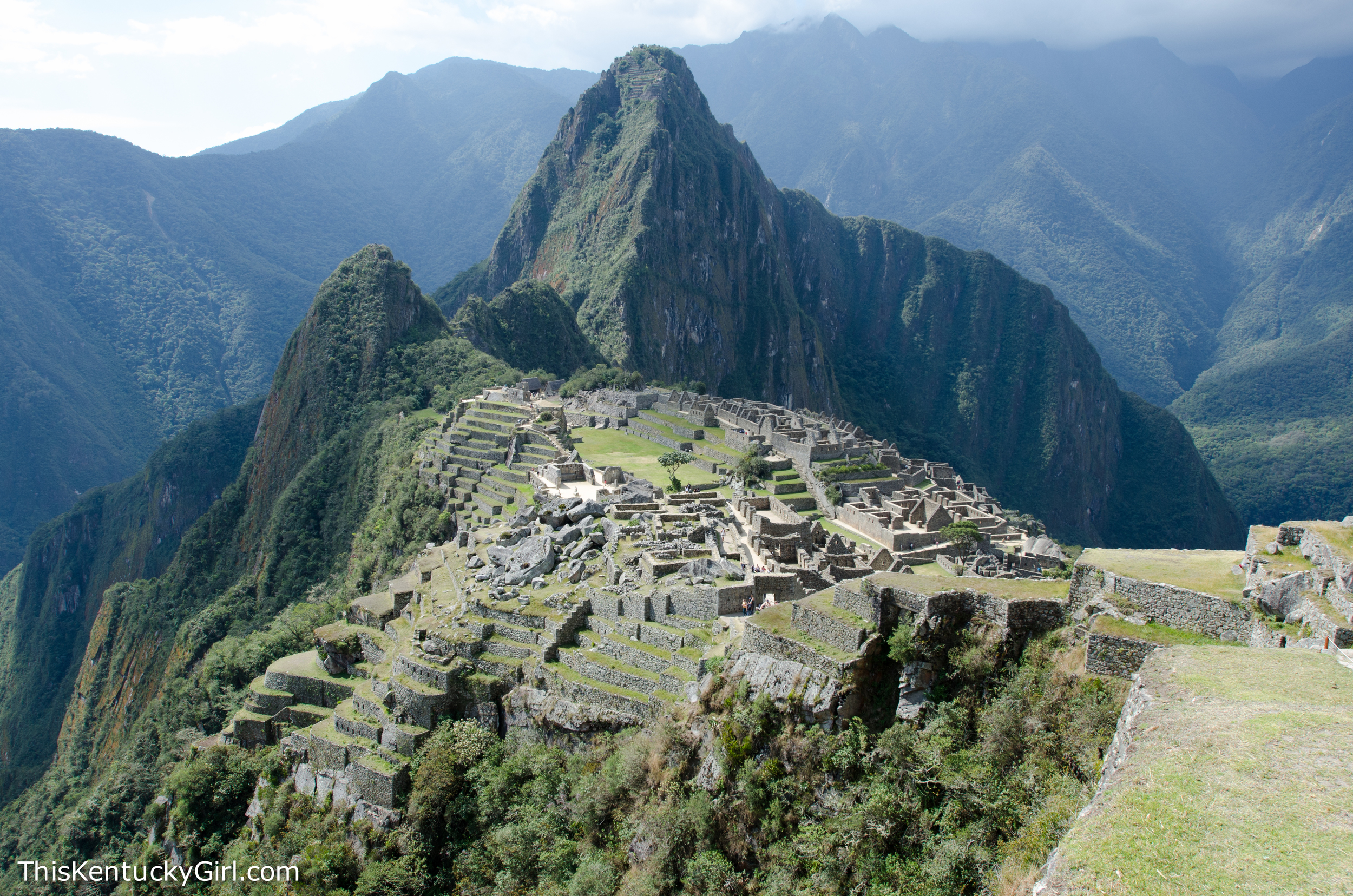
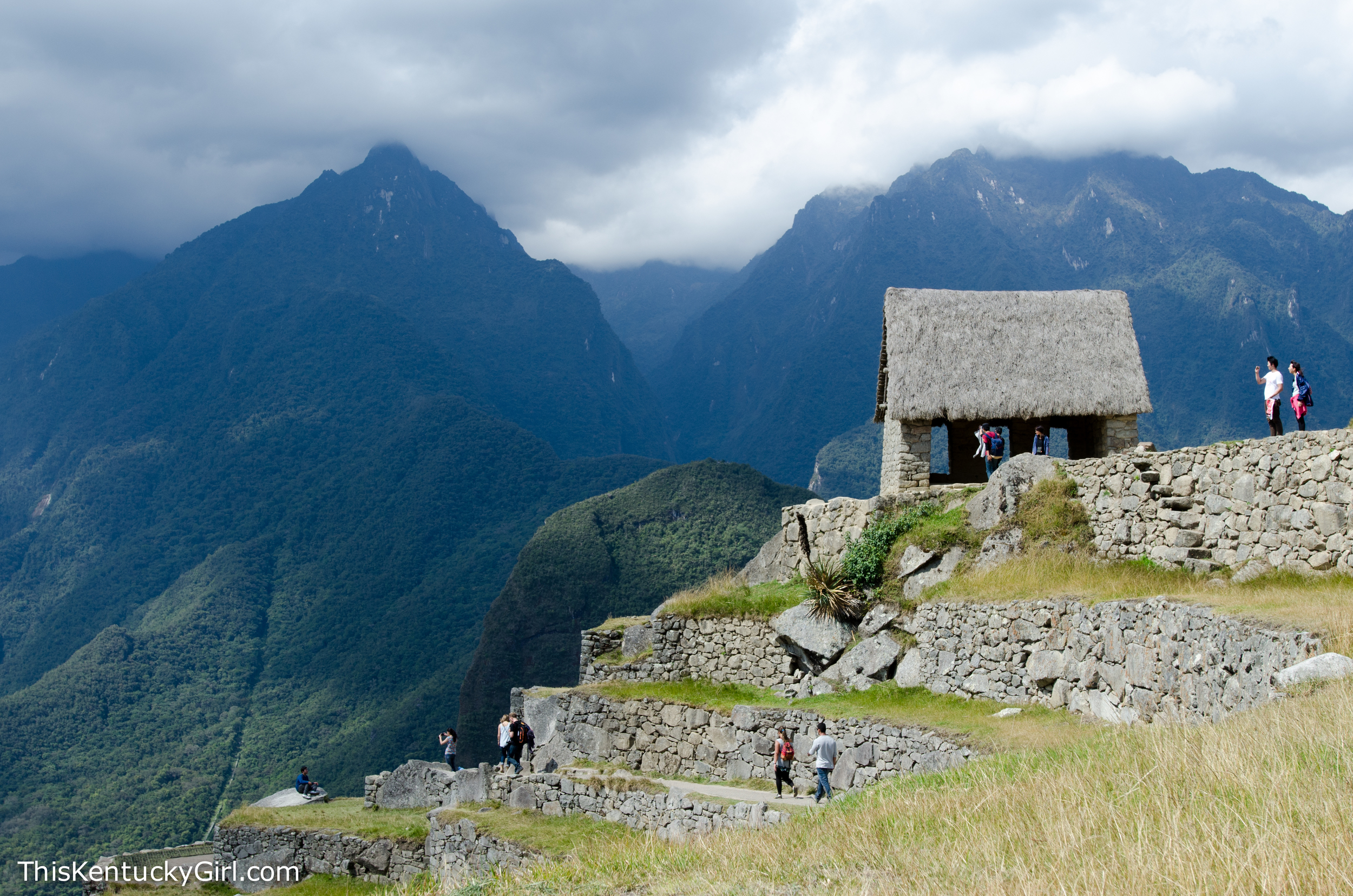
Getting to Machu Picchu is no easy task. Granted, it is MUCH easier than it was back in the days of Hiram Bingham. It’s not cheap, either. To walk the Inca Trail, one must sign up at least six months ahead of time. At least. You’re required to take a few porters, a guide, and a cook… Although we would have loved to walk it, not having firm plans throughout this year of travel and my bum heel prohibited us from even considering walking the trail. The alternative day visit isn’t the cheapest either. After you’ve spent a hundred dollars just to train it to Aguas Calientes, you’re still at the bottom of the Andes, and Machu Picchu is at the top. You can walk up the zig-zagging road to the entrance of Machu Picchu (we saw at least one couple with more gumption than ourselves) or you can fork over $18.50 for the bus (at least it was round-trip) like we did.
However, after you’ve handed over your ticket (that you absolutely must get ahead of time, either online or in Aguas Calientes) you’re walking towards Machu Picchu letting the excitement take over any and all annoyance over the inflated expenses you paid to get here. Arriving just after sunrise didn’t hurt either. Isn’t this light gorgeous?
First stop: Huayna Picchu. I have to admit, I was a little nervous about this climb. I didn’t think it would be a big deal until a few nights ago, Andrew started looking up videos of what it would be like and showed us one with rocks jutting out of the side of a mountain that you had to trust could hold your weight as you climbed up. Ok, so maybe I was a little scared on top of nervous. The problem with me being scared of something though, is that I know that it means I have to do it. There’s no getting around it. Like this entire trip, I guess… when I step back and think about it.
Huayna Picchu (also known as Wayna Picchu) is the mountain that is usually behind Machu Picchu in all of the pictures. The Urubamba River curves around this mountain below it and Machu Picchu. I found it interesting that I had never heard of this mountain, only Machu Picchu, yet the Incas built a trail with temples and terraces on its side and top as well. The peak (our destination) is 8,920 ft above sea level. It’s 1,180 feet higher than Machu Picchu. The climb itself wasn’t terribly hard, but the altitude made things a bit challenging.
Once we got to the top though, I understood why my aunt had emailed, urging us to try to get tickets. Again, only 400 are allowed up the mountain per day. There are two designated time slots, allowing 200 people in during each 2 hour window. We had to sign in before we were allowed to start the climb and were supposed to be back down 2 hours later. However, nothing was really enforced and we took our time once we were up at the top, pausing several times for photos or to just sit and admire the view.
According to Wikipedia, According to local guides, the top of the mountain was the residence for the high priest and the local virgins. Every morning before sunrise, the high priest with a small group would walk to Machu Picchu to signal the coming of the new day. The Temple of the Moon, one of the three major temples in the Machu Picchu area, is nestled on the side of the mountain and is situated at an elevation lower than Machu Picchu.
Momma was slightly terrified of the edge and the general realization of exactly how high we were once we got to the top. As you’re climbing up, you really don’t have a clear sense of how high you are because you’re on a trail that is winding around the mountain. In other words, it’s not just one “up” direction. These are the steps that scared me in the video Andrew showed us a few days before. The video made it look like the girl was standing on these steps directly over the edge of a mountain. However, they’re above terraces and they aren’t nearly as scary as they might look. Unnerving, sure. Of course. But really, not sooo bad. Unless you’re my mom- who wasn’t going anywhere near them. If you find yourself atop Huayna Picchu- take these steps up. I think it offers a great view, one that isn’t as crowded as other levels.
Some of the shots were taken from the absolute tip top of Huayna Picchu. We had to squeeze our way through and under some rocks that almost seemed precariously balanced atop the mountain. Only because we had to exit this way would Mom even consider climbing up to the top. I convinced her to let me photograph her, but unfortunately had my broken lens on my camera from some prior shots to see if I could squeeze one or two images out of it. I liked these images of her laughing so much I almost don’t mind how blown out they are. I’m pretty sure she thought she was going to slide right off the mountain when we had to cross this rock to get down to some more traditional steps below.
Another family decided to race back down the mountain. I had no desire to even consider racing back down. While the altitude didn’t bother me as much during the descent, these skinny little stairs did. The problem (if you can even call it a problem) with climbing Huayna Picchu before you really explore Machu Picchu, is that it’s kinda in the middle of the traditional visiter route through Machu Picchu. Apparently you’re supposed to follow this route and cannot reverse course halfway through. We didn’t realize this when we started walking through Machu Picchu.
Another “problem” with sprinting through Machu Picchu to climb Huayna Picchu first is that when you’re finished climbing Huayna Picchu, you’re in the middle of Machu Picchu (below on the map at #11) without a guide. This is something I wish we would have realized or thought of before we entered. There are dozens of guides standing outside the entrance to Machu Picchu offering up their services. Had I known any better, I would have made arrangements with one of them to meet us at the Huayna Picchu gate after our climb. (If you plan on doing both in one day- get a guide to meet you!) I enjoyed milling around Machu Picchu, and it was easy to evesdrop on other tours for bits and pieces of information, but I wish I had done some more research on the site, or brought along a Machu Picchu book, or something to better understand what buildings or temples or burial sites we were standing in. Even a map, like this one below (found here) would have helped! I thought perhaps we missed them on our way in, but when we left I looked to see if there were any sitting out and couldn’t findany (or any sign that there were some there previously).
Above is a view of Huayna Picchu from the middle of Machu Picchu. If you look really closely, you can see the stonework towards the top. It’s pretty incredible how well it blends into the rock and trees of the mountain. If you didn’t know to look for it, I think you would miss it! (At least I would!)
It doesn’t look like there were many people in my pictures. (My mom was a little surprised when she saw the pictures of the monastery in Arequipa how empty it looked. I’m curious if she’ll be surprised with these pictures as well. -Are you Mom?) The truth is, I waited in many cases for people to get out of my shot. Or worked the framing to make the site stand out instead of highlighting just how many people there were around the site with us. There were a lot. It also helped that a few areas were roped off from the public – llamas only, or workers removing unwanted weeds from the stonework. We began our own tour of Machu Picchu through what I think were the houses of factories and then through the industrial zone.
According to some descriptions (and some guides) of Machu Picchu, this area is known as the Temple of the Condor. A temple where the Incas specifically worshiped the condor (the bird which is thought to represent the sky and afterlife of the Incas. We heard that many guides will call it a temple to paint a friendlier picture of Machu Picchu. However, this area was actually the prisoner’s area and there was some cruel torture that went on here, some say is evident by certain niches in the stones. Maybe both are speculation, but I think the prison idea is probably the most accurate.
In the middle of Machu Picchu, above the royal tomb is the Temple of the Sun, also called the Torreón. This is one of the most sacred places in Machu Picchu and only the Inca (the king of the Incas) himself and the high priest could enter. It’s where the diety, Inti (the sun) is worshipped. During the winter solstice, the sun shines through the trapezoidal window onto a really large granite stone, which the temple was built around. Like all of Machu Picchu, the exact purpose of this temple is debated. Was it for female ”Virgins of the Sun” or was it a monument to the Inca Pachacutec or an observatory? Maybe all of the above? Who knows. Regardless, during the winter (in June in these parts) solstice, the sun illuminates the sacred rock in the middle of the temple – for reasons no one is entirely positive about.
Around the Temple of the sun are some houses known as The Royal Sector. Basically, where the royal family lived. (I think.)
At the very top of the middle area of Machu Picchu, is the Temple of the Three Windows, this was more like a wall, surrounding the Sacred Plaza. It’s here where you will find the Principal Temple, the House of the Priest, the Sacristy, and a LOT of tour groups. Unfortunately, at the time, we weren’t sure what we were looking at. I mostly took pictures of what I found interesting and a few roped off areas that I knew were important… only I wasn’t sure exactly why. I followed the crowd and found myself facing this giant rock, guarded by one thin rope and a Machu Picchu employee making sure no one crossed it. Dozens were standing in front of it to get their picture taken. This sacred rock is known as Intihuatana. It supposedly mirrors the shape of Huayna Picchu (the mountain we climbed a few hours ago) and is said to have functioned as a sundial, or astronomical calendar, or agricultural calendar, or perhaps all of the above? Bottom line: it’s special. sacred. super important. Apparently other similar stones were carved elsewhere but were all destroyed by the invading Spaniards (Thanks a lot, Spain!) who wanted to replace them with crosses, thus ridding then Peru of its pagan ways. I found Andrew and Momma waiting for me here, just chillin’ in some Incan niches…
It was right around here where we got in trouble. You see, we had already gone around the far side of Machu Picchu to climb Huayna Picchu. However, when we went to double back to see what we missed, we were directed back where we came from. We listened to the first two Machu Picchu employees, but then held firm with the third one. All we had to do was cross over one walkway to get back to the main stairs. A tourist guide (with his group) stopped to help us, and once the Machu Picchu employee saw that we were creating a crowd, he let us double back to see the half of Machu Picchu (where most people start their visit) we missed.
This might have been my favorite part of Machu Picchu. It provided a beautiful view of Machu Picchu, and seemed a little more secluded and less traveled than the famous temples and lawns full of llamas, terraces, and perfect masonry. We passed through the City Gate, walked up around The House of the Guardians, and we must have passed the Funerary Rock and Cemetary although we didn’t know it at the time. By this time, our water was running low, the sun was getting to us, and we were starting to slow down. Of course, we still enjoyed the view, and I even convinced Momma to get up to jump for a picture or two.
If you walk far back enough, you’ll find yourself at another checkpoint and a trail leading to the Inca Bridge. We were told it wasn’t hard, so Andrew and I decided to check it out. Twenty minutes later, we found ourselves facing this (above) and honestly we weren’t impressed. I don’t see what the big deal was… According to Wikipedia, The trail is a stone path, part of which is cut into a cliff face. A twenty-foot gap was left in this section of the carved cliff edge, over a 1,900 feet drop, that could be bridged with two tree trunks, otherwise leaving the trail impassable to outsiders. I would have been content to instead have spent my time sitting within the walls of Machu Picchu and soaking it up before deciding we had seen enough… We collected Momma, walked around a little more to see if there was anything we missed, went to where we thought was the end/start of the Inca Trail, took a few last pictures and made our way back out and down to Aguas Calientes, and then back to Cusco.
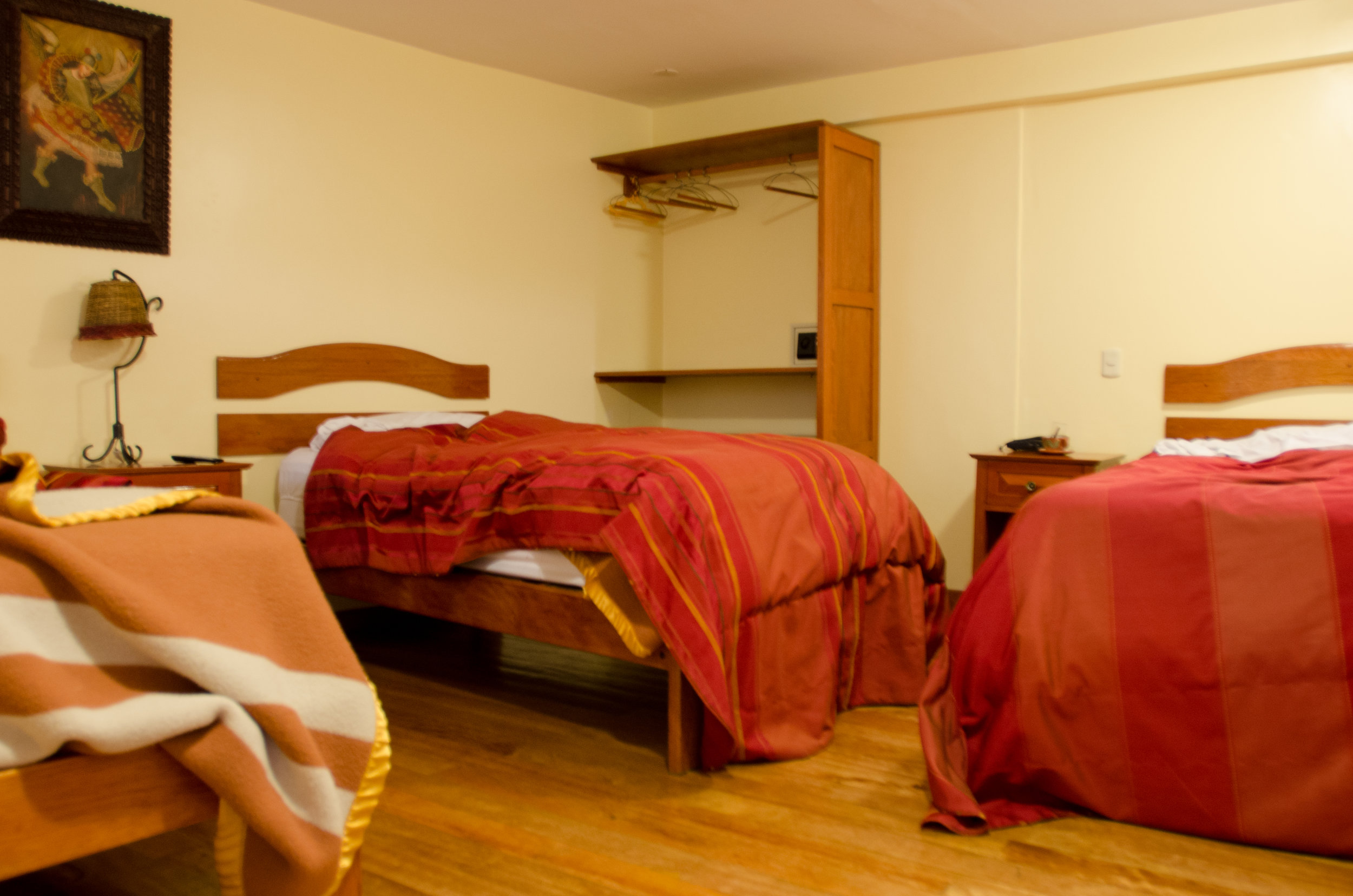
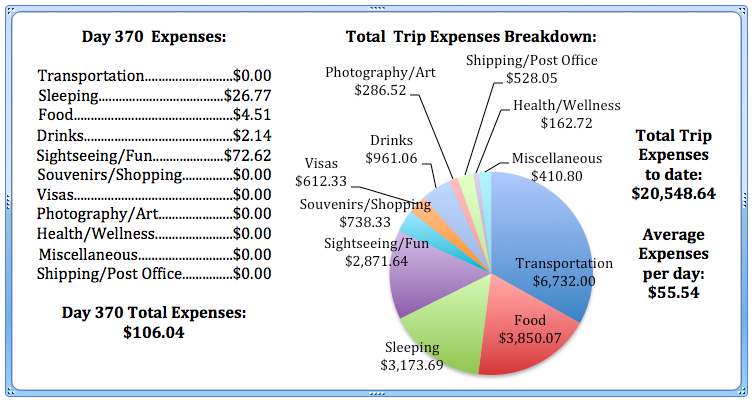
Day 369: Ollantaytambo + Aguas Calientes
We are Machu Picchu bound! First stop: Ollantaytambo, where we would catch a train to Aguas Calientes, the town at the bottom of Machu Picchu. I think we were all a little bit excited, nervous, and maybe a little scared of our climb up Huayna Picchu the next day and apprehensive of Aguas Calientes. The small tourist town does not have the best reputation. Prices for everything are super inflated, yet most visitors are forced to pay them if wanting to stay close to Machu Picchu. Andrew had looked up places to avoid, questions to ask before sitting down for dinner, and we generally psyched ourselves up to be on guard for any and all scams upon our arrival. This is when travel wears me down. However, what we didn’t prepare ourselves for were all of the Incan archeological sites en route, surrounding Ollantaytambo, and along the train tracks to Aguas Calientes. It turned my frown upside down and really helped to boost the excitement, outweighing the other negative feelings about the town and apprehension of our climb!
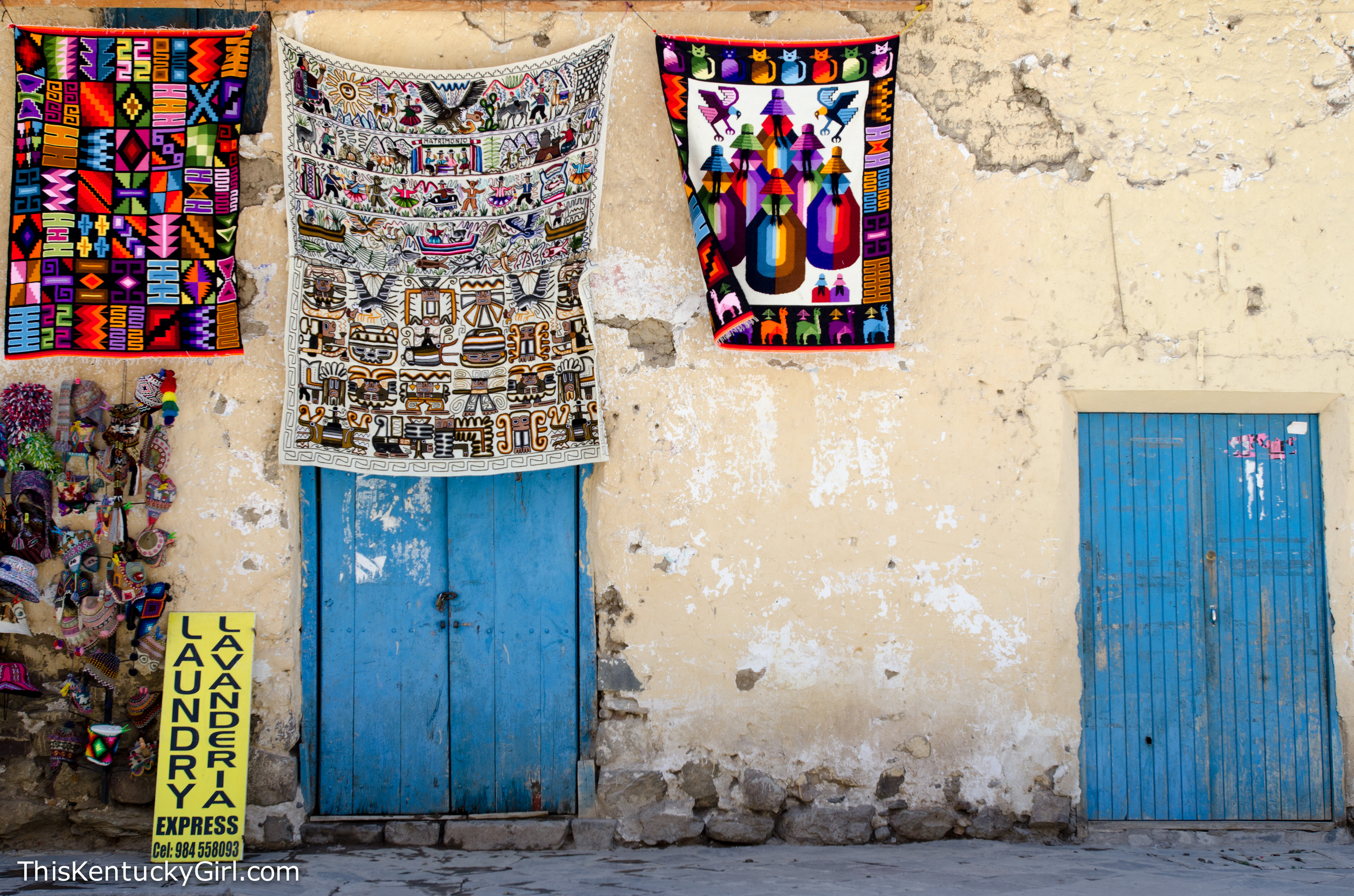
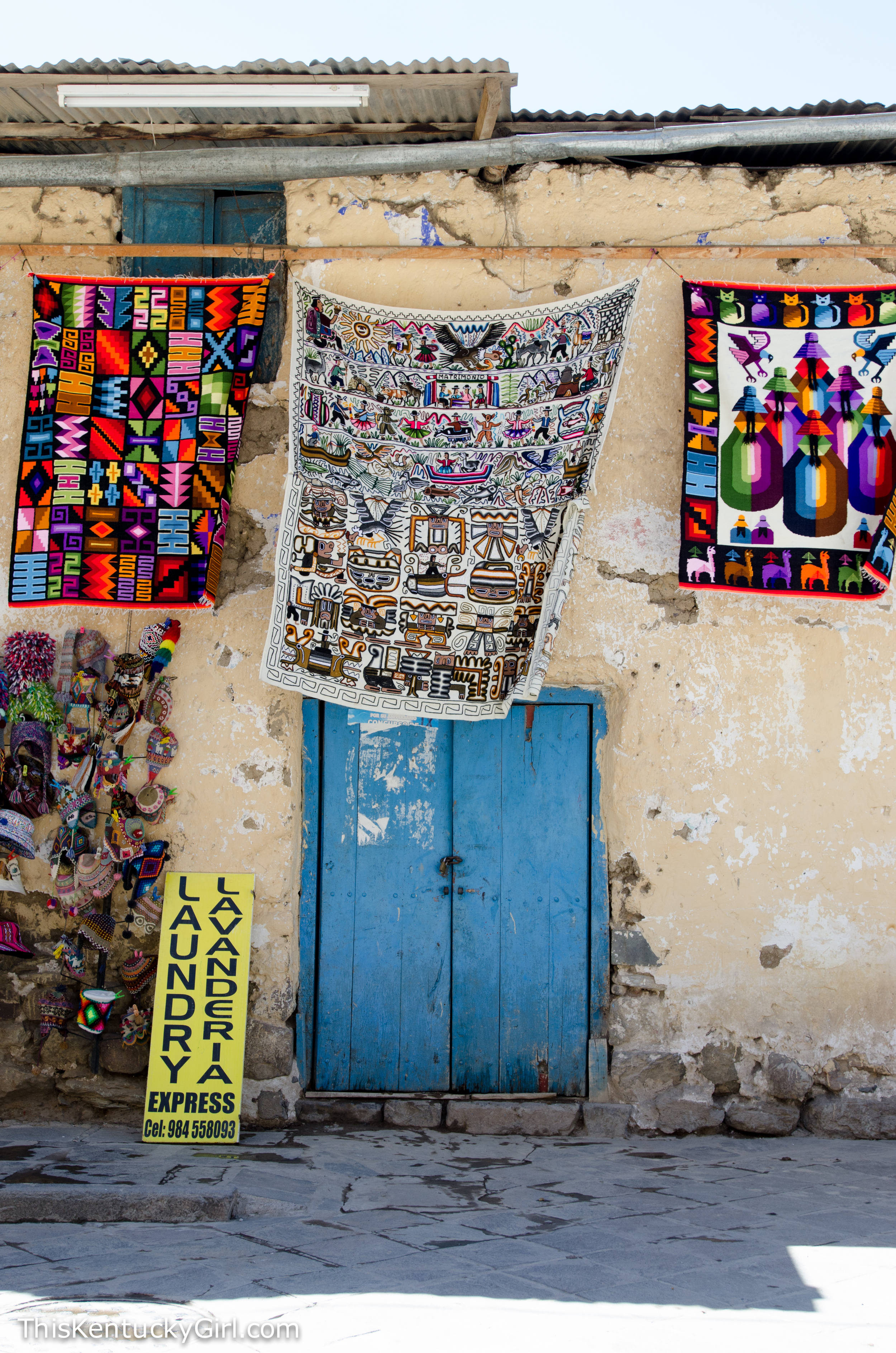
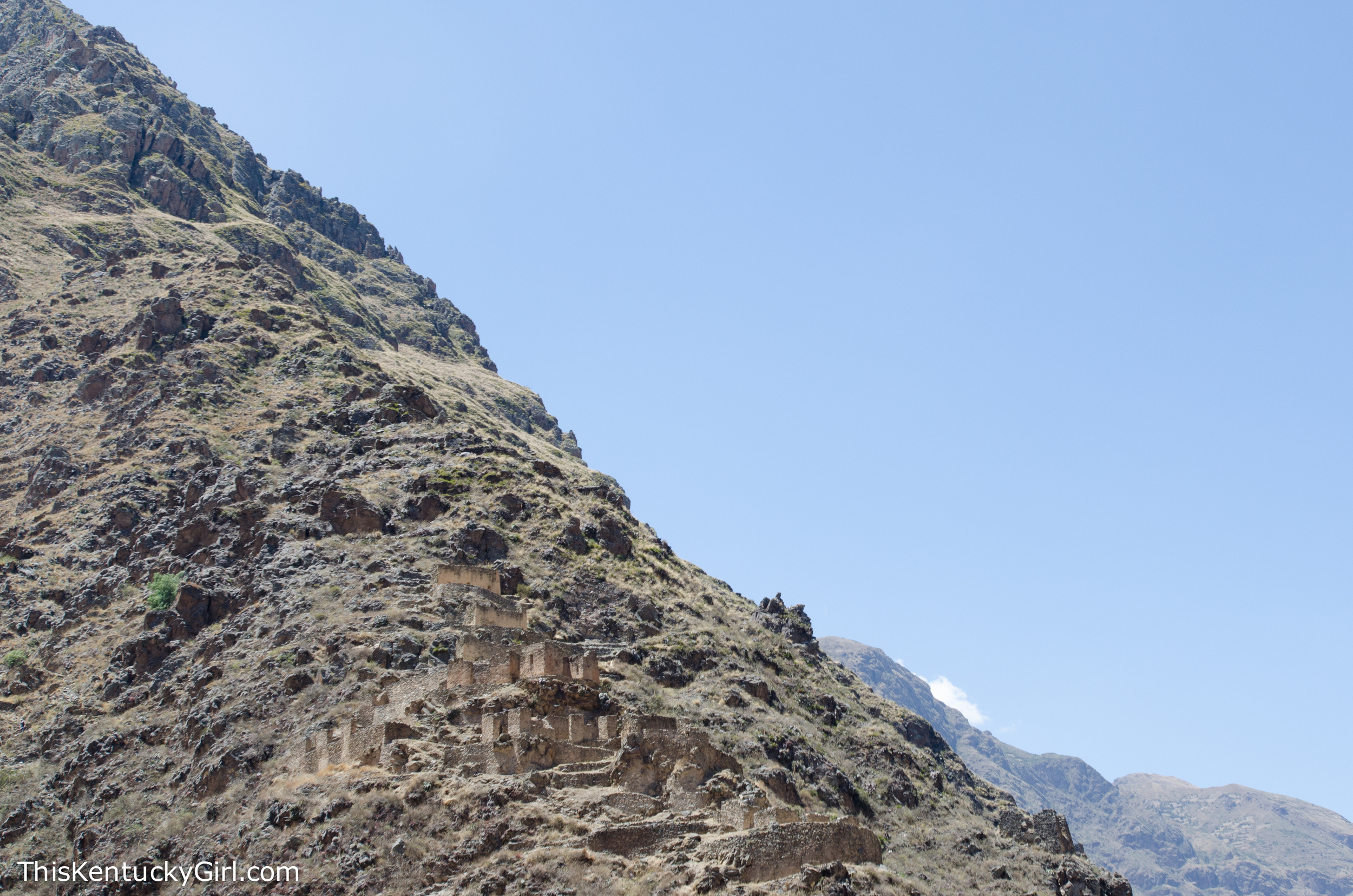
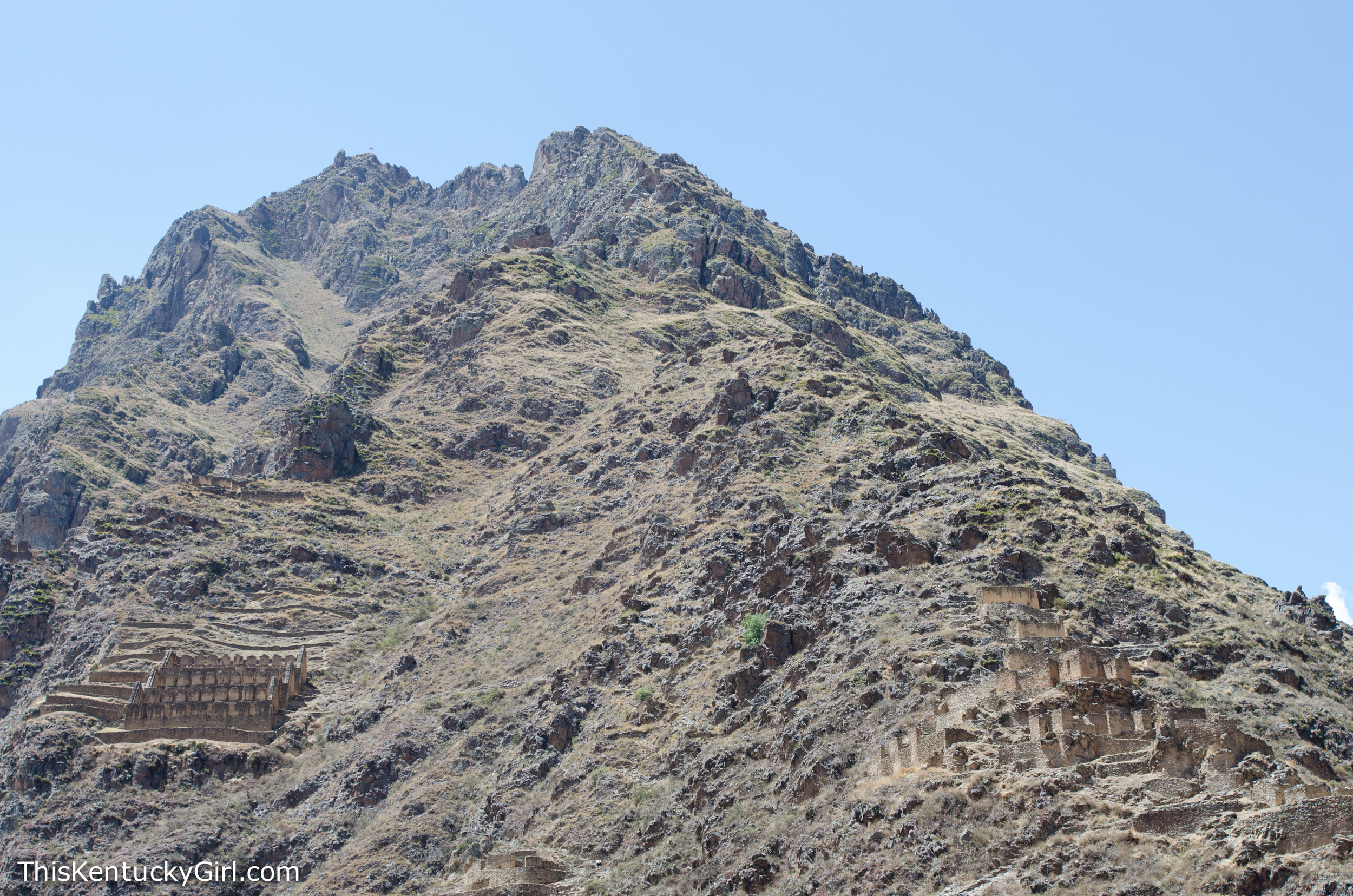
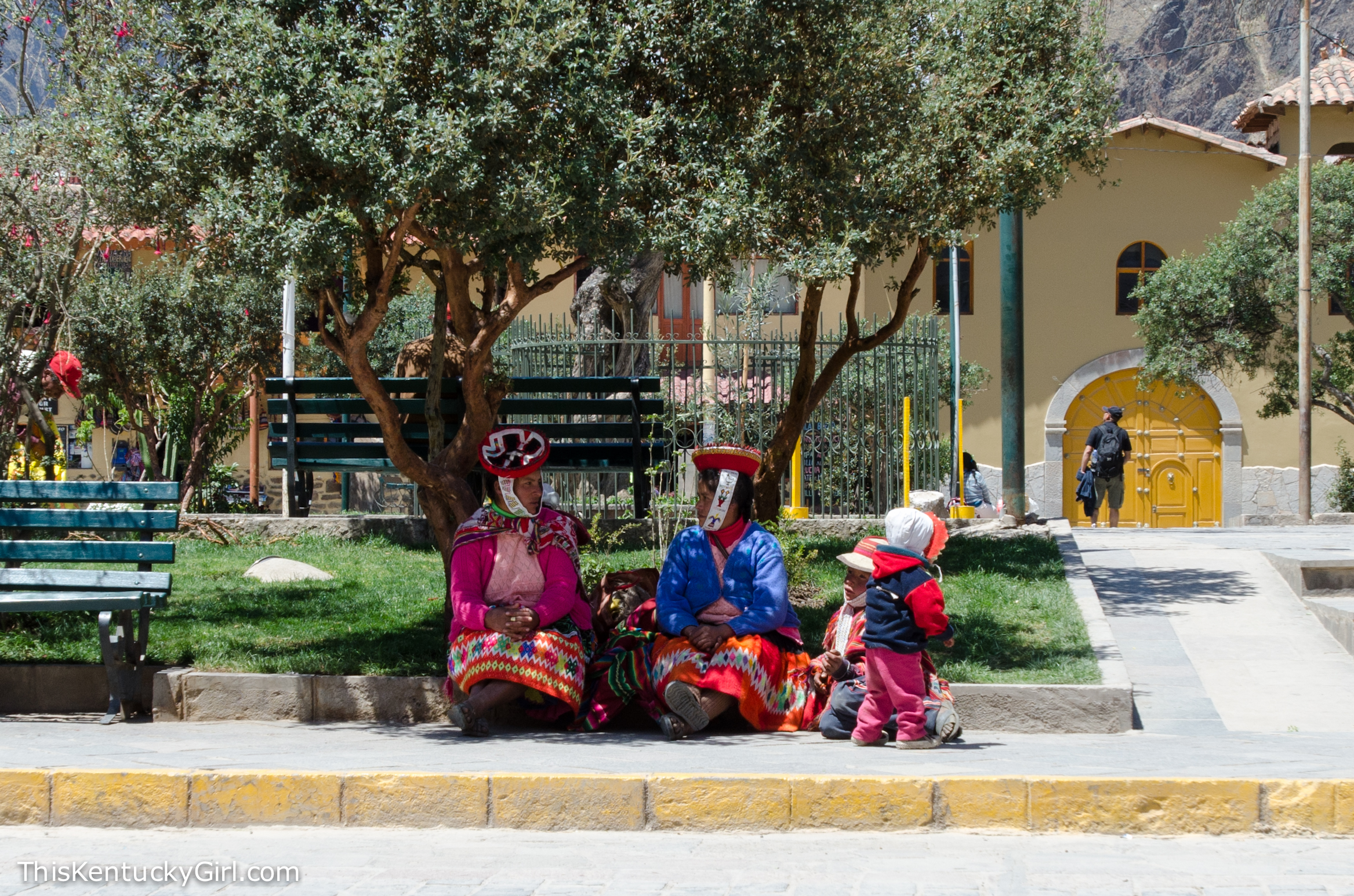
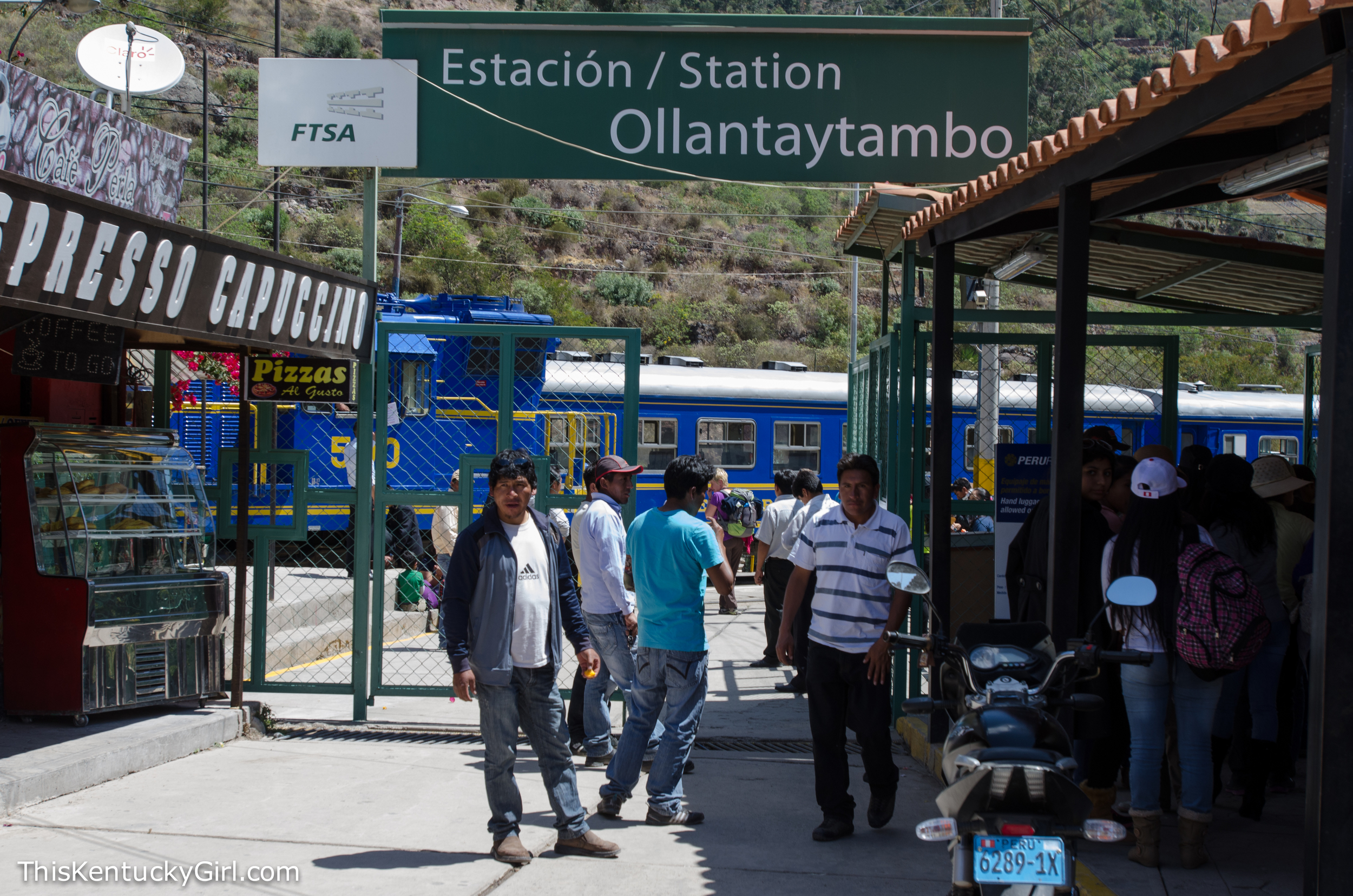
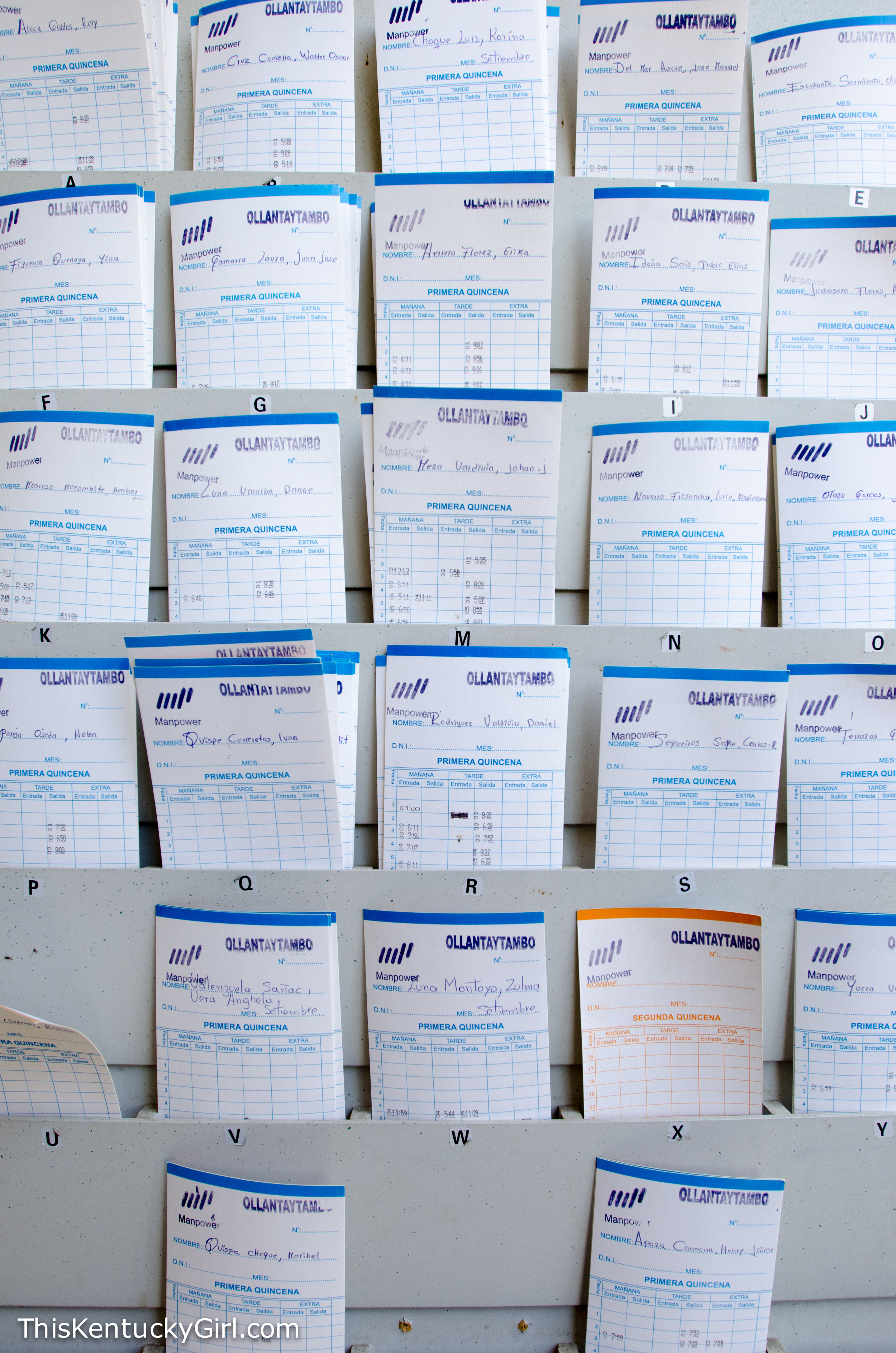
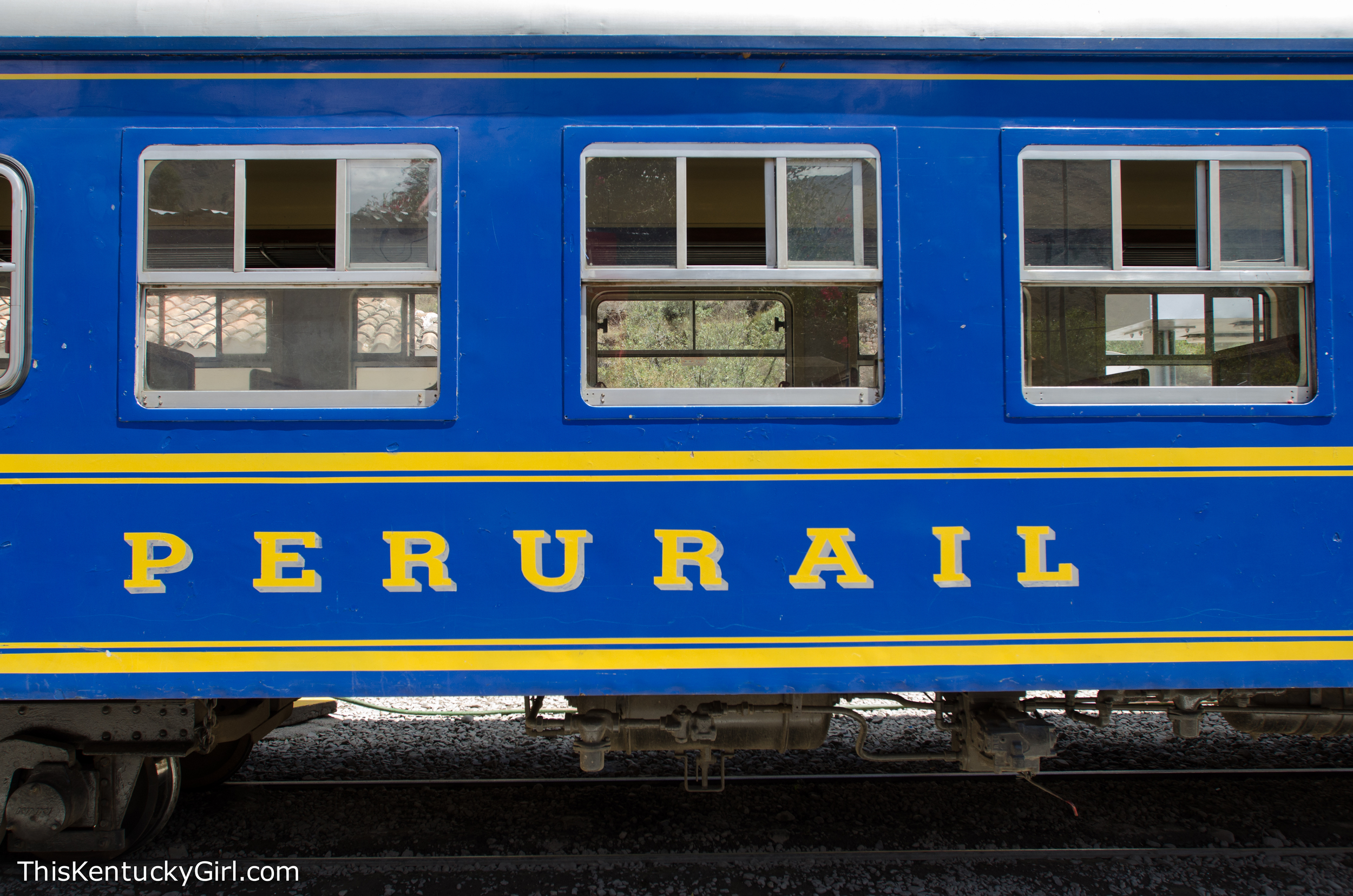
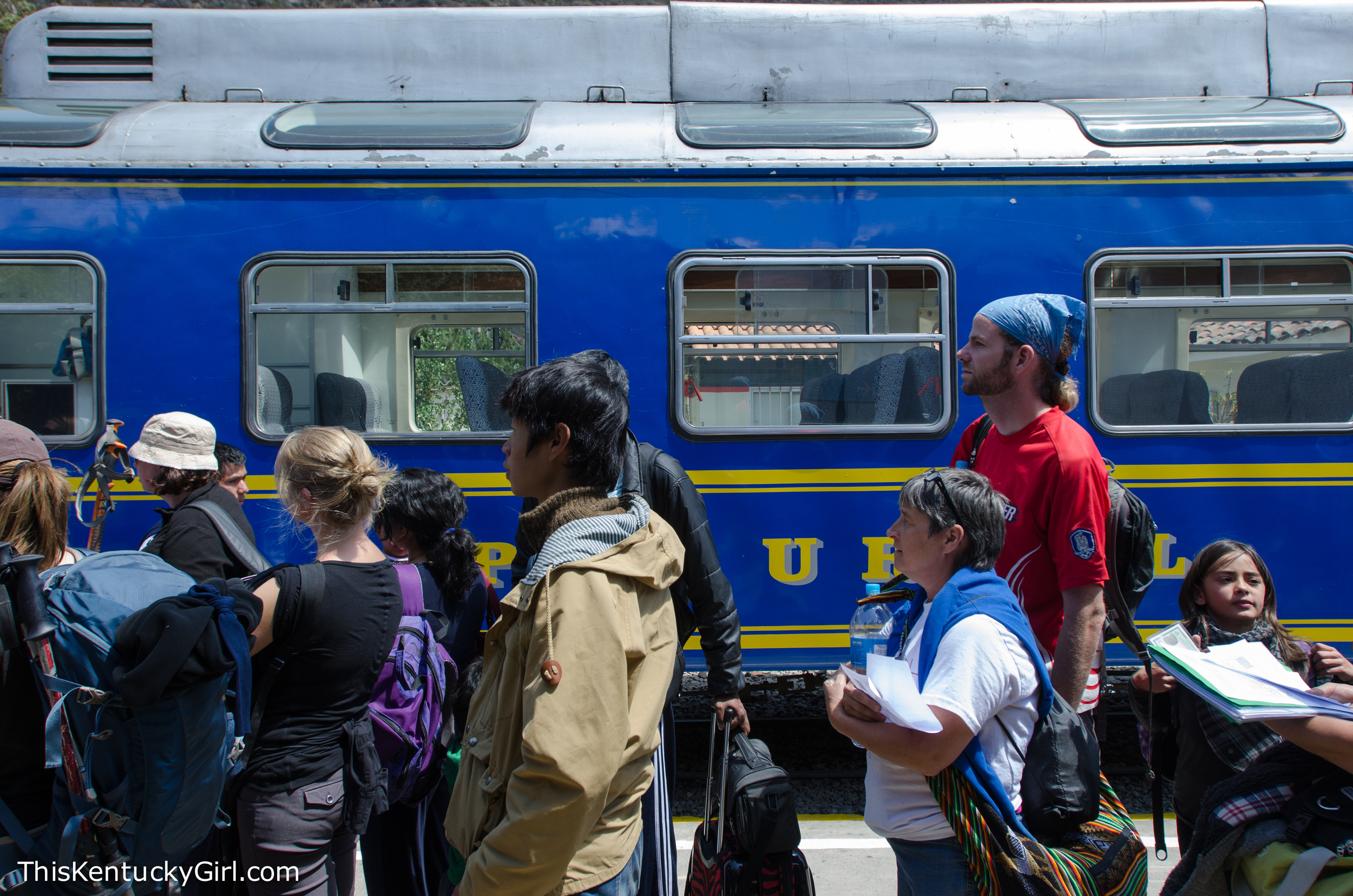
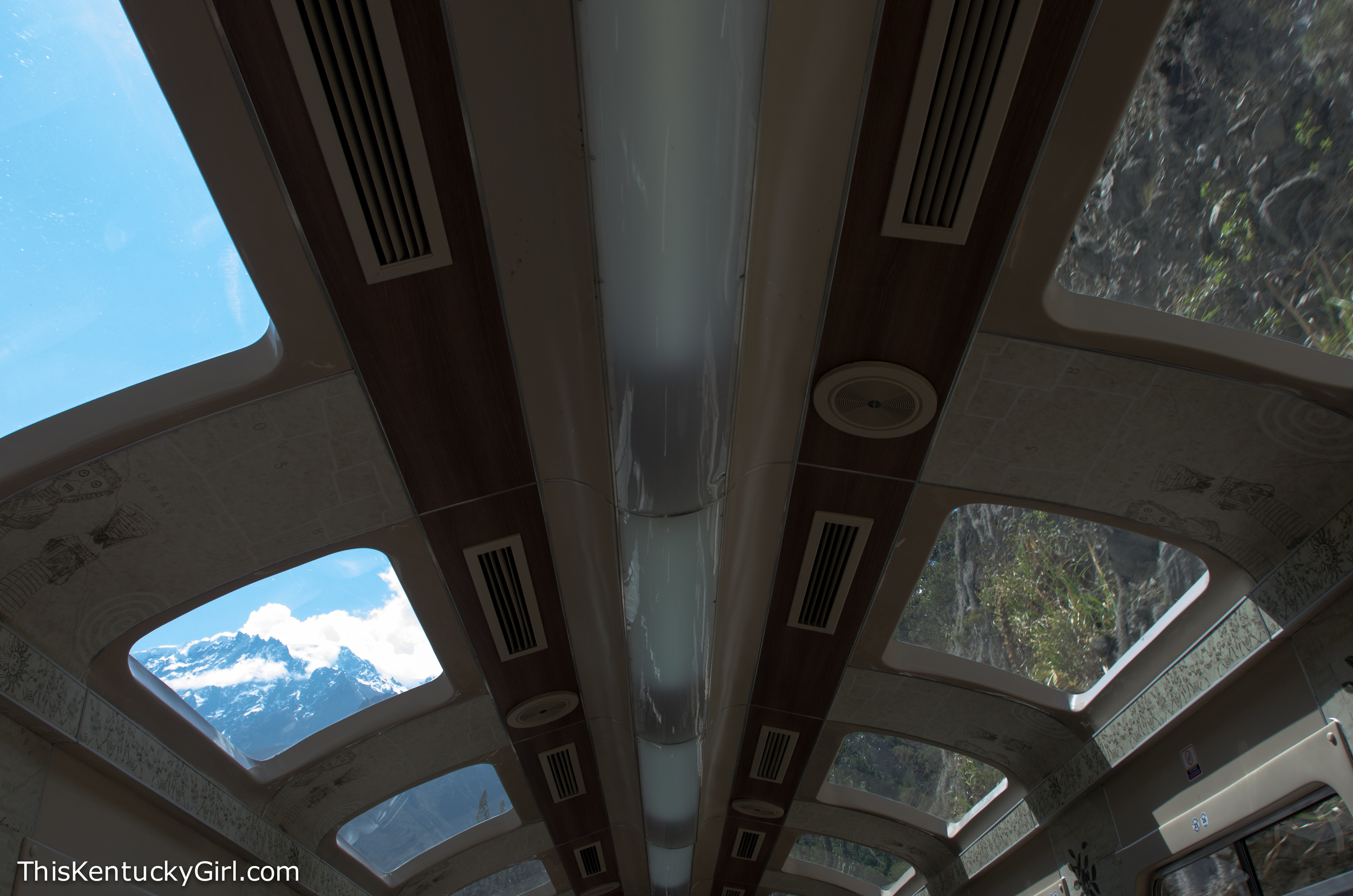
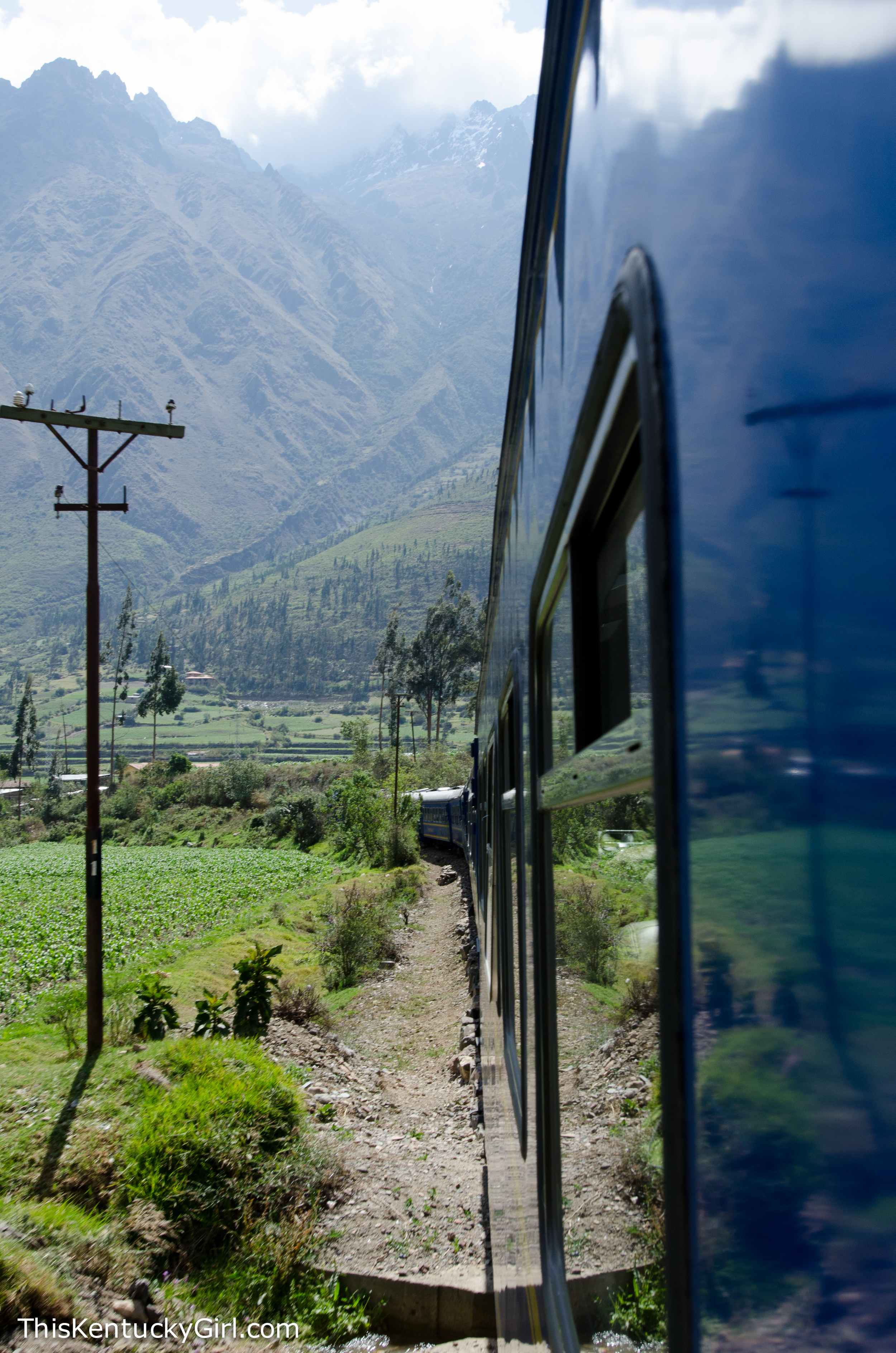
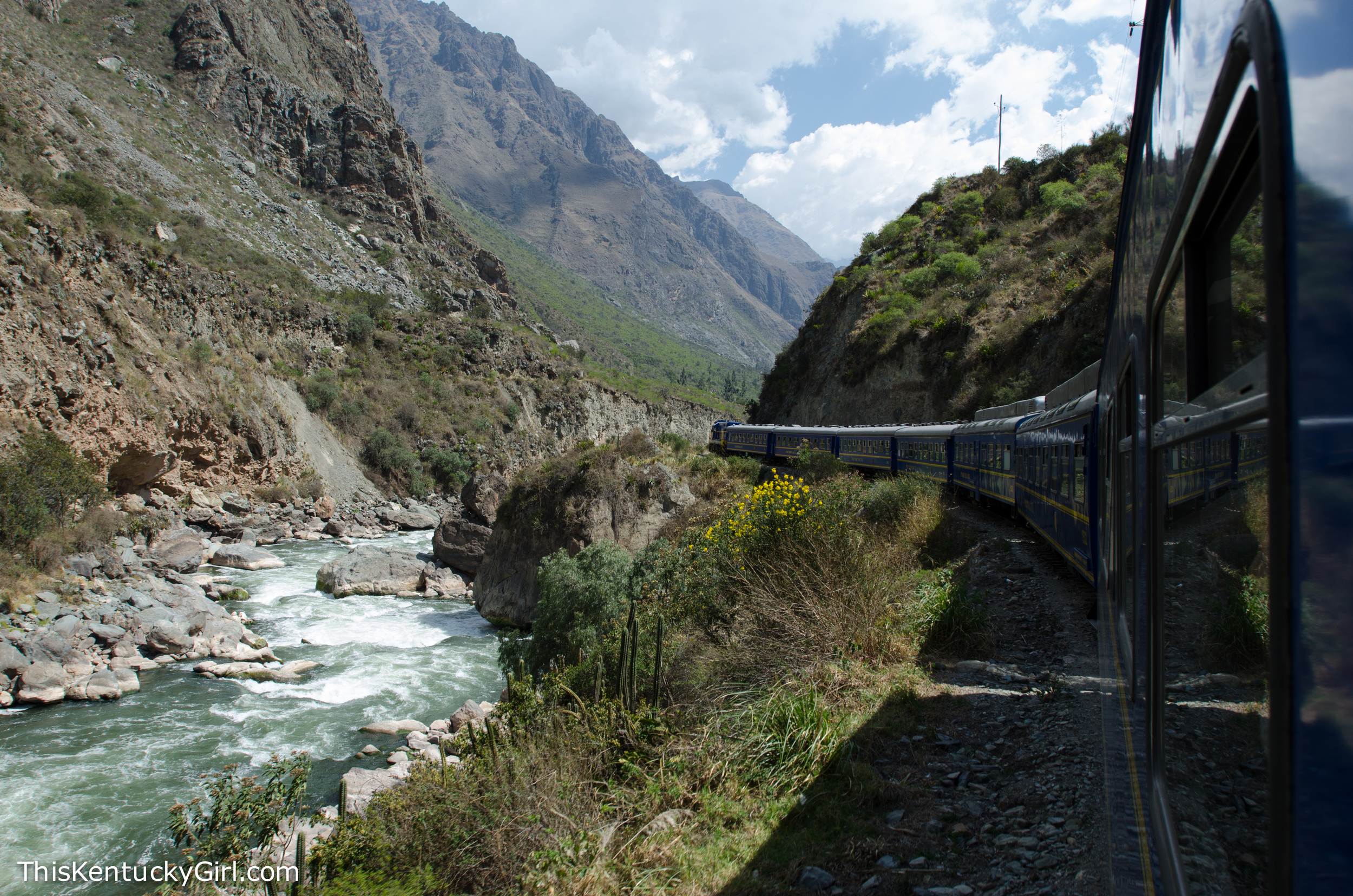
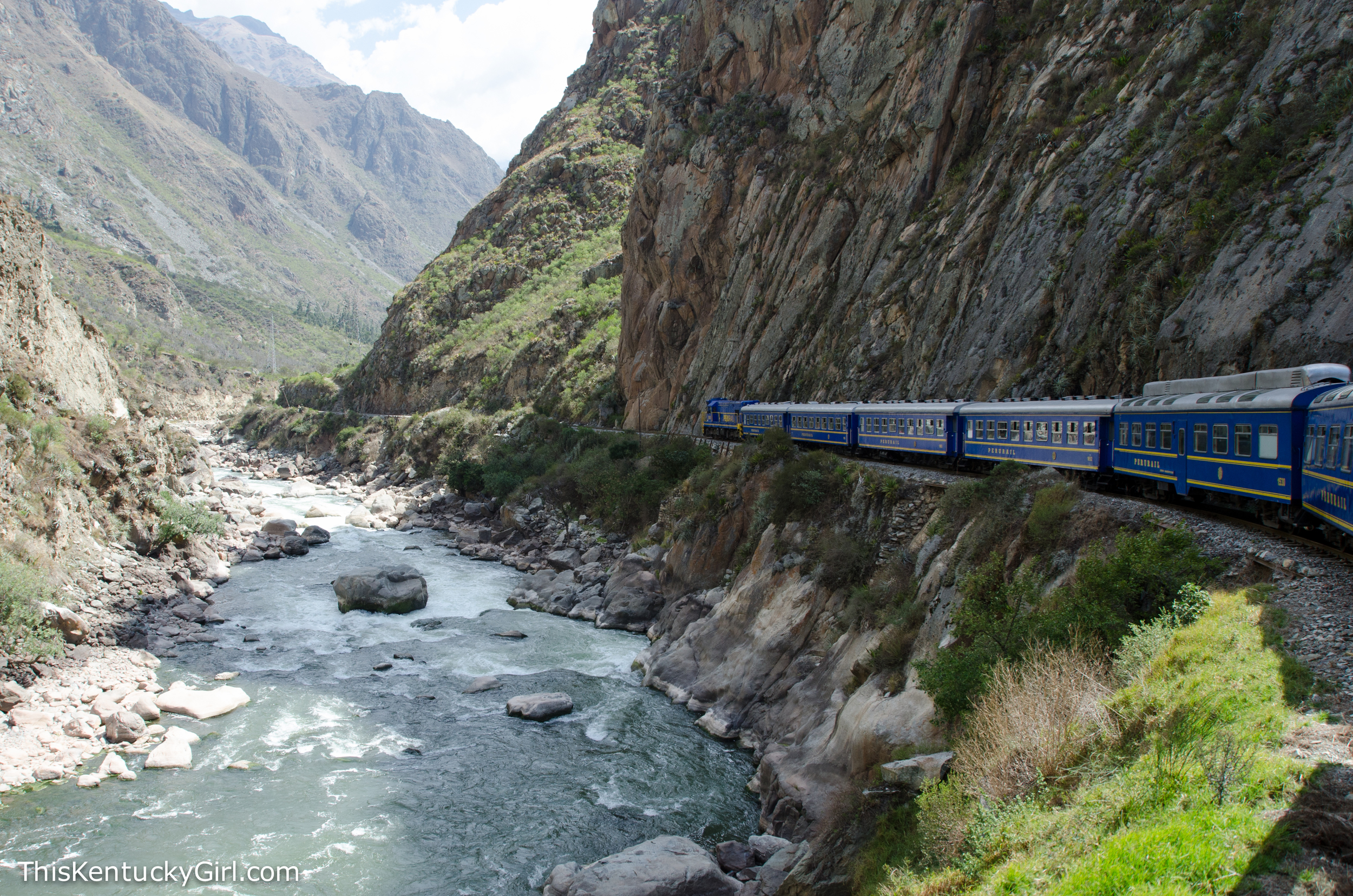
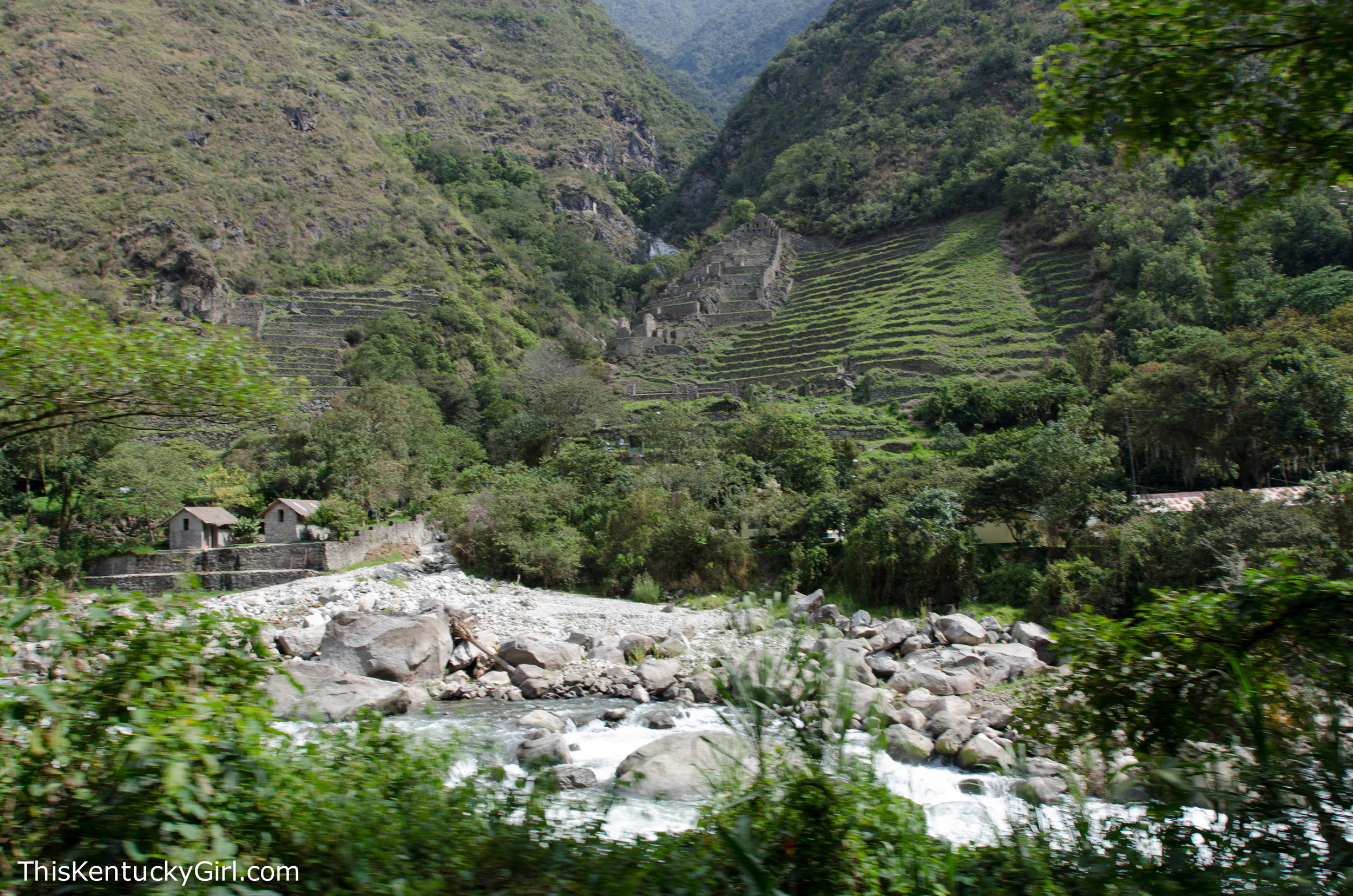
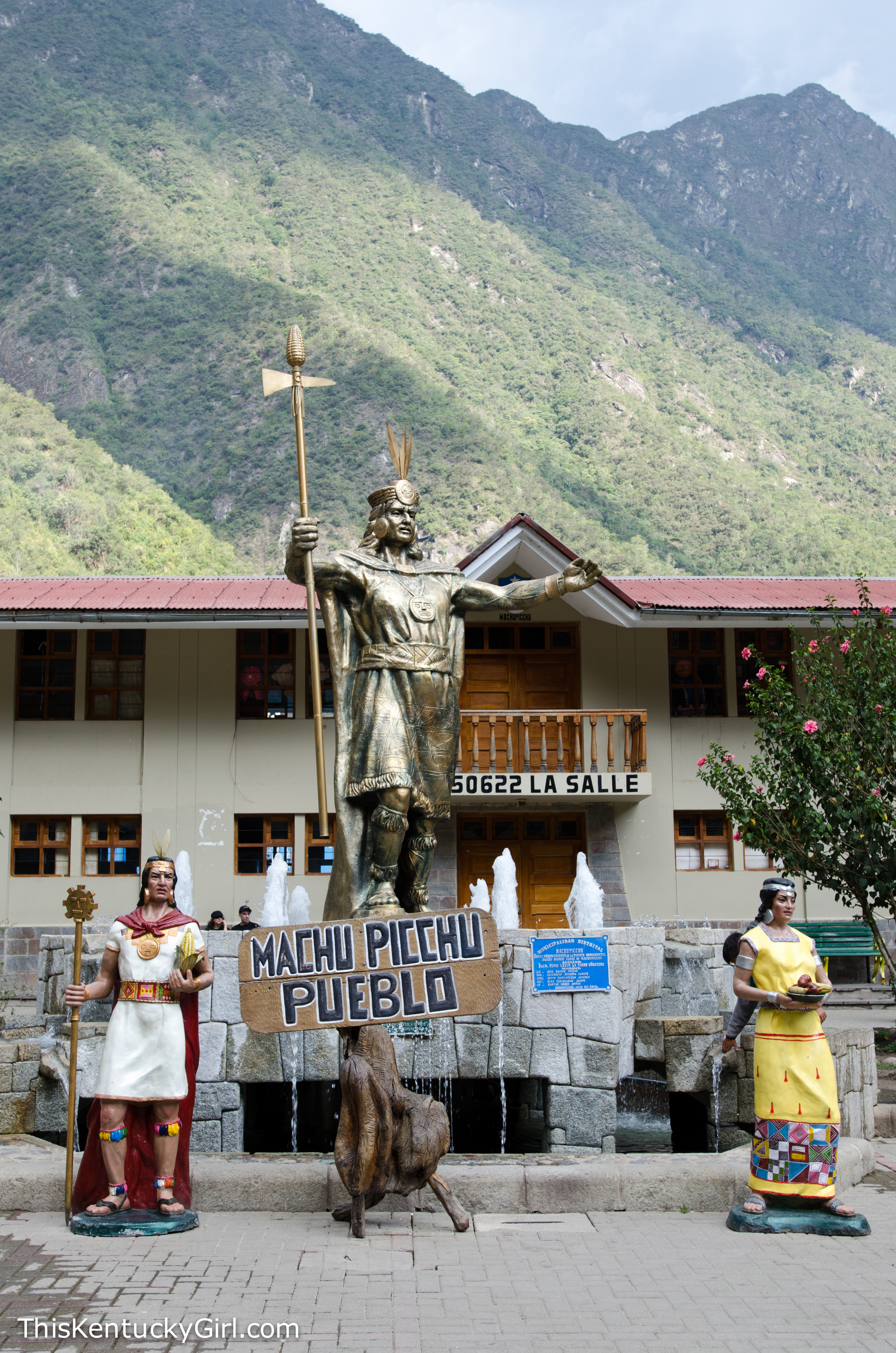
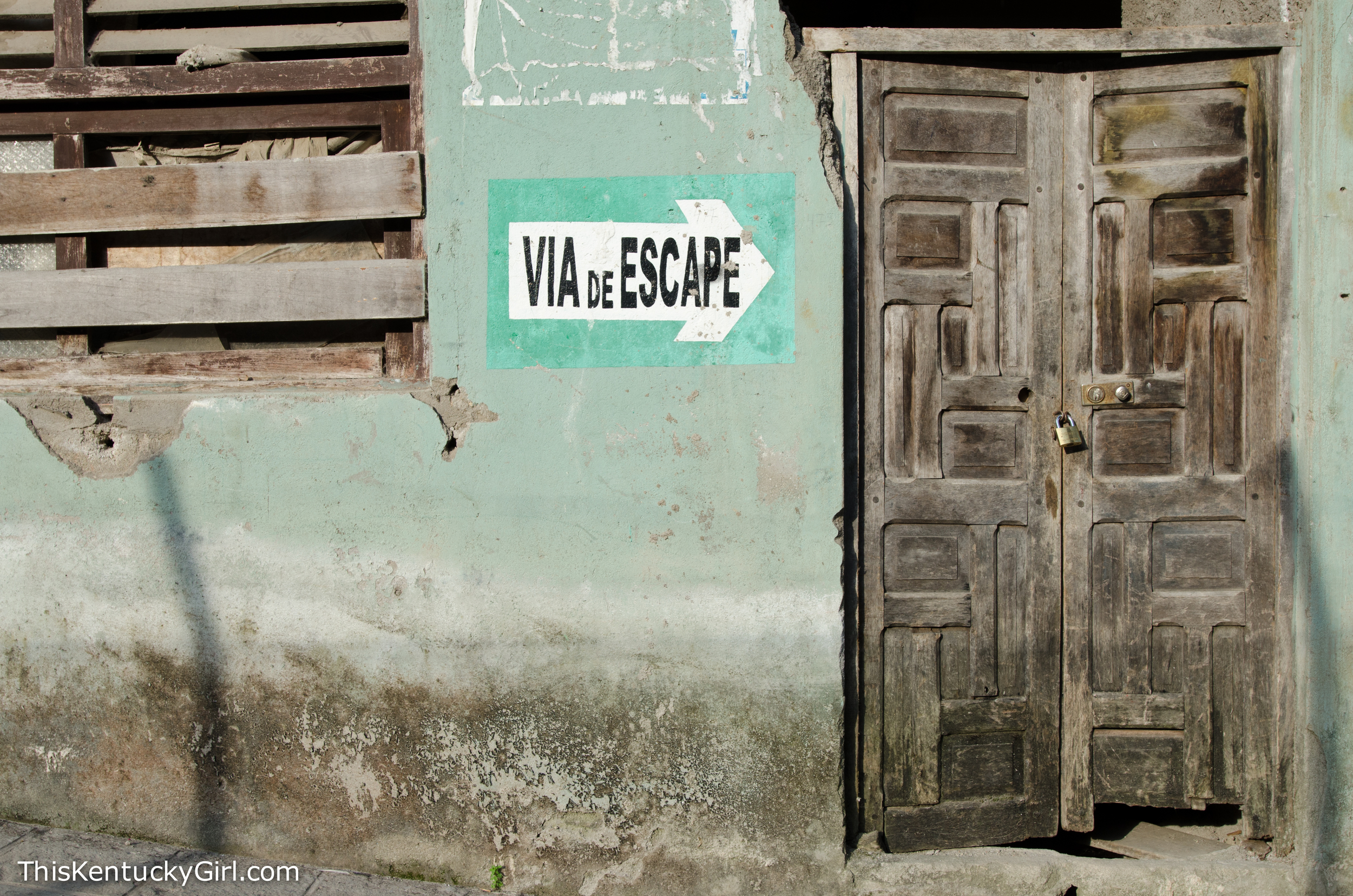
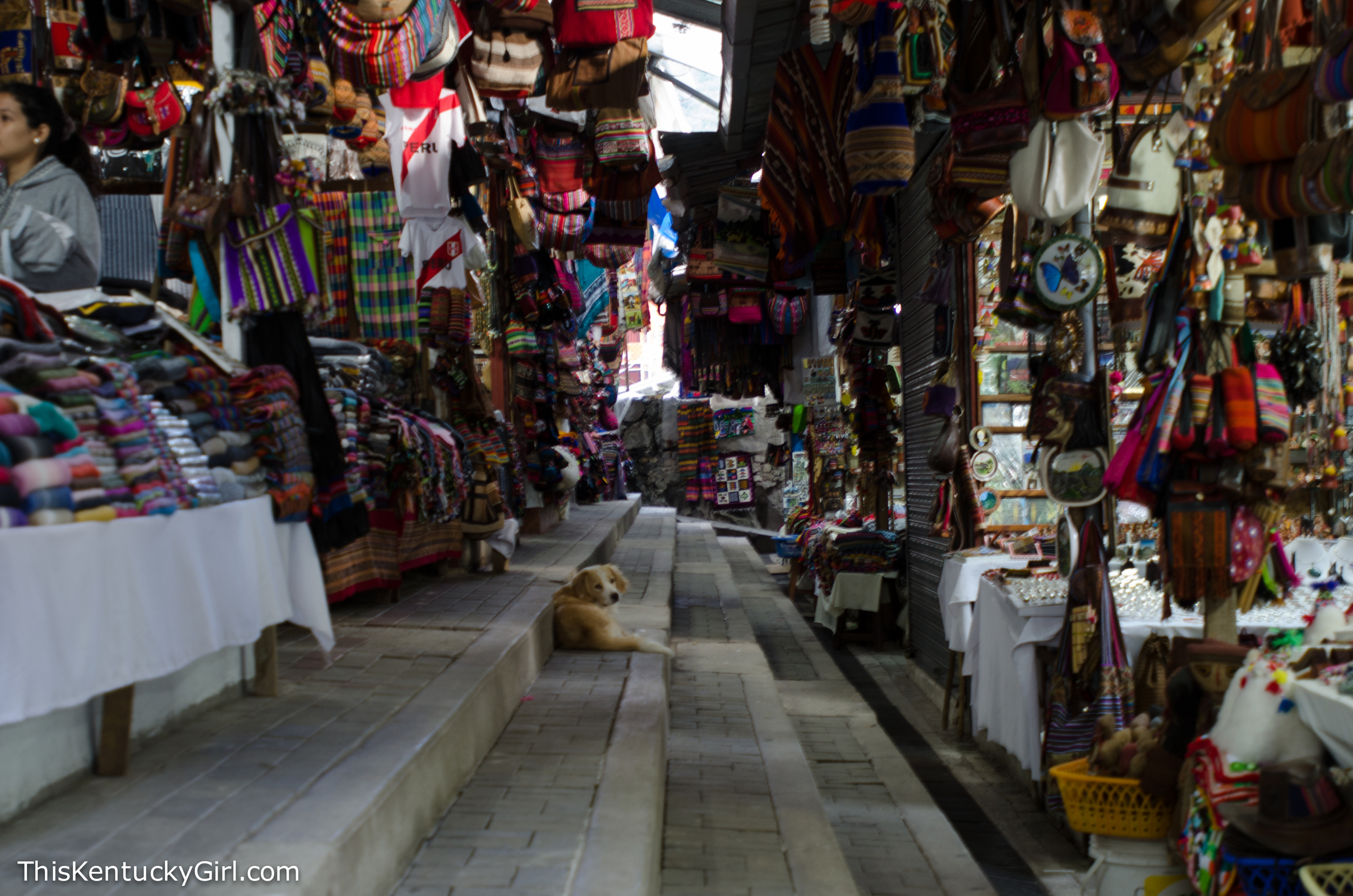
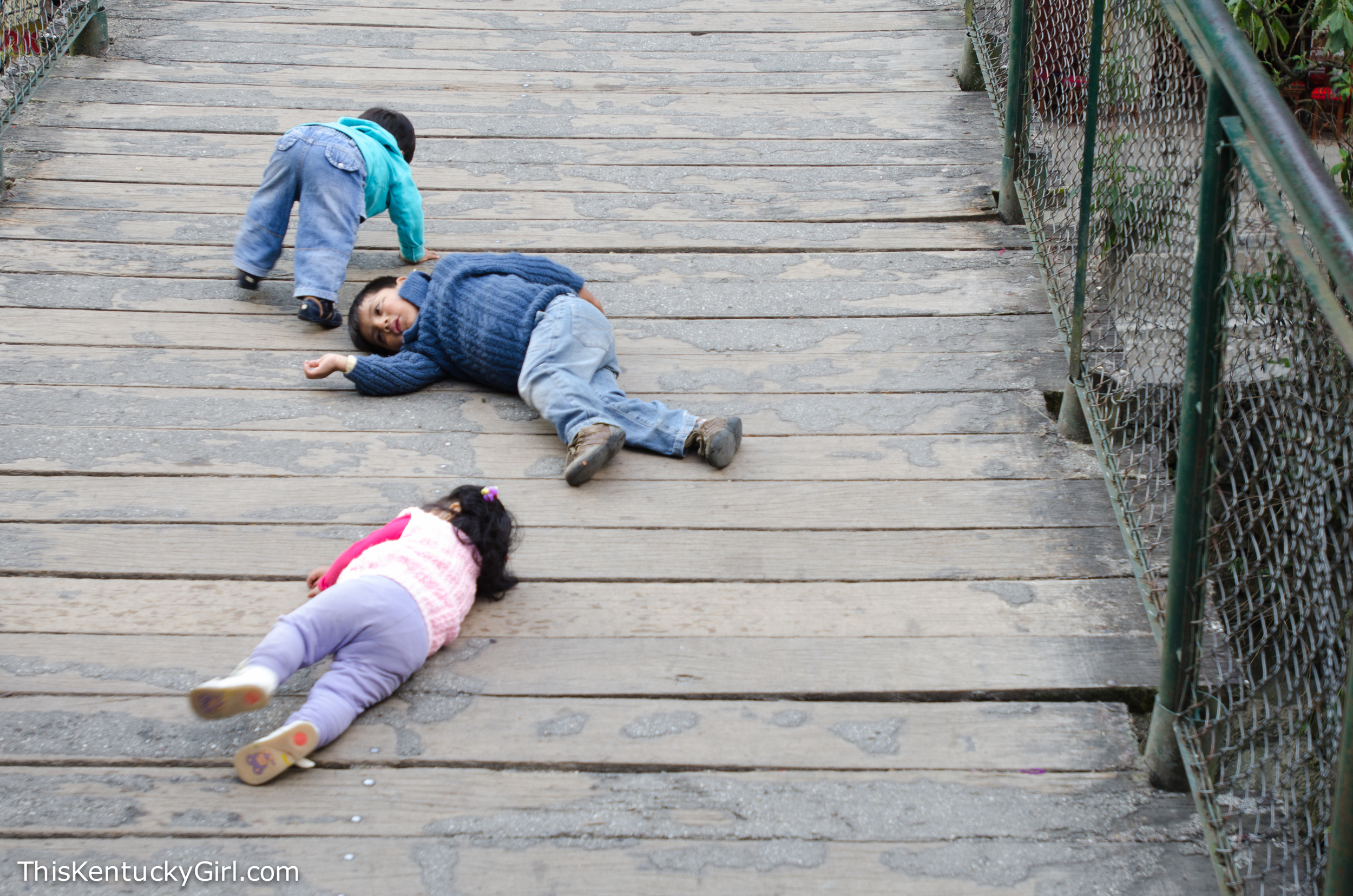
We caught a shared mini-van to Ollantaytambo early in the morning. It was a pretty beautiful ride through the mountains only lasting about an hour and a half. I believe Ollantaytambo is a fairly recent name for the town, in other words, not the name that the Incan Emporer Pachacuti gave to the royal estate that he had built in the center. During the Spanish conquest, Manco Inca Yupanqui, the resistance leader (after the Spanish Incan puppet leader) resided here. It’s all a bit confusing. If you’re interested in learning more about the Incans and the discovery of Machu Picchu, check out Turn Right at Machu Picchu. (Great recommendation, Michelle!) It helped put some of the pieces of the puzzle together for me and also made me realize I probably need to read some more books to understand it all…
Ollantaytambo is also one of the starting points for the Inca Trail. We would have loved to do the Inca Trail, but as it turns out, you need to book your tour six months to a year ahead of time and it’s ‘spensive! We’ll just have to squeeze it into our next year around the world.
Ollantaytambo is small. One central square surrounded by a couple of cafes and tourist shops and that’s about it. We snuck up to the square to have a look around before it was time to get on the train, had a snack, some coca tea, and then hustled it back down to the train station where complete madness broke out. On our way onto the tracks, we passed the employees timecards. I was surprised they were just out in the open like this! They reminded me of a few old jobs I had where I had to punch in.
Ok, so maybe it wasn’t madness, but it certainly wasn’t anywhere near orderly. Once we got onto the tracks, we waited in line. Then had to move to the other side of the tracks for a train to pass through. Then our train (or so we thought what was our train) left. Then we got in line again only to be told to get in a different line by another Peru Rail employee. Madness. But once we got on the train, the ride was pretty gorgeous. The skylights totally helped aid in the experience. What a perfect way to see the countryside and roll into Aguas Calientes.
I didn’t realize until Momma joined us in Peru that I always sit by the window and Andrew always sits in the aisle. This is mostly so he has more legroom and works with me wanting to take pictures or video along the way. I’ve had to share the window seat with Momma throughout Peru, and I’d be lying if I wasn’t starting to get a little pouty about it. I finally opened up about it and she laughed at me, and then shared the window. I probably made everyone on the train nervous holding my DSLR out the window for half of the ride.
Aguas Calientes is as obnoxious as everyone says it is. It’s named for the hot water springs located around the city center, but we were told to avoid them as they have become dirty and overpopulated with tourists. Technically these days the city has been renamed Machu Picchu Pueblo, but no one uses this name. We dropped off our things at our hotel, run by someone who could have cared less that we were there, except when we handed over our money.
When we went out to walk around and eventually find something to eat, we had to constantly consult Andrew’s cheat sheet to see if we sat down at a particular restaurant, would we get ripped off or not. This is such an annoying way to try to enjoy a city in a foreign country and it angers me. If the city weren’t set up this way (to rip every visitor off) it would be more likely visitors would stay longer and enjoy the escape in the middle of the mountains, but noooo everyone gets in. sees Machu Picchu. and gets out.
In case you find yourself in Aguas Calientes, copy Andrew’s cheat sheet before you go out for a bite to eat:
Always ask: No tax, no servicio, no nada mas? Otherwise, you might be lured into a restaurant with reasonable prices listed and then when you get the bill it’s suddenly triple the price because of additional fees they have added on without informing you.
Don’t go to:
-El Tunqui
-Pizzeria Amaru
-Apuss
-Chayna
-Apu Qoyllur Rit’i
-Qhawarina
-Hatun Runa
Maybe (a ripoff):
-Mapi
-Keros
-Rustica Fabrizzio’s
-Chez Maggy
Ok:
-Chullpi Machupicchu
-Inti House
-Canton Chifa
-Inka Wasi
-Pachamama Pizzeria
-Mama Angelica
-Kintu
-La Espiga
We ended up at a lovely Indian restaurant, Govinda, up the hill towards the hot springs entrance. The owner looked at Andrew like he was crazy when he asked “No tax, no servicio, no nada mas?” We figured it was a good sign and sat down. The food was good, the atmosphere was super calm- especially compared to the other restaurants lining the same street, and I can only hope other restaurants follow suit offering a straightforward menu, good service, and good food! On our way back to our hotel, we encountered these little ones who obviously spent the day climbing Machu Picchu and couldn’t walk any more. Probably not, but it was fun watching them sprawl out on this pedestrian bridge like they owned it. A few minutes later, their mom was reprimanding them and dragging them to one side- taking all of the fun out of it!
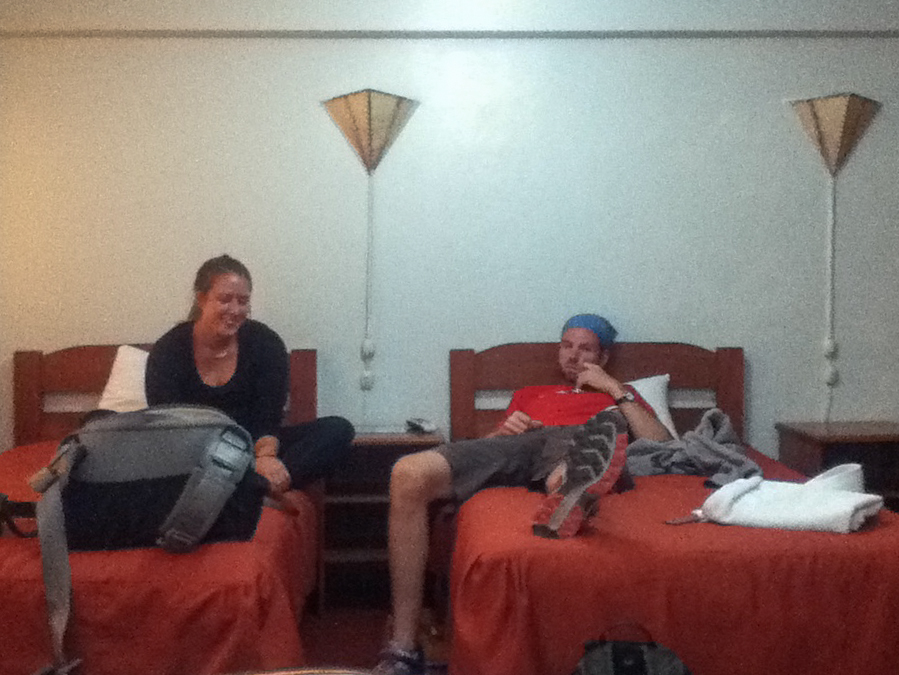
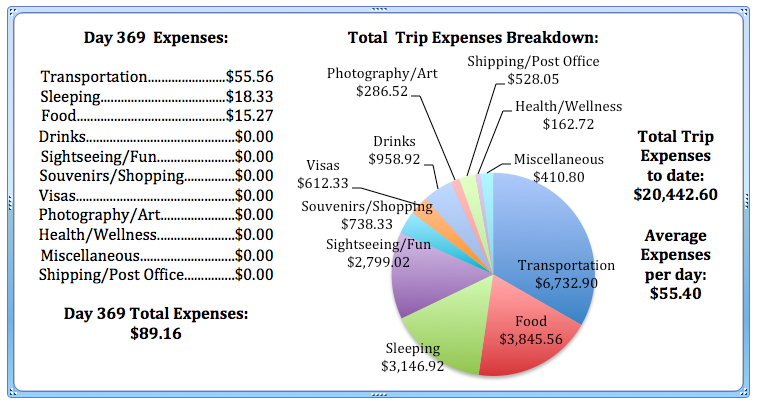
Day 368: Our first day in Cusco
Another day… after another overnight bus. Turns out trains in Peru are crazy expensive. As an alternative, we’ve started booking the “luxury” seats on the buses. We boarded and were totally thrown by the big lazy-boy style seats with individual screens and a selection of recent movies on tap. And then we realized the sound didn’t work. Our flight (er, bus?) attendant didn’t seem to care. We slept. Mostly. And then we were whisked away to bed in Cusco at five in the morning. A couple of cold showers later and we were walking around town. Friends and family have raved about Cusco. I can see why. It’s charming and full of Incan architecture, women dressed up in traditional clothes walking through the streets with baby lambs and llamas, and even an…”INCA!” The little girl below was SO excited to see the Inca that she not only screamed, but ran up to him and wrapped her arms around him. It was like a little girl back home seeing Santa for the first time. In a word, it was adorable. I couldn’t resist turning around to try to get a picture of it.
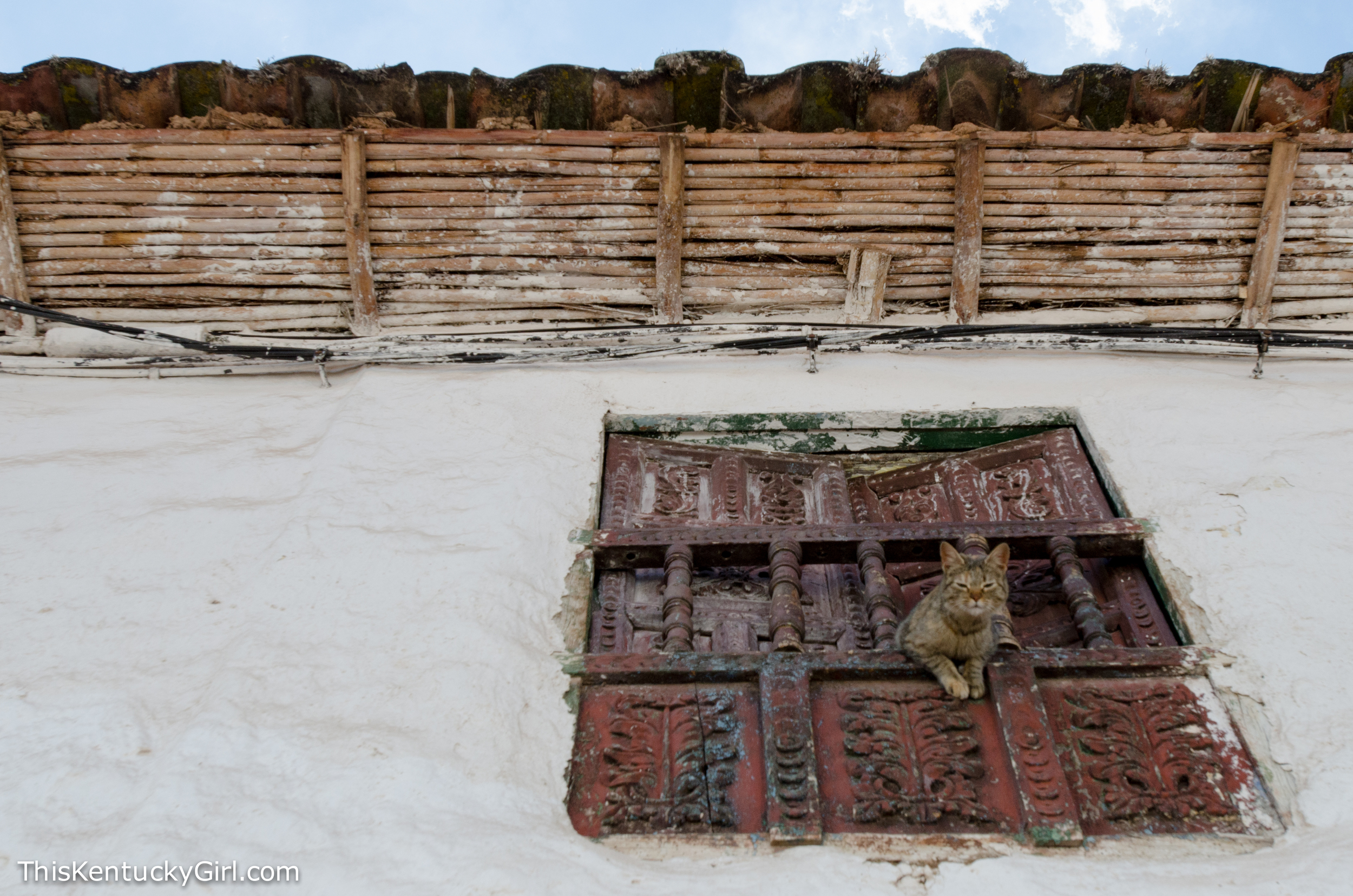
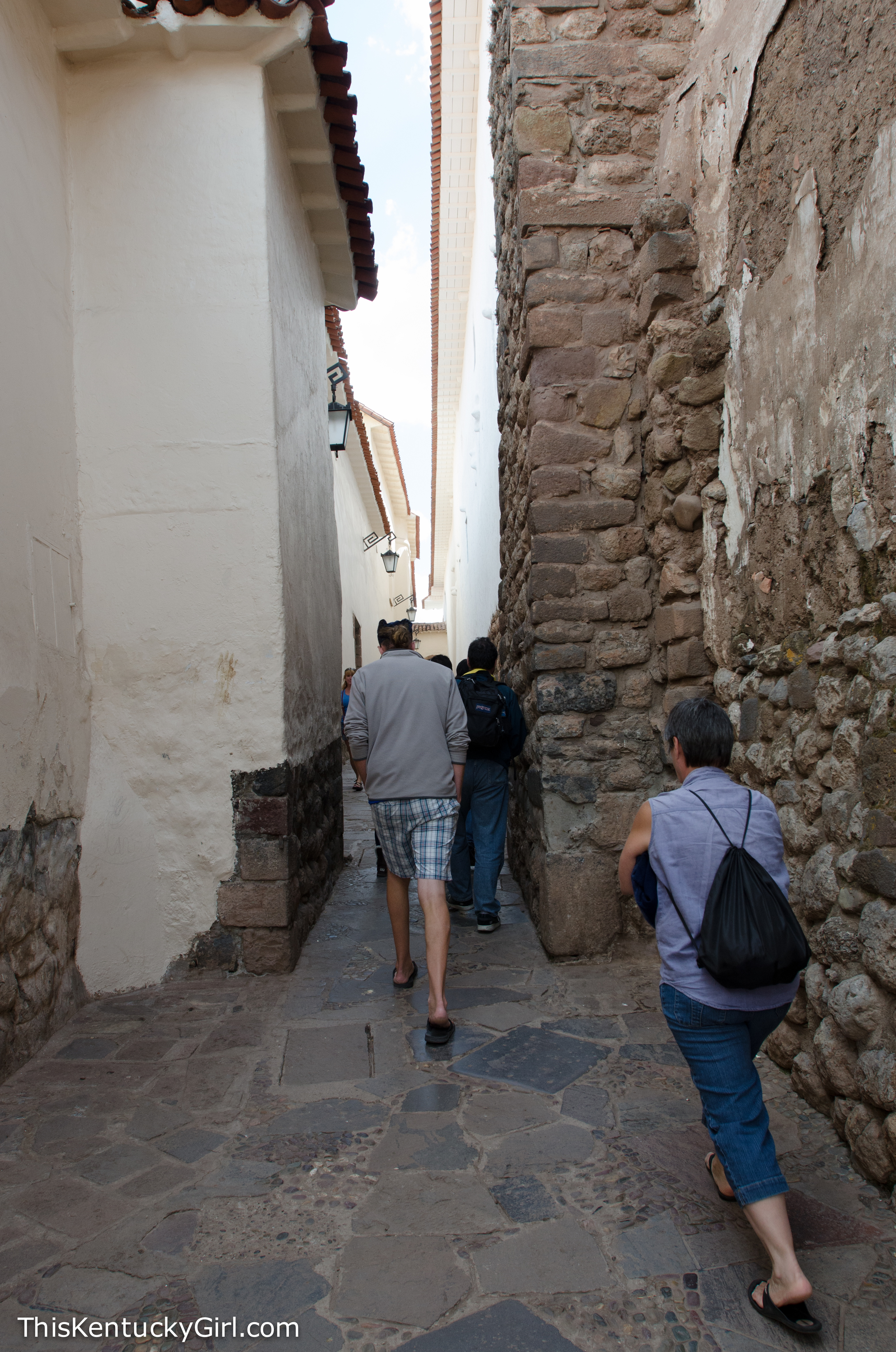
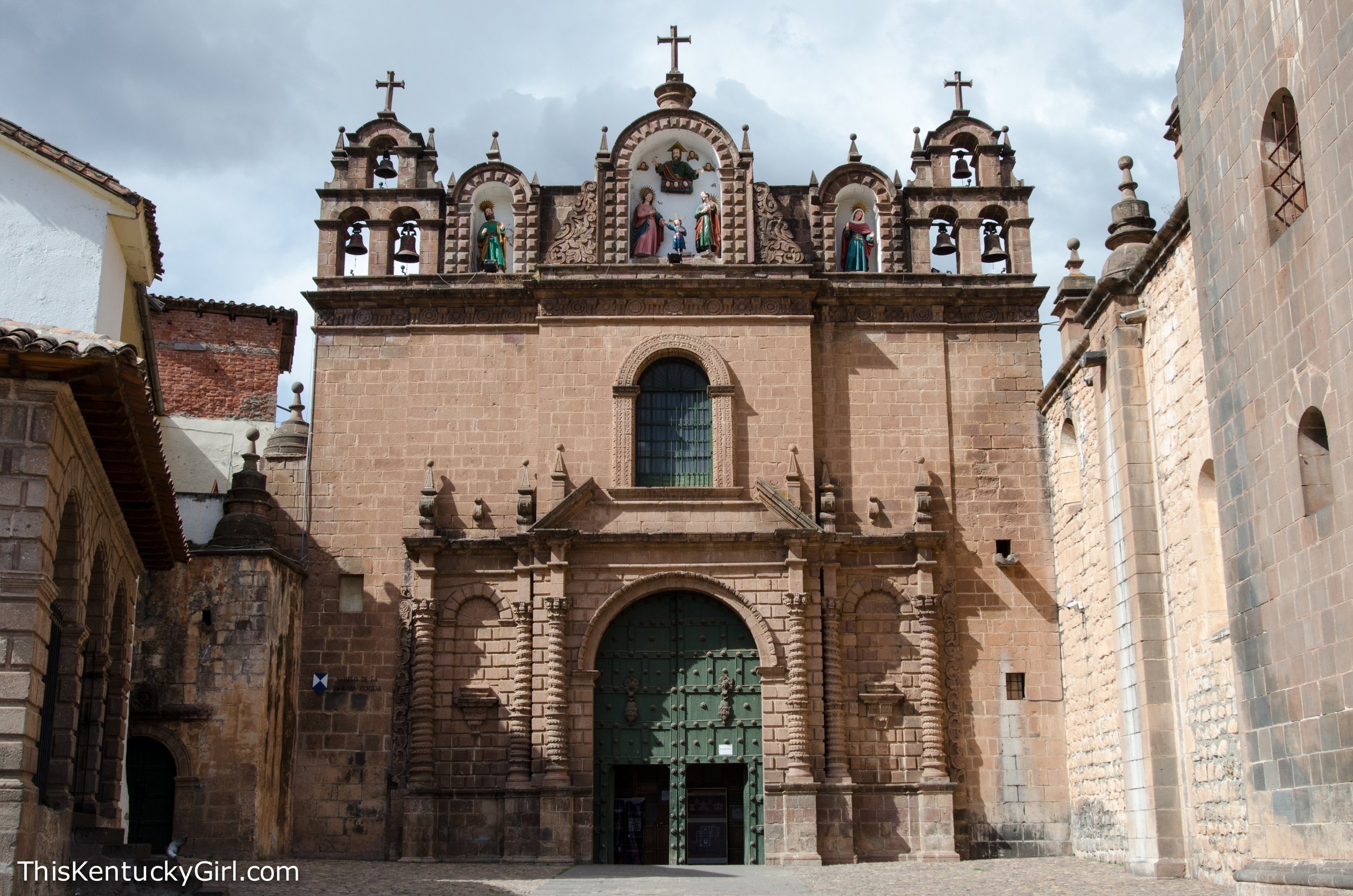
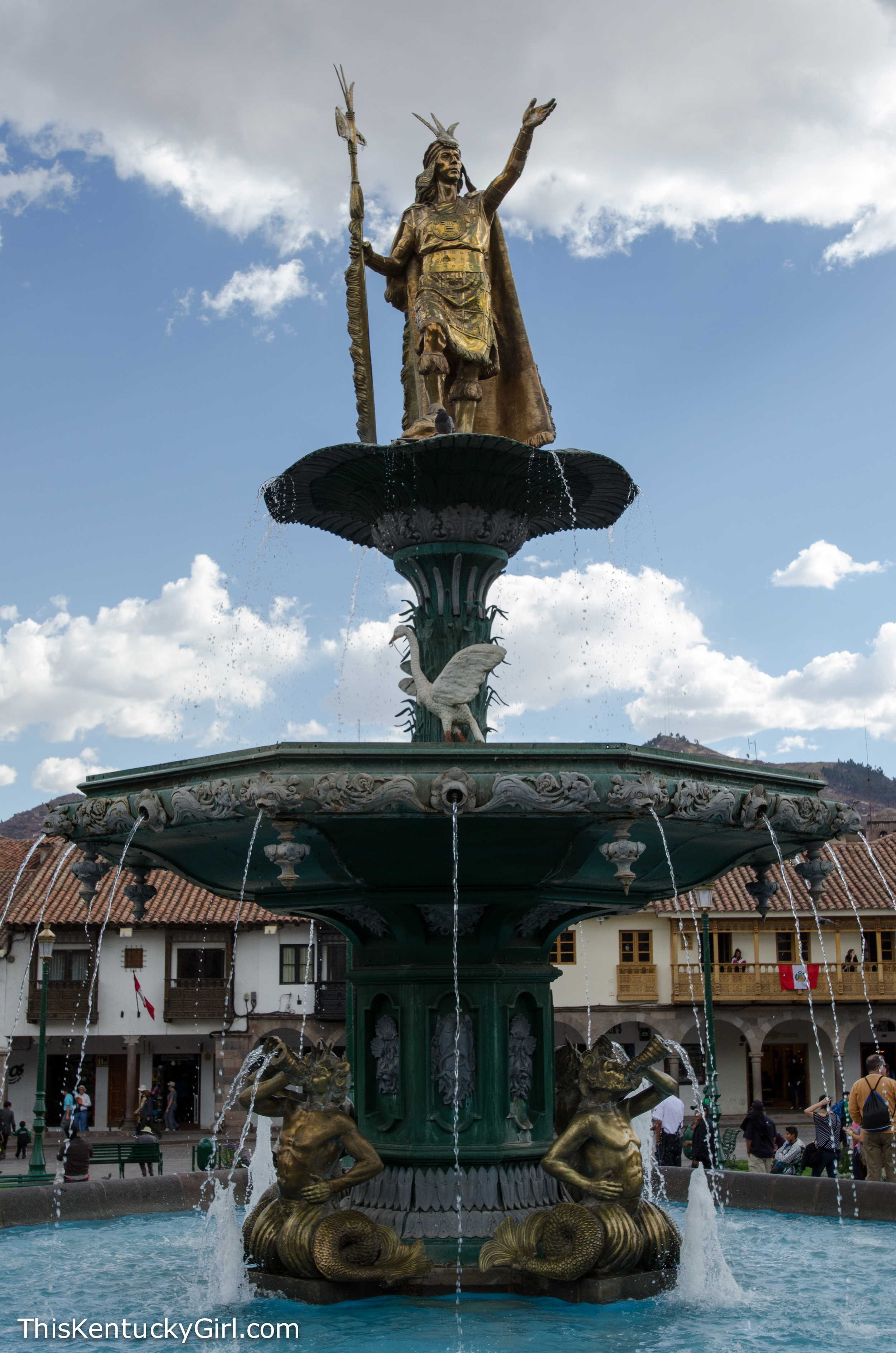
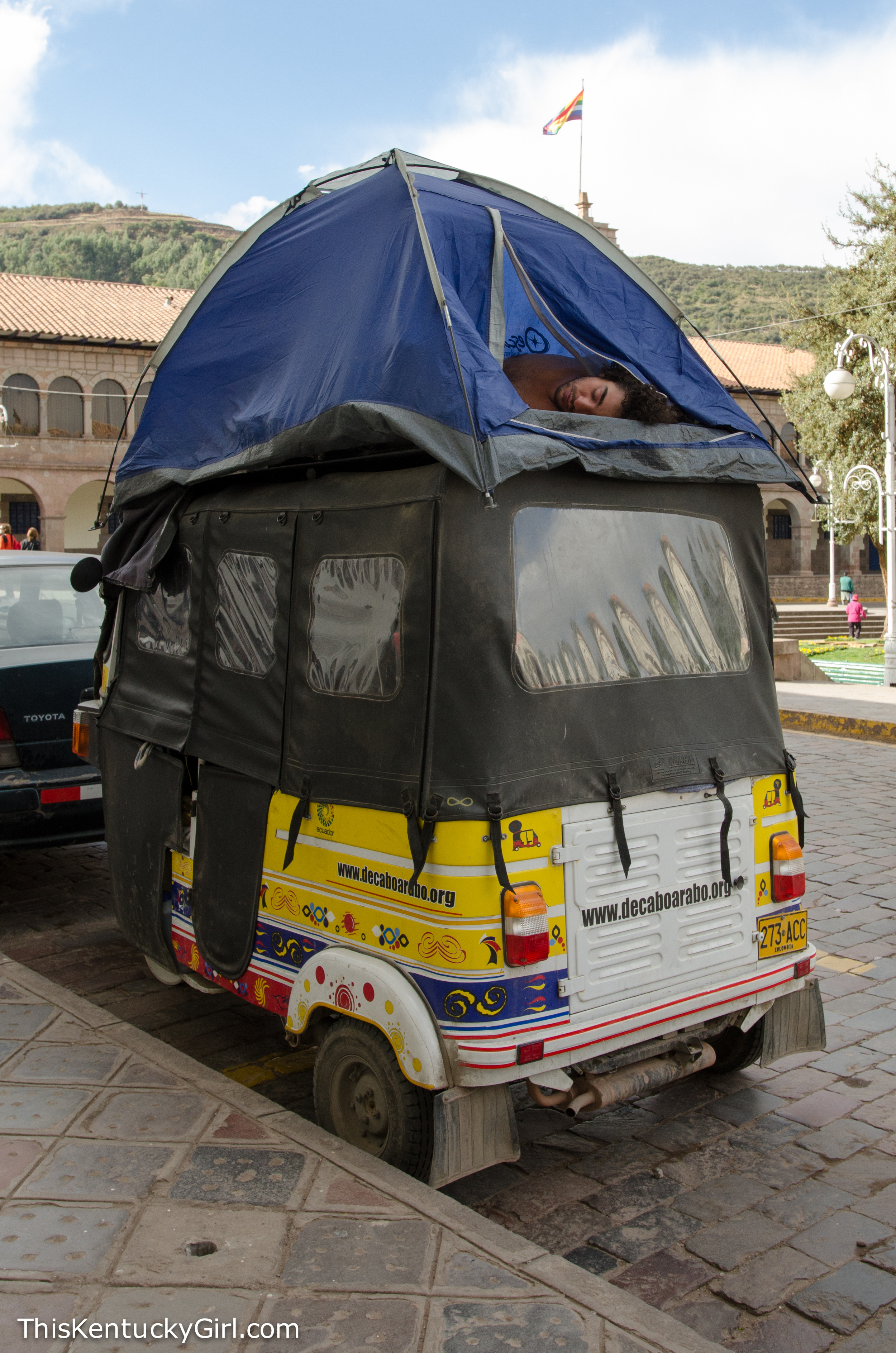
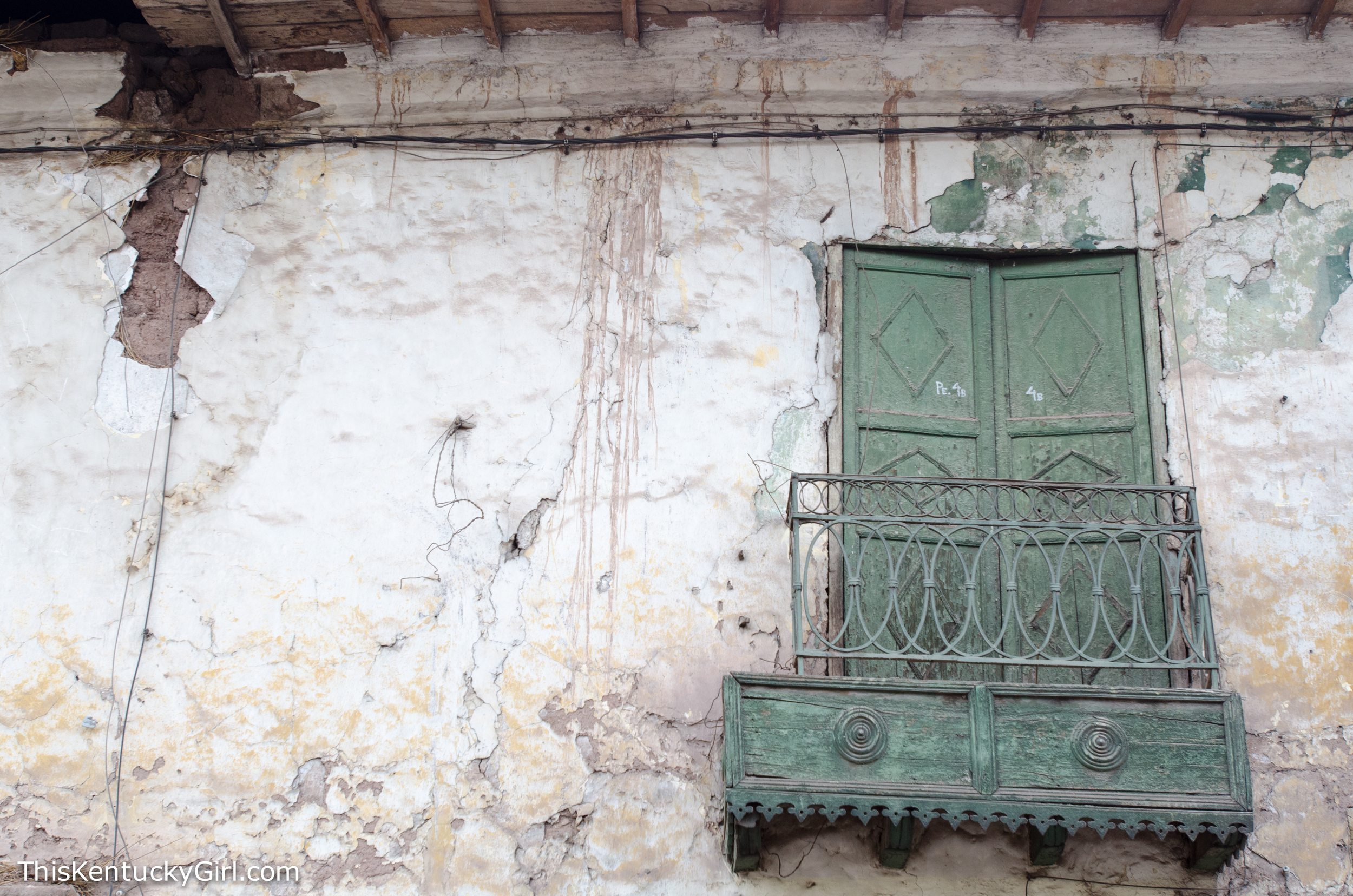
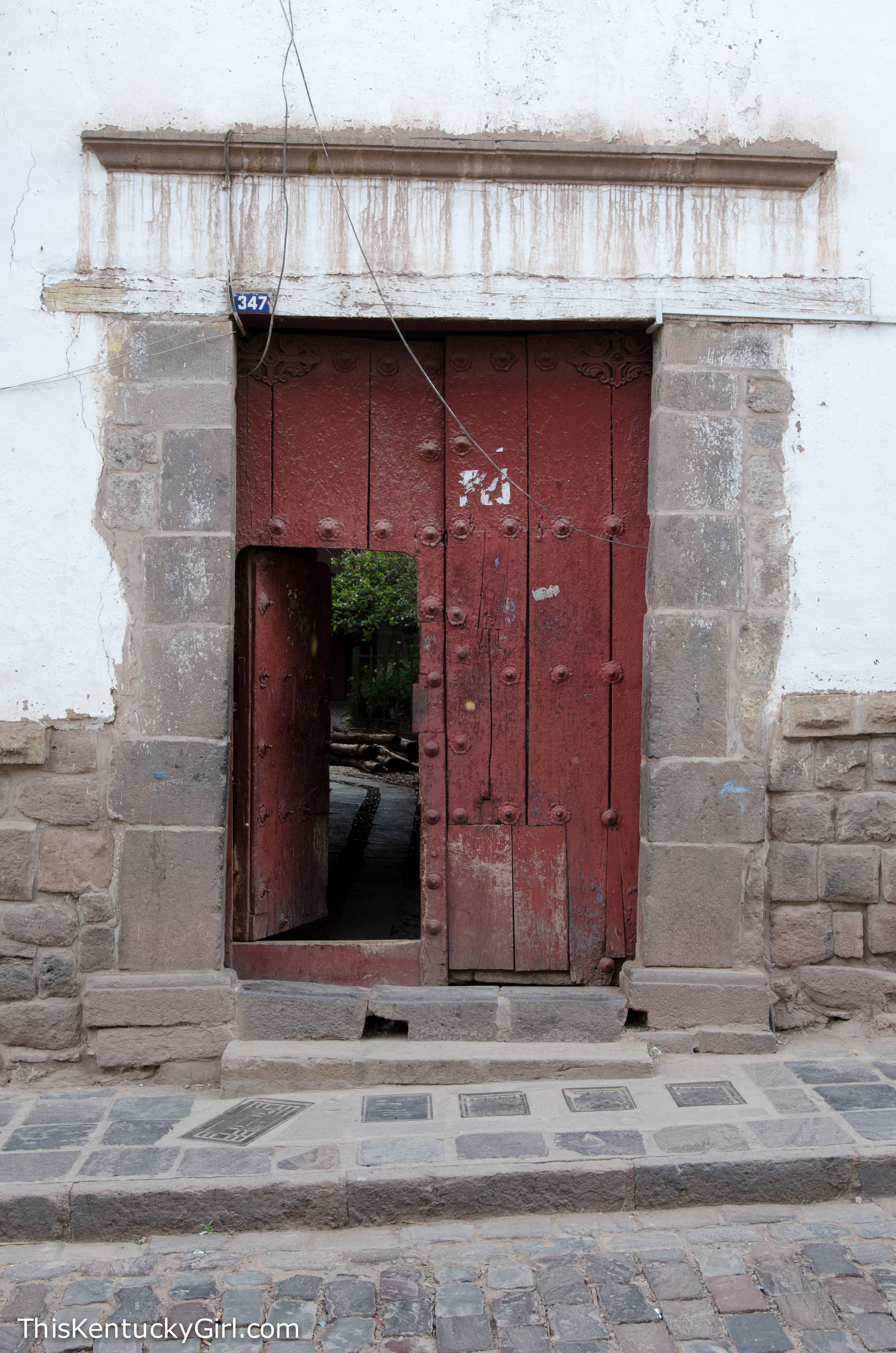

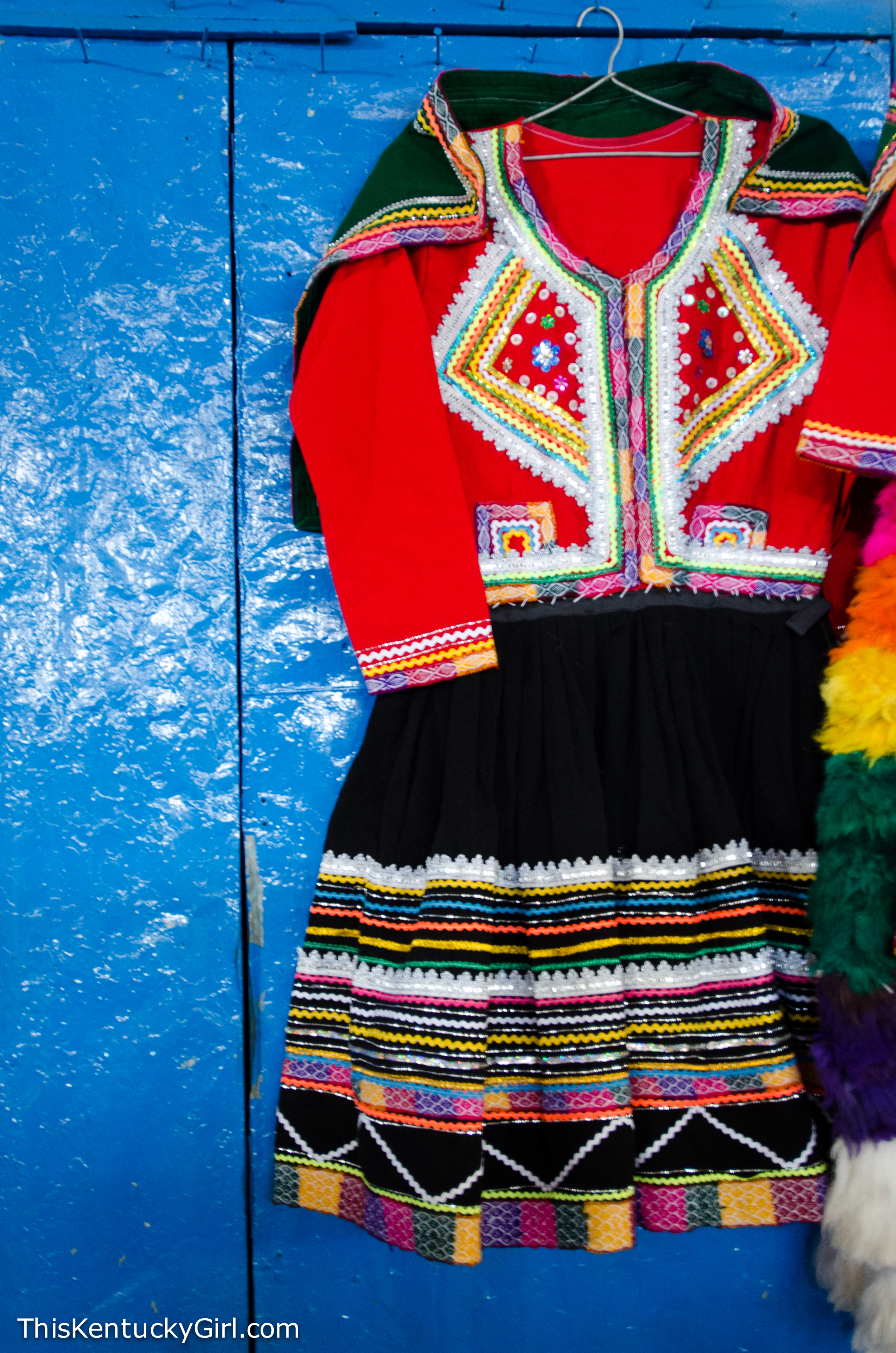
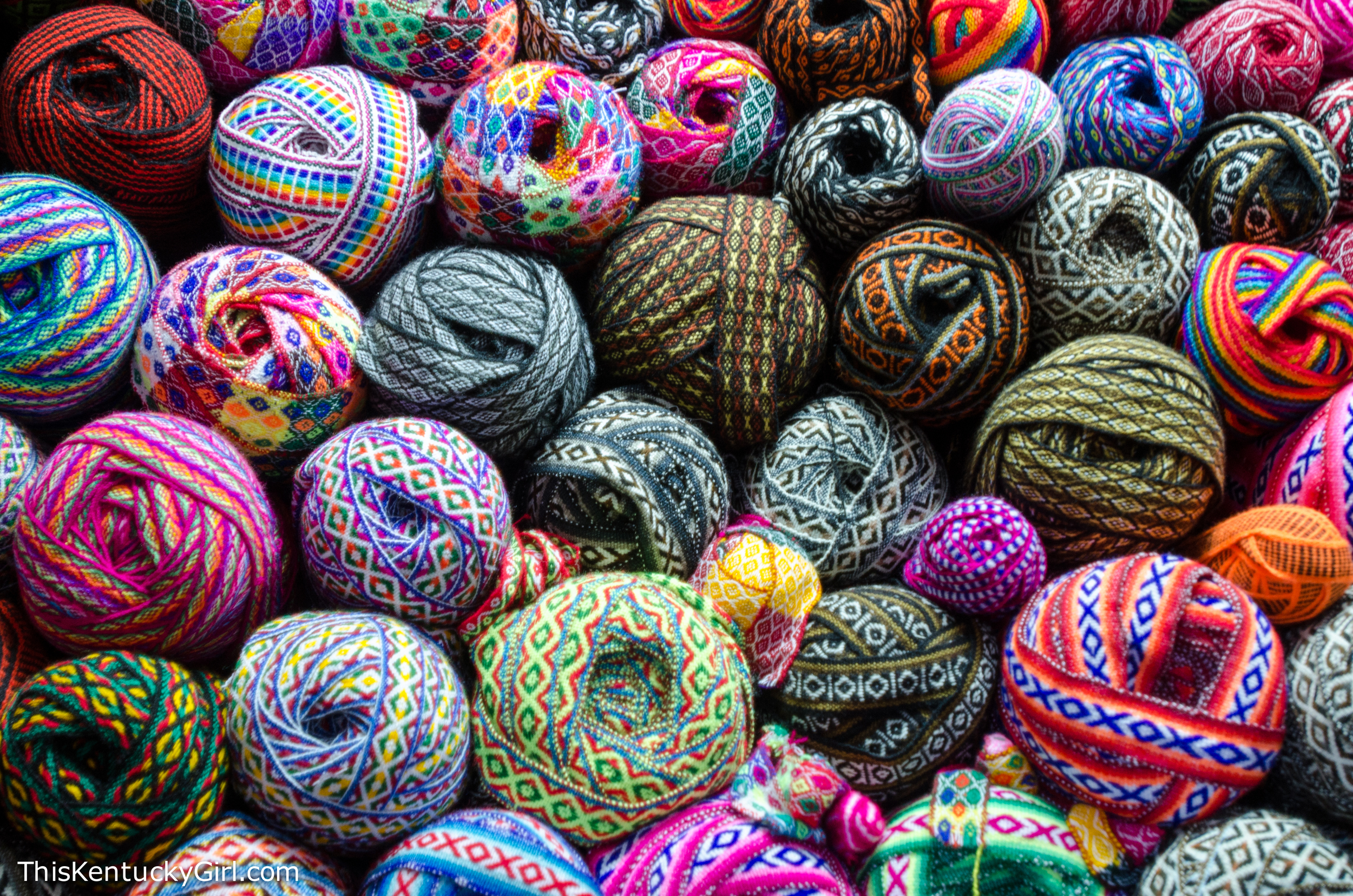
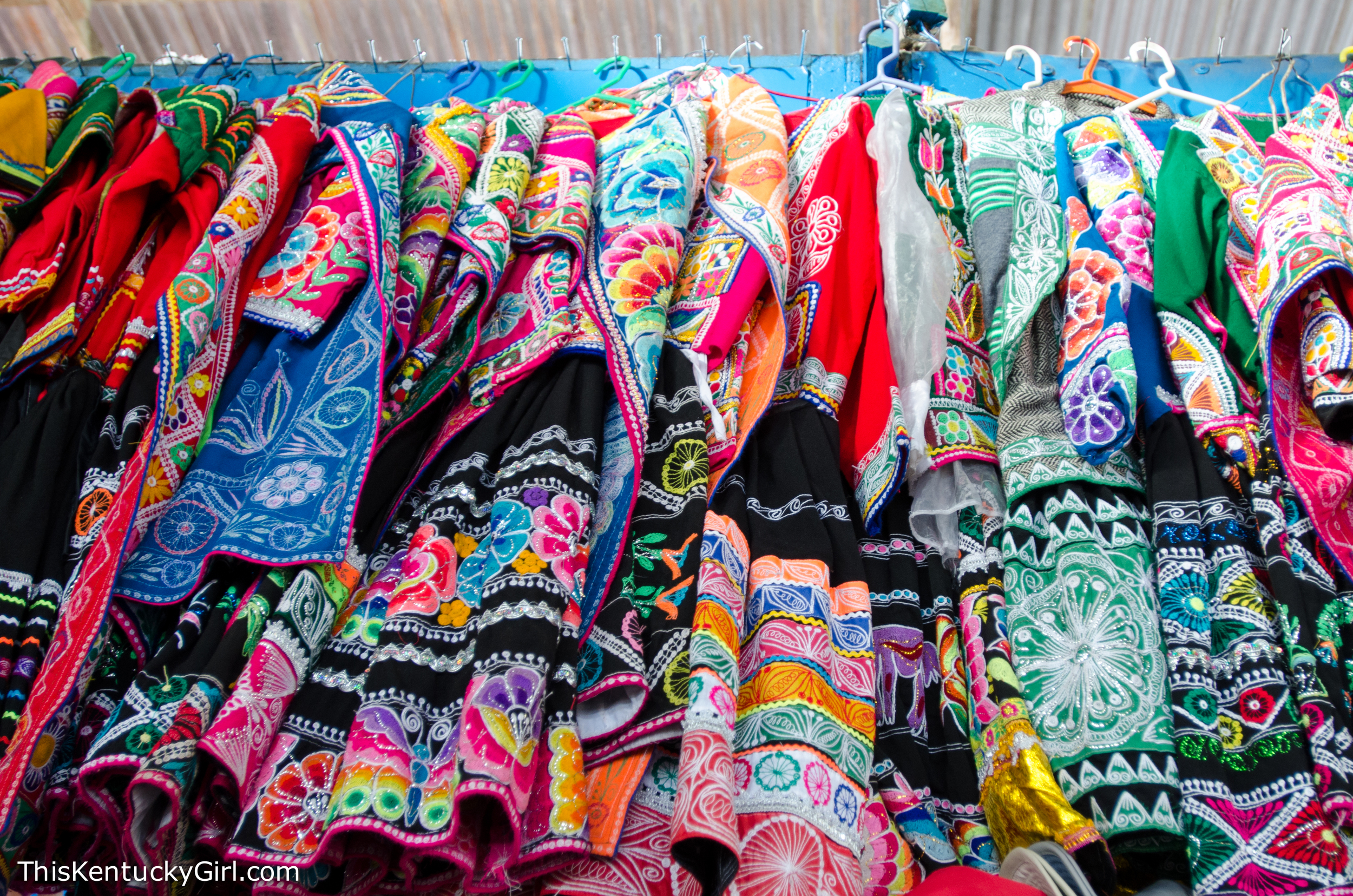
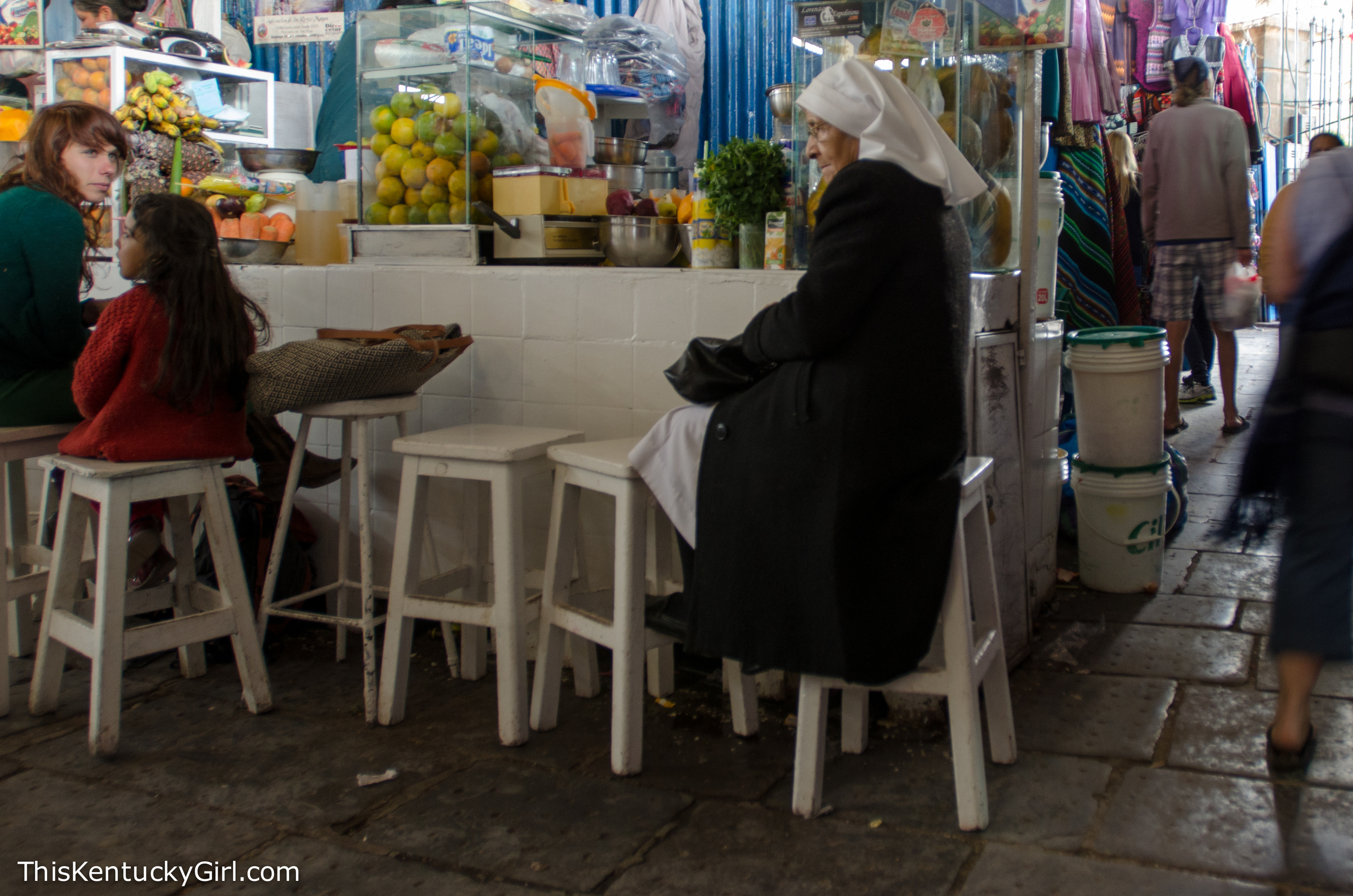
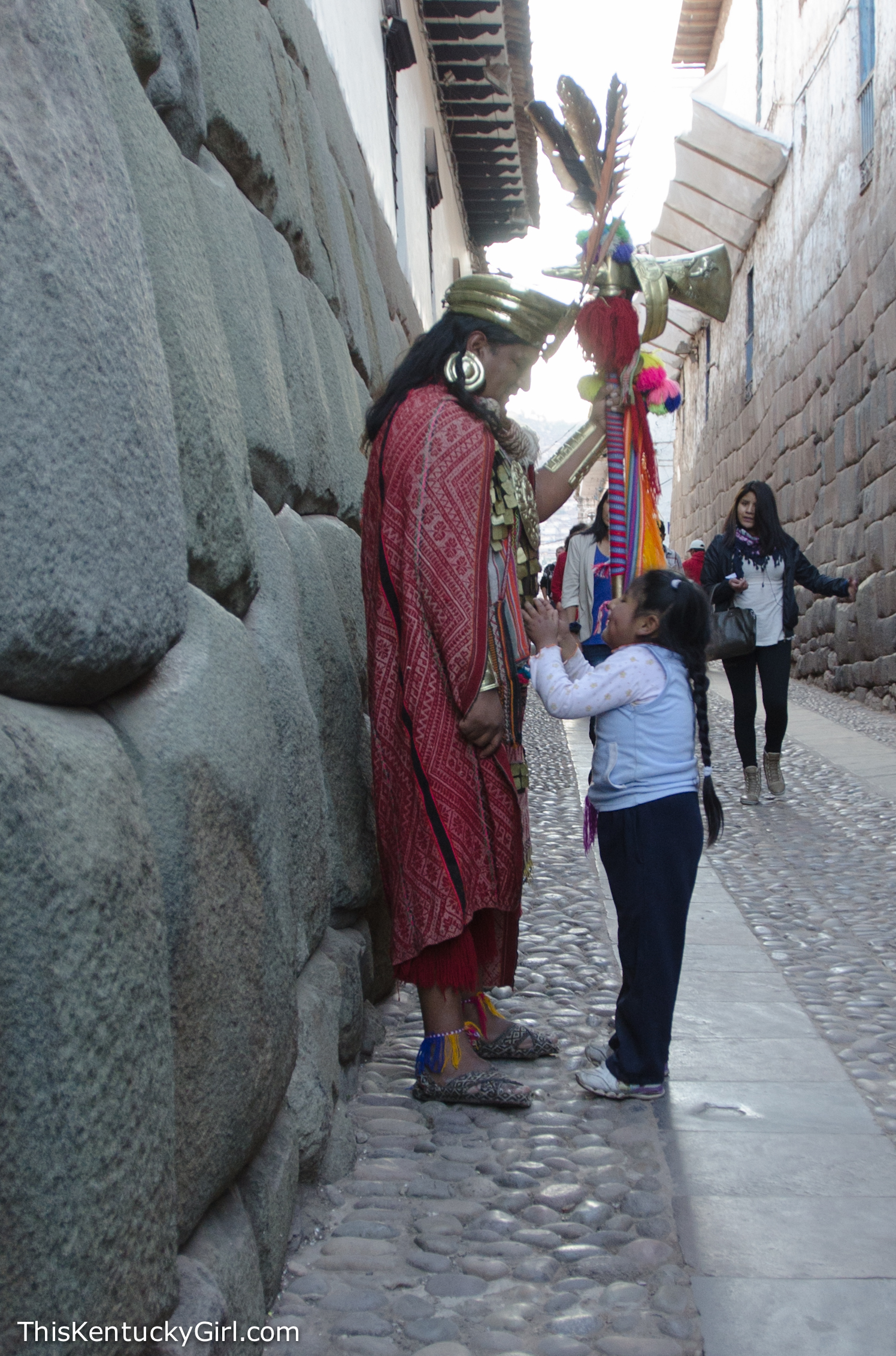
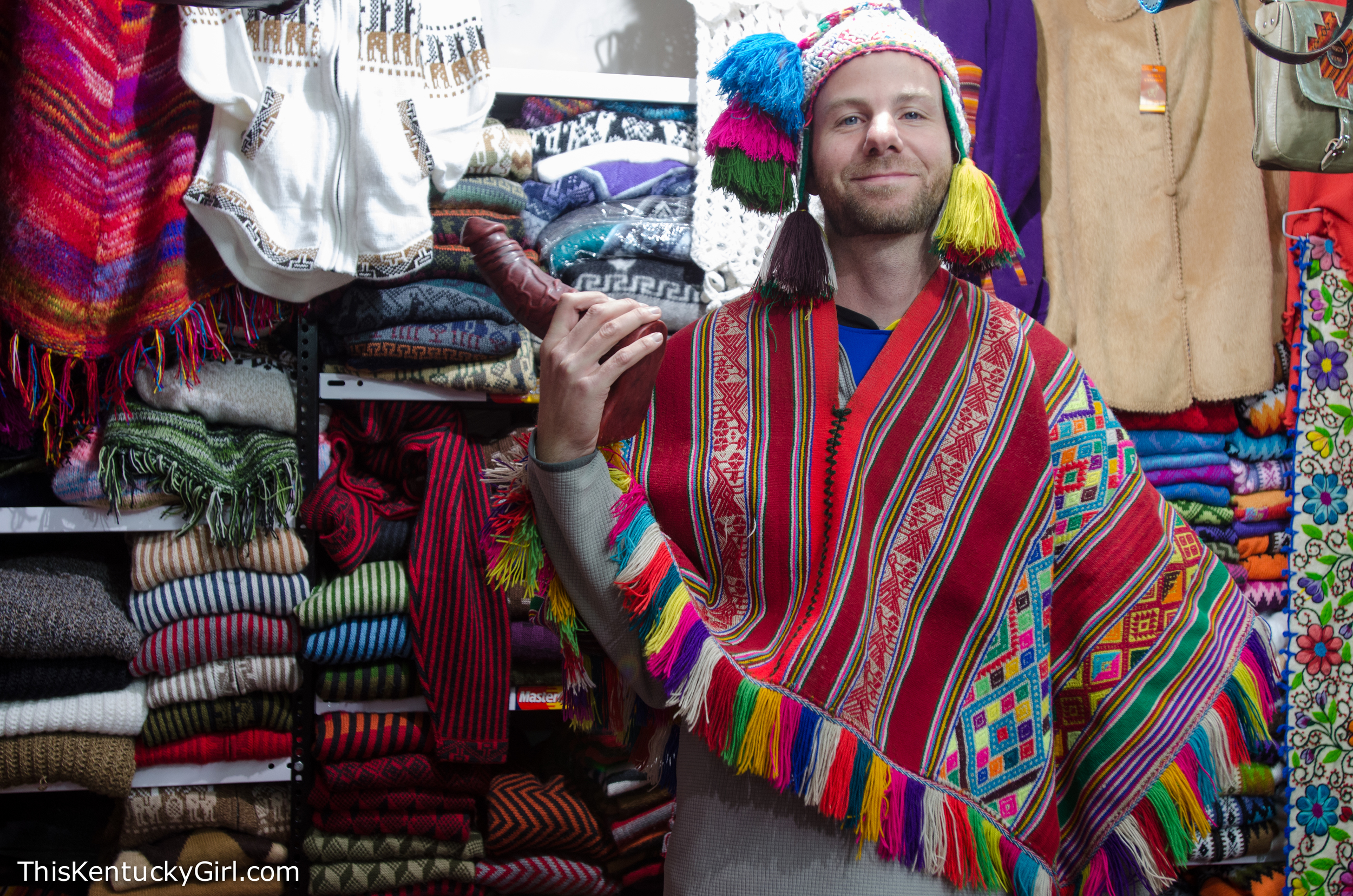
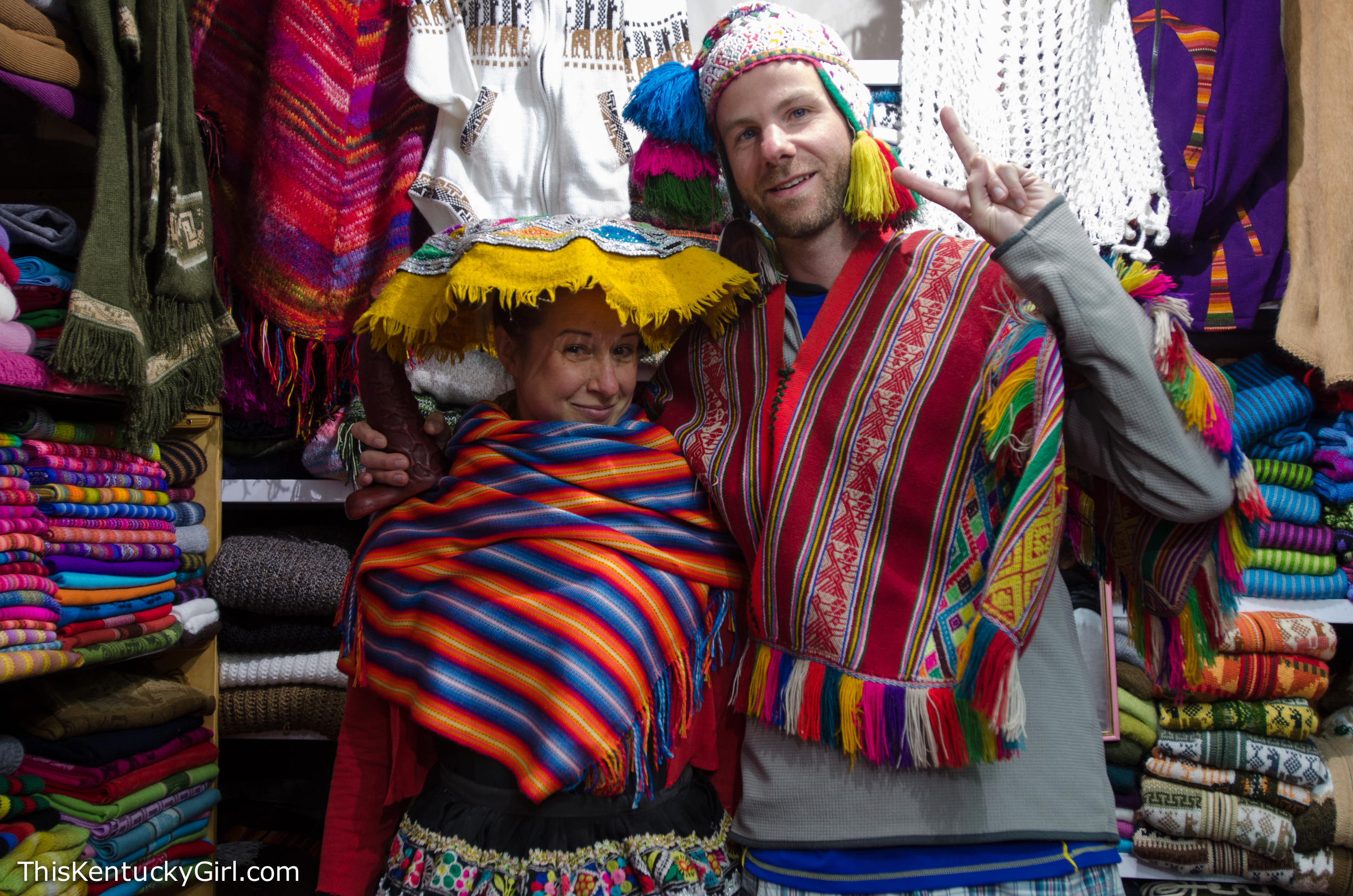
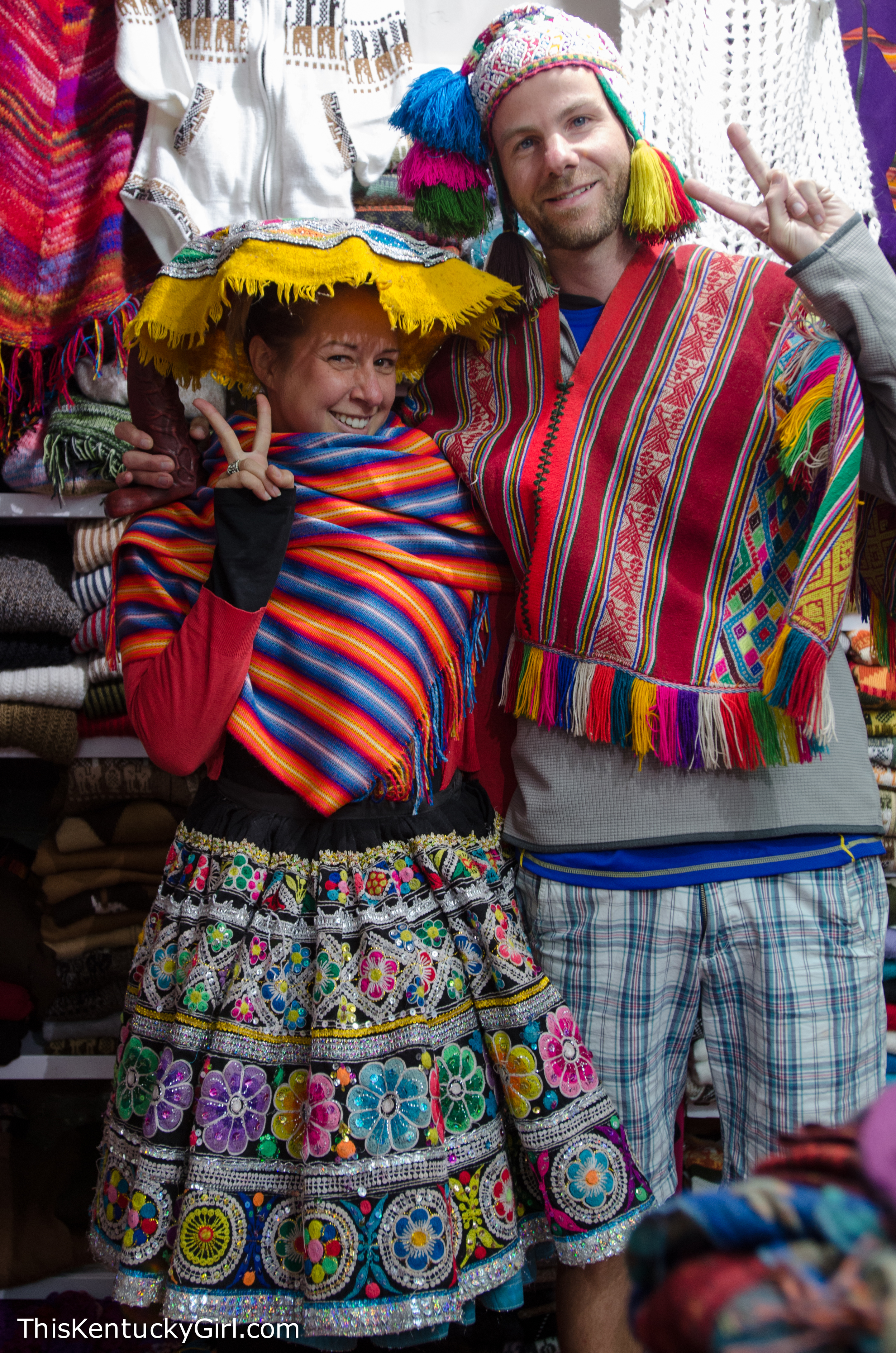
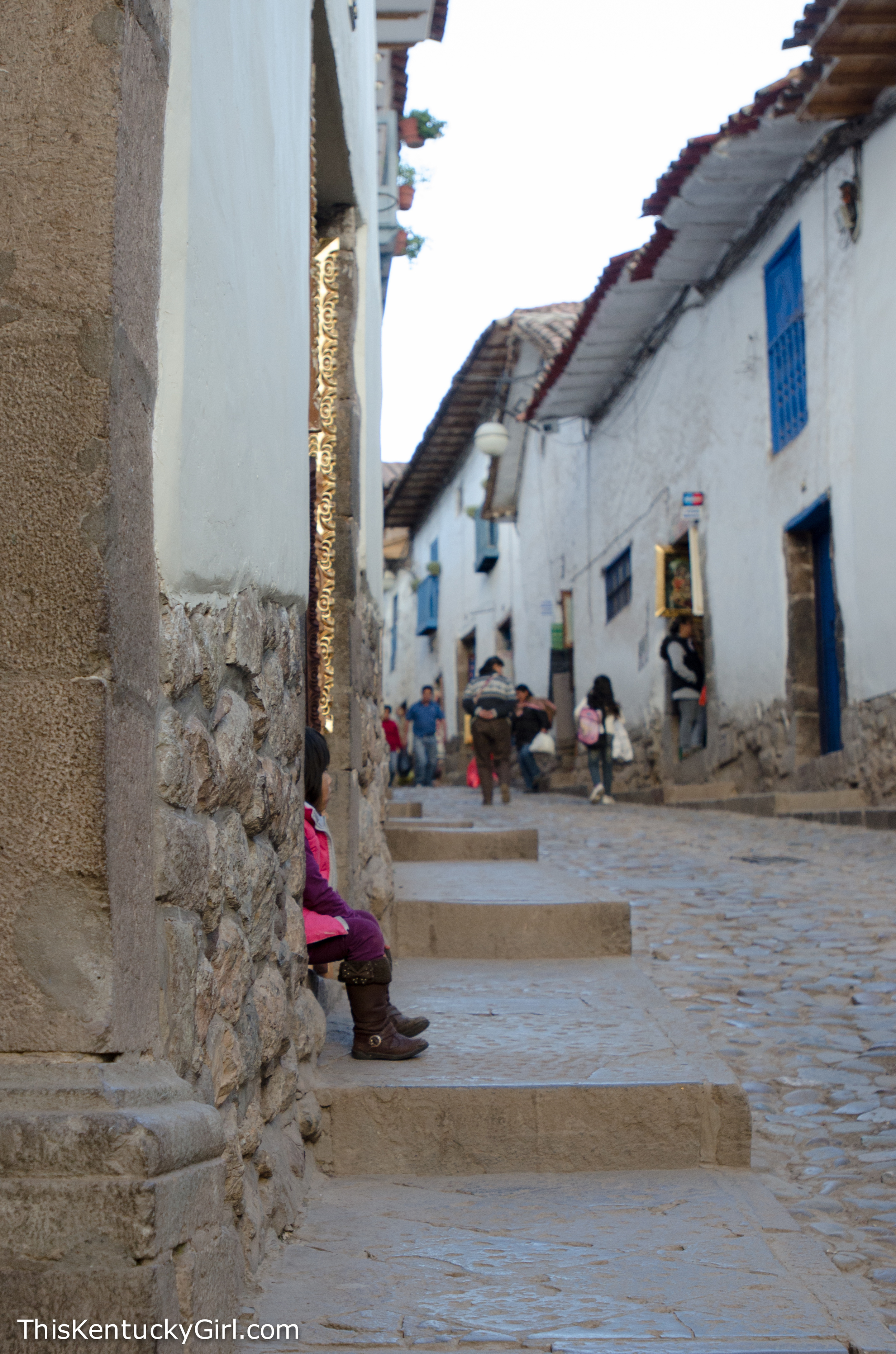
Our plan for the day was quite simply to walk around. We even paused outside of the Inca Museum debating if we wanted to go inside, until we reminded ourselves we hadn’t planned on doing anything other than walk around the town, acclimate ourselves to the altitude, and take it easy before we made our way to Machu Picchu.
Andrew and I are positive we could have saved a lot of money on this trip had we brought along a tent. However, I’m not so sure I would have been able to sleep so soundly atop a tuk-tuk in the middle of a busy afternoon in Cusco!
I barely remember taking this shot of Momma in the market. I think I shot it from the hip as we were walking through, but boy am I glad I took it. I really love it. What you can’t see is that she’s looking out of one of the doorways of the market (which lit her perfectly) to the street surrounding. I don’t know what she’s looking at, but I love that I caught her observing Cusco while so many people are going about their business around her.
I could not get enough of the colorful clothing. If I didn’t have enough to hang up on walls I don’t have, I would have gotten one of these beautiful dresses just to hang up! They really are works of art! (I’m also still kicking myself for not getting an embroidered hat in Cabanaconde a few days ago. Again, just to hang up on my wall as art. I should have known better to pass it up when I did…
While we were waiting on Momma to buy something (again) I couldn’t take my eyes off of this nun. She didn’t move from this position, maybe didn’t even look at something else the entire time we were waiting. I wondered what was on her mind and shot this picture from the hip as well, probably talking to Mom at the same time about what color tablecloth or blanket she should get.
And then, a little dress-up action happened.
We were on our way back to our hotel when Mom got tricked into going into a shop along the way. While she was trying to decide what color or what size or what to get in general, one of the shopkeepers dragged me and Andrew in and proceeded to play dress up. And then for good measure, stuck a giant penis in Andrew’s hand that he seemed to grow quite fond of. (I mean seriously, why is it in every picture?) Putting these pictures on the blog is likely to lead to me receiving an email from my Mom. “I can’t believe you posted those pictures!” Well, believe it Momma! I did! And don’t tell me to take them down, because chances are I won’t have any internet to do so later! (Love you!)
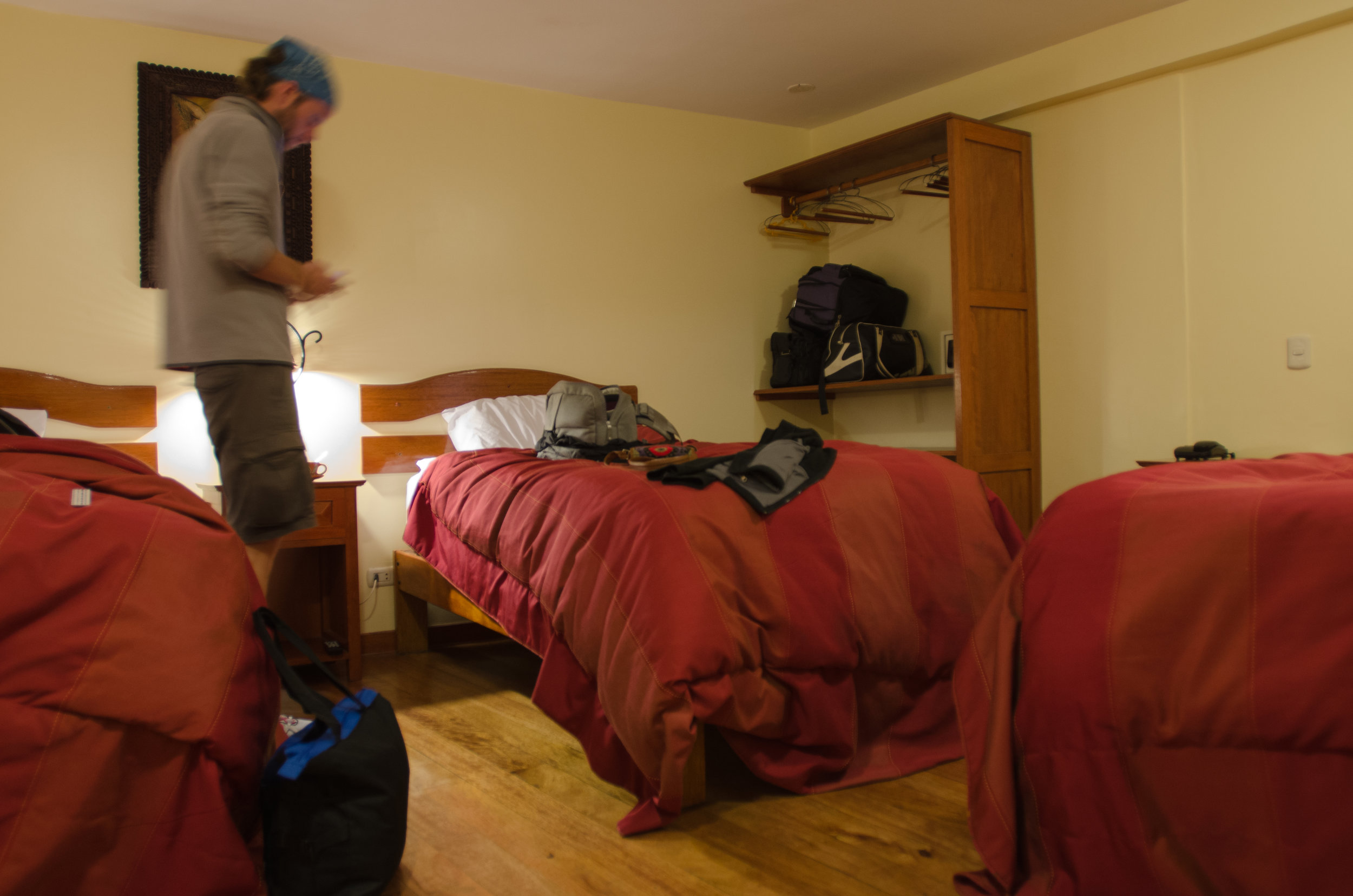

Day 367: Lake Titicaca
Lake Titicaca is the largest lake in South America. According to our guide for the afternoon, 60% of it is Peruvian and 40% of it is Bolivian. However, he assured us if we were to find ourselves on the Bolivian side of the lake, we would be told that 60% is Bolivian. While the lake itself provides some beautiful scenery, its popularity stems more from the people who live on the lake. Tours go daily out to man-made islands, known as the Uros Islands, and the natural islands, Taquile and Amanatani (if you have time). We opted for a day tour to see one of the Uros Islands and Taquile. It was interesting – a little Disneyland-esque at times, but beautiful and I was finally able to have some fun with my Polaroid camera again! Which may have been my favorite part!
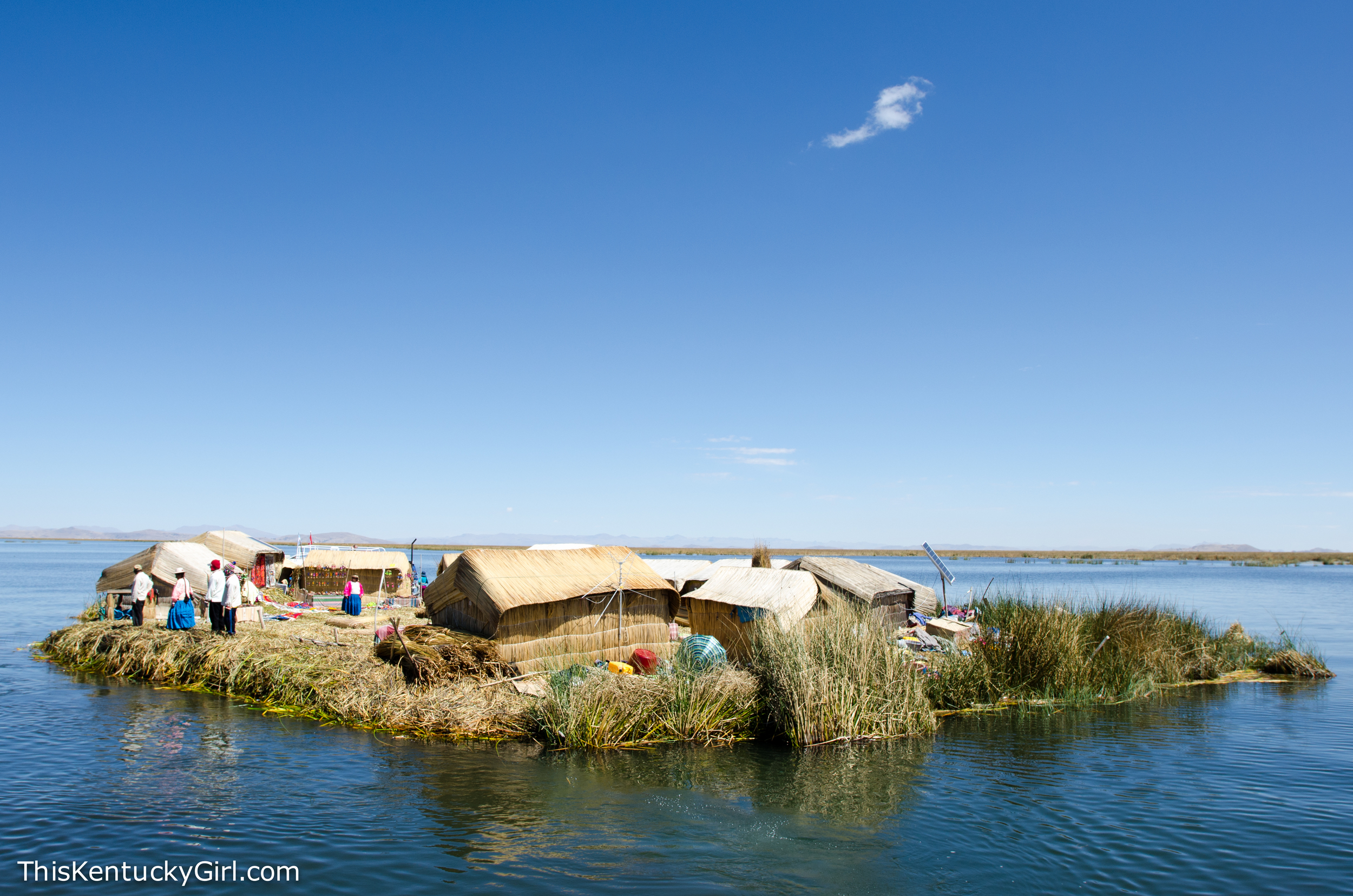
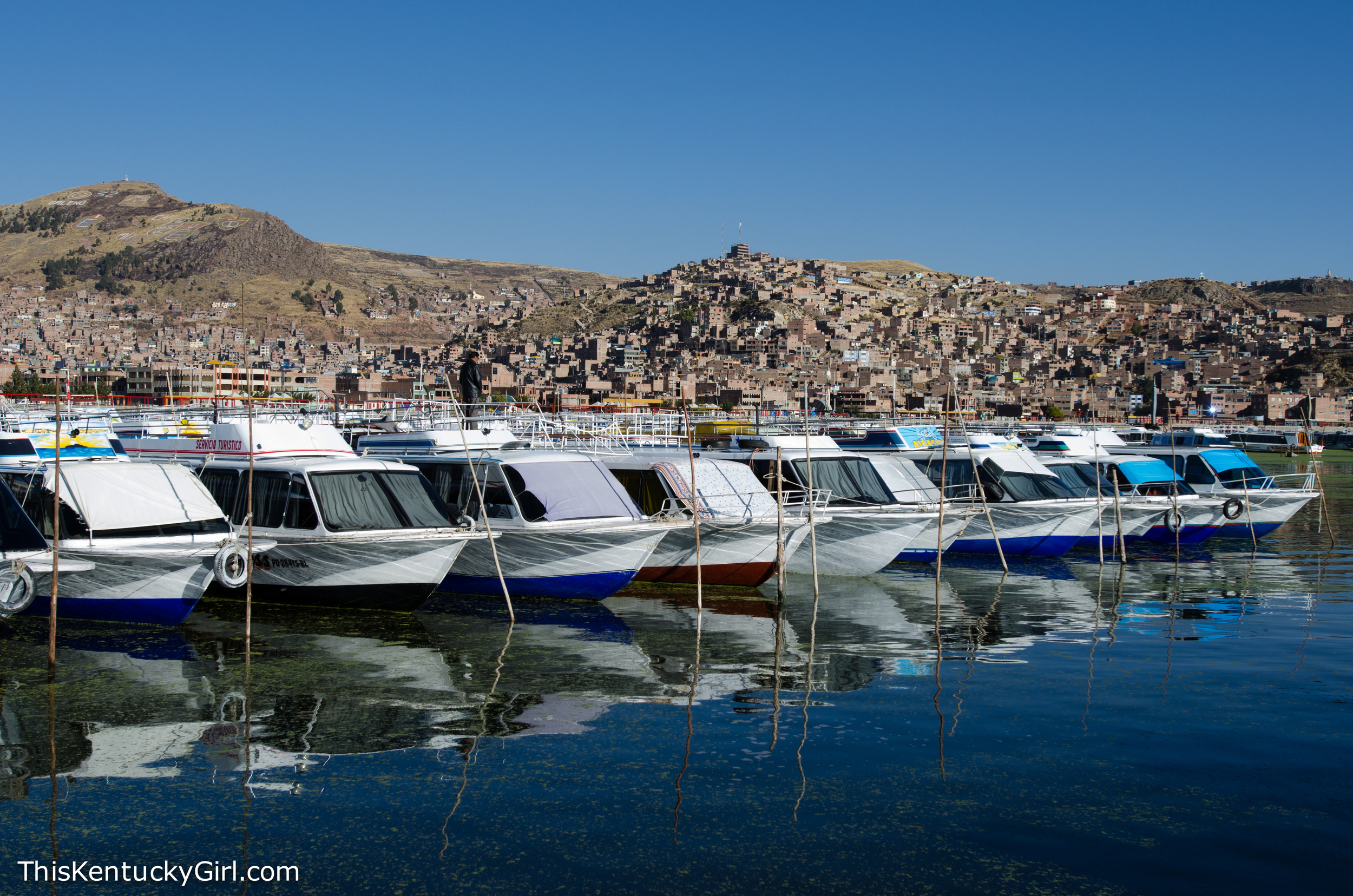
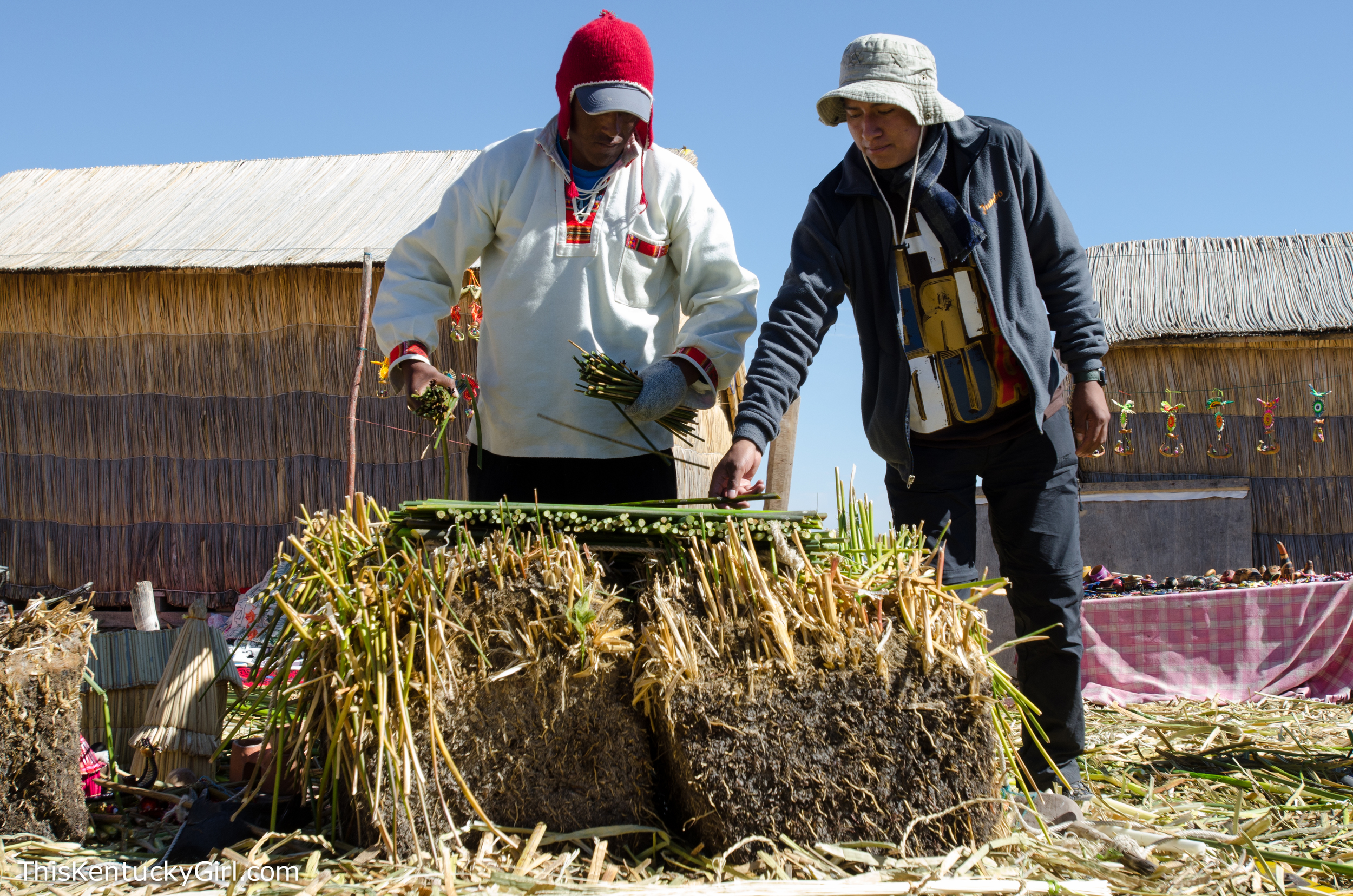
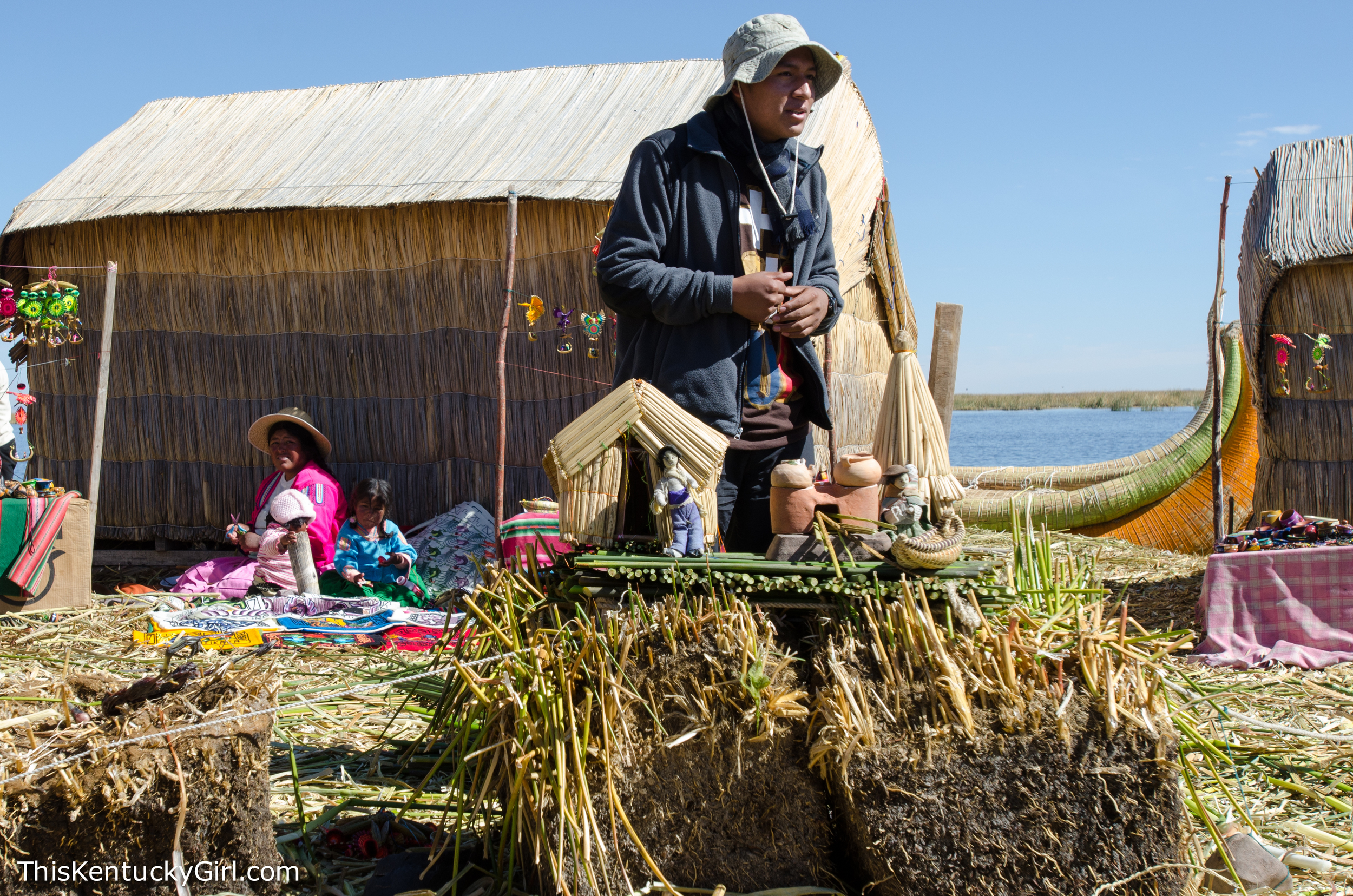
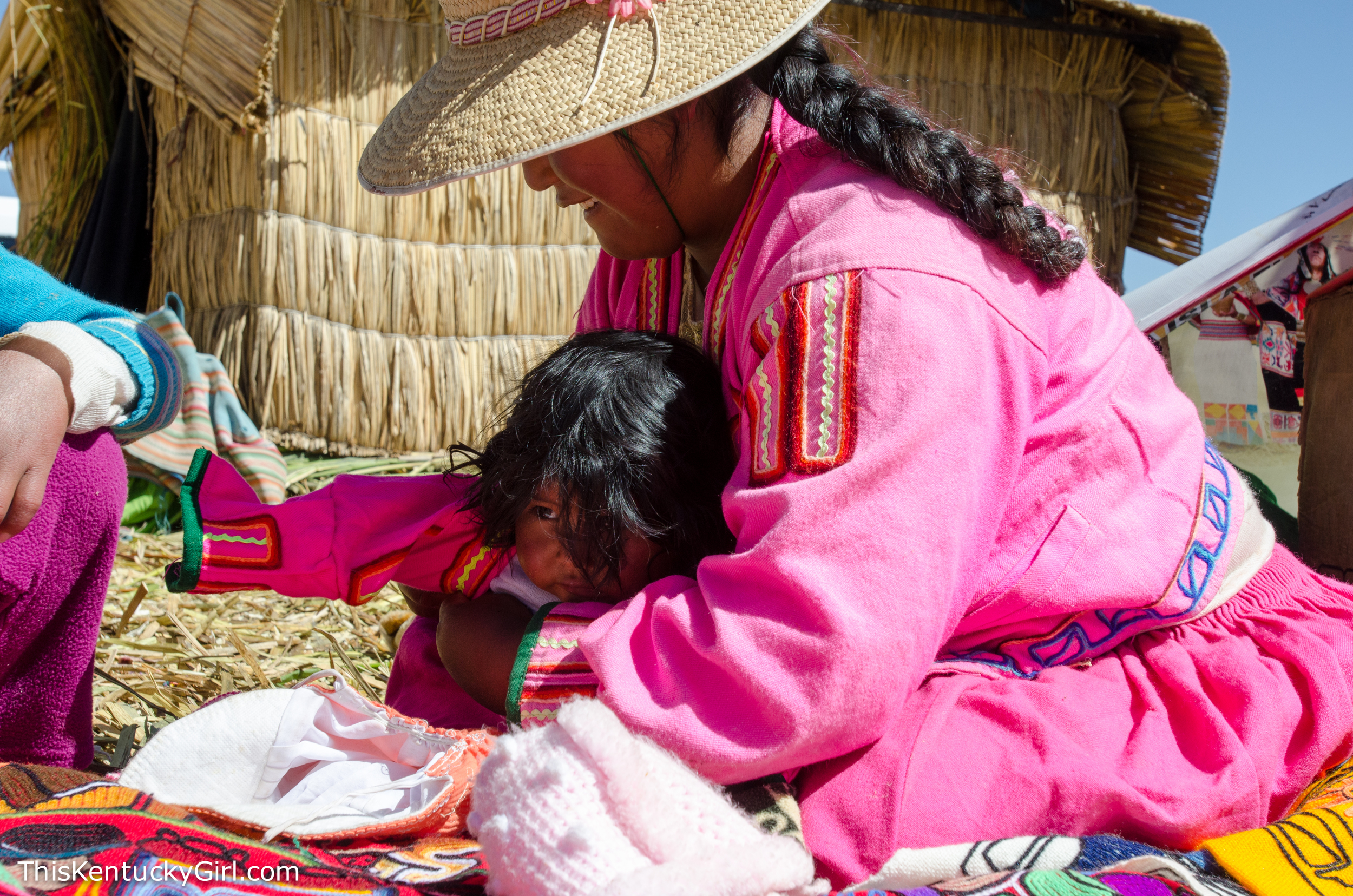
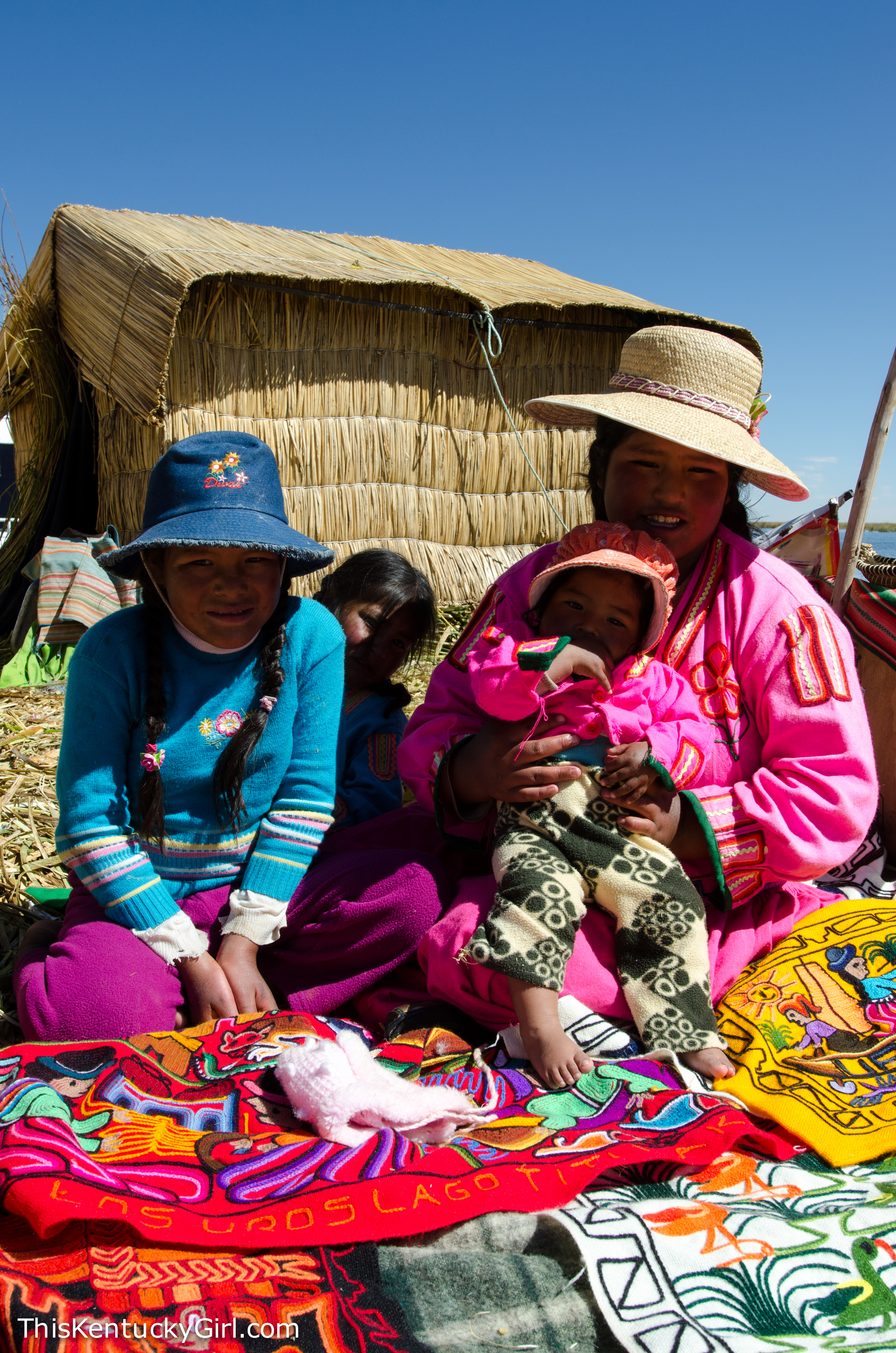
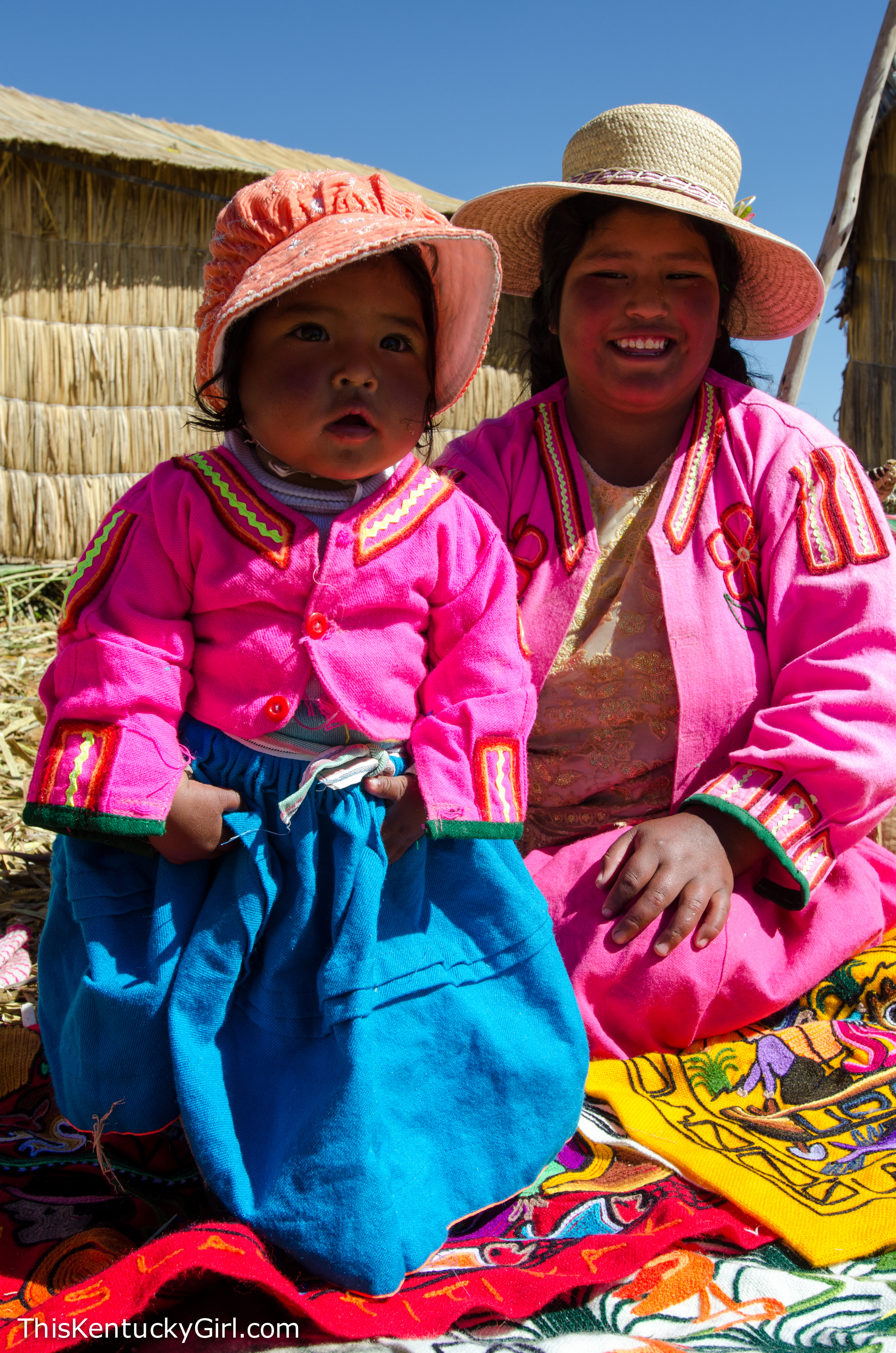
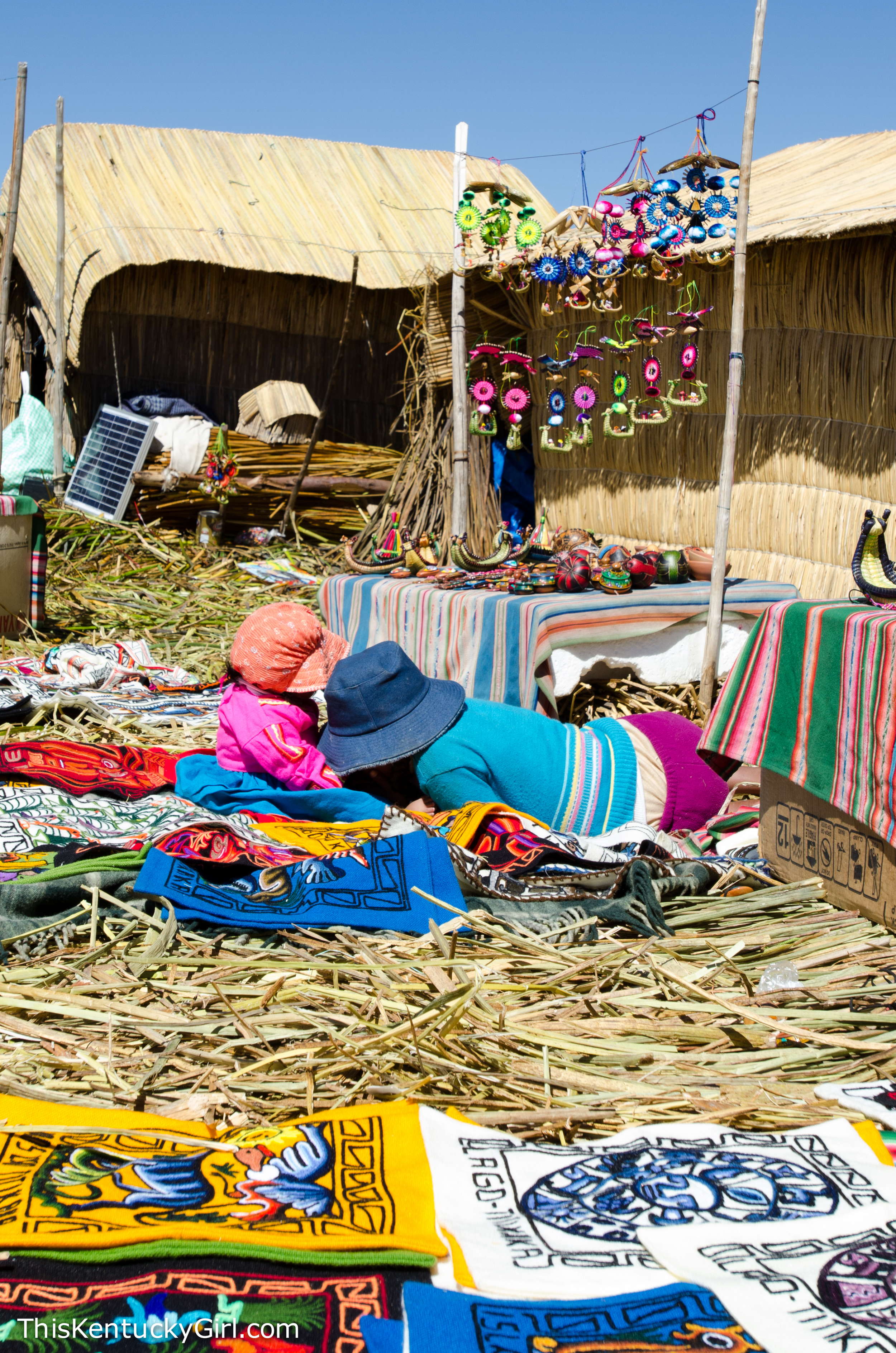
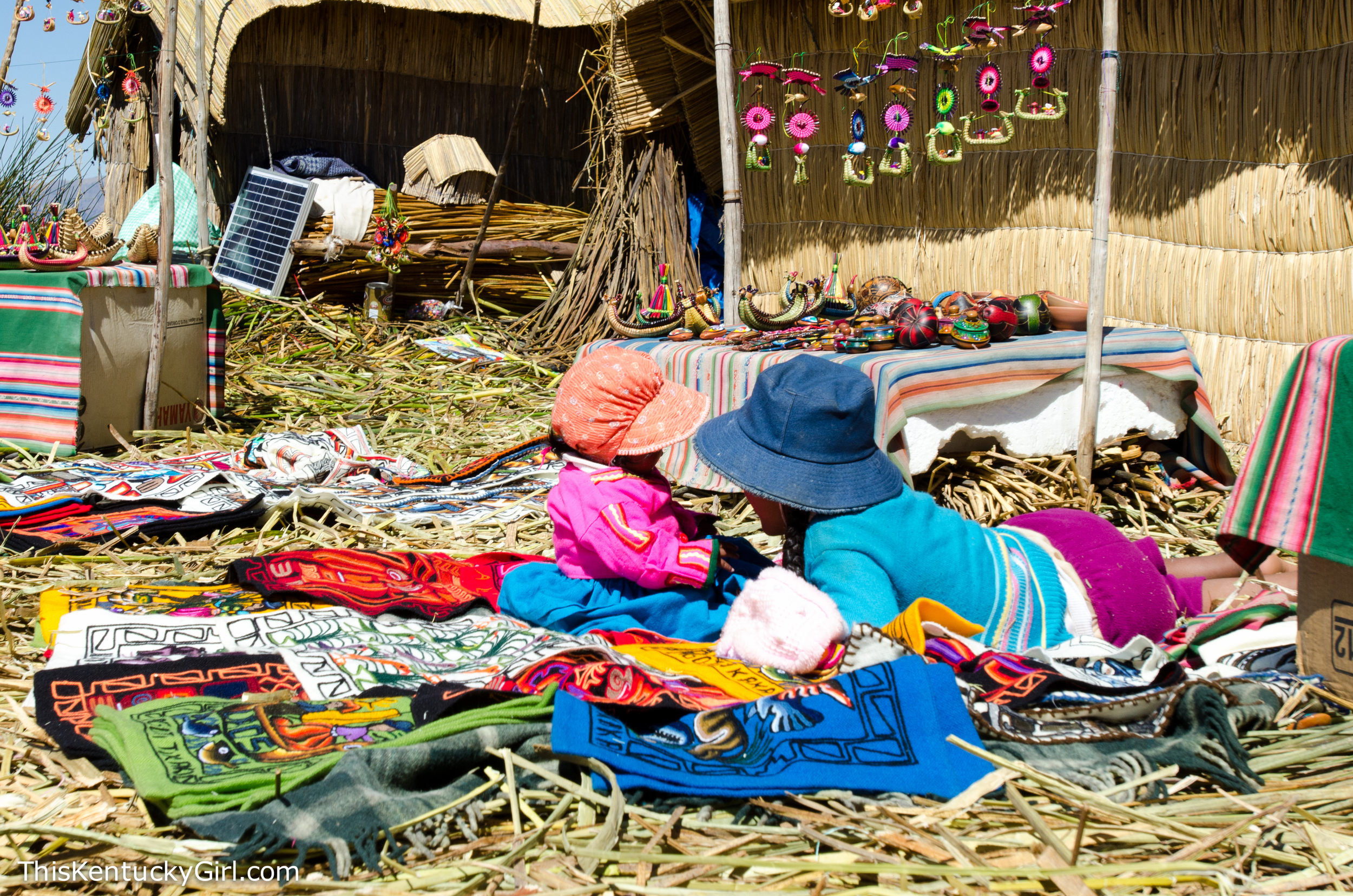
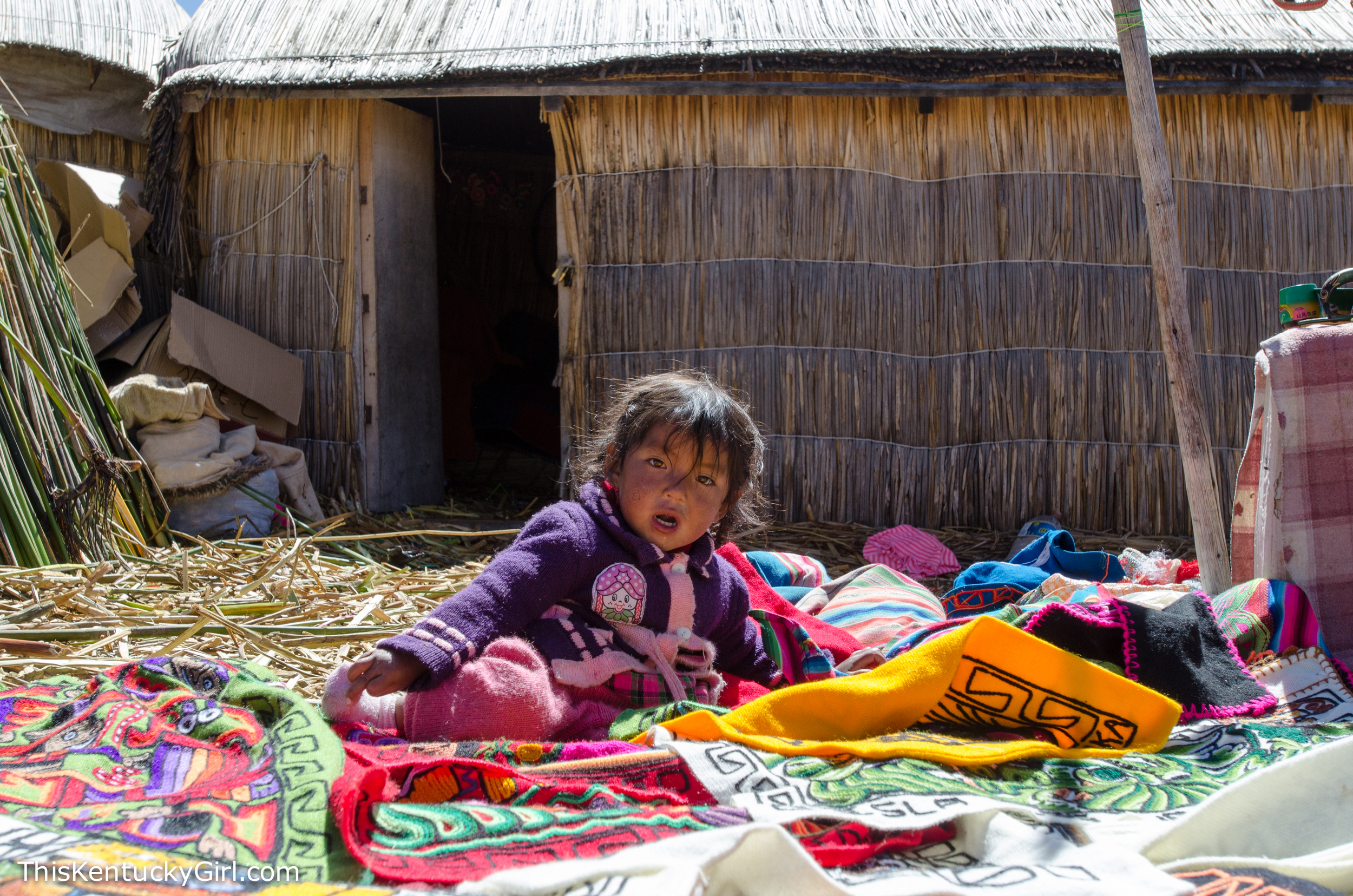
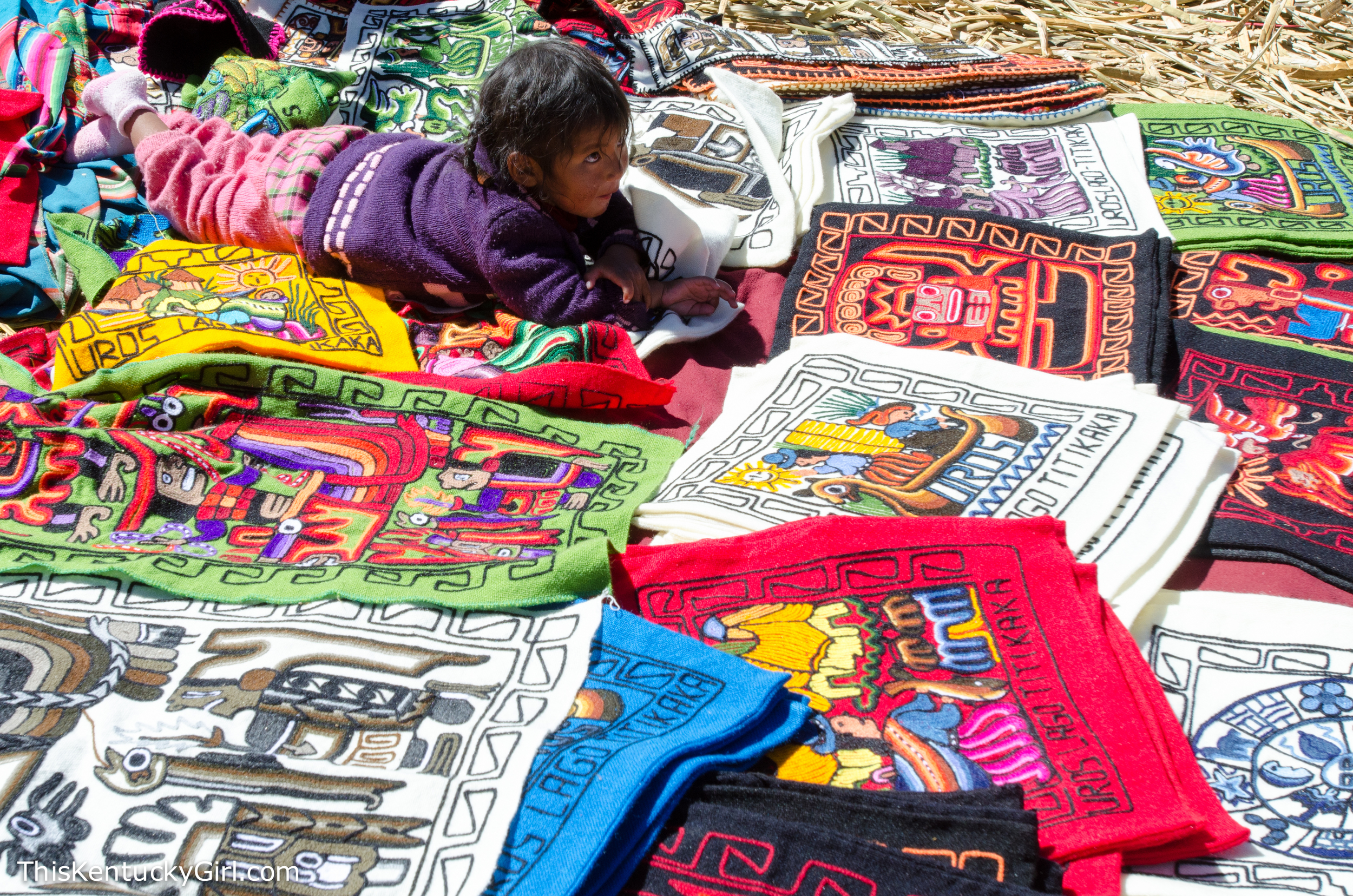
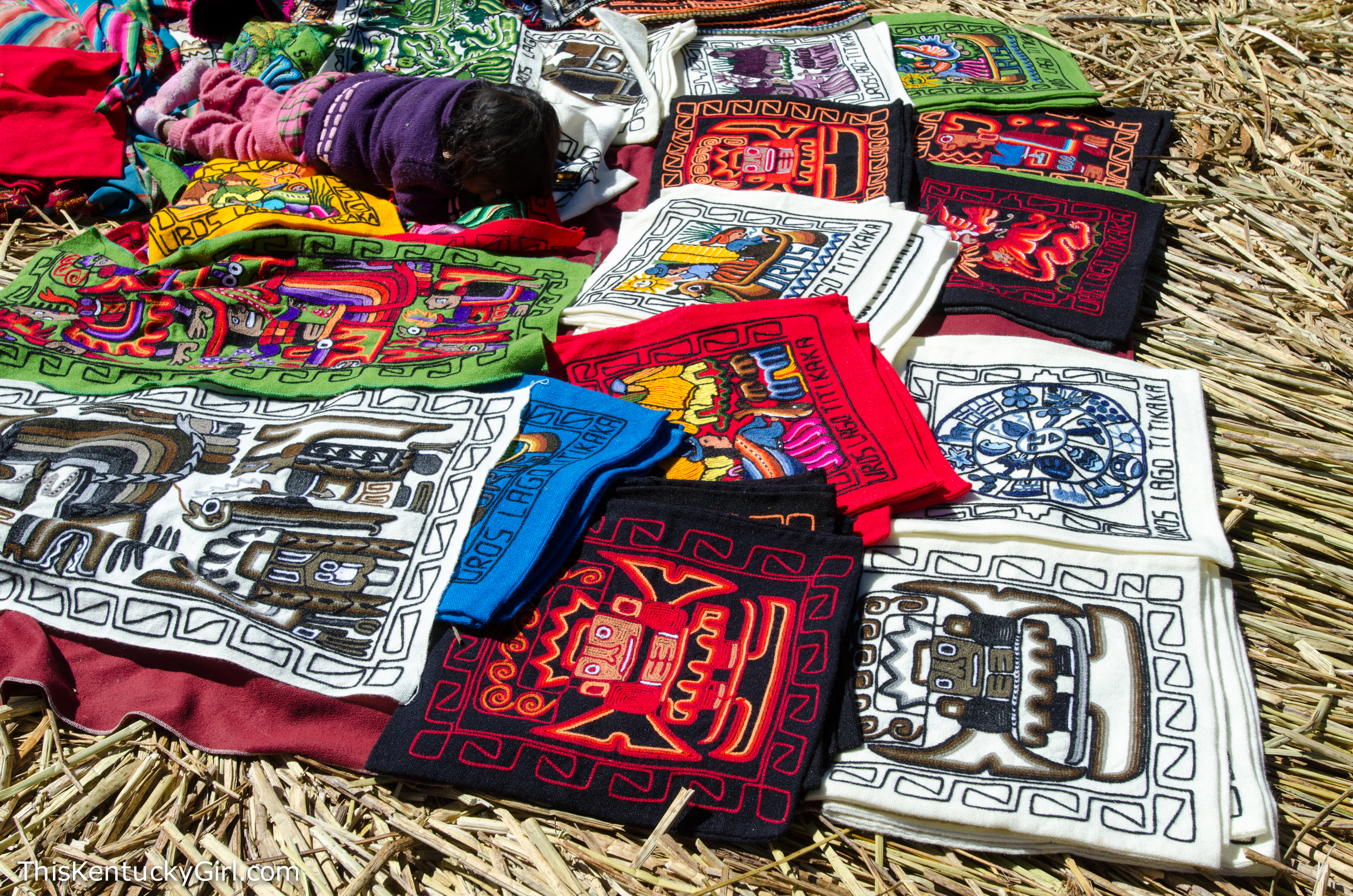
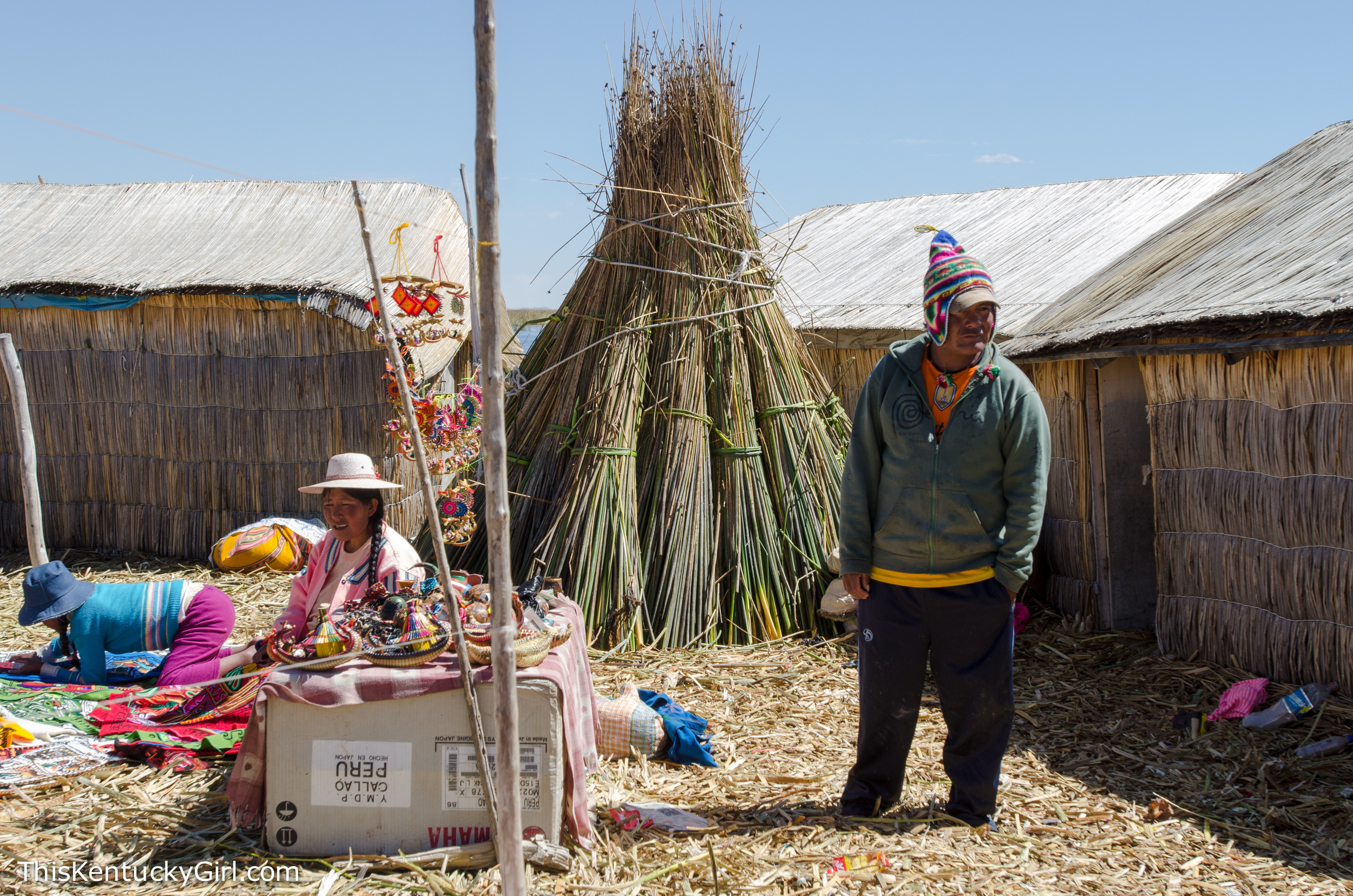
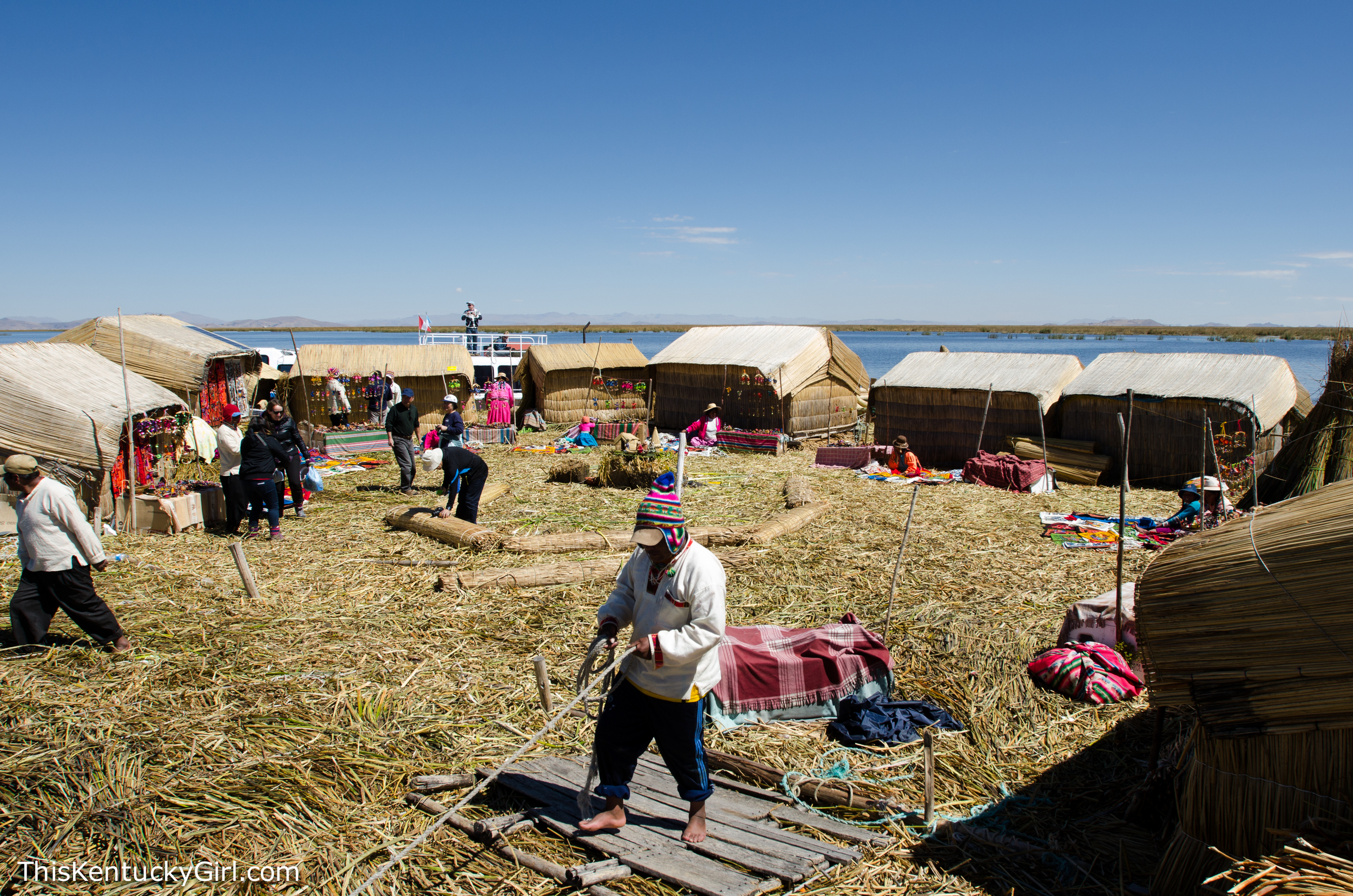
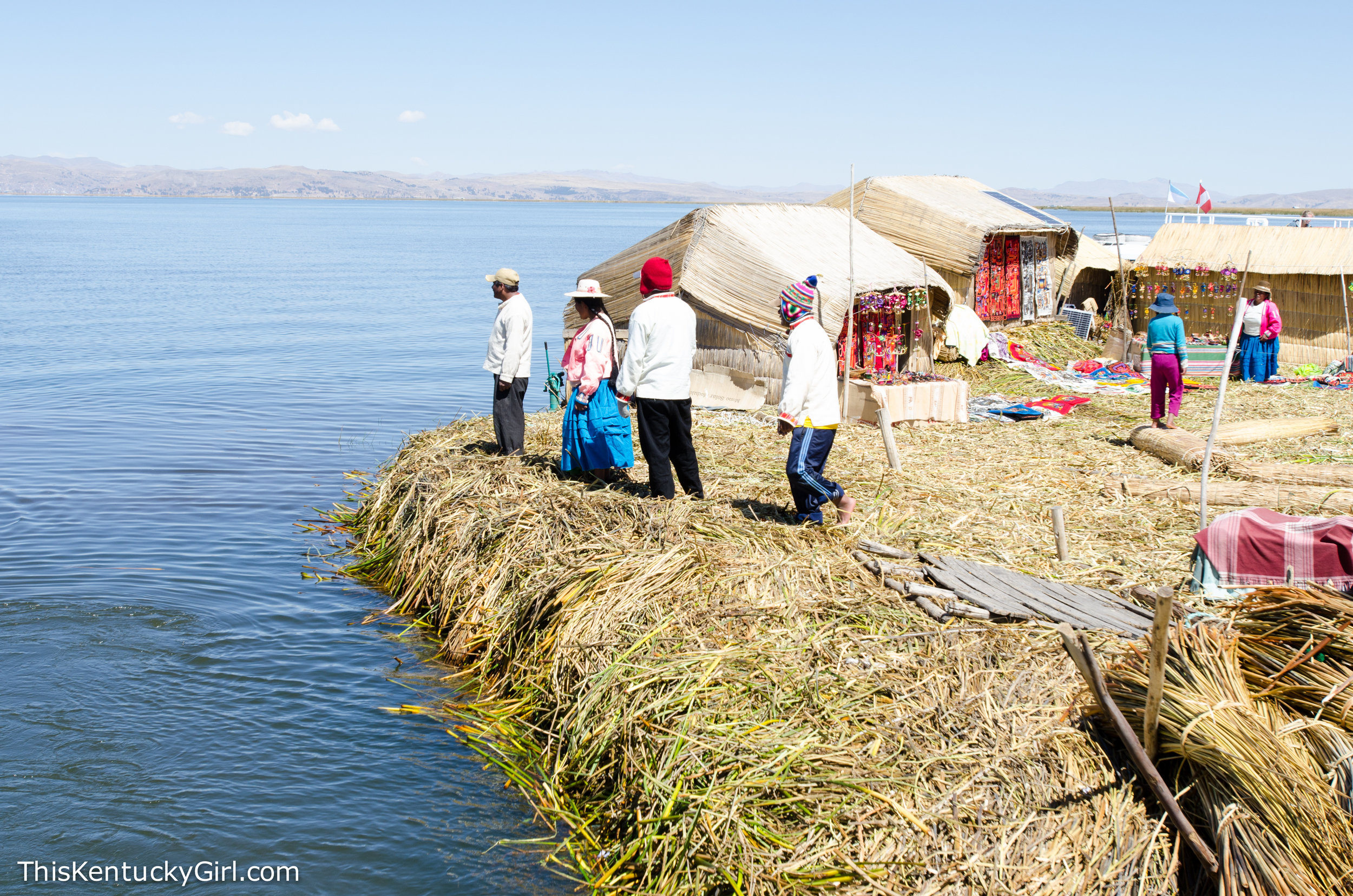
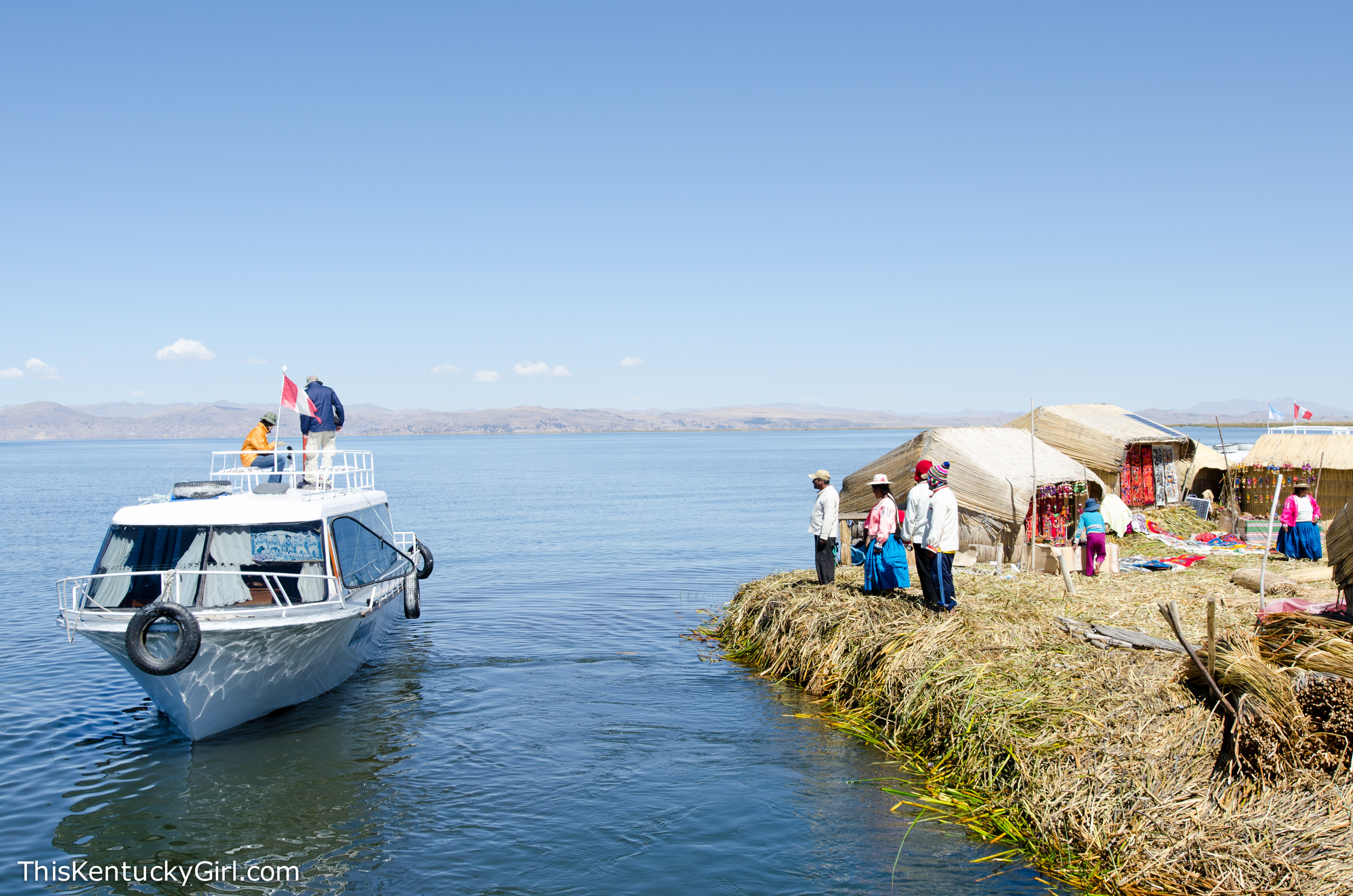
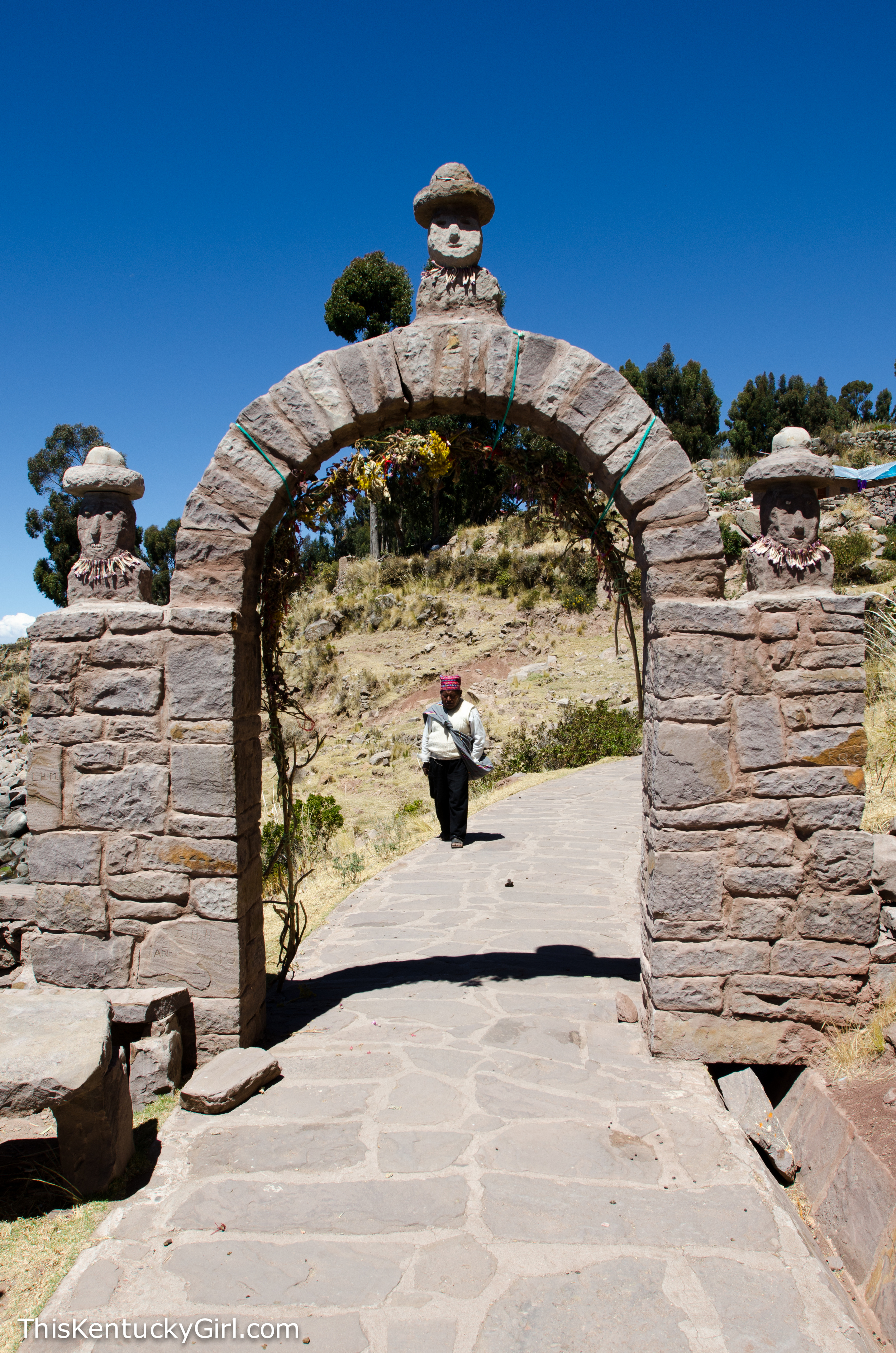
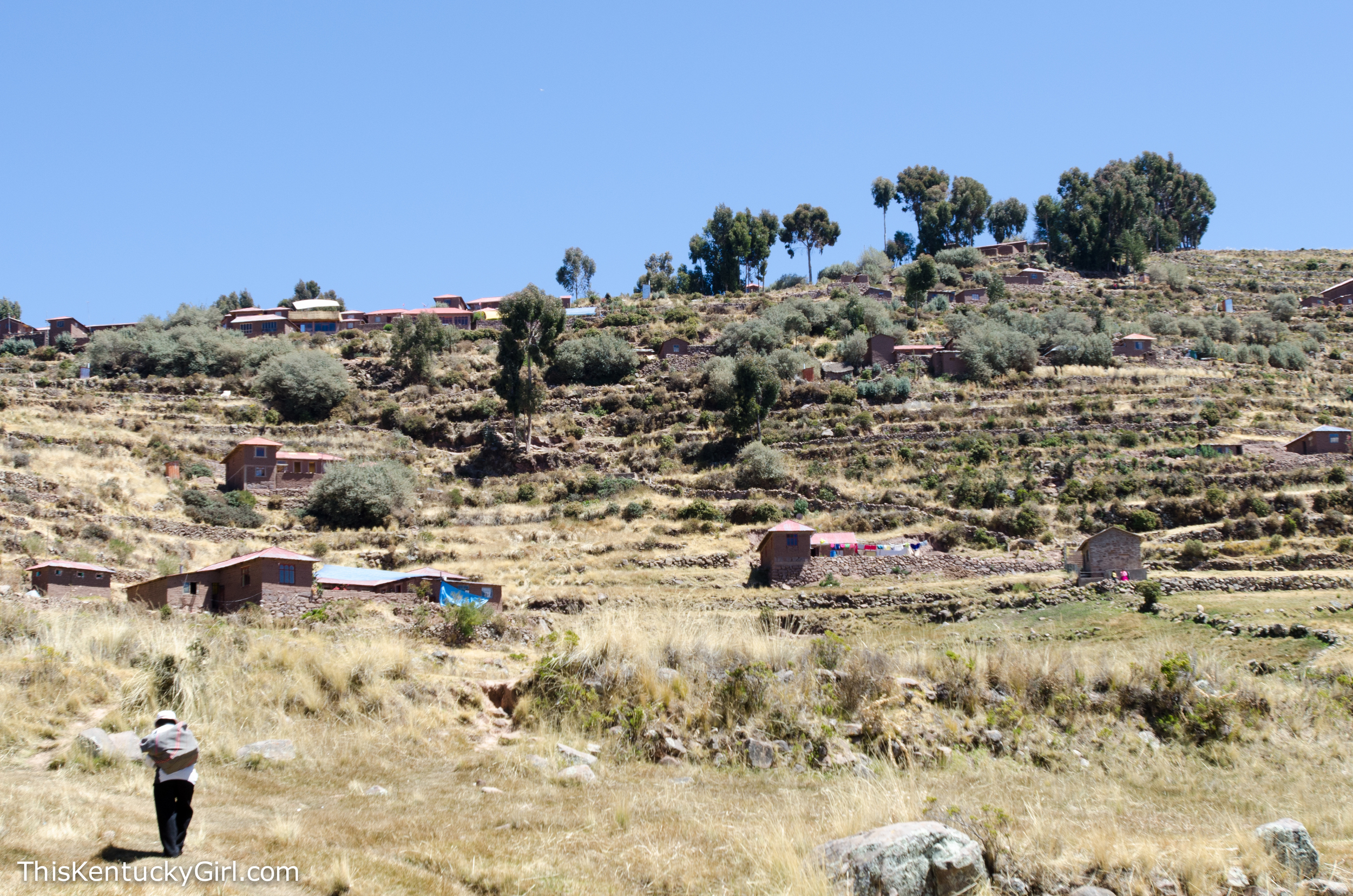
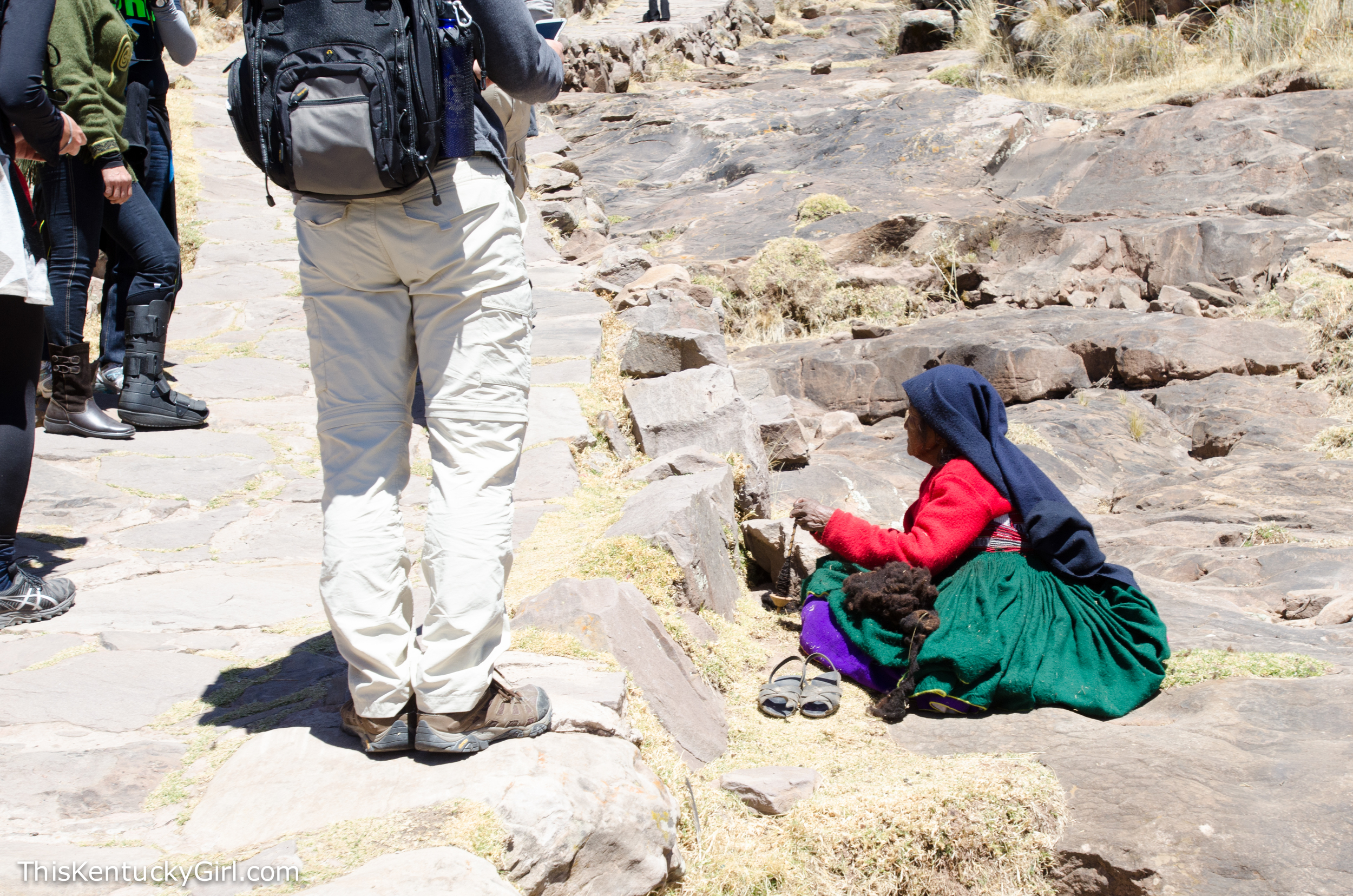
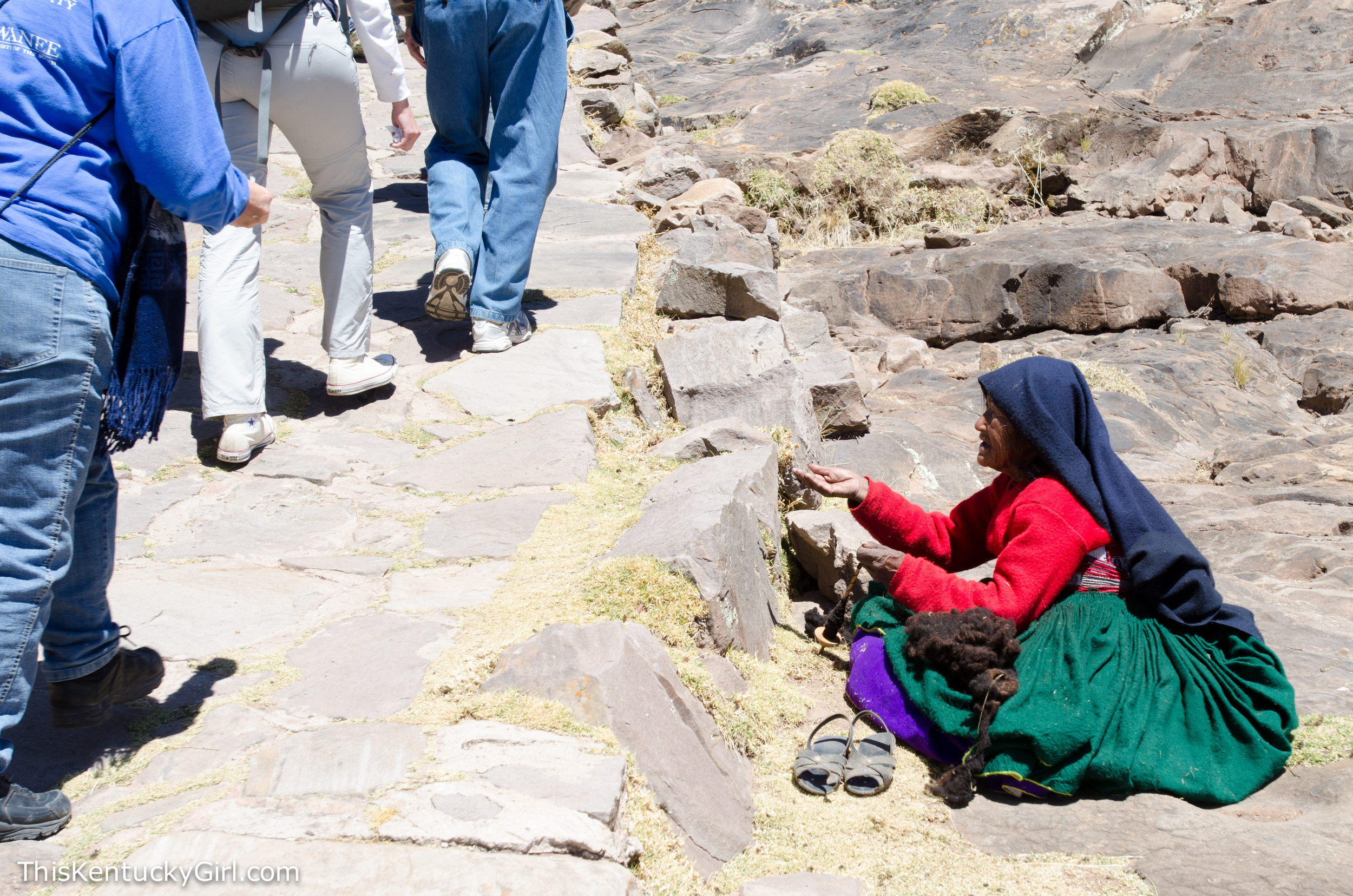
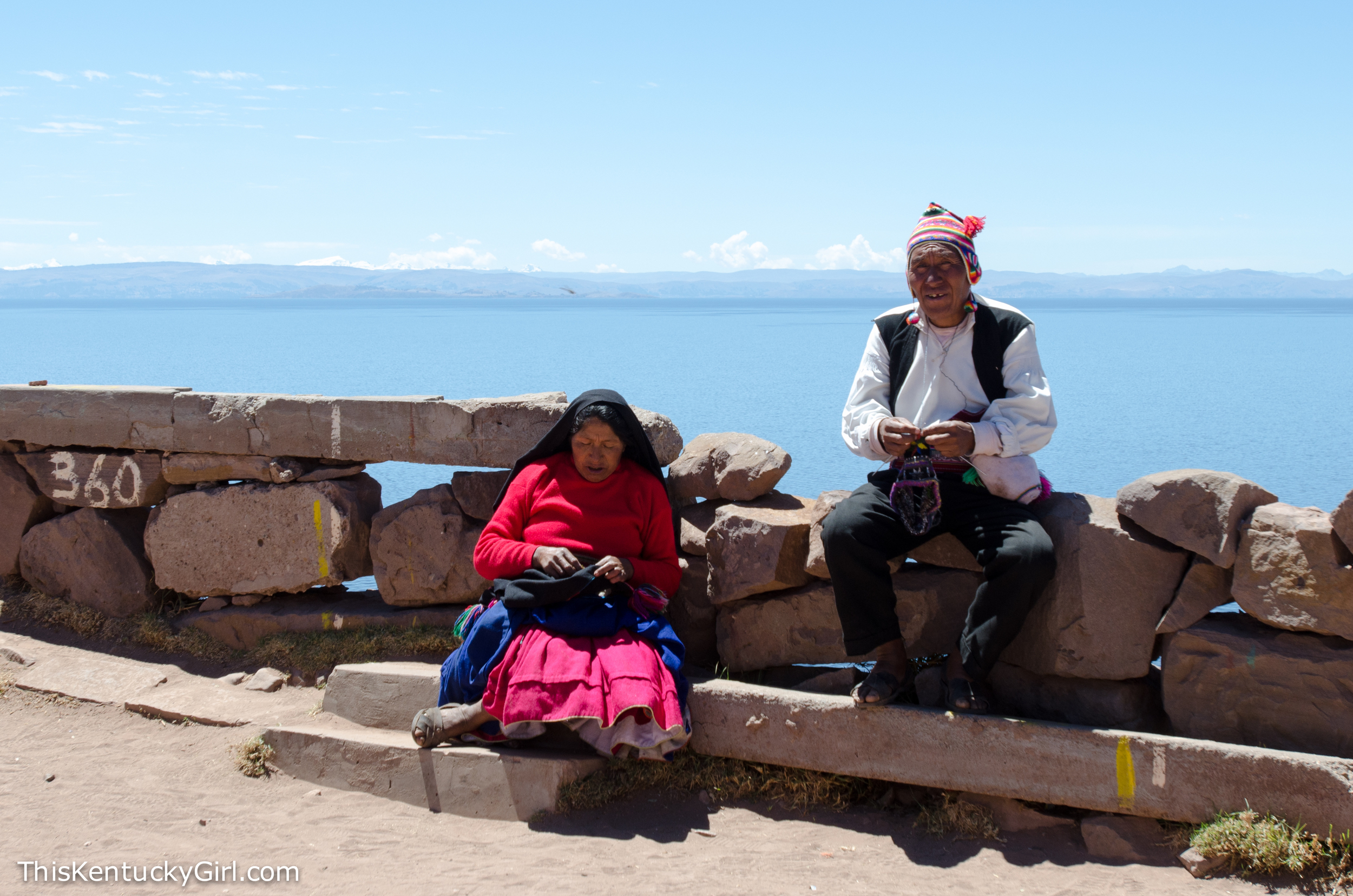
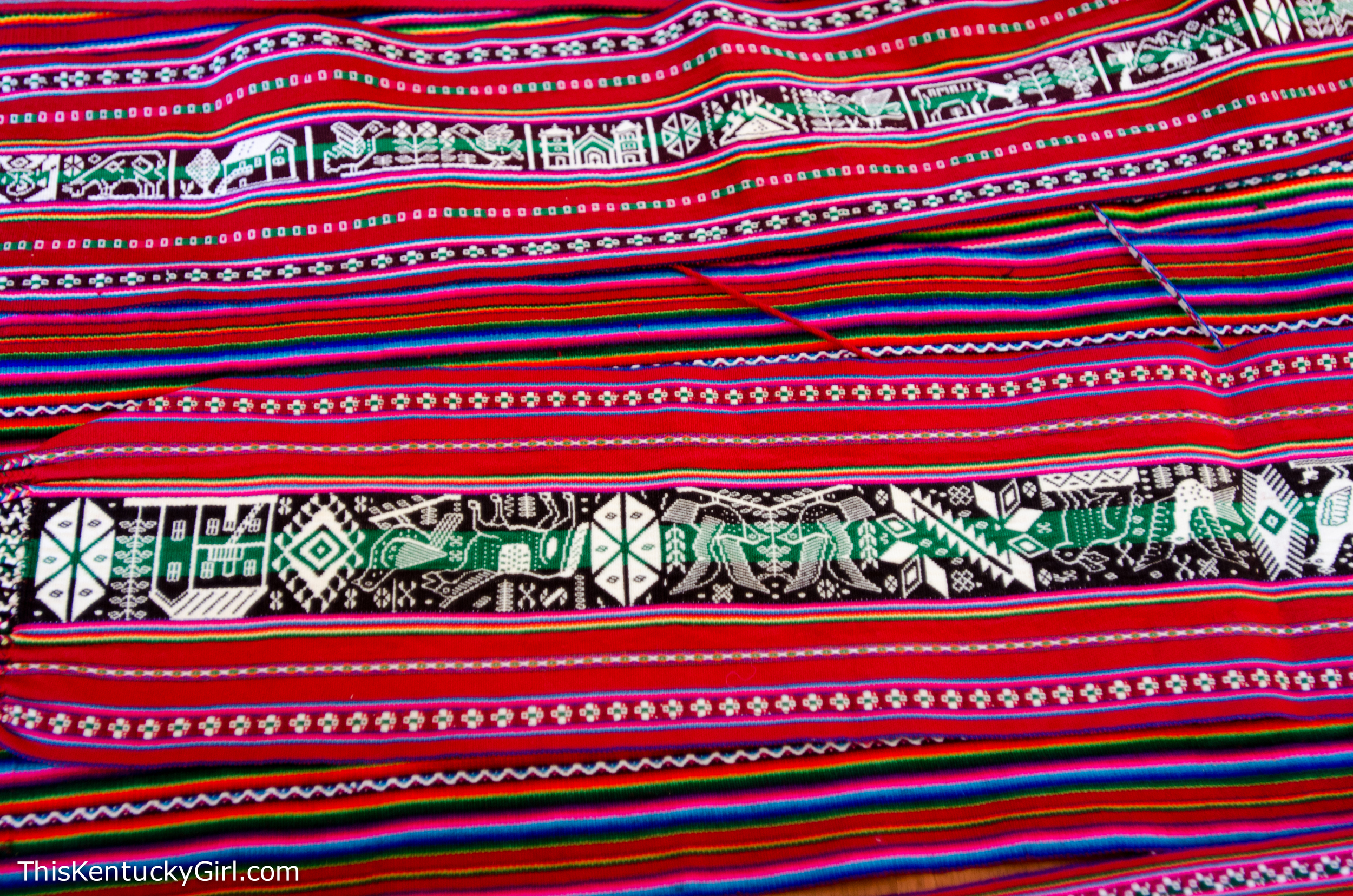
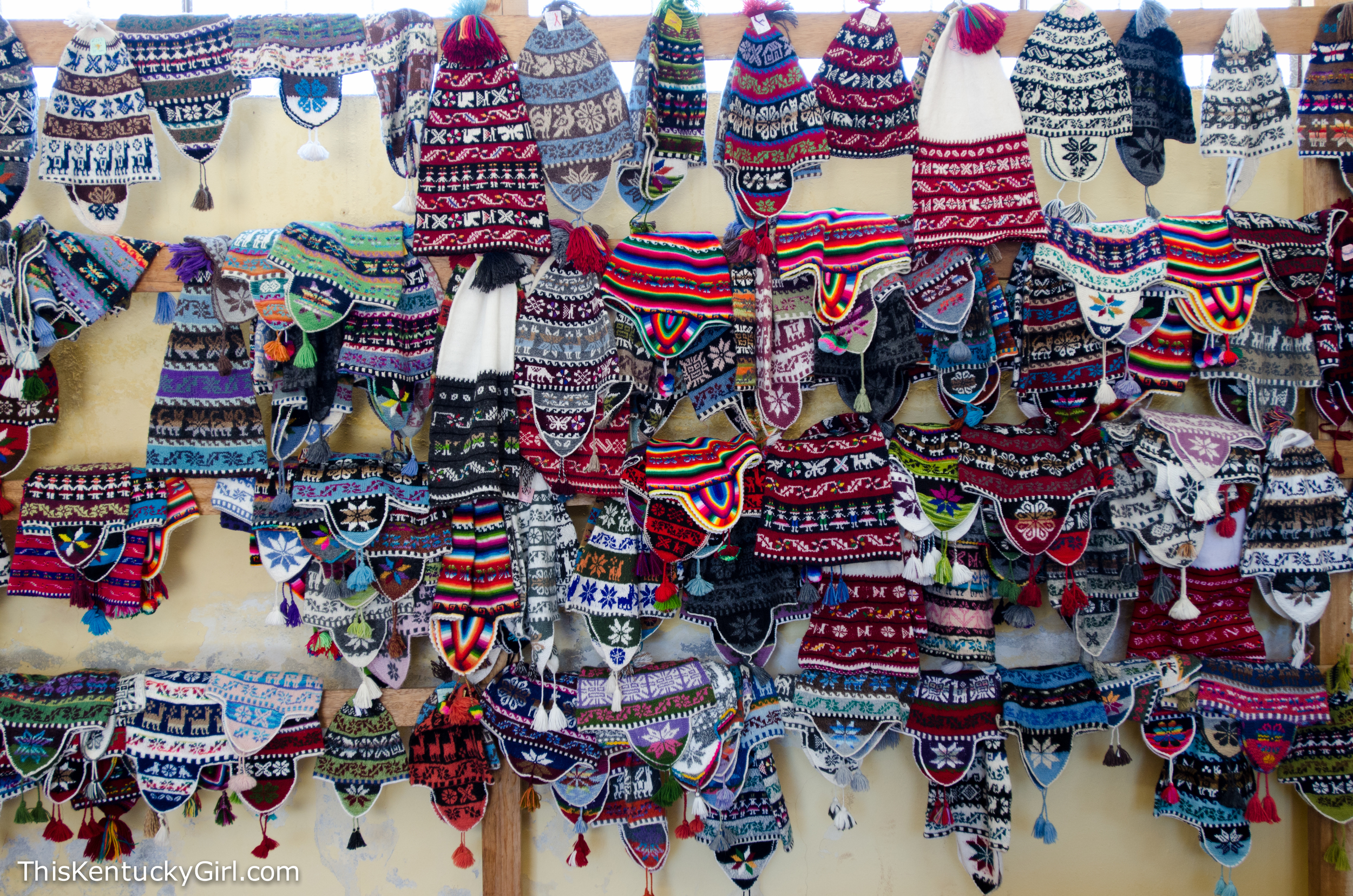
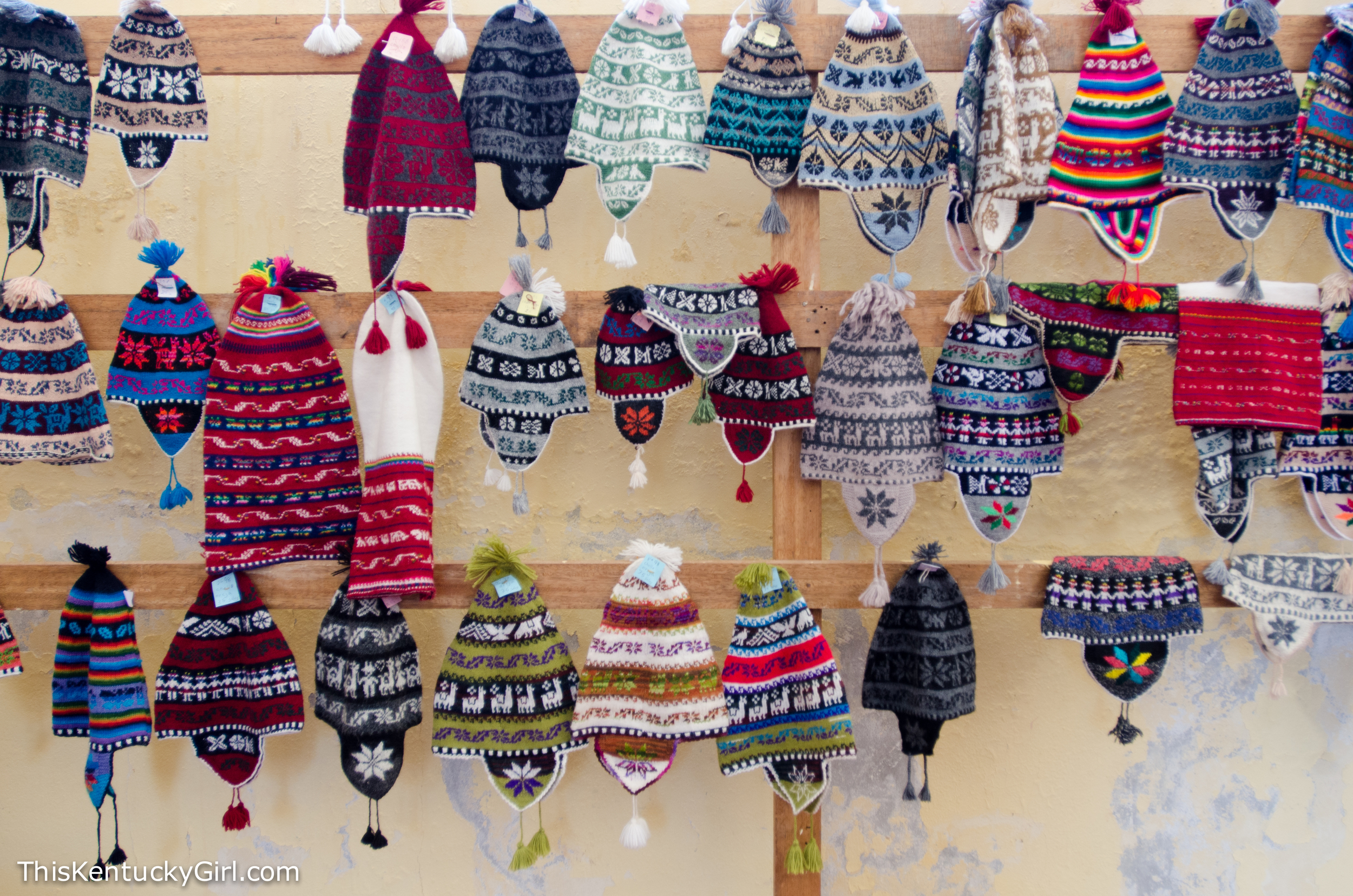

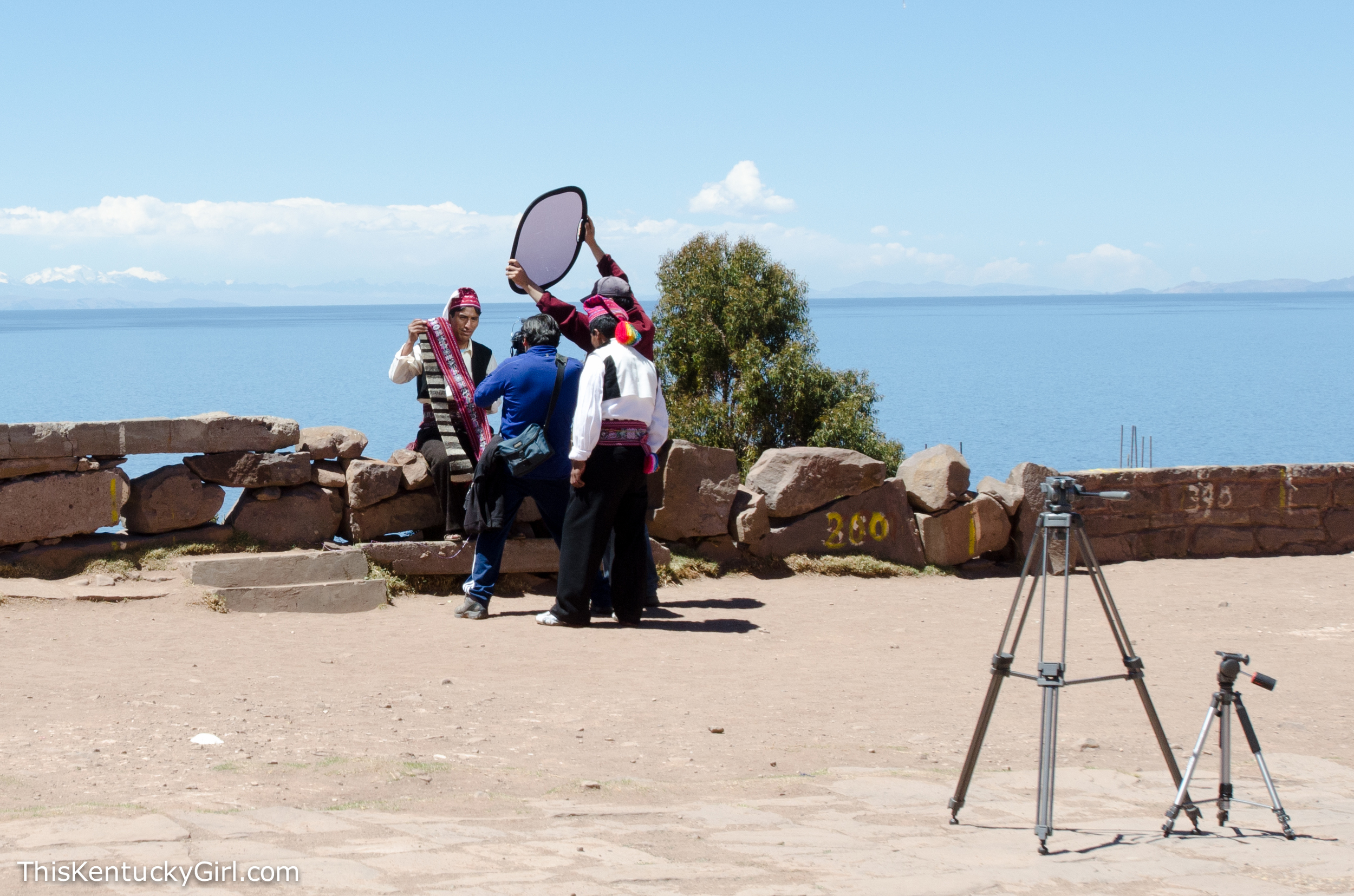
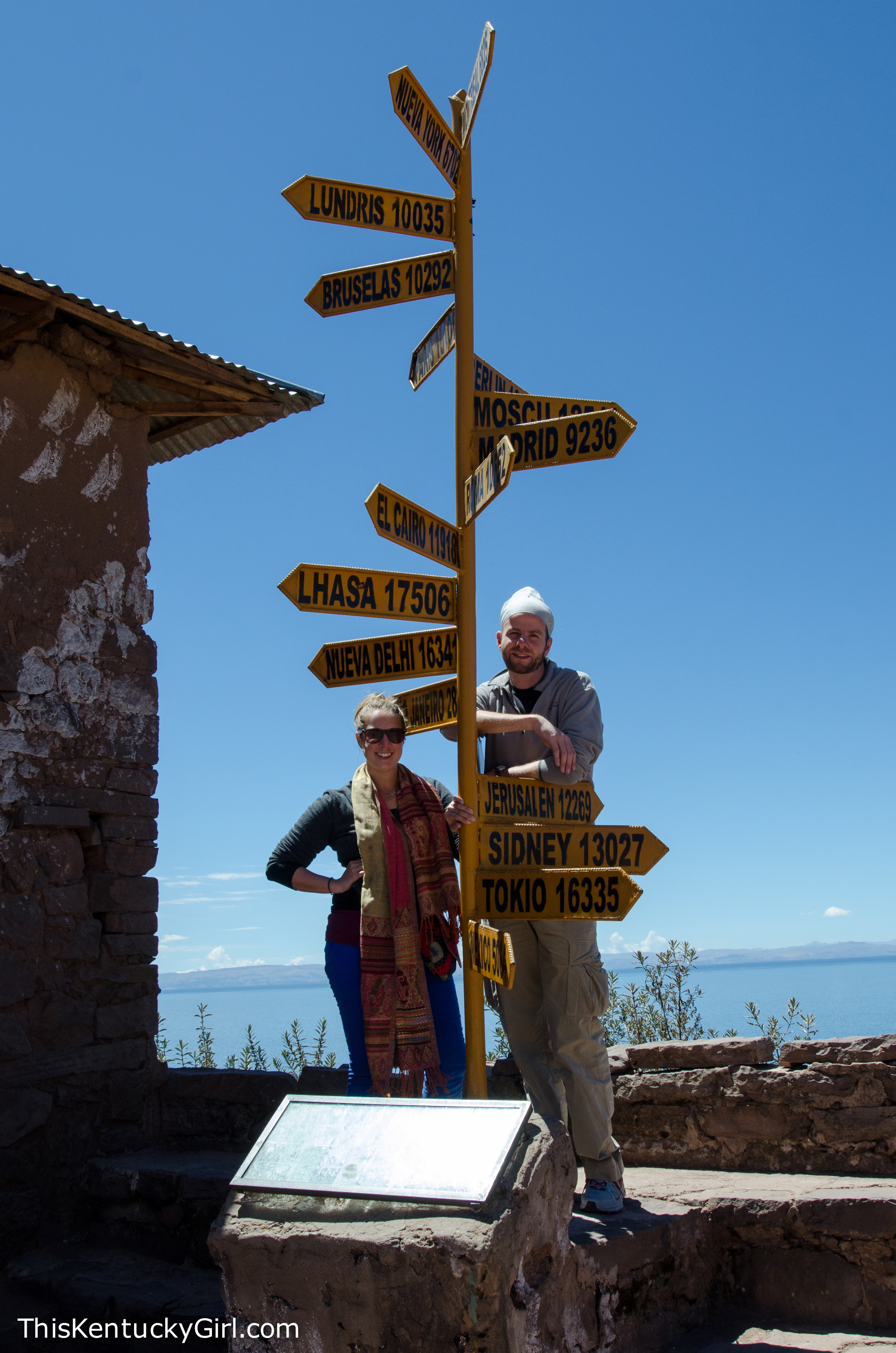
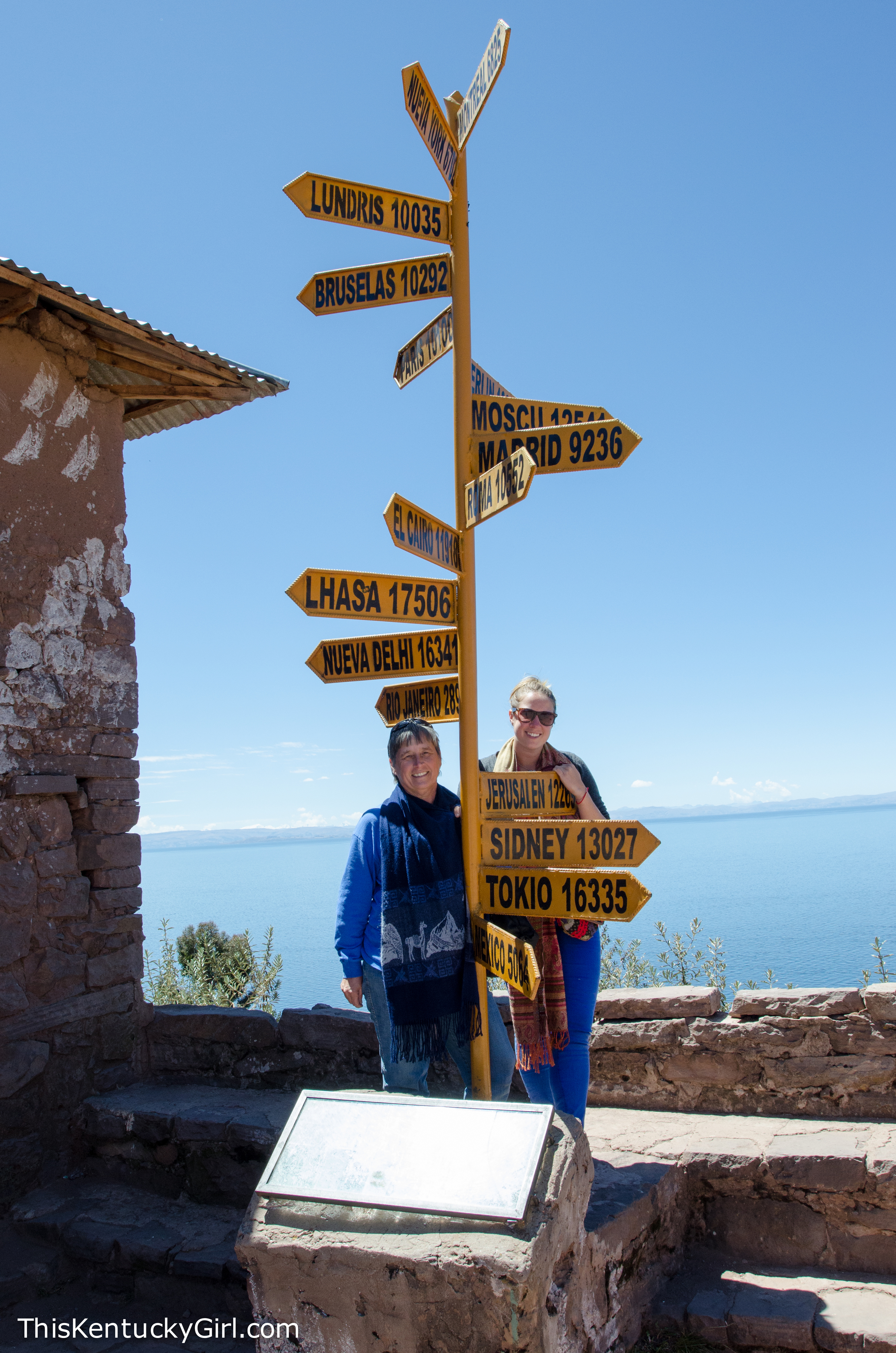
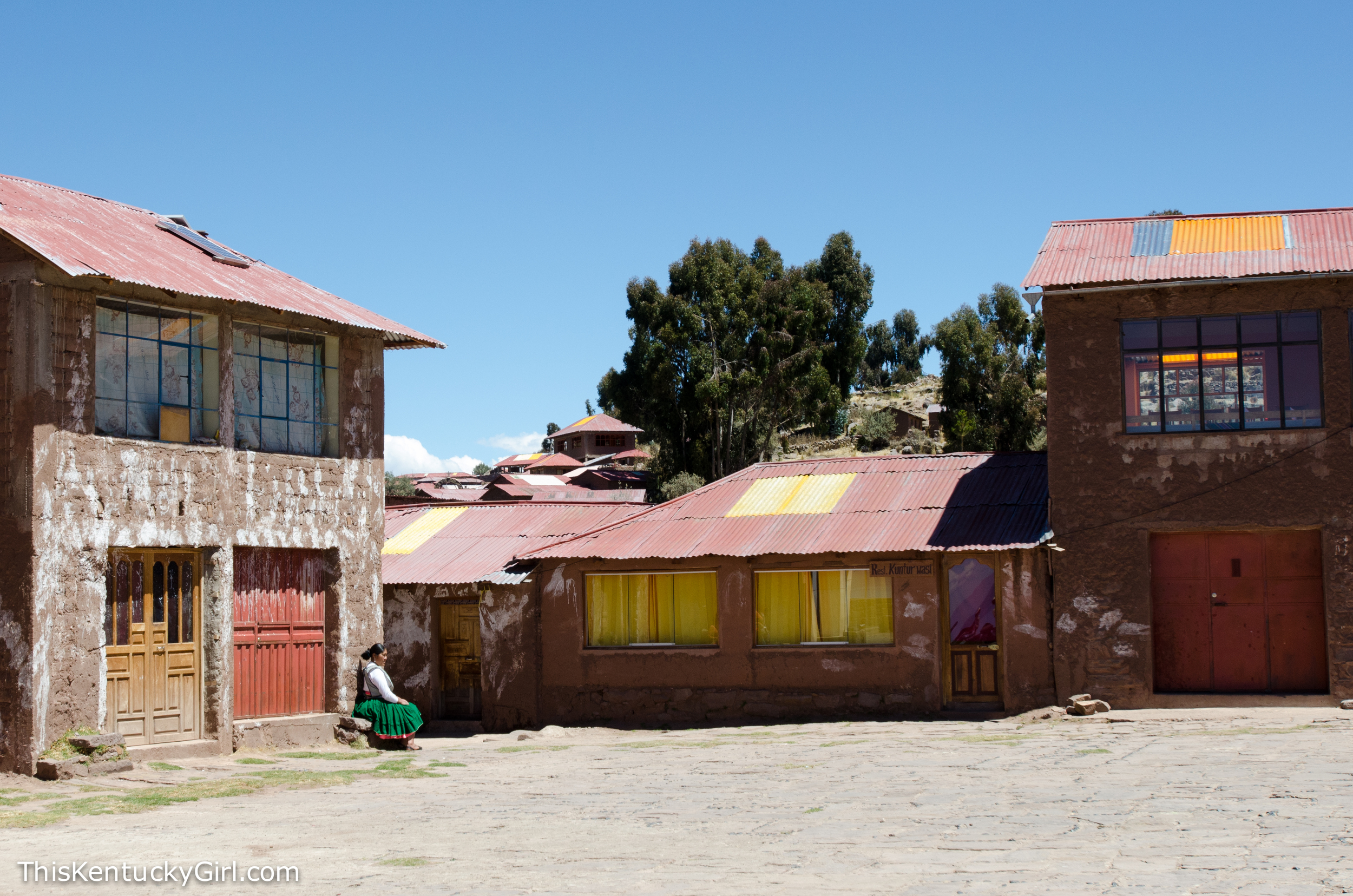
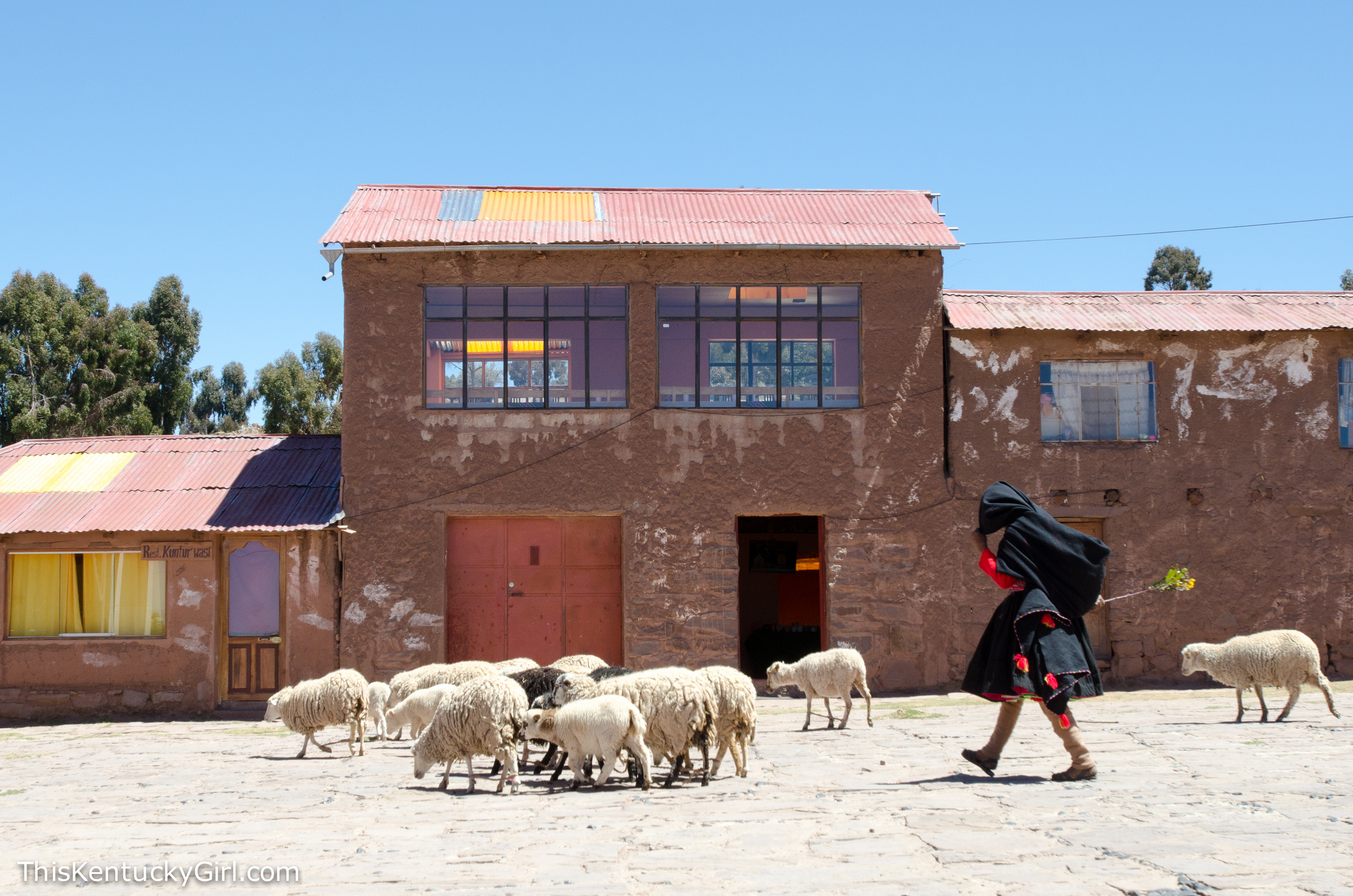
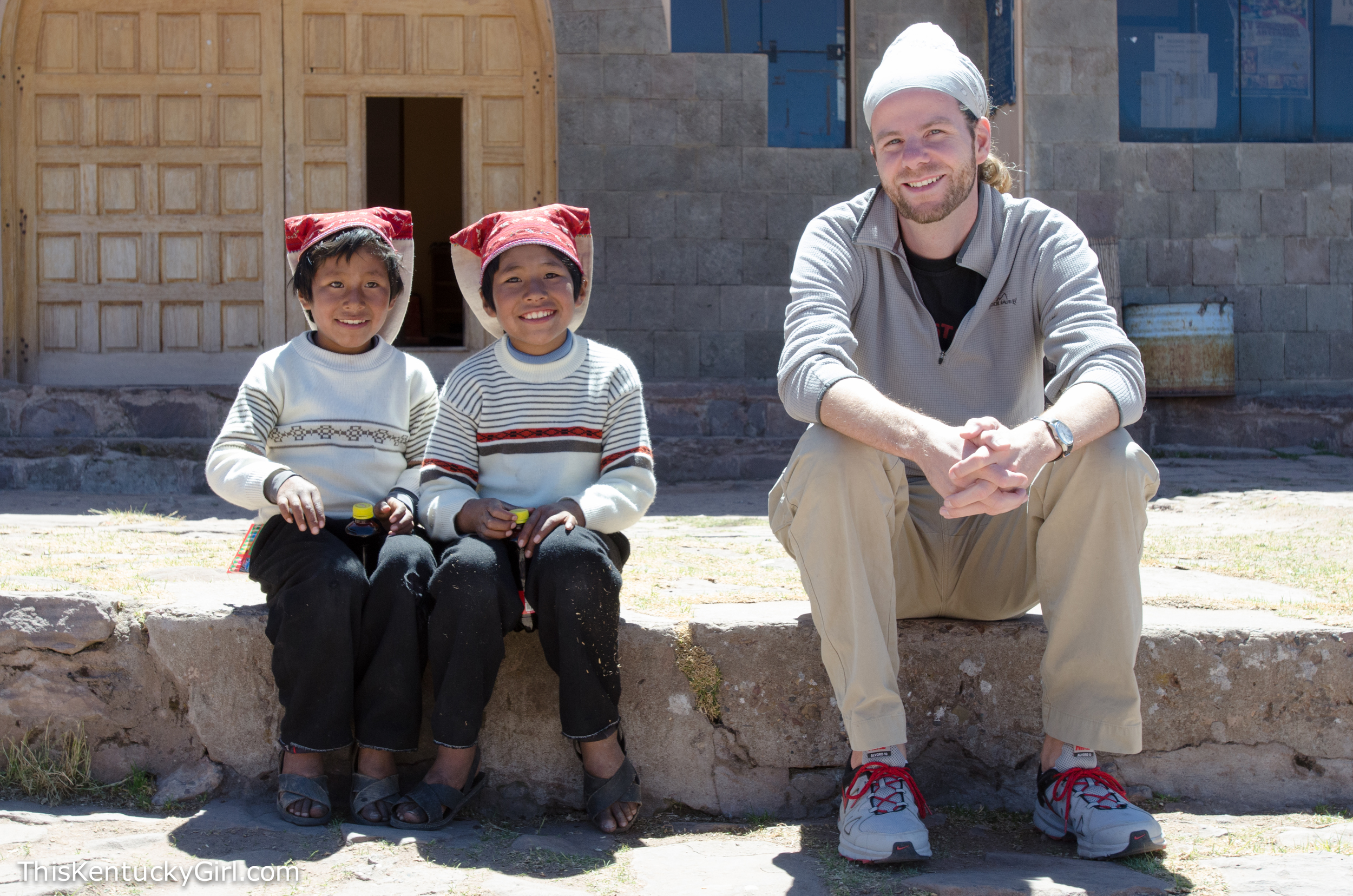
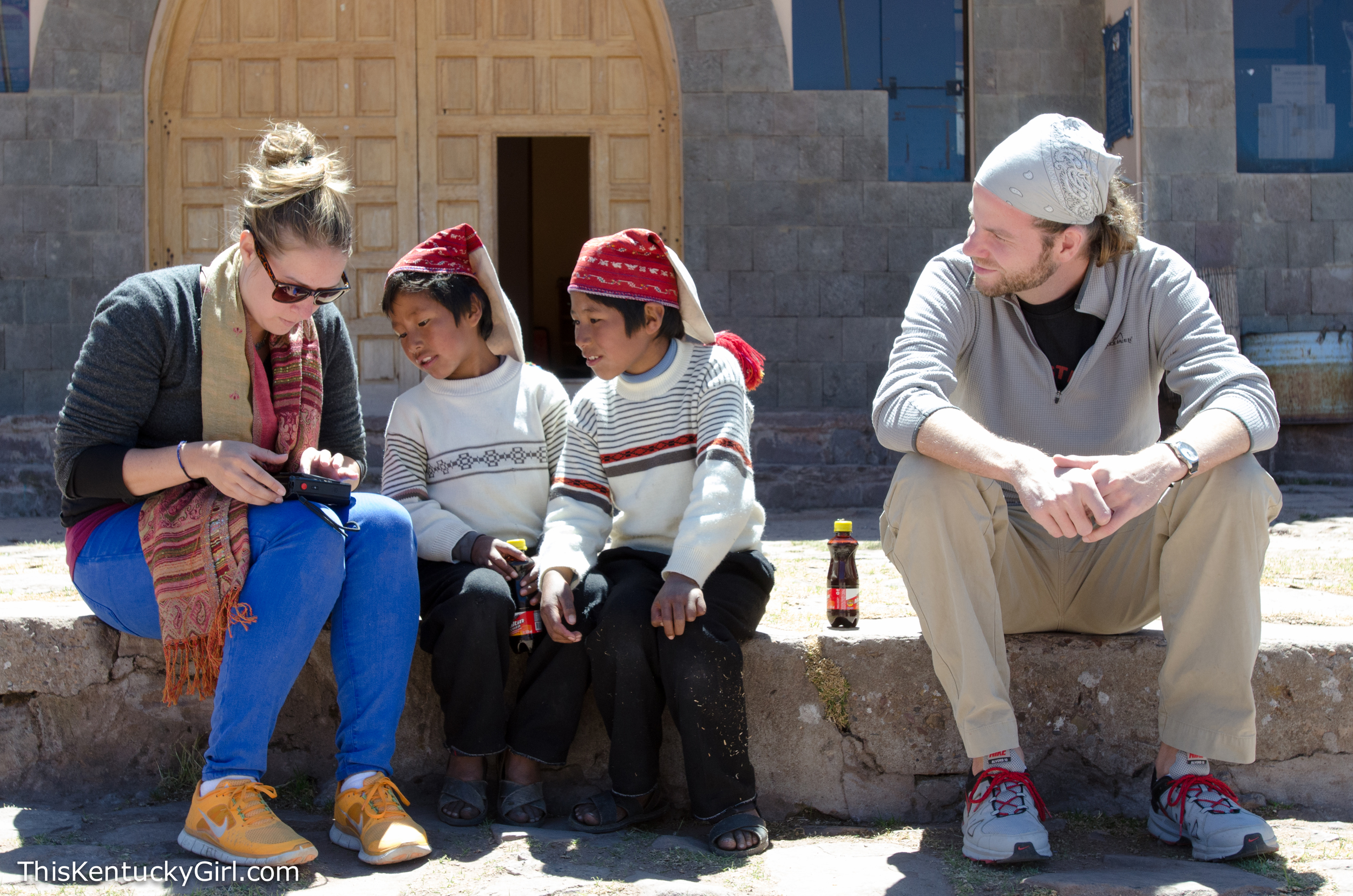
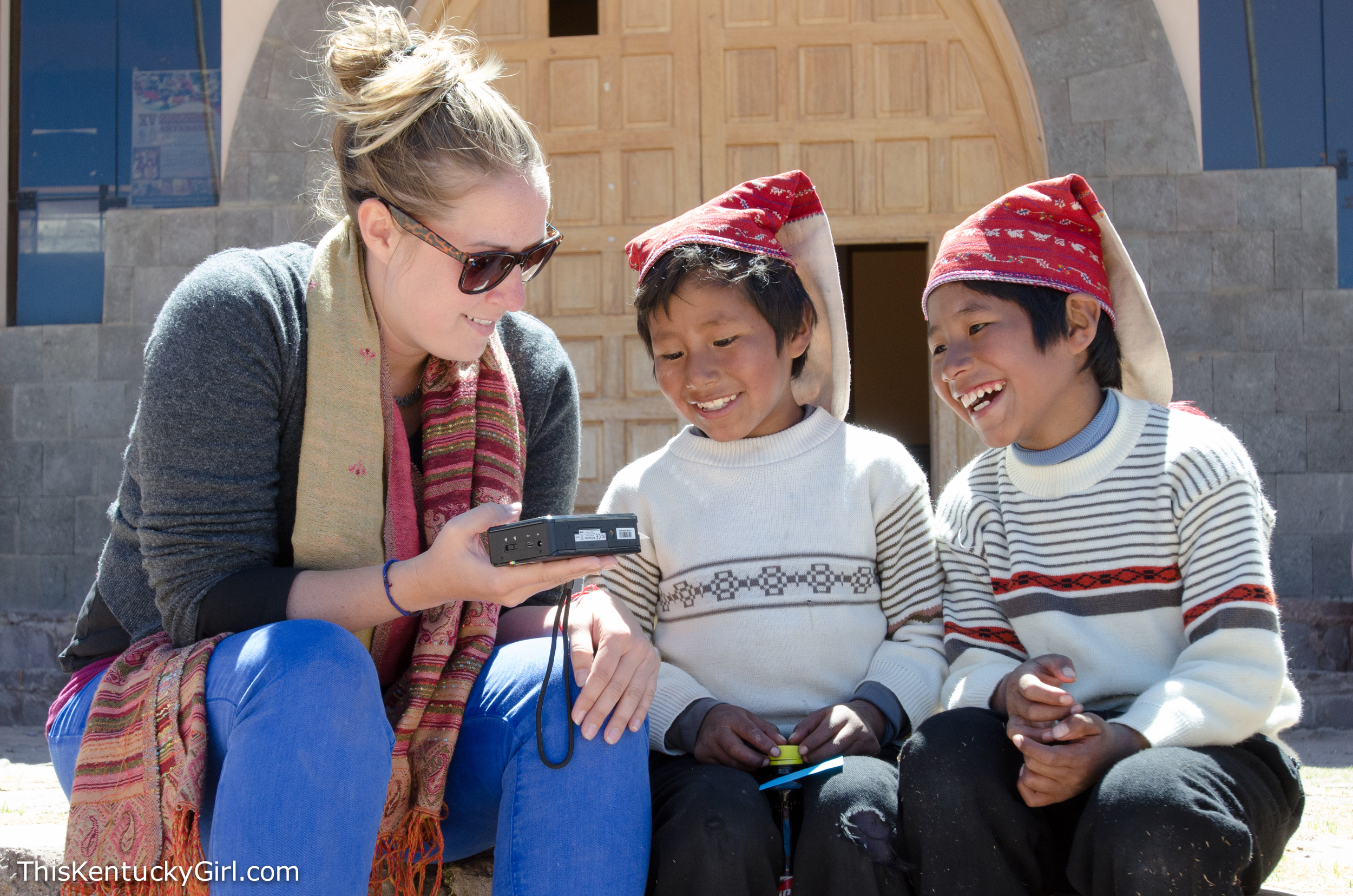
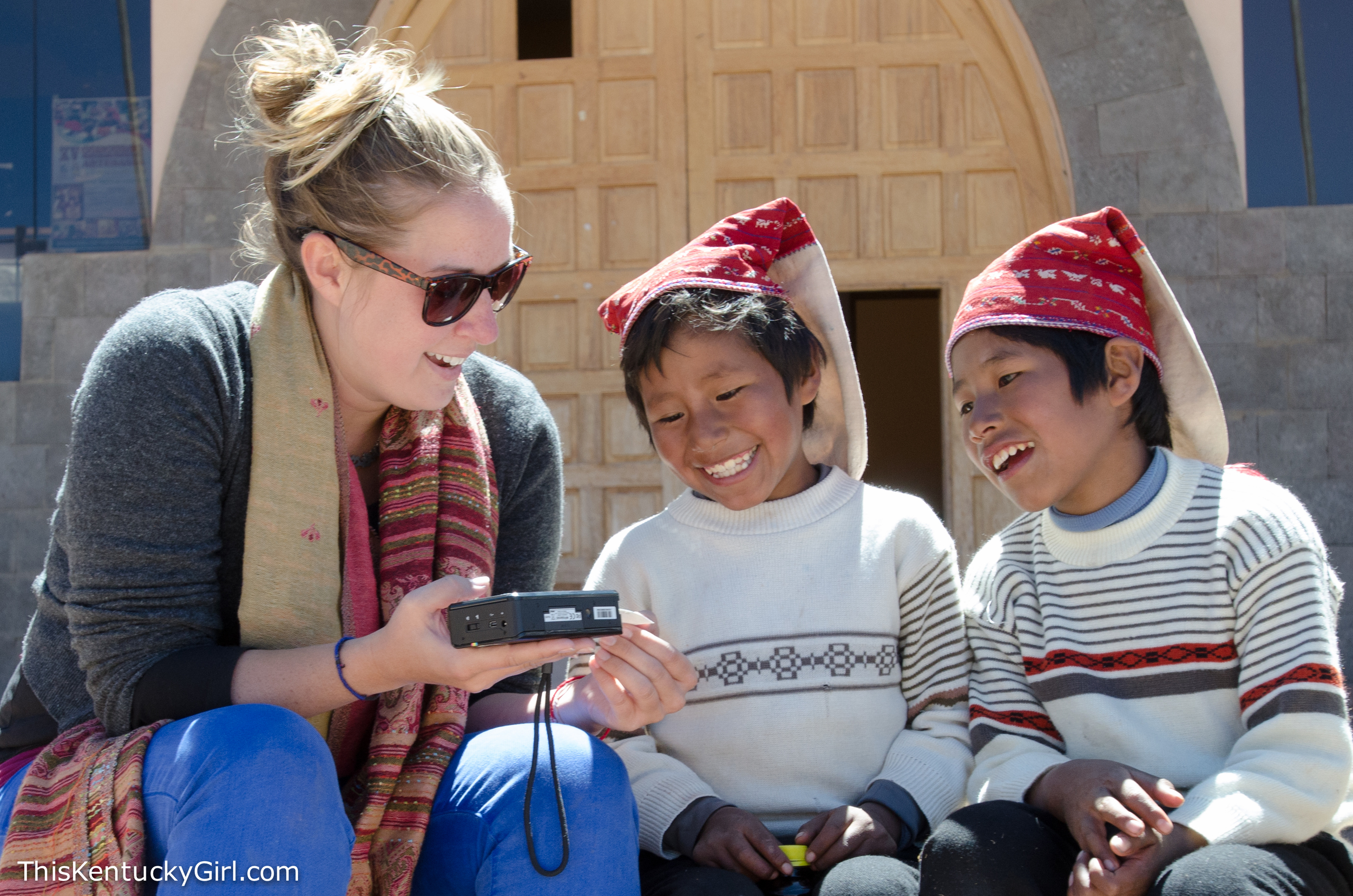
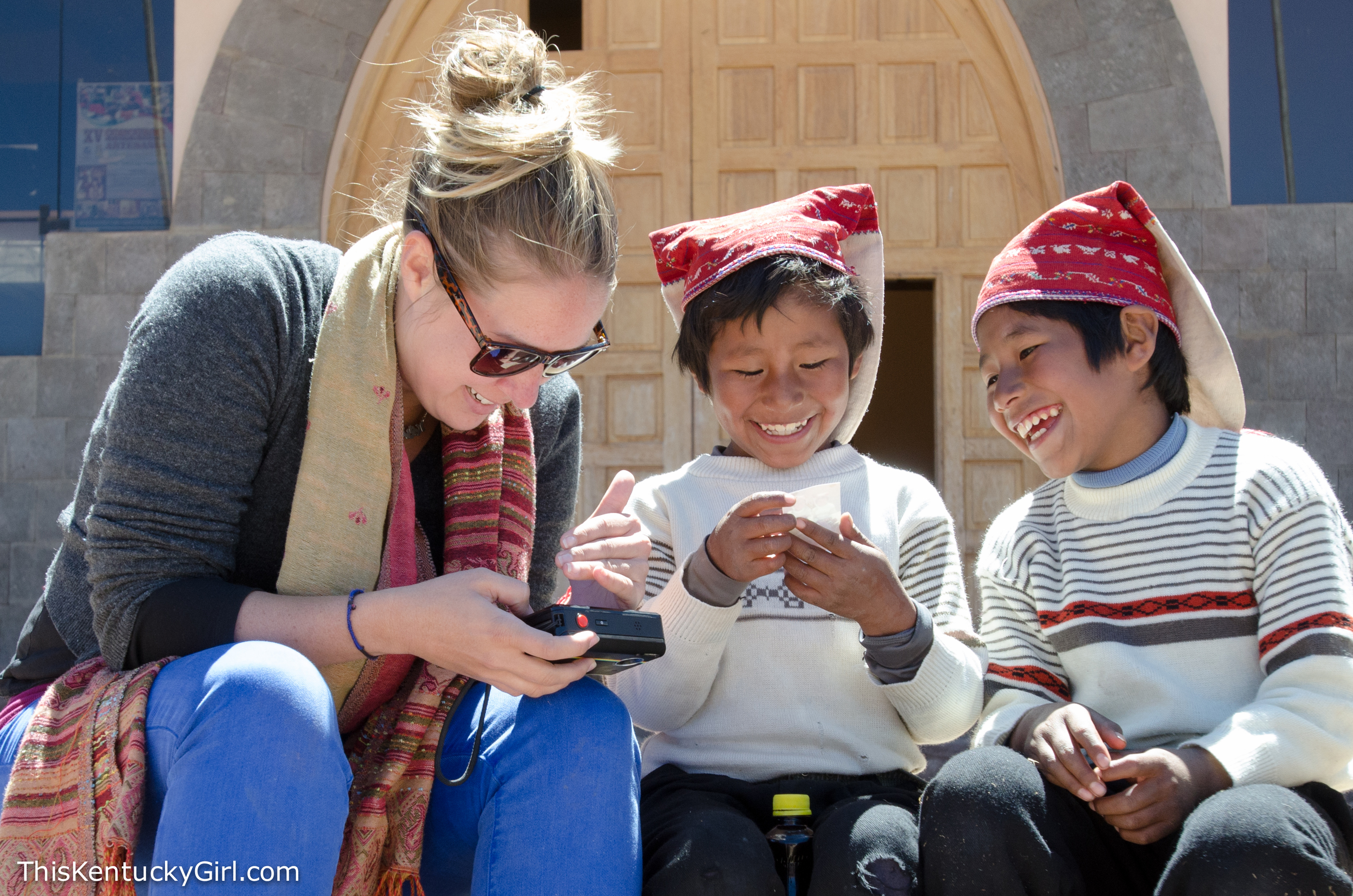
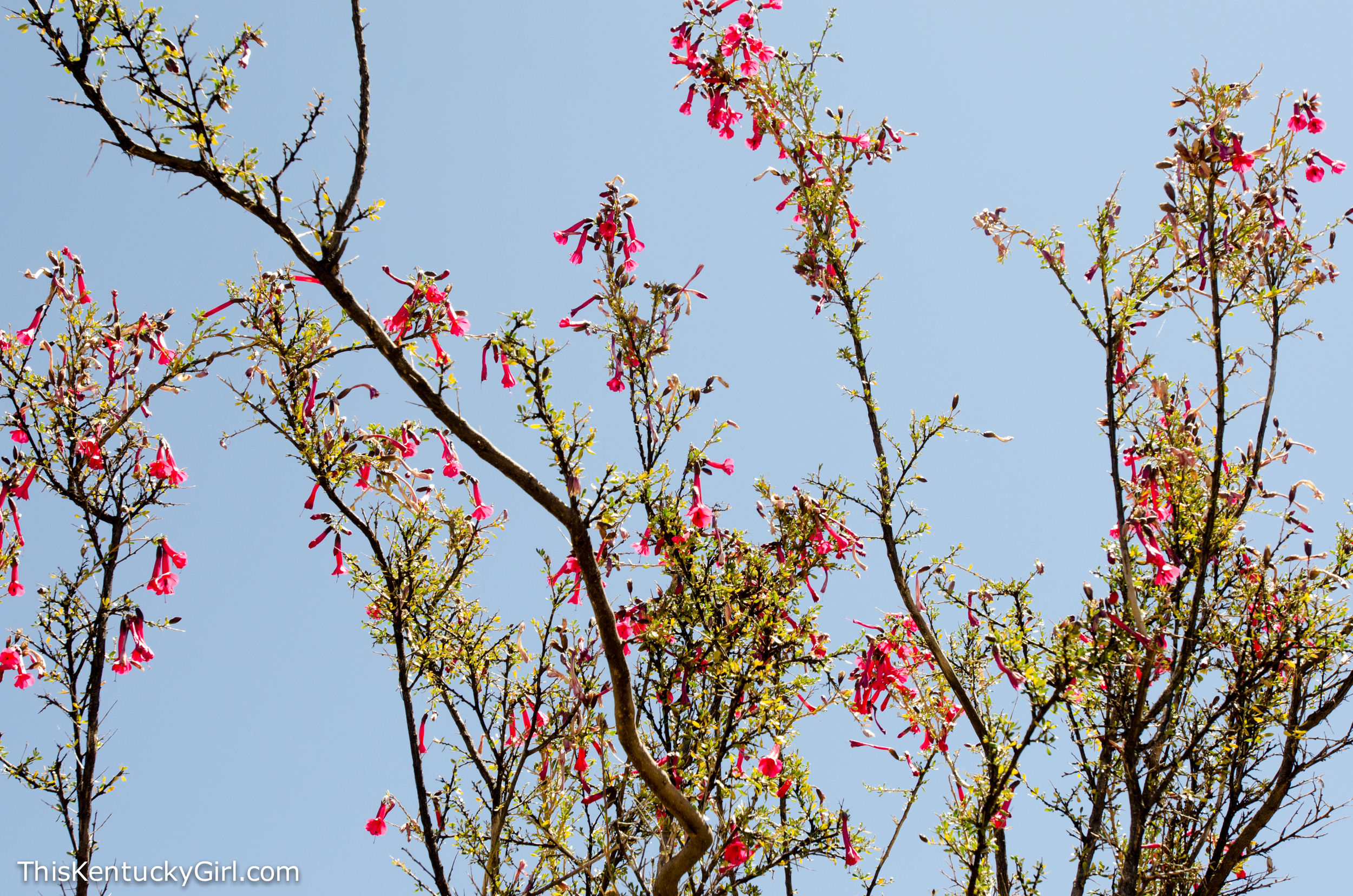
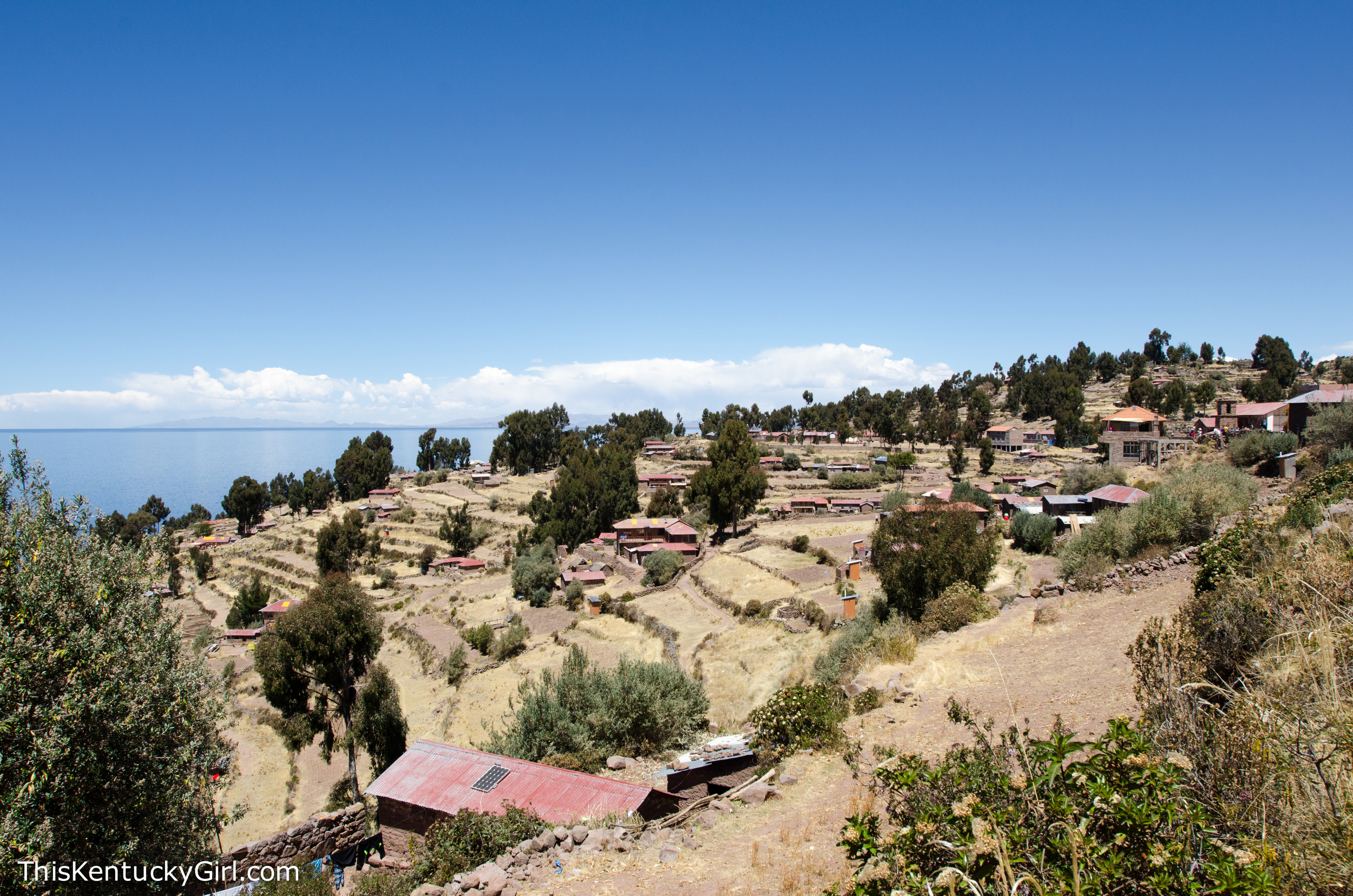
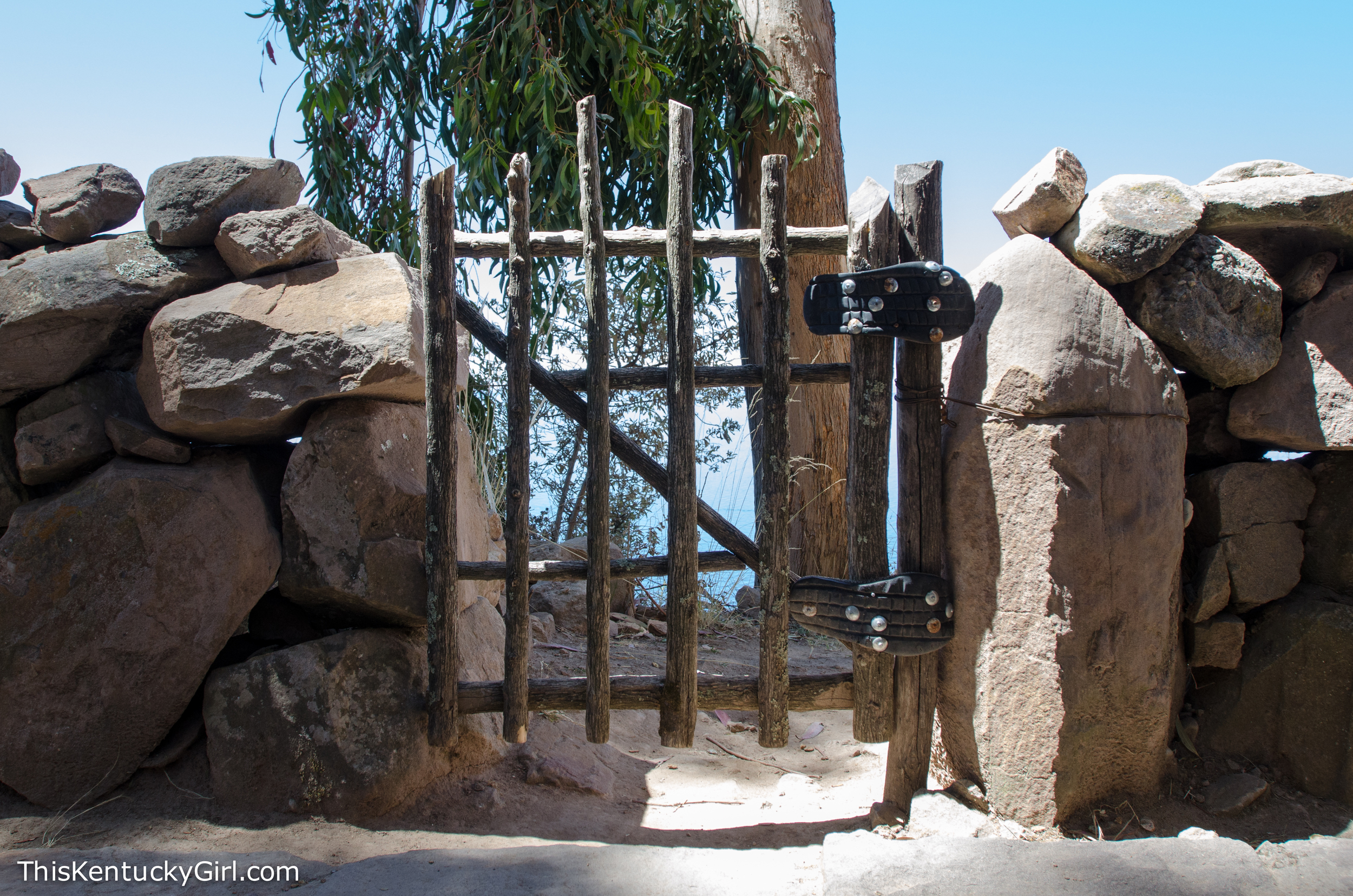
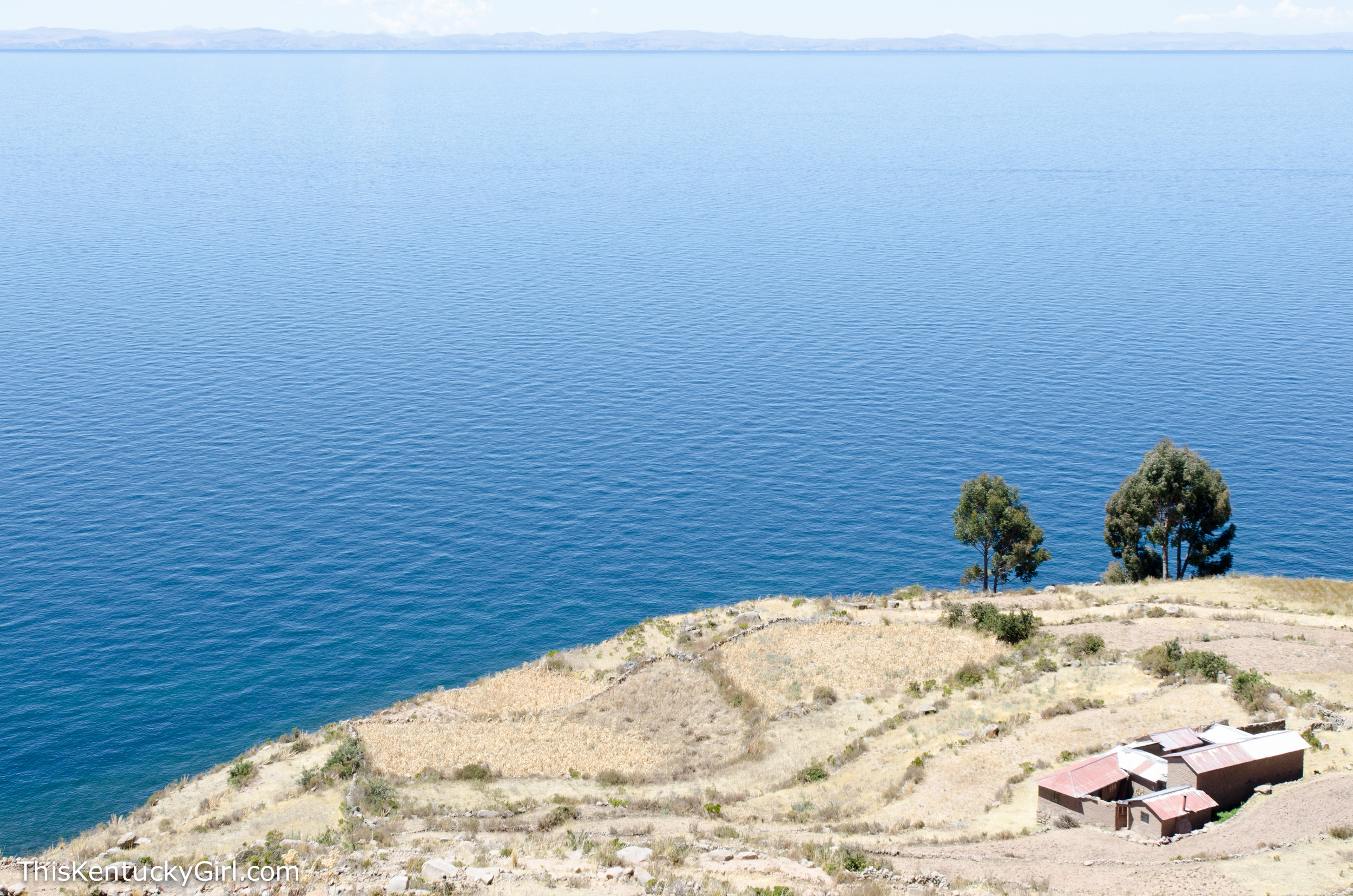
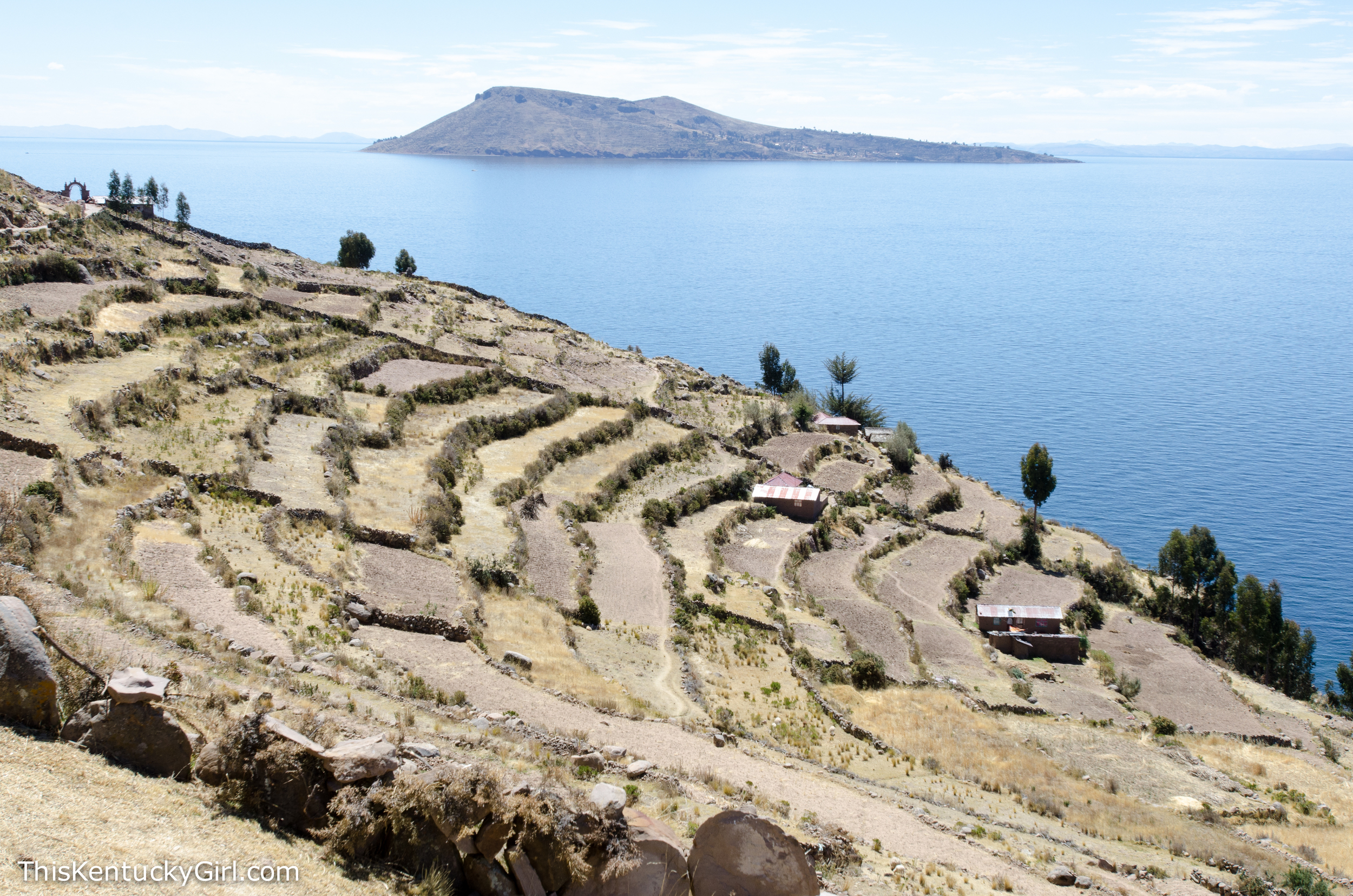
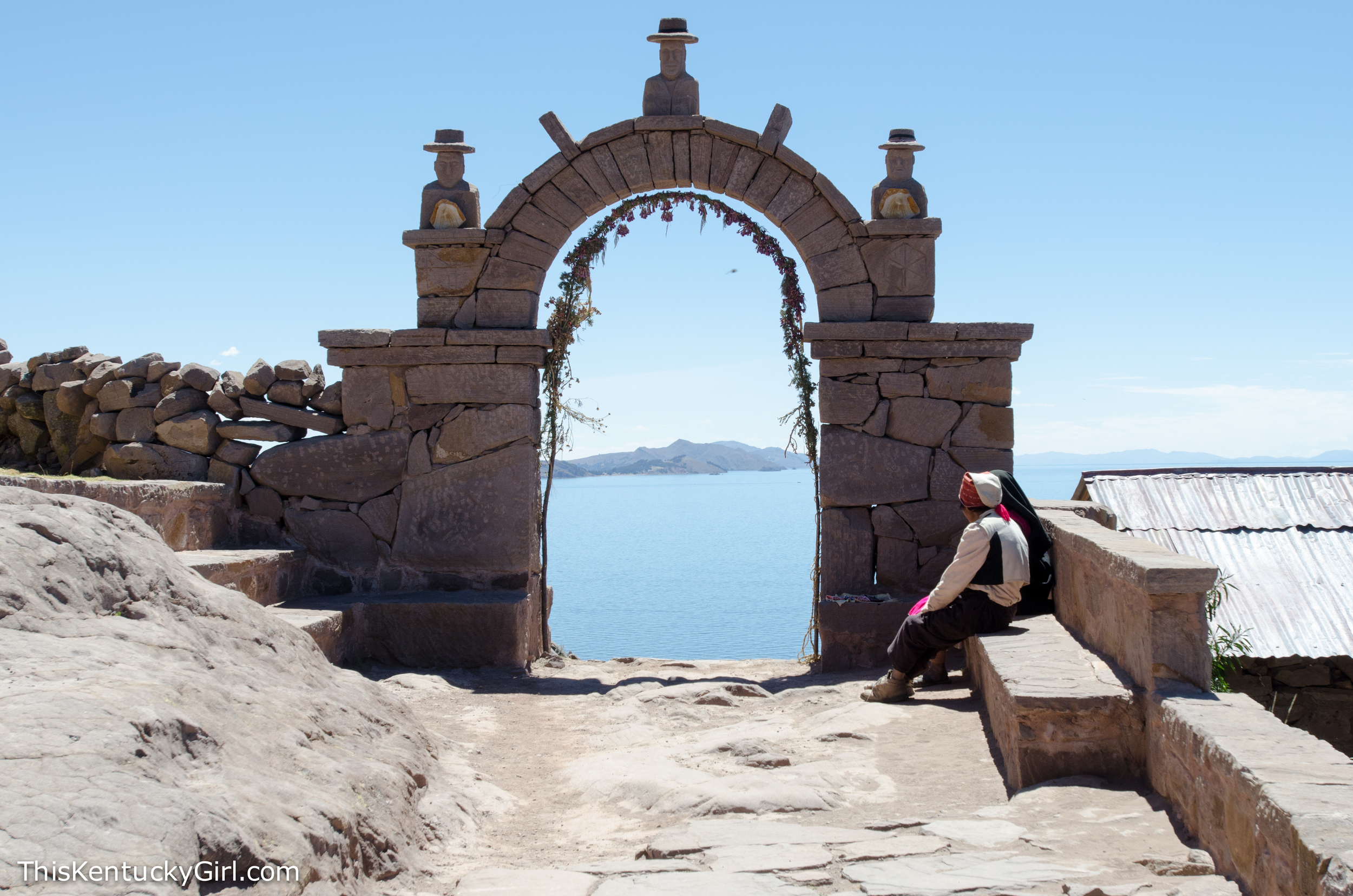
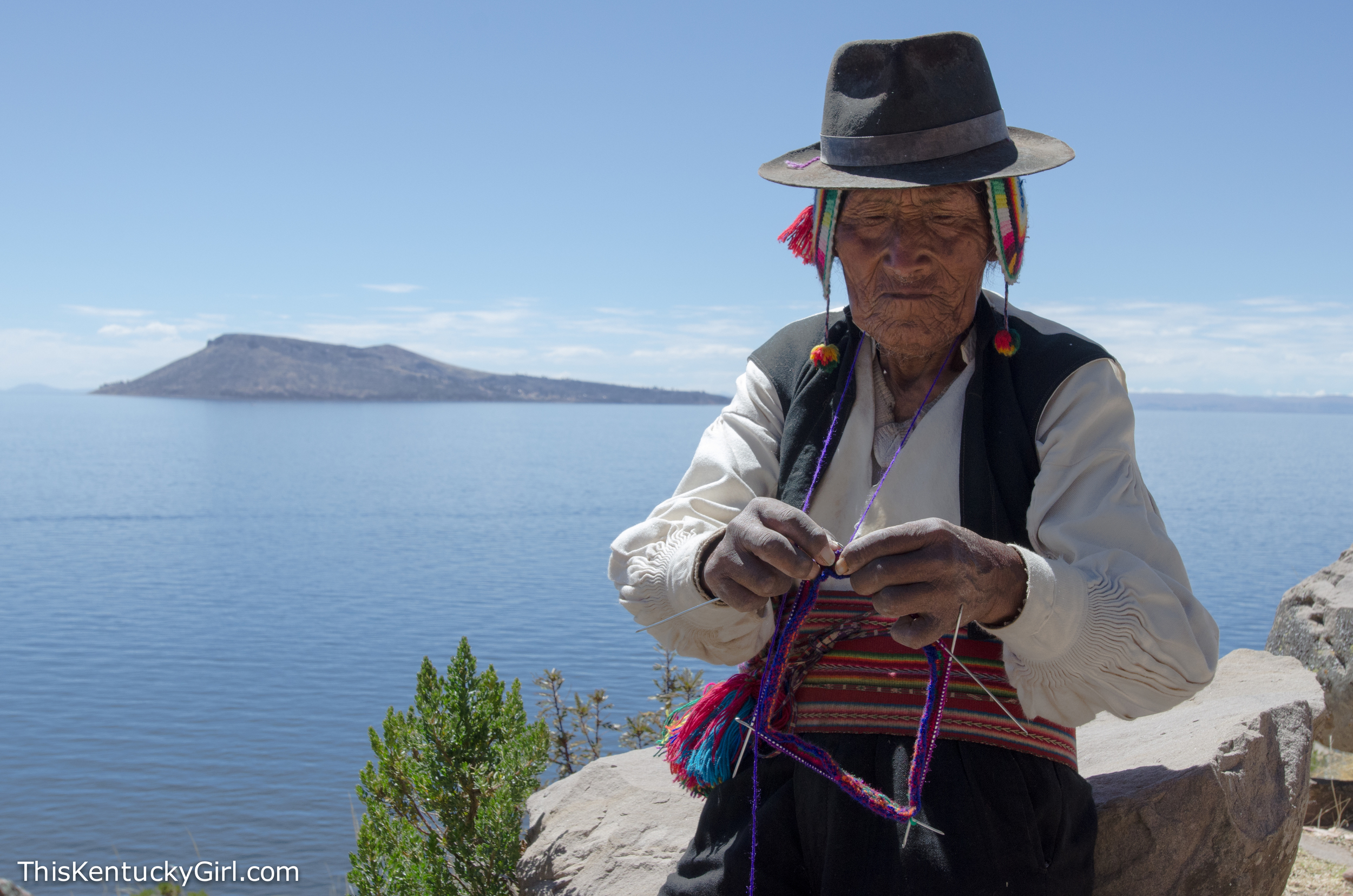
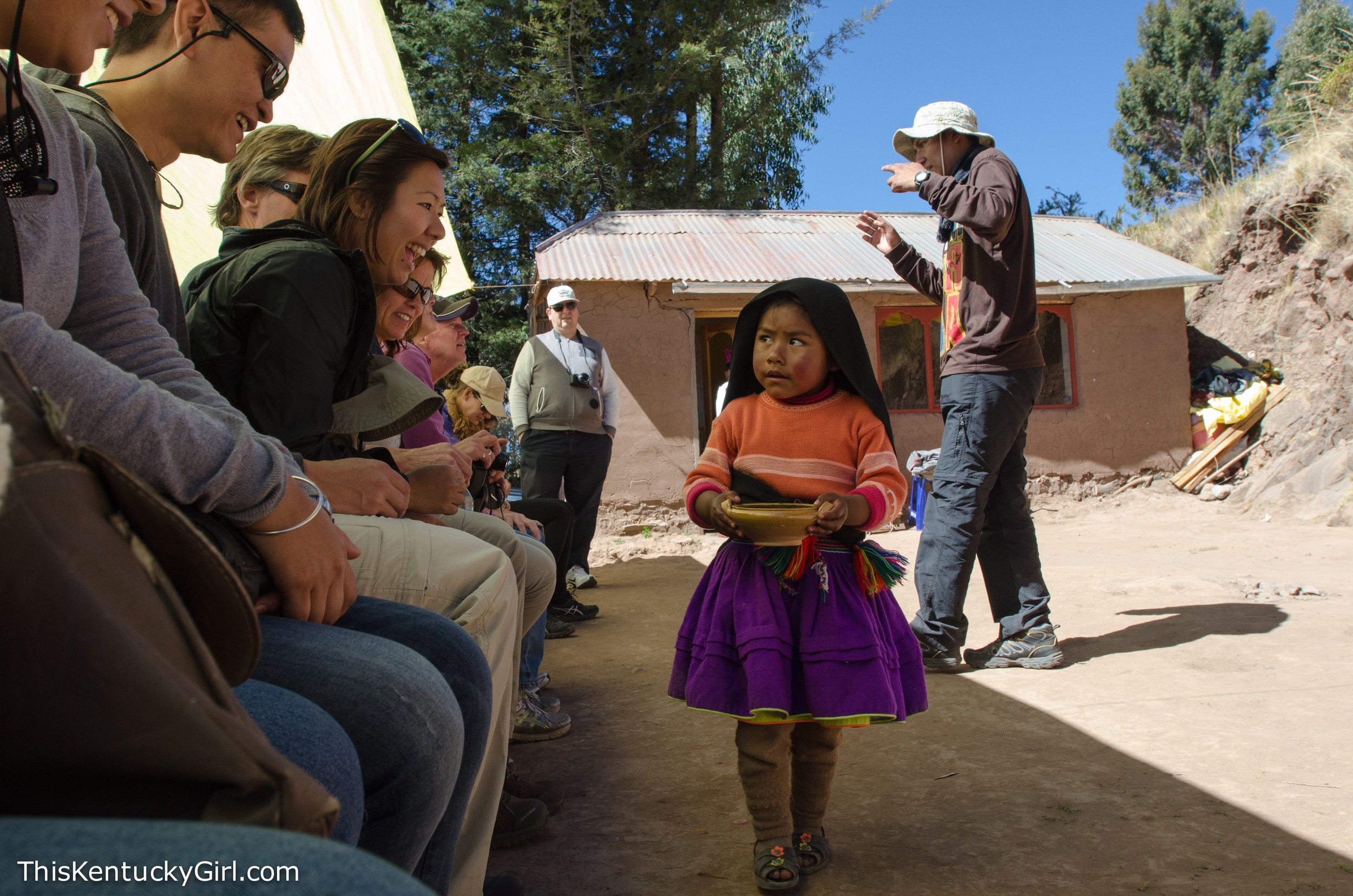

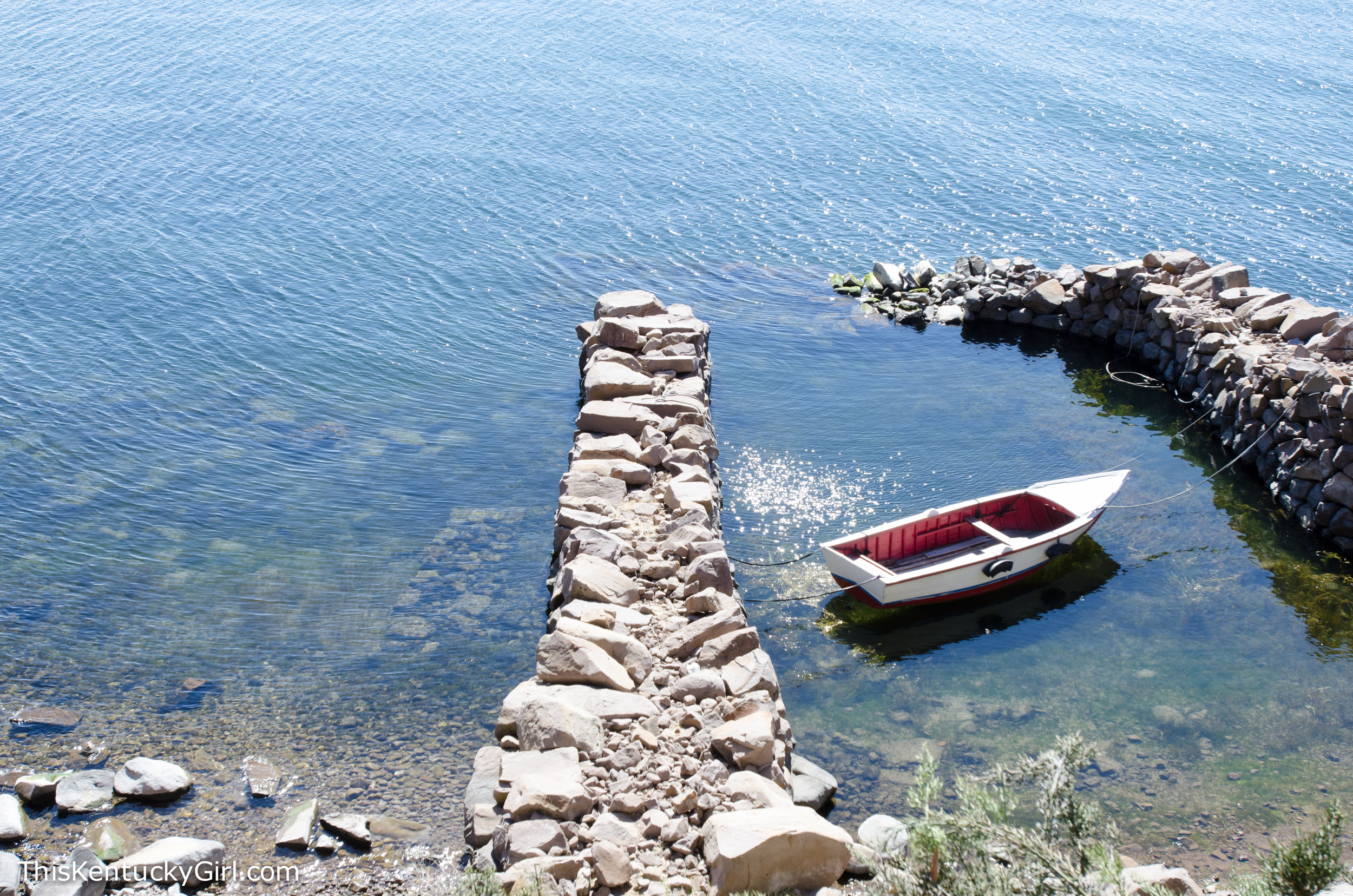
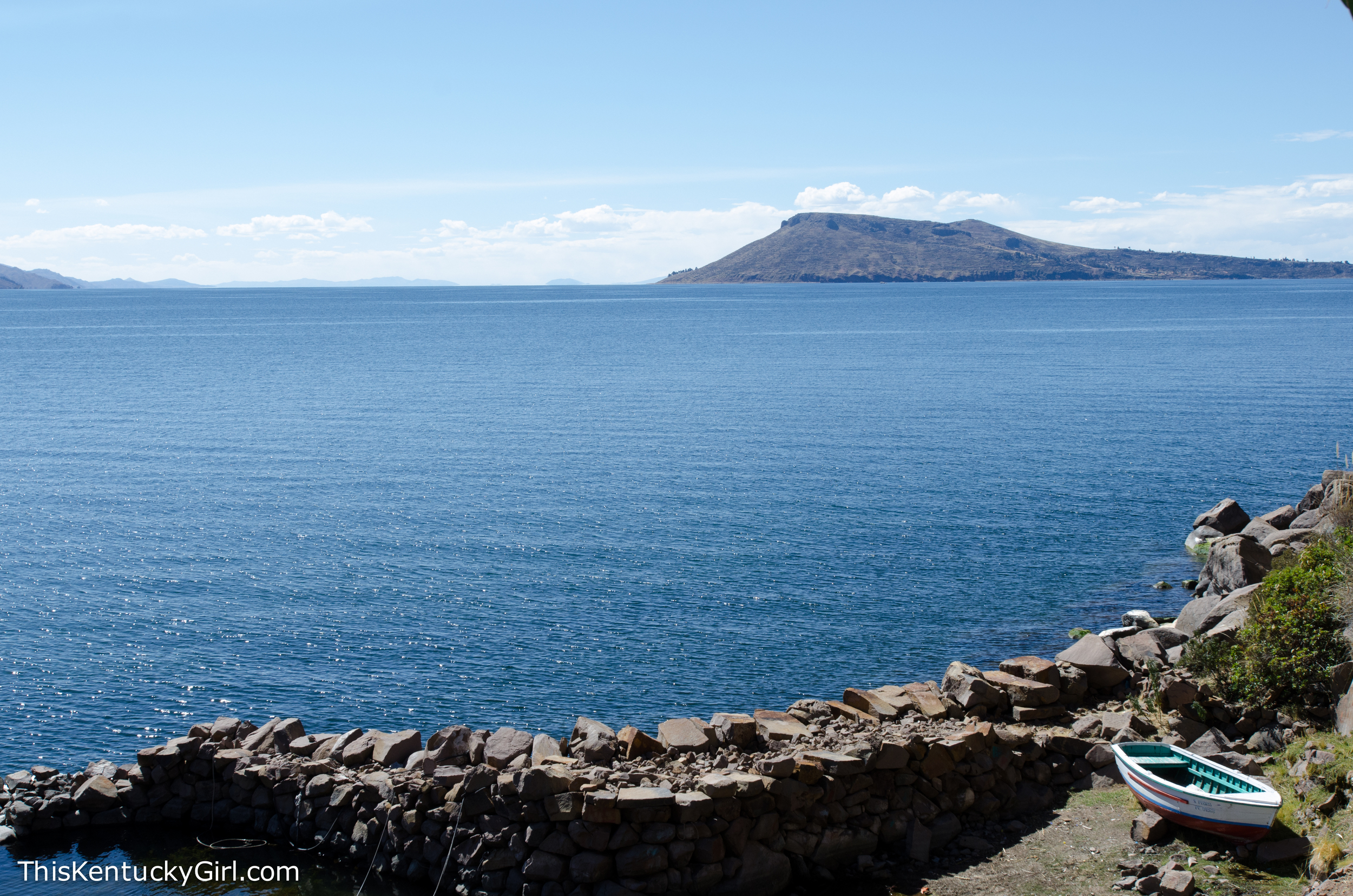
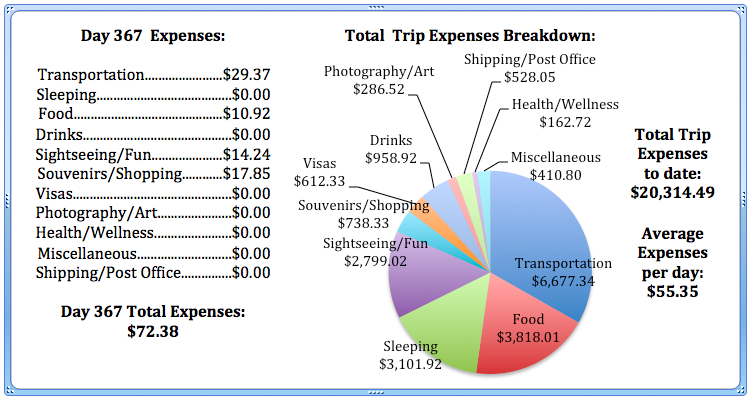
Per usual, we were picked up early in the morning only to drive around the city for an hour picking up others at their respective hotel before we even made it to the boats. I’m all for a hotel pick-up, but after a year of driving around in circles to pick up everyone else, I don’t see what’s so bad about telling everyone to be at a specific place by a certain time. It would guarantee an extra hour of sleep (at least) for all! Once we got on our boat, we waited for about fifteen minutes before the tour operator boarded the boat explaining that we could get upgraded to a faster boat if we joined a more expensive tour. The only catch was that we weren’t able to discuss this upgrade with the other boat members. Great! Except, why weren’t we told upon booking that our boat was going to take three hours to get to the Uros islands in the first place? It was all a little strange and I couldn’t help but wonder what was really going on. But we got on the “faster boat” that looked remarkably similar to our first boat and we were soon cruising across the lake towards the Uros Islands.
A close friend had warned me about the islands, saying they were a little on the touristy side. Trip Advisor forums went one step further, equating the experience to Disneyland and even suggesting the islands aren’t really inhabited these days, and they are more or less set up for tourists. Especially those who are in the market for some “one of a kind” souvenirs to take home (cough cough… Mom. cough).
When our boat landed, we were immediately greeted by the women of the island and told to sit in the center of the island for a brief presentation. It was here we met the president of the island and we were told how the island was built (layers and layers of reeds), how the island doesn’t have any electricity (but does have some solar panels), and how if you need to go to the bathroom, you have to climb into a boat and go to another island 20 minutes away. It was then I realized that I probably couldn’t live on the Uros. I’d spend more time paddling to and from the bathroom than anything else! We were told that the 40+ islands rotate daily to receive tours. This is so they can go about their daily life during the days they don’t have visitors and to give every island an opportunity to make some money (to be blunt about it). This is completely understandable, but halfway through our presentation, two other boats pulled up and suddenly the little man-made island, smaller than a basketball court was inundated with tourists.
We were already part of a group of about 30-40 people. Once other boats pulled up and people were walking around us shopping, while we were trying to learn about the island completely transformed this “Oh, what a cool little island” into “Ohmigod I hate being a tourist.” We were then shuffled to the back of the island, presumably so the next group could have a meet and greet with the president. A giant reed gondola awaited to take everyone for a spin (for an additional fee). Think Venice, only instead of just you and your significant other on the boat, it was you and forty other strangers crammed together. It was something I didn’t need to do, and instead hung back to take some Polaroids and hand them out to the women (and children) of the island.
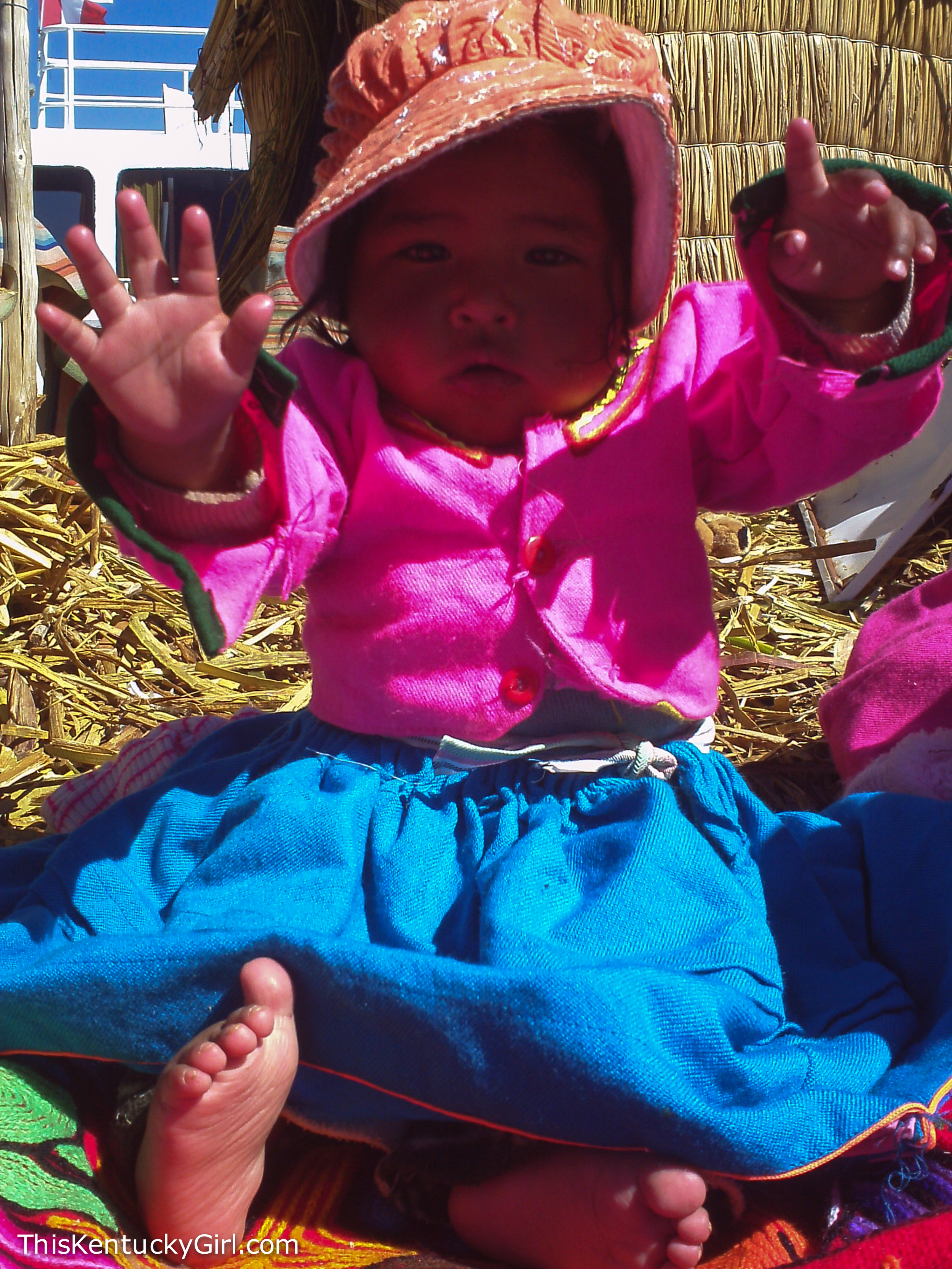
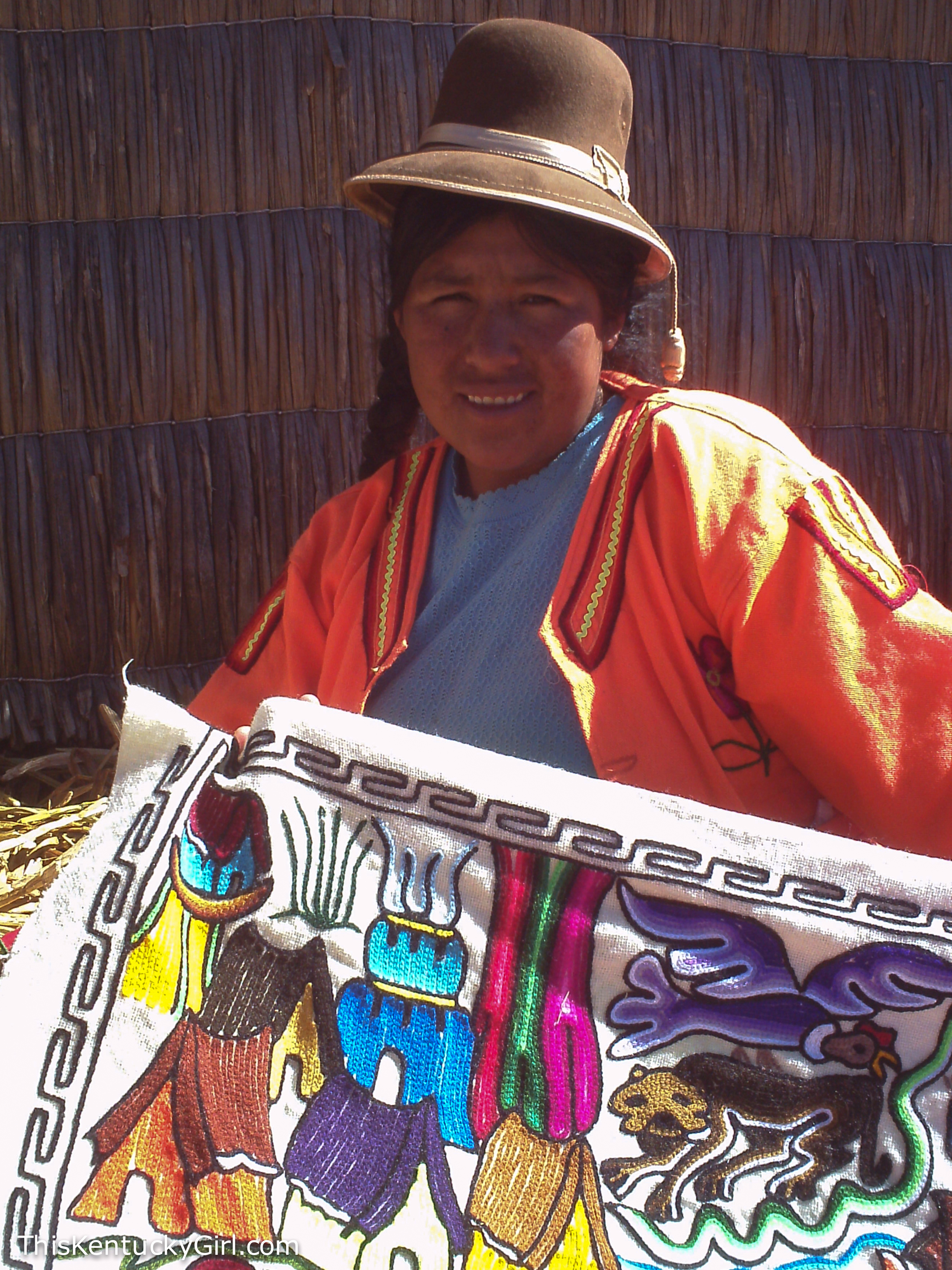
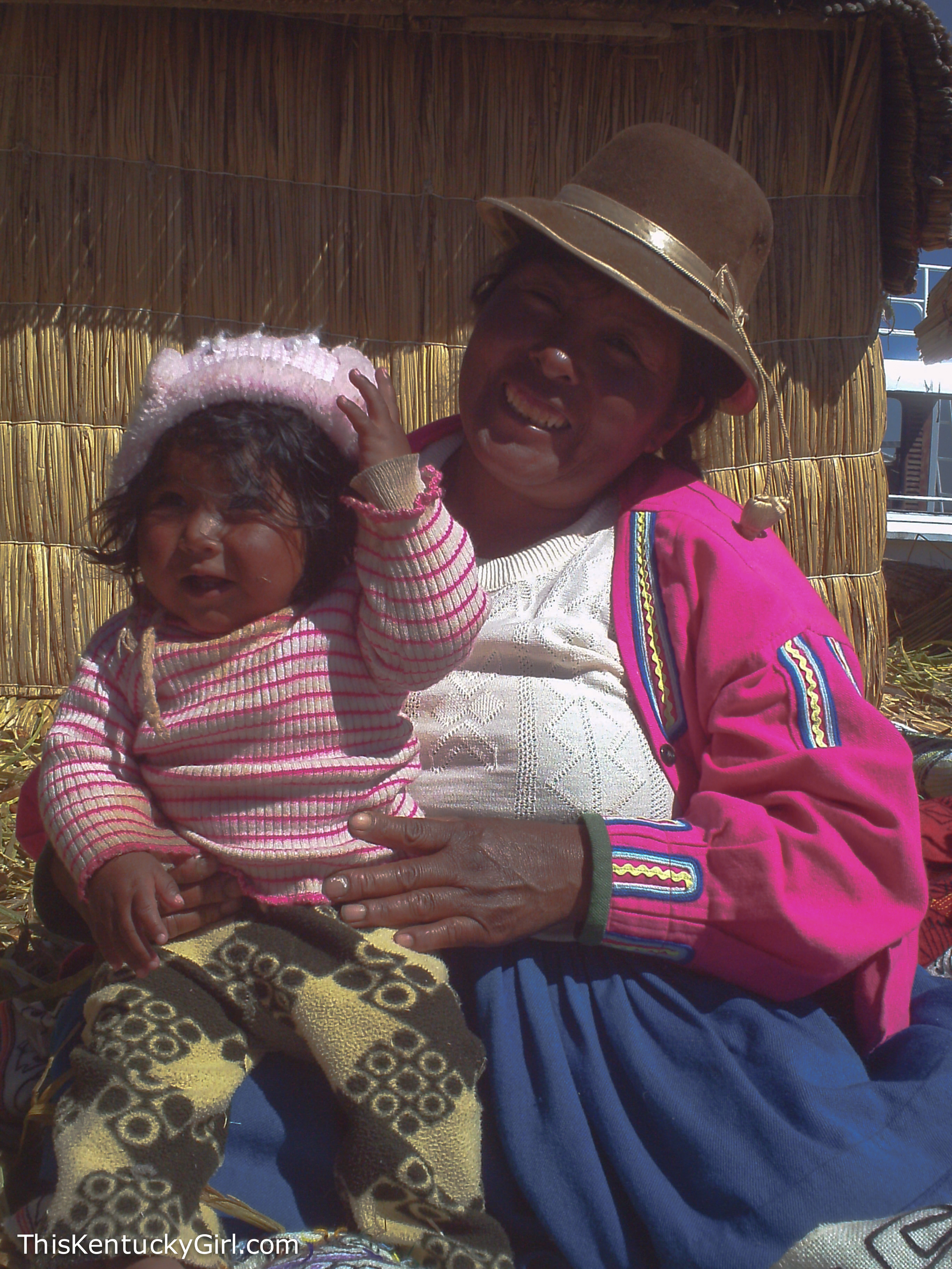
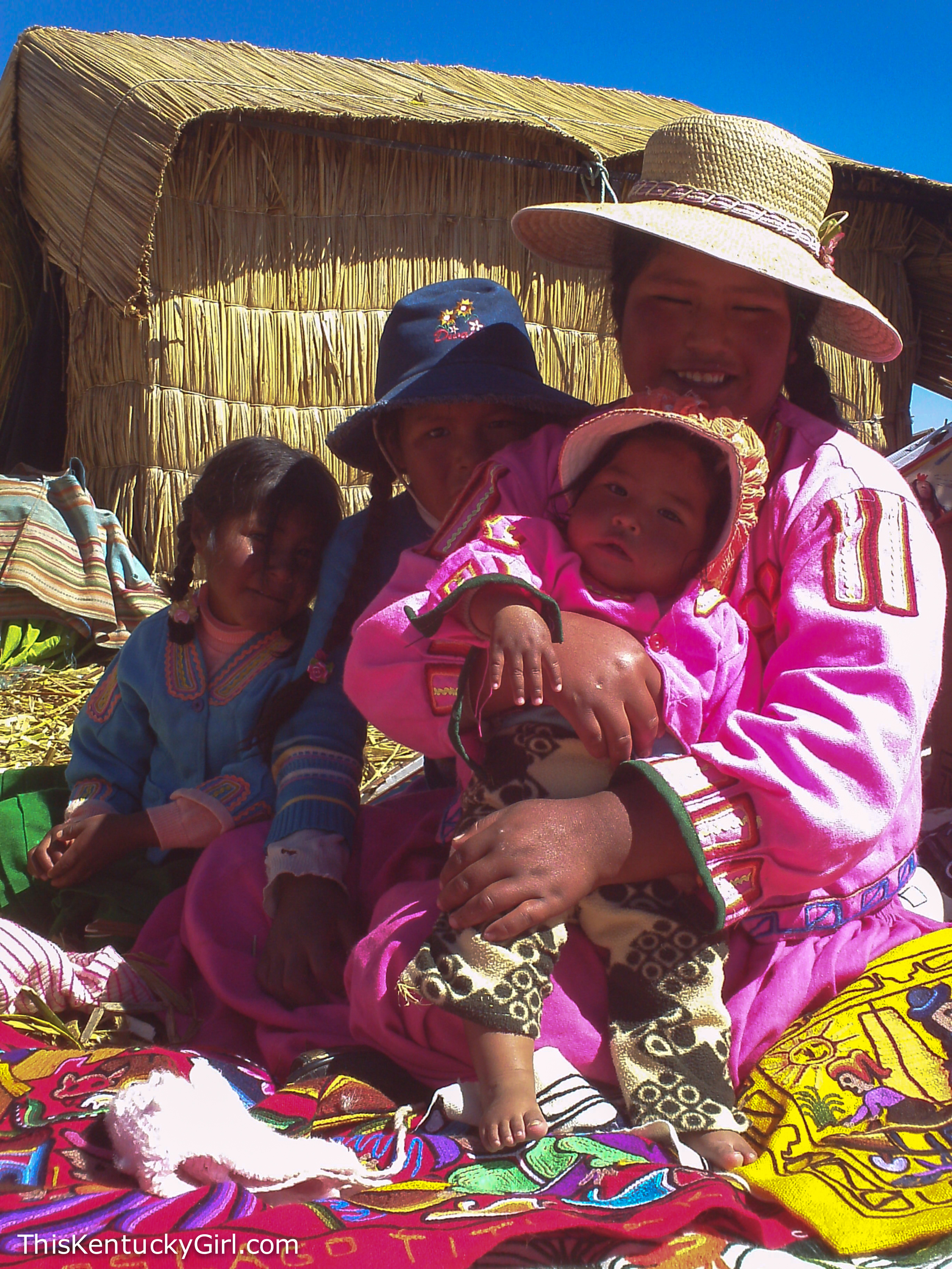
Once one of the mothers figured out what I was up to, she motioned for me to hold on and disappeared into one of the houses, returning a second later with different clothes for the baby. She changed her outfit, pulled all of her children together and then we took another picture. Then she set the baby down and asked for a picture just of the baby. It was a lot of fun (much more so than sitting on top of another tourist on the full gondola) and it makes taking pictures a much more interactive activity! I have to admit, I feel better about taking pictures when I’m able to give a physical print to the subject right away.
Afterwards we hung around waiting for everyone to finish shopping. Had it just been one boat full of people, it would have been great. But maybe because the island was still overwhelmed with tourists and I could easily hear an older American couple haggle- rudely- for a cheaper price when they could obviously afford the extra $0.50 equivalent made me ready to leave.
Of course, we all seemed to board our respective boats at the same time… I quickly climbed up to the roof of the boat to get a few shots of the island as we sped towards Taquile. Like clockwork, the women lined up to greet the next boat. I wonder how many boats land each day. In the hour or so that we were there, four to five boats had landed!
Taquile is one of the natural islands in the middle of Lake Titicaca. It was used as a prison during the Spanish reign and didn’t become the property of the Taquileños (people of Taquile) until 1970! There aren’t any cars, and no electricity on the island. It’s quiet and has some beautiful scenery- not only on the island itself, but surrounding it as well. We learned immediately that handmade yarn and weaving is a pretty big deal here. Nearly every woman we saw was spinning yarn, and nearly every man was knitting. The men wear special knitted hats to communicate if they are single or married.
While the textile industry is still huge, they make most of their money from tourism these days. 40,000 tourists visit each year! Our guide also informed us that the population is shrinking as many of the younger generations are leaving the island to go to school or get a job on the mainland where they can make more money than if they were to stay on Taquile. When we arrived to the main plaza, a photo shoot was in the making. I wanted to ask what it was for, but after hearing the photographers speak Spanish, I got a little shy about my shoddy Spanish skills and simply watched instead, jealous of their reflector.
We ducked into the textile market full of colorful knitwear and woven goods.
Back out on the plaza, we took turns taking pictures in front of a sign reminding us of just how far away from home we are. Although, Andrew and I just might be closer than we’ve ever been on this trip!
These two little guys had trouble getting their drinks opened and asked Andrew for some help. When I looked over they were just sitting together enjoying the view. I had to take a picture… and then handed my camera off to Mom while I pulled out the Polaroid. At first they were a little confused- needing to reload the paper didn’t help matters. It’s also a rather slow camera. It’s not like a traditional Polaroid that spits out a photo immediately. It uses different paper, and while technologically impressive, it often requires a lot of “wait for it…” gestures and holding the camera up to a child’s ear so they can hear that something magical is about to happen. These two were pretty patient about it all.
After they asked for a second photo (one for each) they said something in Spanish that I didn’t understand. I looked at Andrew, and he didn’t get it either. We asked them to repeat what they said and another tourist passing by told us “They want a tip.”
“A TIP?” I looked at everyone surprised, even though this certainly isn’t the first time I’ve been asked for a tip for something or other on this trip. “But I gave you two photos! A gift! Why should I give you a tip?” I responded, in English, laughing. The other tourist rolled his eyes understanding my sentiments exactly.
We walked around the island, following a mostly stone path down the hill we had climbed up to the plaza. A few locals passed us by, or sat off to the side knitting, and asking for tips if you wanted a picture or two. We stopped at a small house with a large picnic table set up outside where we all sat down for lunch while we saw another presentation of how a plant was crushed into soap and then used to clean a dirty piece of wool. After lunch, their style of dress was explained to us and then we watched a small dance that was made adorable by the participation of an adorable little girl who was not afraid of asking tourists to dance.
After the dance, she was sent around with a tip basket. Everyone acknowledged and laughed about their most excellent business model, using her to collect tips that wouldn’t otherwise be given. When all of the festivities were over, we walked down to our boat and made our way back to Puno. I would have really liked to see Amanatani, the other, further island- but it requires an overnight stay because it’s so far to get to. It’s supposedly the least touristy island of the three- which made me want to see it all the more. I think the three (including the overnight) and Sillustani could have been crammed into two very full days, but we were already on a tight schedule and I’ll just have to save Amanatani for next time- with a side trip to and possibly through Bolivia!
Day 366: Our ONE YEAR trip-aversary at Sillustani
For the record, I’m simultaneously amazed and not at all surprised that we’ve made it one whole year traveling around the world. I recently asked Andrew if he could imagine doing this trip with someone else. We agreed that maybe we could do part of this trip with someone else… like for a month… maybe. But not the entire year. It wasn’t as exciting as our six-month trip-aversary, but spending the day at a pre-Incan burial ground (ok, it sounds a little morbid when I put it like that, right?) with my Momma and coercing Andrew to take a few celebratory jumping pictures was great fun. As you can see by the pictures below (Thanks Momma!) he wasn’t as enthusiastic about the idea.
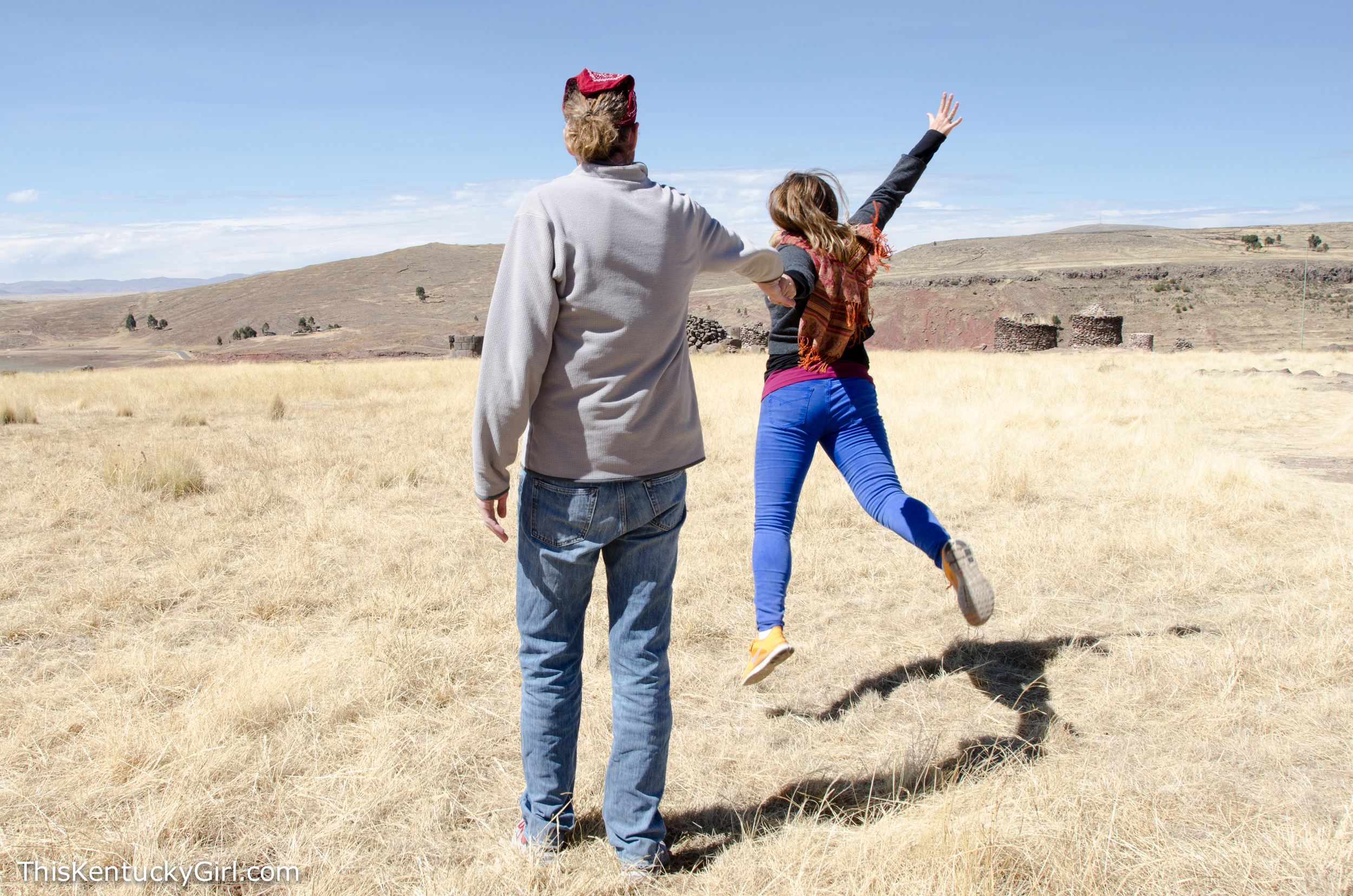
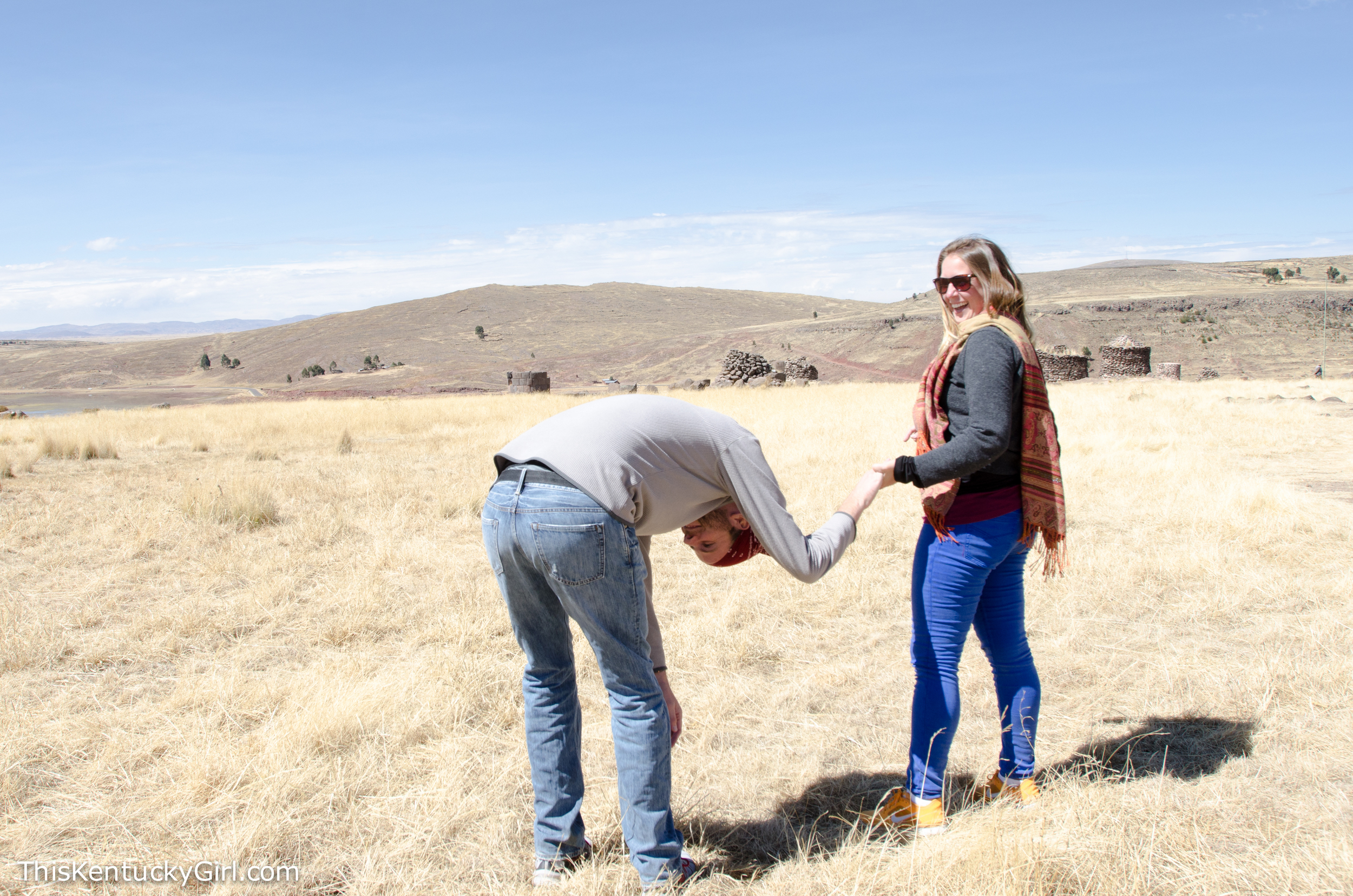
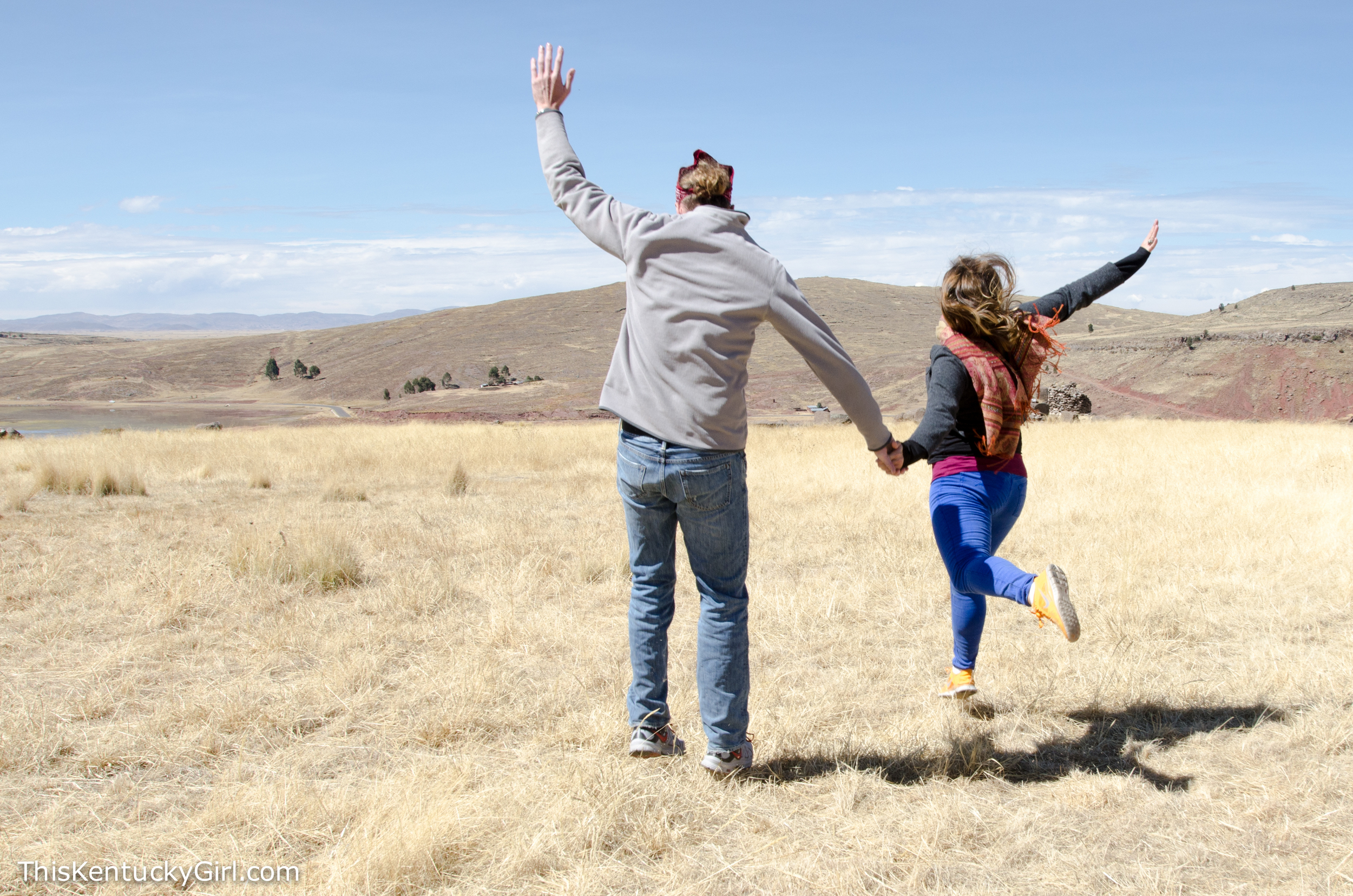
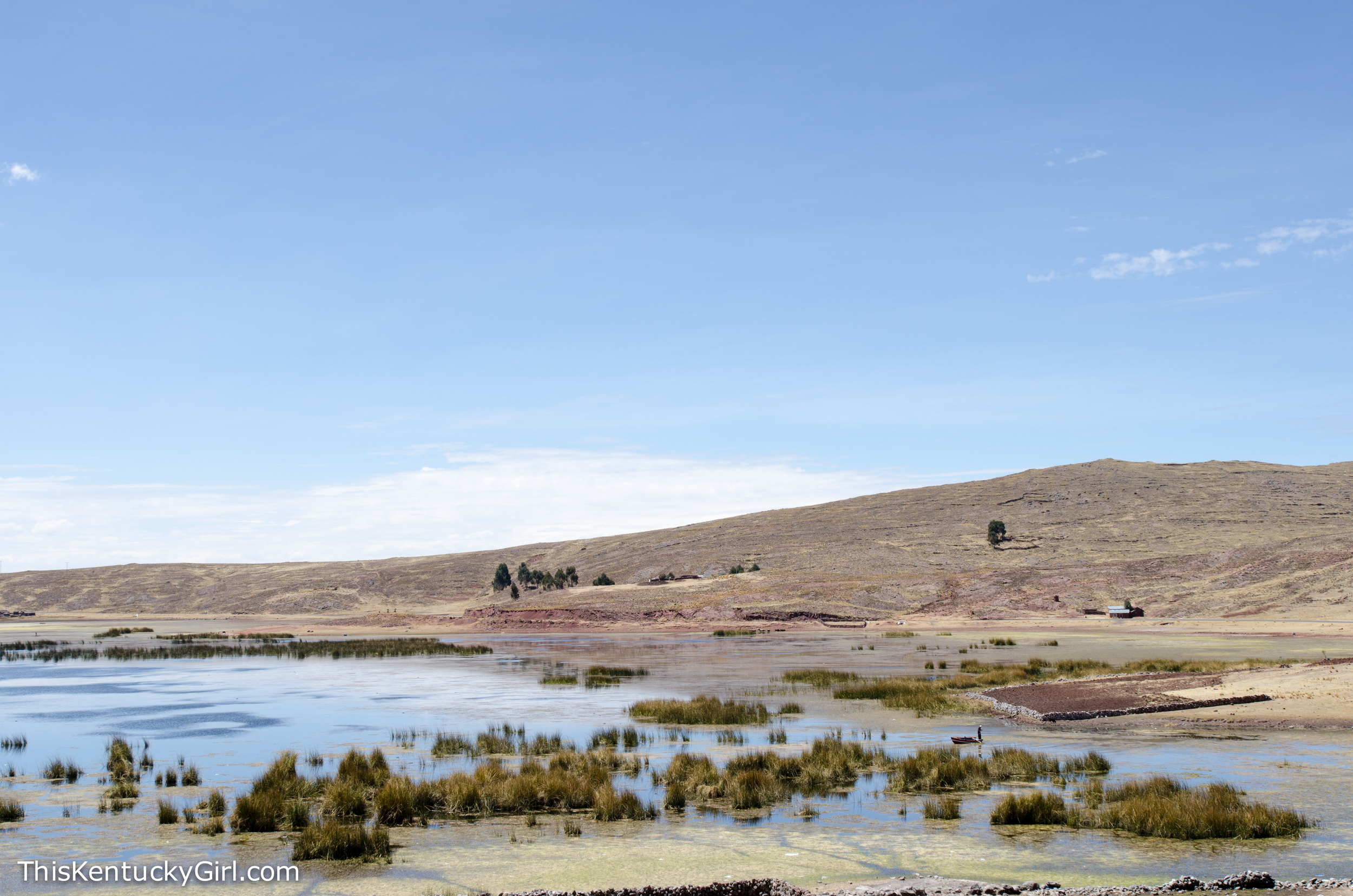
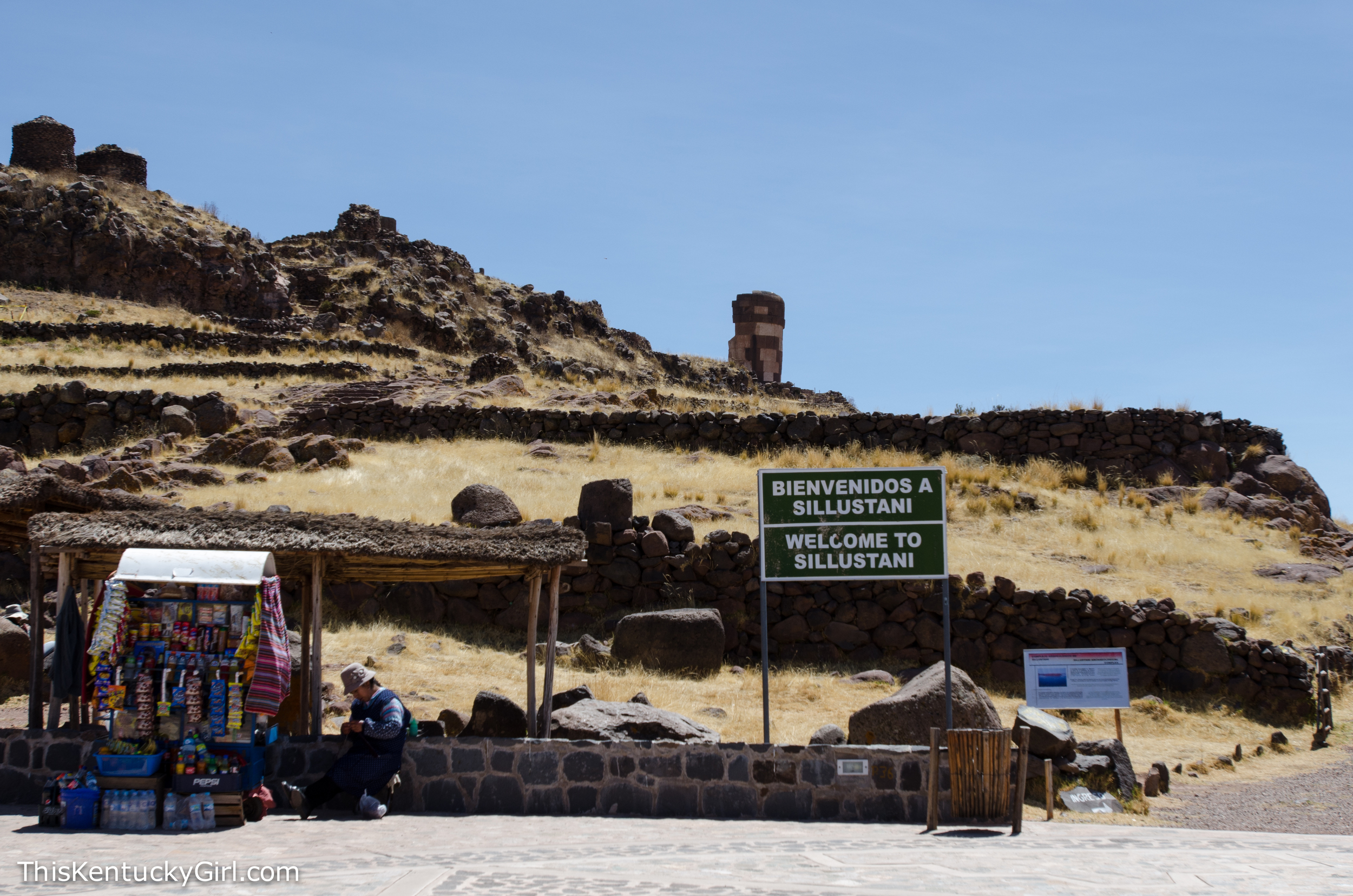
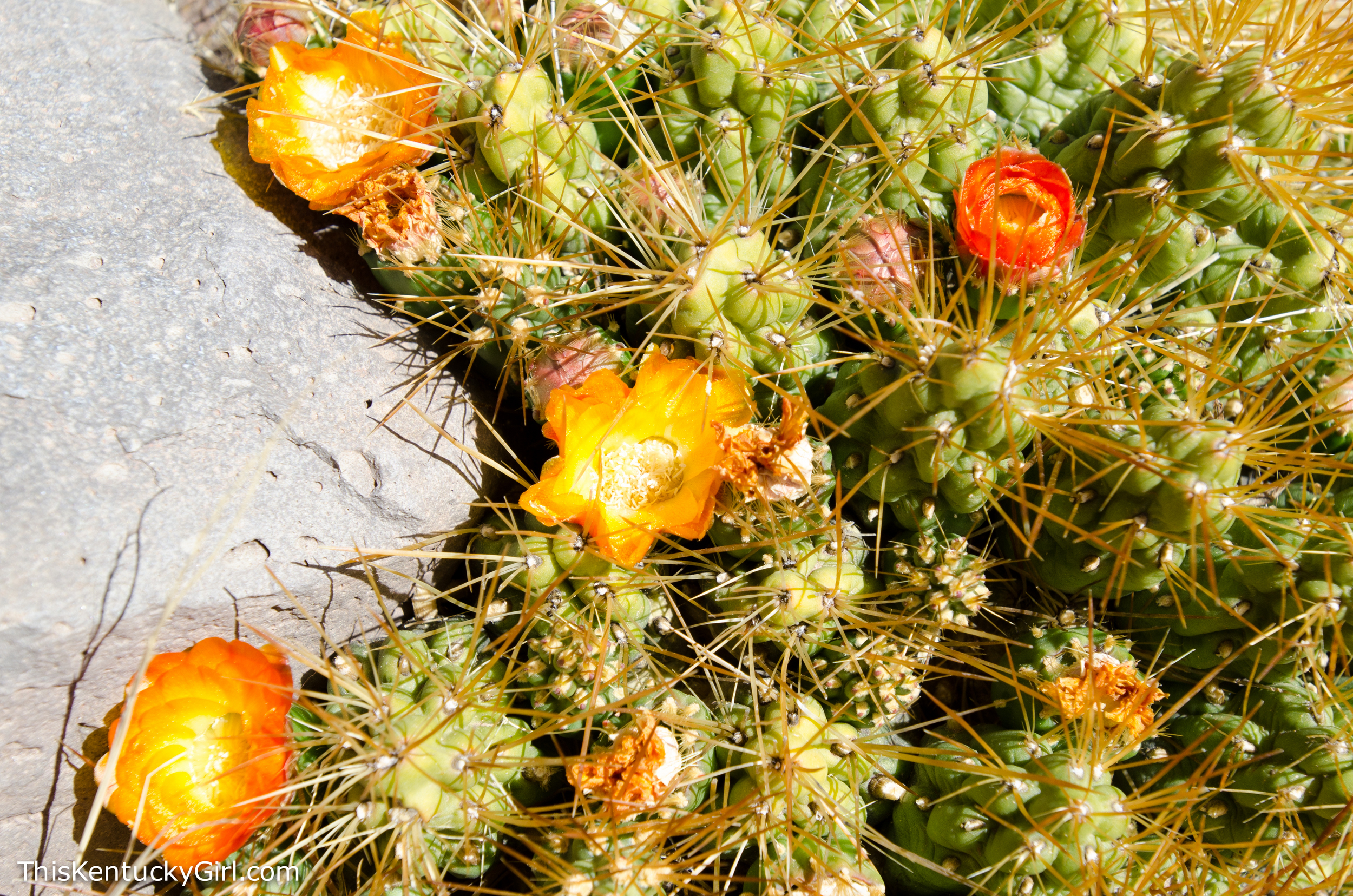
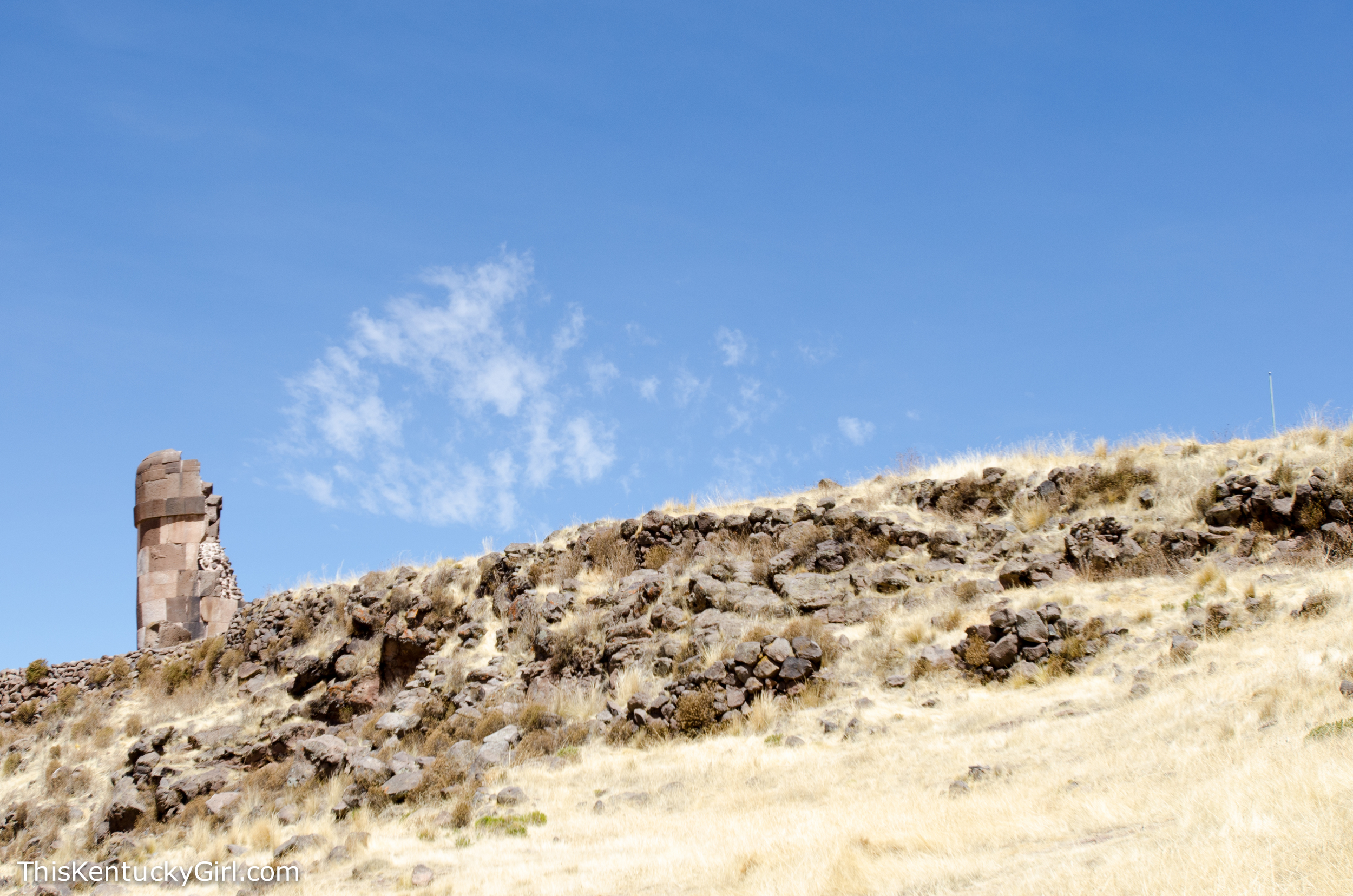
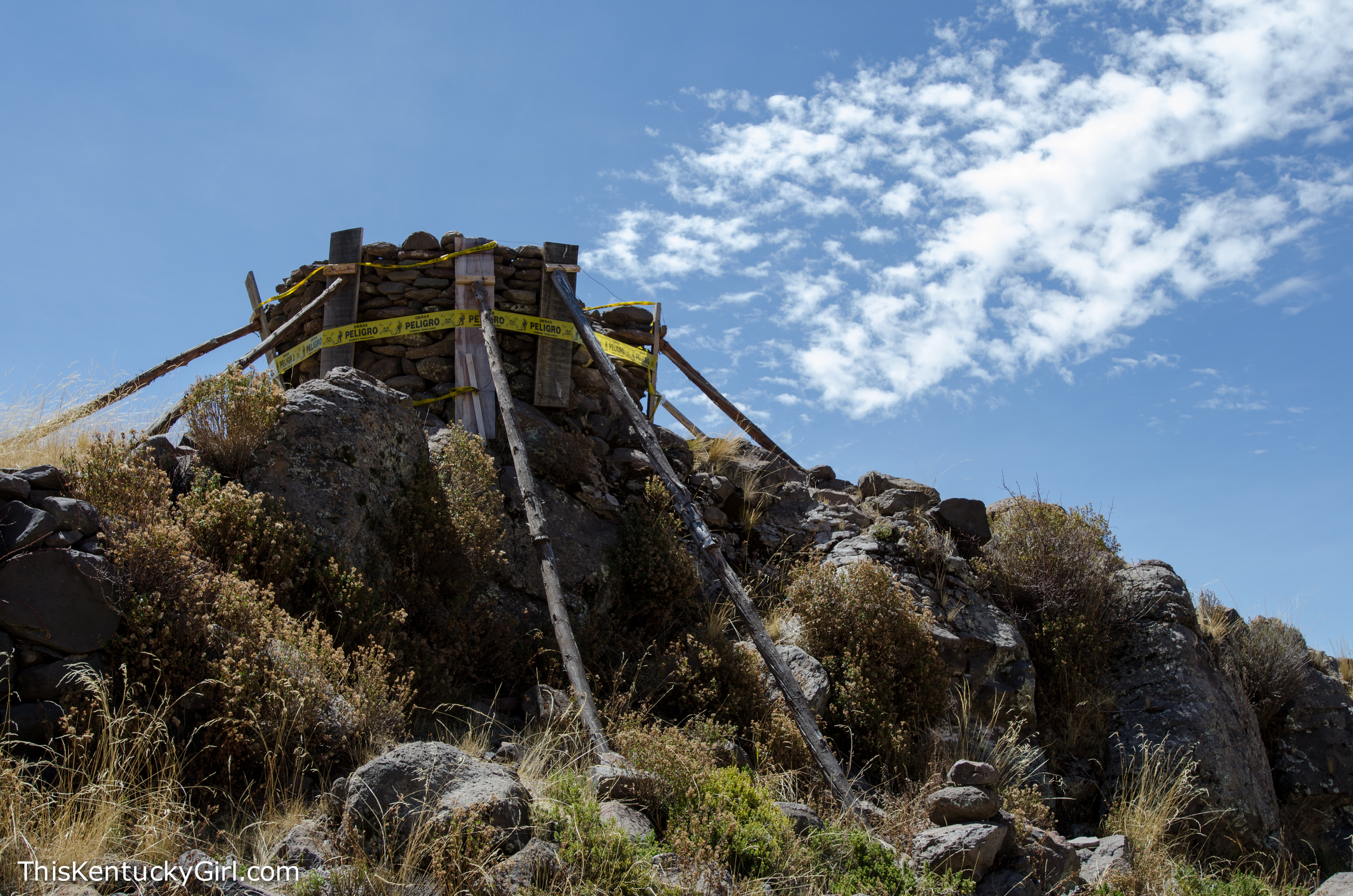
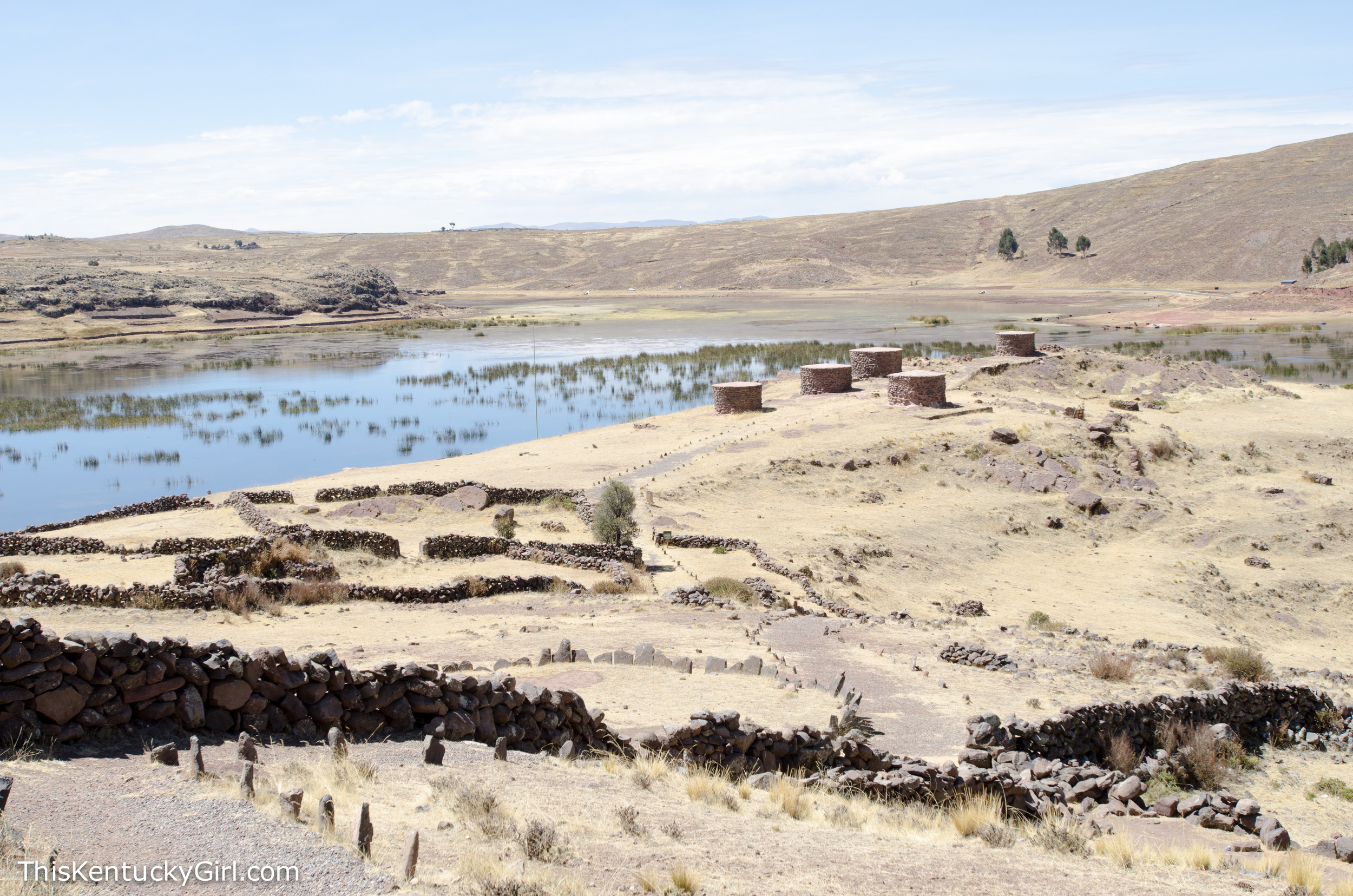
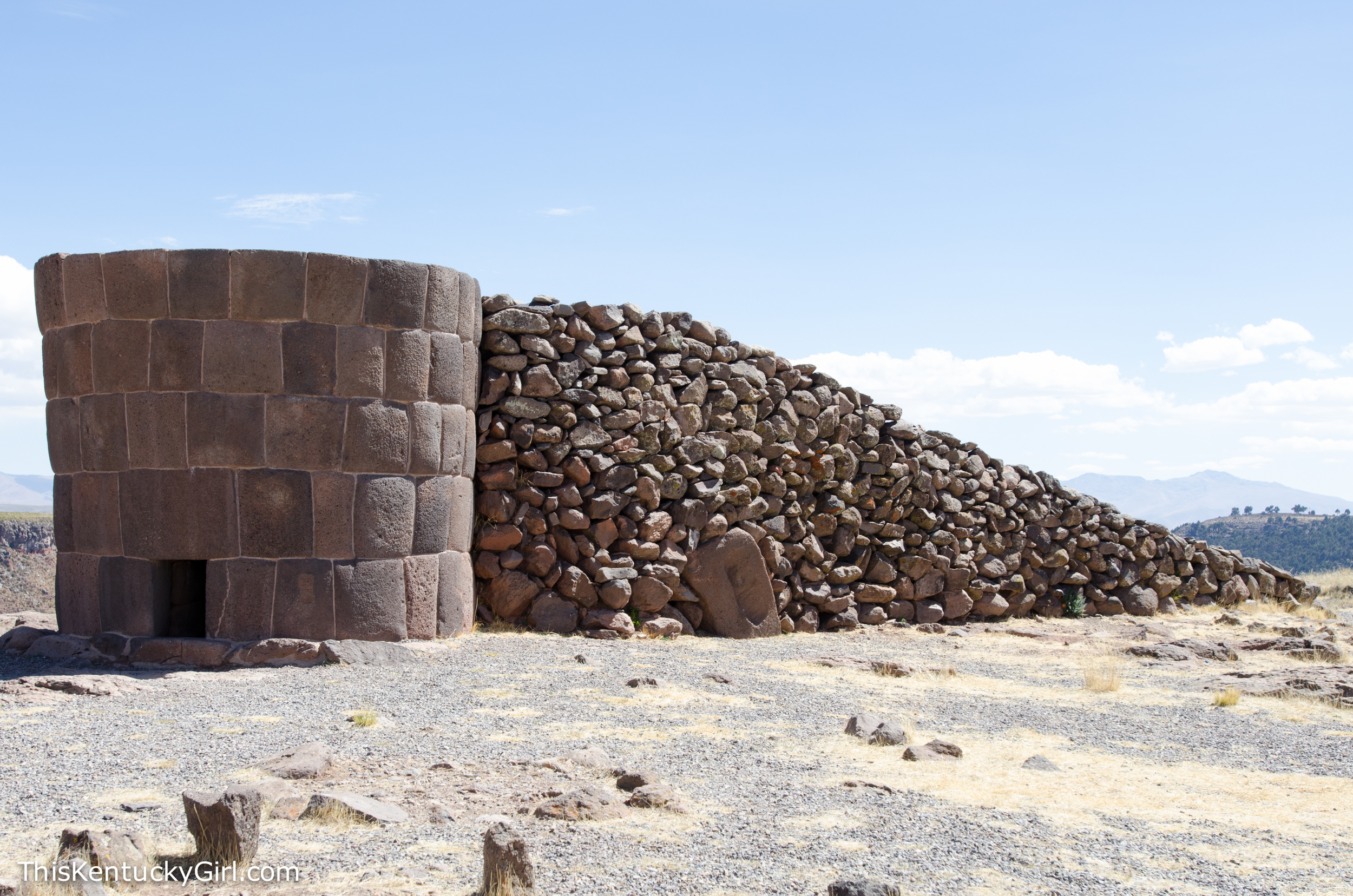
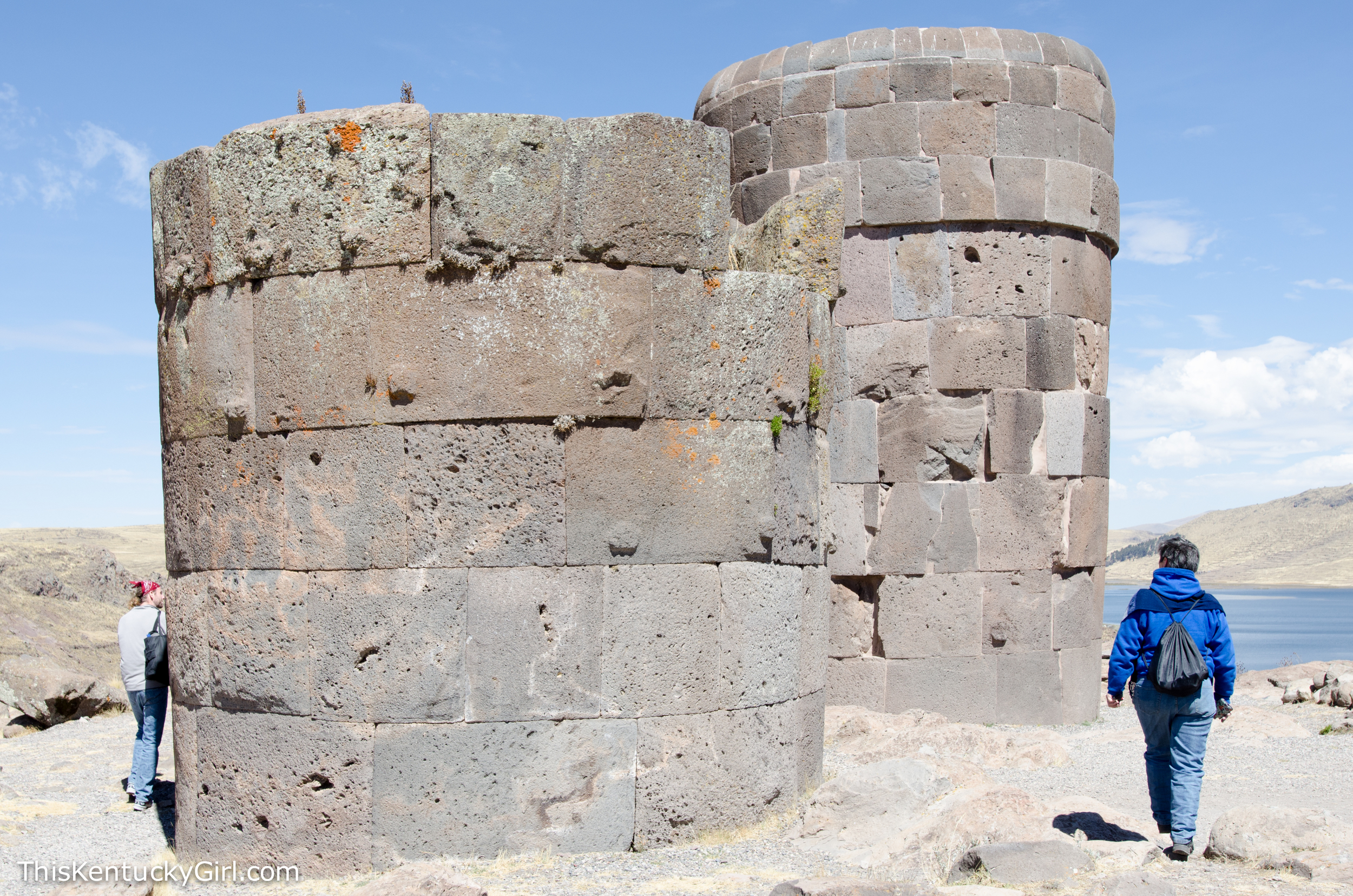
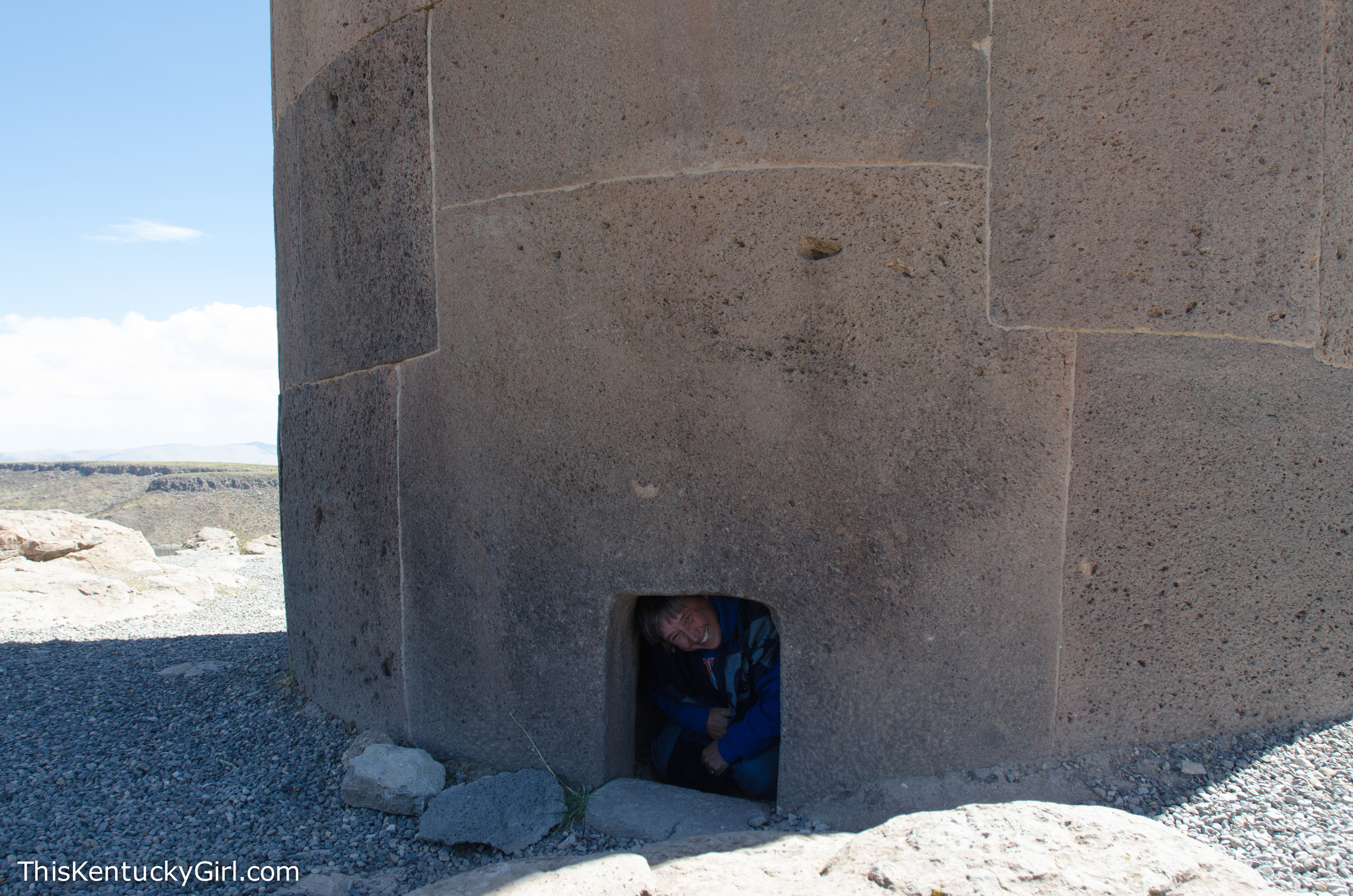
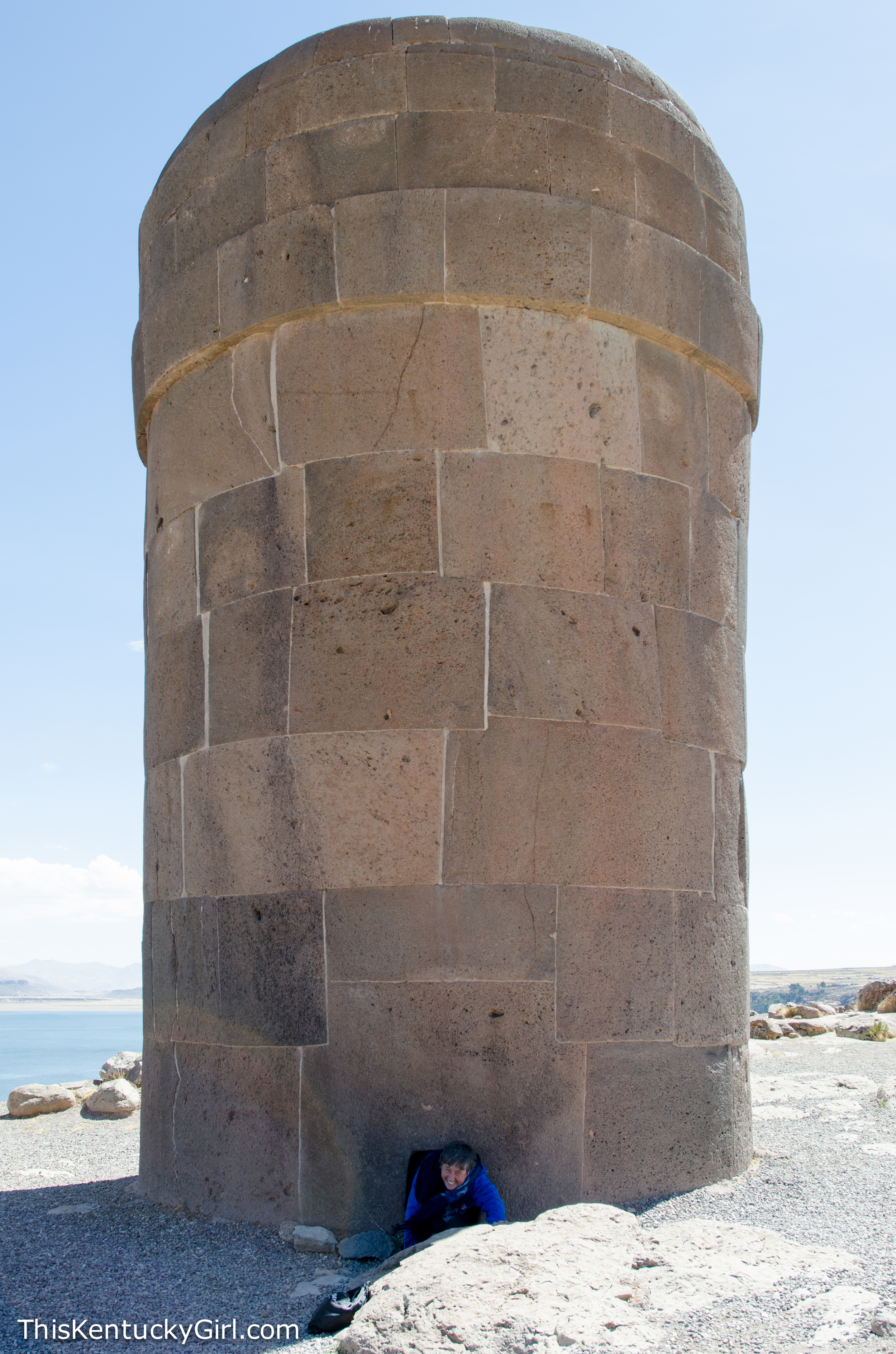
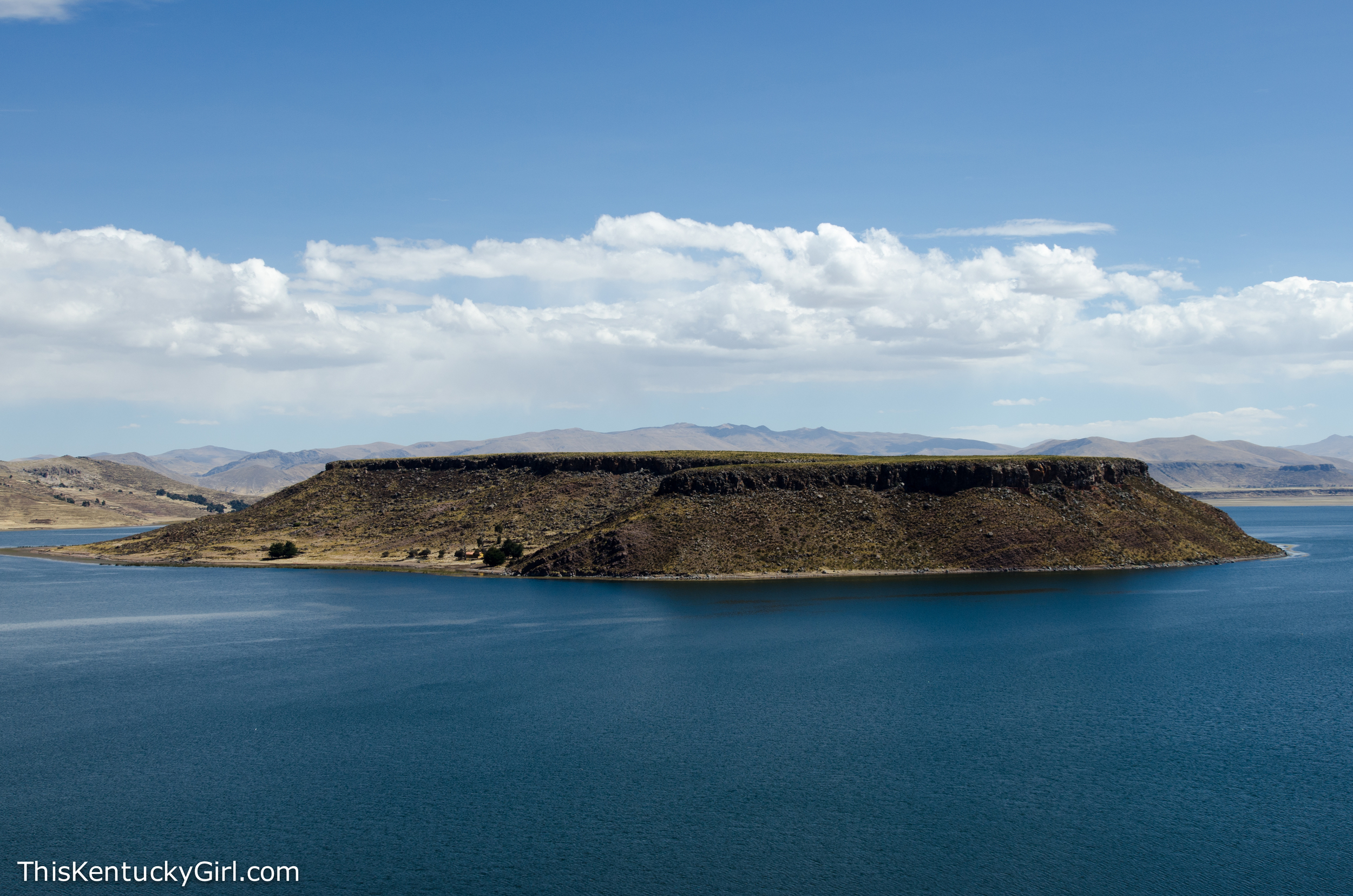
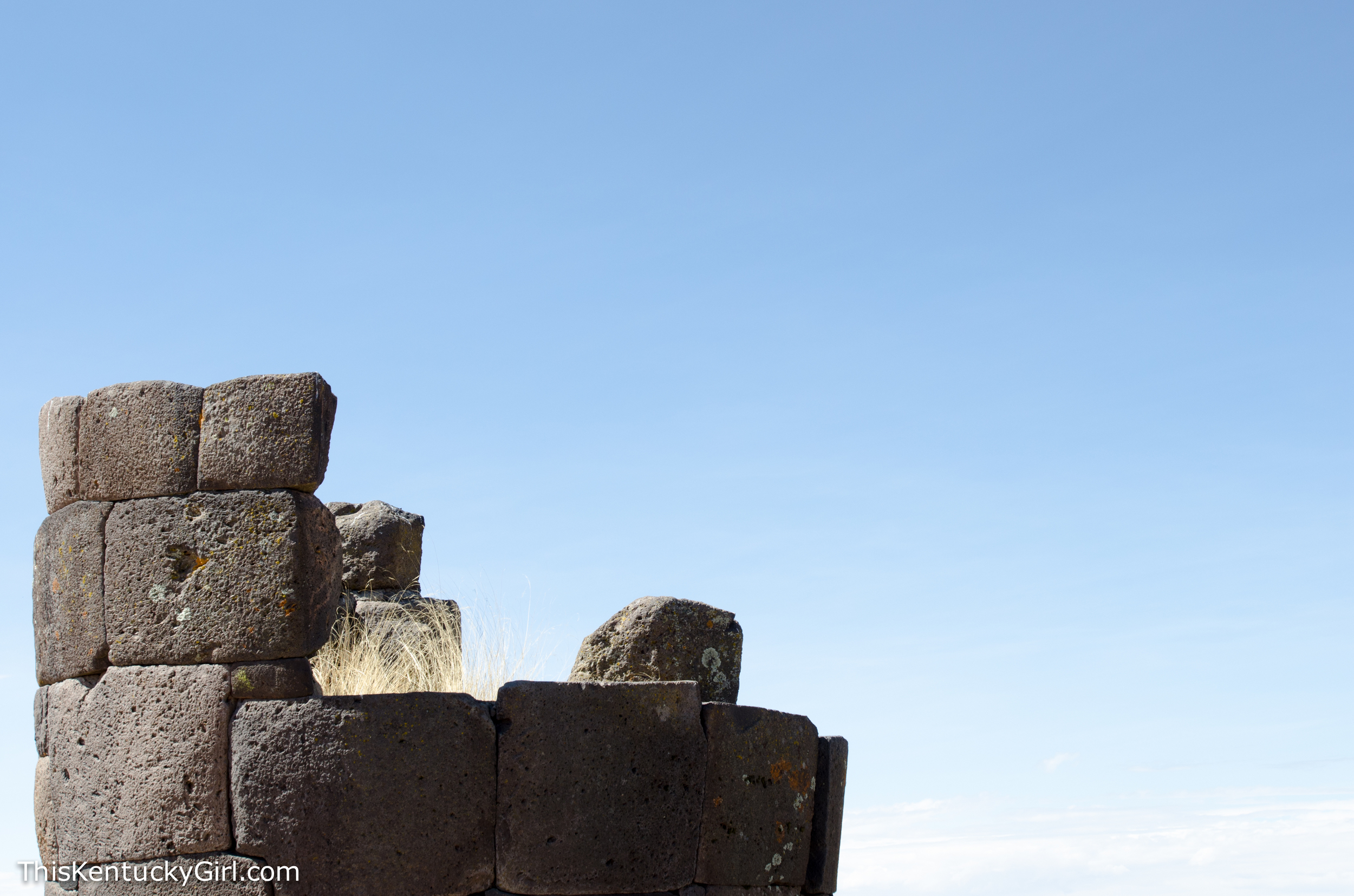
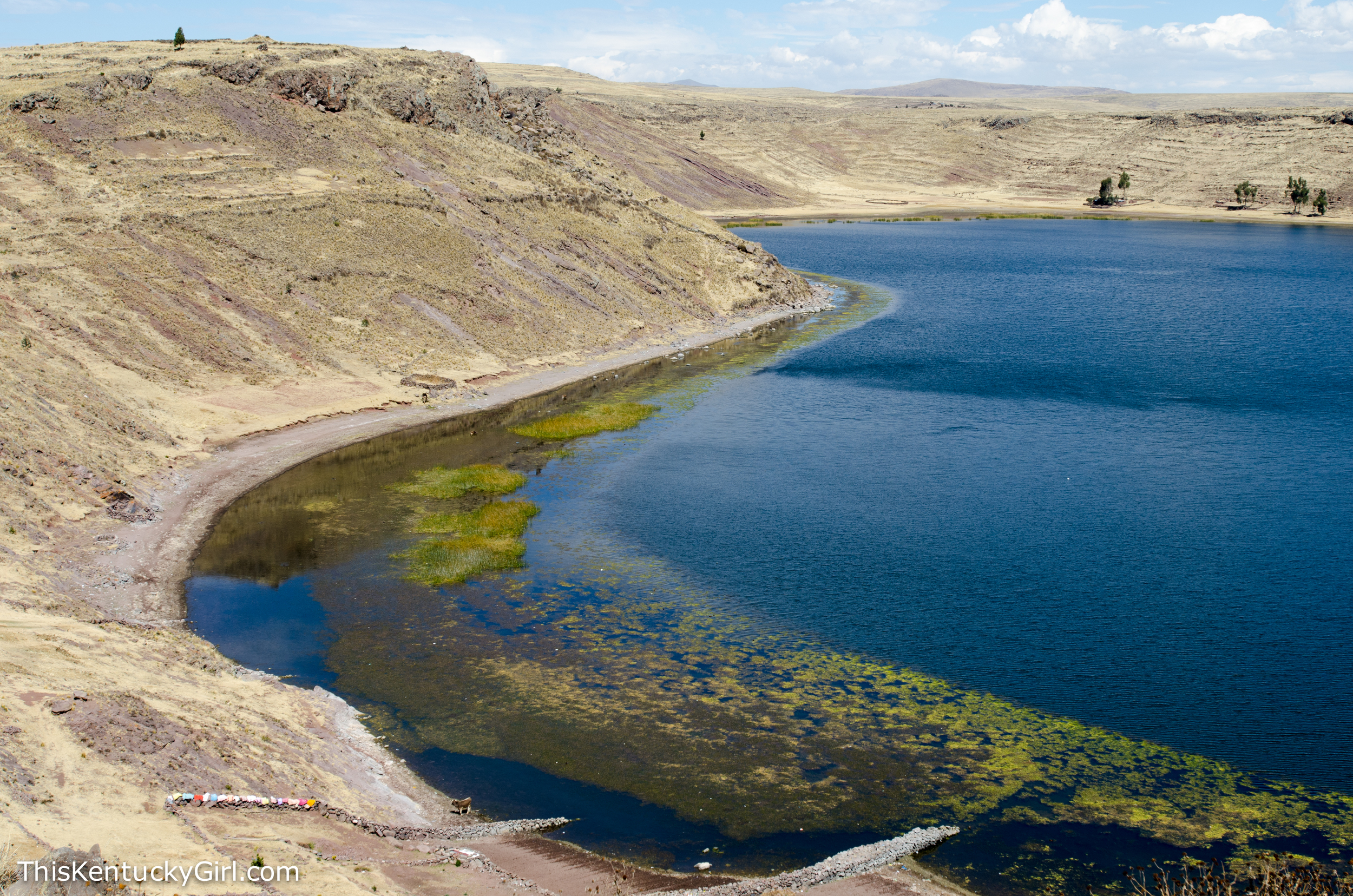
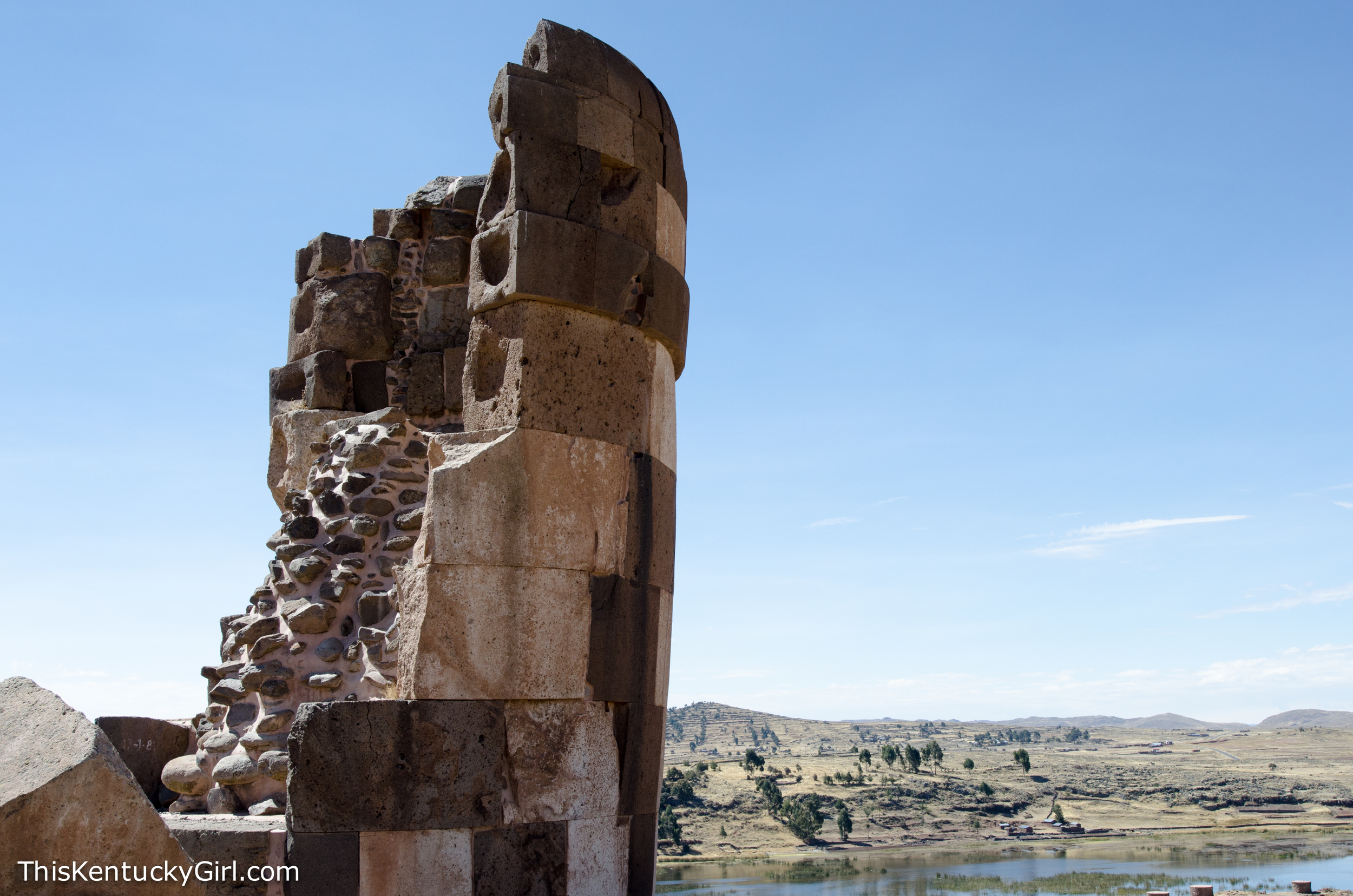
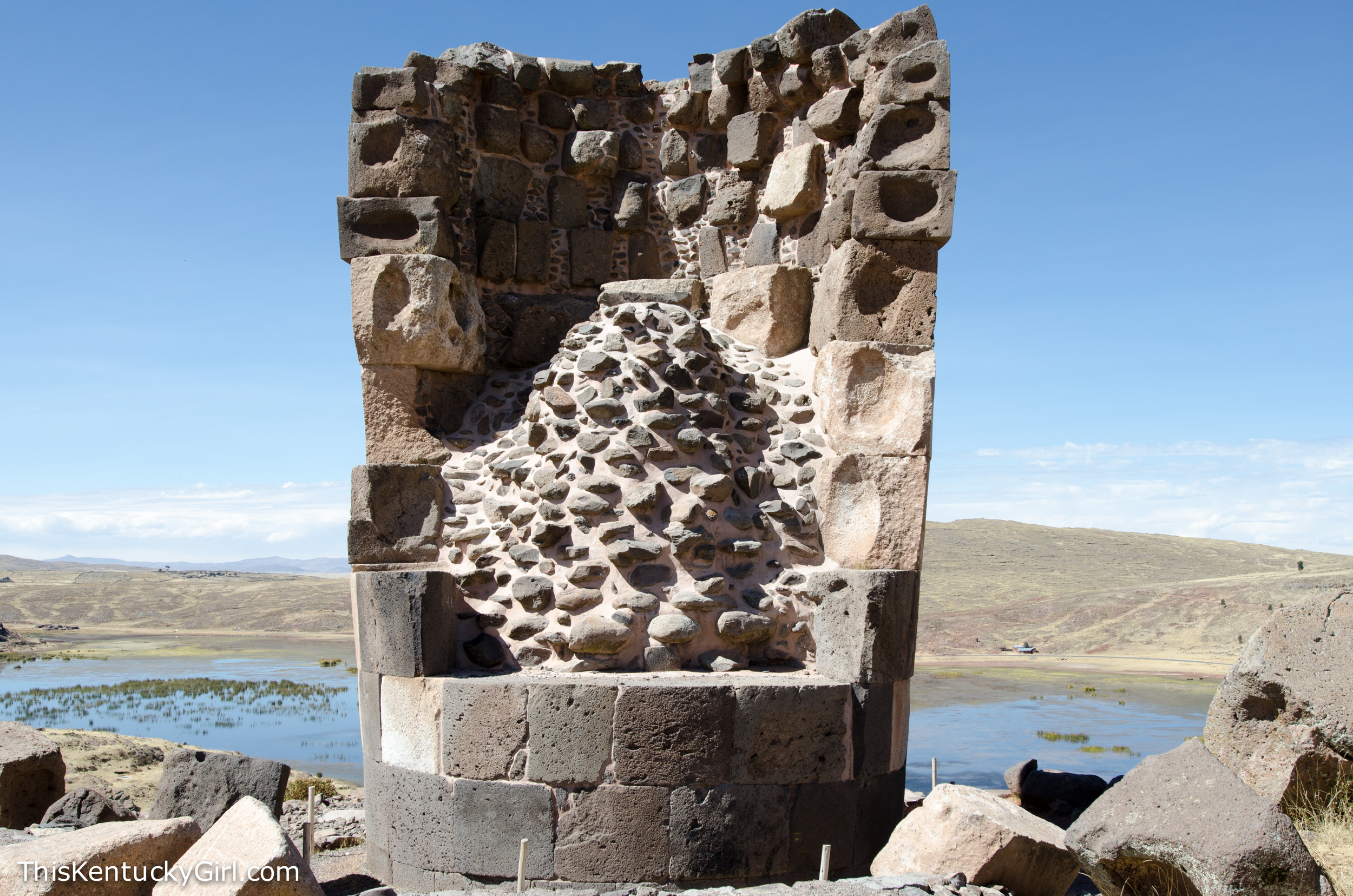
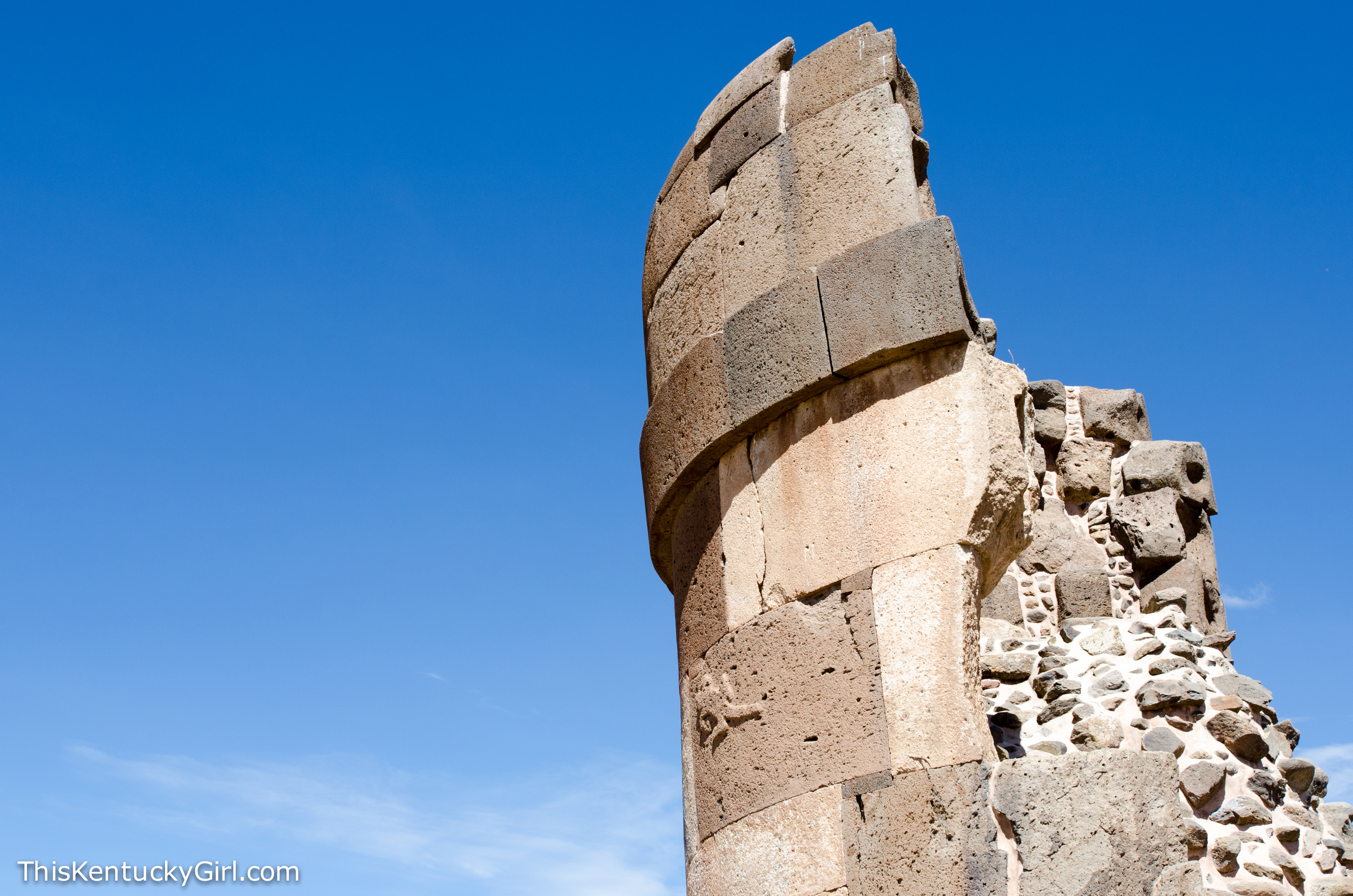
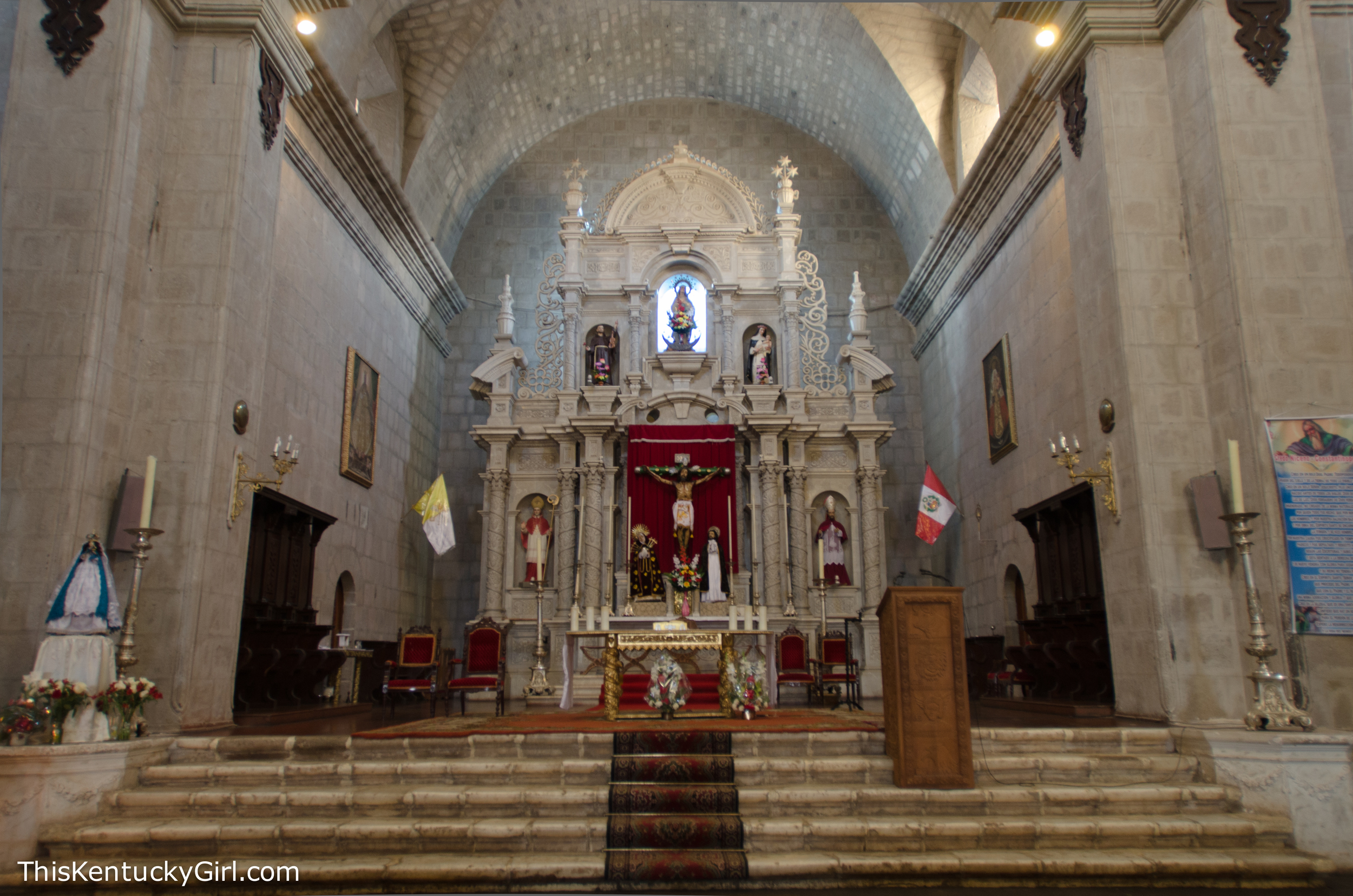
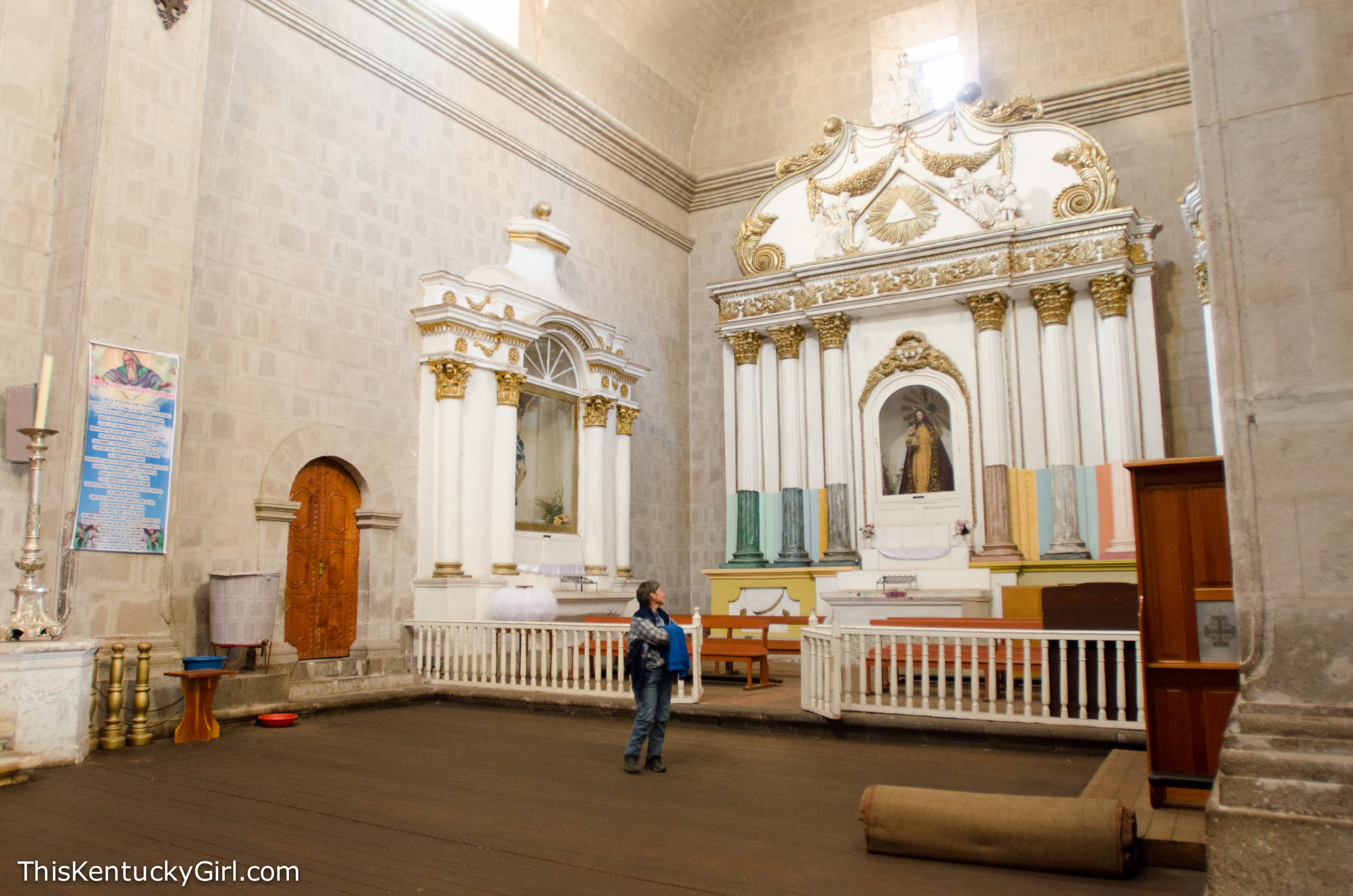
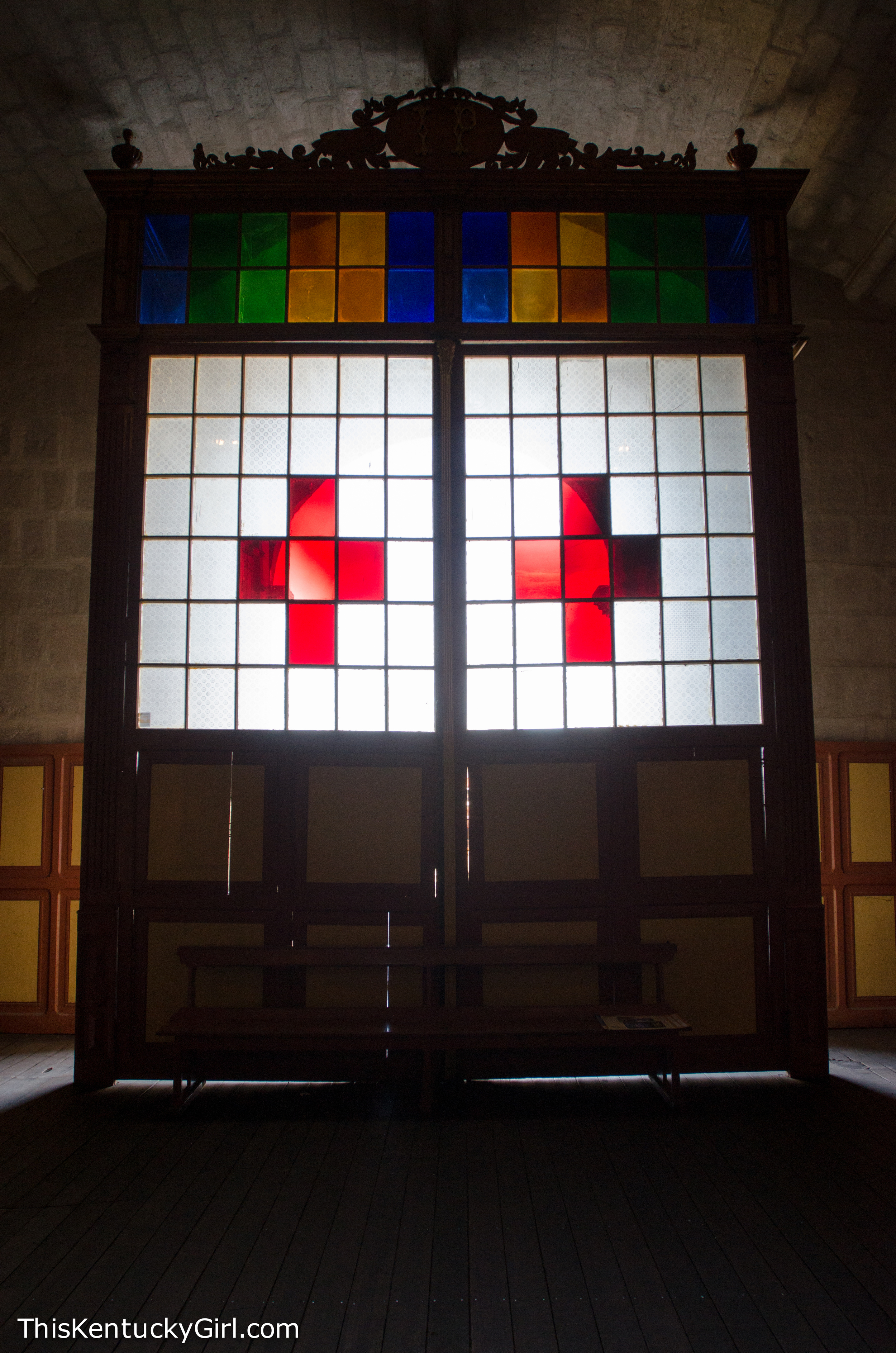
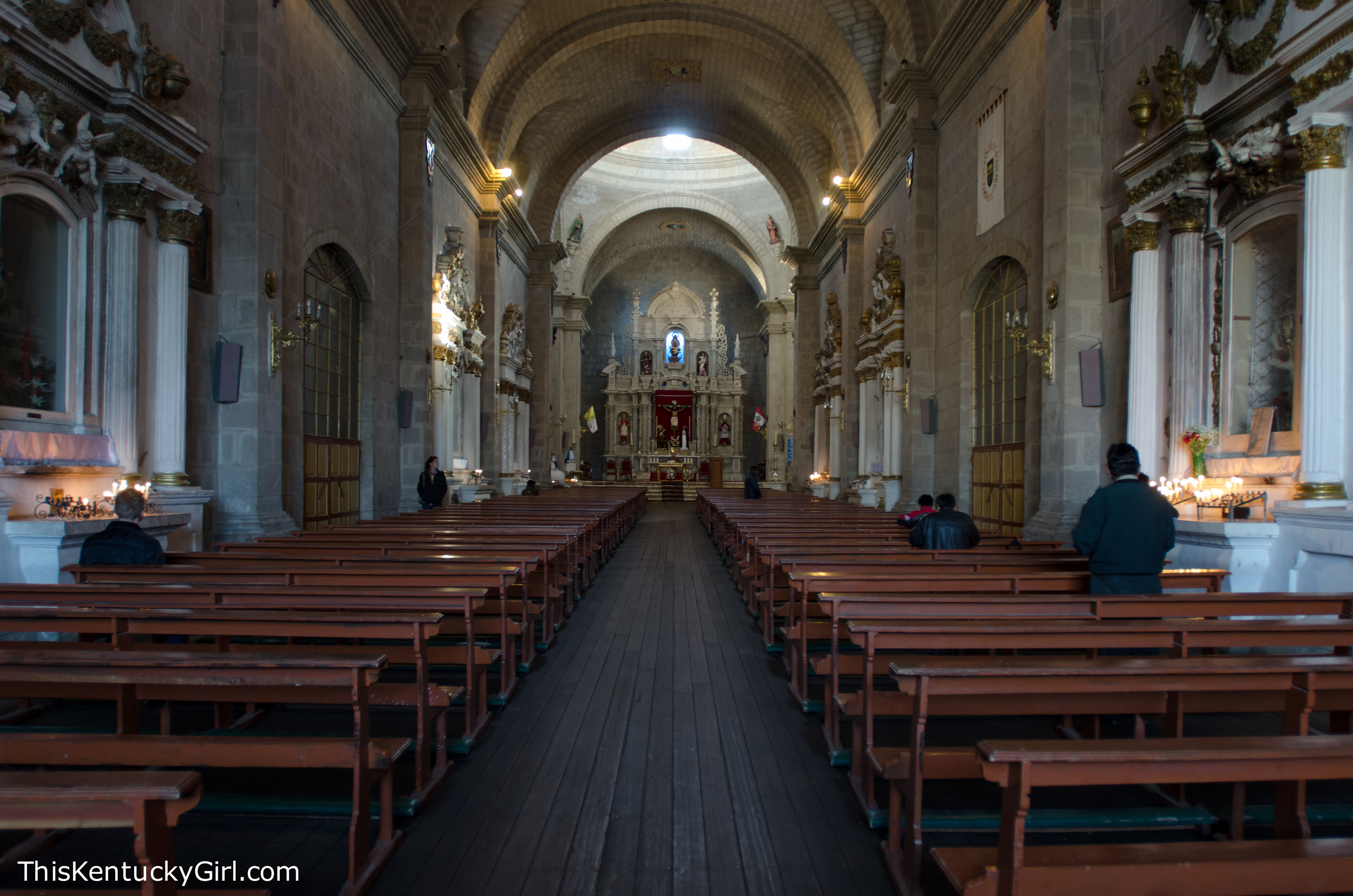
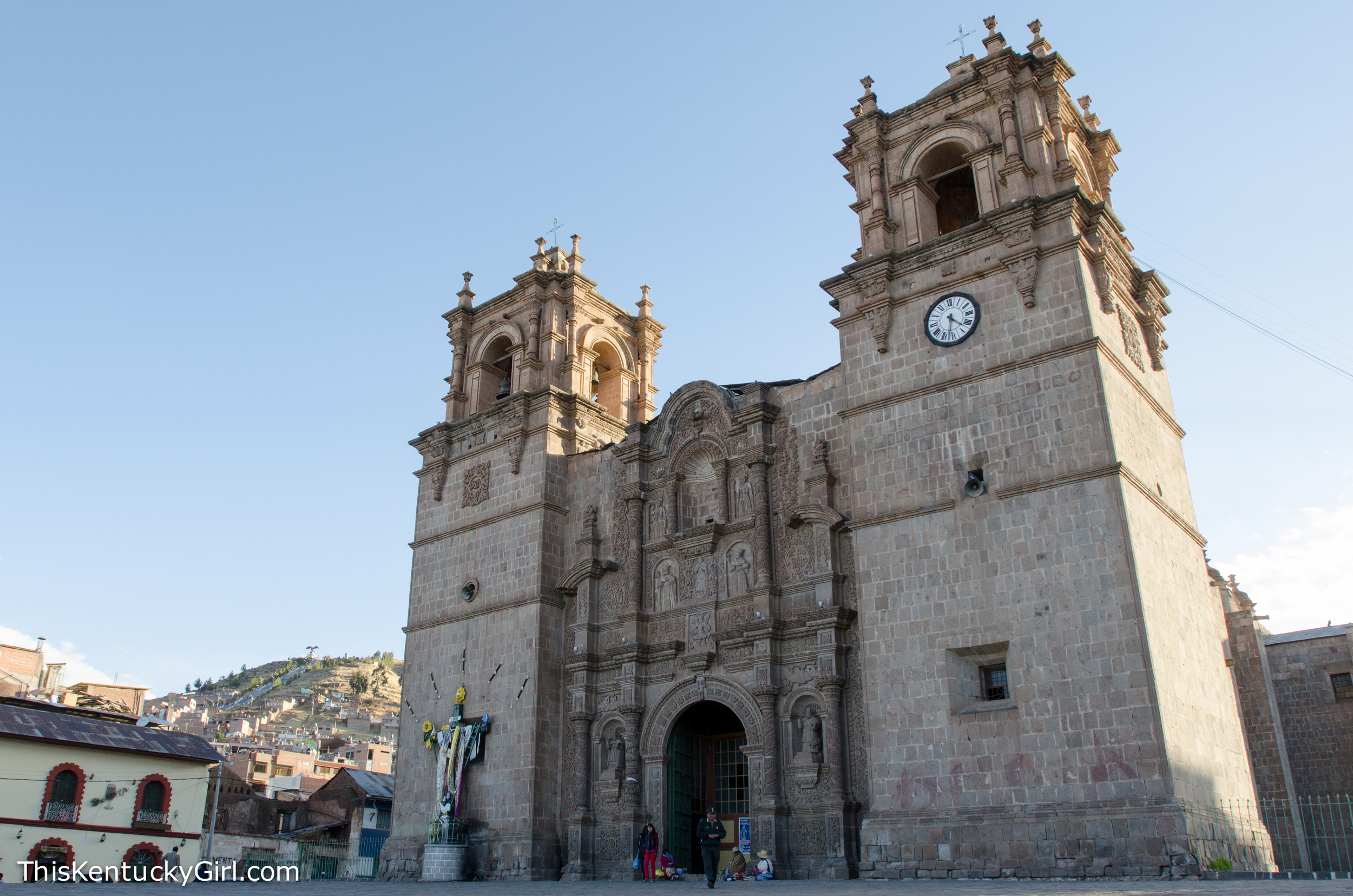
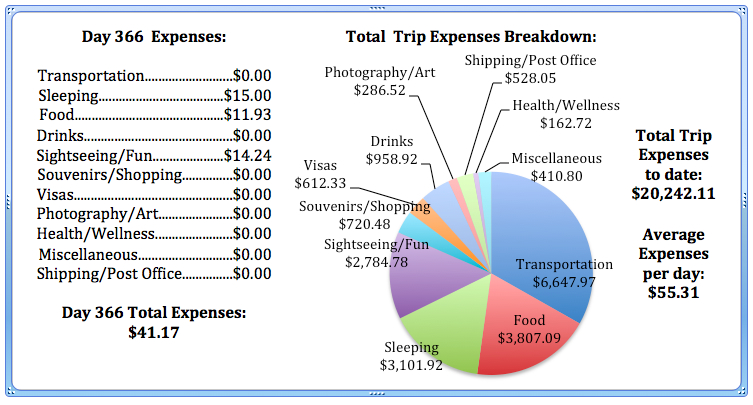
In retrospect, I wish we would have made our Lake Titicaca plans immediately when we arrived in Puno- so we could spend two full days on the lake and it’s different islands… but we were all pretty worn out traveling to Puno and sleeping in the next morning was necessary. To anyone visiting Puno, I would budget three days- two for the lake (more if you want to sneak into Bolivia on the other side of Lake Titicaca) and one for Sillustani- that is if you’re into ancient burial grounds. It was interesting, but in all honesty, not the most interesting thing we’ve done in Peru so far…
Sillustani seems like it’s on the shores of Lake Titicaca, but it’s actually on a different lake (Umayo) about twenty minutes outside of Puno. There’s not a lot of information on the grounds itself and we probably should have organized a guide ahead of time, but it was nice to wander around on our own and take our time enjoying the weather and the surprisingly not very creepy atmosphere, given that we were walking through an ancient burial ground.
The tombs are giant stone cylinders called chullpas, built by (I think) the Colla people, who were later conquered by the Inca. Their stonework is more complex than the Inca, and Sillustani is the most preserved example of their work.
Momma was a little bit curious how big the entrance was in one of the chullpas. Andrew always tries to get me to climb into scary or awkward holes in burial grounds, temples, to which I of course say no to. Mom wasn’t scared and she snuck in before we could convince her otherwise. I’m pretty sure Andrew and I were in shock because I couldn’t stop documenting it and neither of them could stop laughing at her courage? stupidity? both? Perhaps you can see where I get my own courage? stupidity? both? from…
Back in Puno, we ducked into the cathedral. It was HUGE. The Cathedral Basílica San Carlos Borromeo (also known as Puno Cathedral) seemed have the same layout as many of the other churches that we’ve been in. Long. Dark. Made of stone. And this one was super cold. So cold, I had to duck outside to warm up in the sun until everyone else was ready.
Directly across the square, facing the cathedral is the number one rated restaurant in Puno. Mojsa Restaurant has a laid back atmosphere (at least during the late afternoon when we went for an early, light dinner) and some really great tea. Ok, the ‘mojsa tea’ was great the first time- so great, I wanted to go back for more…
I’ve found that the coca tea has really helped me deal with the altitude. Remember, Puno is higher than Cusco (and Machu Picchu). I’d get out of breath climbing up to our fourth floor hotel room. I’d wake up feeling like I had one too many drinks the night before, even though I hadn’t had any alcohol… I just didn’t always feel like myself and it would creep up on me when I least expected it. So when I saw ‘mojsa tea’ on the menu- a blend of coca powder and lemon (my favorite!), I was excited. After one cup, it left me feeling like I had about four cups of coffee in a row instead, and not a trace of any altitude issues. If you find yourself in Puno, stop by for a spot of mojsa tea- but make sure it’s super strong (lots of coca powder on top) and super hot. Otherwise, it won’t give you the extra spring in your step that you’re looking for.



